My most current blog entry:
Entries in Flowers (84)
Out and About in Pakkret, My Hometown
 Sunday, February 11, 2018 at 11:48AM
Sunday, February 11, 2018 at 11:48AM 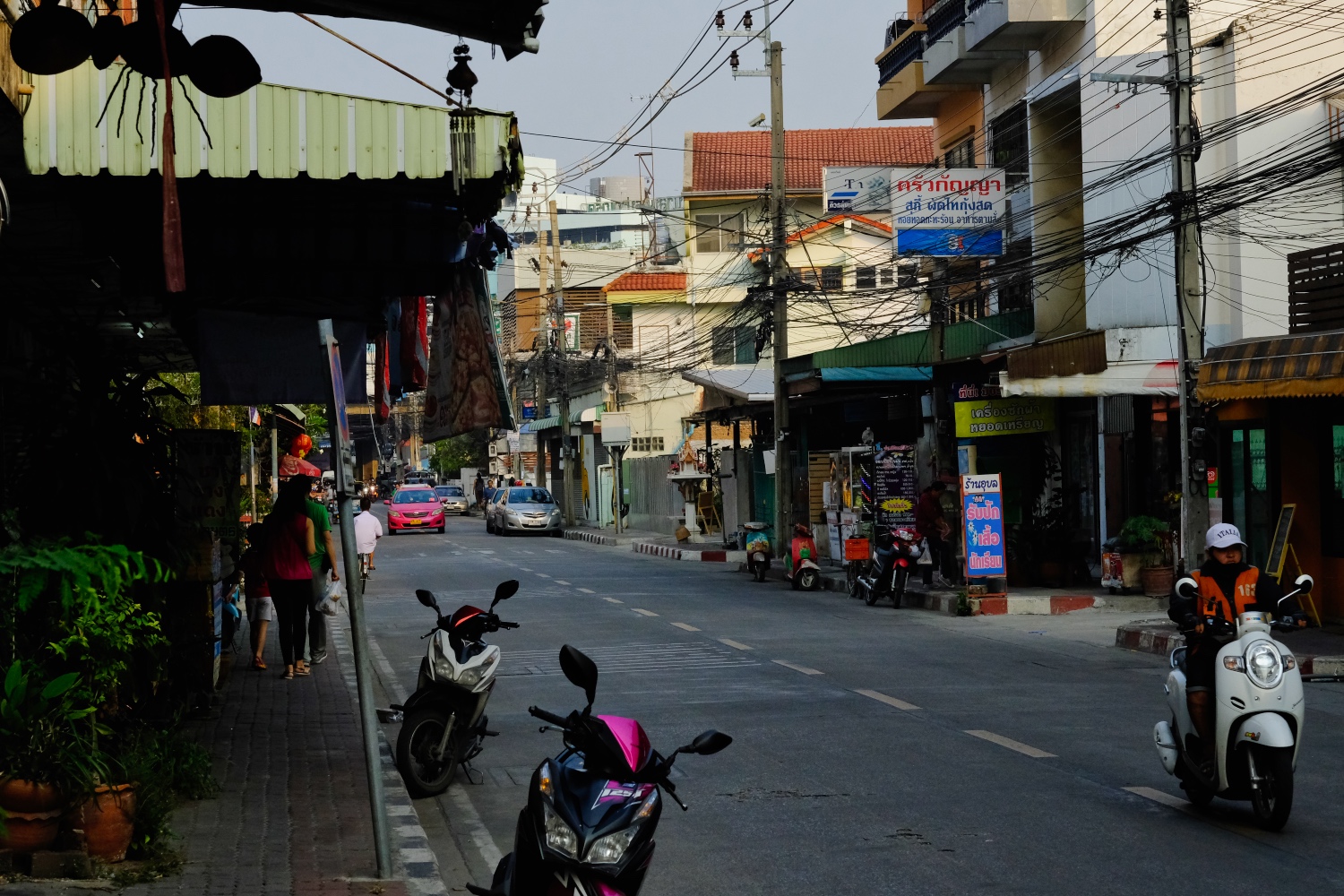 Pakkret* (variously Pak Kred or Pak Kret) is a small municipality (population 180,000) in the Thai province of Nonthaburi, 10 miles up the Chao Phayra River from the heart of Bangkok. [* The name Pakkret derives from the Thai, Ban Pak Tret Noi (บ้านปากเตร็ดน้อย), meaning village on the mouth of the lesser bypass.]
Pakkret* (variously Pak Kred or Pak Kret) is a small municipality (population 180,000) in the Thai province of Nonthaburi, 10 miles up the Chao Phayra River from the heart of Bangkok. [* The name Pakkret derives from the Thai, Ban Pak Tret Noi (บ้านปากเตร็ดน้อย), meaning village on the mouth of the lesser bypass.]
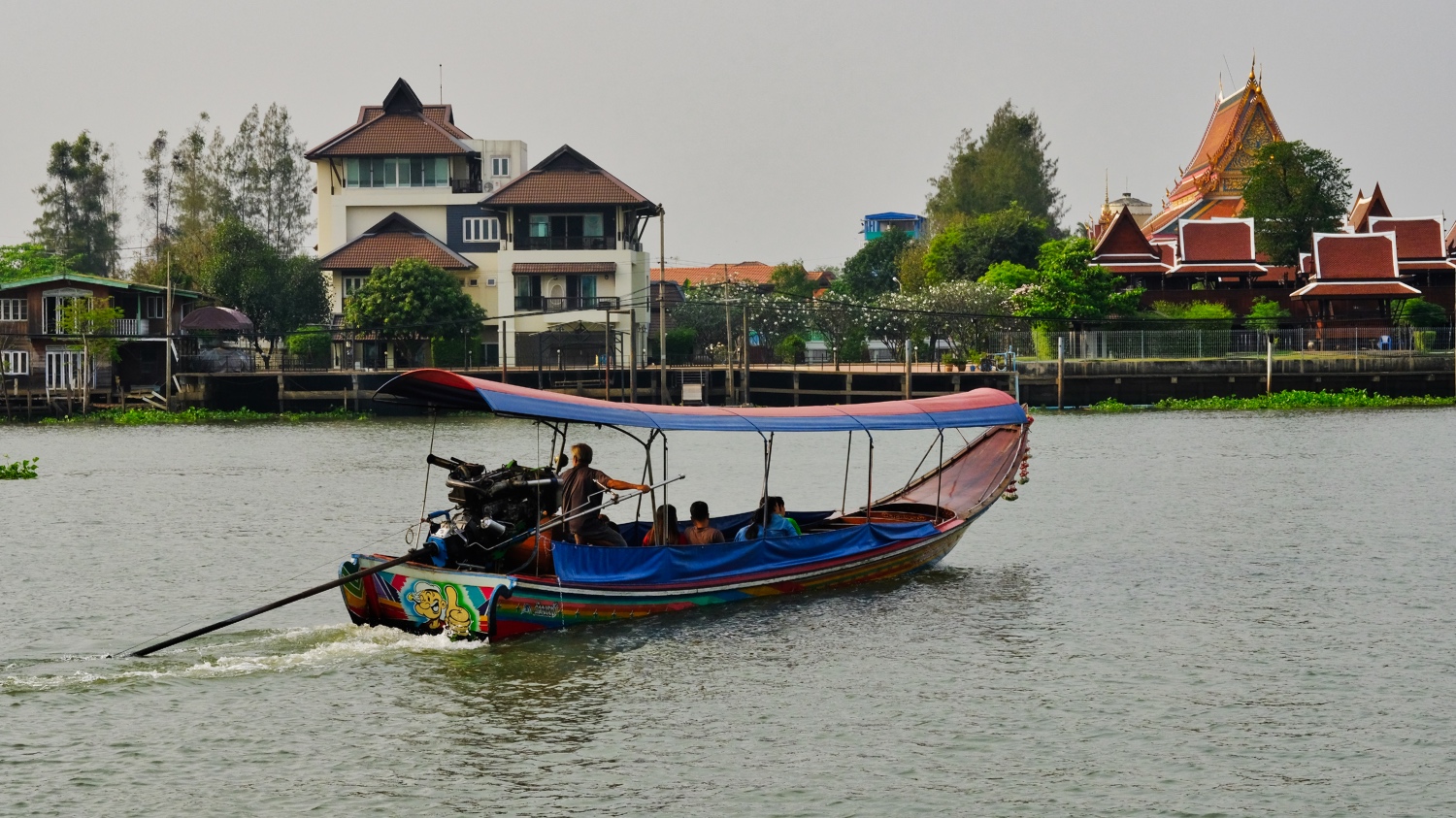 Pakkret sits on the east shore of the busy river. Longtail boats and ferries move people across and around the river banks.
Pakkret sits on the east shore of the busy river. Longtail boats and ferries move people across and around the river banks.
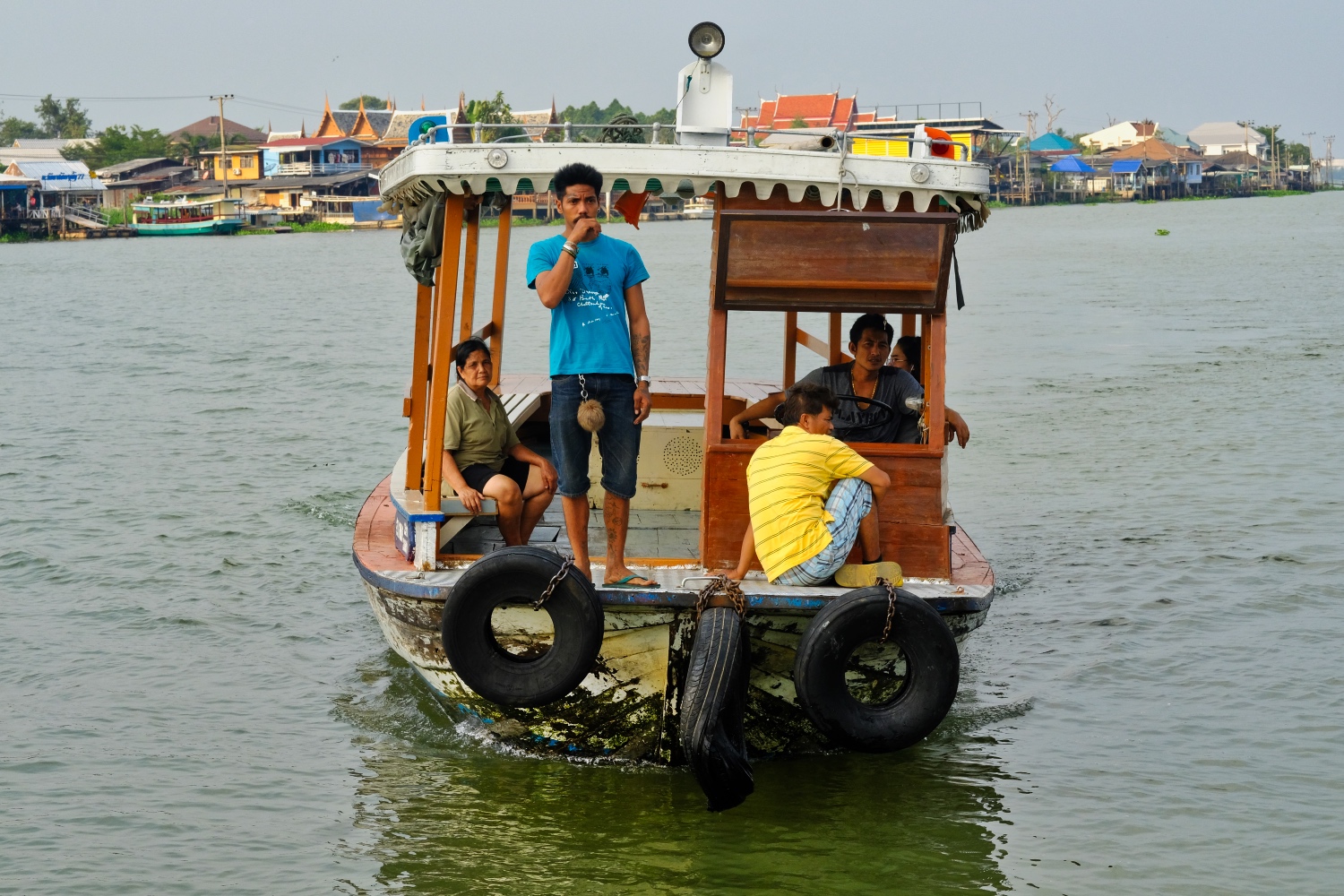 Small government ferries take shoppers headed to the big Pakkret Market . . . for 3 baht (US$0.09).
Small government ferries take shoppers headed to the big Pakkret Market . . . for 3 baht (US$0.09).
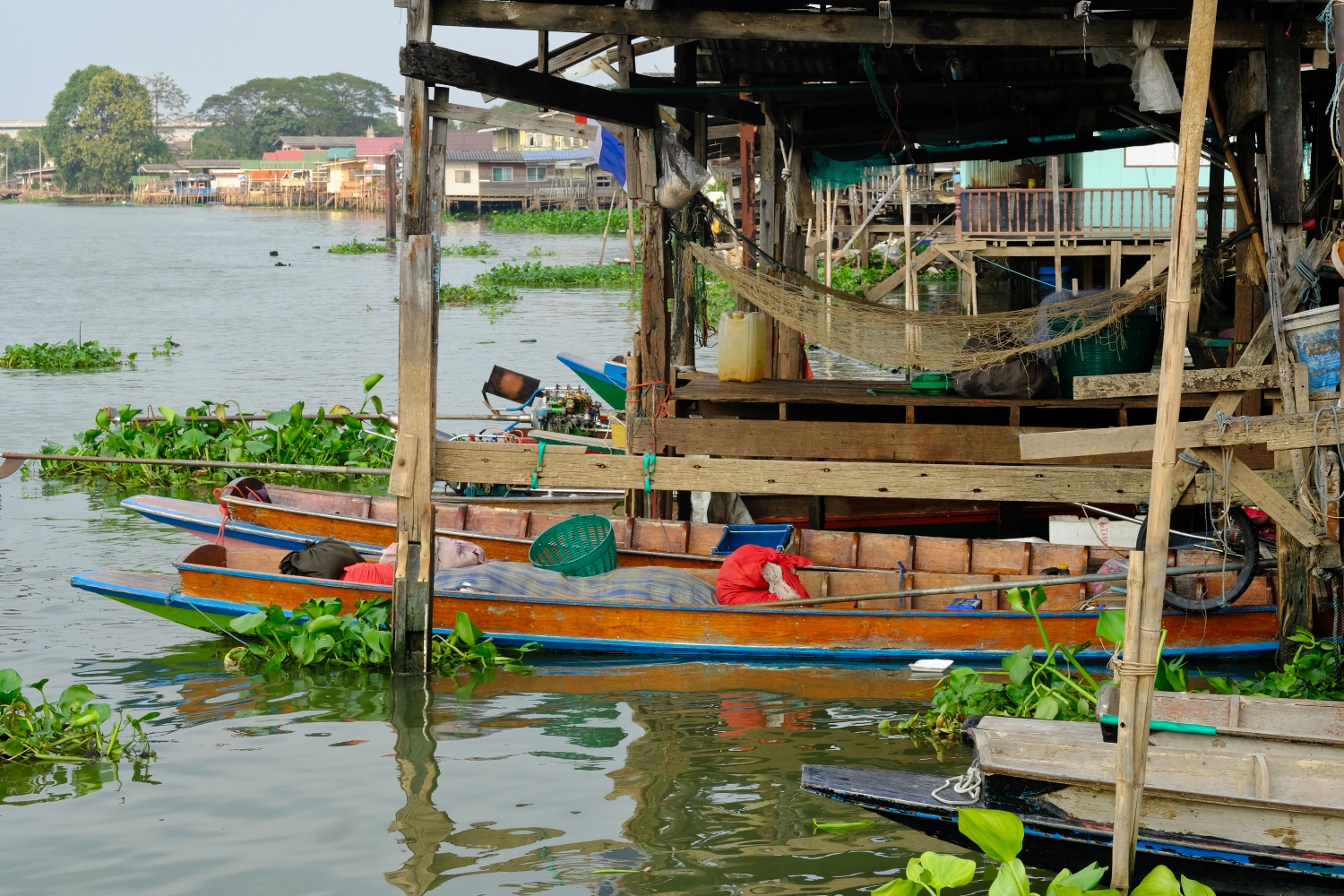 Many wooden houses on wooden pilings line the river at Pakkret. Many of these houses sit below the river flood level and the residents vacate their home for 2-3 months of the year.
Many wooden houses on wooden pilings line the river at Pakkret. Many of these houses sit below the river flood level and the residents vacate their home for 2-3 months of the year.
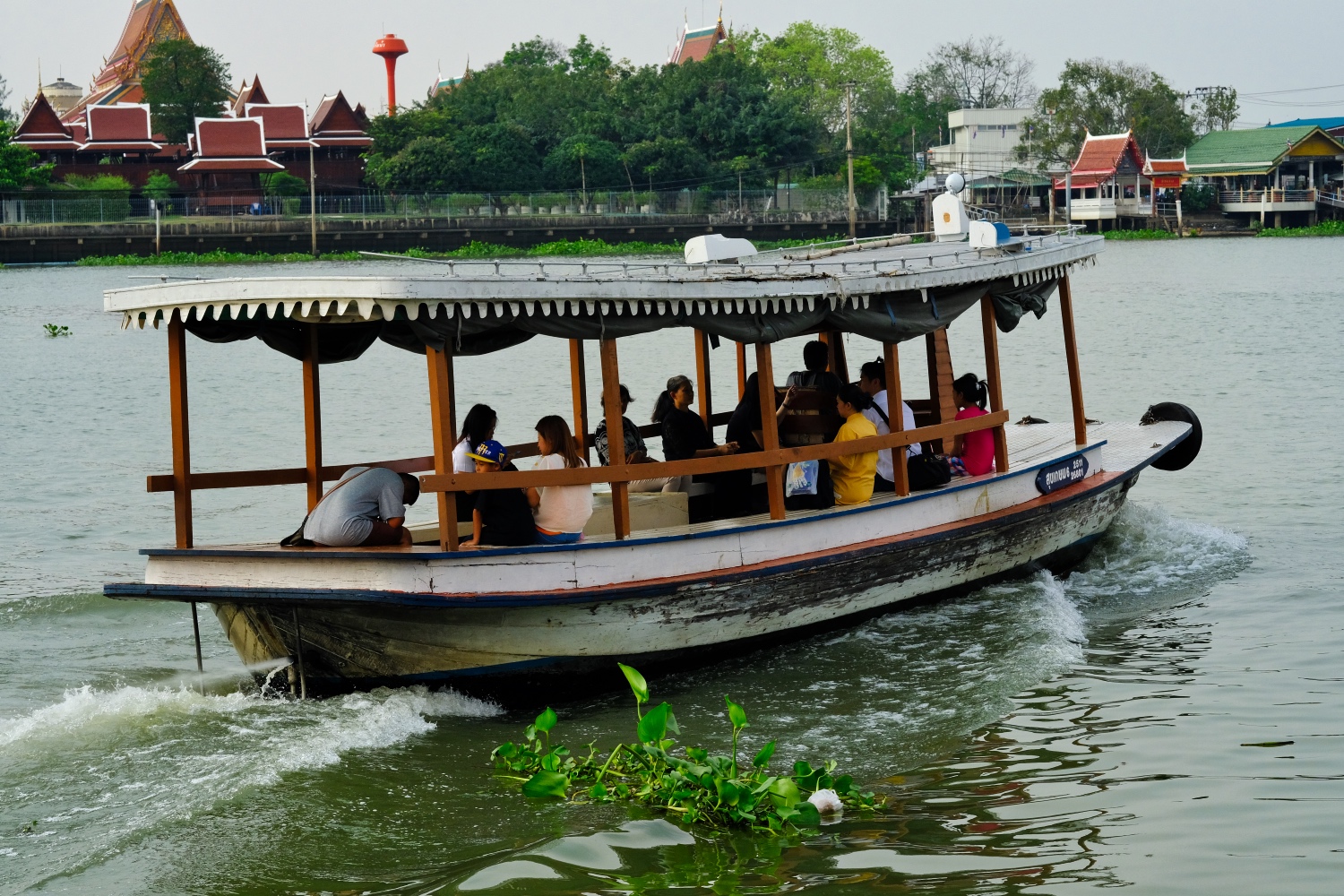 Shoppers going back across the river.
Shoppers going back across the river.
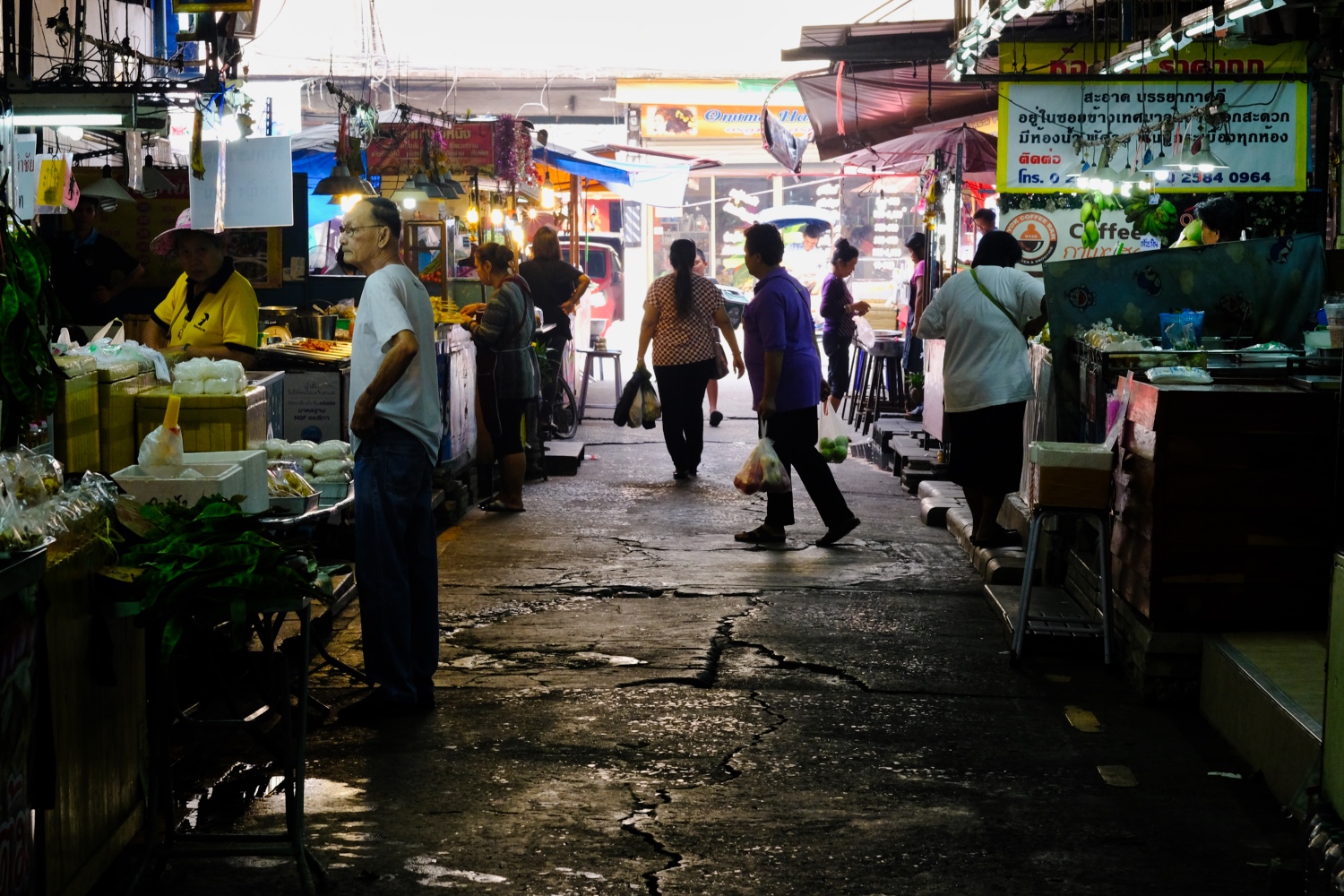 When I think of Pakkret I think of the river . . . and the two grand markets.
When I think of Pakkret I think of the river . . . and the two grand markets.
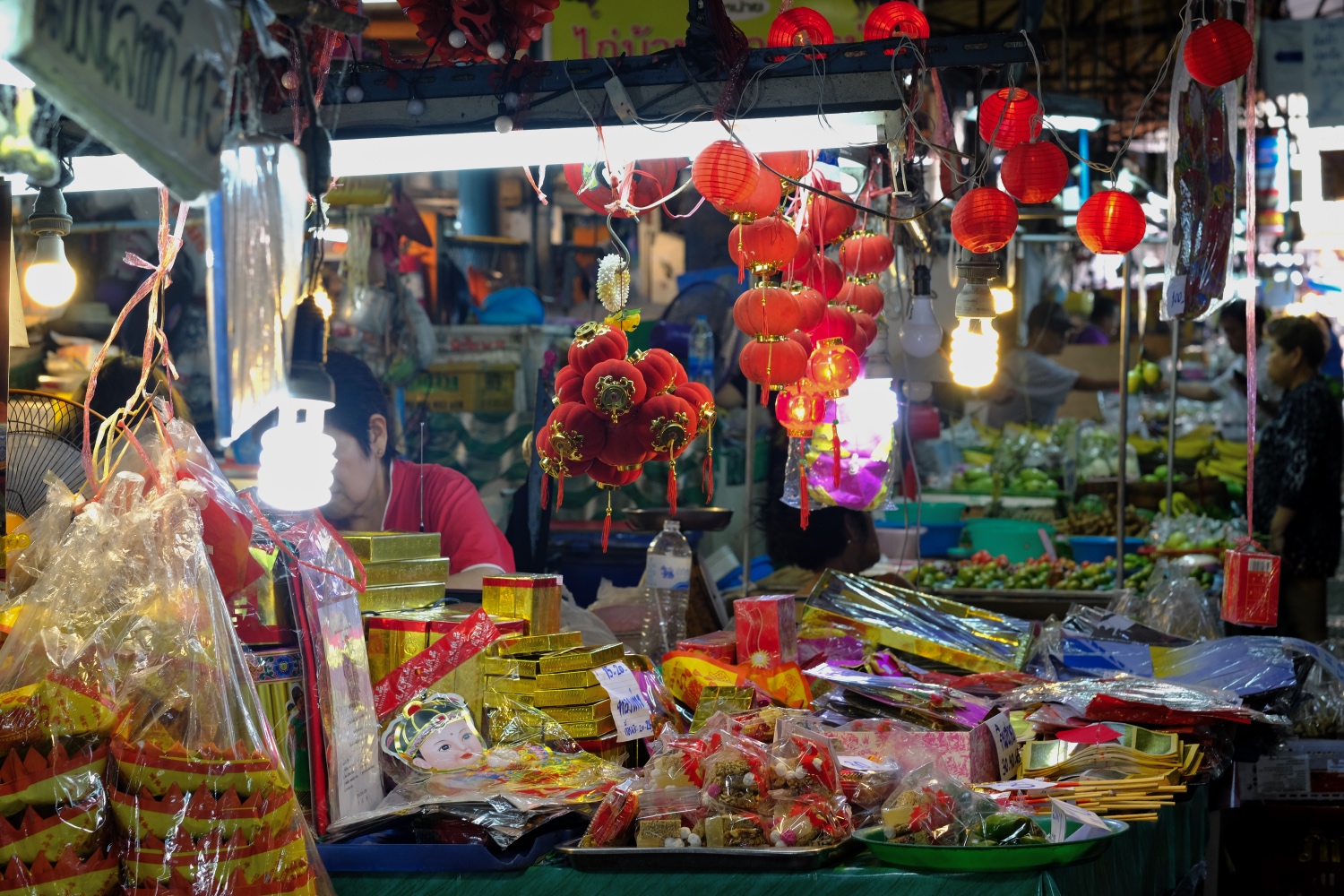 With Chinese New Year just a week away, the Pakkret market has taken on a festive feel.
With Chinese New Year just a week away, the Pakkret market has taken on a festive feel.
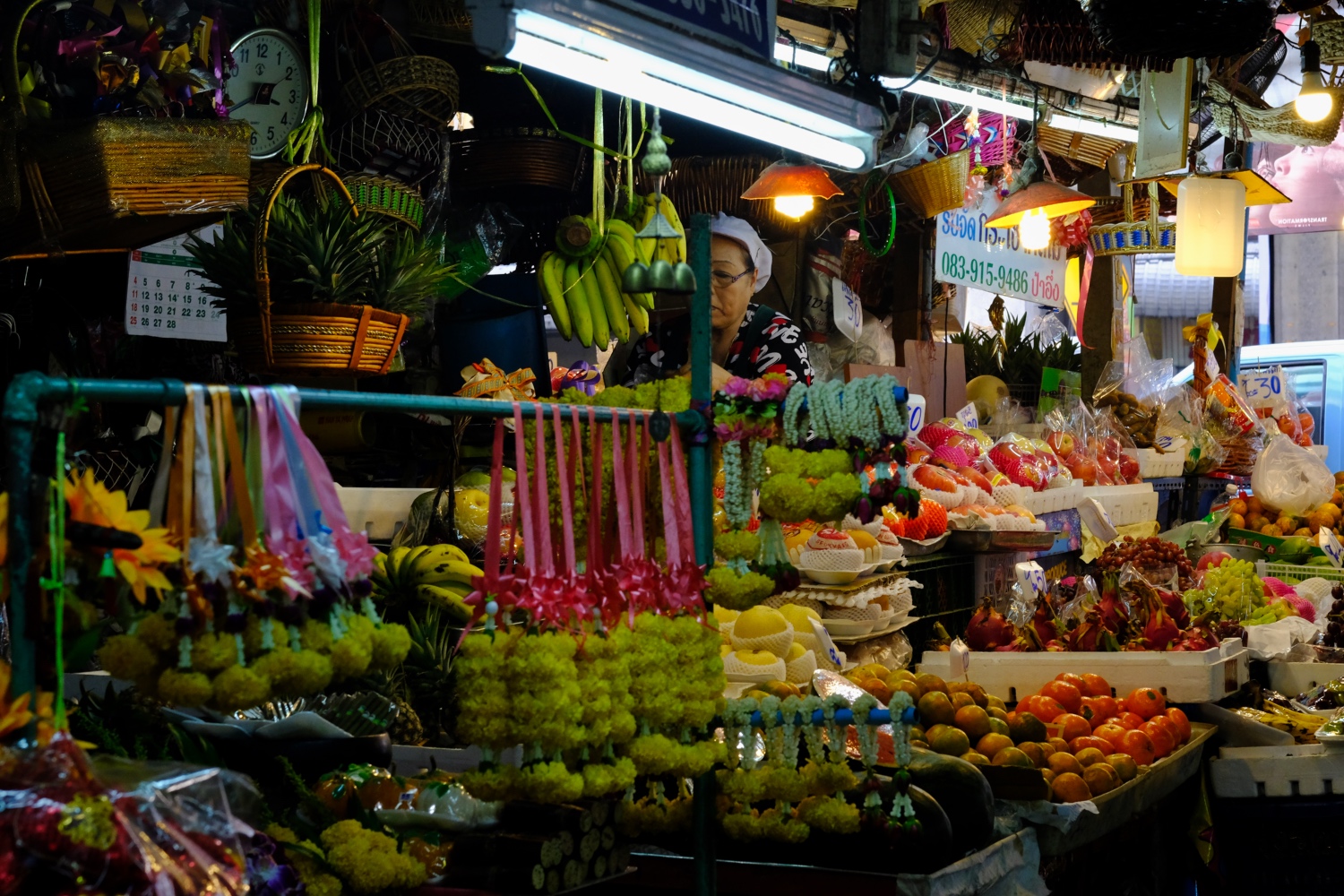 The Pakkret market is a very visually stimulating place . . . and an olfactory stimulating place. Wonderful smells.
The Pakkret market is a very visually stimulating place . . . and an olfactory stimulating place. Wonderful smells.
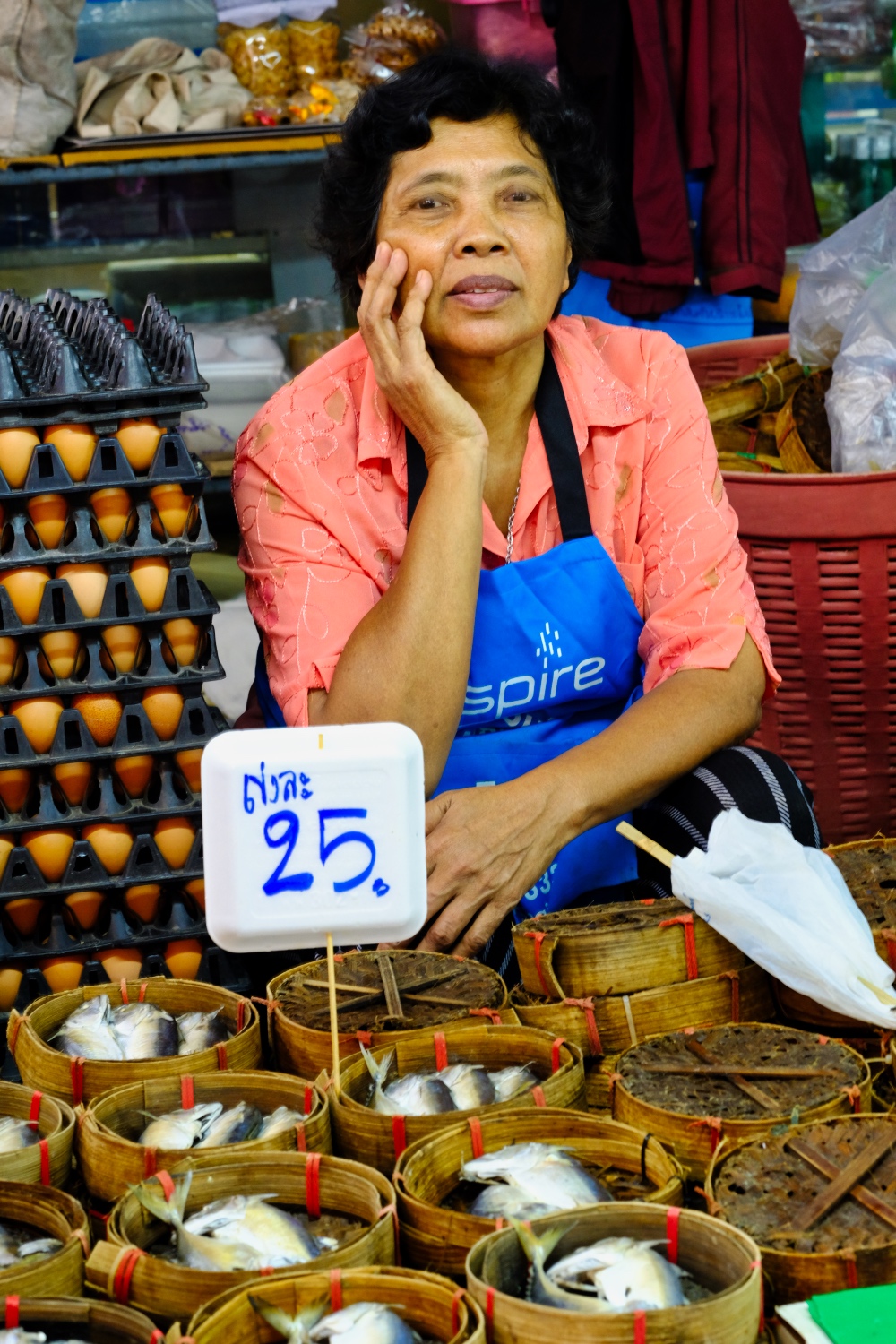 A Pakkret market fish hawker.
A Pakkret market fish hawker.
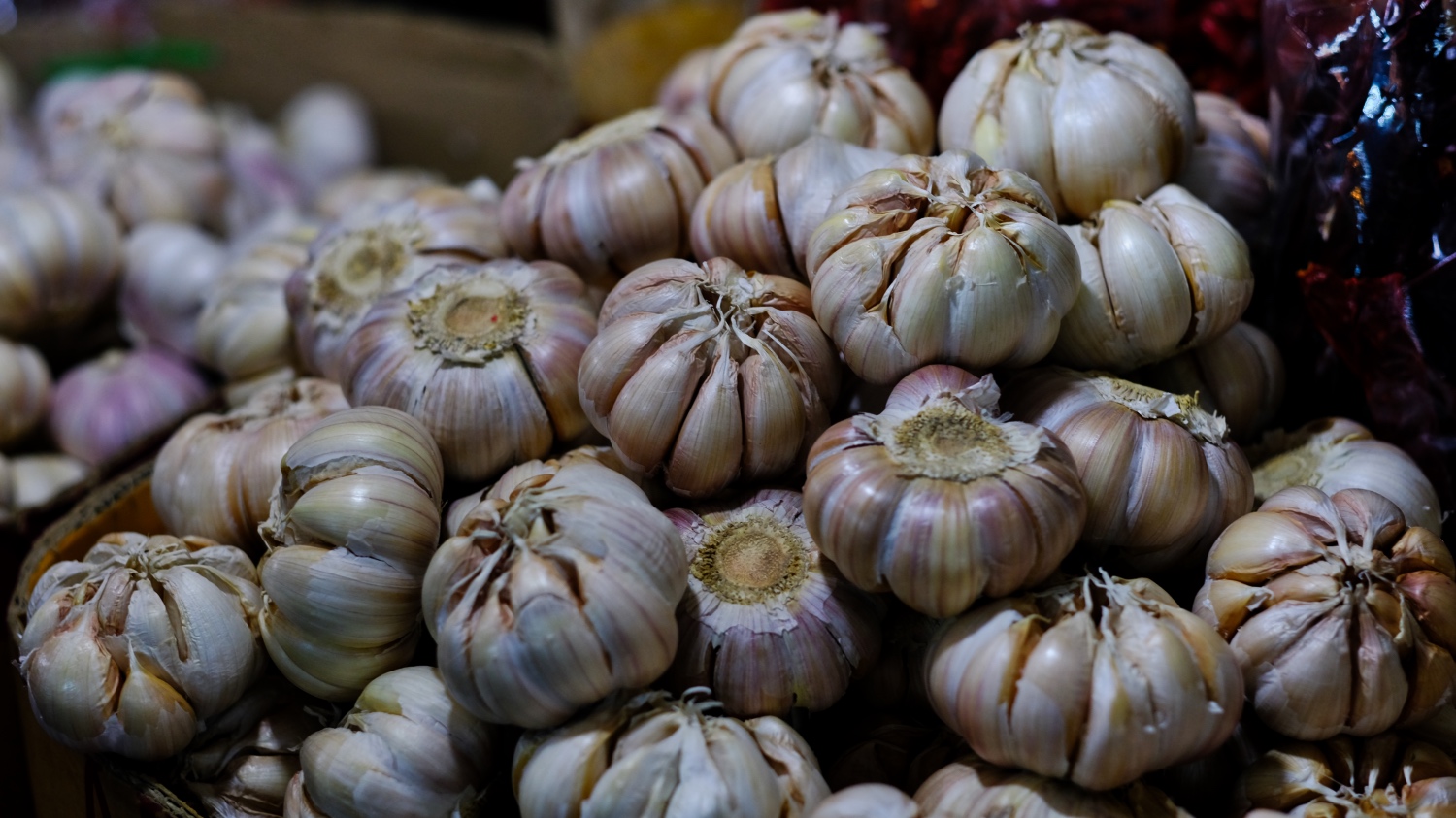 So many still life studies everywhere I looked.
So many still life studies everywhere I looked.
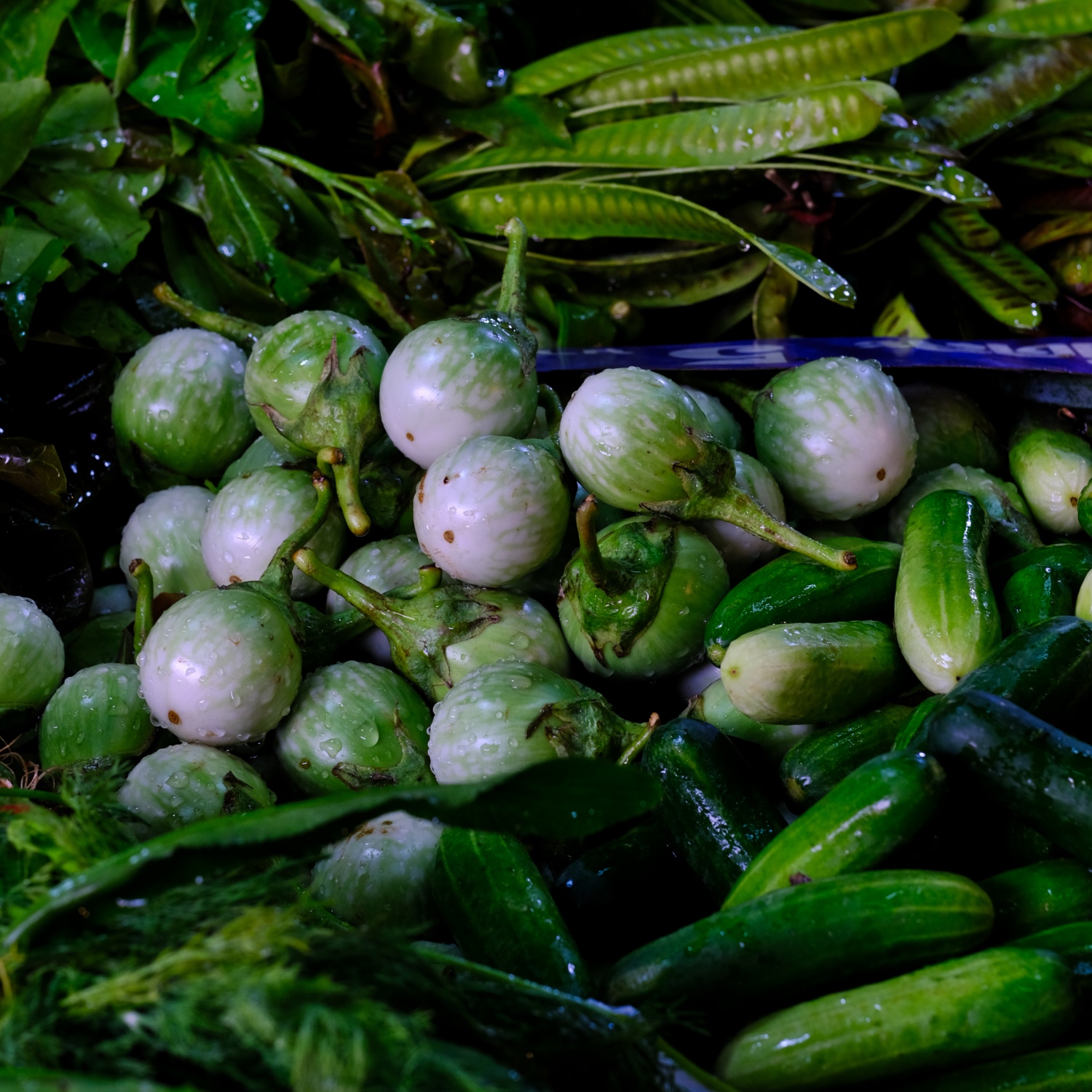 All that great tasting Thai street food has its origins in these 'wet markets.'
All that great tasting Thai street food has its origins in these 'wet markets.'
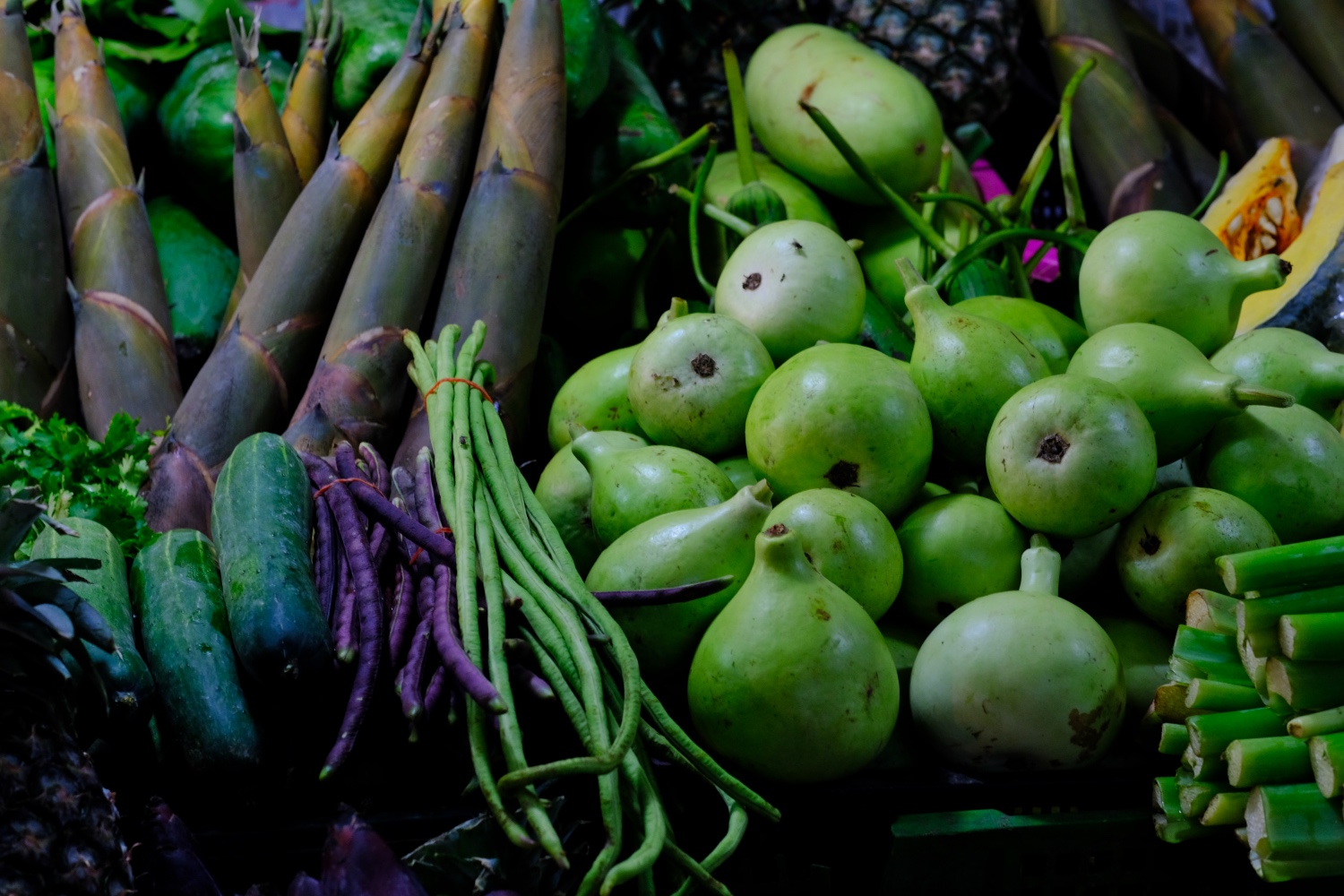 I am not even sure know the names of all of these interesting vegetables. I can't remember ever eating purple green beans . . .
I am not even sure know the names of all of these interesting vegetables. I can't remember ever eating purple green beans . . .
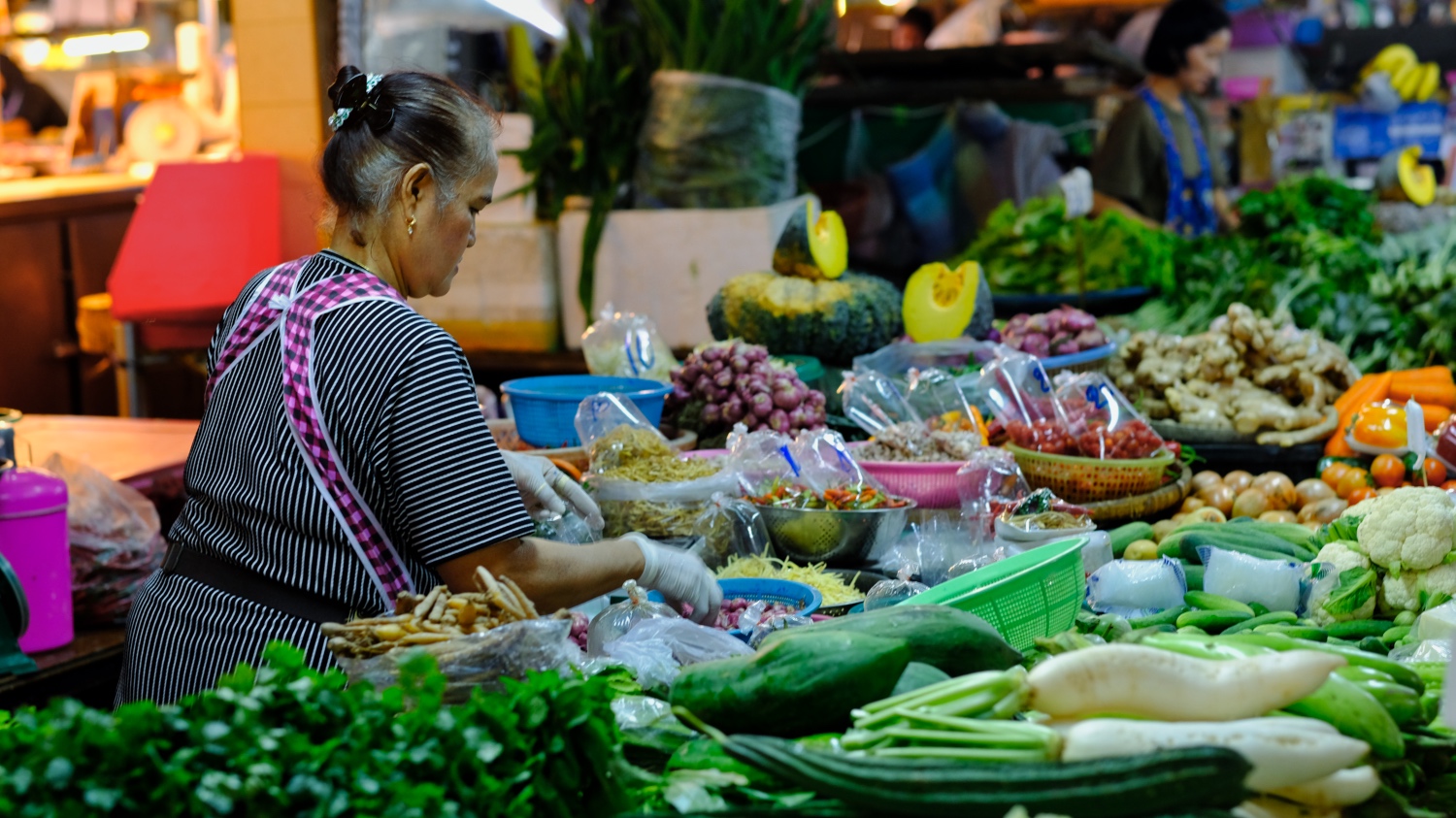 It was a late Saturday afternoon, so it was not a crowded as usual.
It was a late Saturday afternoon, so it was not a crowded as usual.
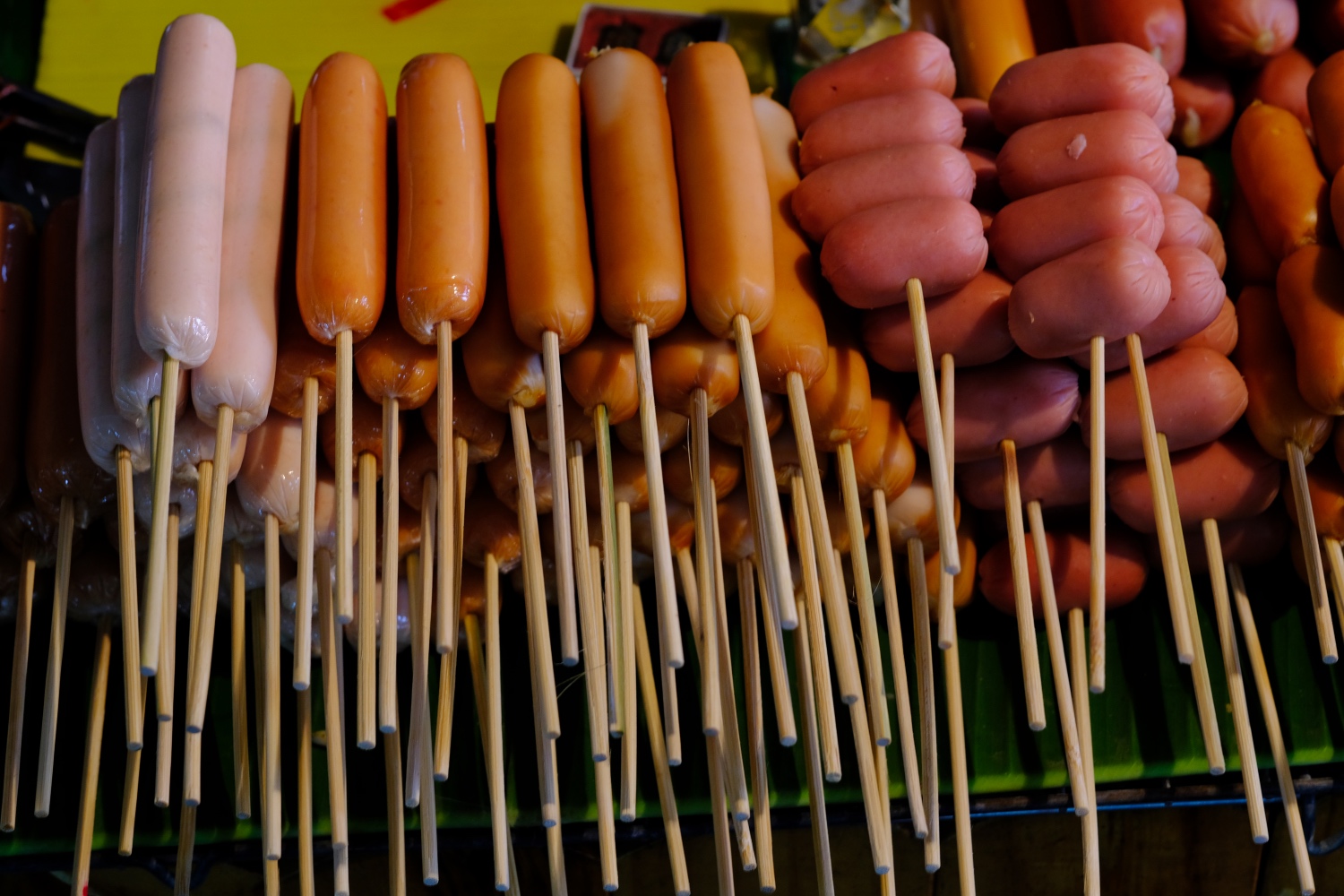 What would a Thai market be without the ubiquitous stuff-on-a-stick!
What would a Thai market be without the ubiquitous stuff-on-a-stick!
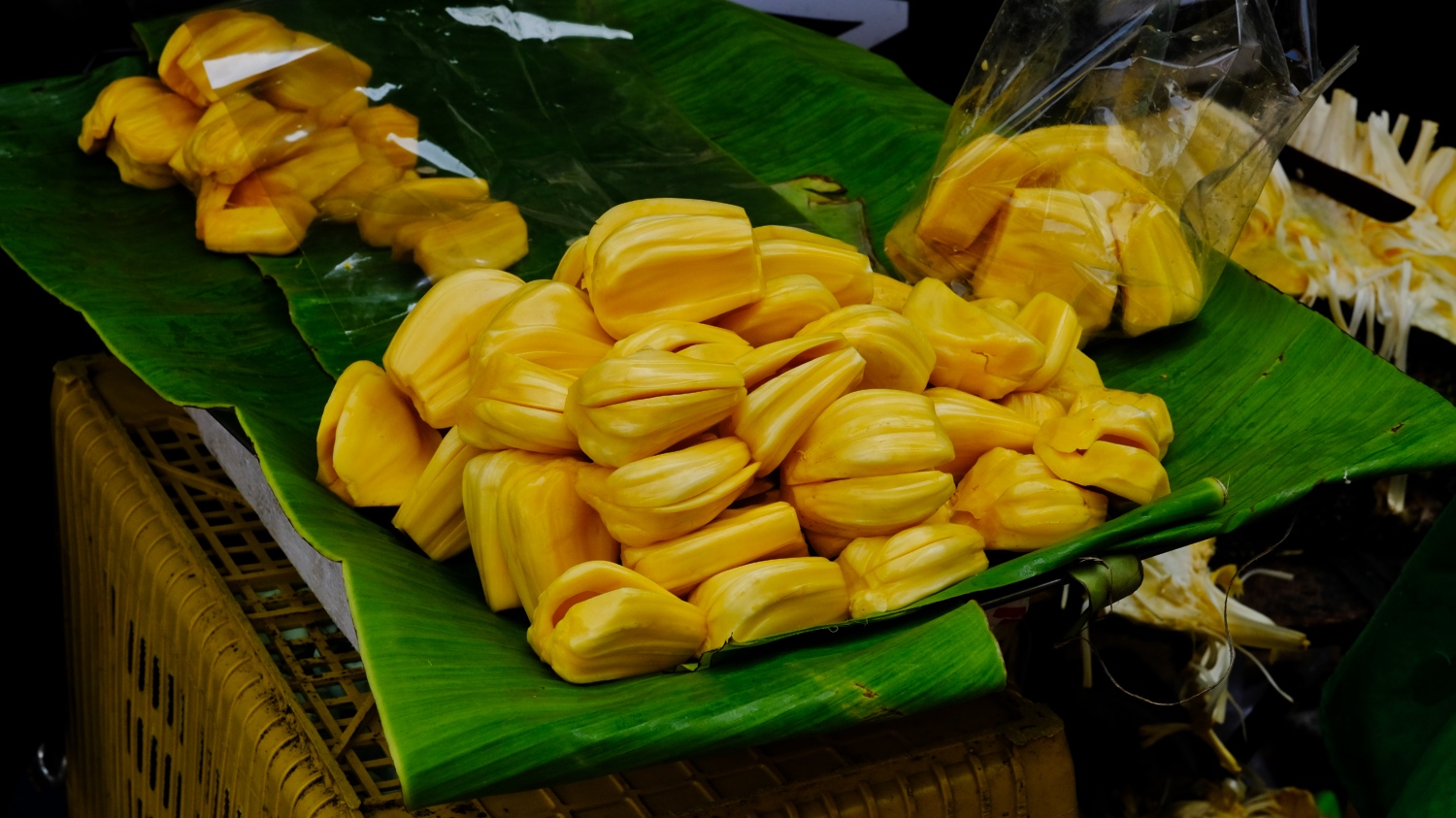 Delicious Jackfruit.
Delicious Jackfruit.
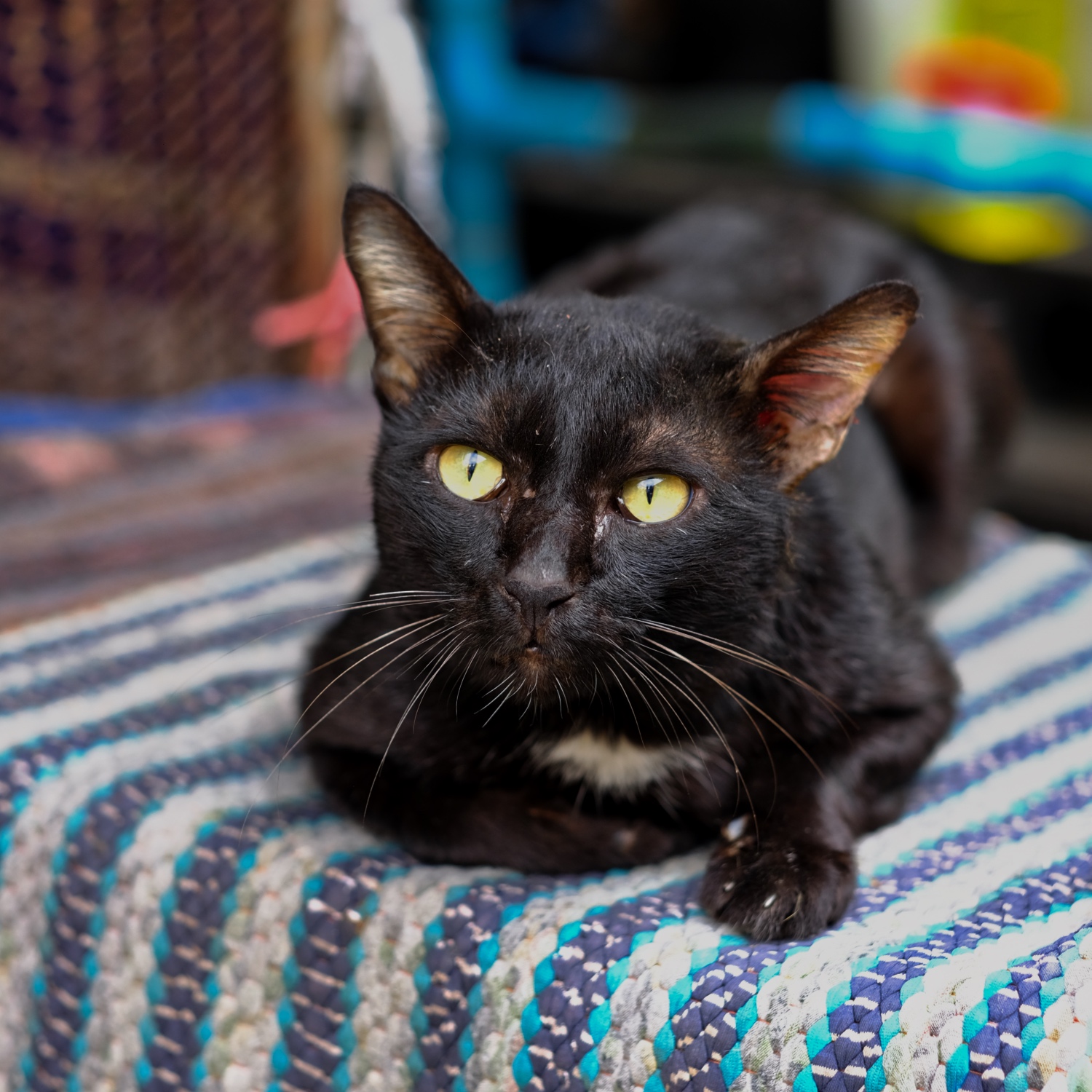 I don't normally take cat photos, but this forlorn market mouser with a recently chewed ear caught my eye.
I don't normally take cat photos, but this forlorn market mouser with a recently chewed ear caught my eye.
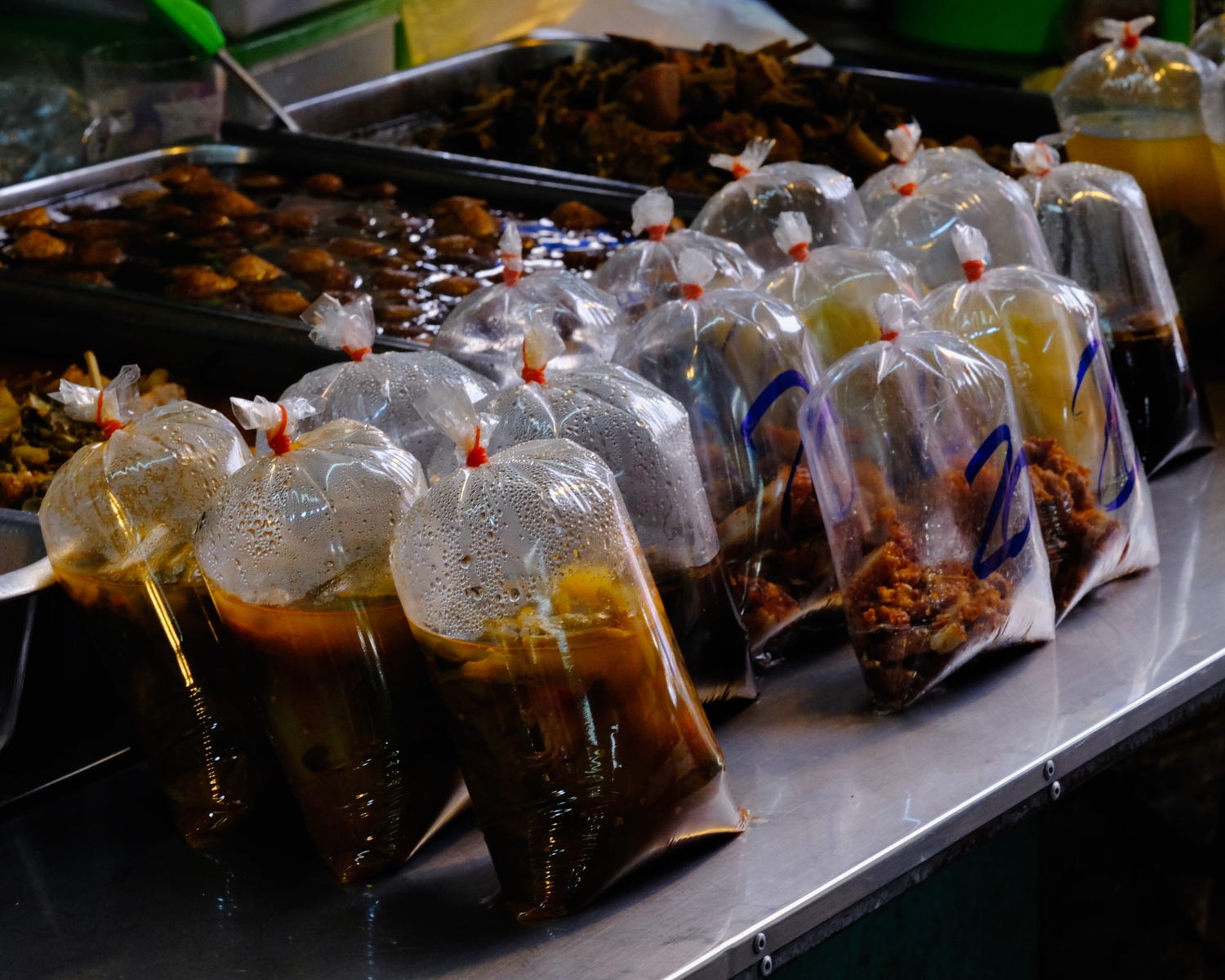 Food is very inexpensive in Thailand. Most markets have stalls selling these 'meals in a bag' for commuters. Just pick one of these up on the way to or from work.
Food is very inexpensive in Thailand. Most markets have stalls selling these 'meals in a bag' for commuters. Just pick one of these up on the way to or from work.
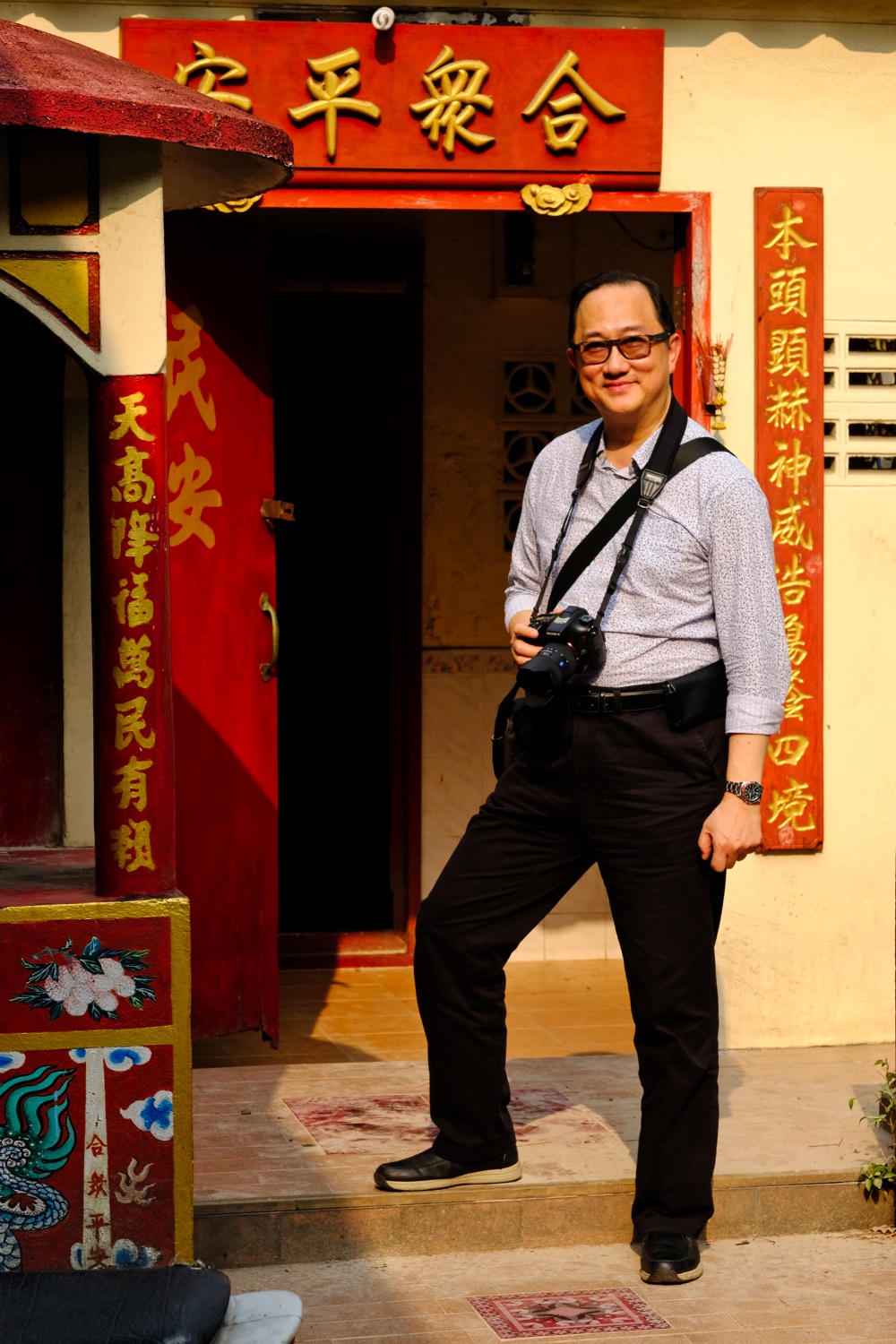 My brother-in-law from Hong Kong, and fellow photo buff, was the excuse to explore the market and riverside attractions. We found the little Chinese temple sandwiched in an alley.
My brother-in-law from Hong Kong, and fellow photo buff, was the excuse to explore the market and riverside attractions. We found the little Chinese temple sandwiched in an alley.
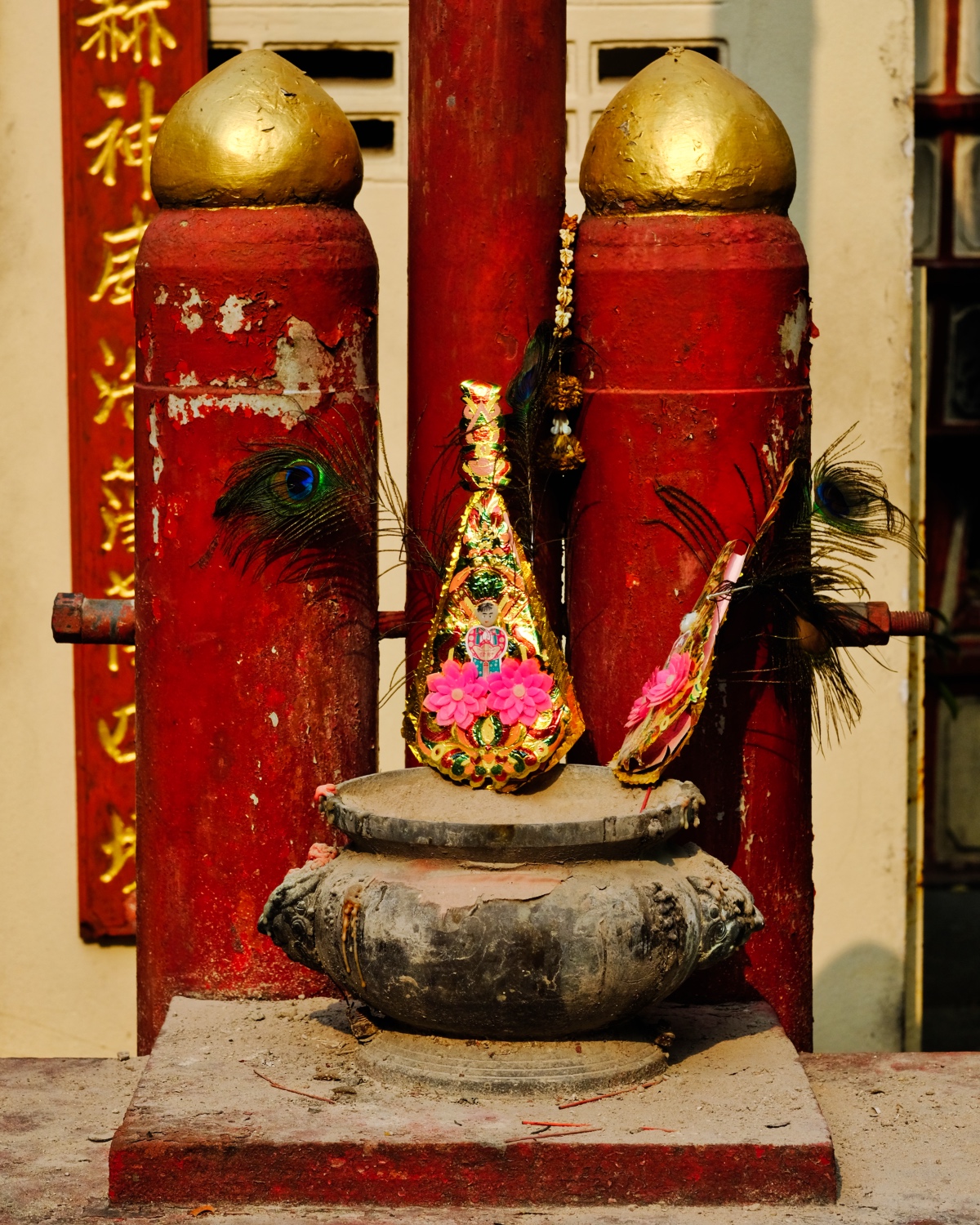 Chinese Temple detail . . .
Chinese Temple detail . . .
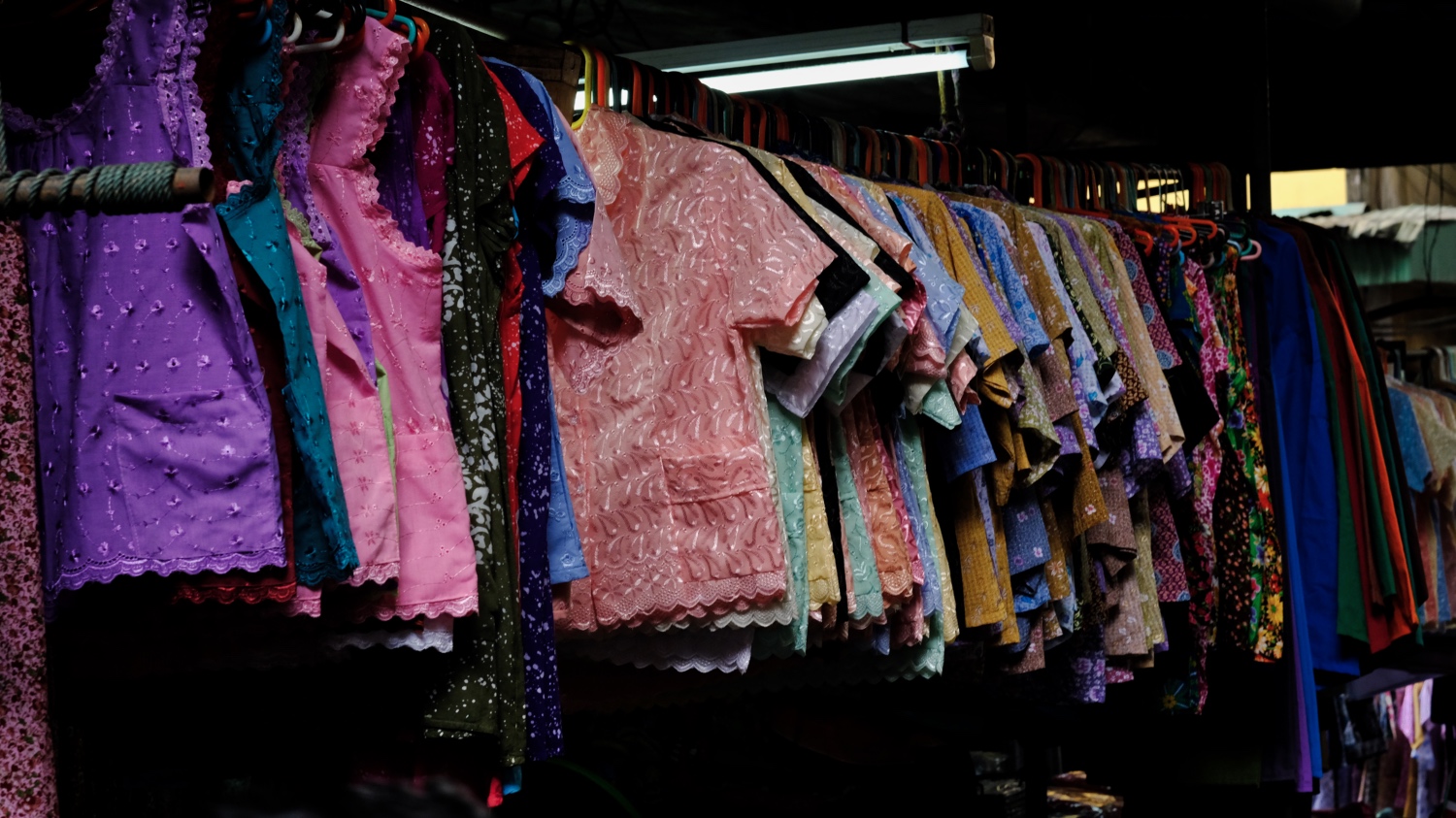 In addition to food, the Pakkret market also has sections for [old lady] clothes.
In addition to food, the Pakkret market also has sections for [old lady] clothes.
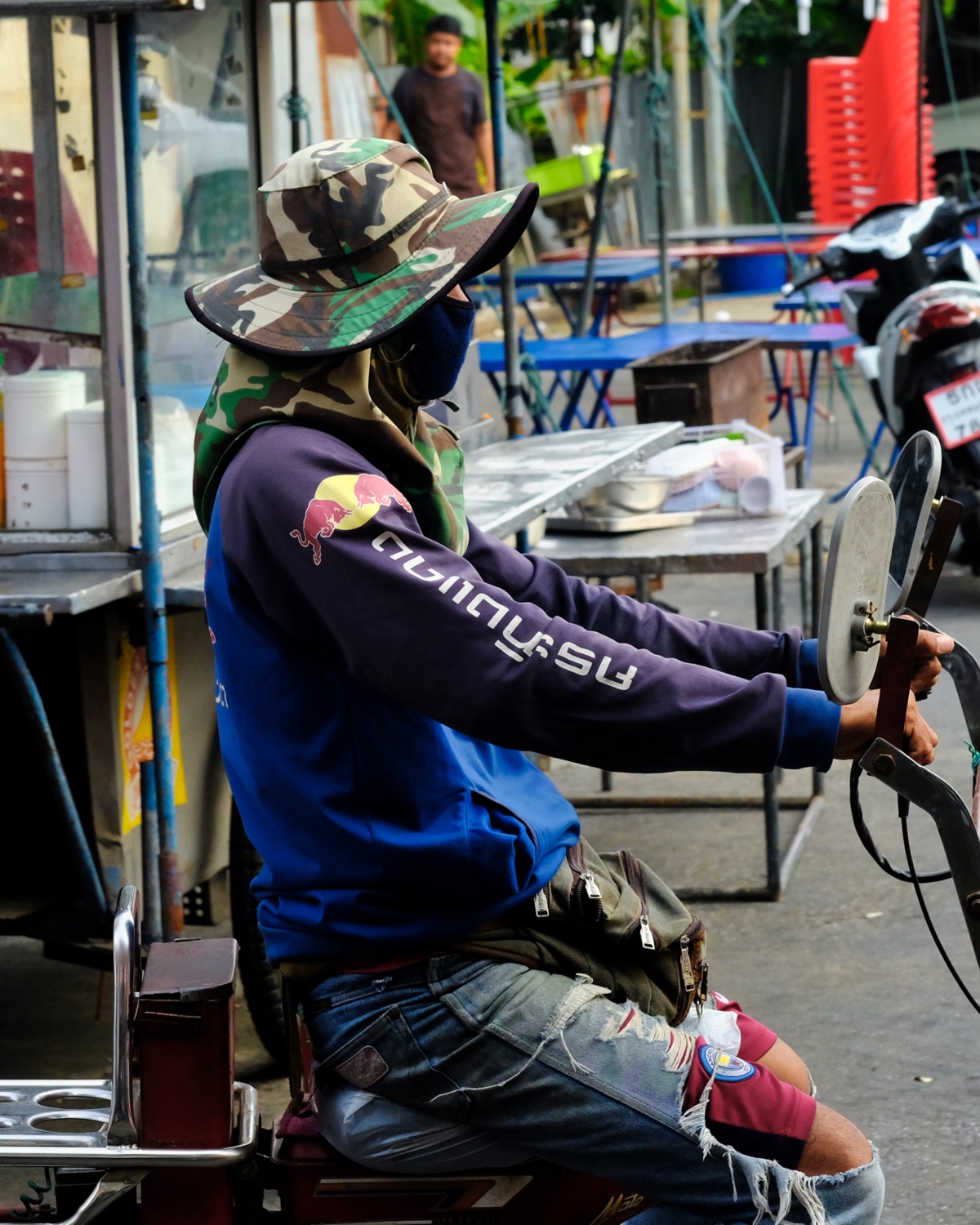 After shopping for your restaurant or market stall, you can hire a motorcycle taxi truck to get your stuff where you want it to go.
After shopping for your restaurant or market stall, you can hire a motorcycle taxi truck to get your stuff where you want it to go.
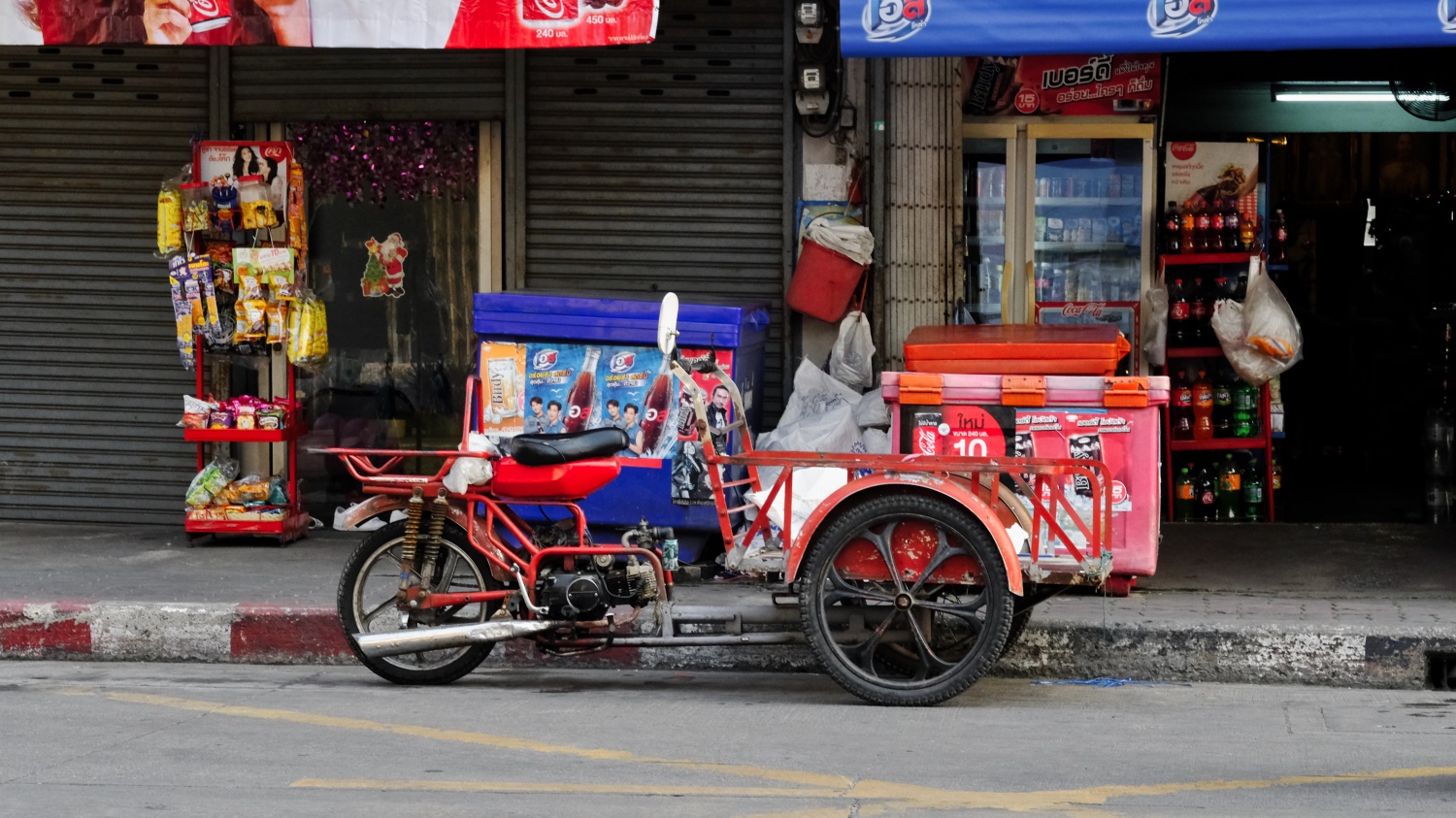 Motorized carts for moving produce and products around the market district.
Motorized carts for moving produce and products around the market district.
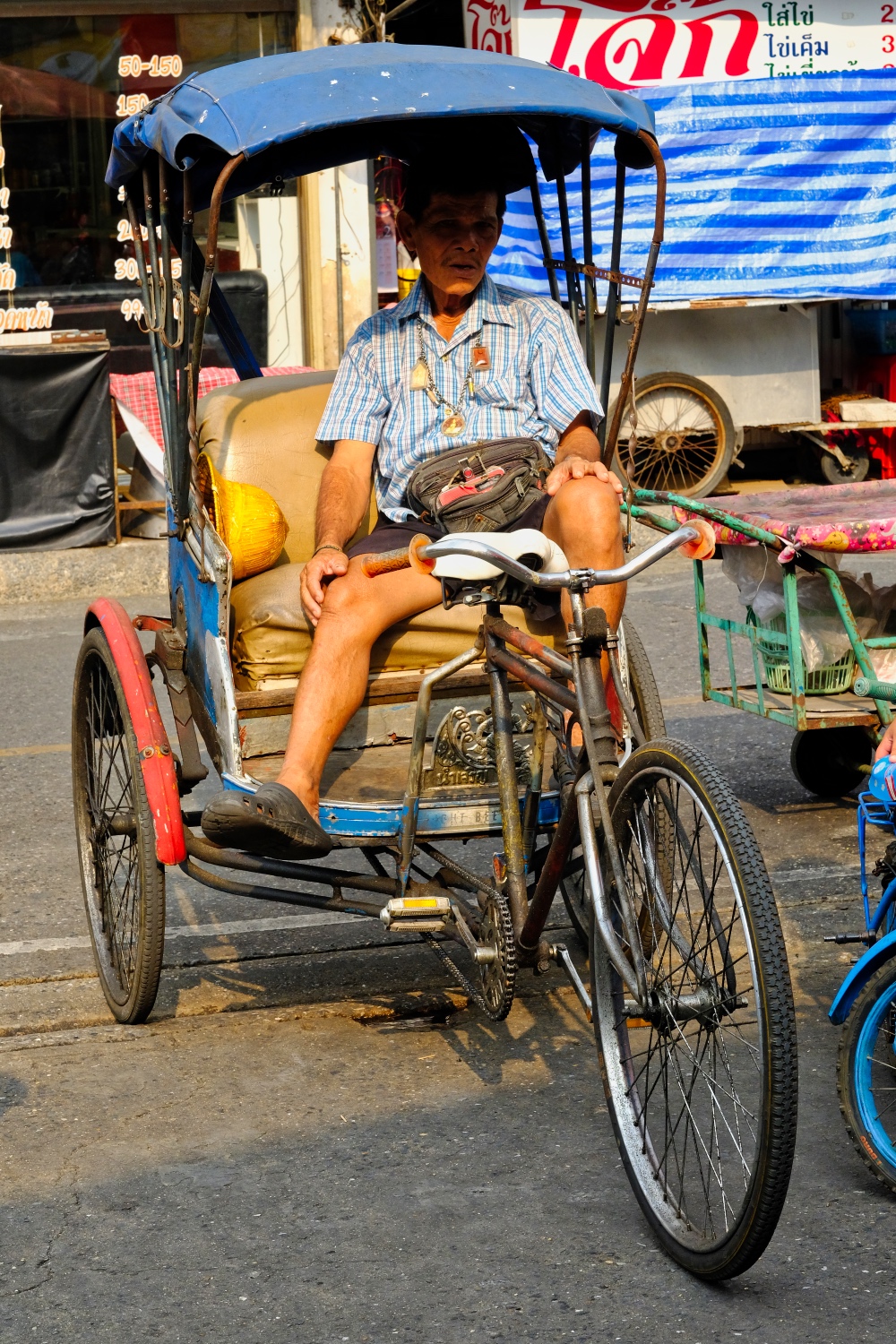 A traditional, and less expensive, means of transportation is the samlor.
A traditional, and less expensive, means of transportation is the samlor.
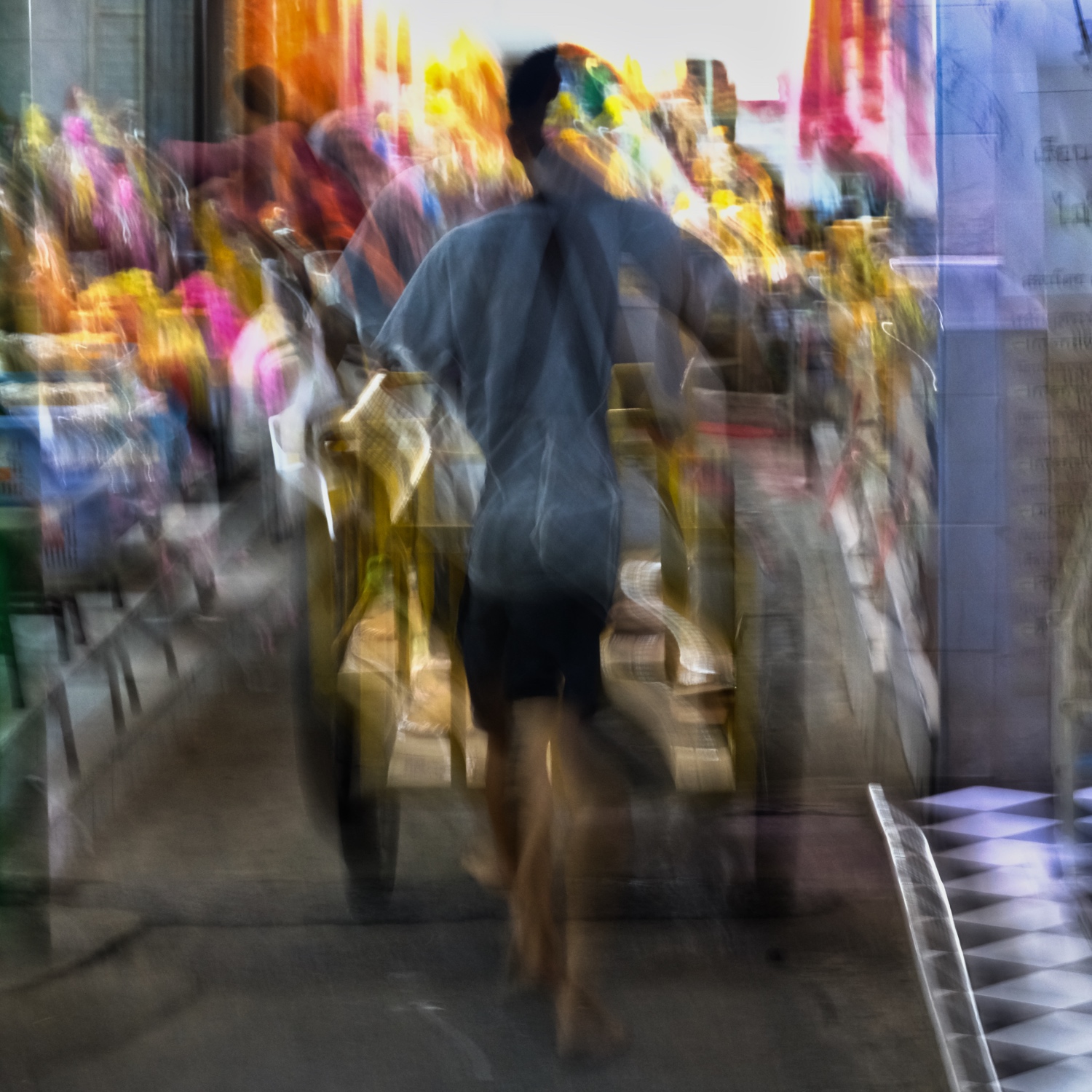 The Thai markets are places of constant action and movement.
The Thai markets are places of constant action and movement.
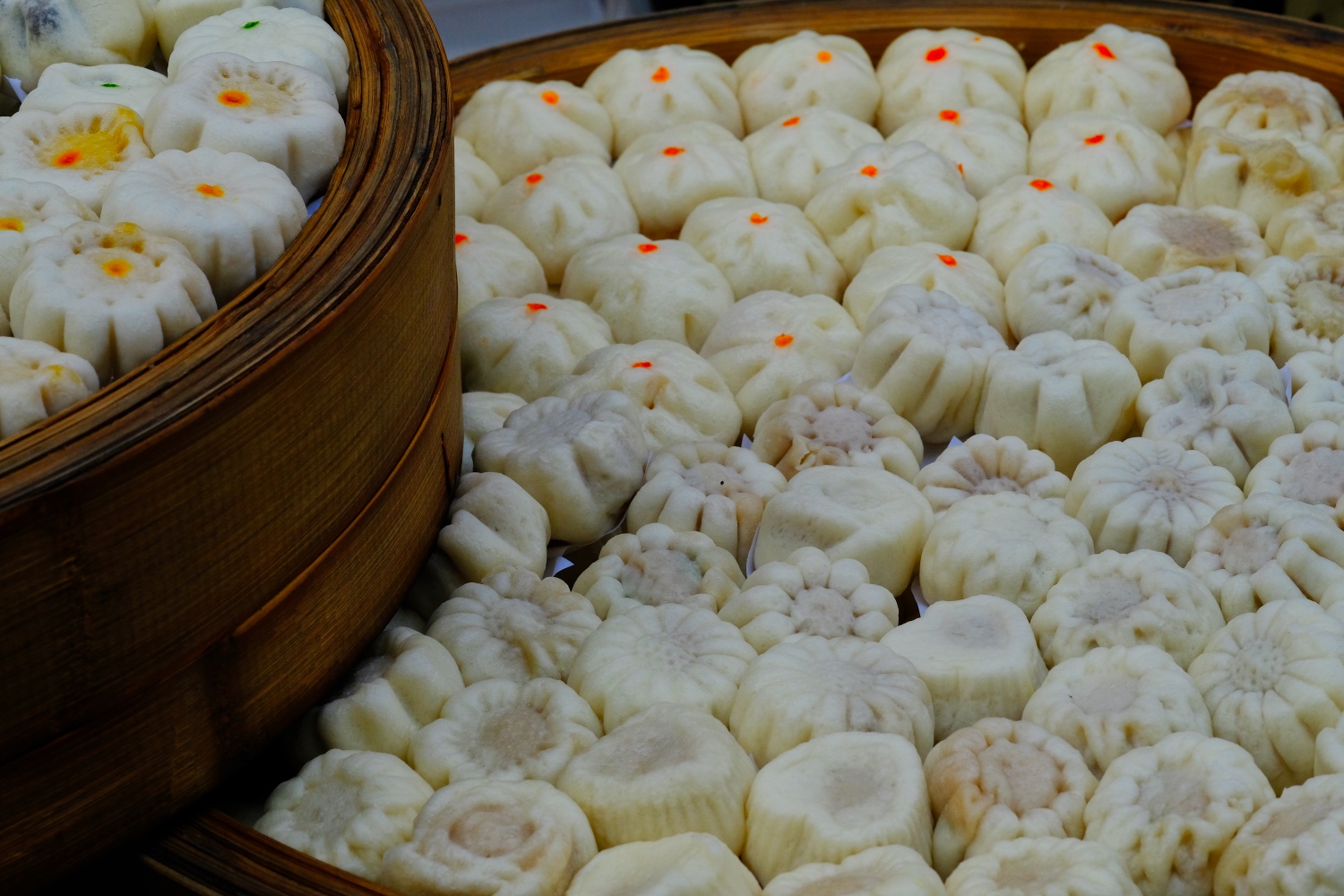 Outside the market, on the street, are even more edibles . . . steamed dim sum.
Outside the market, on the street, are even more edibles . . . steamed dim sum.
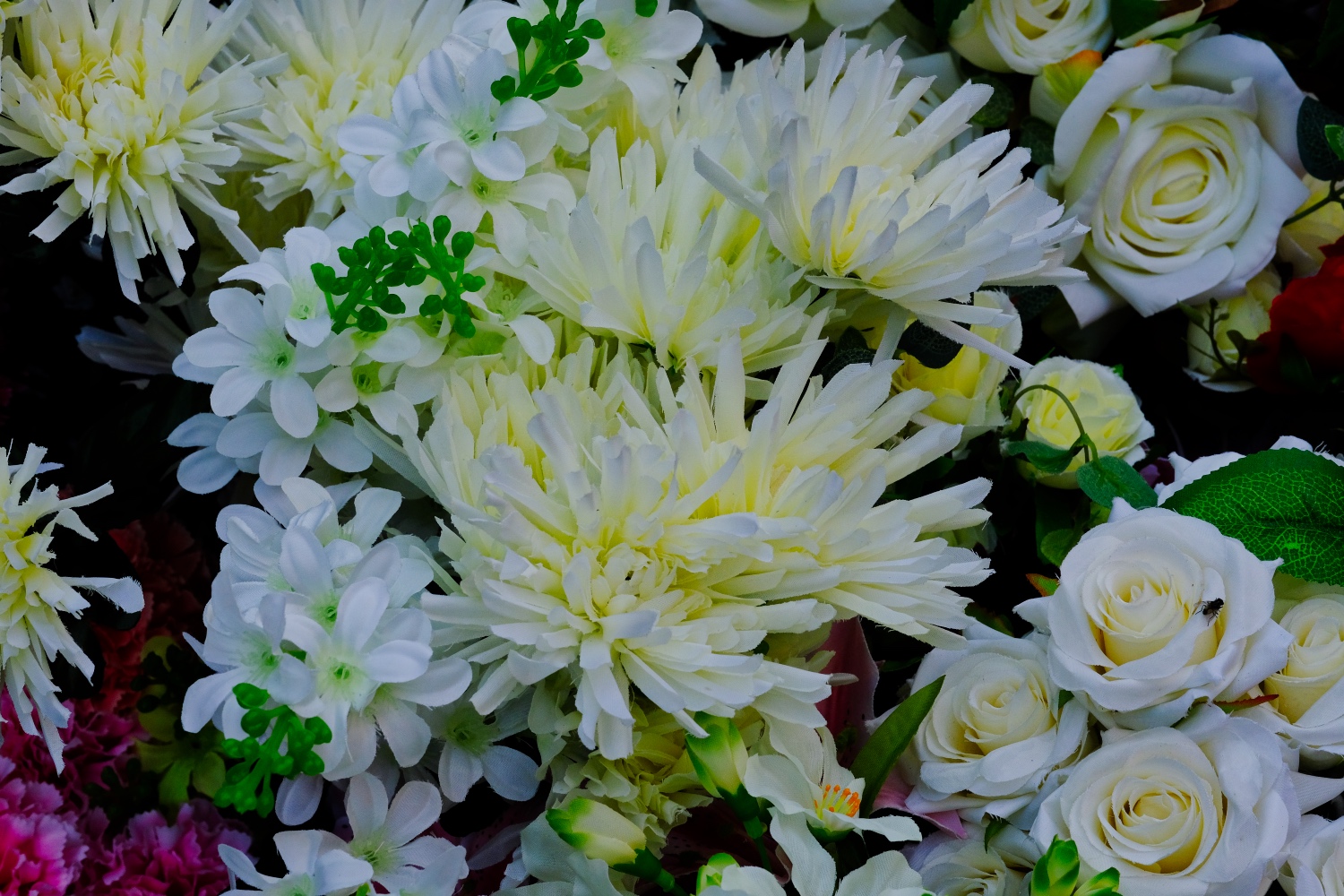 I am always amazed at the artistry of Thai artificial flowers!
I am always amazed at the artistry of Thai artificial flowers!
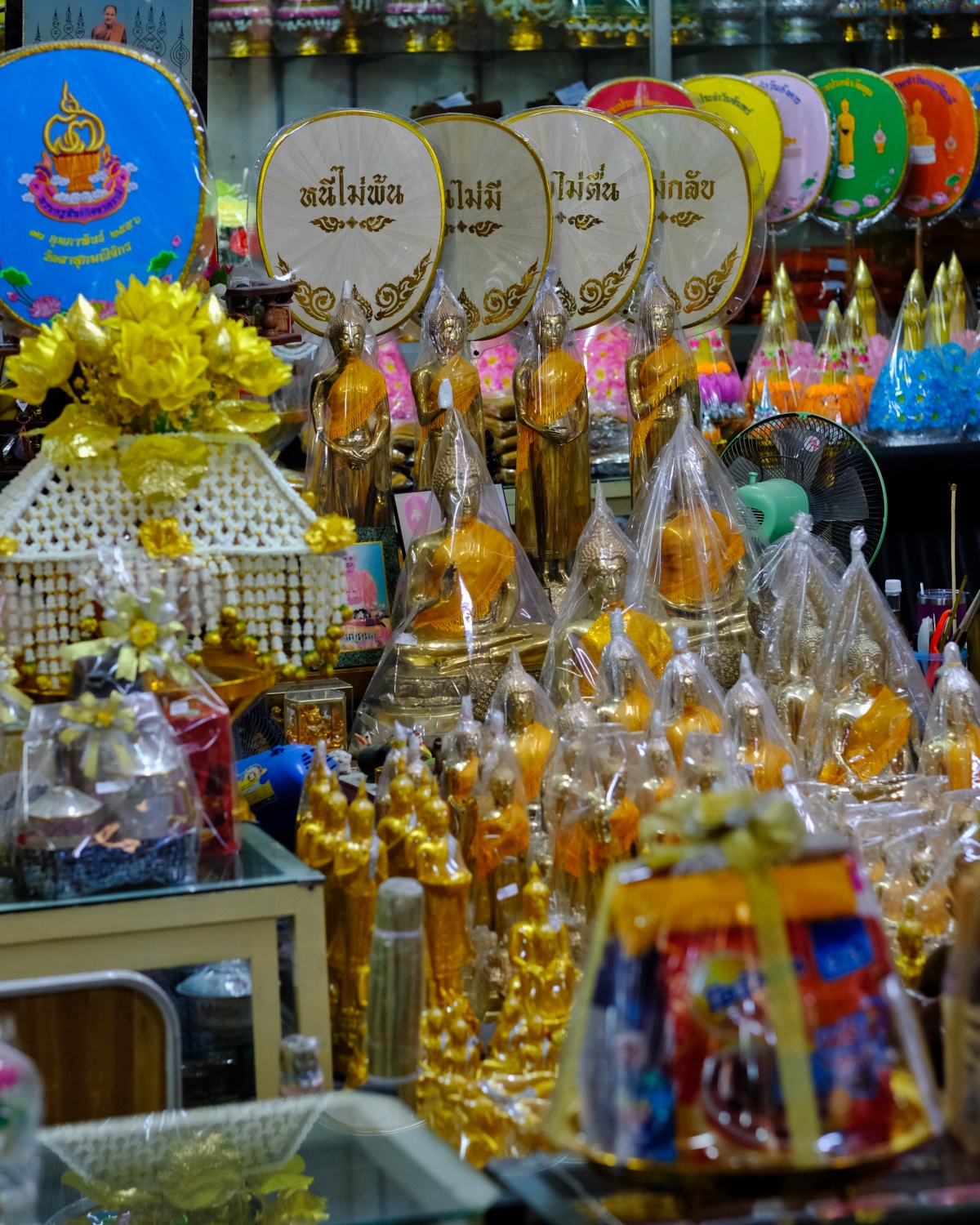 We wandered around in some alleyways along the river and discovered a Buddhist Temple Supply Shop.
We wandered around in some alleyways along the river and discovered a Buddhist Temple Supply Shop.
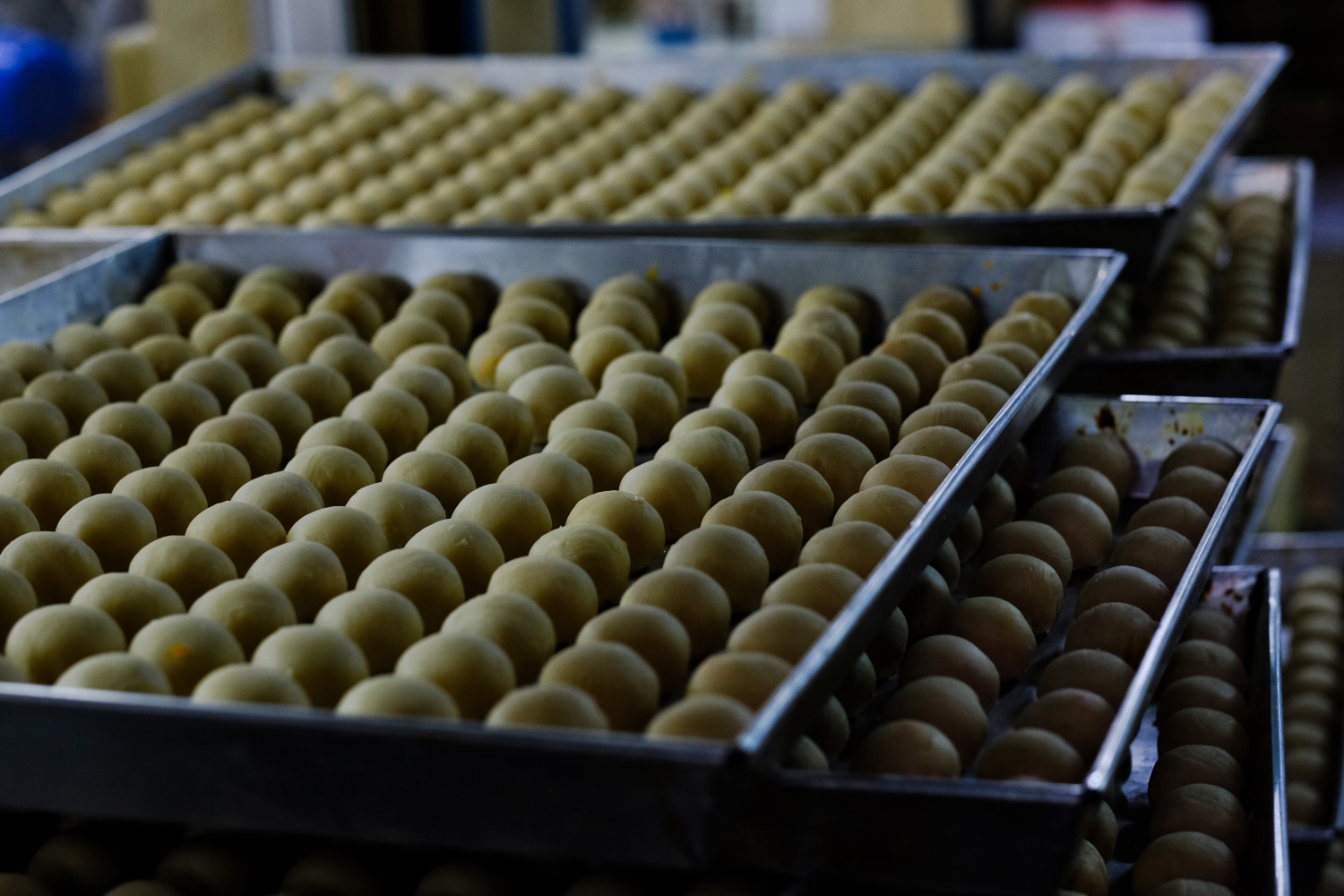 A back alley home cookie factory making traditional Chinese treats.
A back alley home cookie factory making traditional Chinese treats.
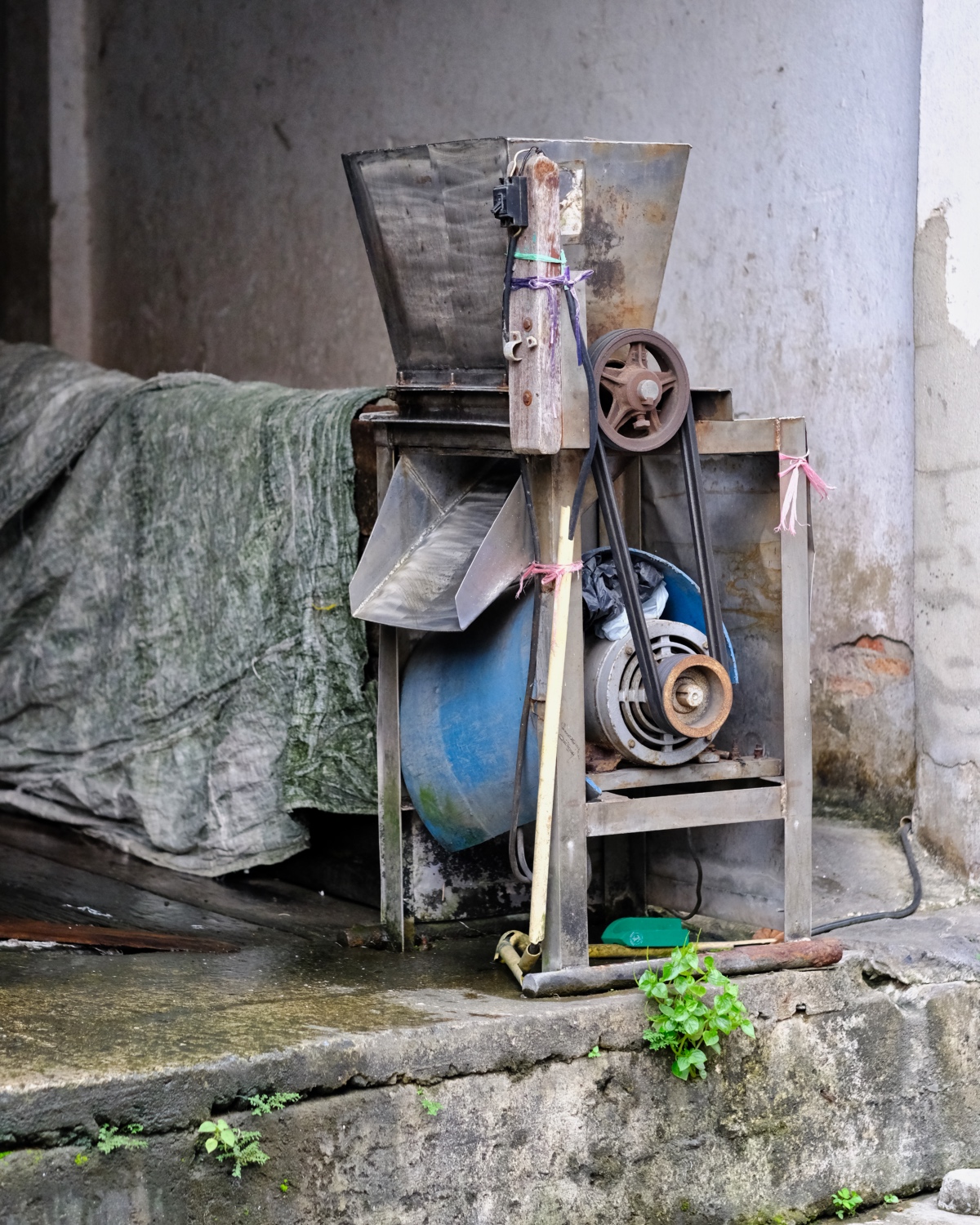 Somebody's business: crushed ice.
Somebody's business: crushed ice.
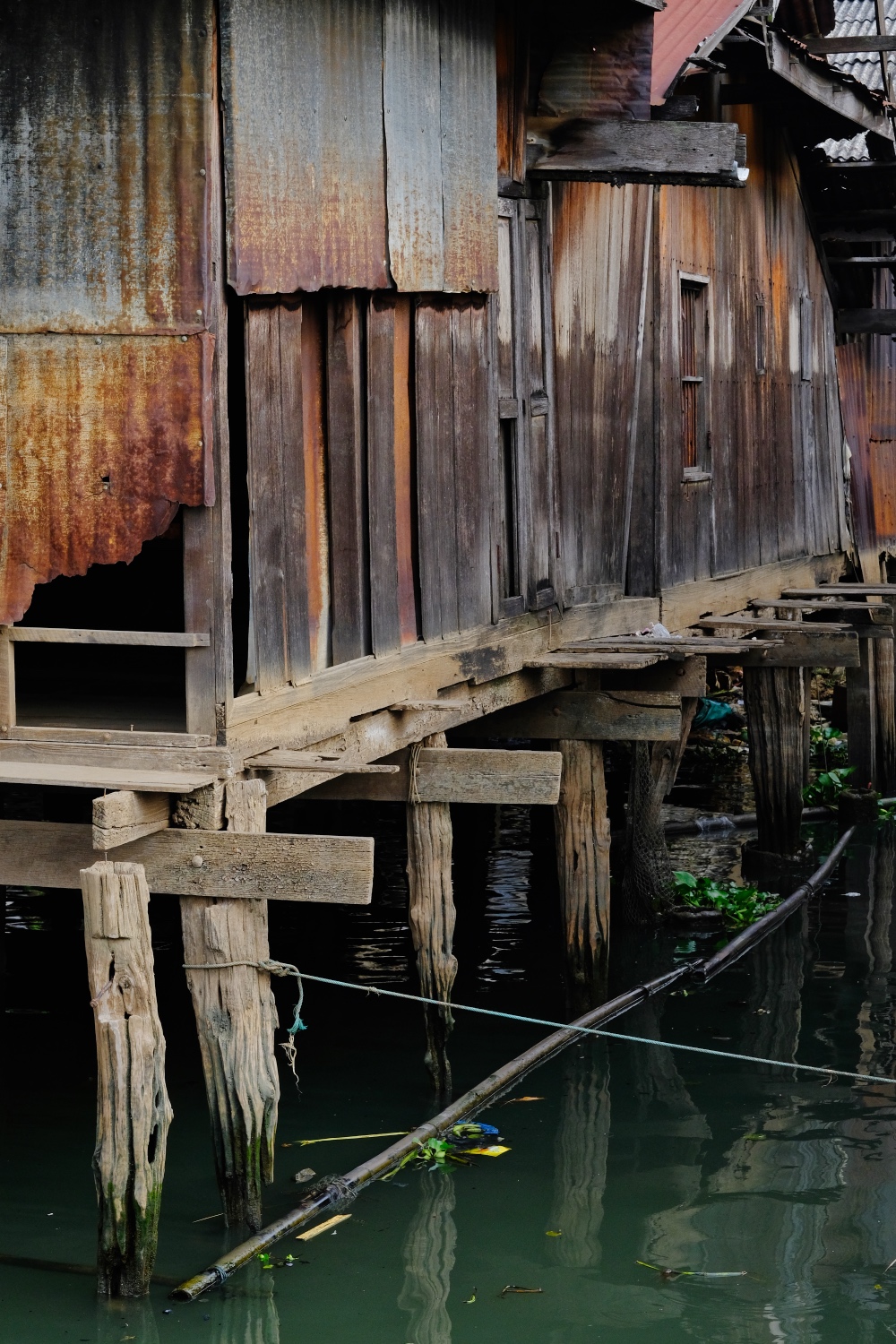 Down along the river . . .
Down along the river . . .
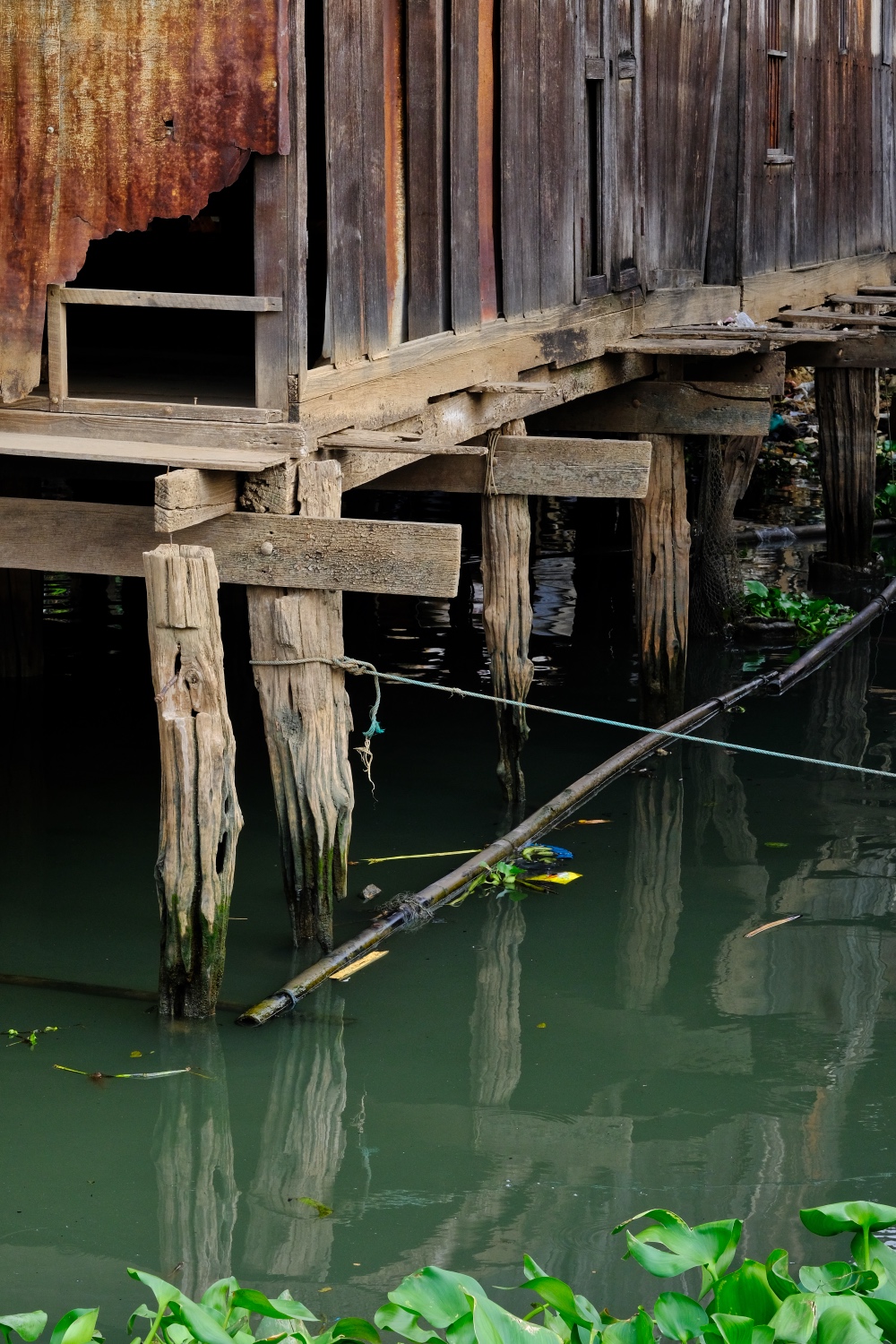 Our late afternoon walk brought us to the riverside . . . and this fantasticly weathered and decaying old wooden house . . .
Our late afternoon walk brought us to the riverside . . . and this fantasticly weathered and decaying old wooden house . . .
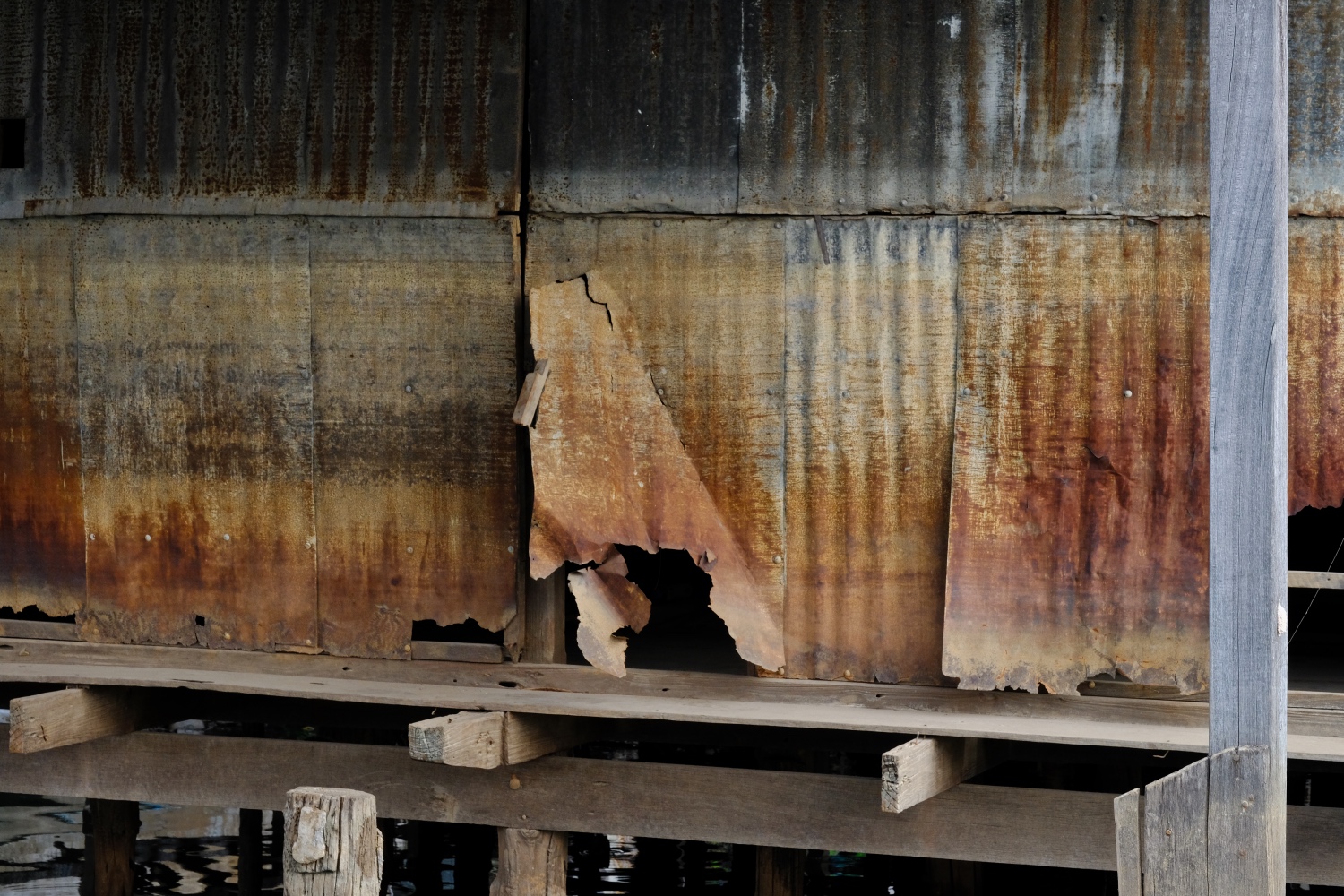 The high water lines of recent river flooding clearly shown on the old house.
The high water lines of recent river flooding clearly shown on the old house.
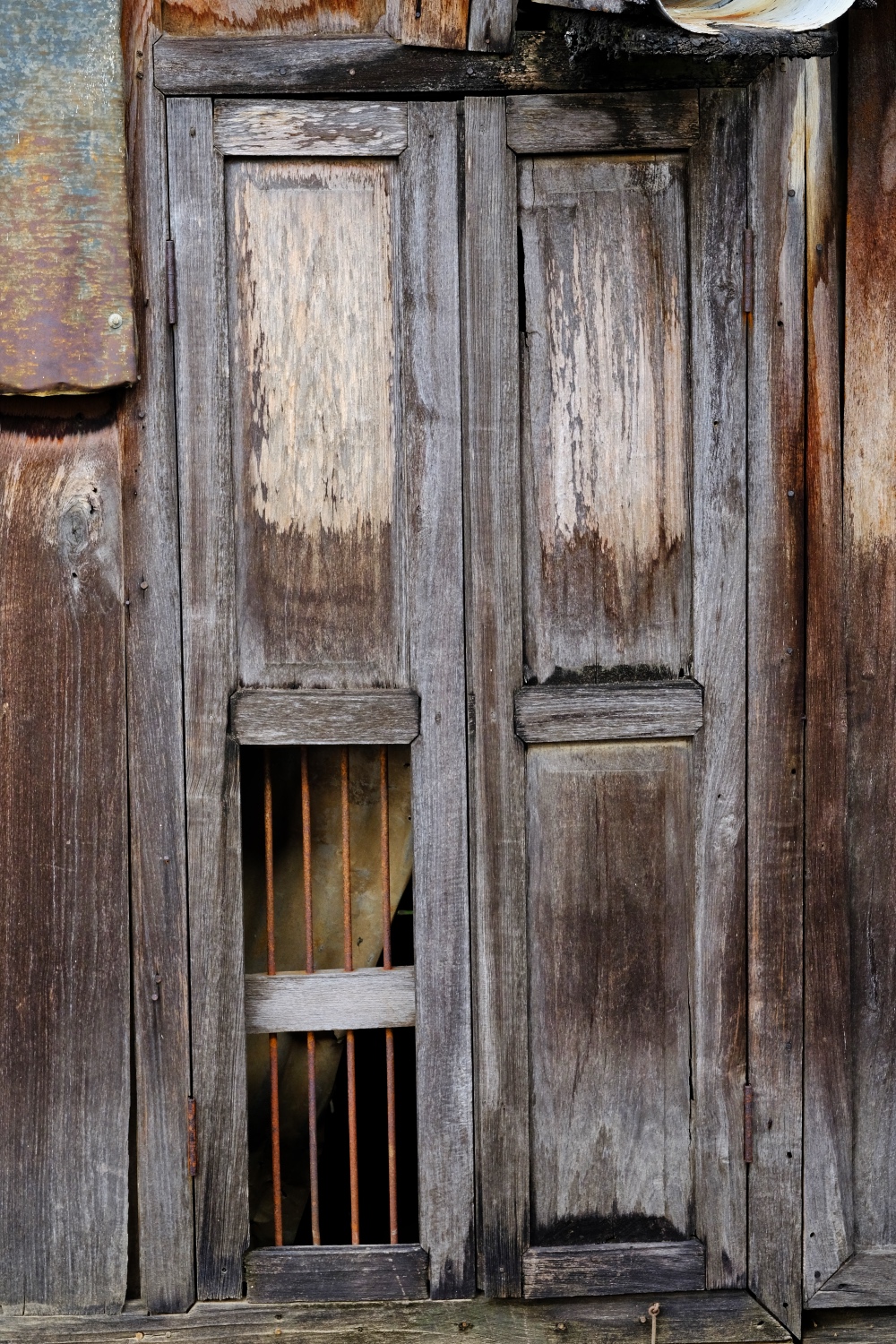 I love the textures of deteriorating wood on old doors and windows. This particular riverside house had absolutely scrumptious surfaces.
I love the textures of deteriorating wood on old doors and windows. This particular riverside house had absolutely scrumptious surfaces.
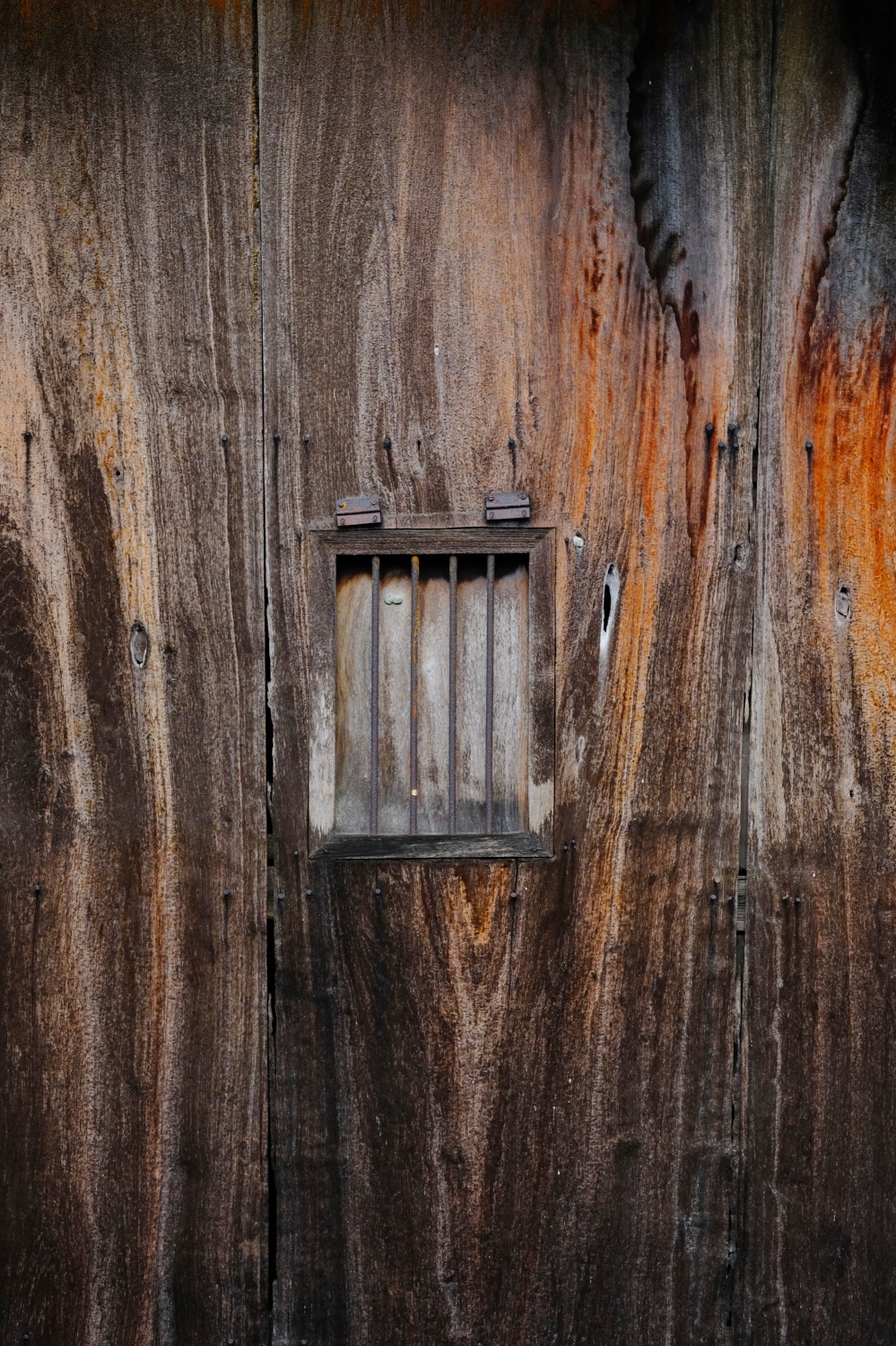 Yes, these are the actual colors . . . fantastic.
Yes, these are the actual colors . . . fantastic.
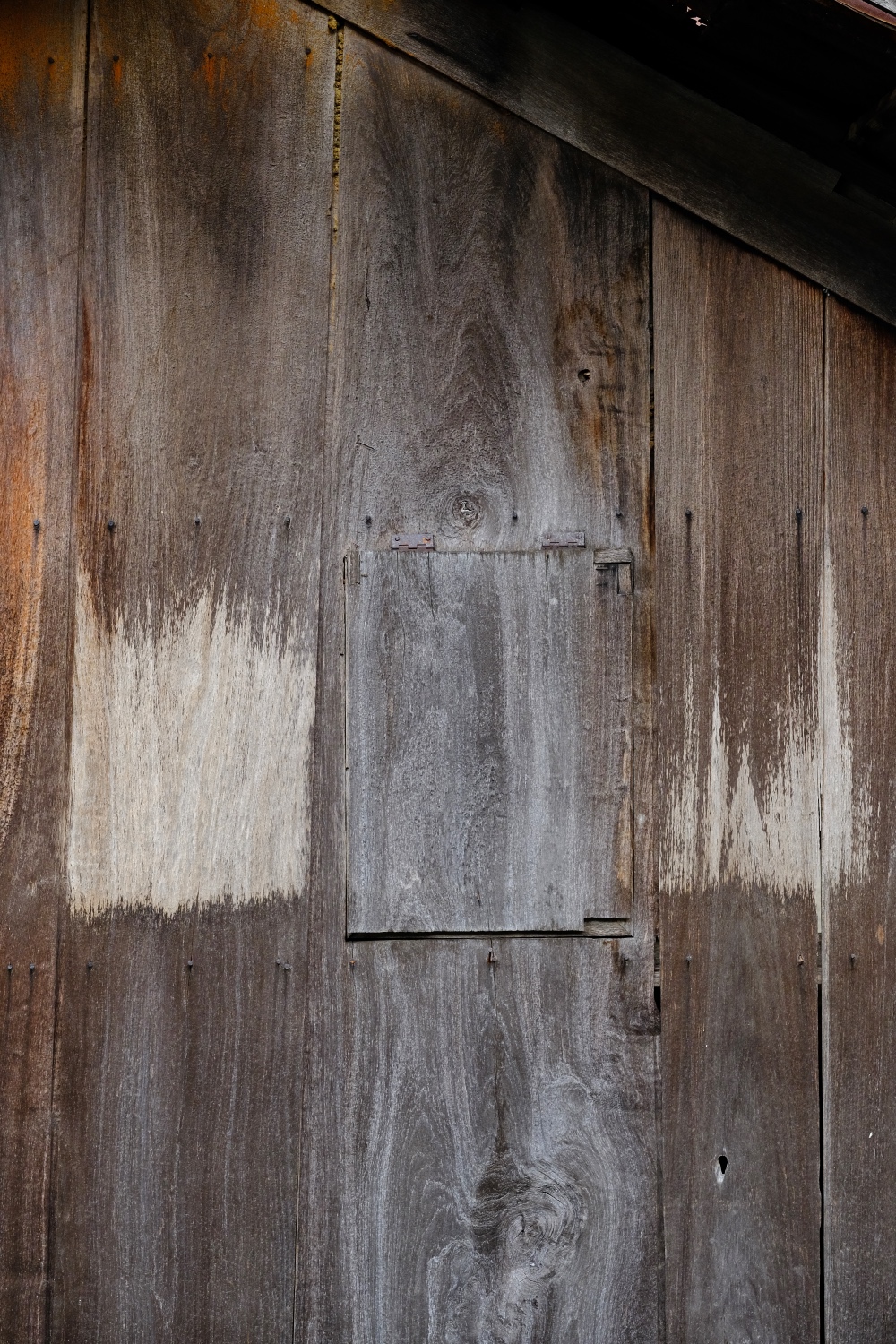 I think of the surface variegation on these surfaces as their histories.
I think of the surface variegation on these surfaces as their histories.
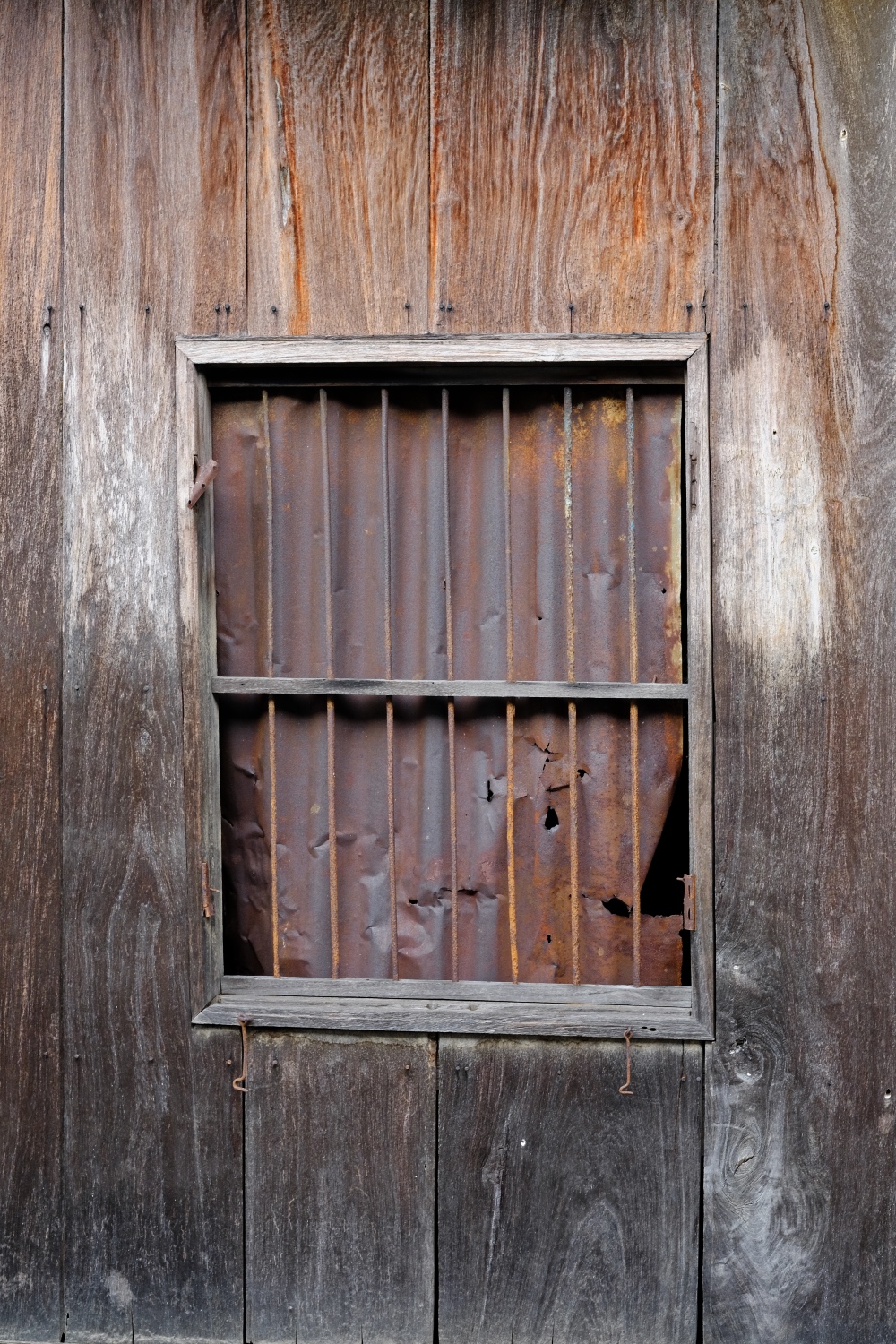 This window has everything I want in a photo: dilapidation, corrugation, and decay.
This window has everything I want in a photo: dilapidation, corrugation, and decay.
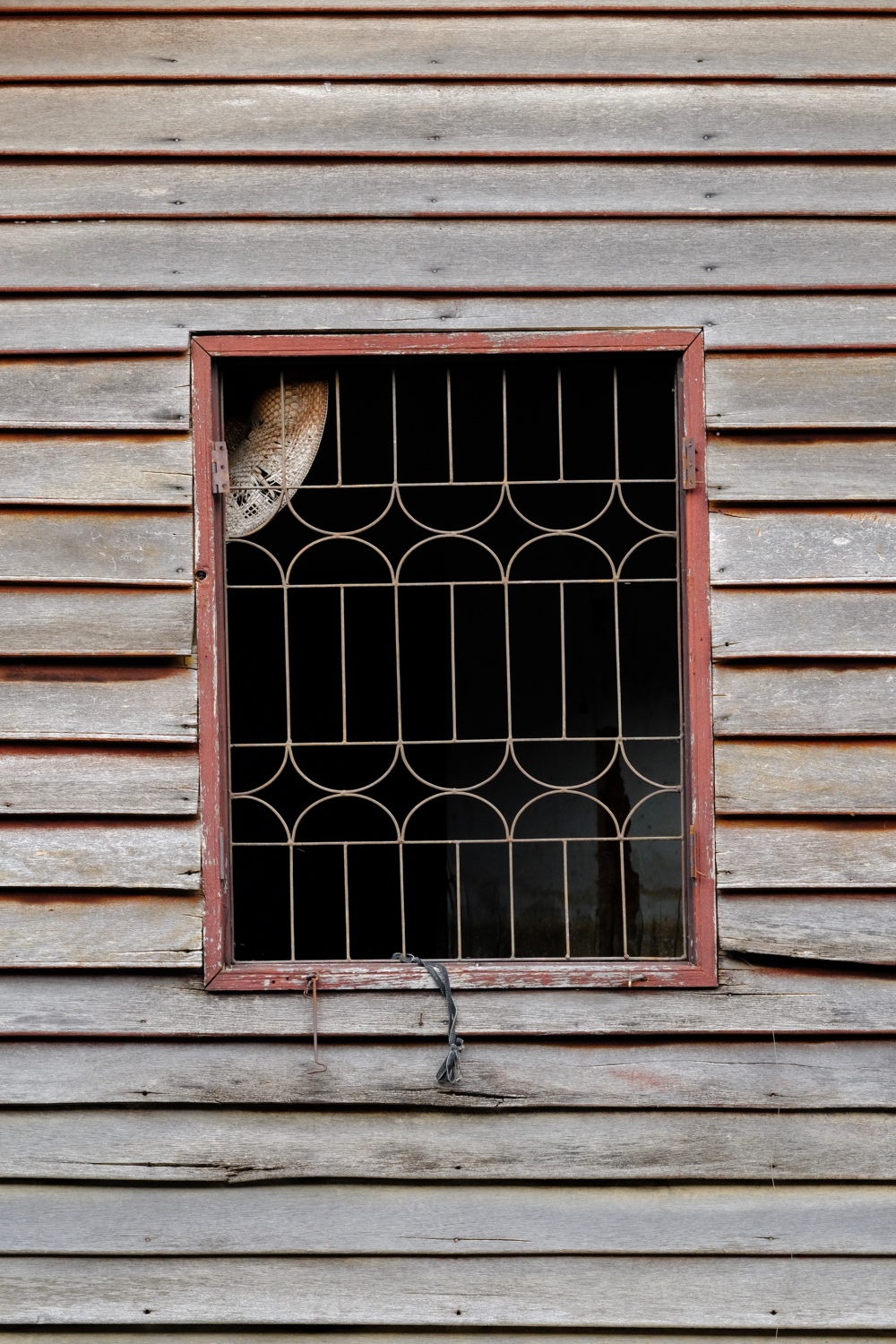 This window and those above are all on the same old wooden house sitting on pilings in the Chao Phraya River.
This window and those above are all on the same old wooden house sitting on pilings in the Chao Phraya River.
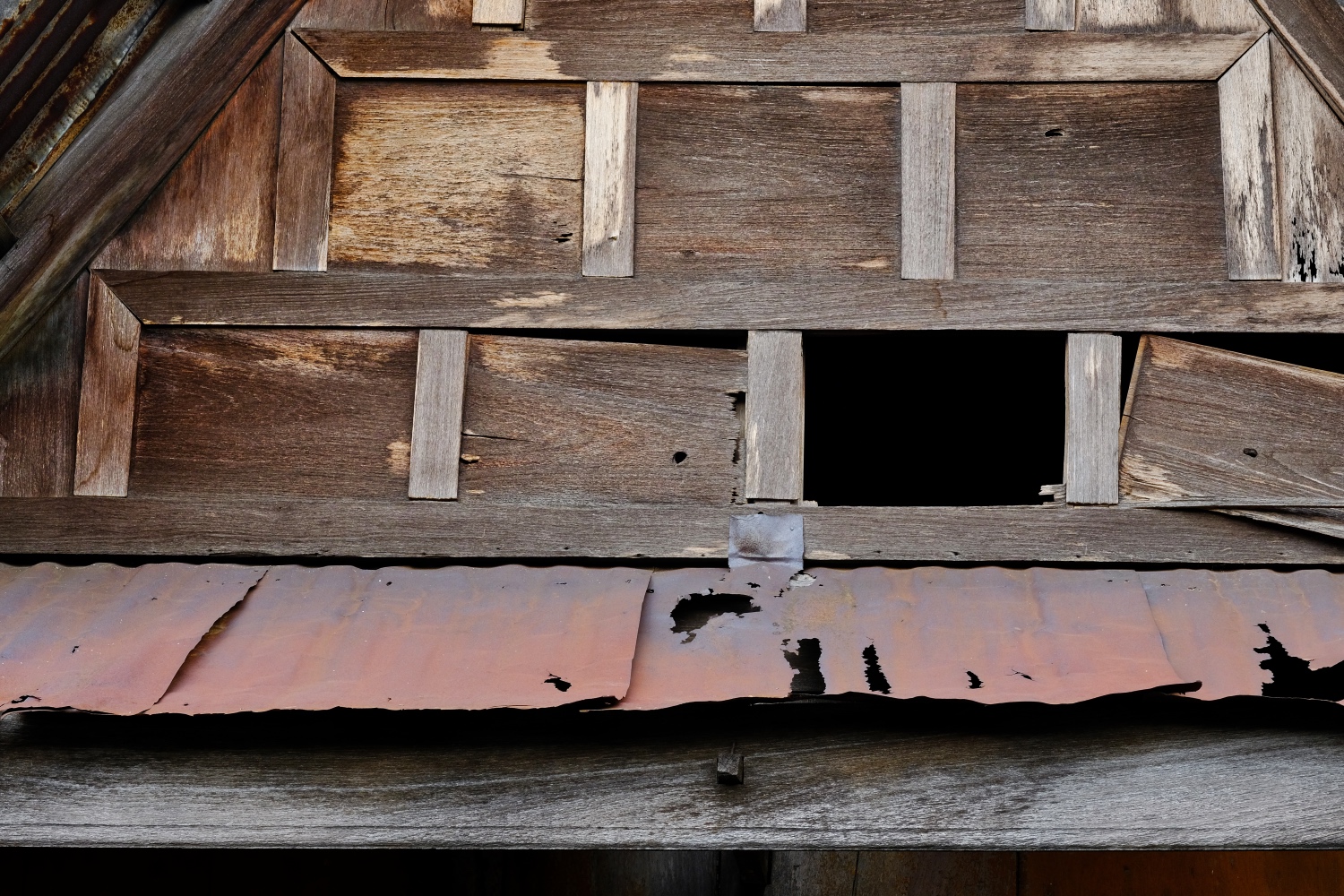 The Thai-style gabled roof . . . showing the age of this magnificent structure.
The Thai-style gabled roof . . . showing the age of this magnificent structure.
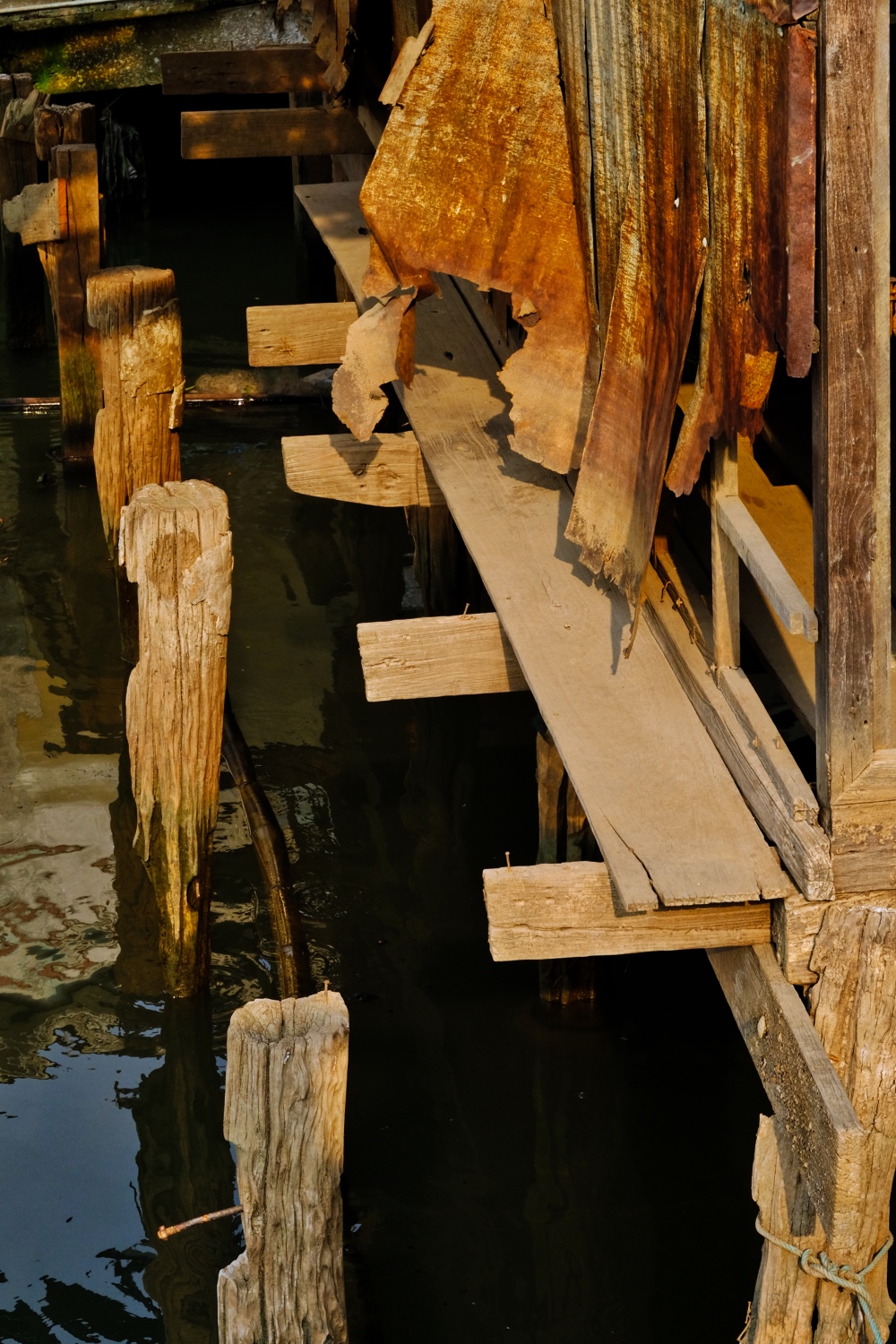 Just as we were leaving this beautiful place, the sun came out and shown magic afternoon light on the rotting piers of the old house.
Just as we were leaving this beautiful place, the sun came out and shown magic afternoon light on the rotting piers of the old house.
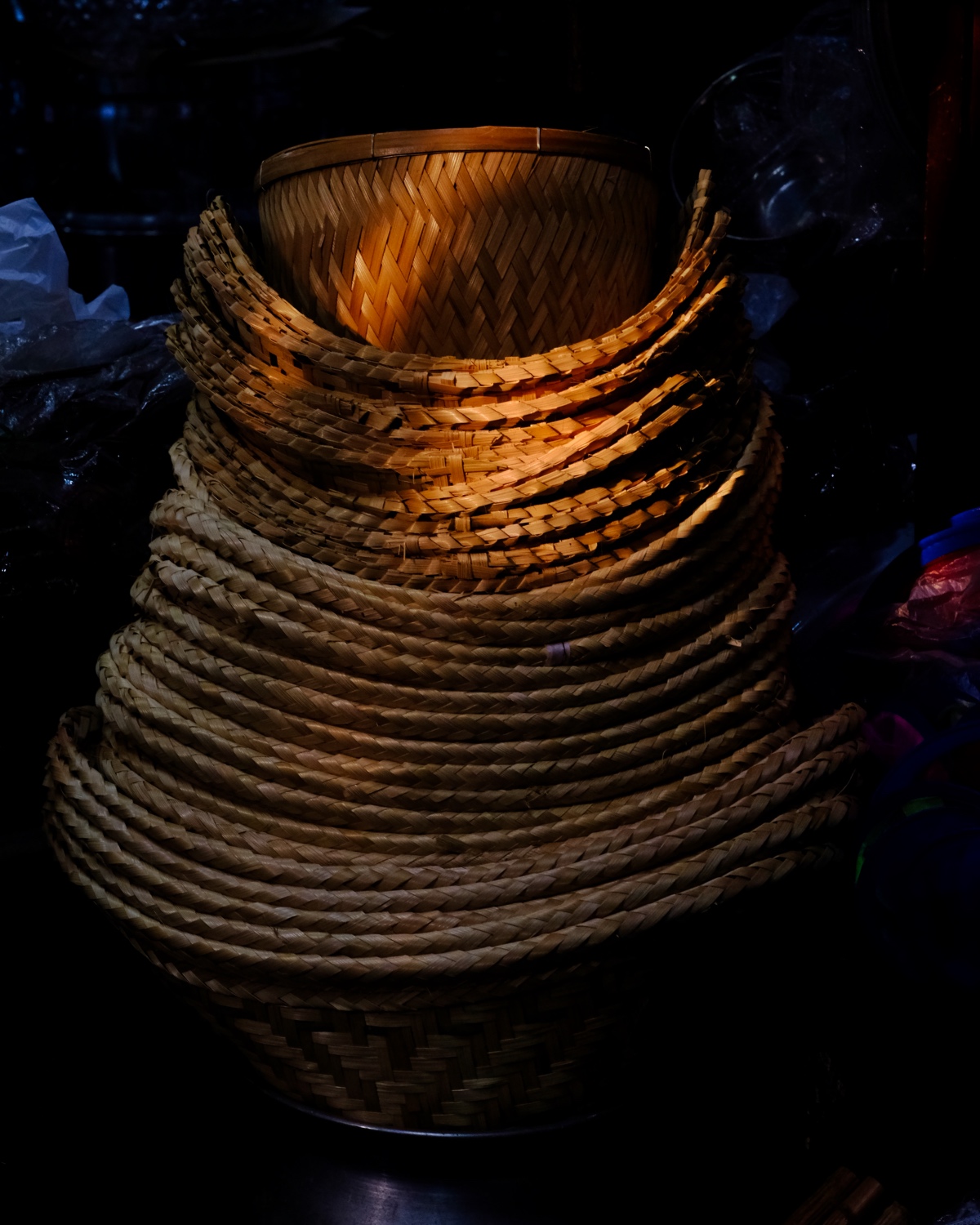
Lopburi Ramble: In Search of Sunflower Fields
 Monday, January 29, 2018 at 5:55PM
Monday, January 29, 2018 at 5:55PM 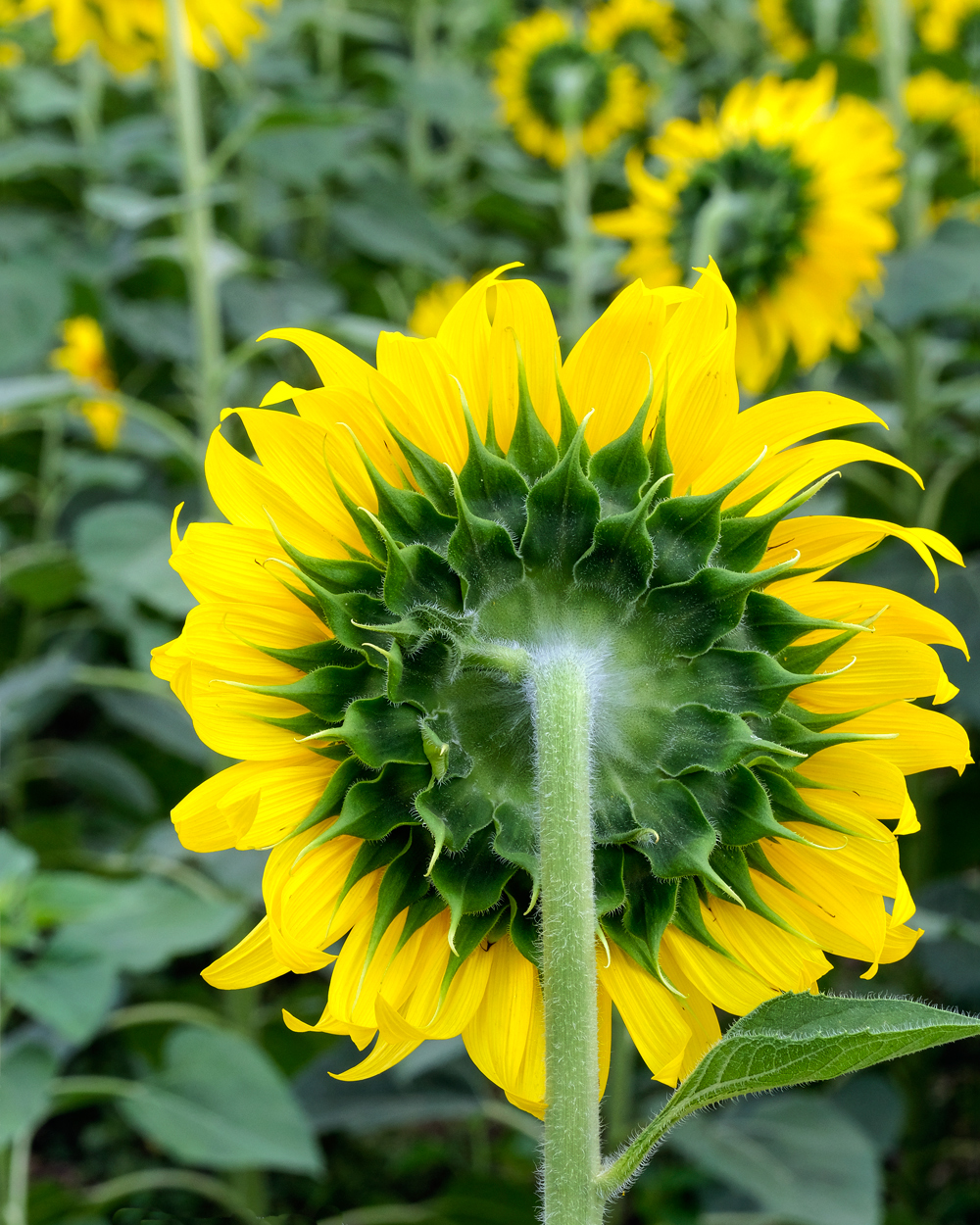 My friend John Stiles and I took a day off work on a week day and drove north out of Bangkok early in the morning in search of the famous Lopburi sunflower fields . . . they were suppose to be coming into bloom this time of year (November 2017).
My friend John Stiles and I took a day off work on a week day and drove north out of Bangkok early in the morning in search of the famous Lopburi sunflower fields . . . they were suppose to be coming into bloom this time of year (November 2017).
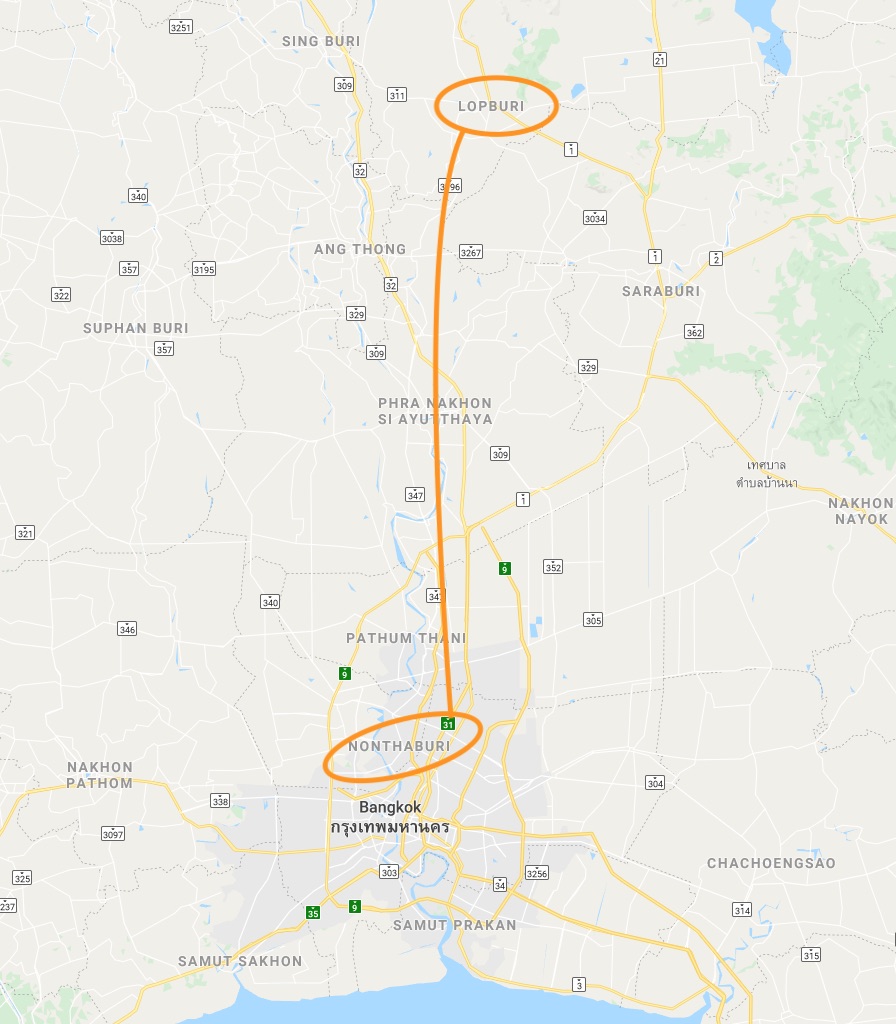 Just an easy 1 1/2 hour drive up a divided highway to Lopburi.
Just an easy 1 1/2 hour drive up a divided highway to Lopburi.
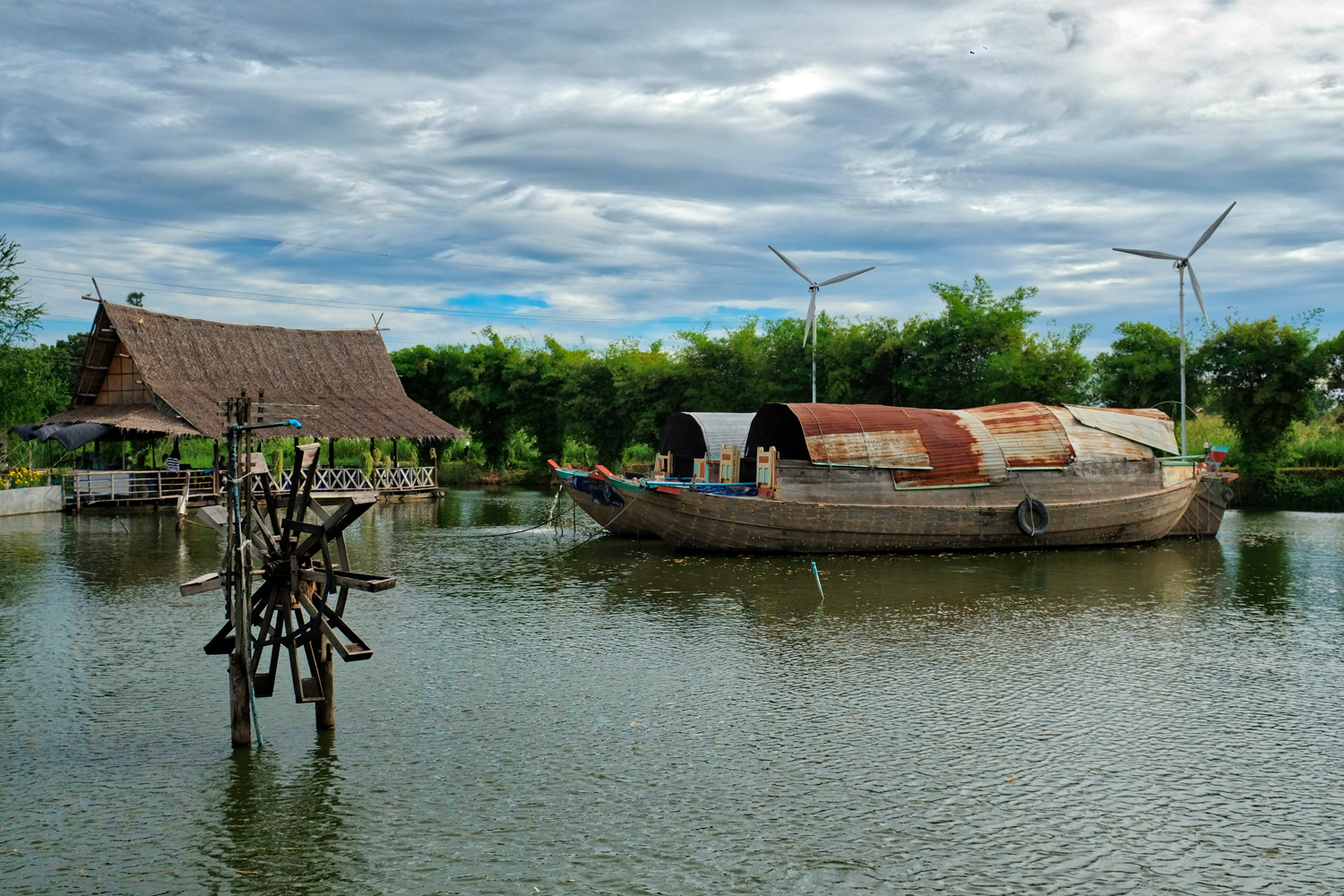 We began the day before first light, so when we came across this roadside restaurant on a pond, so we stopped.
We began the day before first light, so when we came across this roadside restaurant on a pond, so we stopped.
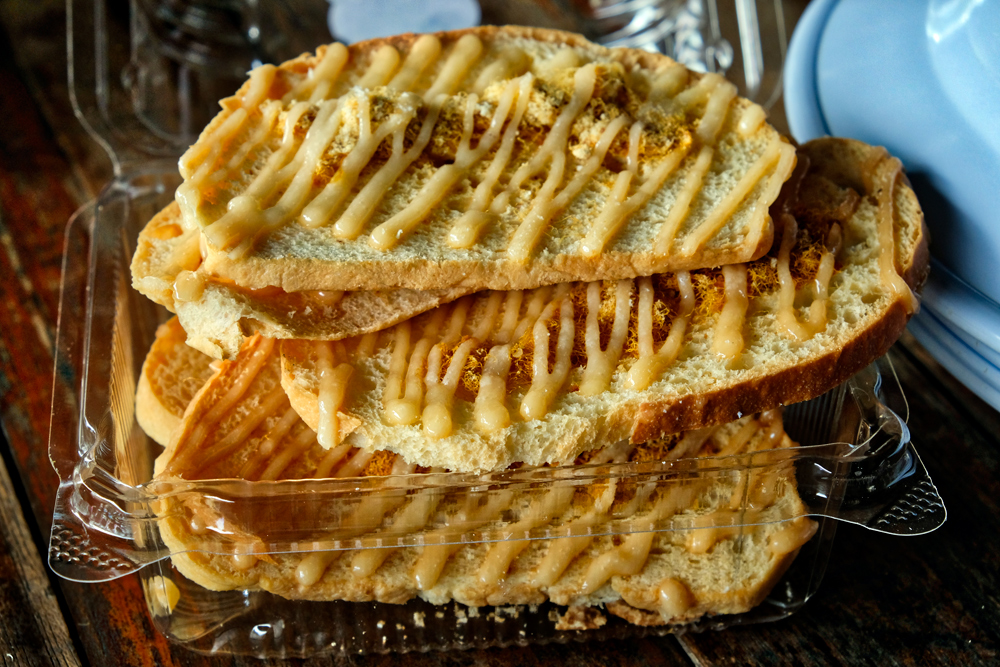 We enjoyed some good coffee (they had a grand Italian coffee-making machine!) and dry honey toast with pork floss.
We enjoyed some good coffee (they had a grand Italian coffee-making machine!) and dry honey toast with pork floss.
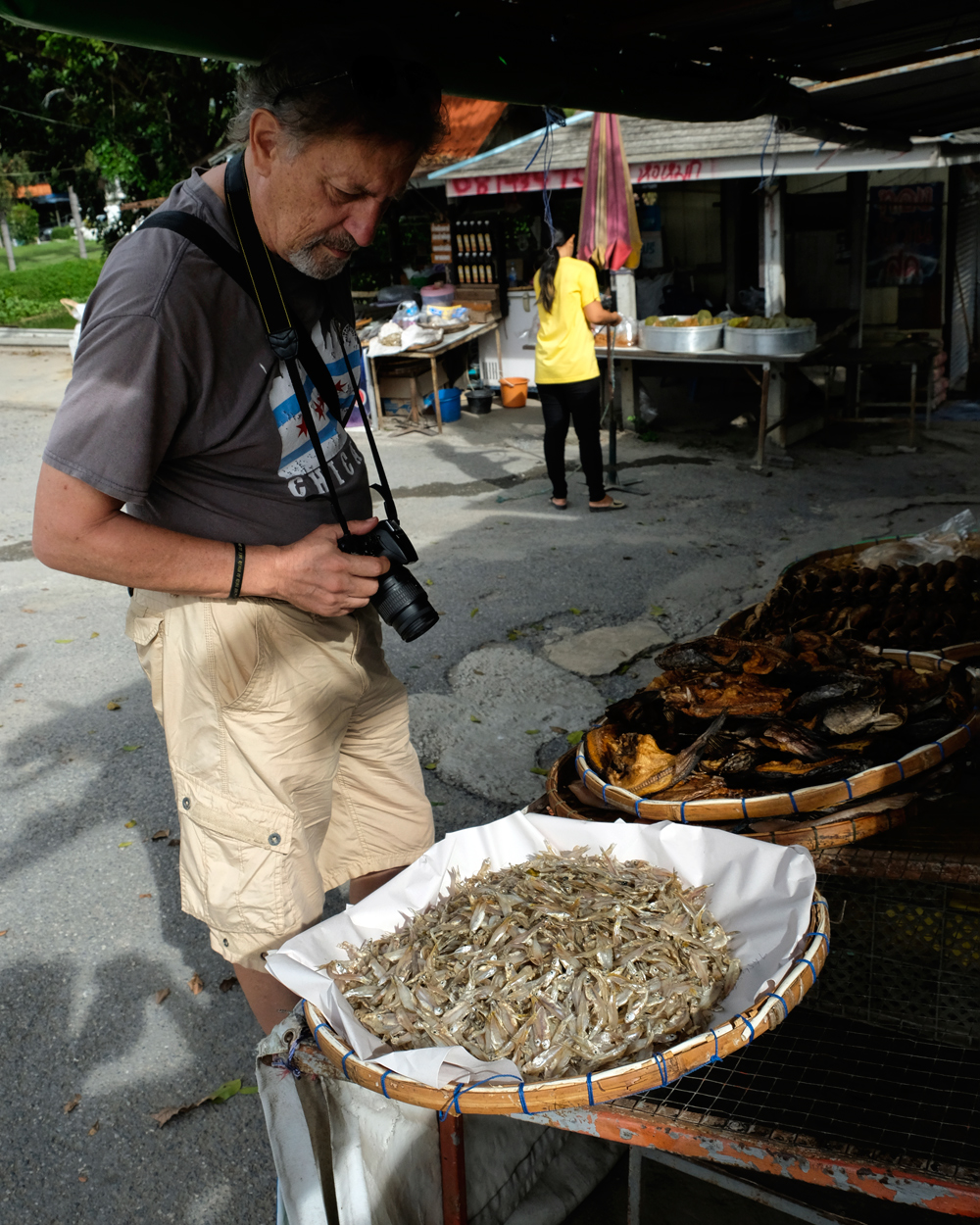 There was a dried fish stand setting up outside the restaurant when we arrived. Very photogenic. We would see a lot of dried fish throughout the day.
There was a dried fish stand setting up outside the restaurant when we arrived. Very photogenic. We would see a lot of dried fish throughout the day.
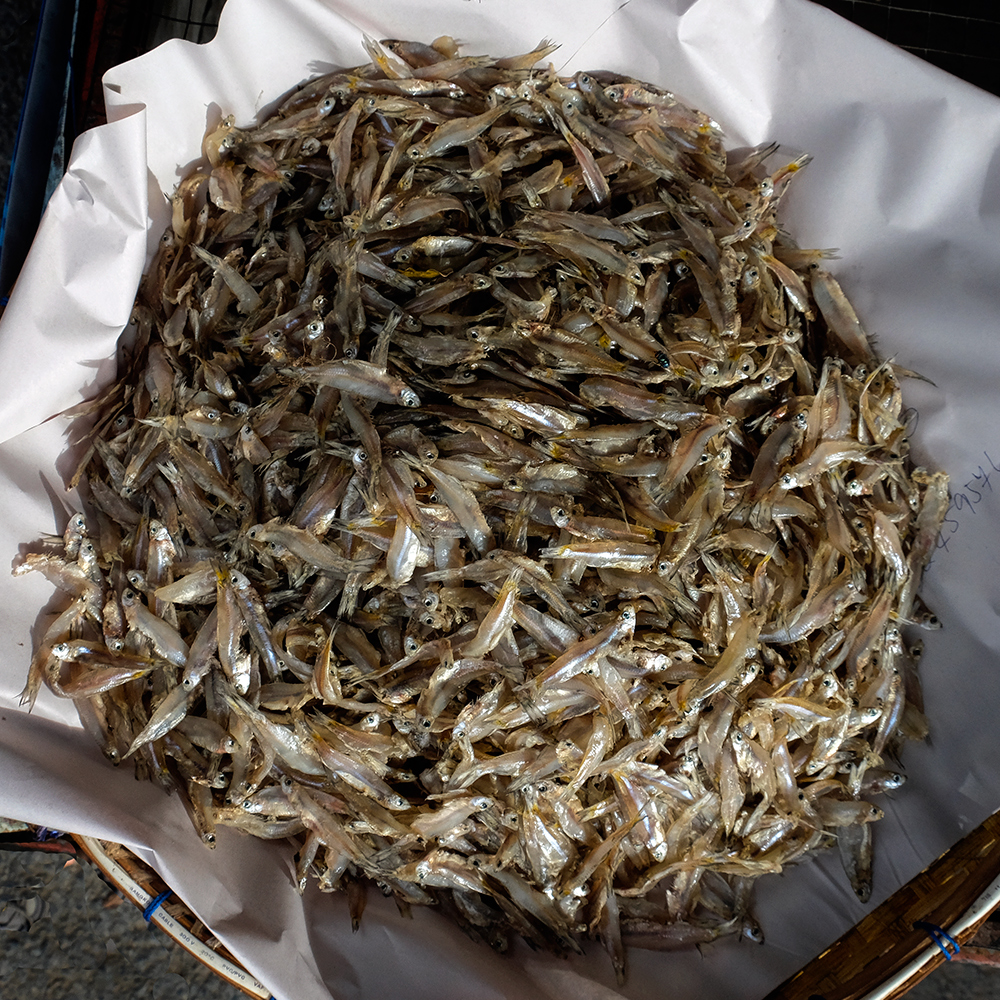 Small dried 'sprats' . . . my favorite.
Small dried 'sprats' . . . my favorite.
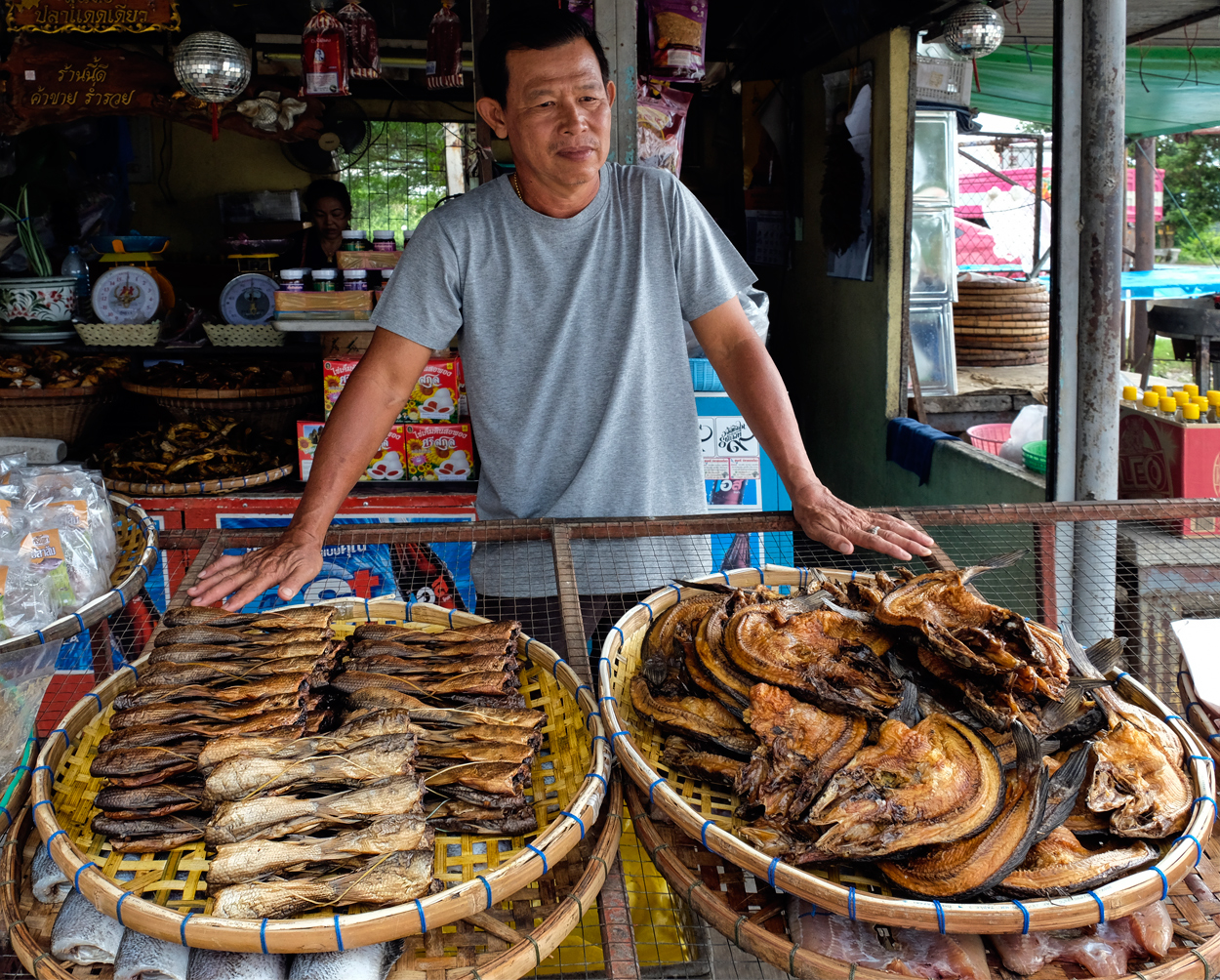 The fish hawker and his beautifully arranged fish.
The fish hawker and his beautifully arranged fish.
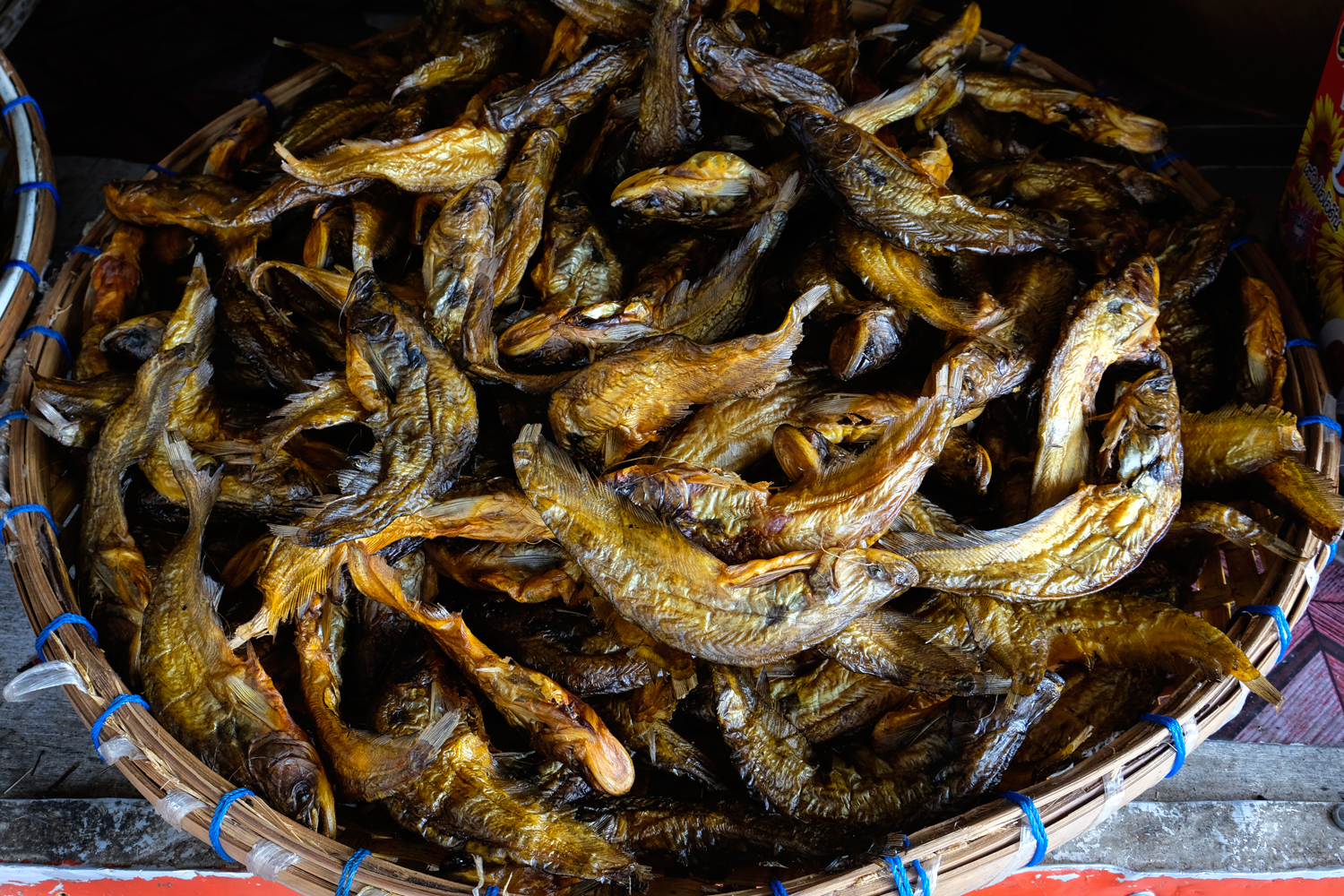 The colors and arrangement oft these dried fish were captivating.
The colors and arrangement oft these dried fish were captivating.
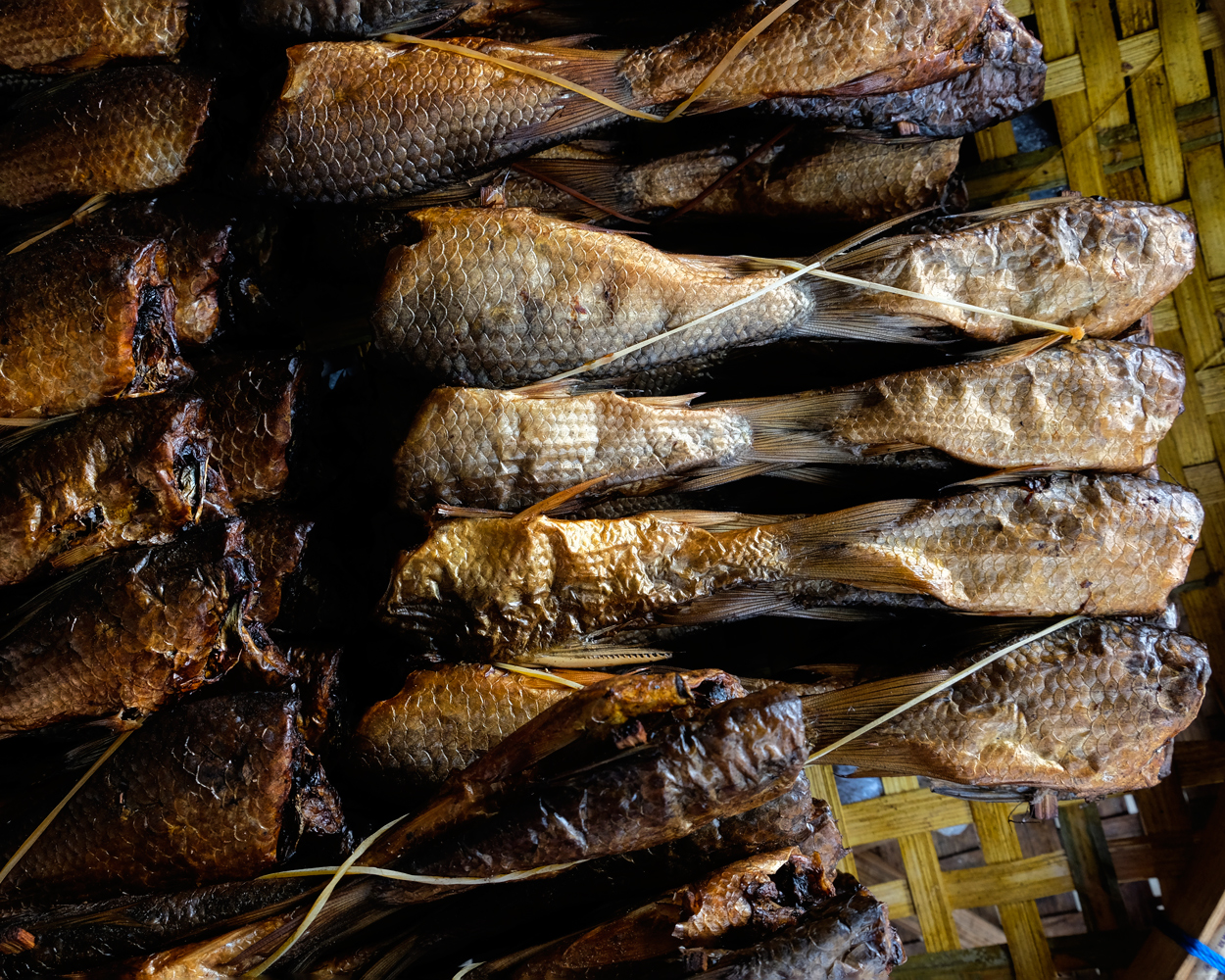 Good in soups and salads.
Good in soups and salads.
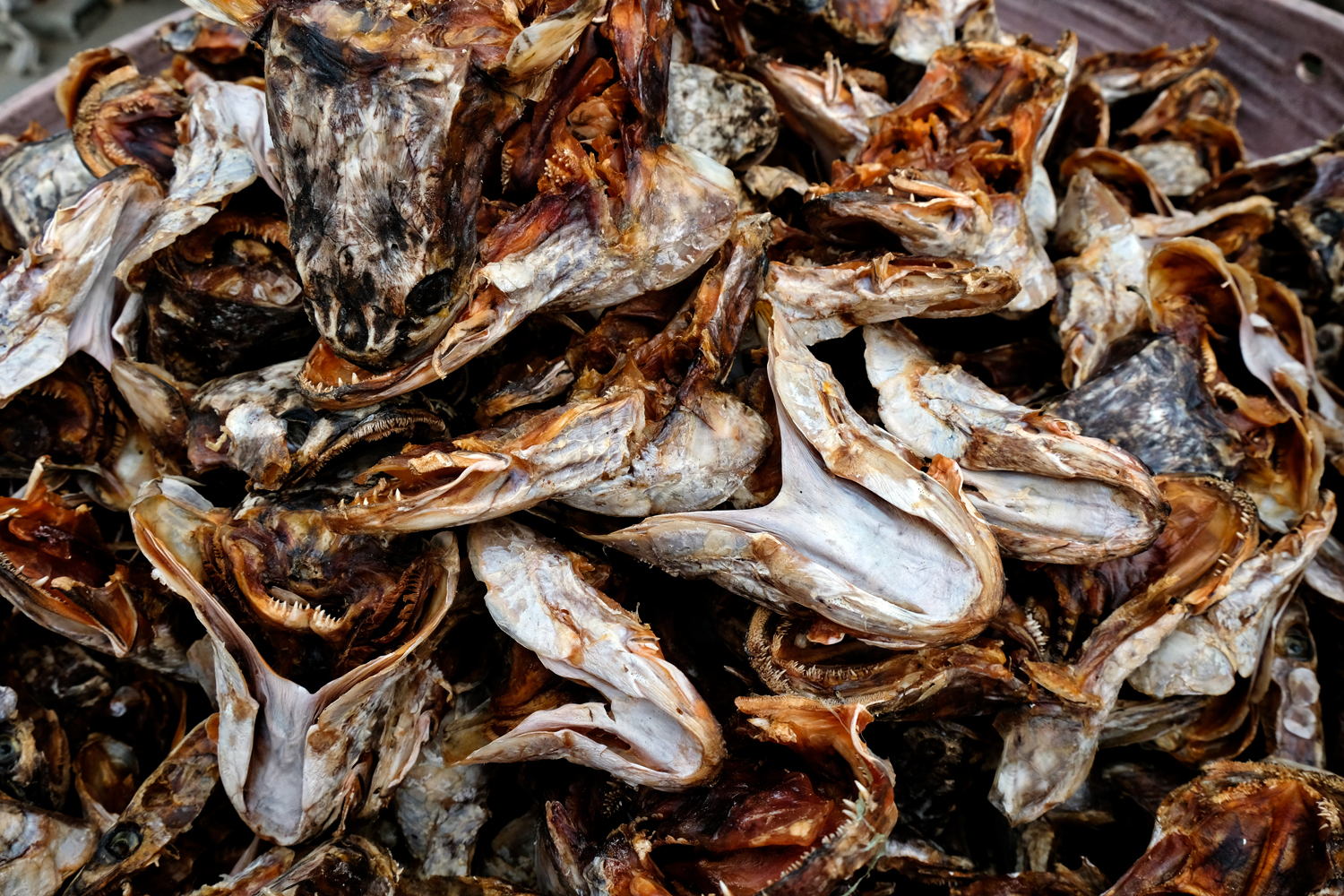 A heap of dried fish heads . . . for making fish head soup!
A heap of dried fish heads . . . for making fish head soup!
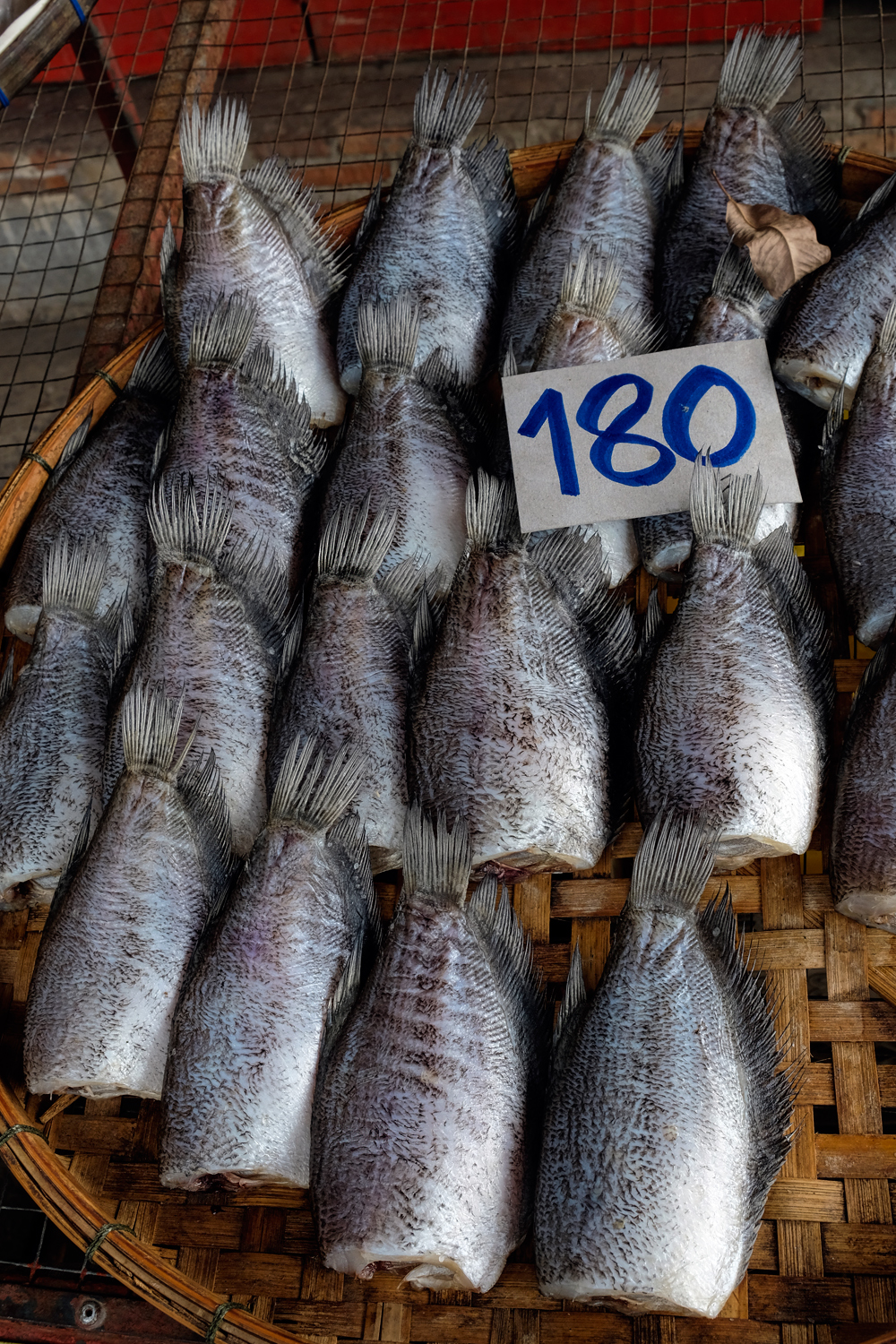 There were also some fresh fish for sale as well.
There were also some fresh fish for sale as well.
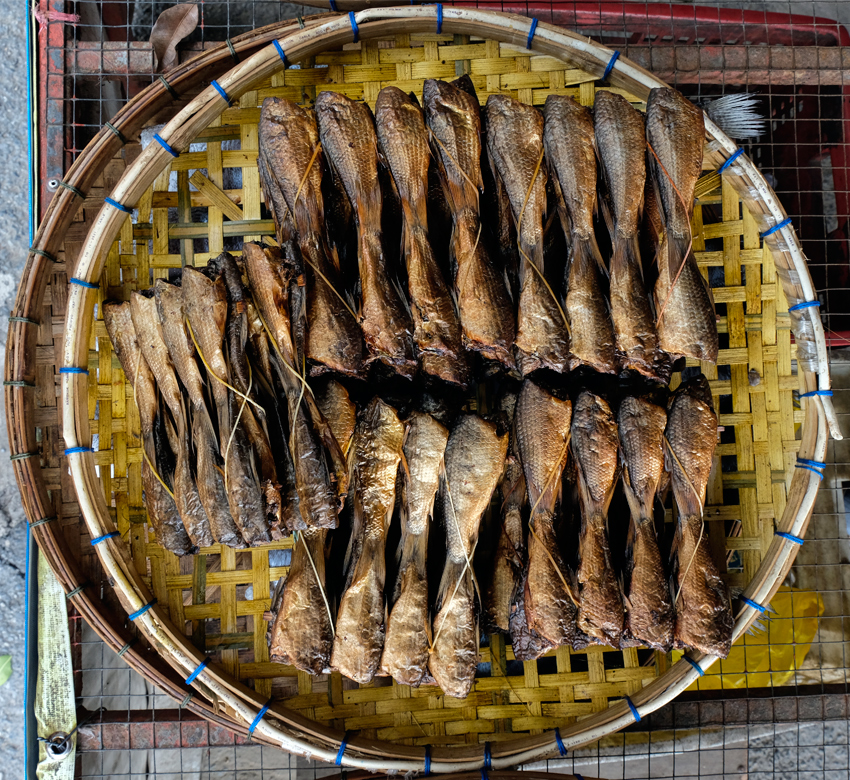 Drying fish on the round baskets.
Drying fish on the round baskets.
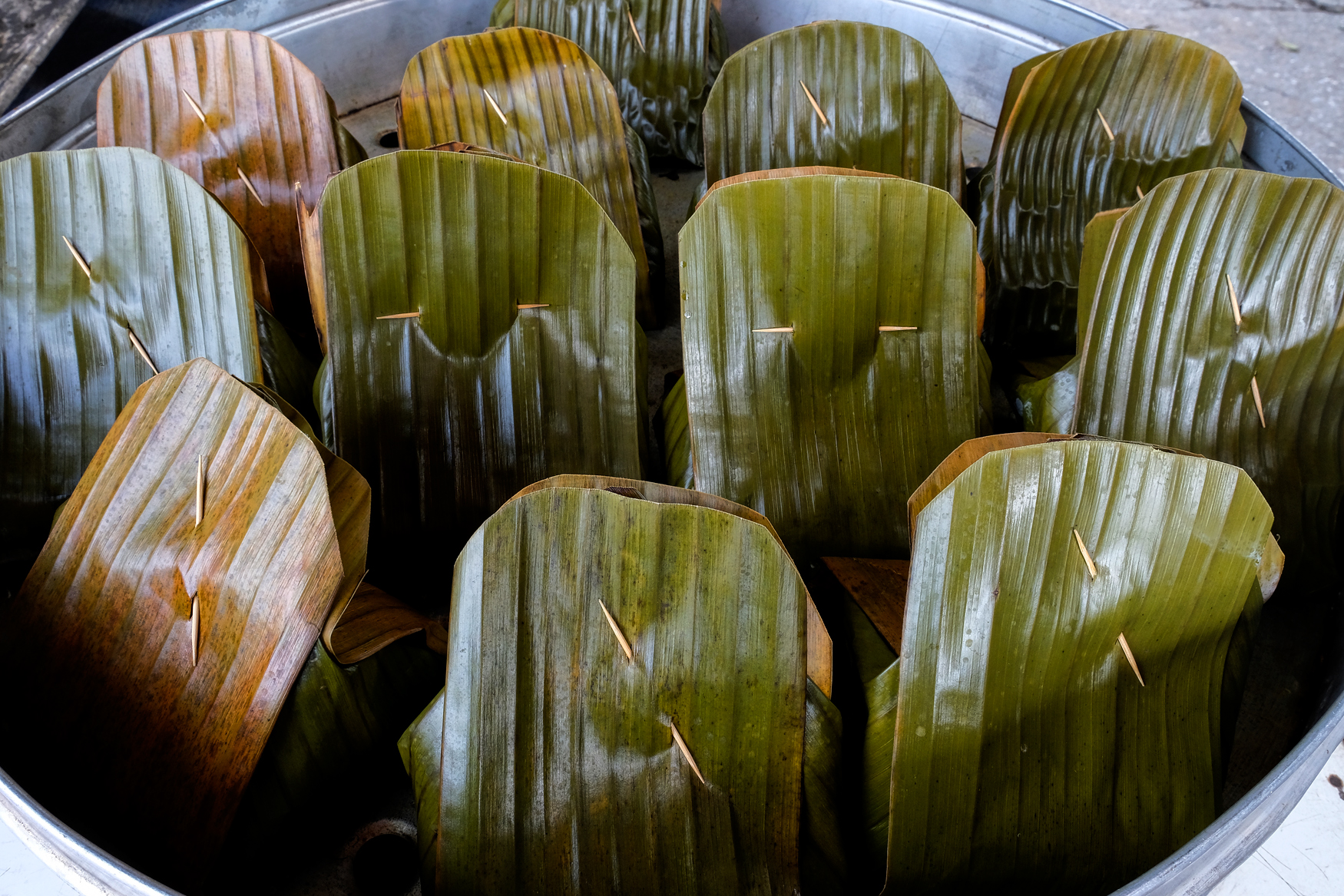 These are rice treats with either fish, beans, or sweets wrapped in leaves. We didn't buy any fish or rice treats . . . and headed up the rural road toward Lopburi.
These are rice treats with either fish, beans, or sweets wrapped in leaves. We didn't buy any fish or rice treats . . . and headed up the rural road toward Lopburi.
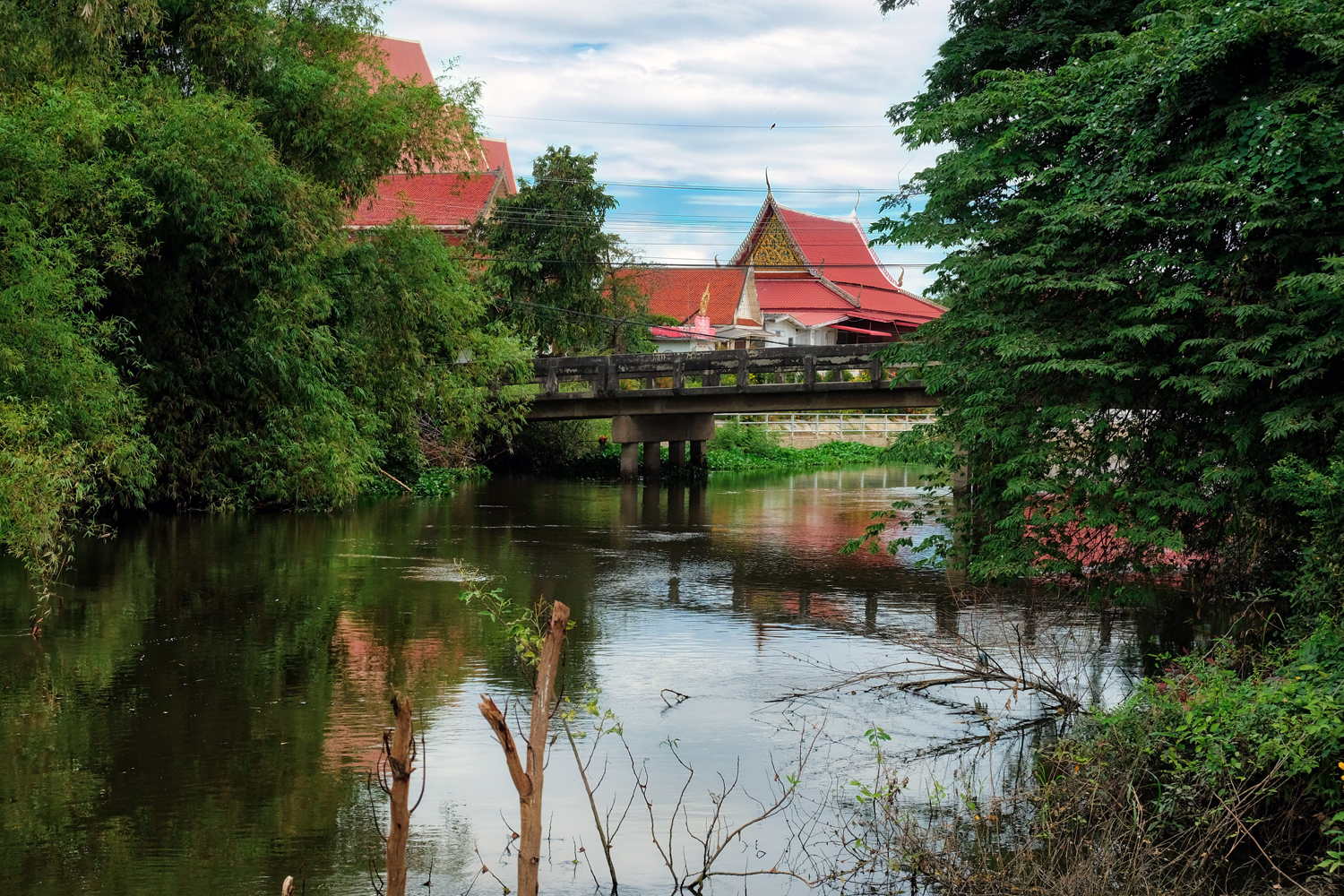 We left Bangkok (Minburi) around 6:30 am, loaded a general Lopburi address into the GPS, and headed up the big highway for the hour and a half drive. When we got a few miles outside of Lopburi, we left the highway for the small roads . . . and found several wonderful small Buddhist Wats.
We left Bangkok (Minburi) around 6:30 am, loaded a general Lopburi address into the GPS, and headed up the big highway for the hour and a half drive. When we got a few miles outside of Lopburi, we left the highway for the small roads . . . and found several wonderful small Buddhist Wats.
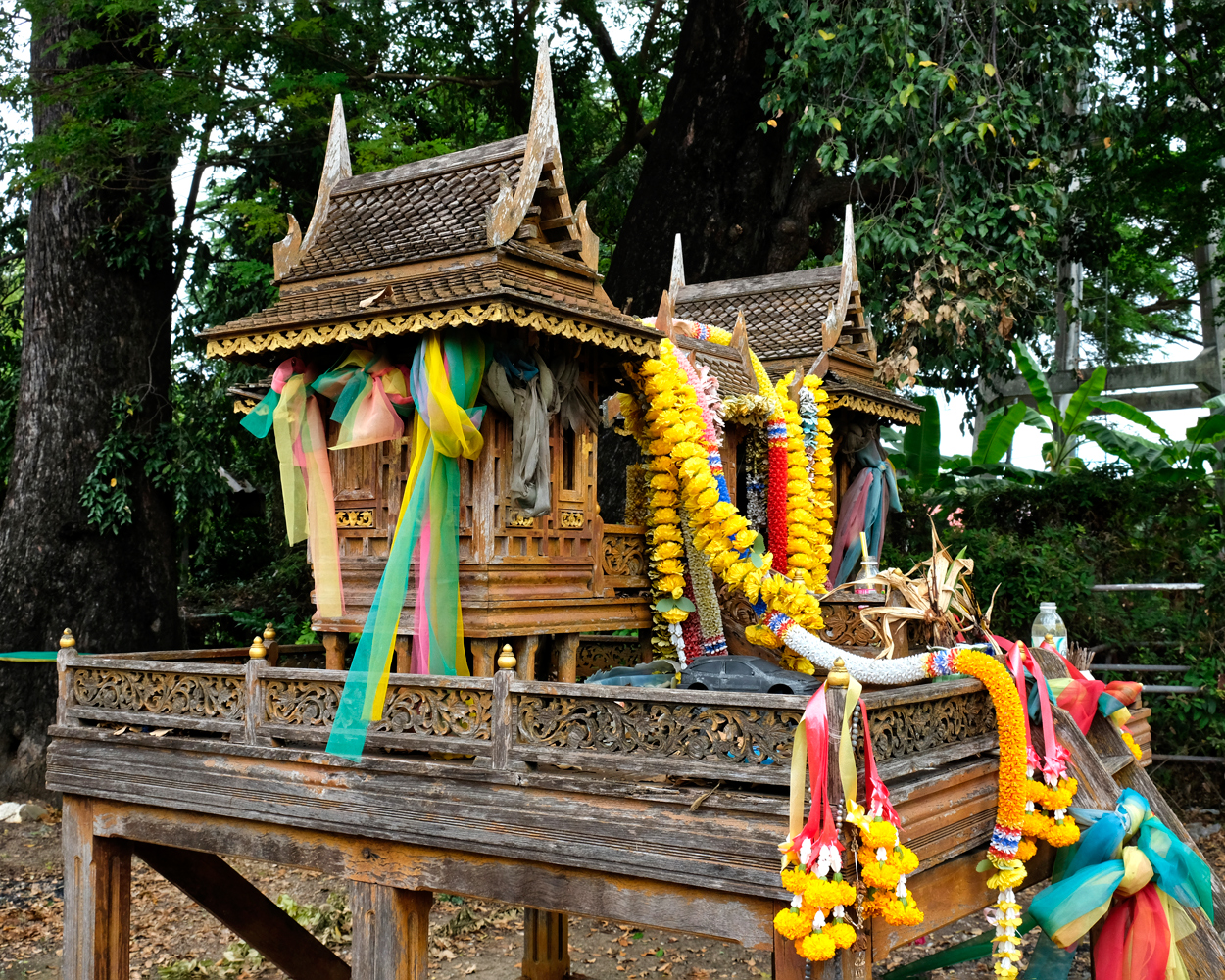 Right off a small road to Lopburi we found an ancient Wat . . . with a beautiful spirit house.
Right off a small road to Lopburi we found an ancient Wat . . . with a beautiful spirit house.
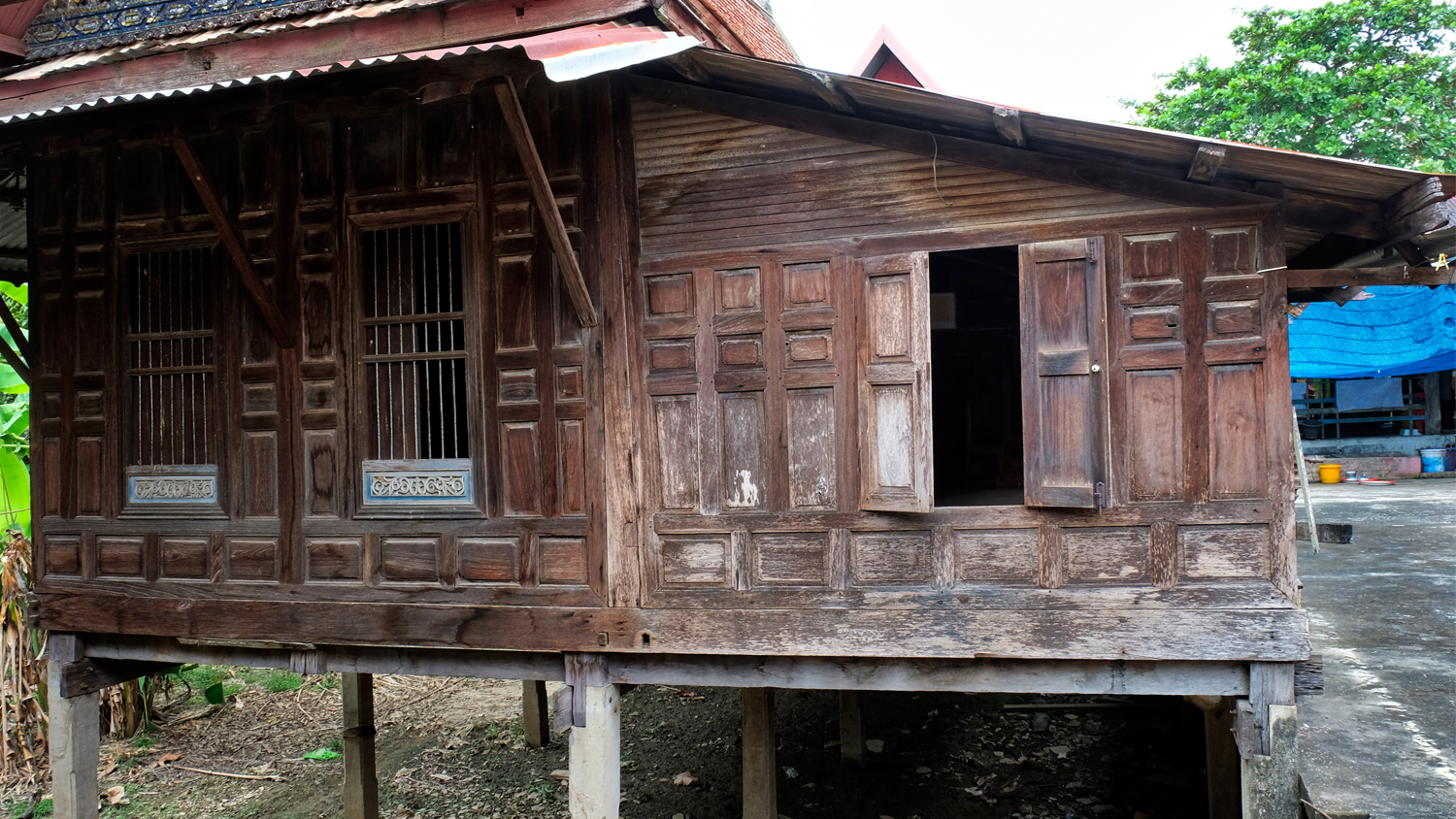 Monks quarters.
Monks quarters.
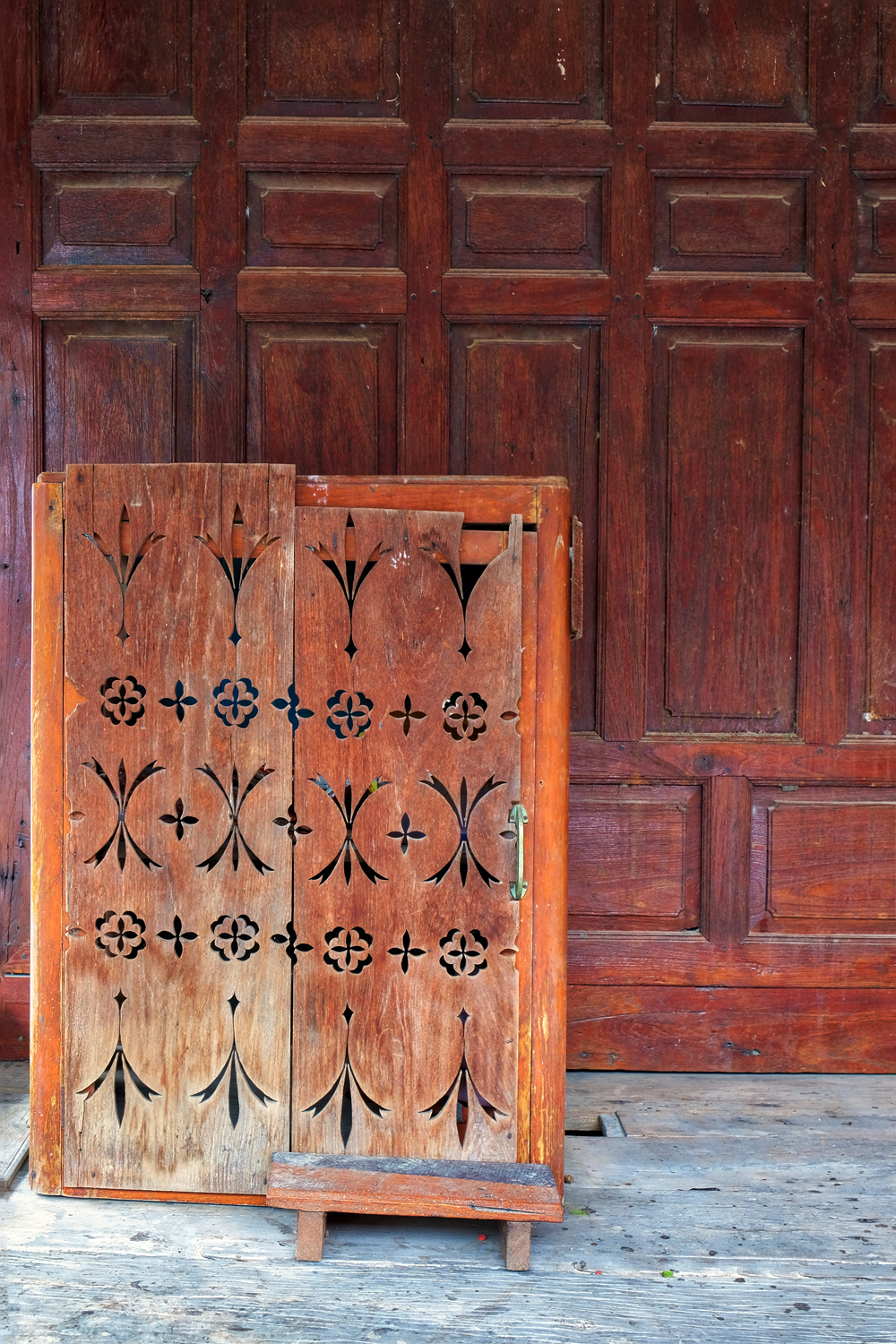 I enjoy walking around old Wats just to see what can be seen. Here, a still life portrait of items arranged in the space of a monks house porch. I love the makeshift, slapped together feel of the shoe box . . . no concern for aesthetic geometry . . . yet beauty was achieved.
I enjoy walking around old Wats just to see what can be seen. Here, a still life portrait of items arranged in the space of a monks house porch. I love the makeshift, slapped together feel of the shoe box . . . no concern for aesthetic geometry . . . yet beauty was achieved.
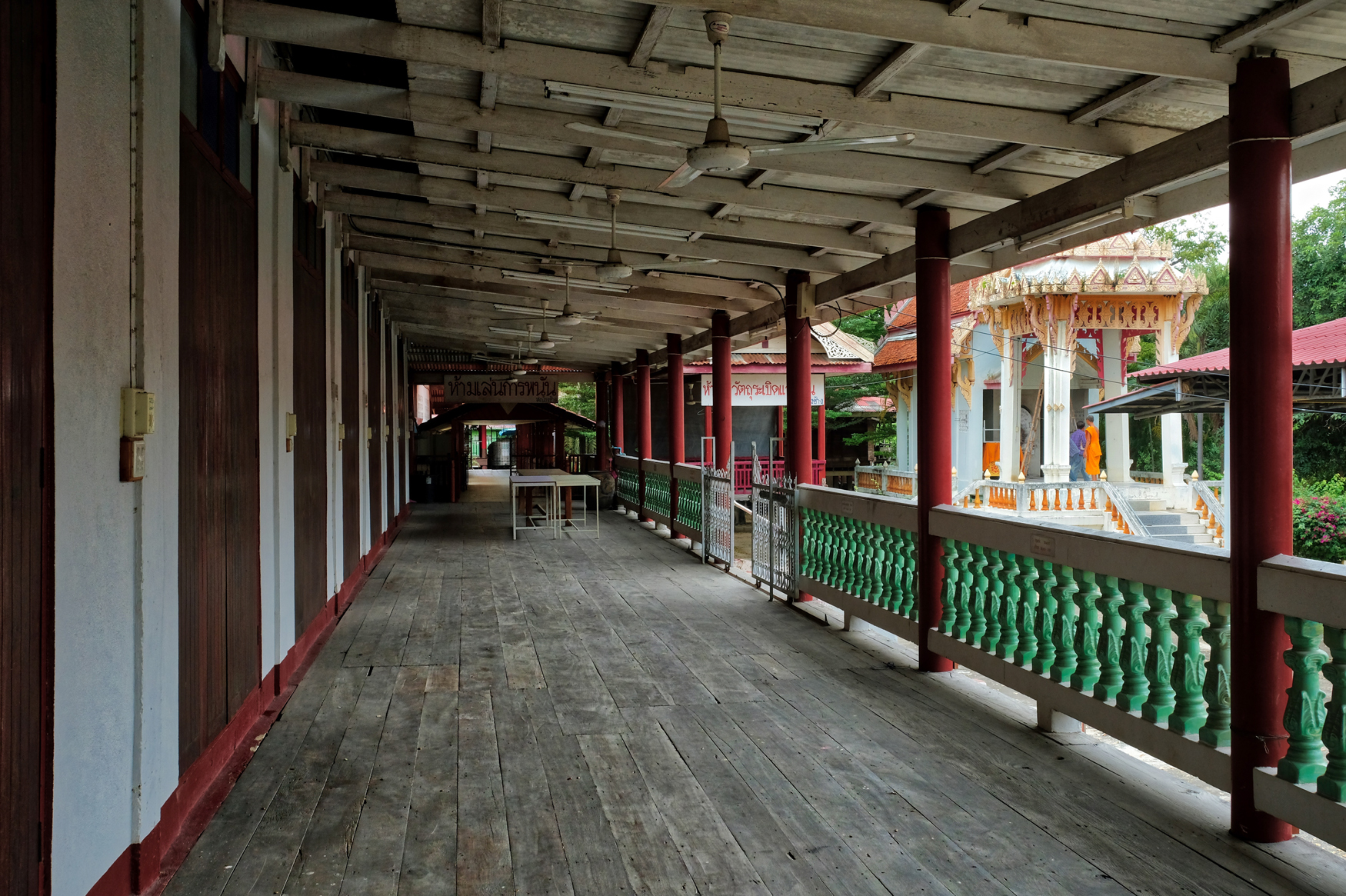 In front of a meditation hall. The crematorium can be seen at far right . . . the monks were consulting with contractors about repairs needed to the crematorium.
In front of a meditation hall. The crematorium can be seen at far right . . . the monks were consulting with contractors about repairs needed to the crematorium.
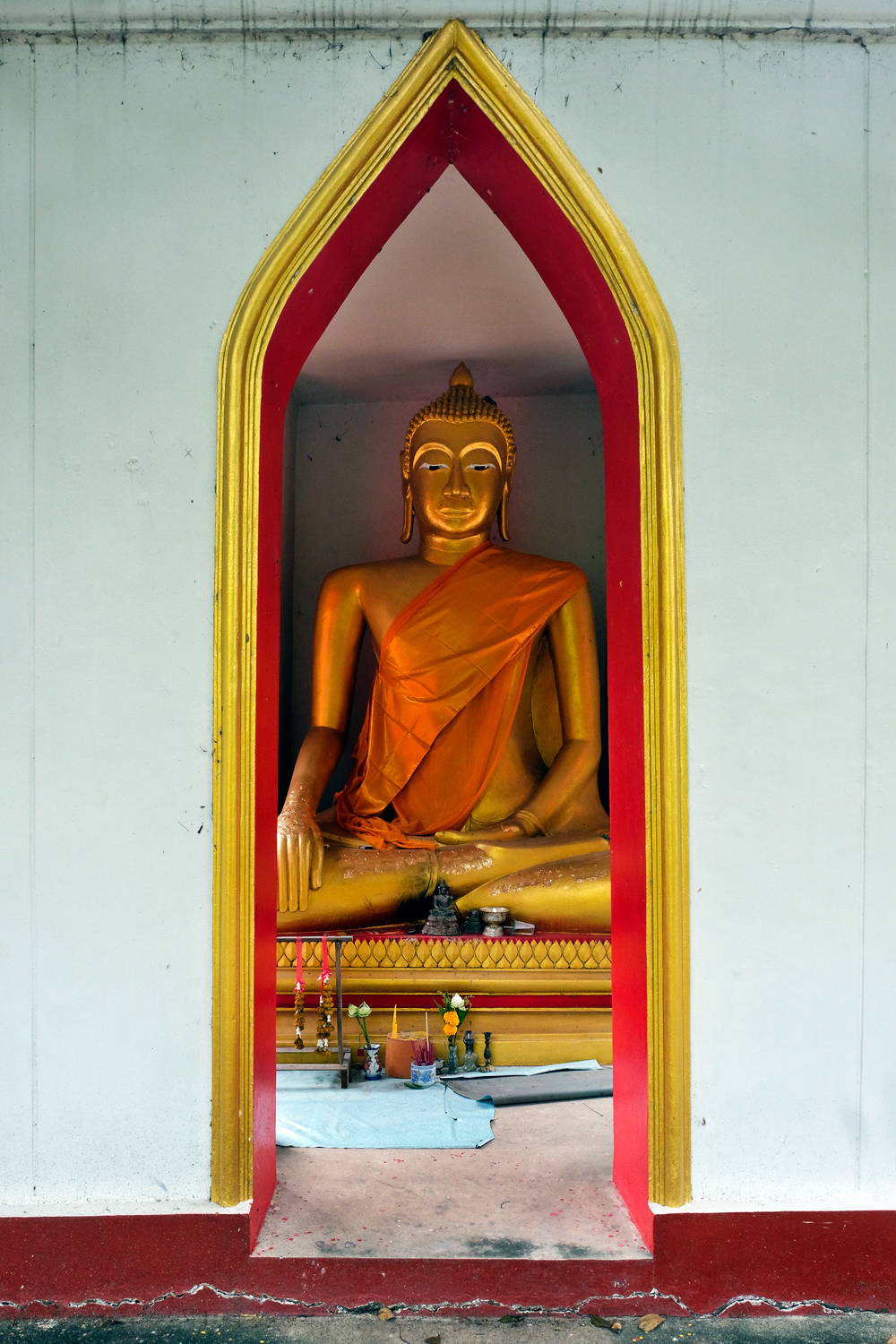 An alcove for a magnificent Buddha image.
An alcove for a magnificent Buddha image.
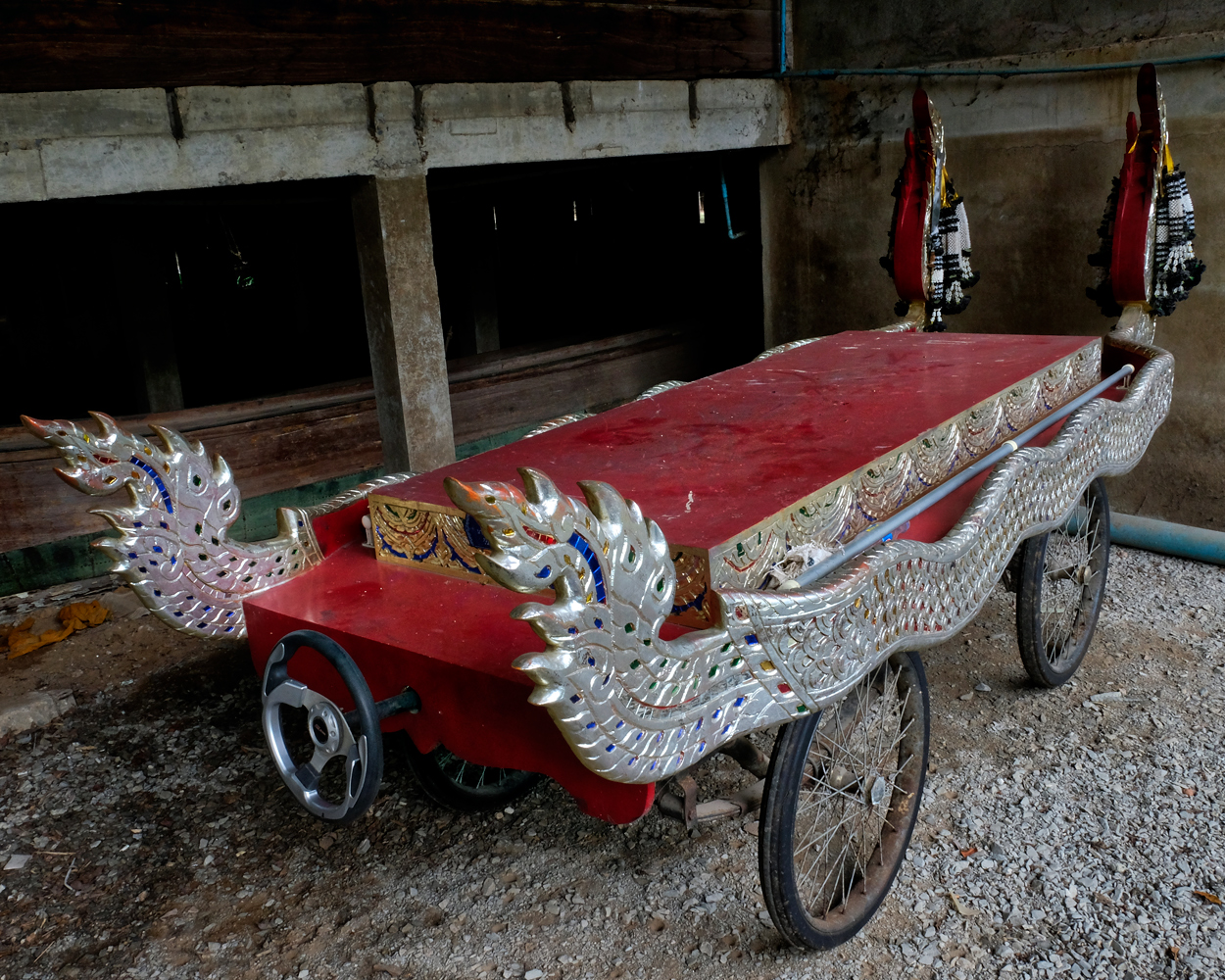 I found the steering wheel on this ceremonial cart interesting.
I found the steering wheel on this ceremonial cart interesting.
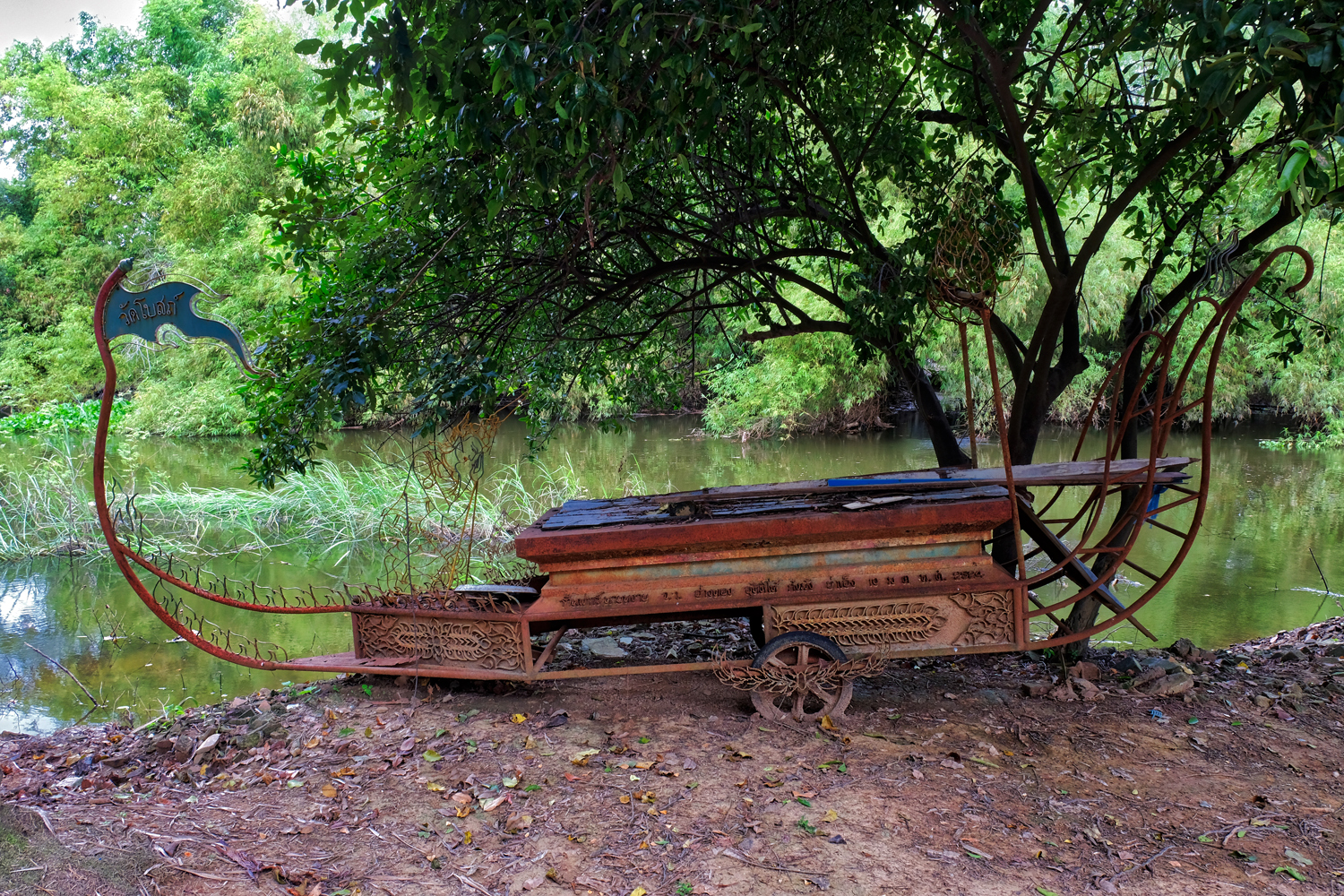 I love old unattended things. This ceremonial cart sitting beside a klong was a thing of beauty (to me).
I love old unattended things. This ceremonial cart sitting beside a klong was a thing of beauty (to me).
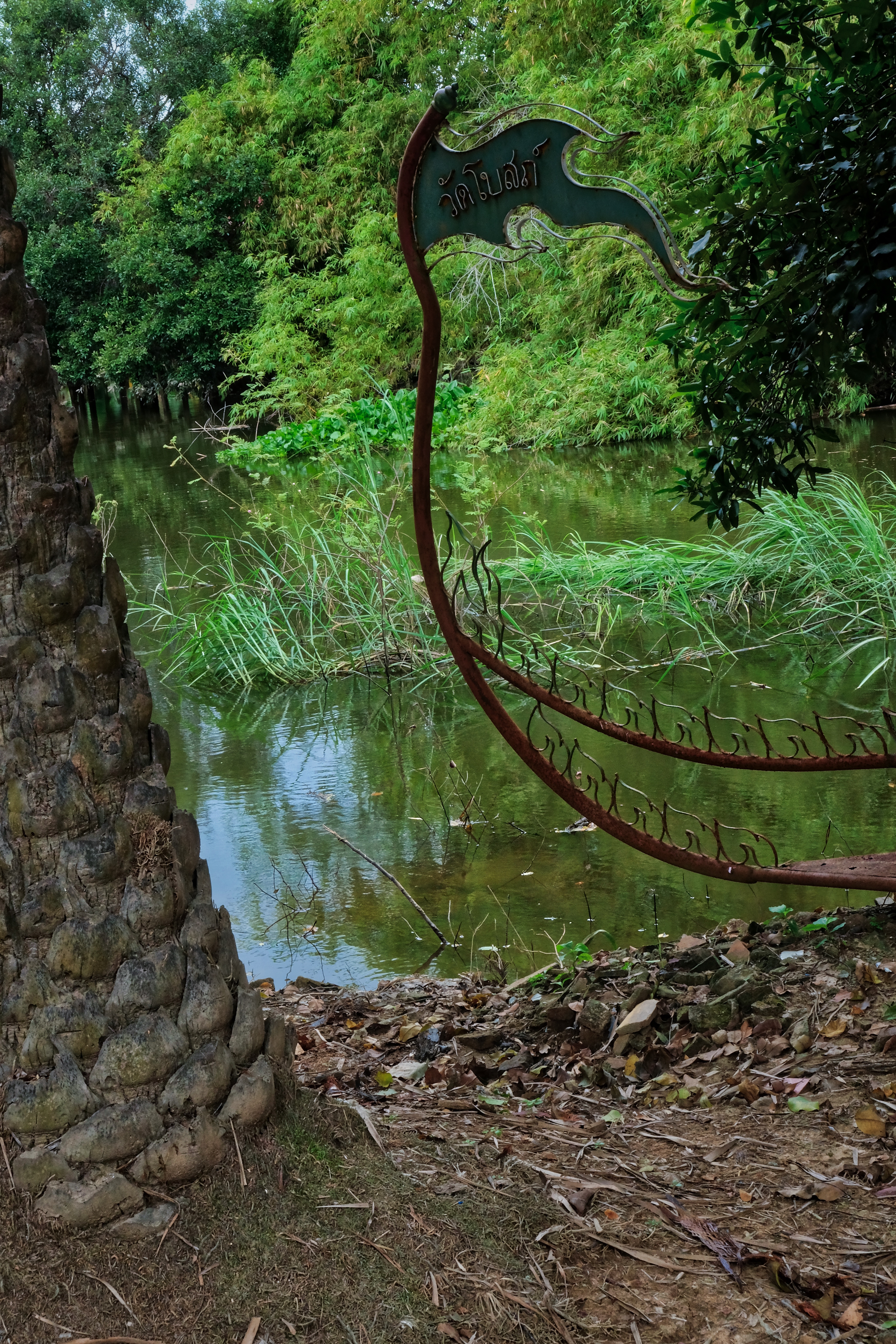 The old ceremonial cart by the klong.
The old ceremonial cart by the klong.
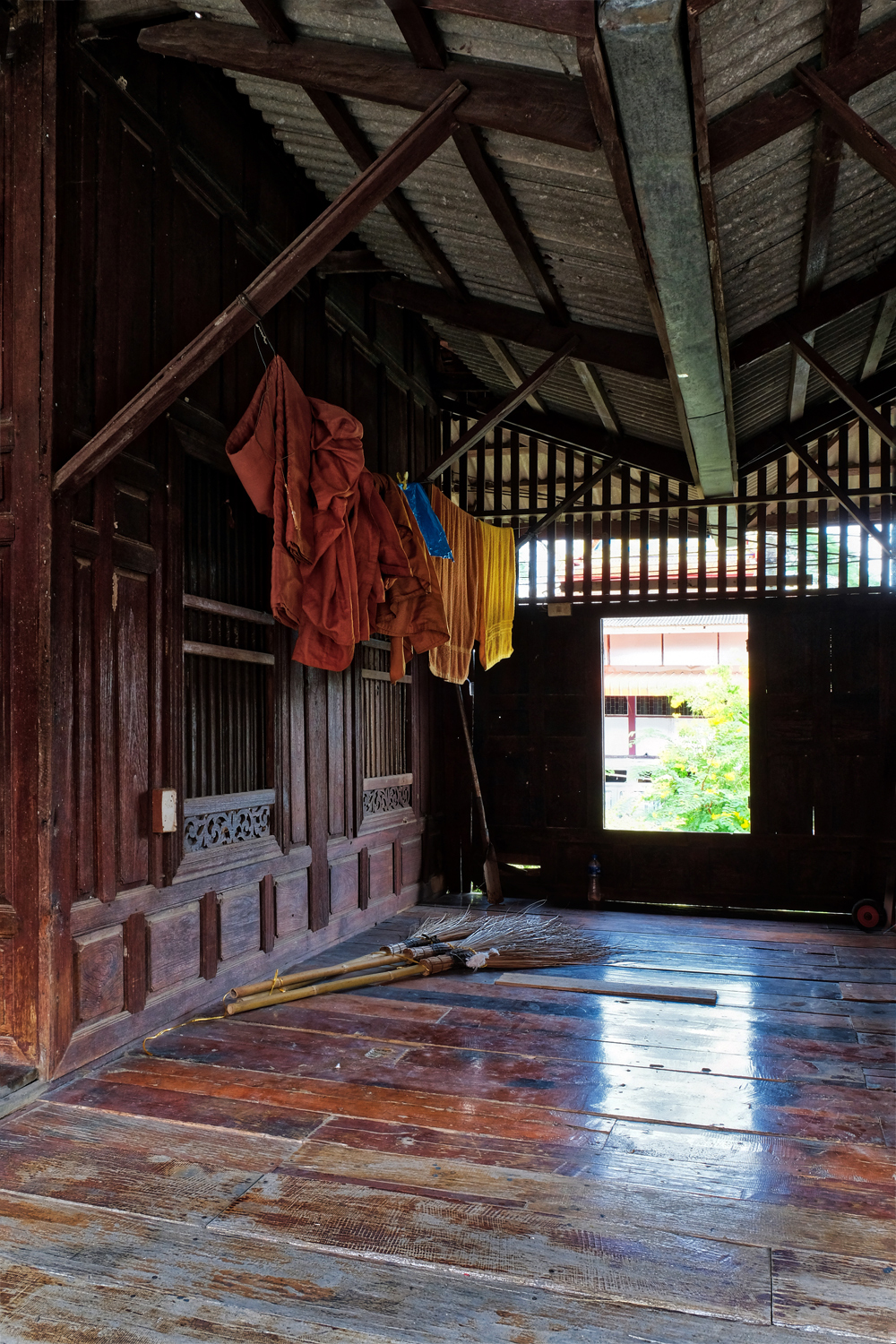 The old wooden Wats have so many beautiful scenes to photograph.
The old wooden Wats have so many beautiful scenes to photograph.
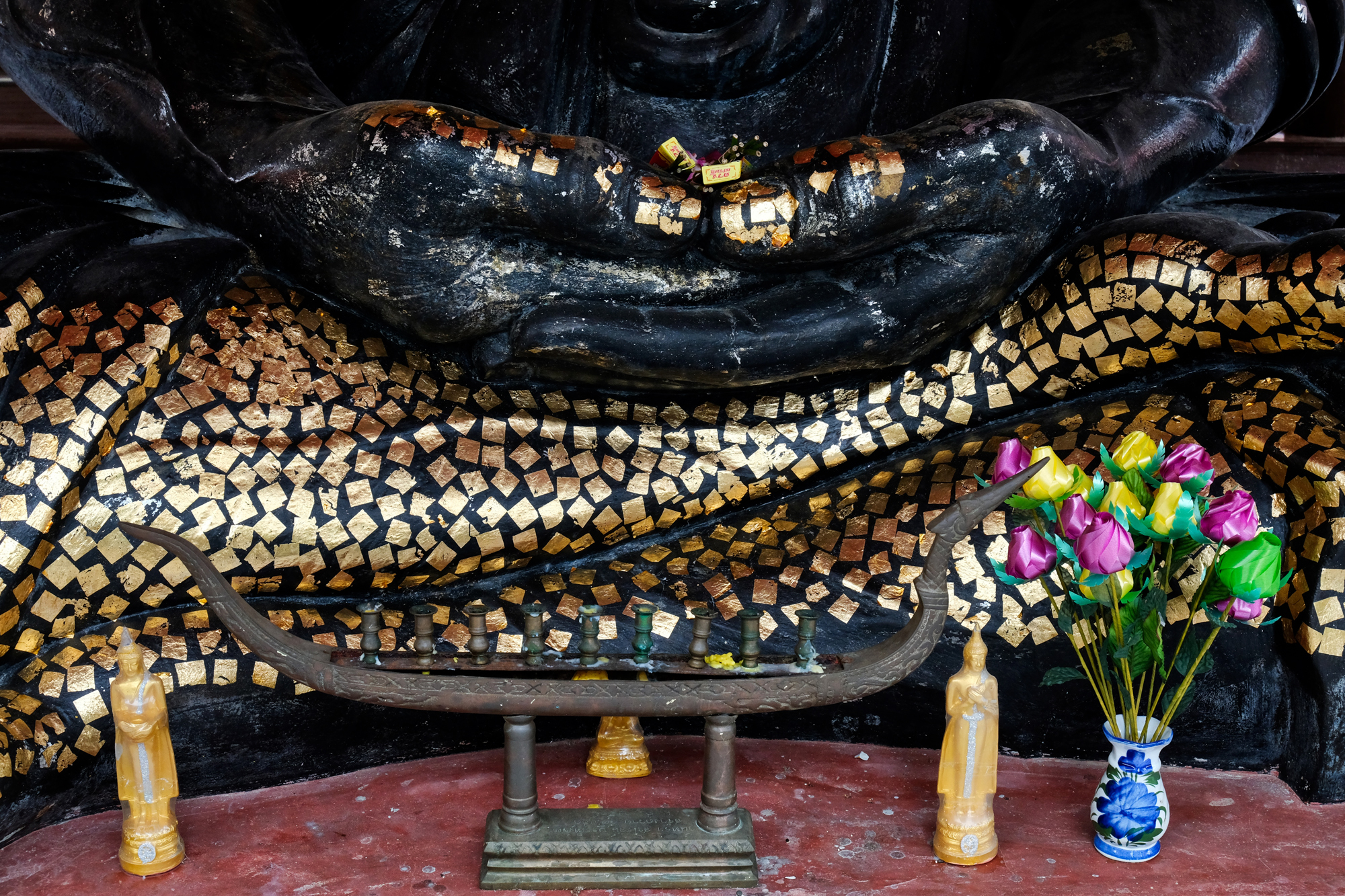 The old Wat held a beautiful black Buddha. I am always interested in the devotional markings pilgrims have left behind.
The old Wat held a beautiful black Buddha. I am always interested in the devotional markings pilgrims have left behind.
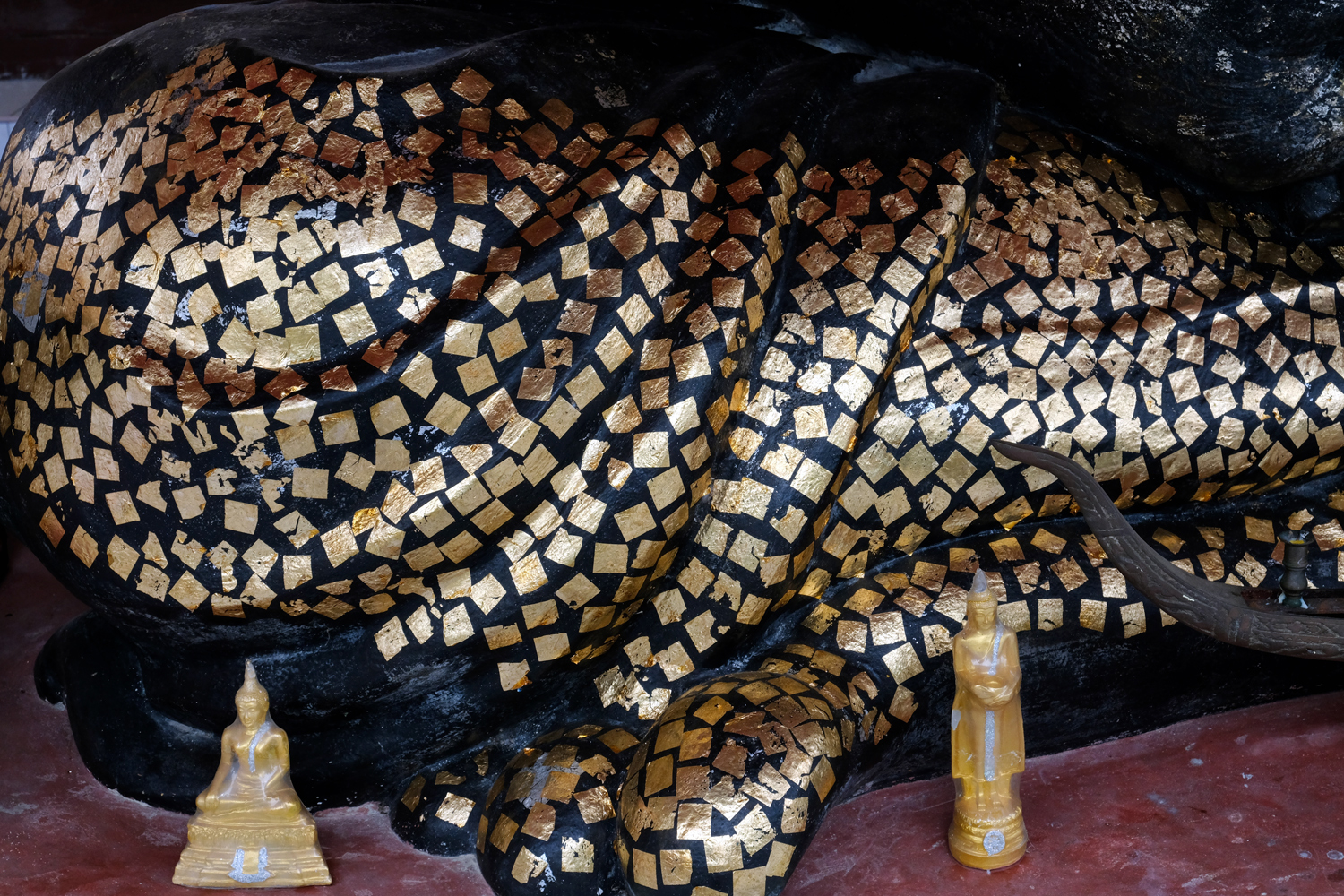 The pattern of the gold leaf applications is fantastic.
The pattern of the gold leaf applications is fantastic.
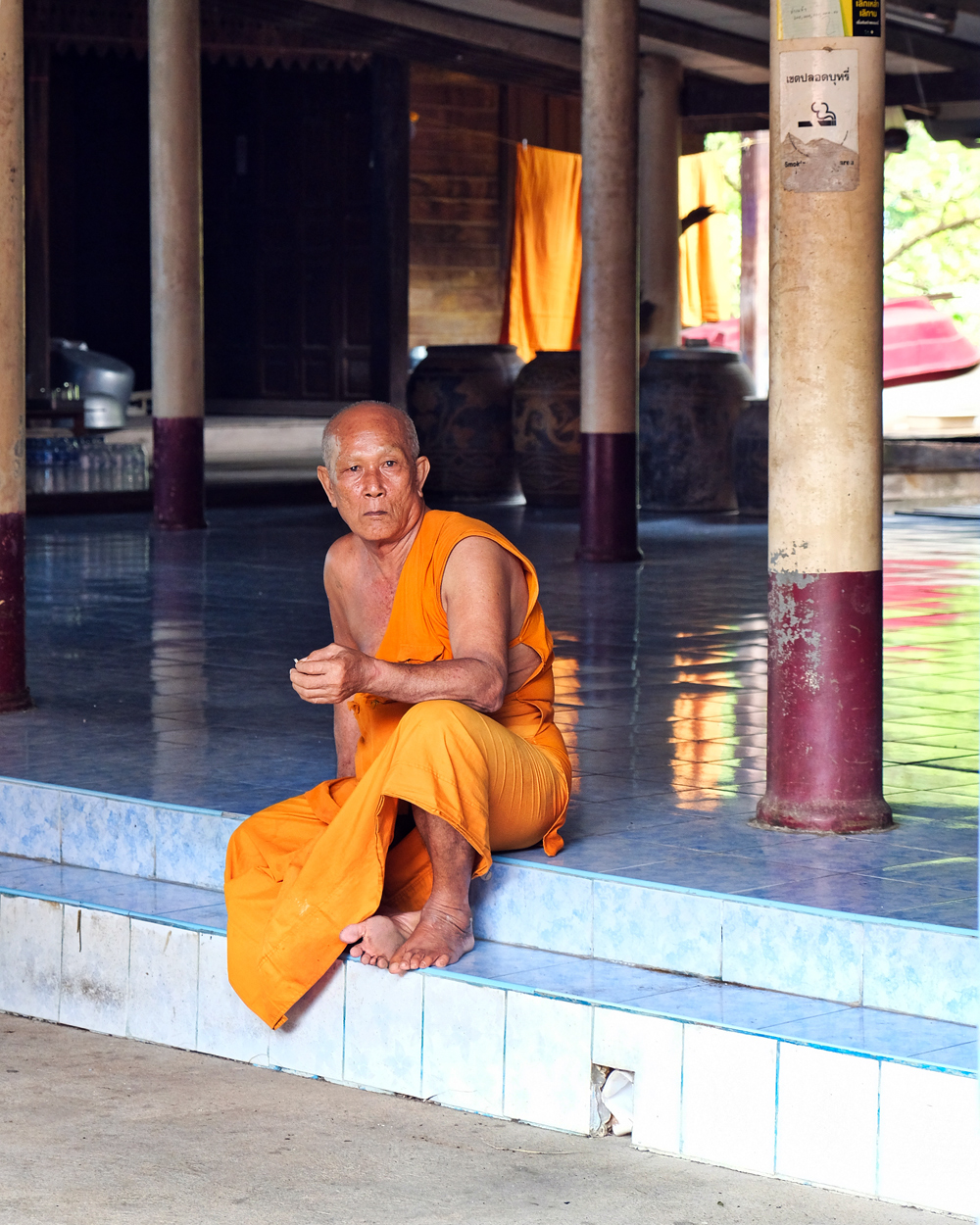 We saw only a few monks out and about. This monk stepped out for a cigarette. I asked if I could photograph him and he nodded OK.
We saw only a few monks out and about. This monk stepped out for a cigarette. I asked if I could photograph him and he nodded OK.
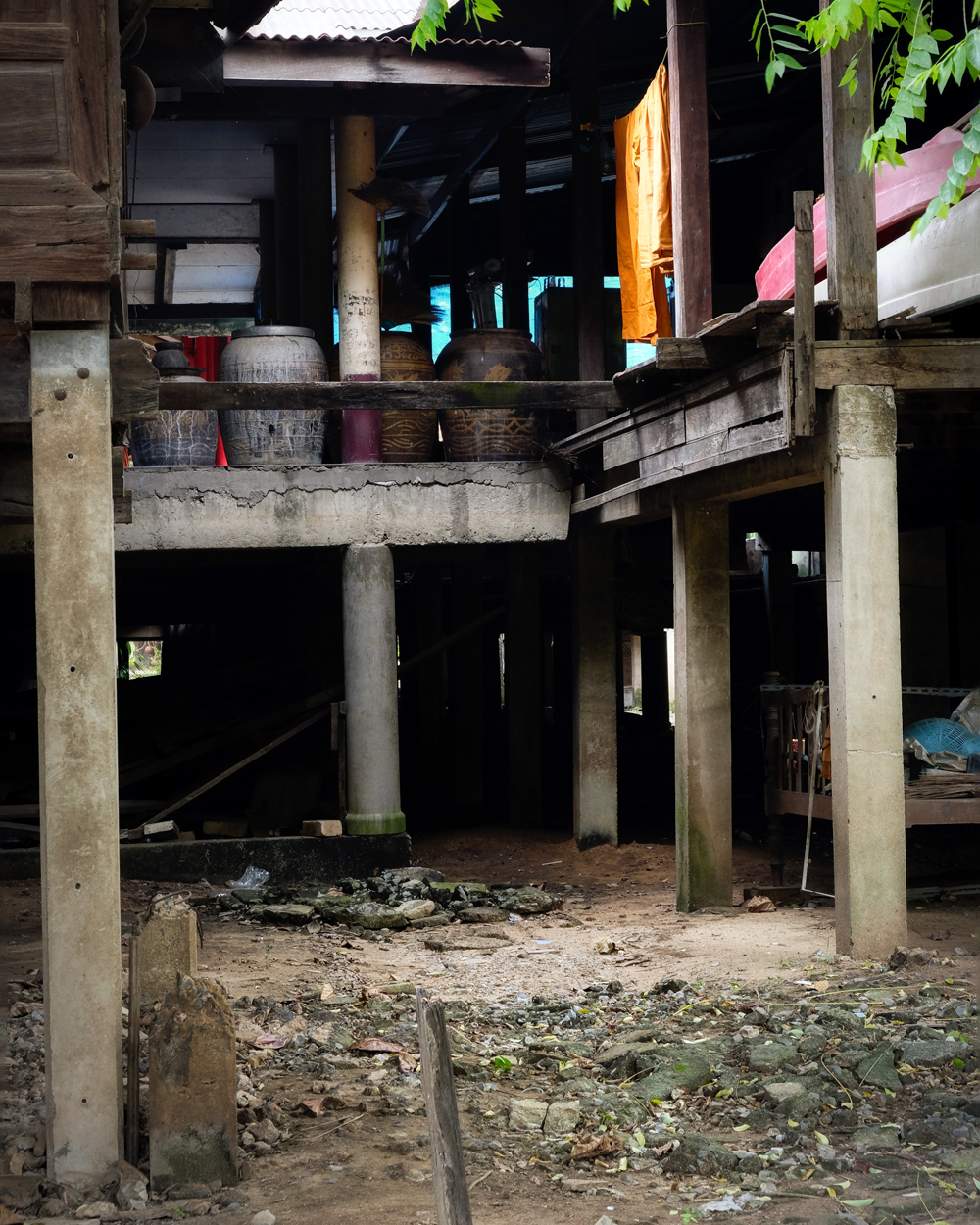 Around he back of the monk's quarters . . . rural Wats are sometimes disheveled like this. The monks are not there to garden, and the local people who support the Wat are busy working hard to stay alive.
Around he back of the monk's quarters . . . rural Wats are sometimes disheveled like this. The monks are not there to garden, and the local people who support the Wat are busy working hard to stay alive.
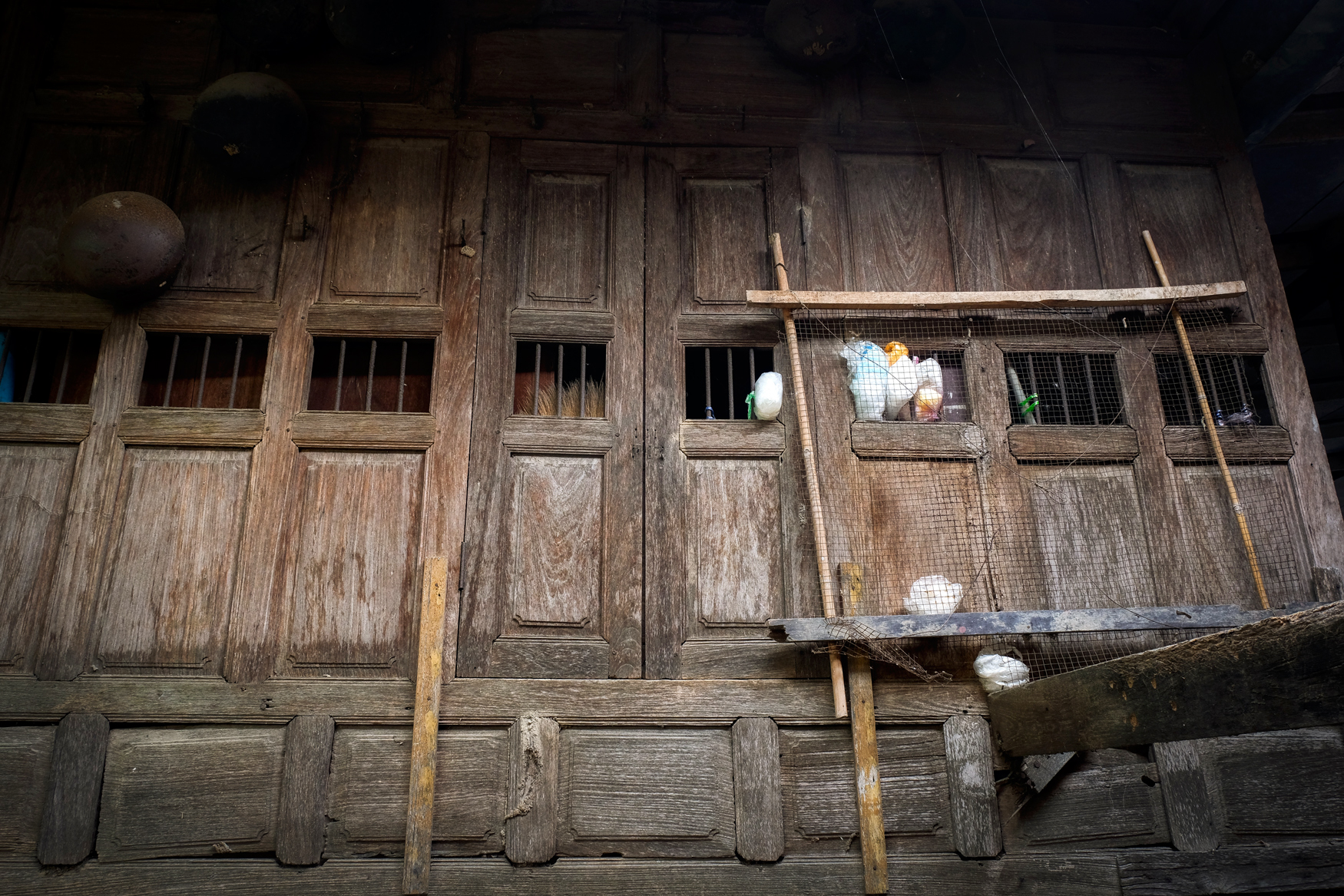 The old surfaces of the ancient monks' quarters had a marvelous patina.
The old surfaces of the ancient monks' quarters had a marvelous patina.
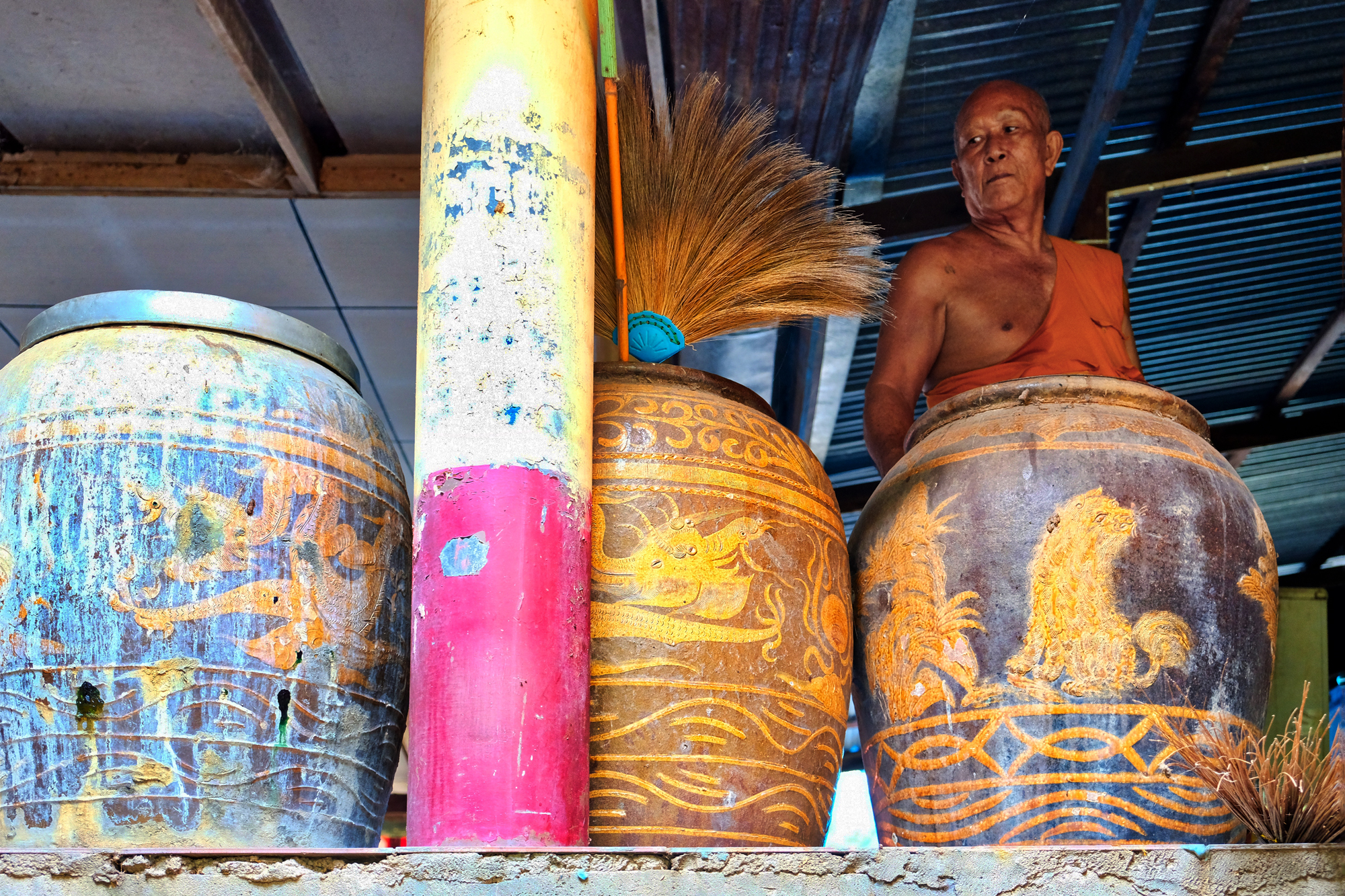 Monk and water urns.
Monk and water urns.
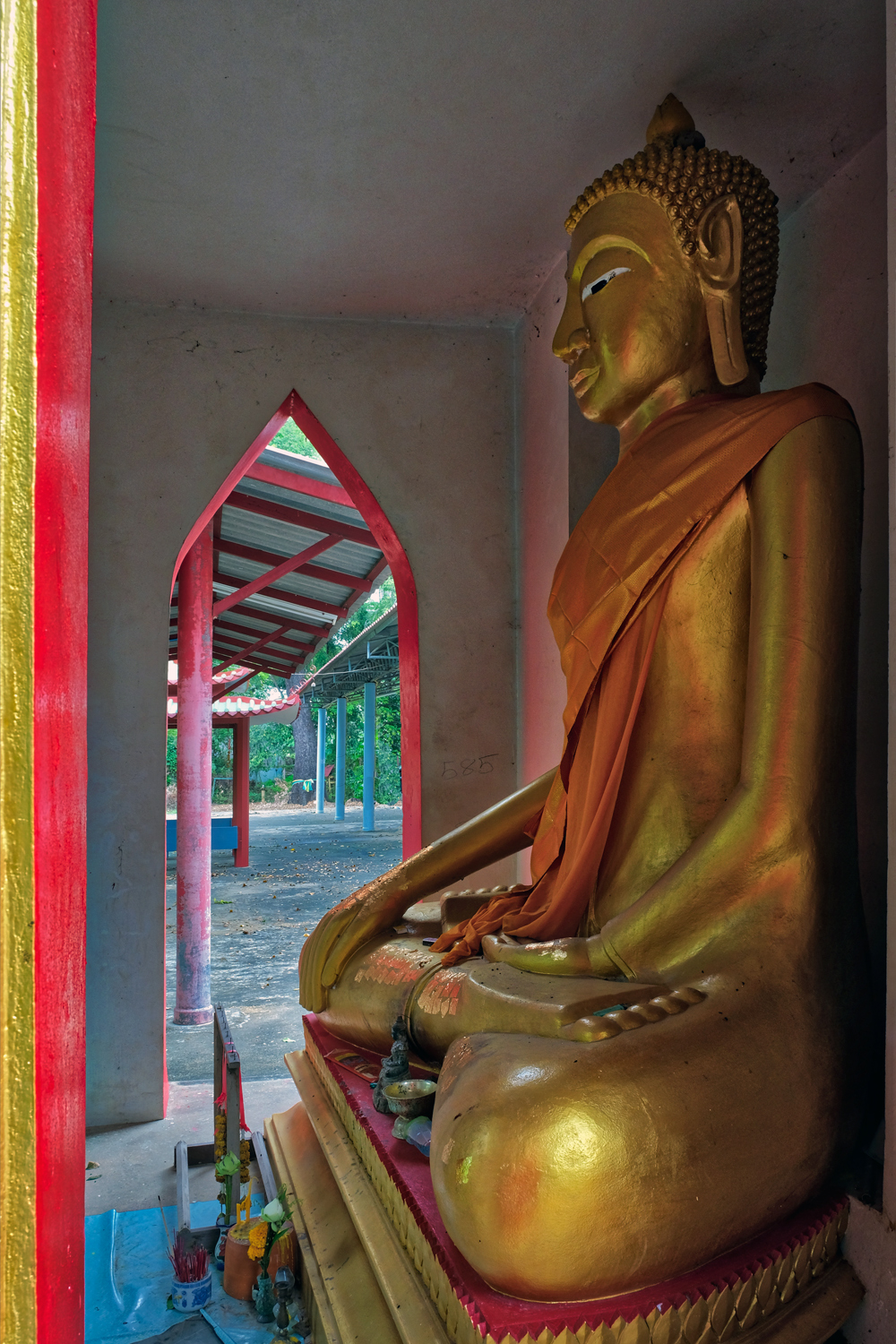 A powerful Buddha image.
A powerful Buddha image.
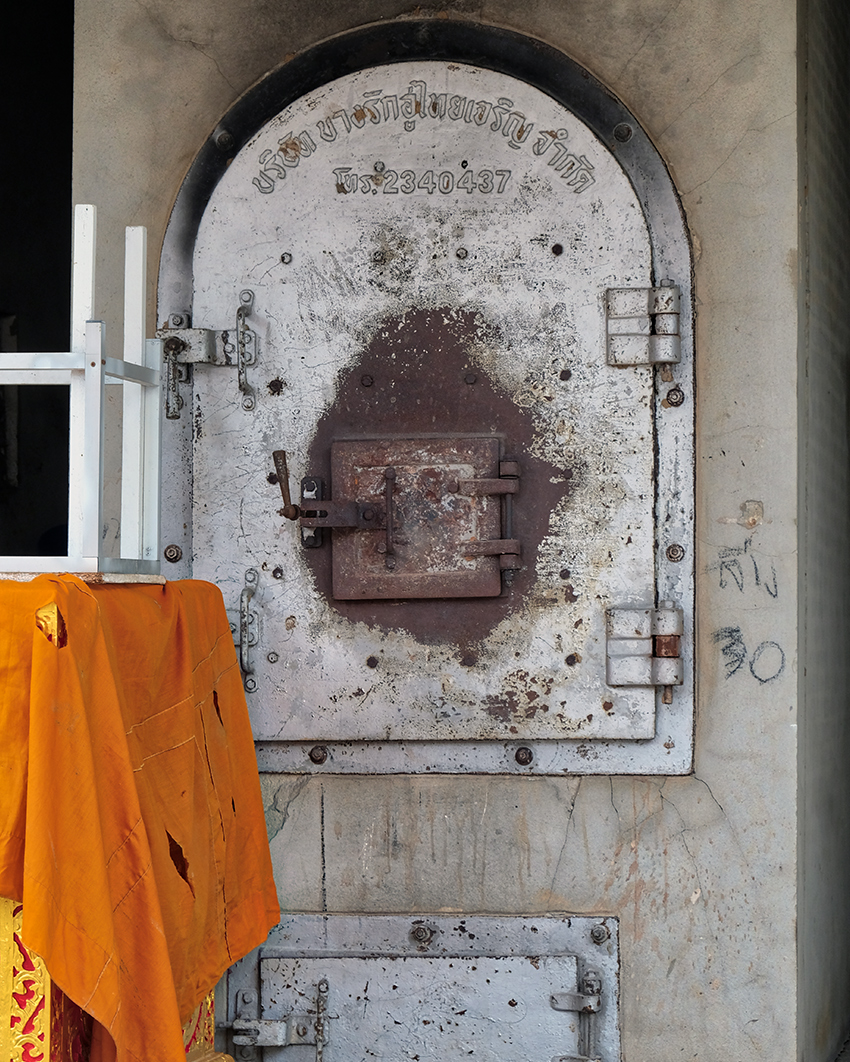 I looked one last time at my final destination . . .
I looked one last time at my final destination . . .
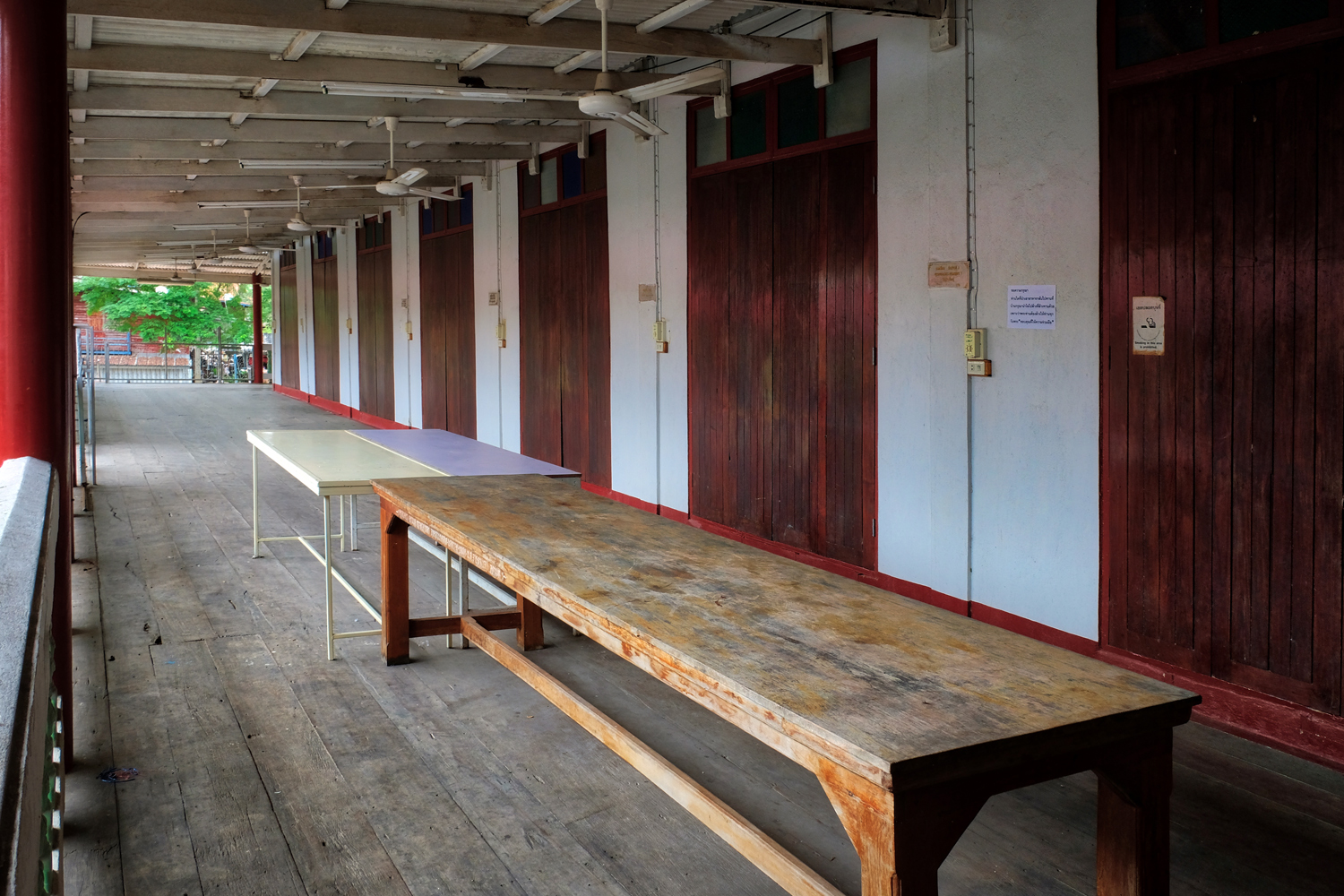 The practical side of Wat life. We left this wat and drove down a tiny rural farm road until we came to . . .
The practical side of Wat life. We left this wat and drove down a tiny rural farm road until we came to . . .
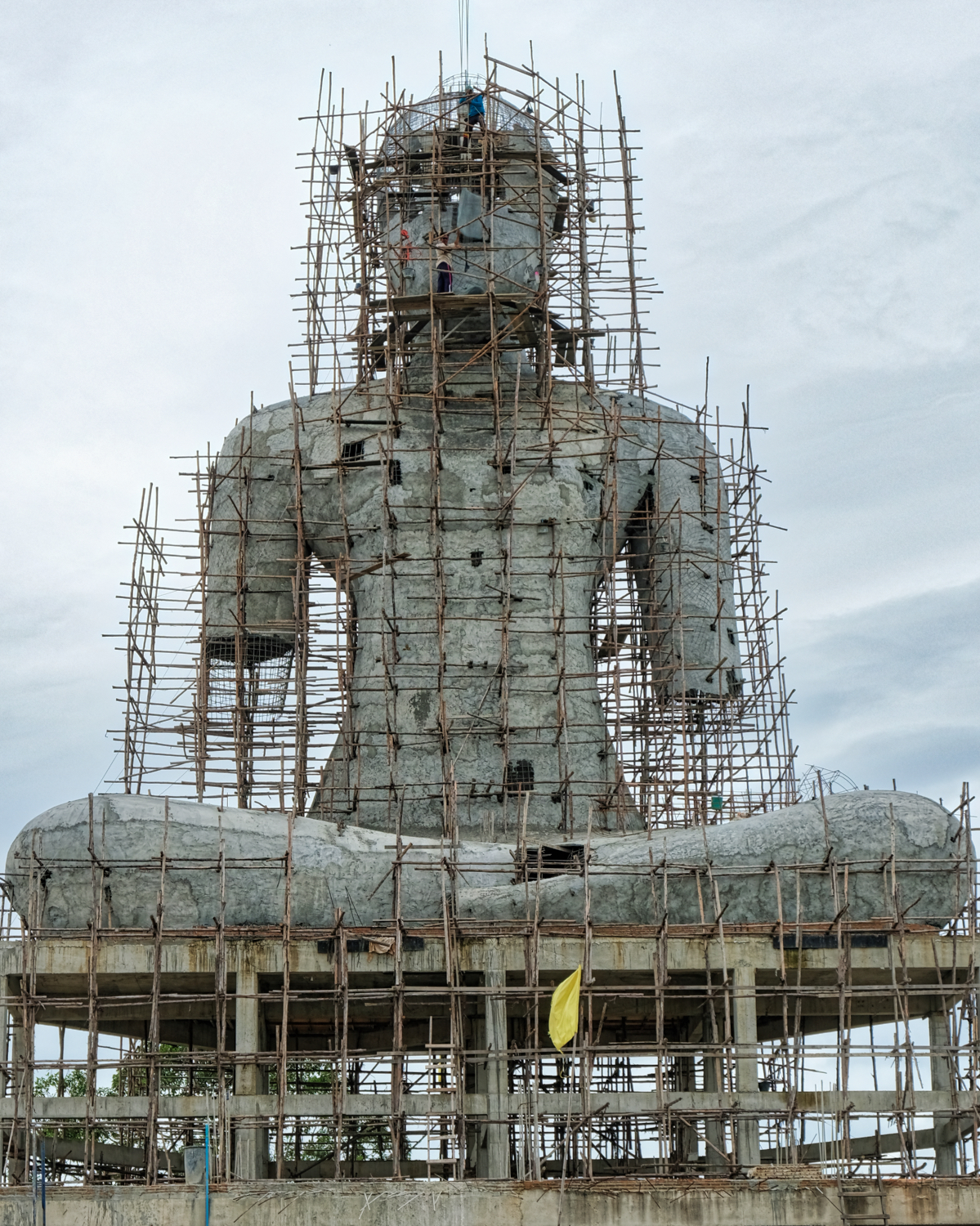 Just around the corner . . . a colossal Buddha image under construction. 10 stories tall with two workers crawling all over it.
Just around the corner . . . a colossal Buddha image under construction. 10 stories tall with two workers crawling all over it.
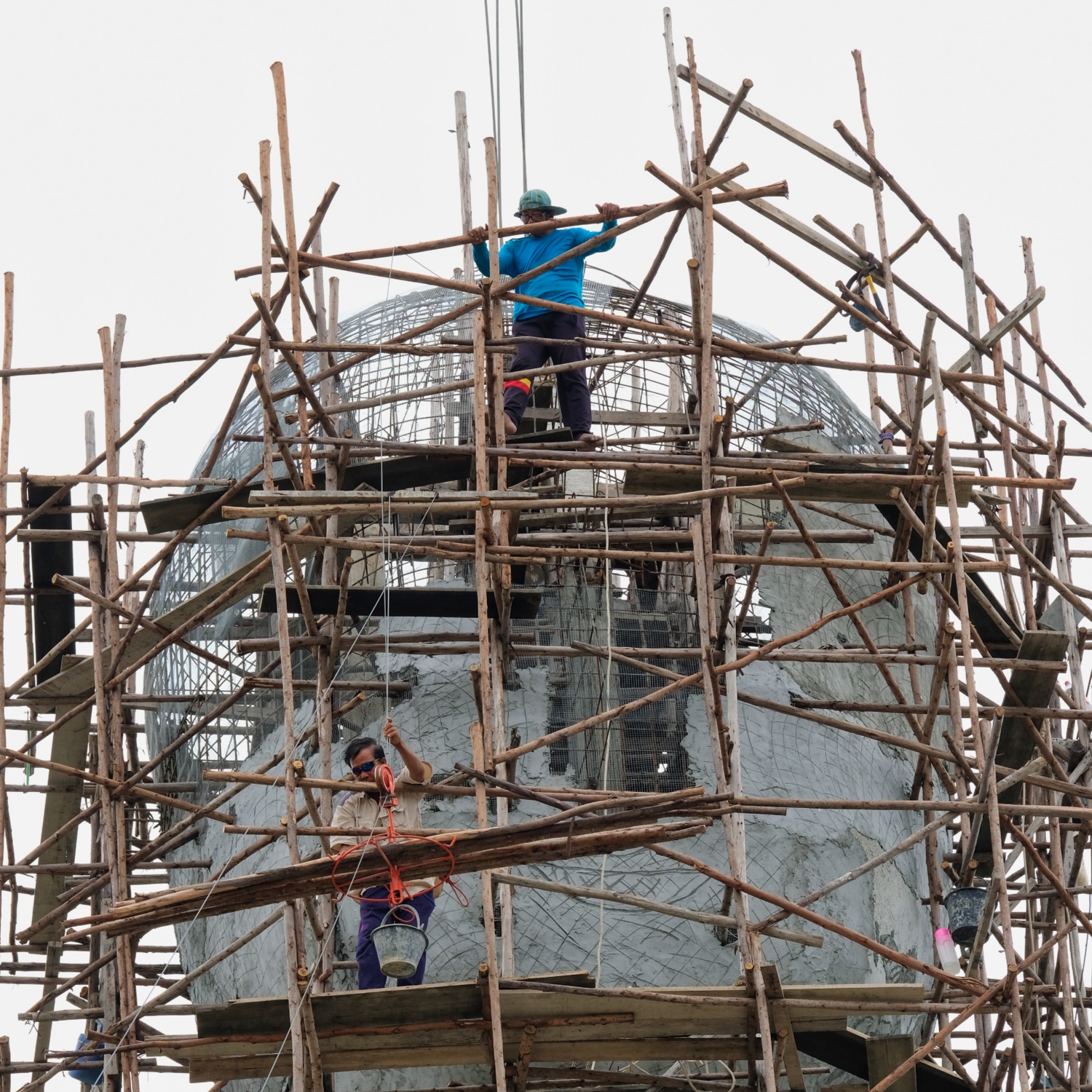 Sculpting the Buddha's head way up on bamboo scaffolding.
Sculpting the Buddha's head way up on bamboo scaffolding.
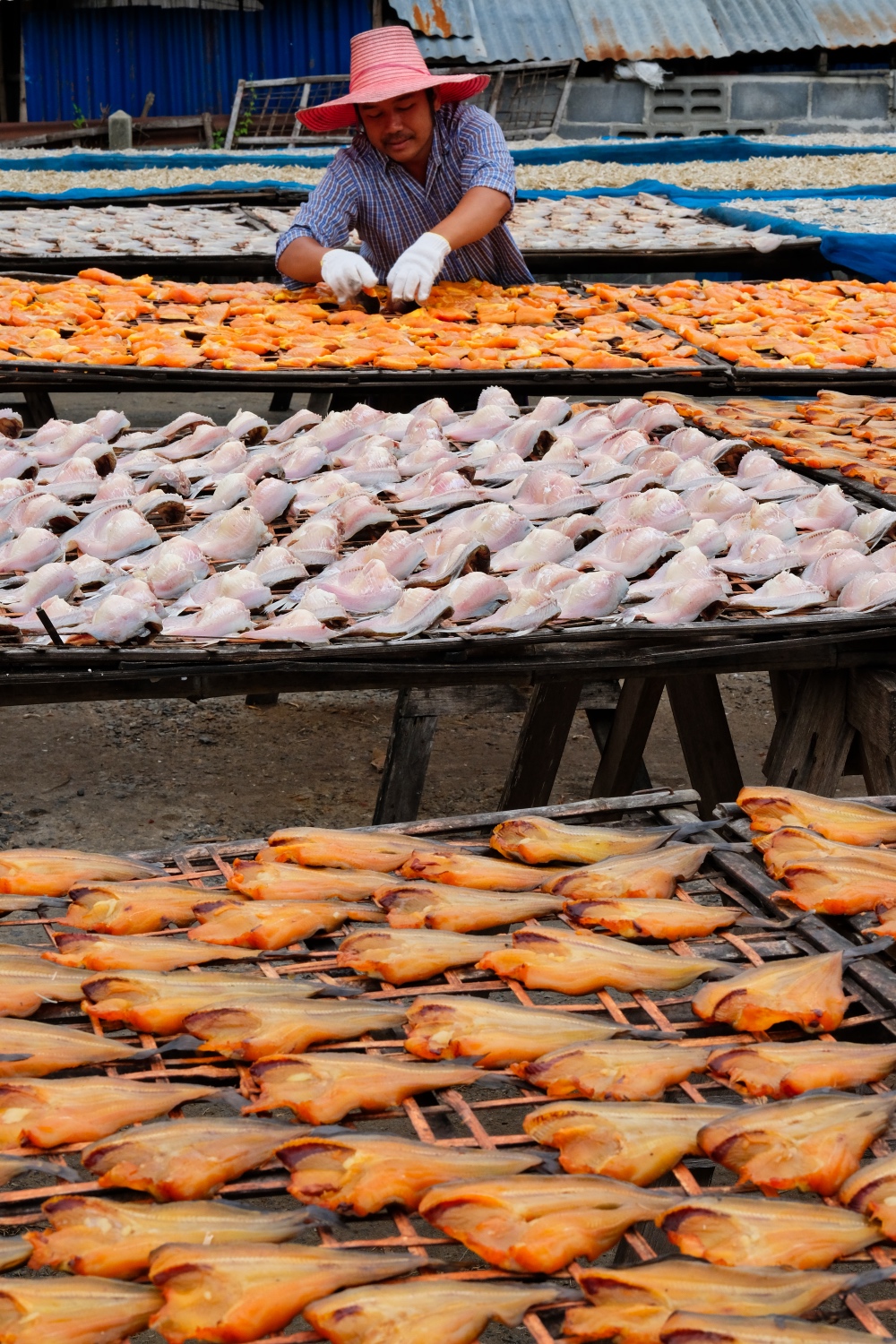 In a lot just in front of the giant Buddha under construction were these racks being filled with fish to be dried.
In a lot just in front of the giant Buddha under construction were these racks being filled with fish to be dried.
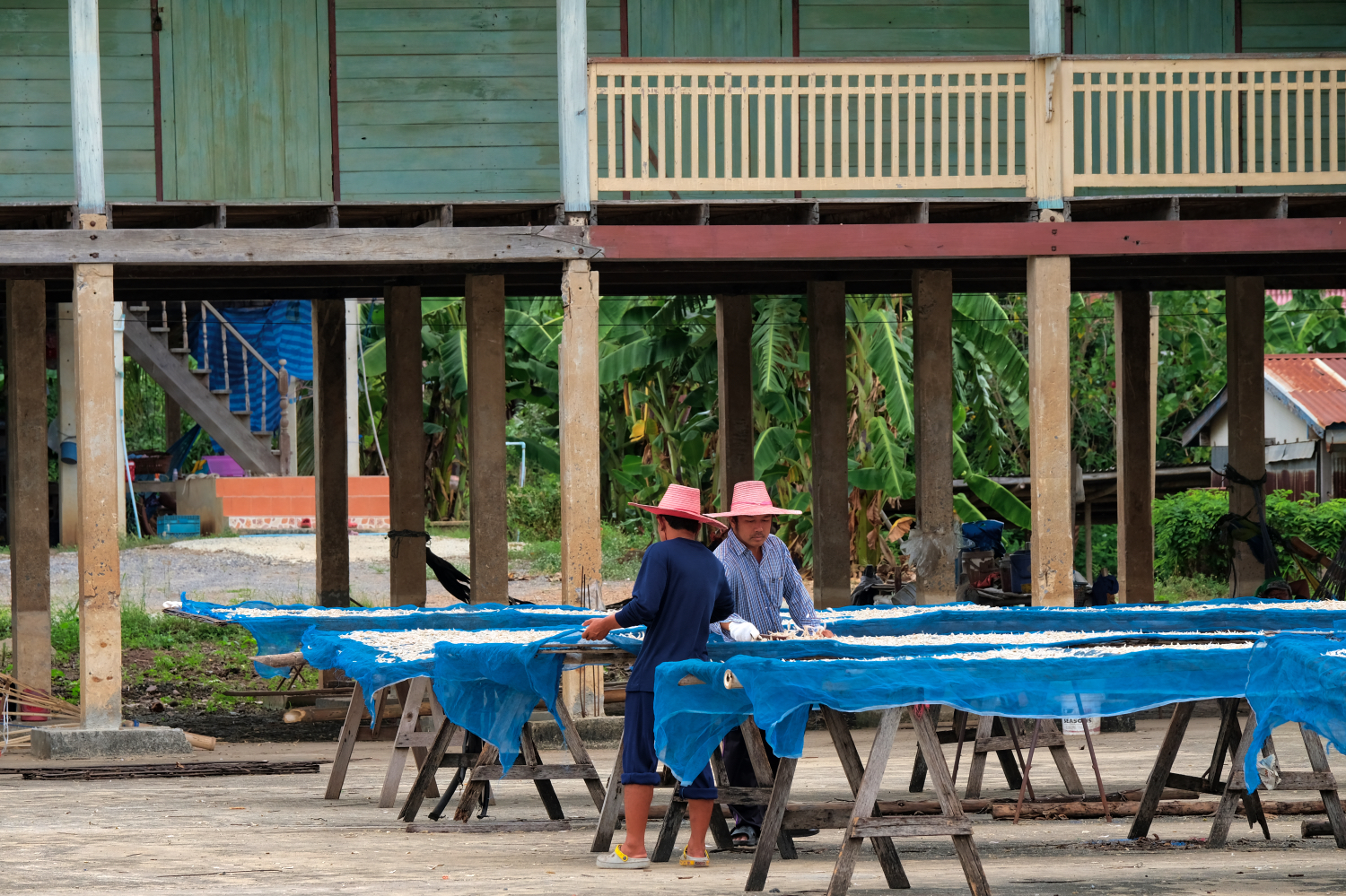 Fish spreaders . . .
Fish spreaders . . .
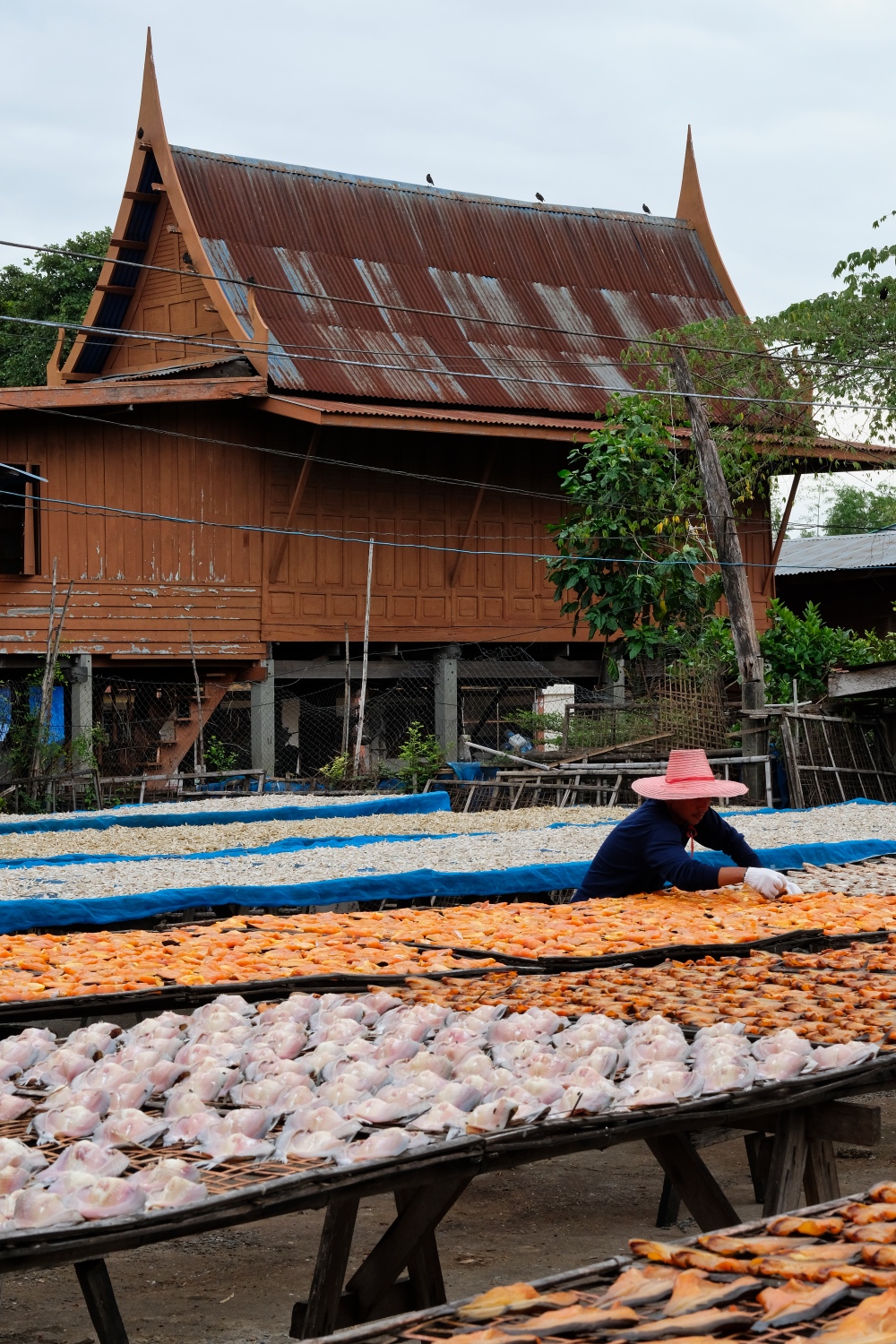 Another 500 meters walk up the country lane and we encountered another, bigger fish drying operation . . . and the same two guys spreading fish!
Another 500 meters walk up the country lane and we encountered another, bigger fish drying operation . . . and the same two guys spreading fish!
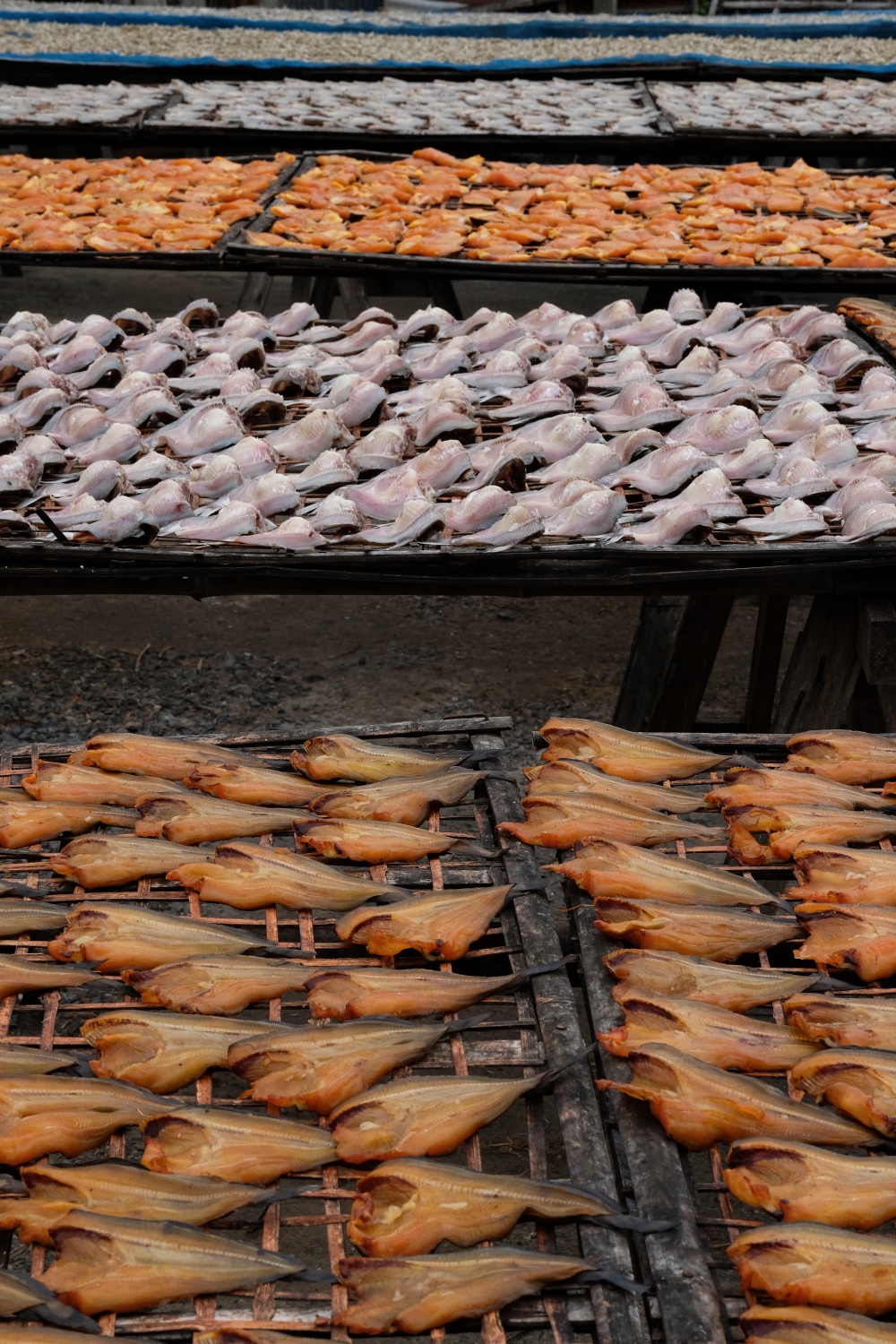 They were drying a variety of fish on bamboo racks.
They were drying a variety of fish on bamboo racks.
 Some of the drying fish had been split and skinned.
Some of the drying fish had been split and skinned.
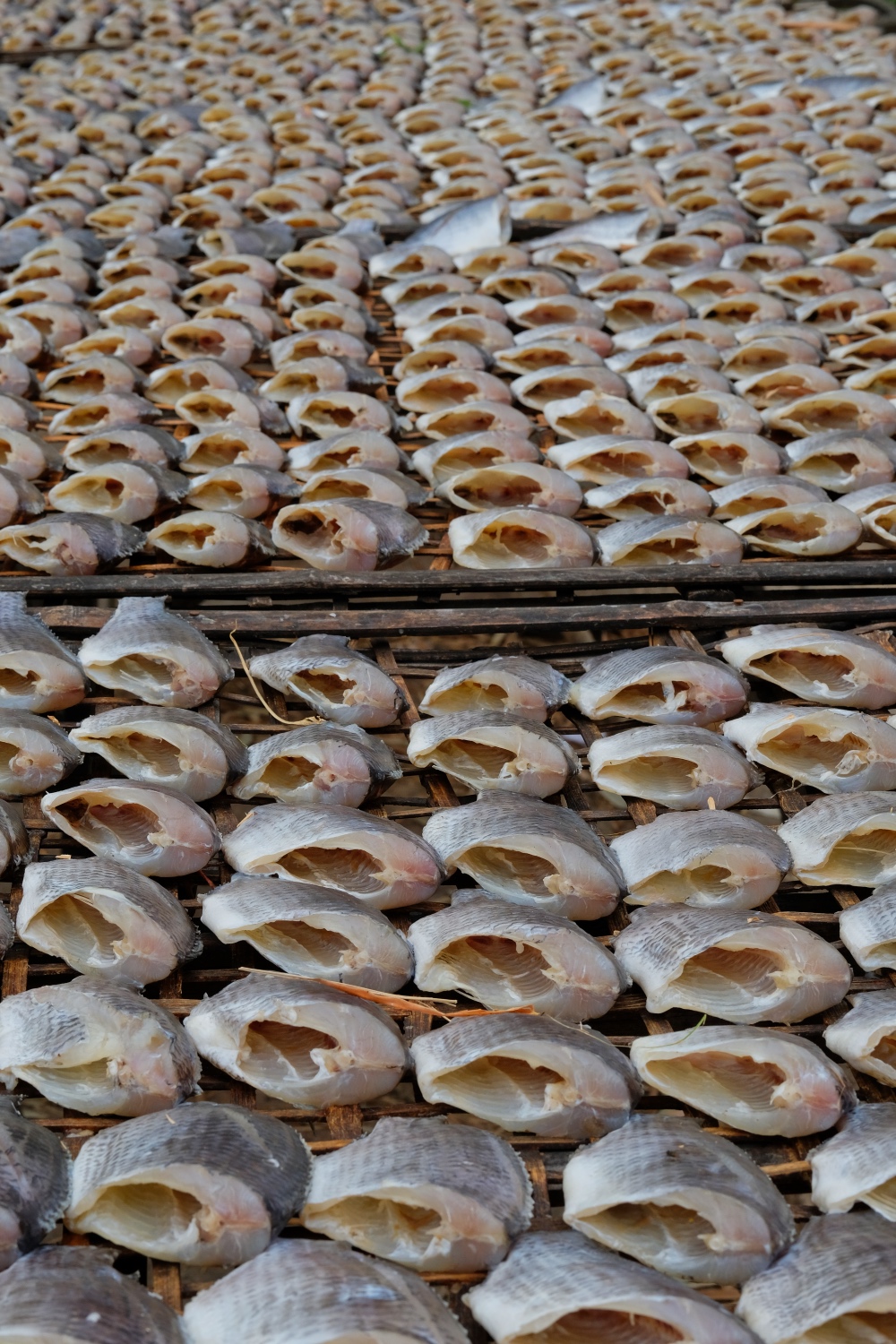 Some of the drying fish had been gutted and beheaded. There was a lot of drying fish here.
Some of the drying fish had been gutted and beheaded. There was a lot of drying fish here.
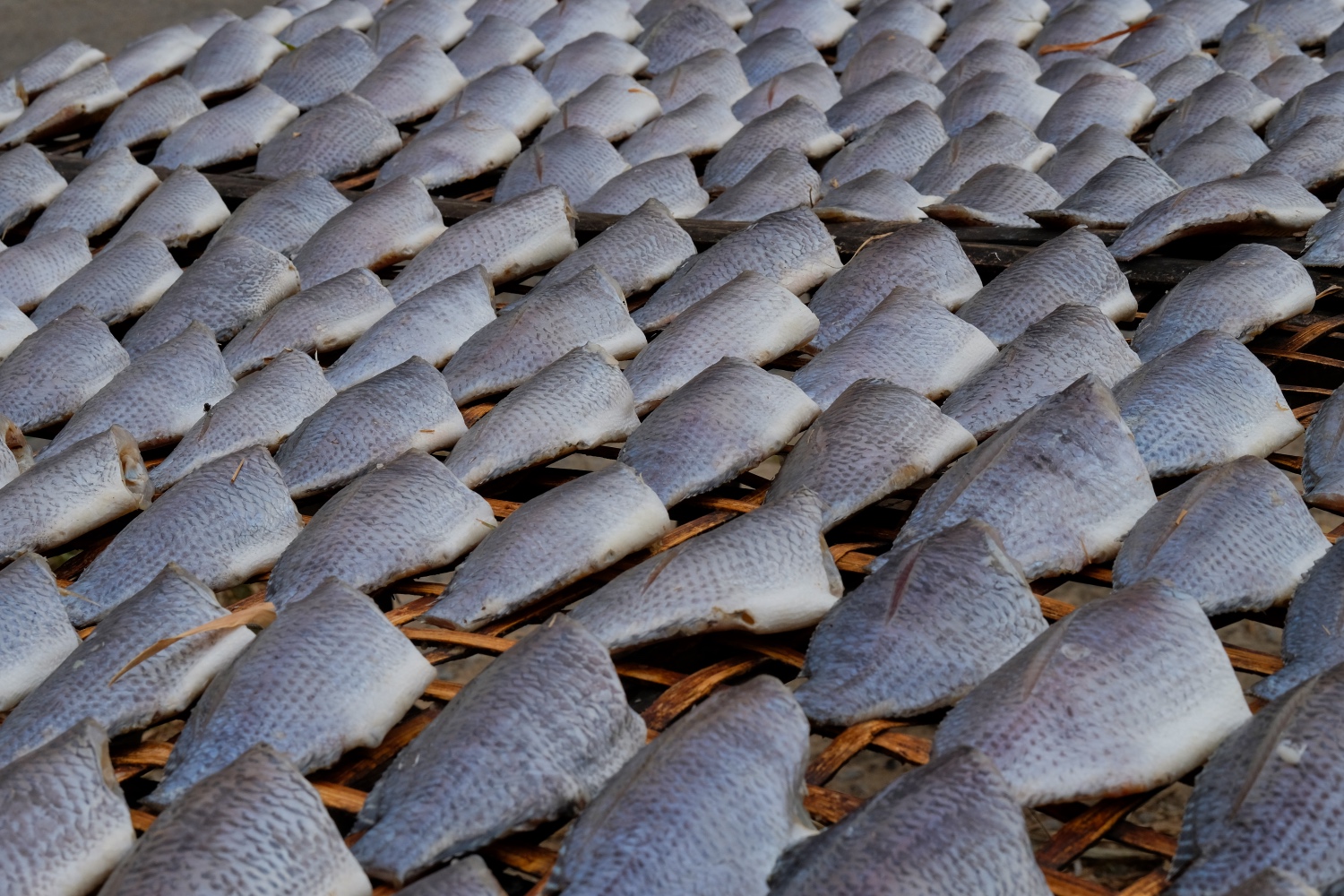 John asked one of the fish spreaders where the fish came from, since we were a couple hundred kilometers from the sea. They said it was all imported from Cambodia fresh every day.
John asked one of the fish spreaders where the fish came from, since we were a couple hundred kilometers from the sea. They said it was all imported from Cambodia fresh every day.
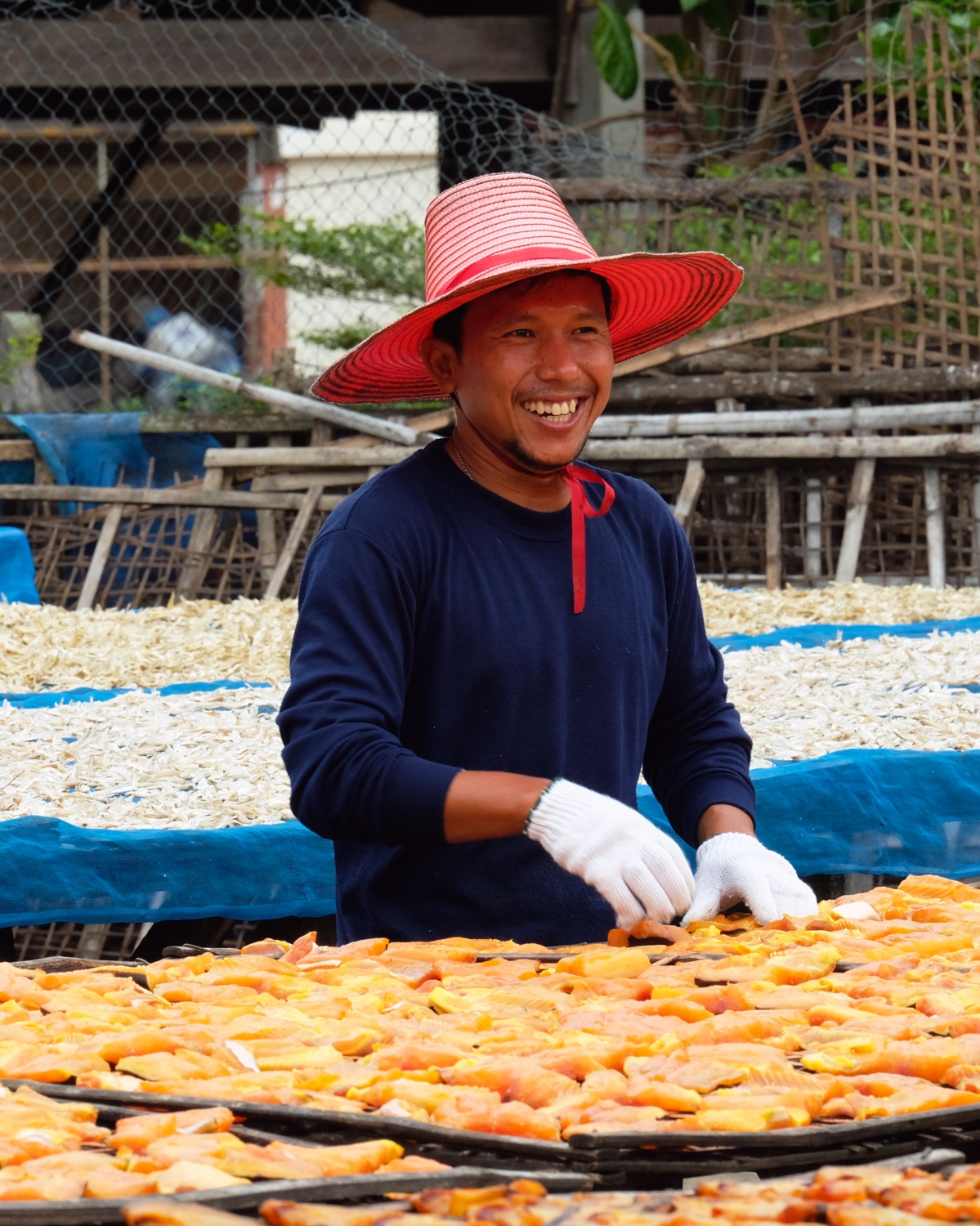 I'm afraid we made this guy a little selfconsious with all the photography . . . DAMN TOURISTS!
I'm afraid we made this guy a little selfconsious with all the photography . . . DAMN TOURISTS!
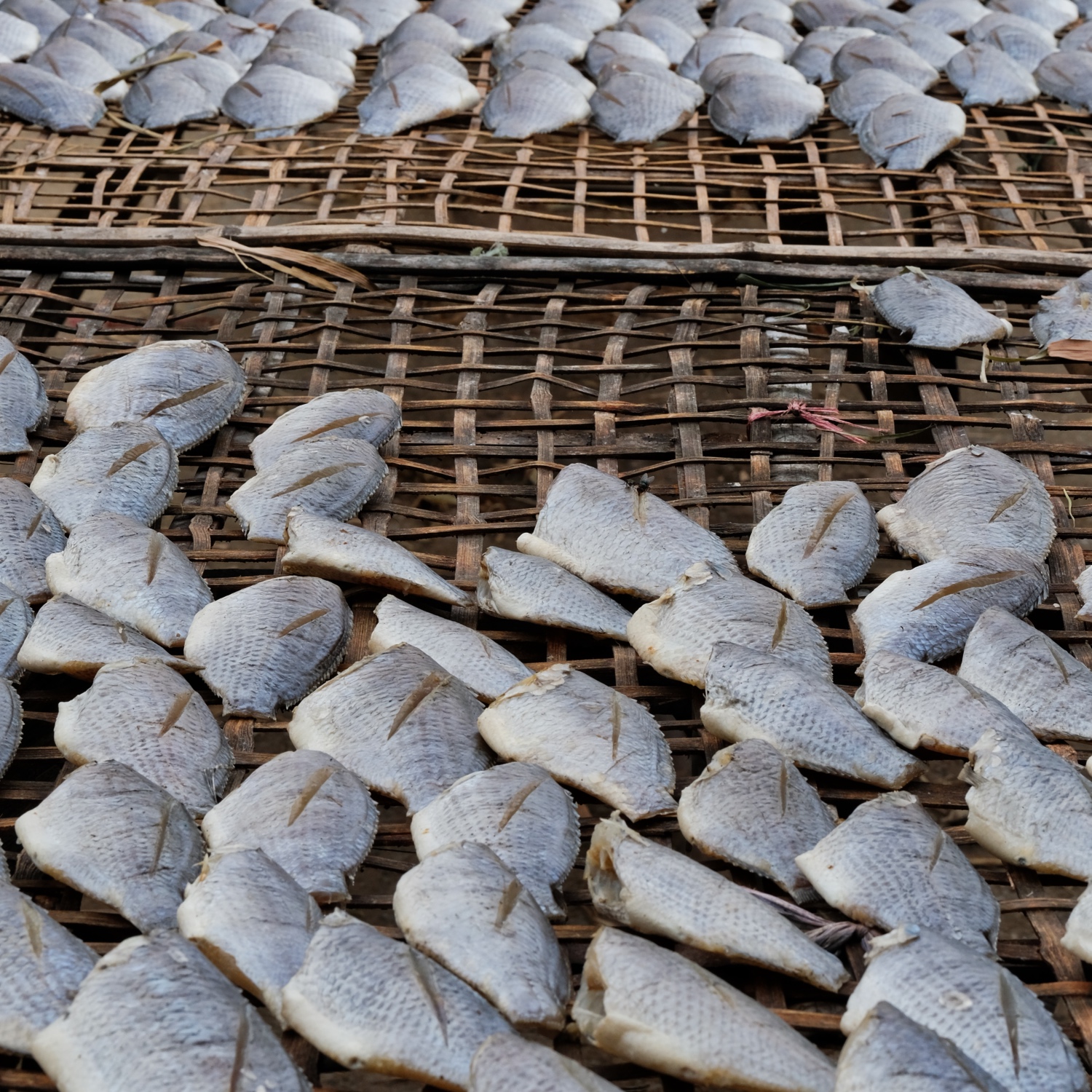 I took way too many photographs of these incredible fish patterns . . . .
I took way too many photographs of these incredible fish patterns . . . .
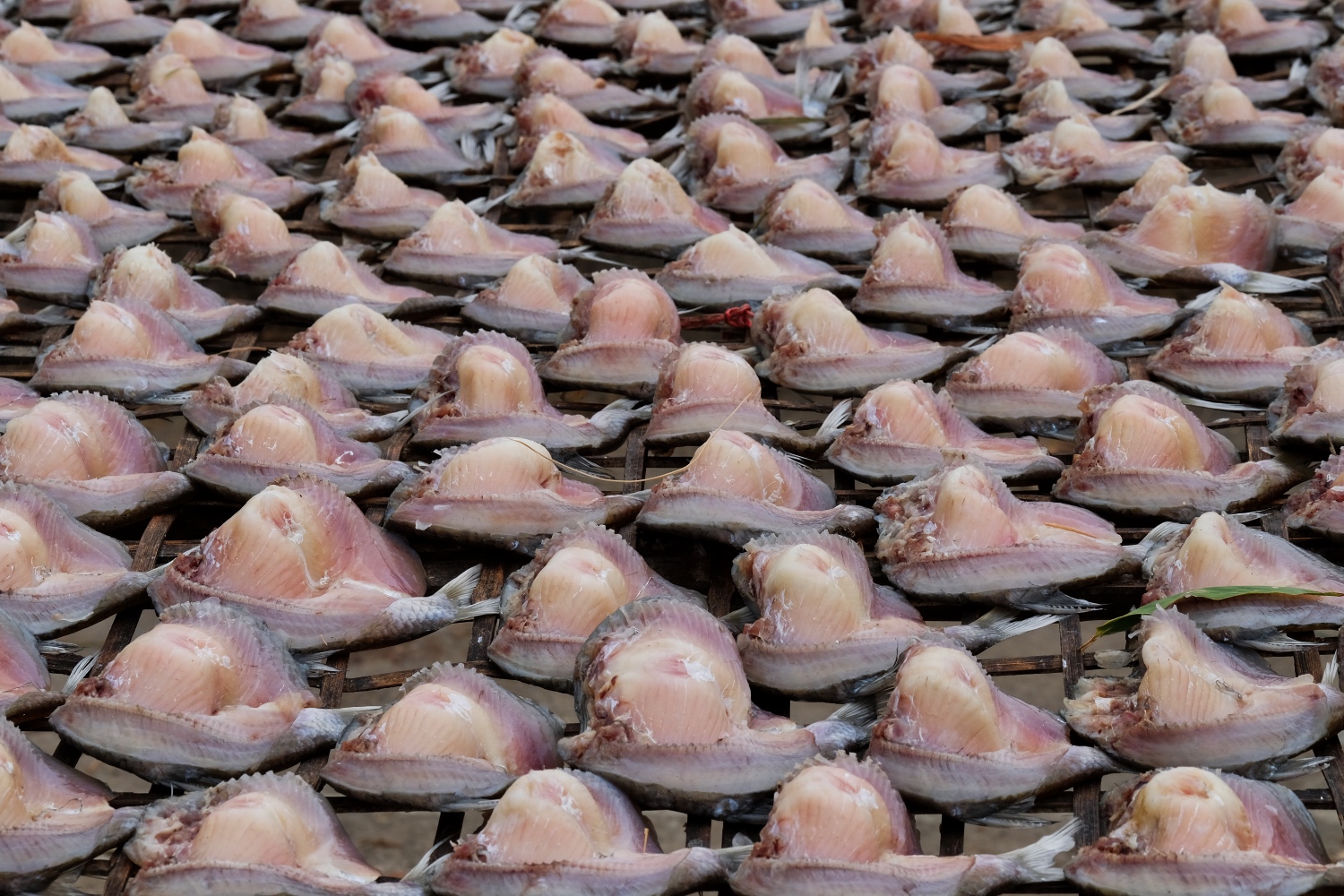 Very strange things to see out in the Thai countryside. We left the drying fish behind and went looking for the sunflower fields.
Very strange things to see out in the Thai countryside. We left the drying fish behind and went looking for the sunflower fields.
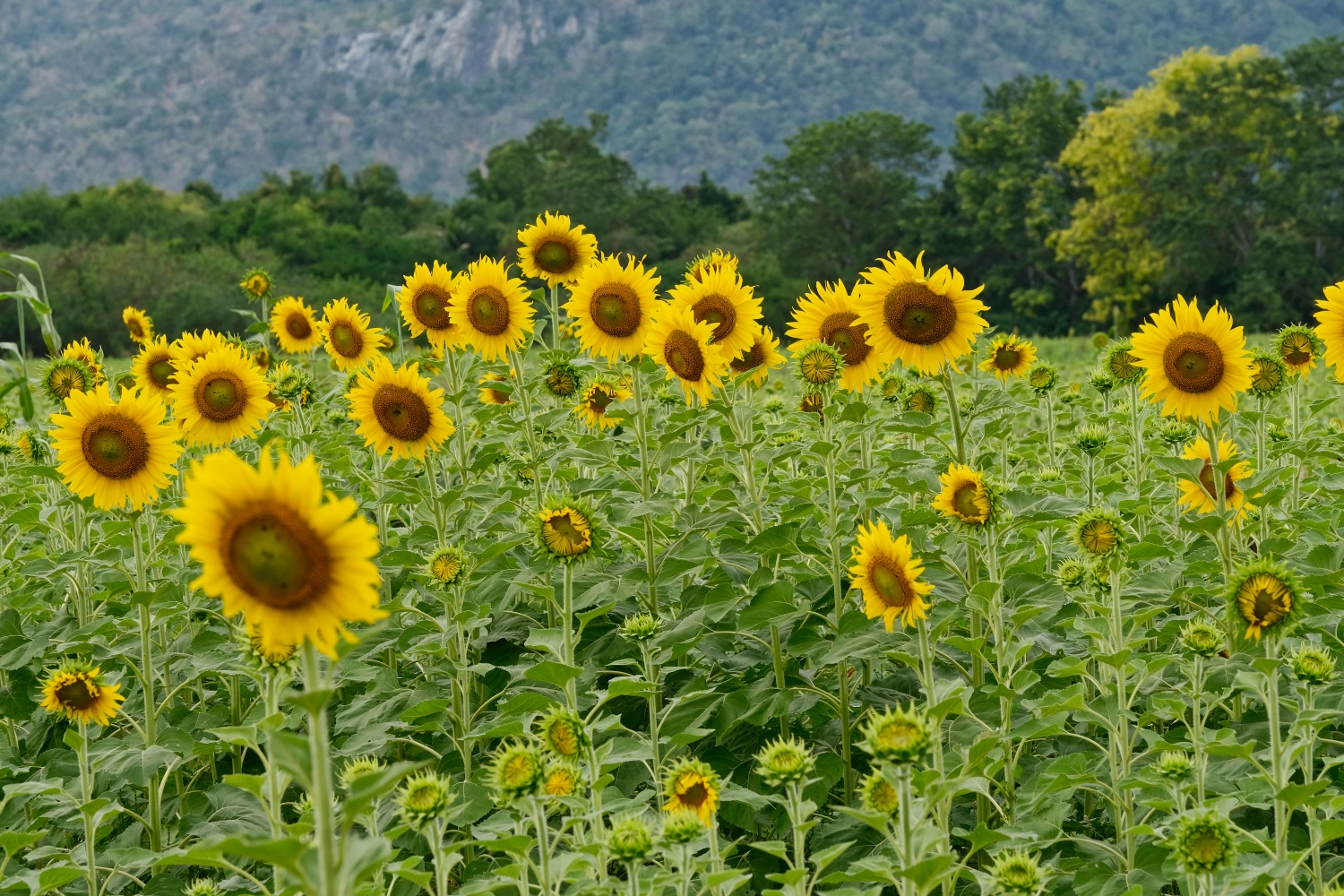 We eventually found a field that was just coming into flower.
We eventually found a field that was just coming into flower.
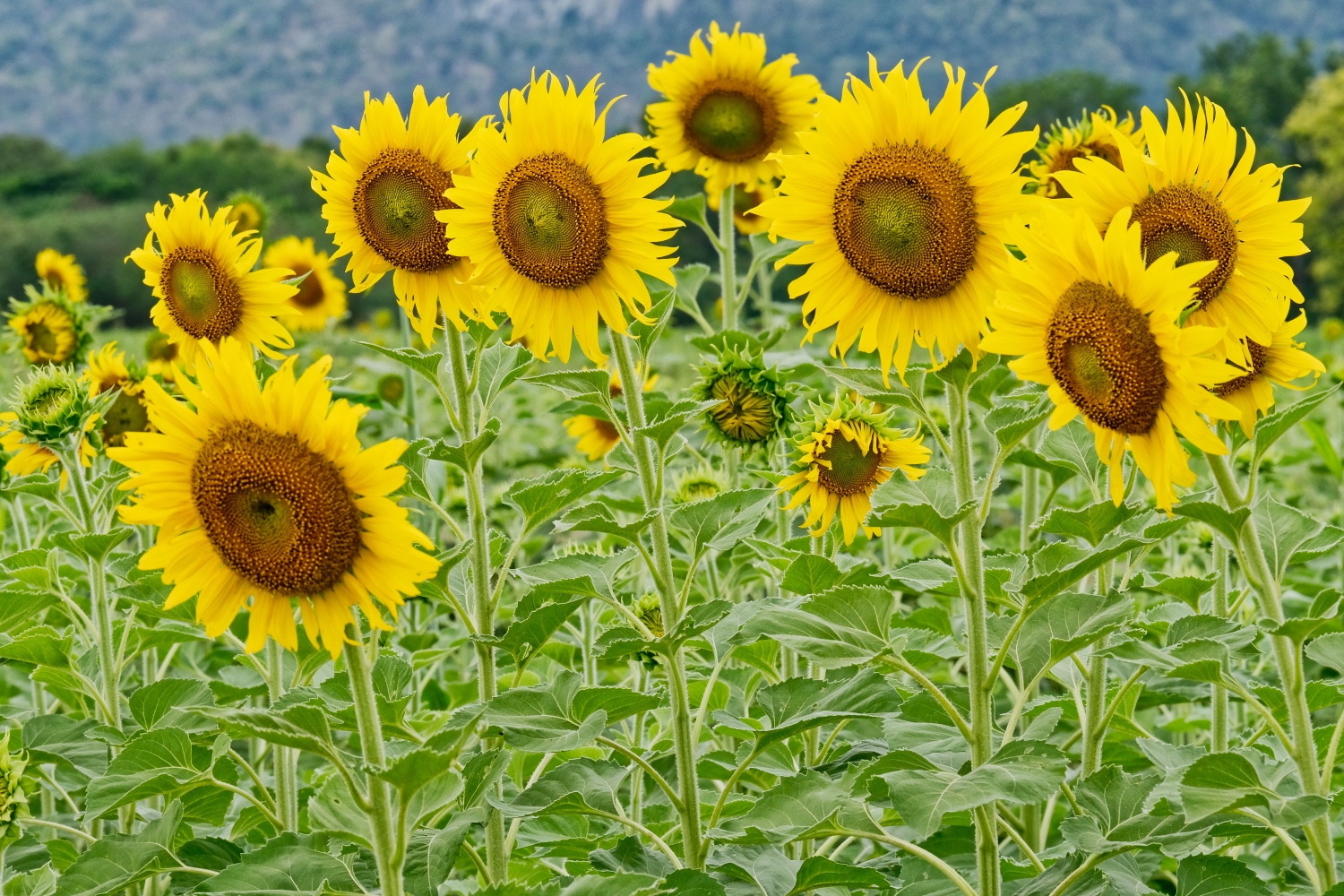 We first explored a little patch up a dirt path . . . away from another field that had quite a few other sunflower pilgrims.
We first explored a little patch up a dirt path . . . away from another field that had quite a few other sunflower pilgrims.
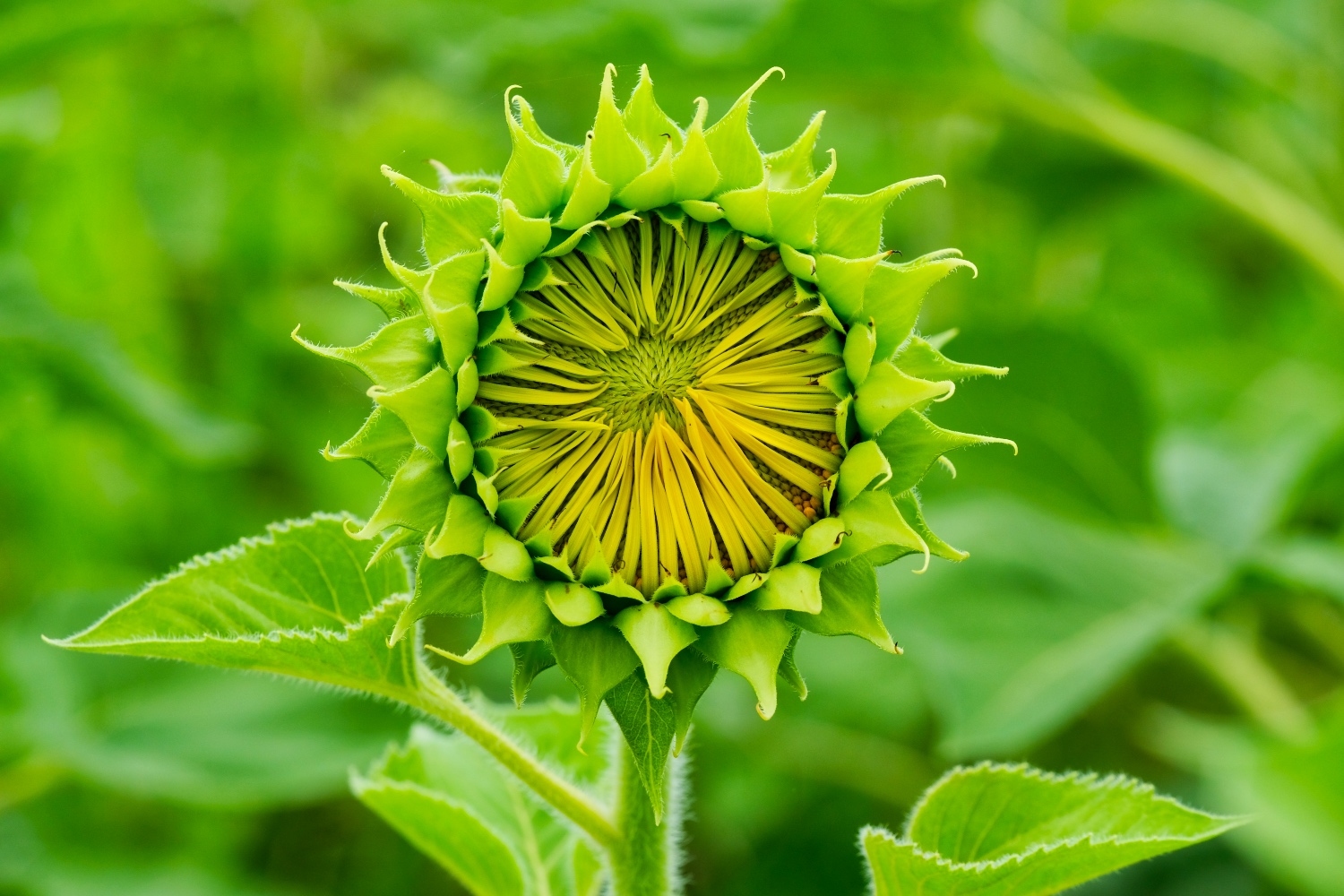 New sunflowers budding are fantastically interesting things.
New sunflowers budding are fantastically interesting things.
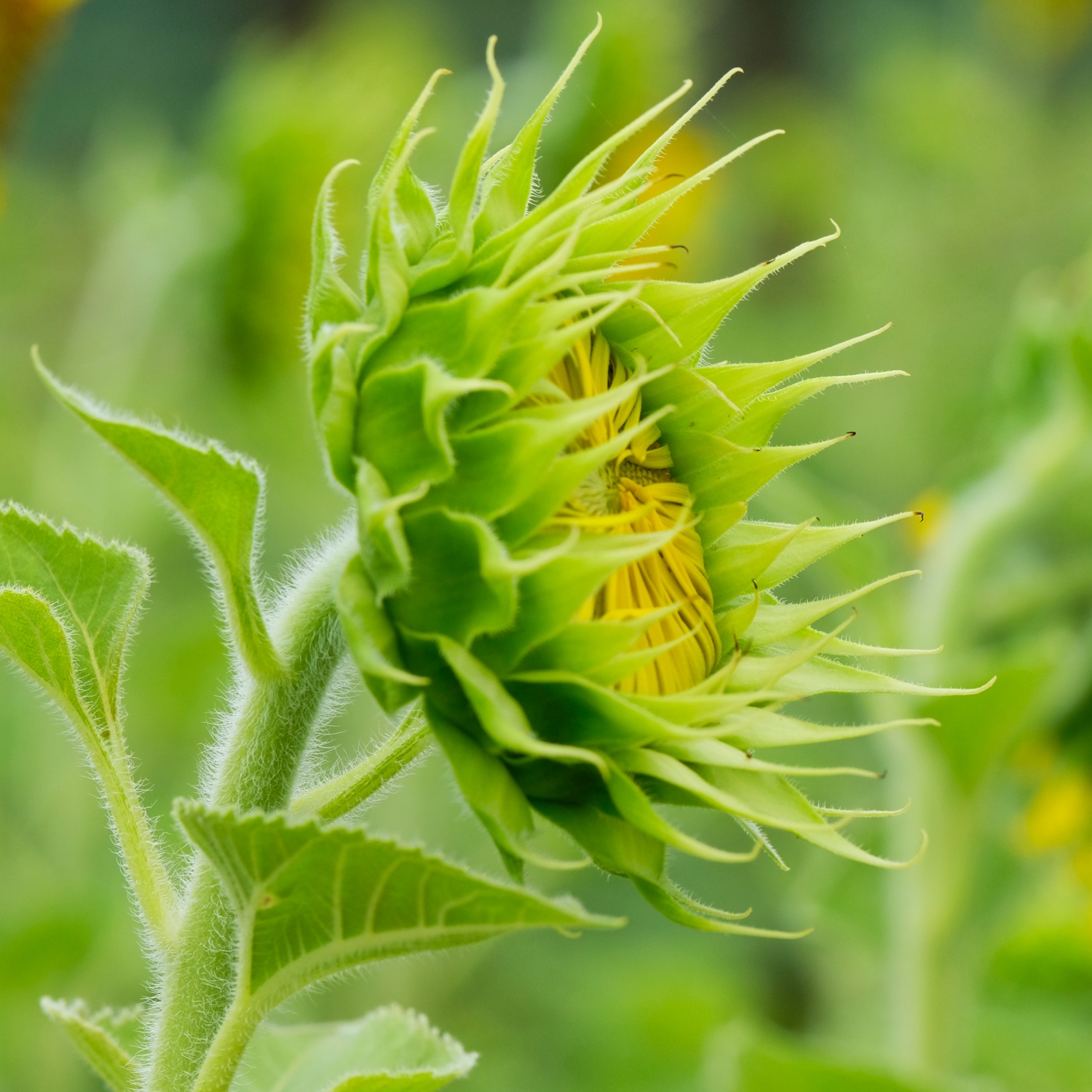 The sun was hiding behind the clouds, but that might have made the photography better . . . .
The sun was hiding behind the clouds, but that might have made the photography better . . . .
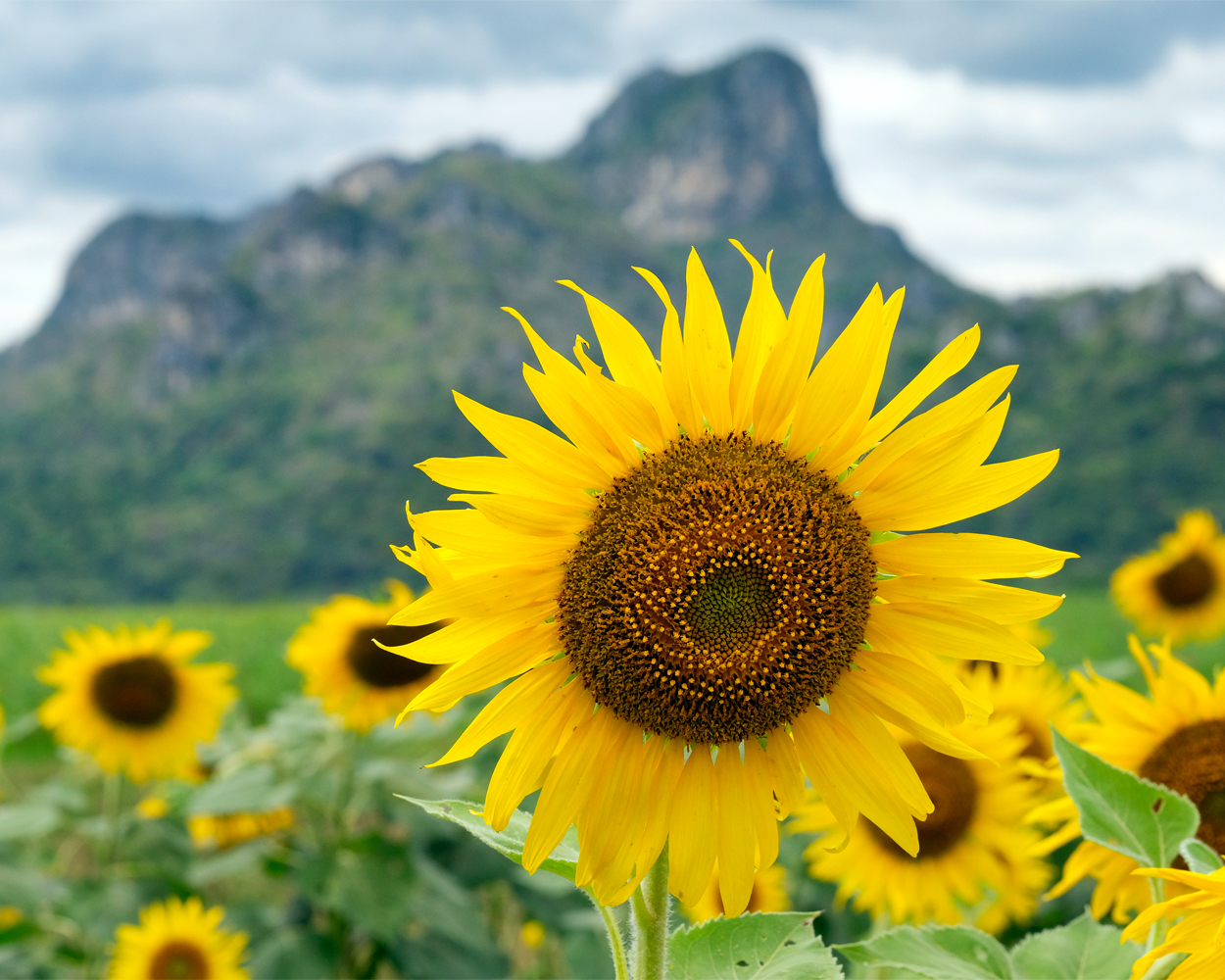 Beautiful sunflowers . . . they make you happy.
Beautiful sunflowers . . . they make you happy.
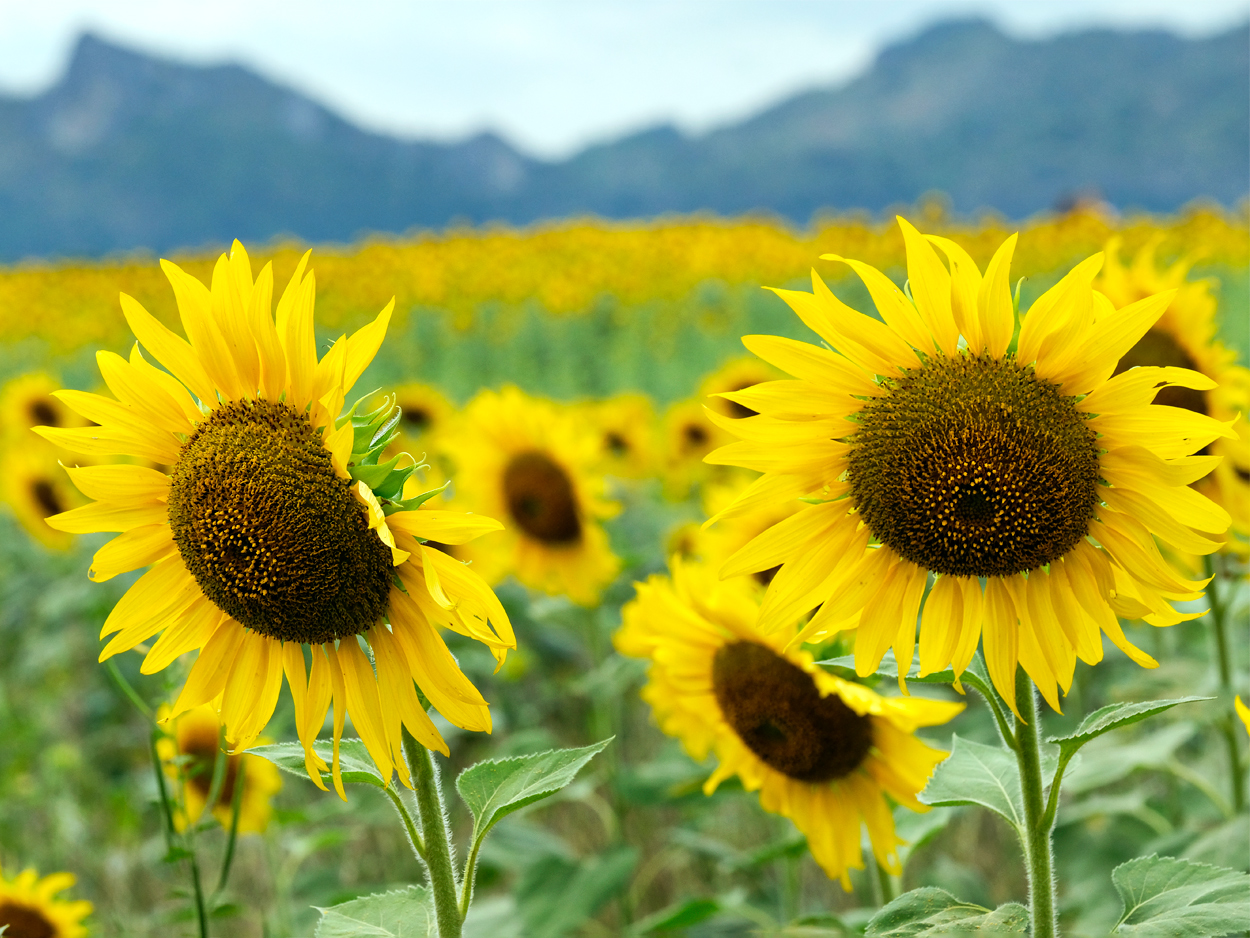 A beautiful place to be on a Monday afternoon . . .
A beautiful place to be on a Monday afternoon . . .
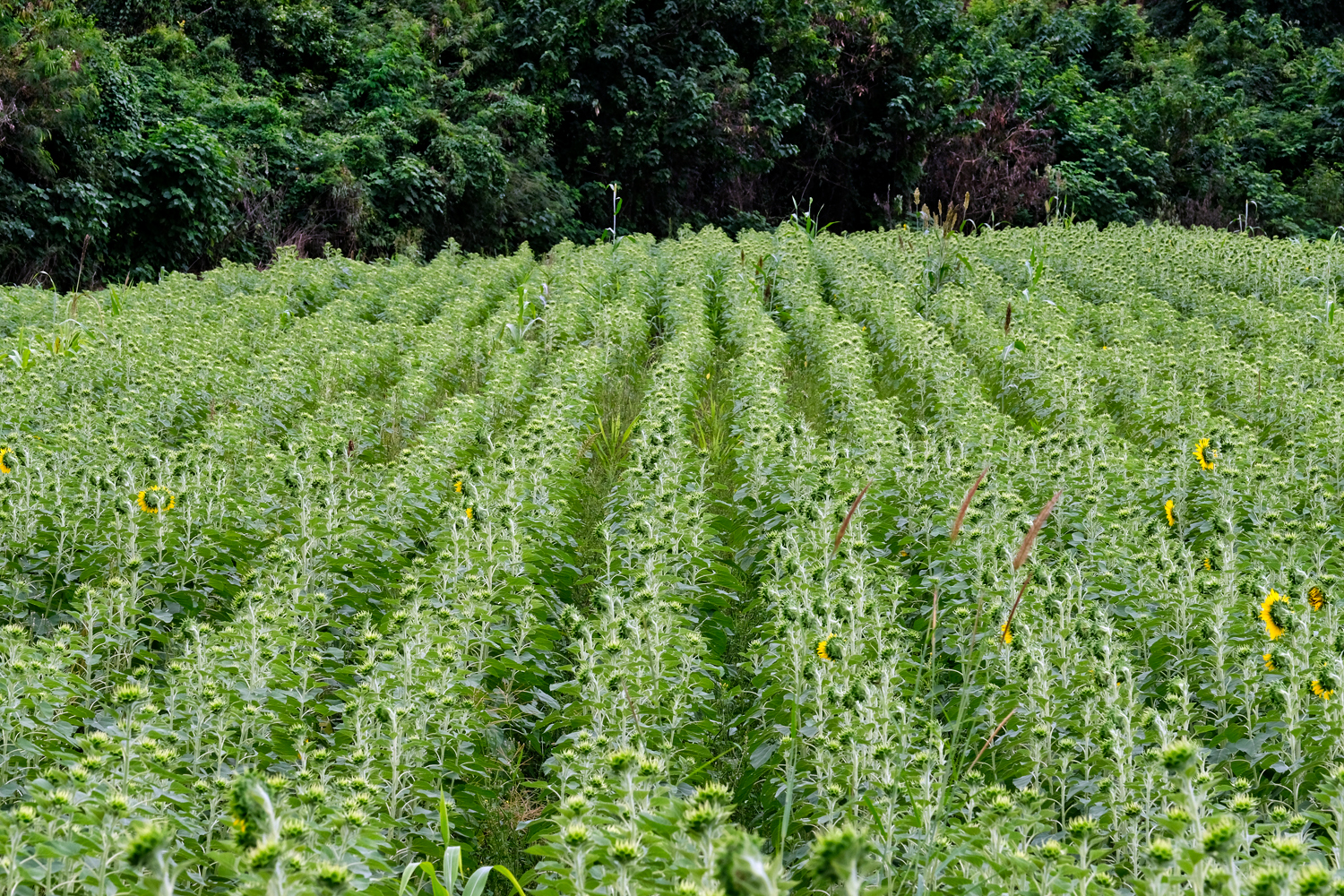 We passed by a field that had yet to flower. John, from Iowa and, like all people from Iowa, was an expert on sunflowers. He said that sunflowers have an 'internal clock' -- in other words, sunflowers planted a week after other sunflowers, will bloom one week later.
We passed by a field that had yet to flower. John, from Iowa and, like all people from Iowa, was an expert on sunflowers. He said that sunflowers have an 'internal clock' -- in other words, sunflowers planted a week after other sunflowers, will bloom one week later.
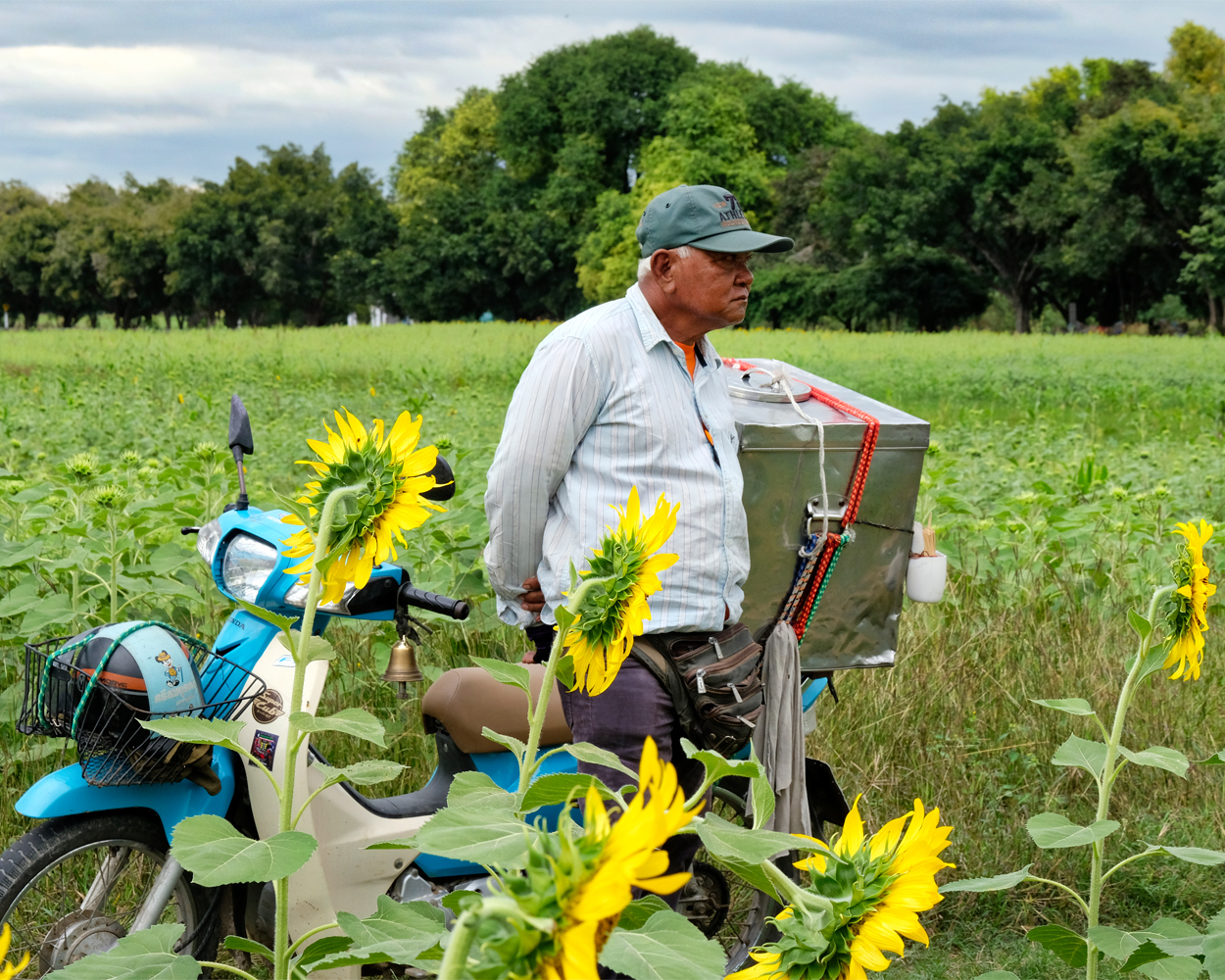 An ice cream hawker found his way to here the Thai tourists were . . . as we had.
An ice cream hawker found his way to here the Thai tourists were . . . as we had.
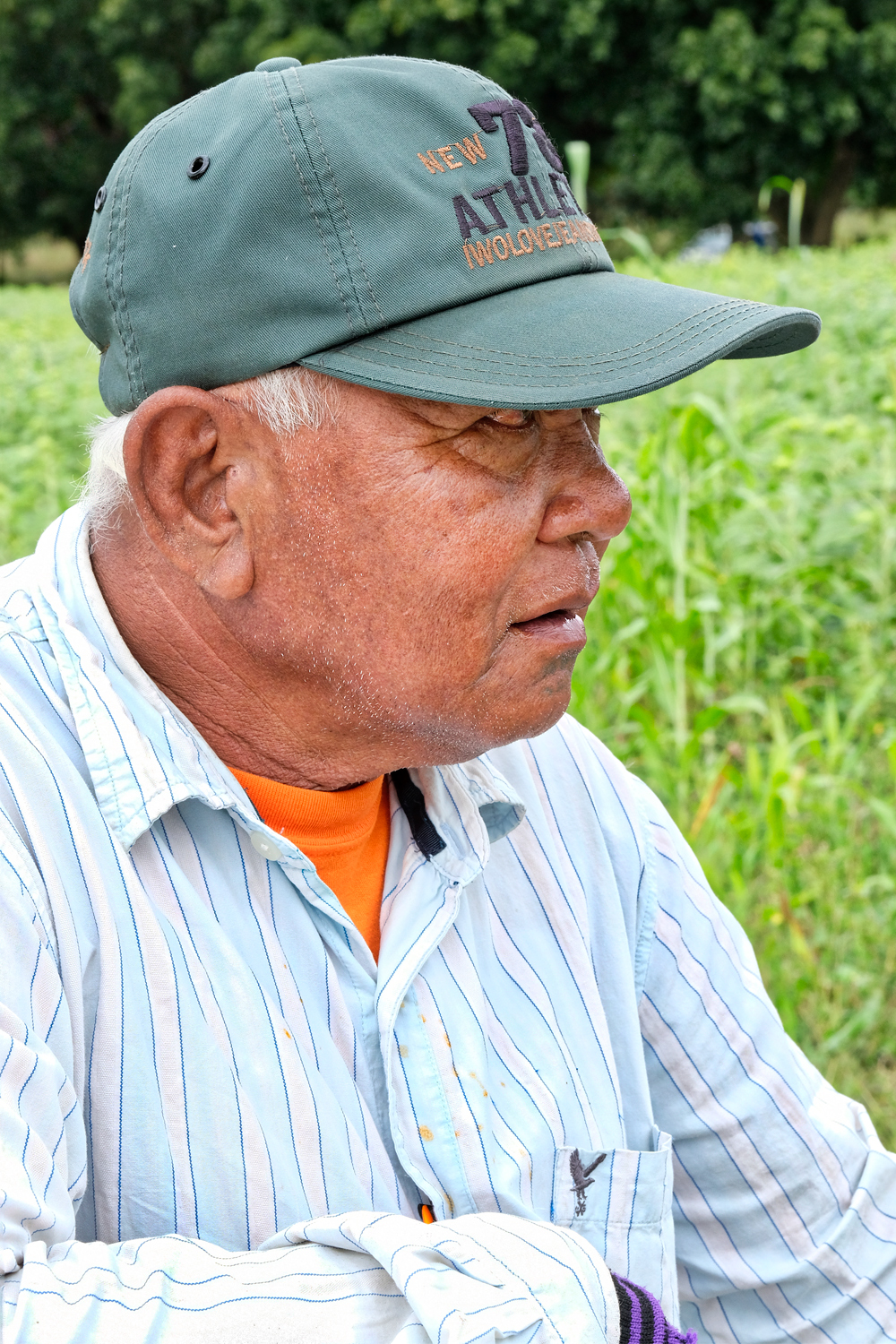 John bought an ice cream sandwich . . . literally, a slab of ice cream in between slices of bread. The hawker consented to this photograph.
John bought an ice cream sandwich . . . literally, a slab of ice cream in between slices of bread. The hawker consented to this photograph.
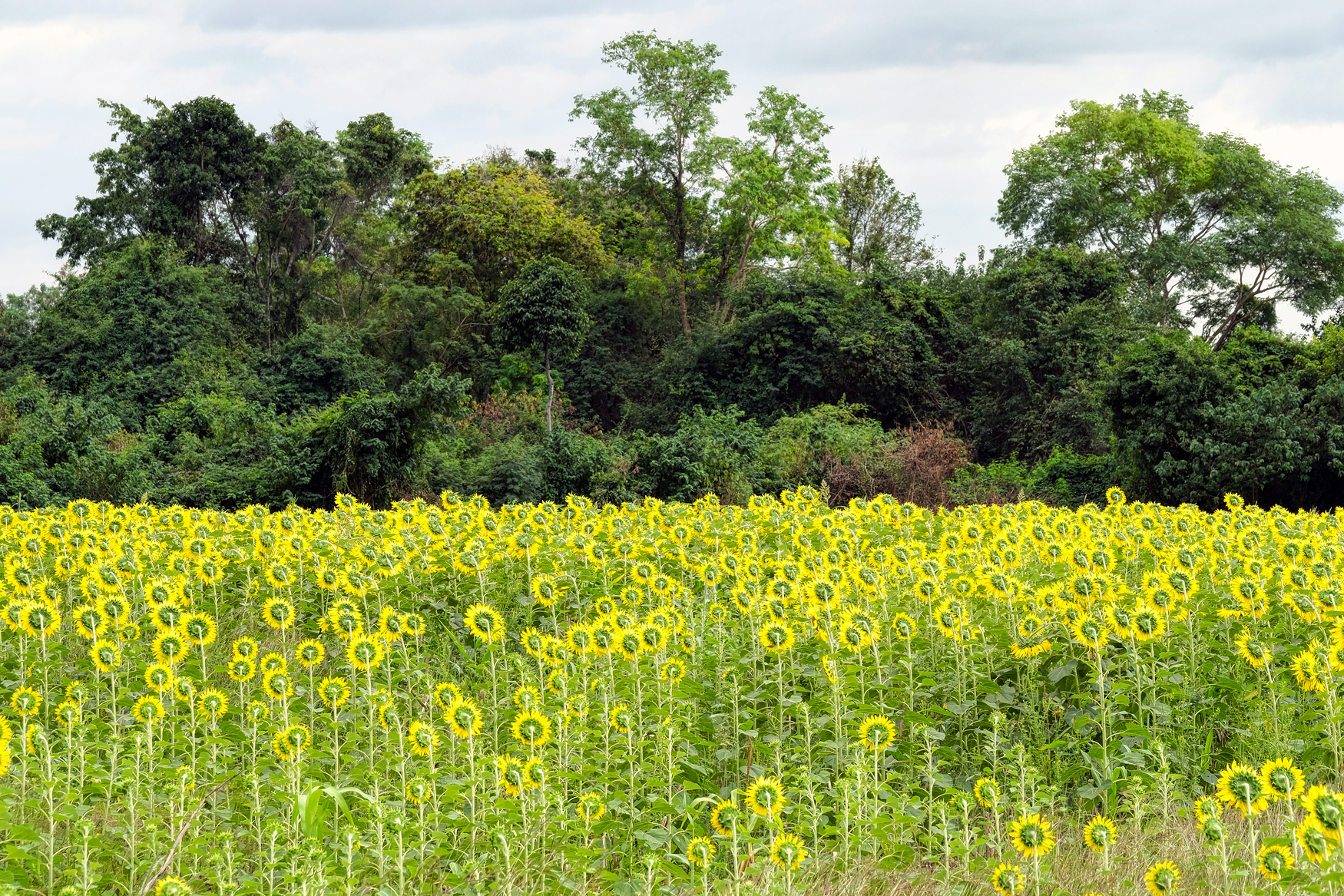 We found a larger field of blooms.
We found a larger field of blooms.
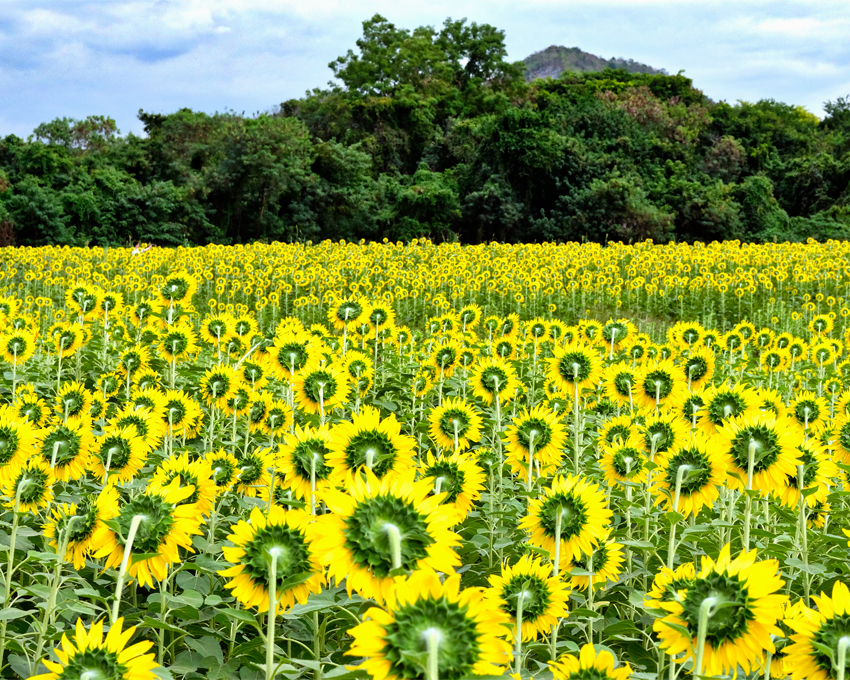 This is more like it.
This is more like it.
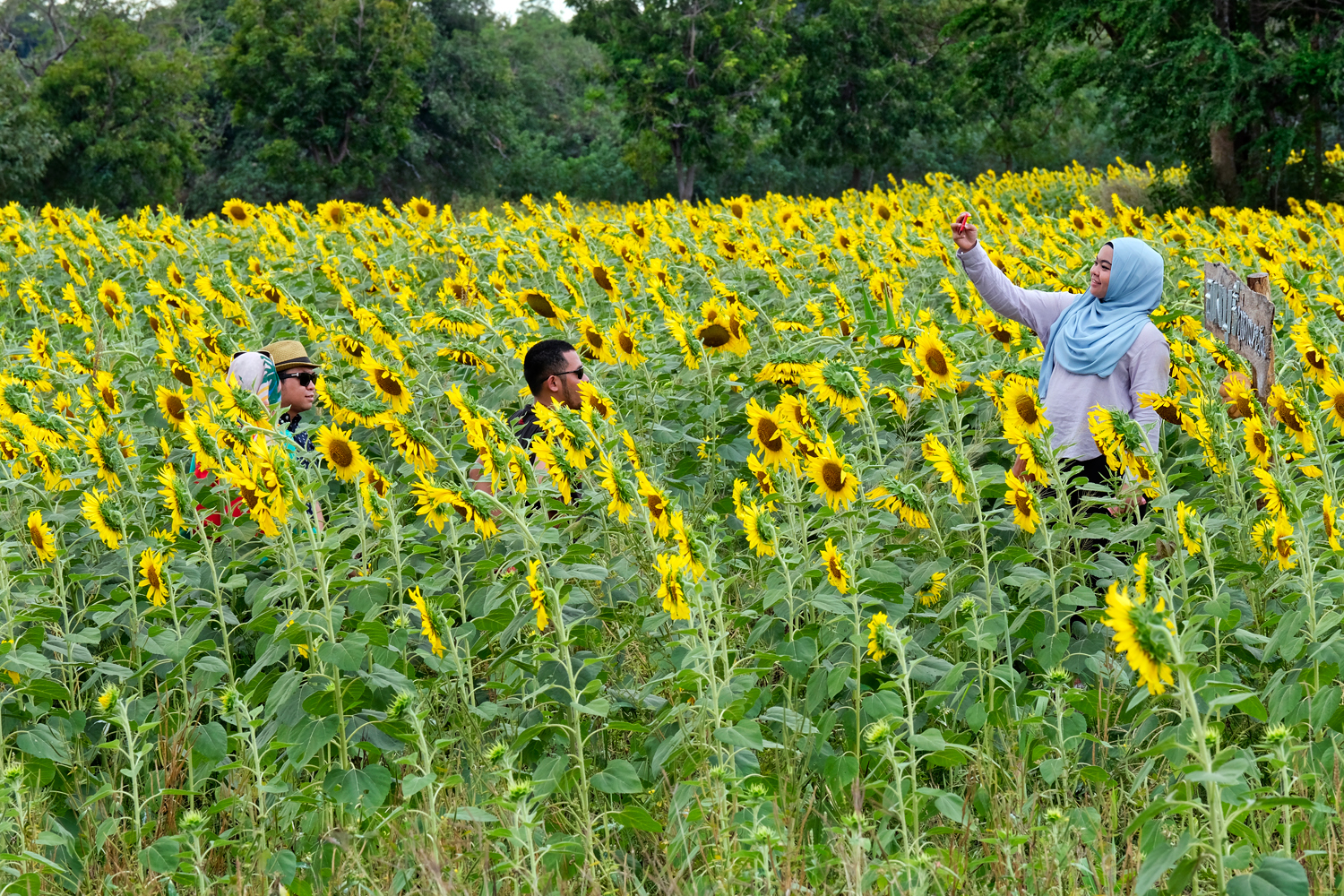 We were not alone, of course. Sunflower fields attract people like moths to a flame.
We were not alone, of course. Sunflower fields attract people like moths to a flame.
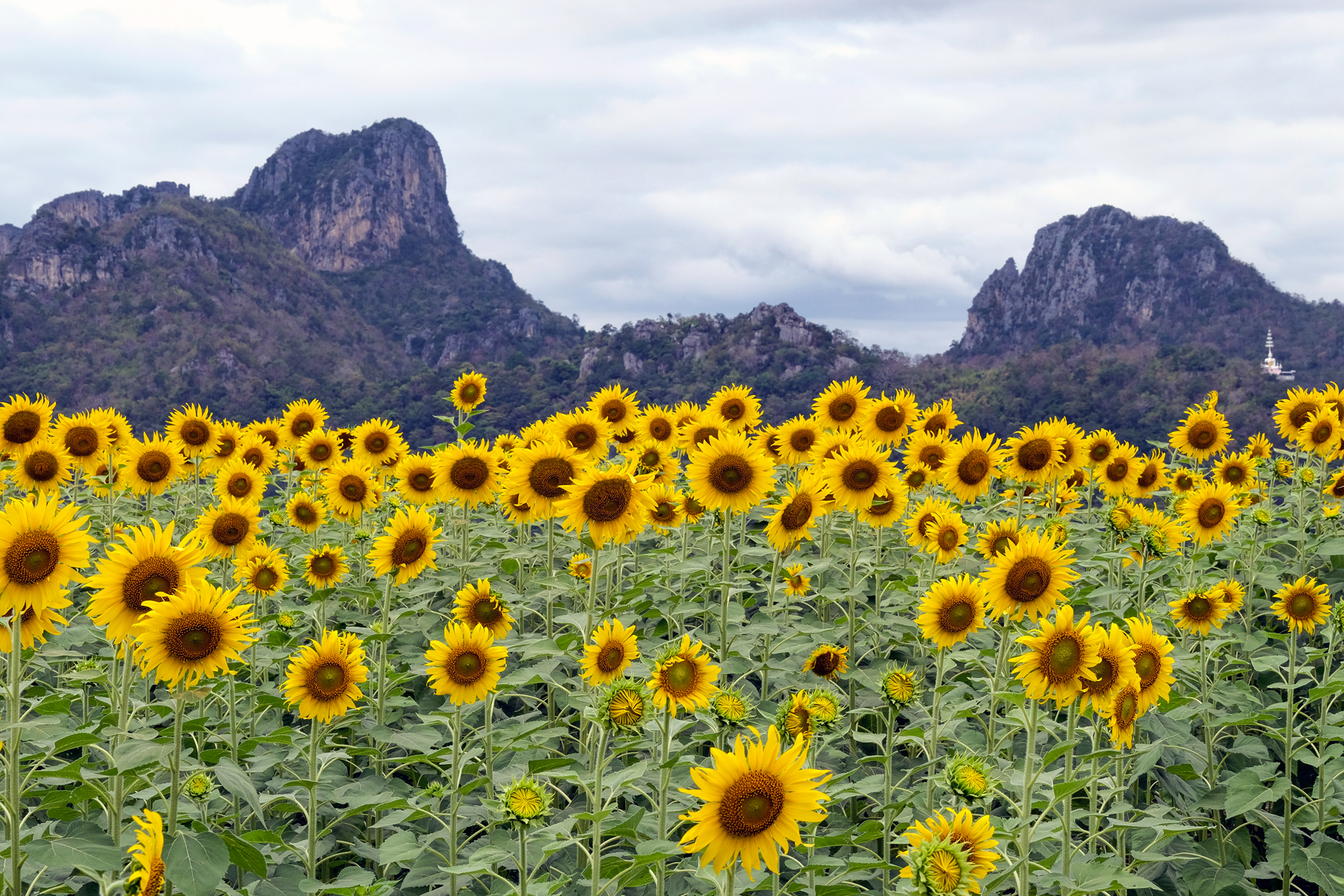 A gorgeous place to find a sunflower field . . . below the sharp hills with a Buddhist temple perched high up on a rise.
A gorgeous place to find a sunflower field . . . below the sharp hills with a Buddhist temple perched high up on a rise.
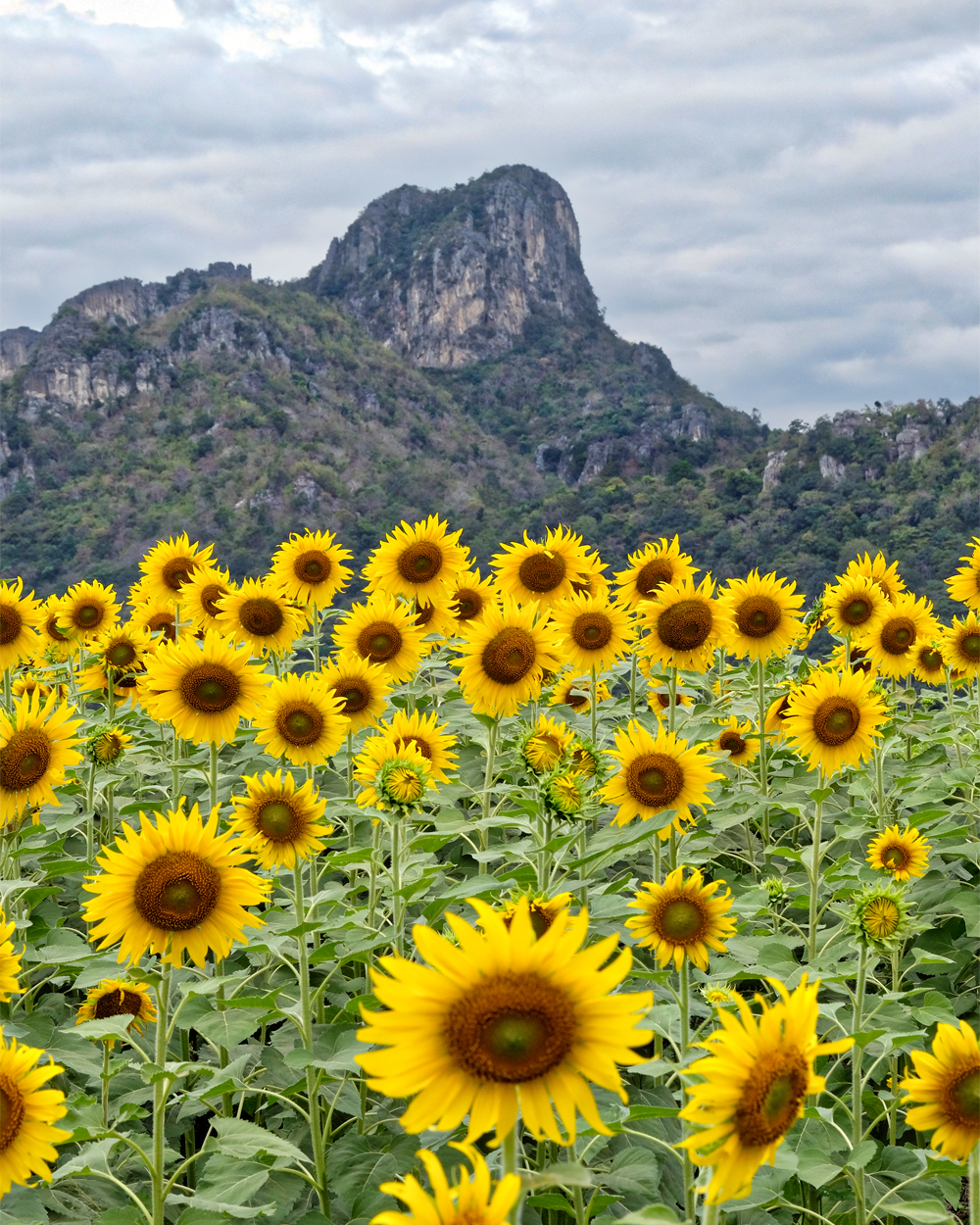 The light was starting to fade as we headed out of the beautiful fields . . . we had a hilltop Buddha image to get to.
The light was starting to fade as we headed out of the beautiful fields . . . we had a hilltop Buddha image to get to.
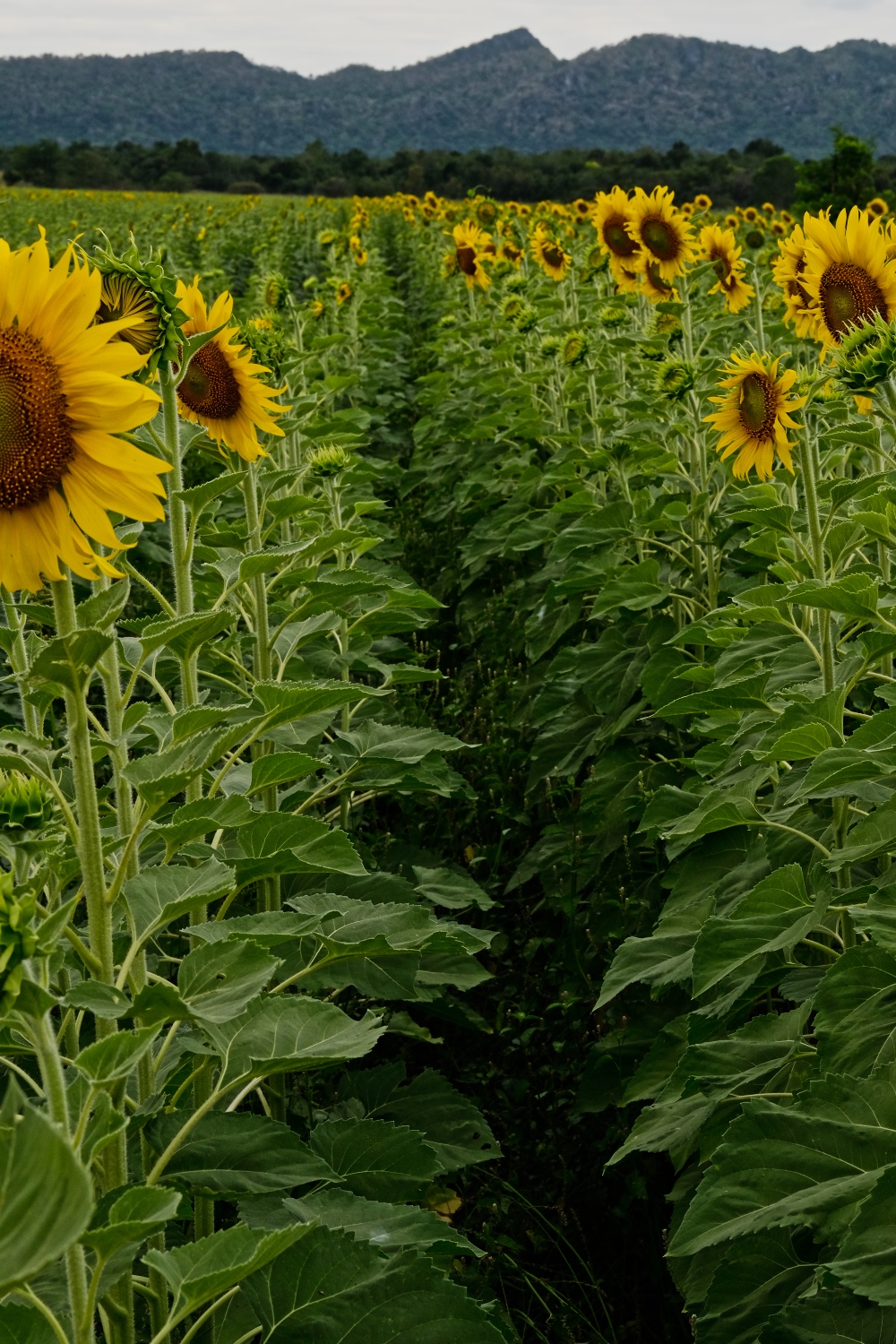 Rows and rows of sunflowers popping in and out of the sunlight.
Rows and rows of sunflowers popping in and out of the sunlight.
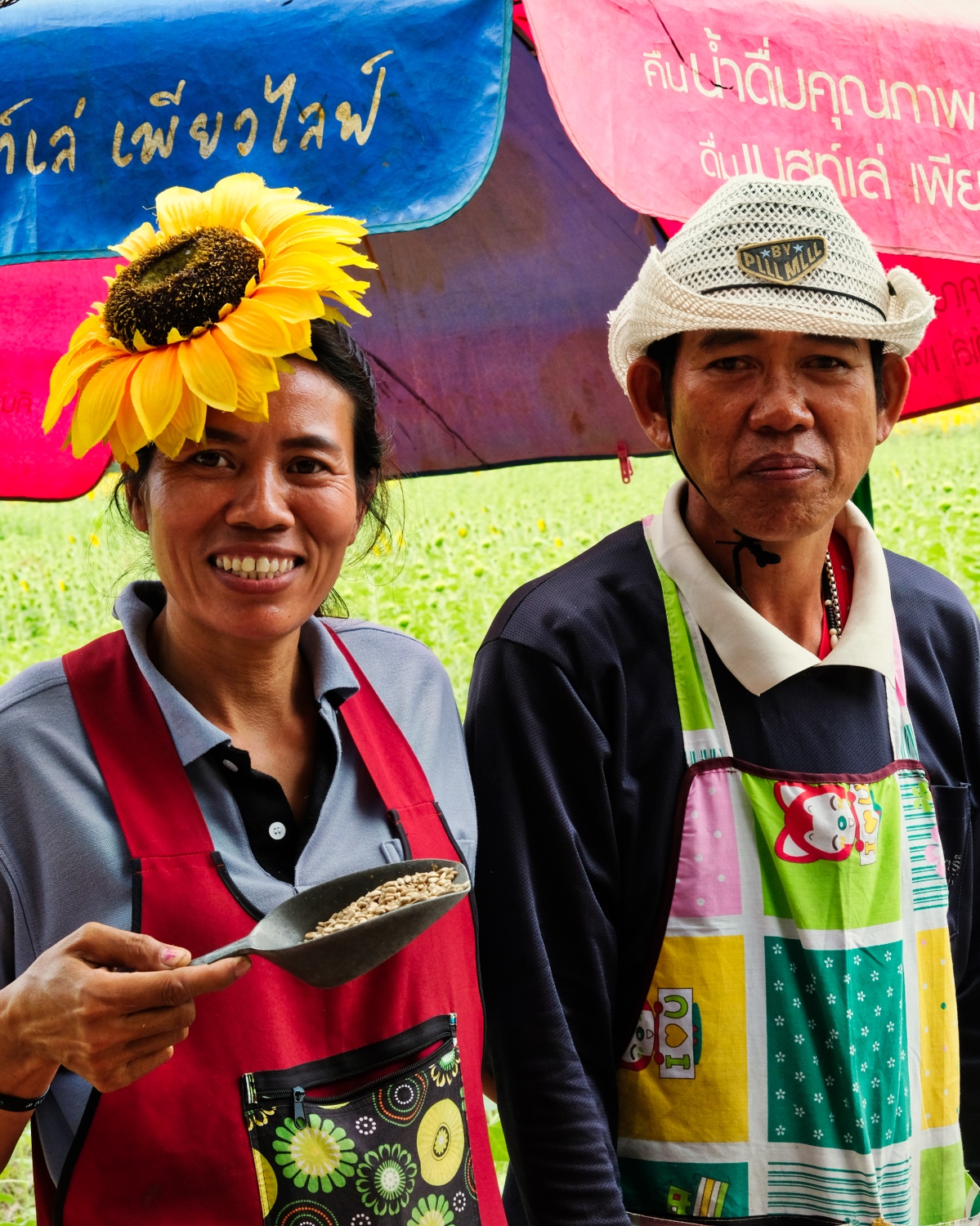 This sweet, and nutty, couple were selling freshly salted and roasted sunflower seeds. I bought a kilo (they were delicious).
This sweet, and nutty, couple were selling freshly salted and roasted sunflower seeds. I bought a kilo (they were delicious).
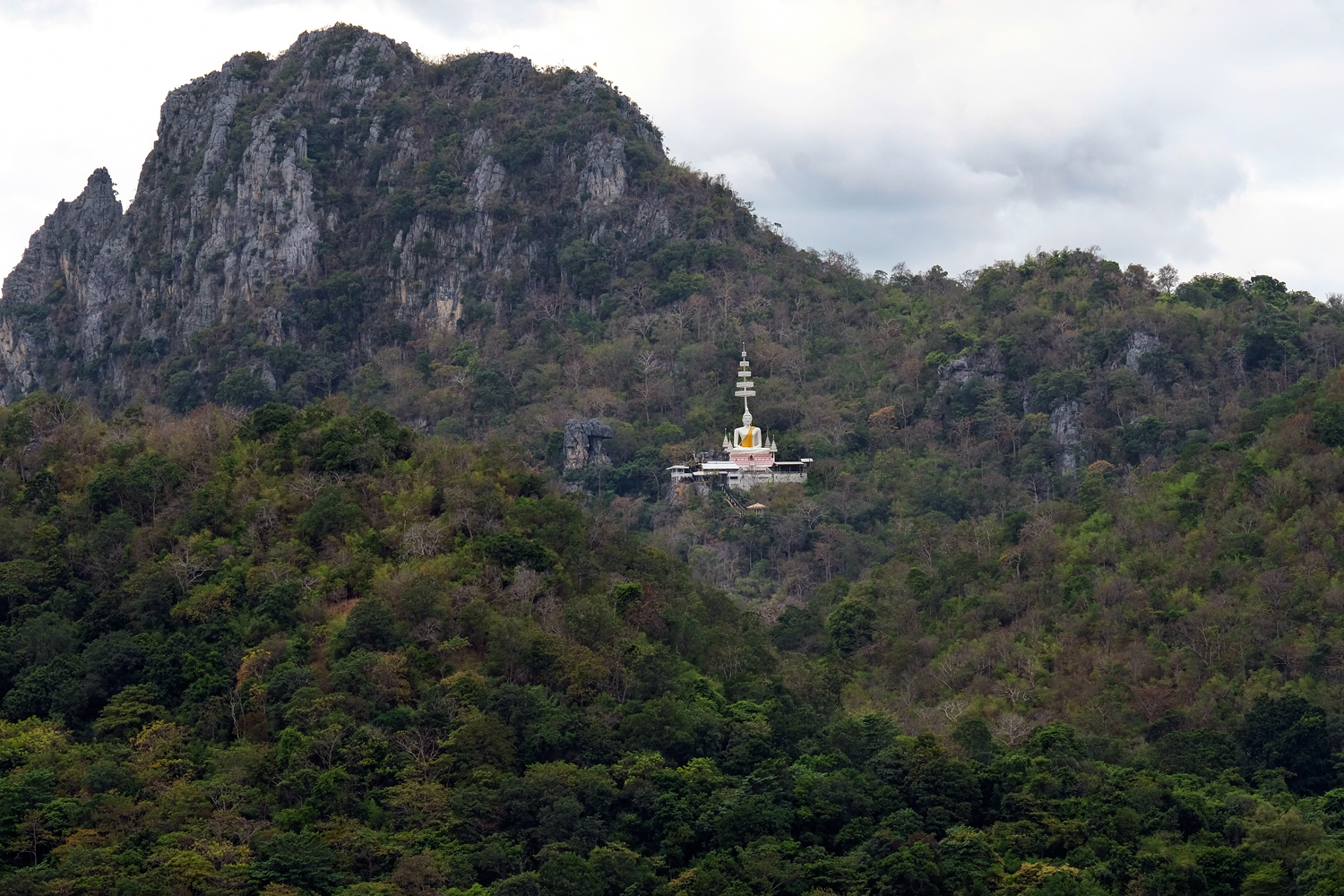 And off we went to find the hillside Buddha.
And off we went to find the hillside Buddha.
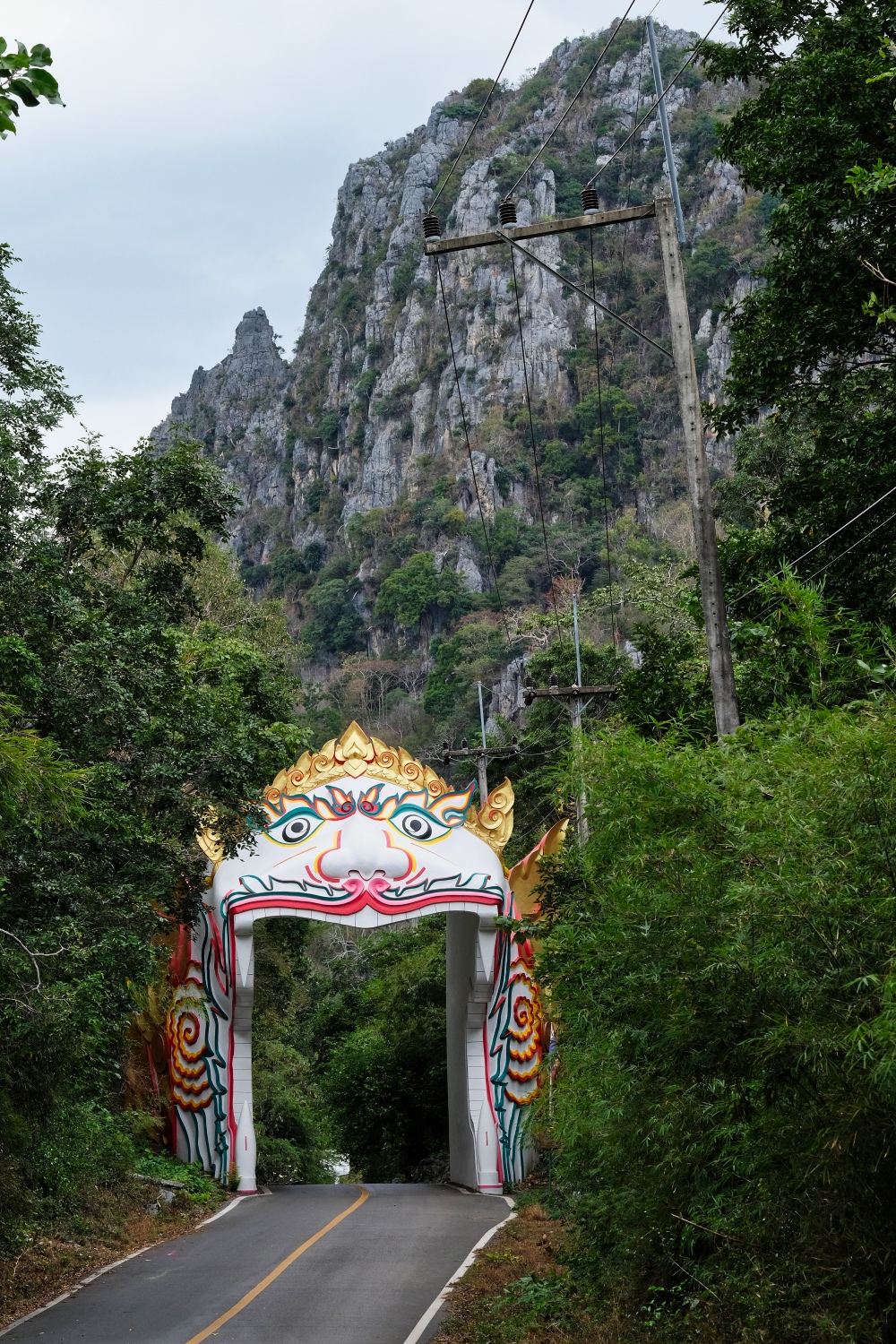 This MUST be the road!
This MUST be the road!
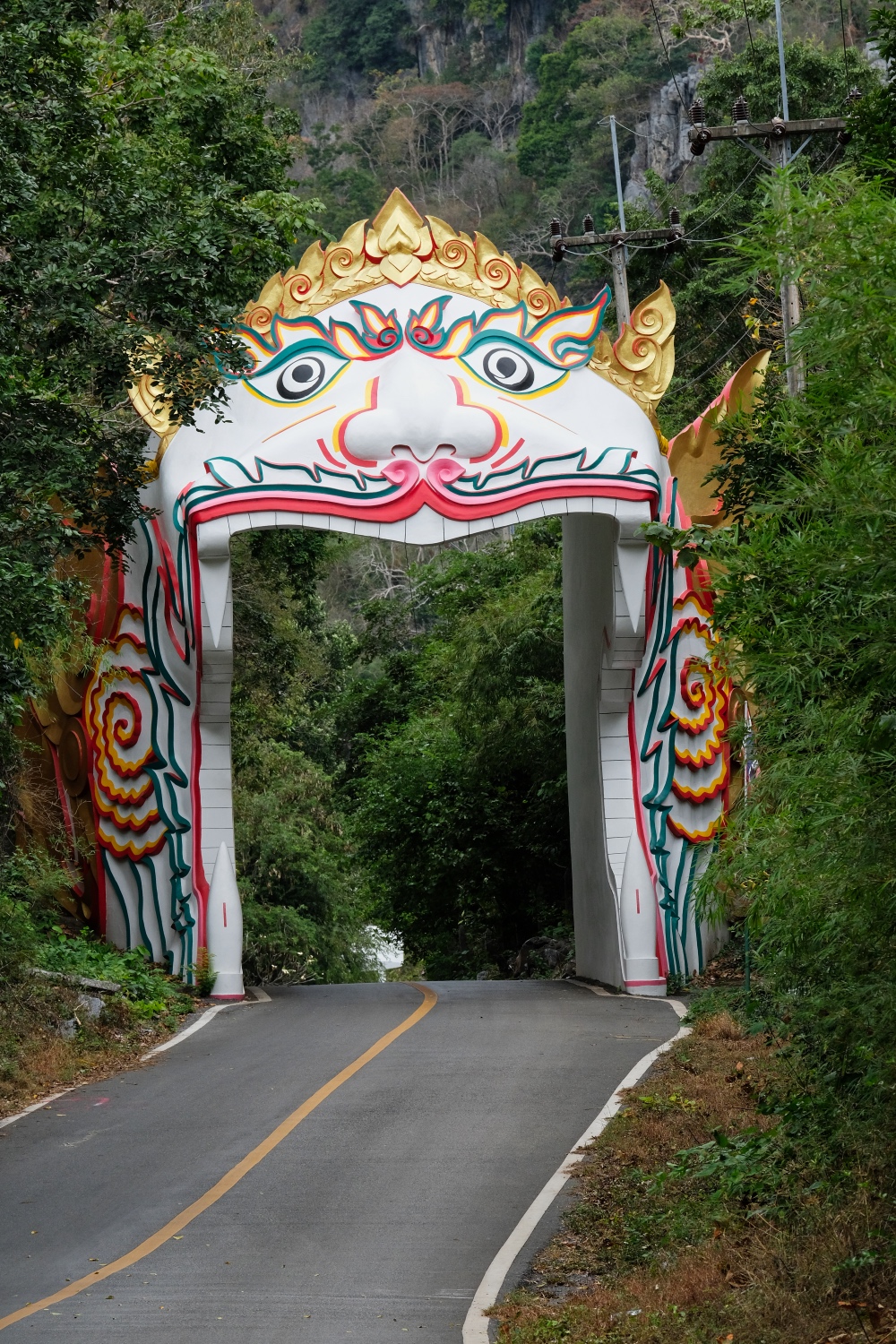 Yes, all the roads I have ever taken have led me to this place . . . the highway to hell!
Yes, all the roads I have ever taken have led me to this place . . . the highway to hell!
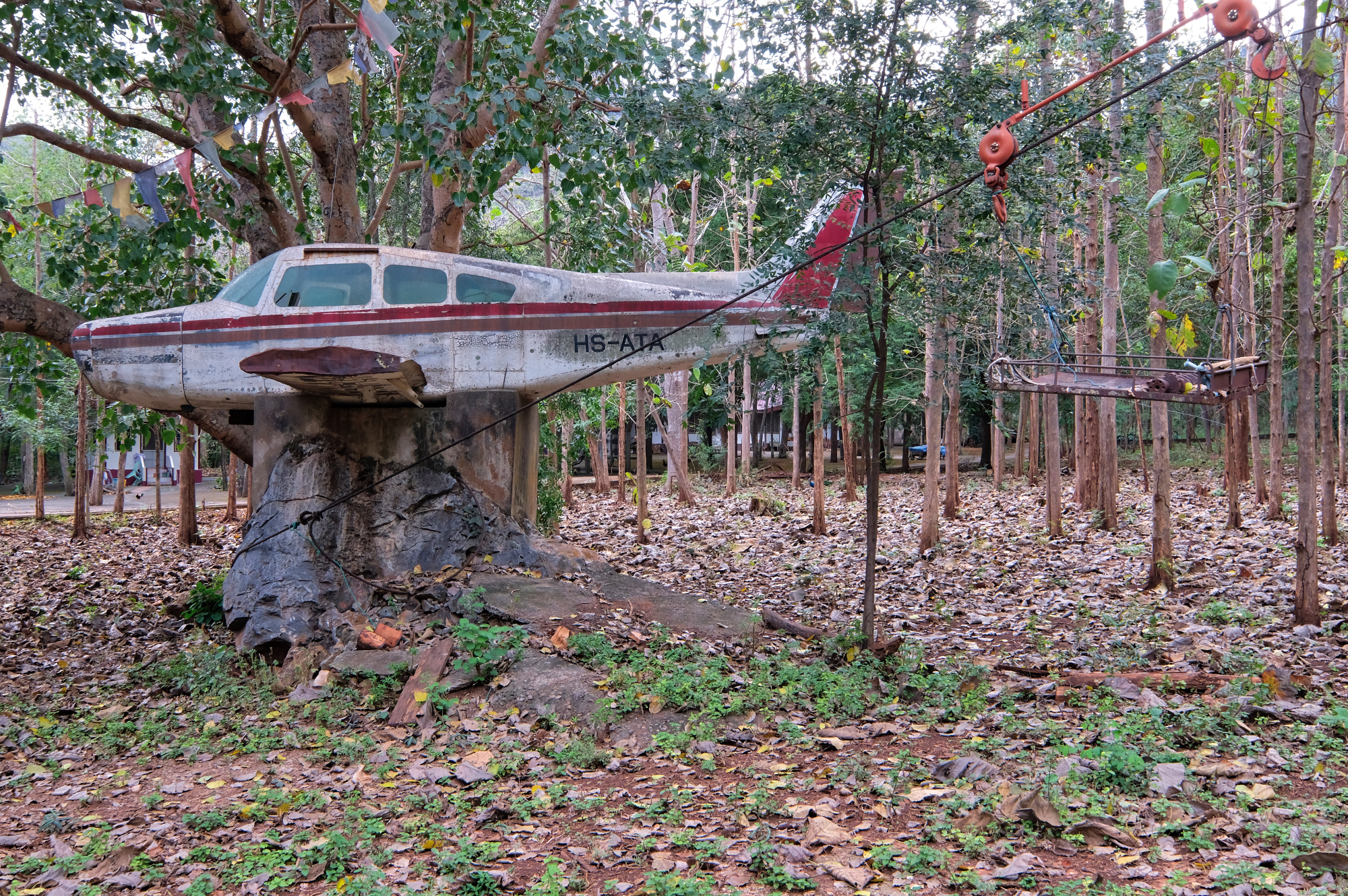 The Peacock Temple was . . . . very interesting, that is for sure.
The Peacock Temple was . . . . very interesting, that is for sure.
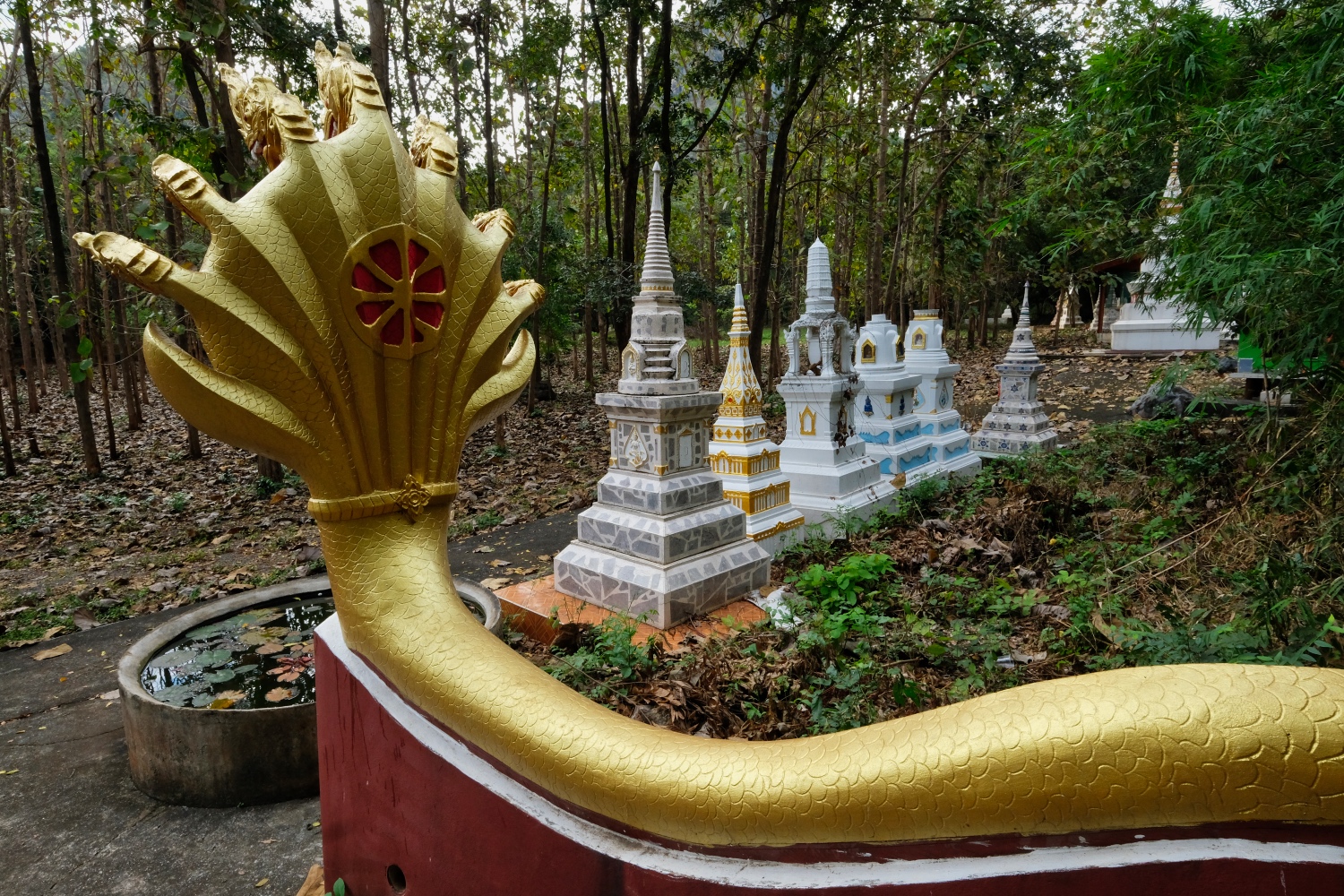 Chedis . . . and the snake-railed steps up to the big Buddha on the hill.
Chedis . . . and the snake-railed steps up to the big Buddha on the hill.
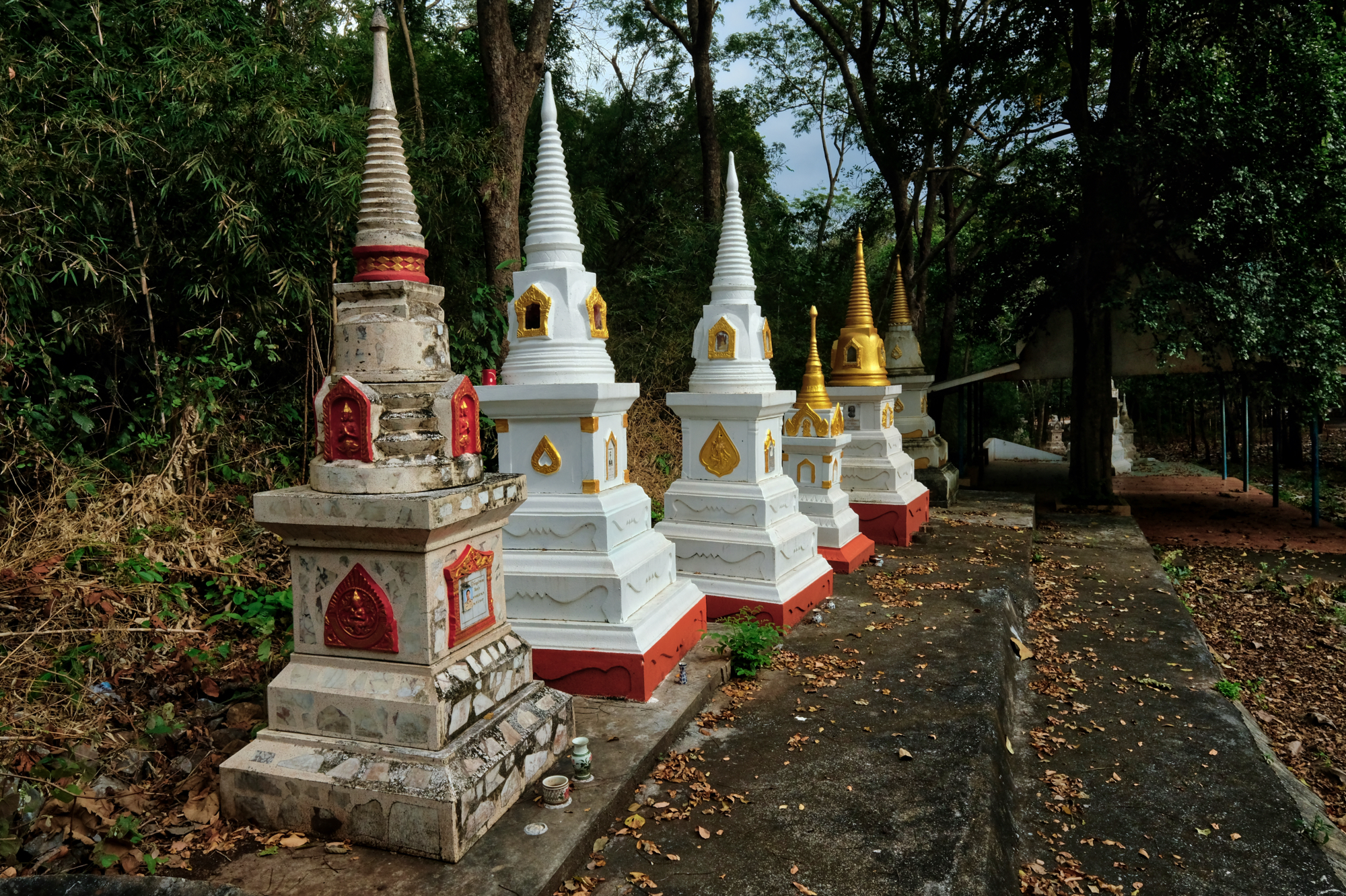 I love these rural Wats . . . in nature and not overly tended.
I love these rural Wats . . . in nature and not overly tended.
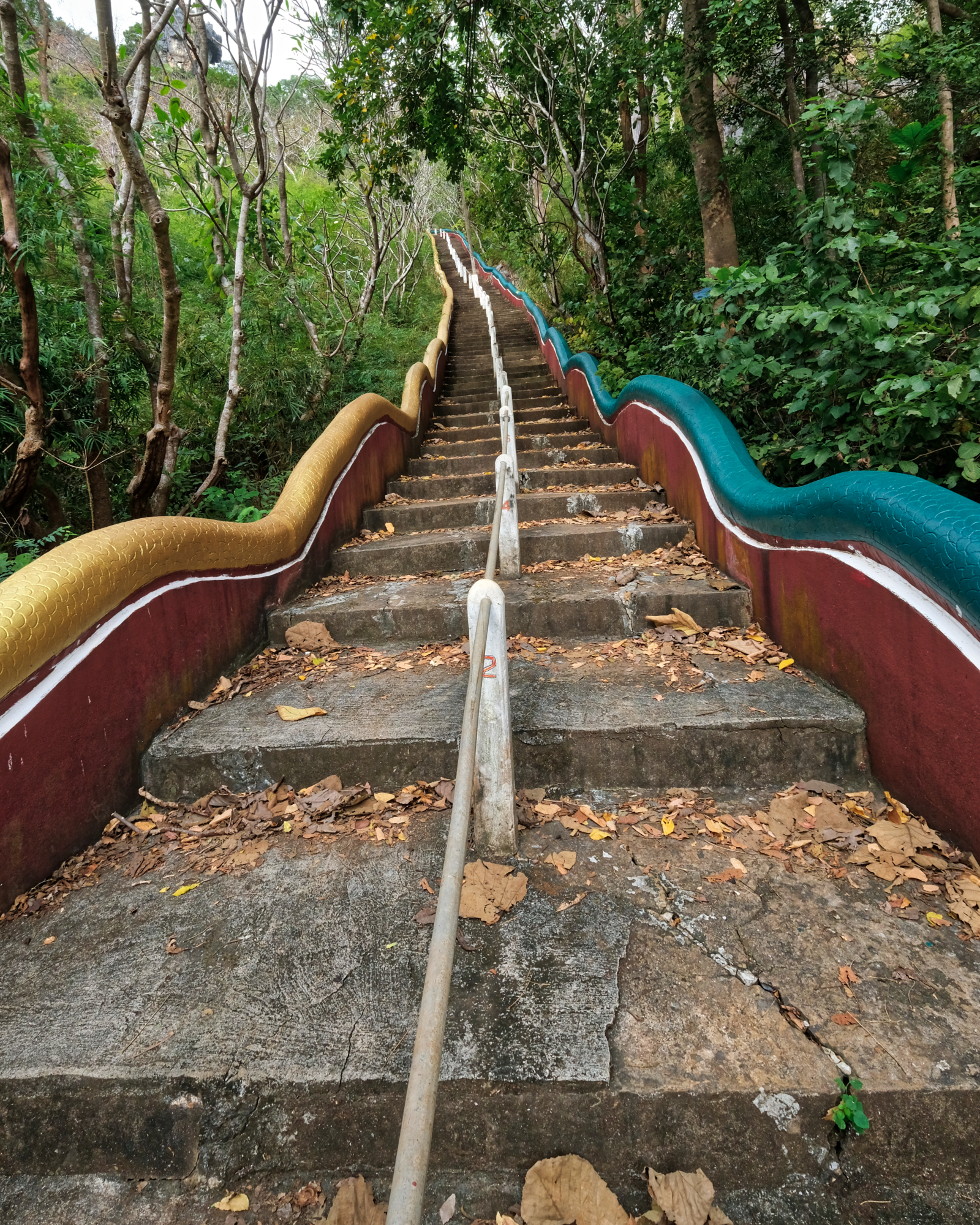 And so we started the climb up the temple stairs . . .
And so we started the climb up the temple stairs . . .
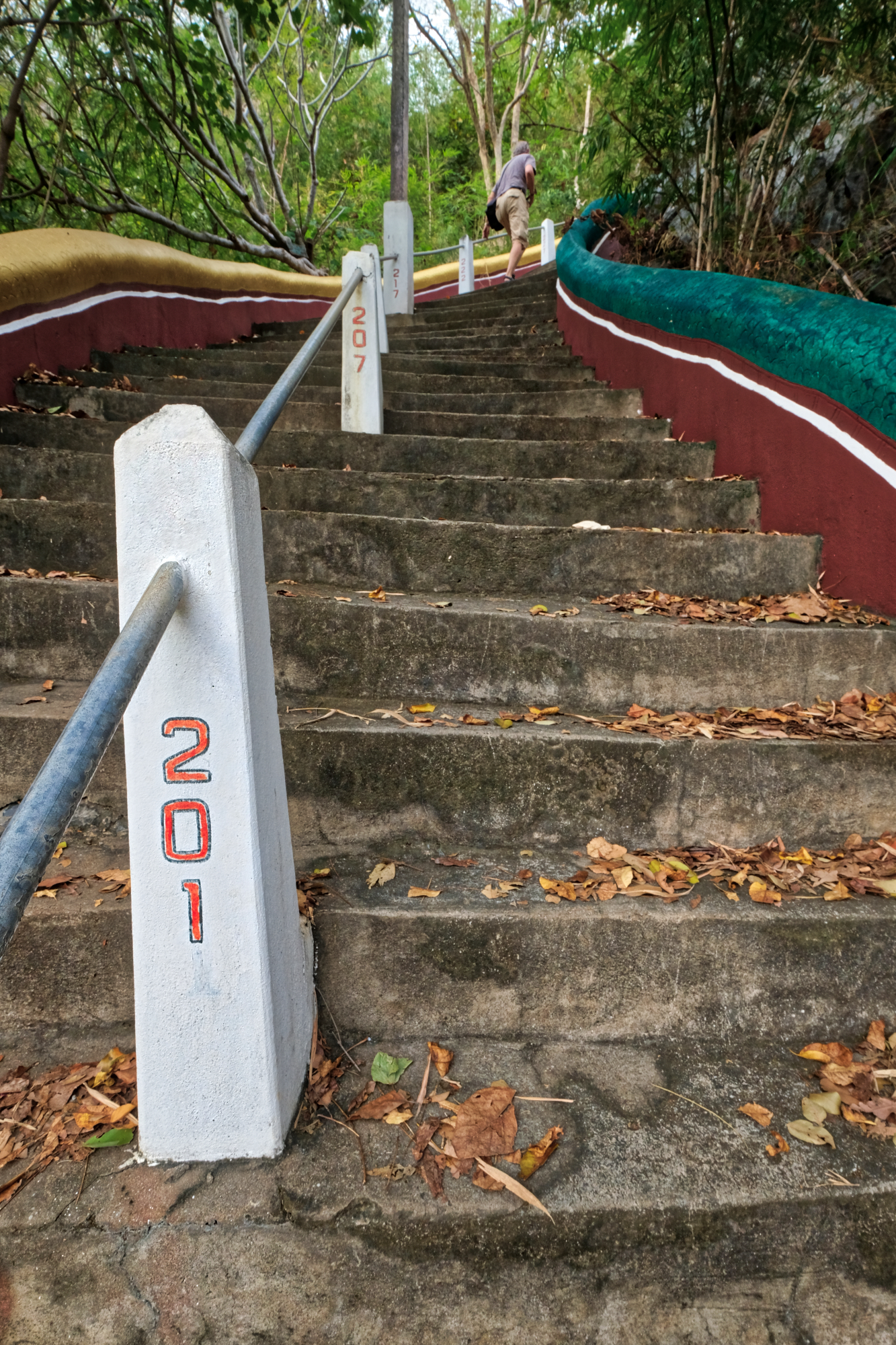 And up and up we went. The stairs were numbered, so we didn't have to count them ourselves. However, we did not know how many total steps there were going to be!
And up and up we went. The stairs were numbered, so we didn't have to count them ourselves. However, we did not know how many total steps there were going to be!
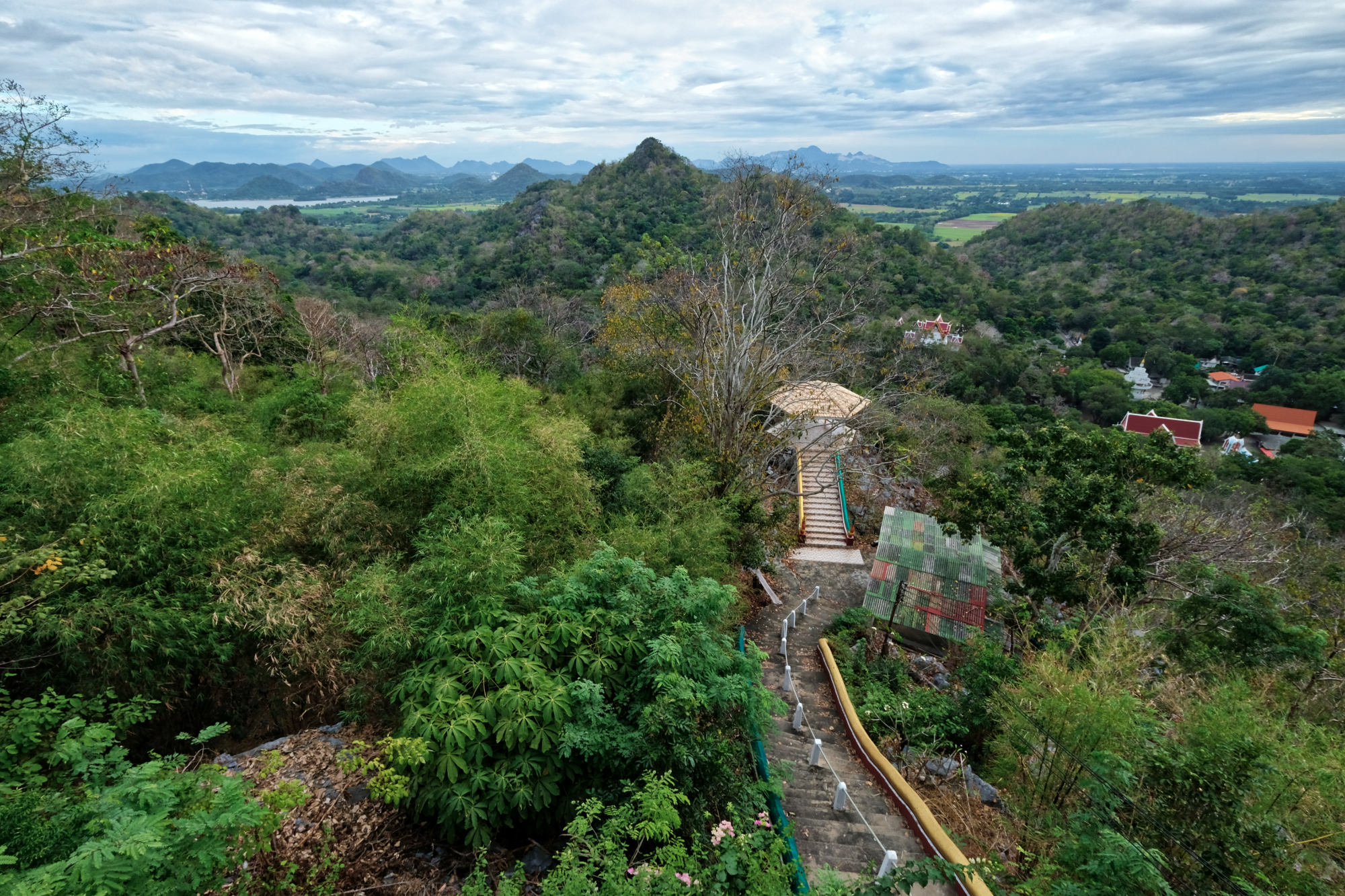 The walk to the top (436 steps in all) was well worth it . . . the view across the Thai landscape was remarkable!
The walk to the top (436 steps in all) was well worth it . . . the view across the Thai landscape was remarkable!
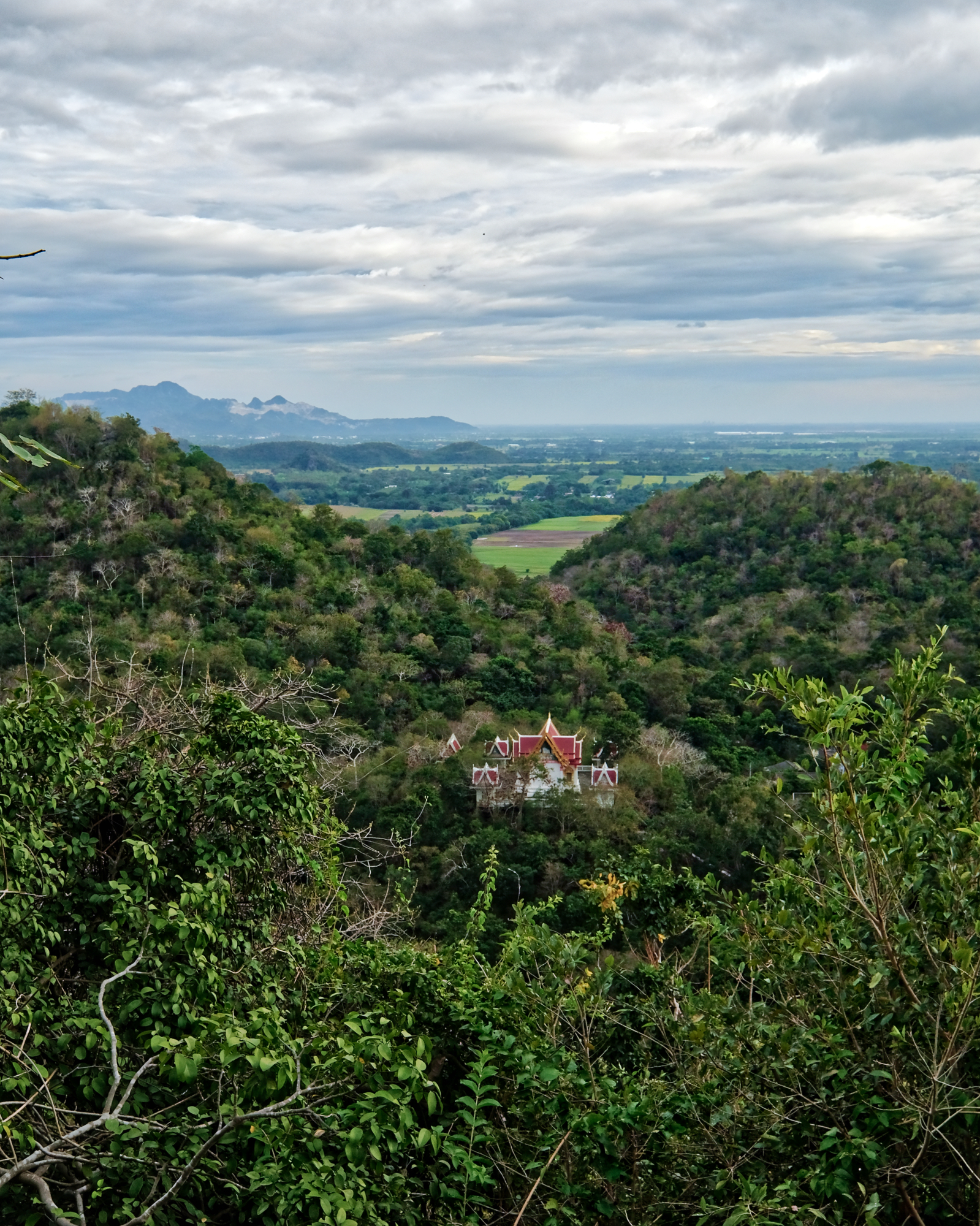 The Peacock Temple below.
The Peacock Temple below.
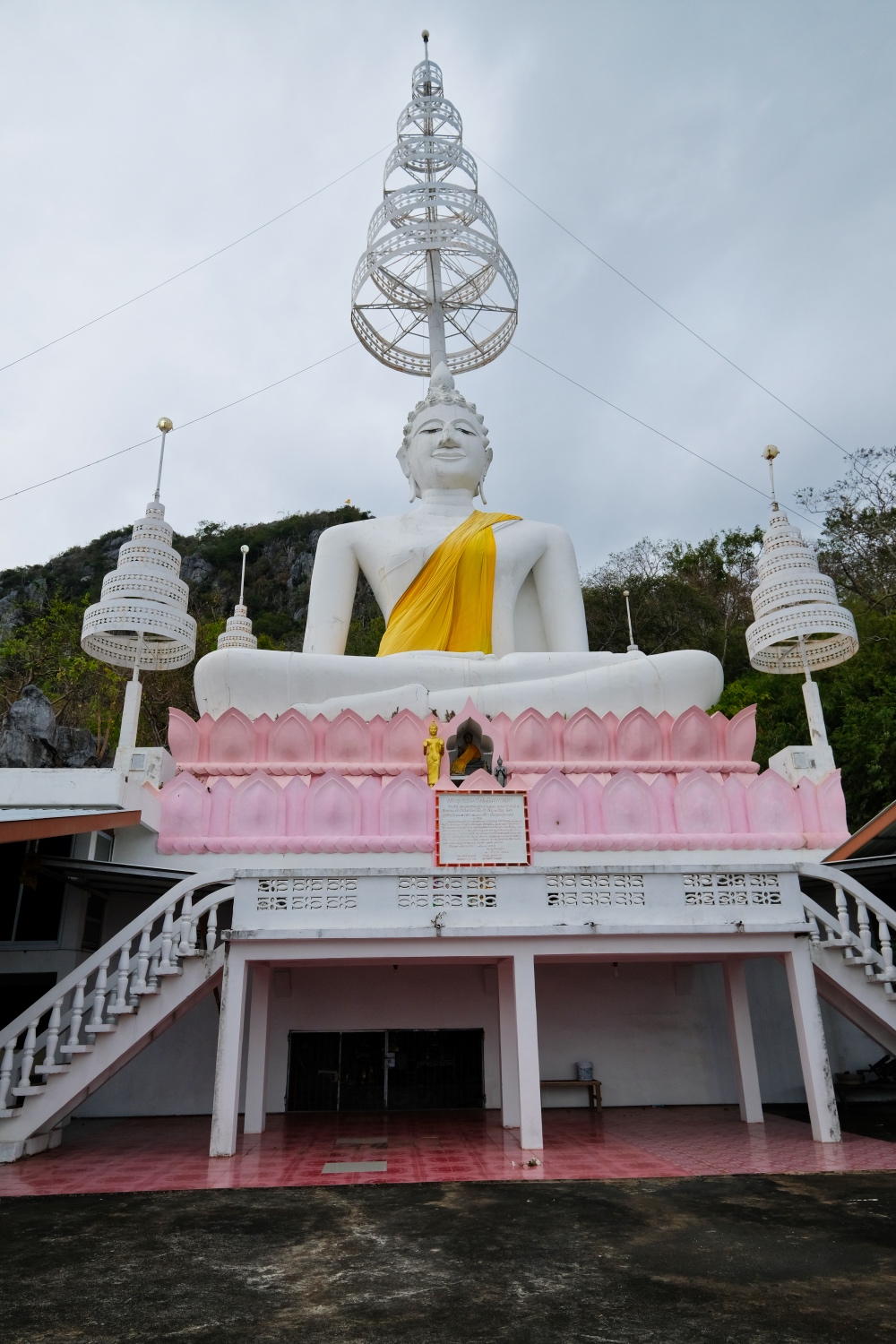 What we came to see: a giant Buddha image. Very beautiful.
What we came to see: a giant Buddha image. Very beautiful.
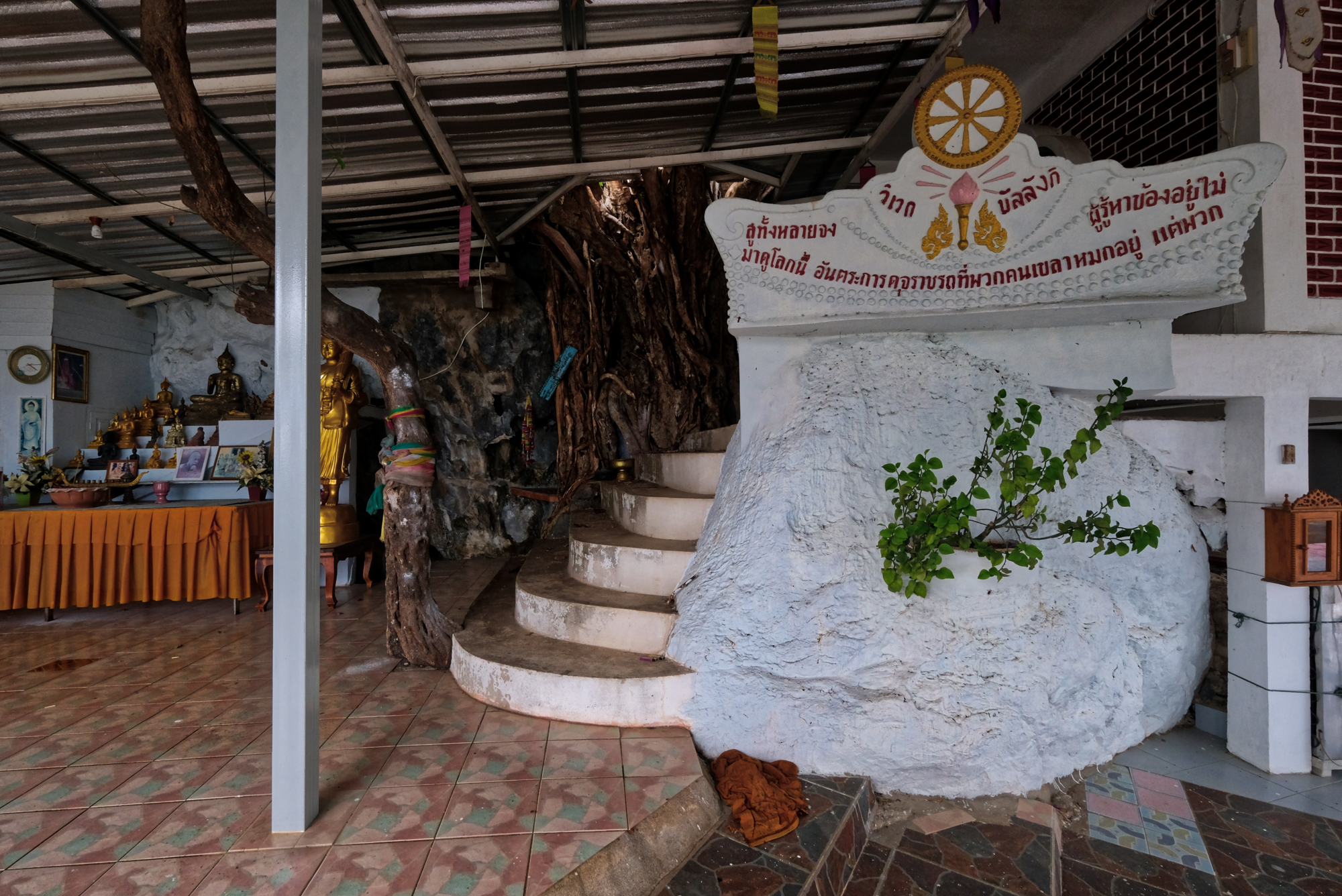 There were several altars in and around the top of the climb . . . as well as some tunnels that went inside the mountain . . . we didn't explore these.
There were several altars in and around the top of the climb . . . as well as some tunnels that went inside the mountain . . . we didn't explore these.
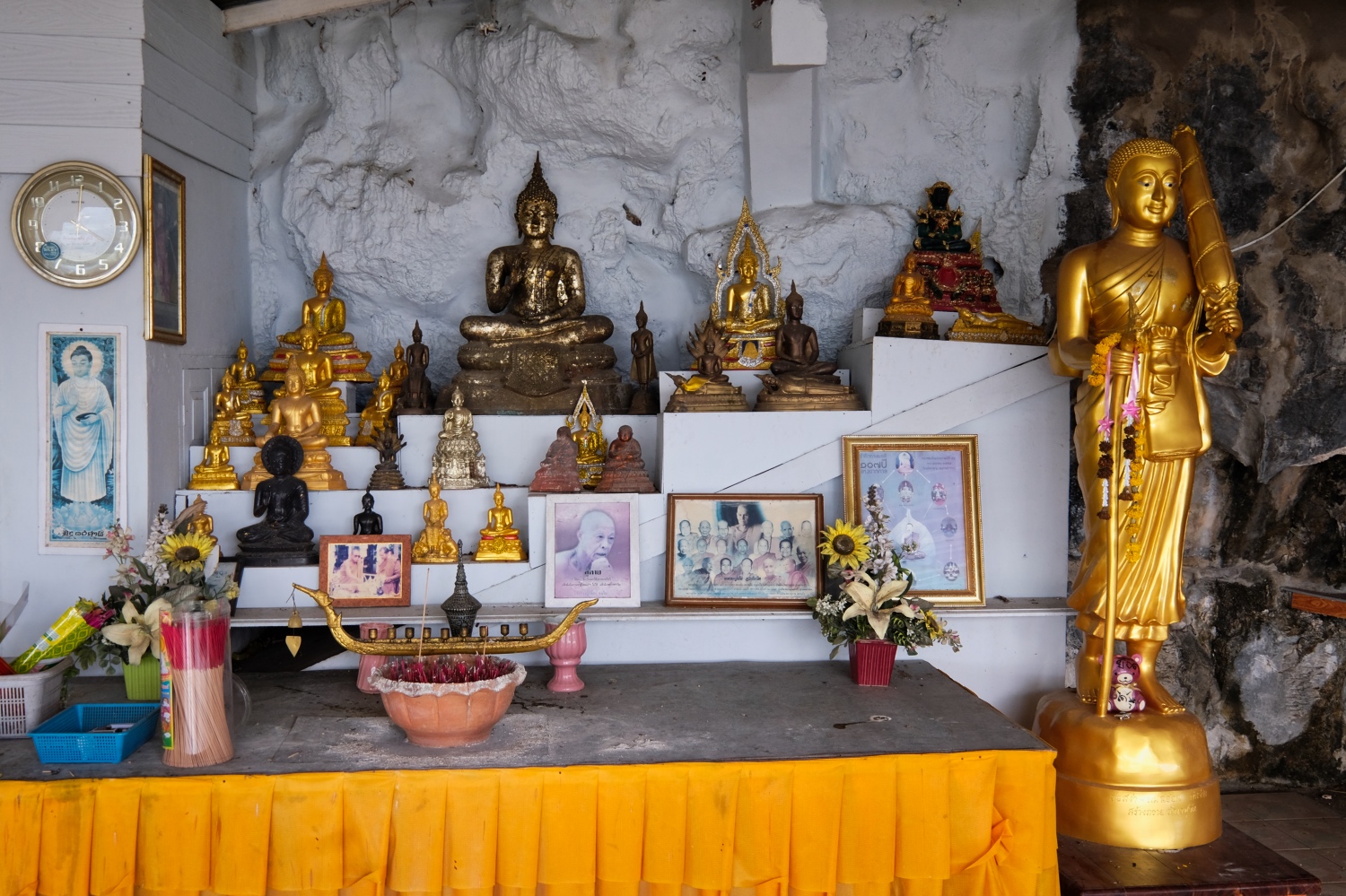 4:00pm at the top of a hill enjoying the view and the various altars.
4:00pm at the top of a hill enjoying the view and the various altars.
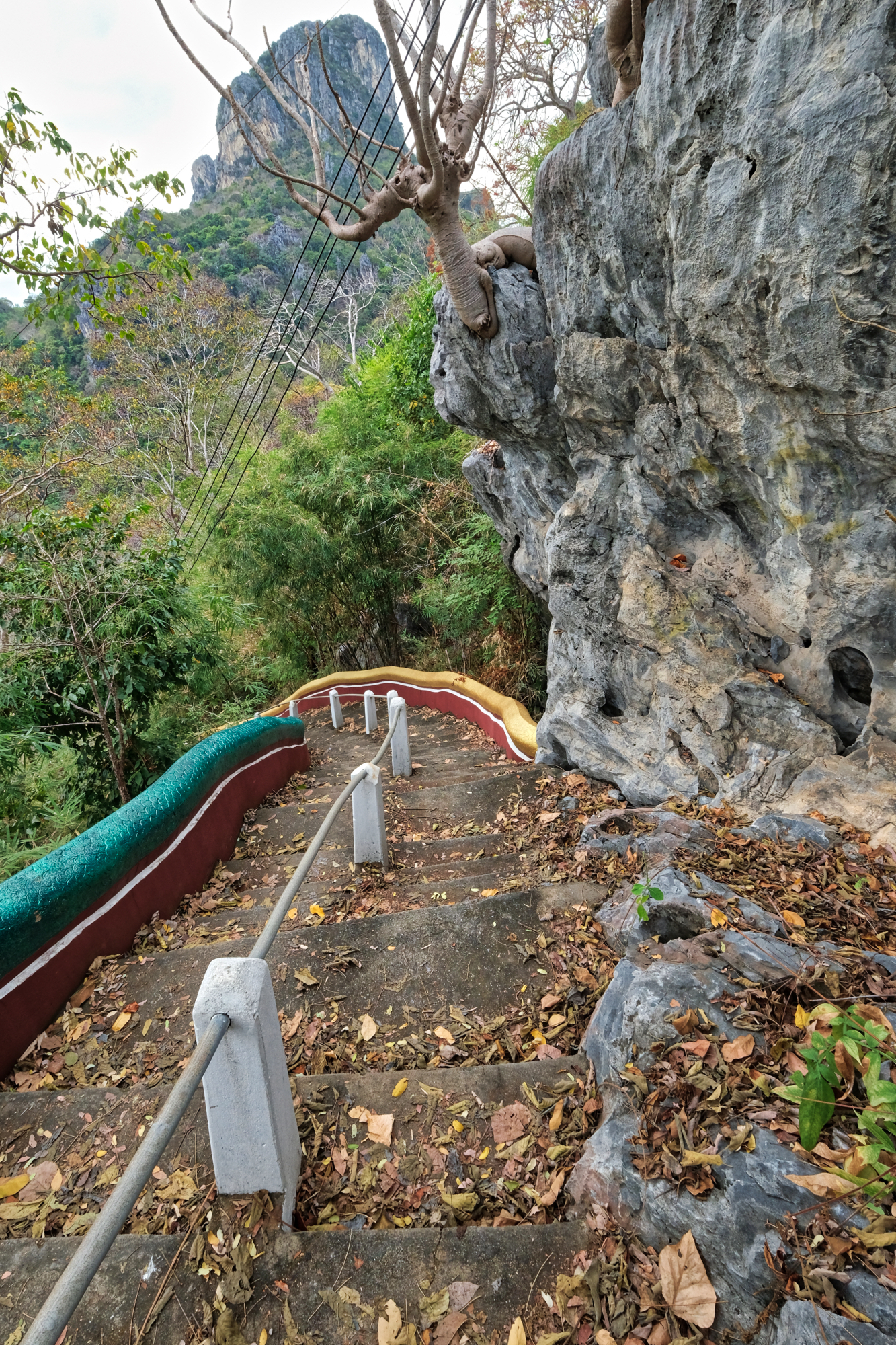 After 30 minutes on the top of the hill, we made our way back down the dry leaf covered 436 steps.
After 30 minutes on the top of the hill, we made our way back down the dry leaf covered 436 steps.
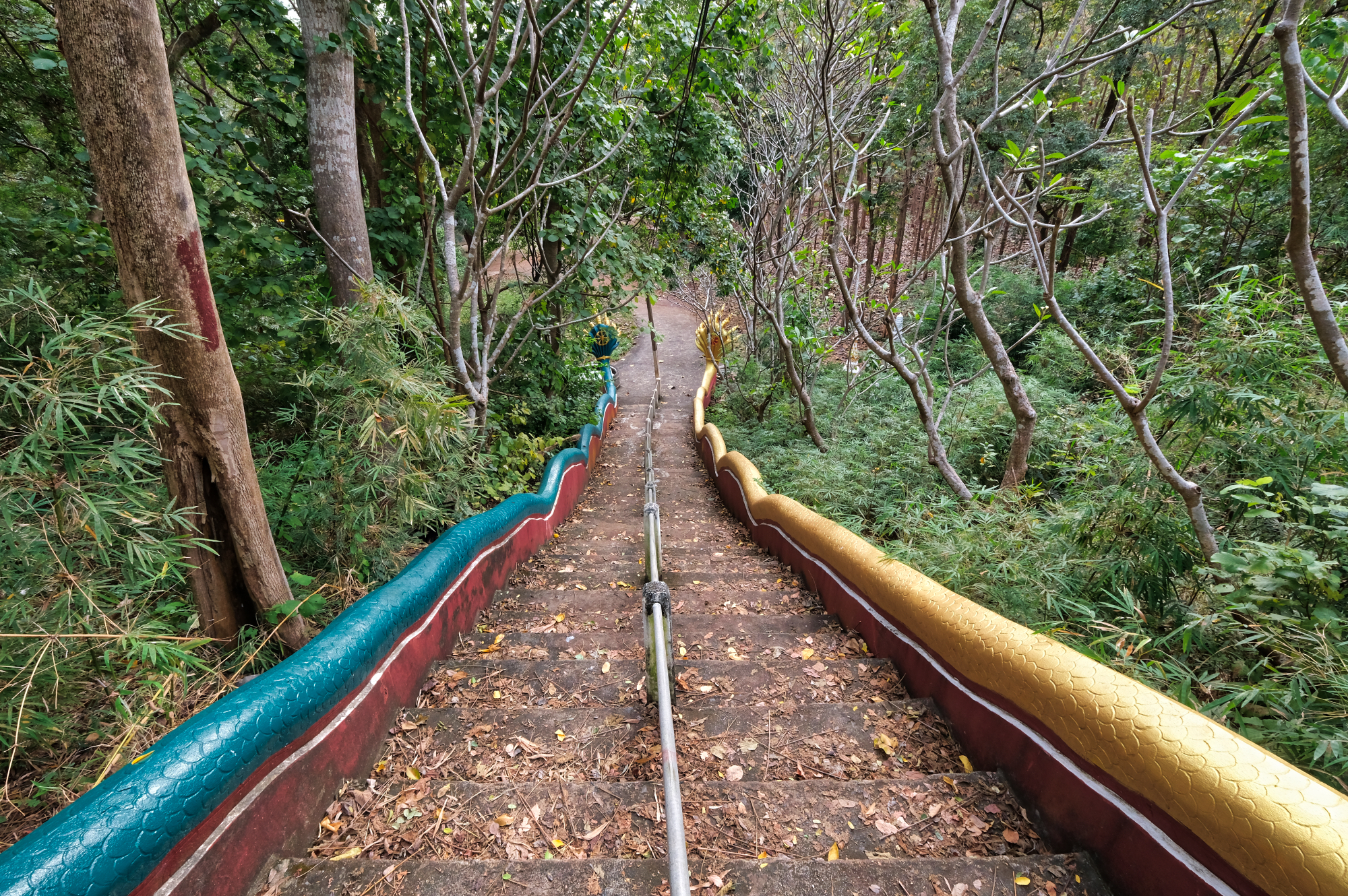 At last . . . the bottom in sight. And then into the car and off to a Wat we could see from the hilltop Buddha.
At last . . . the bottom in sight. And then into the car and off to a Wat we could see from the hilltop Buddha.
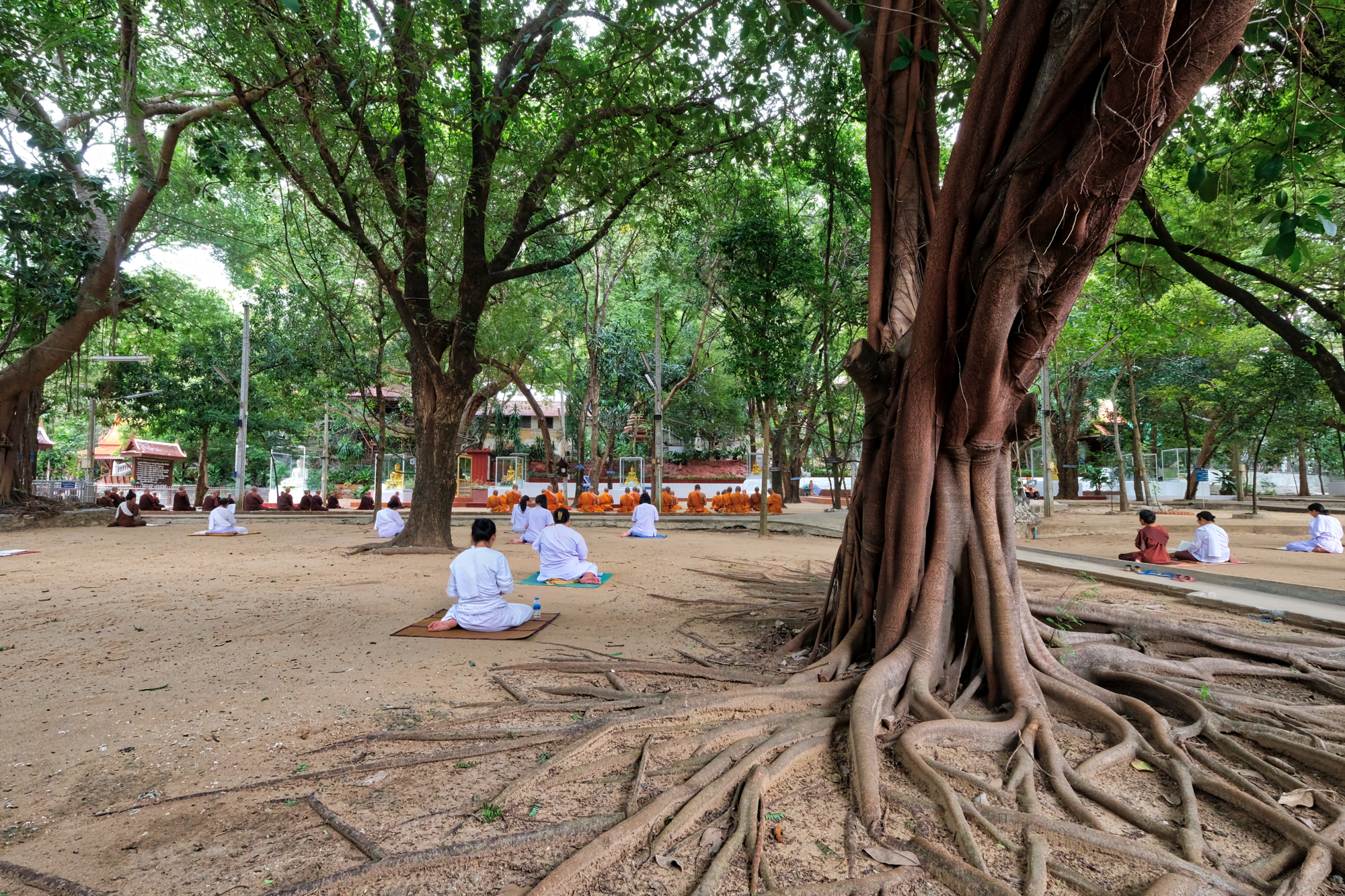 We arrived at a temple hosting a meditation retreat just at the moment they bikkus were in meditation.
We arrived at a temple hosting a meditation retreat just at the moment they bikkus were in meditation.
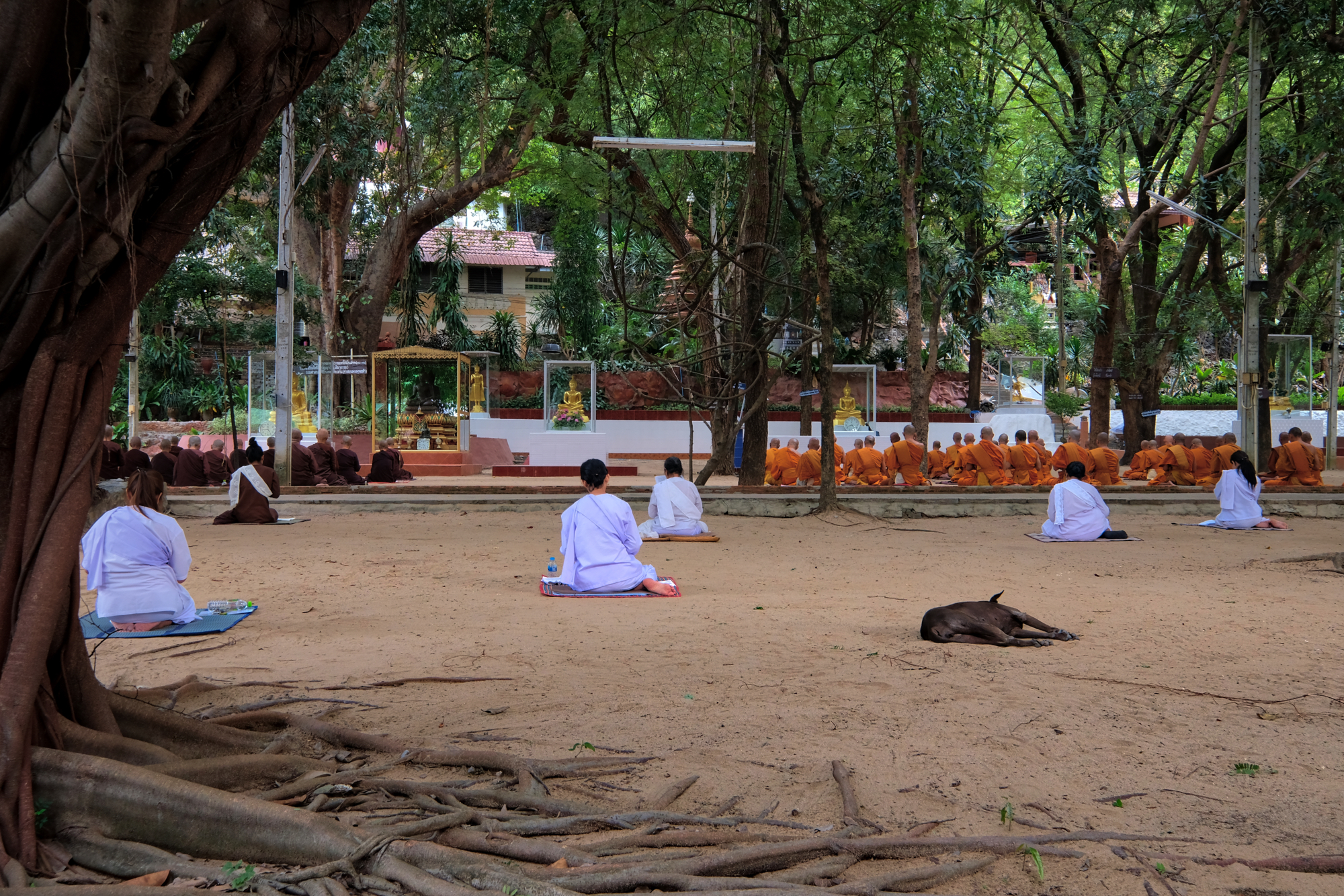 Such a beautifully spiritual place. We were at first reluctant to take photographs until a Wat attendant came over and indicated that it was OK for us to use our cameras. We took full advantage.
Such a beautifully spiritual place. We were at first reluctant to take photographs until a Wat attendant came over and indicated that it was OK for us to use our cameras. We took full advantage.
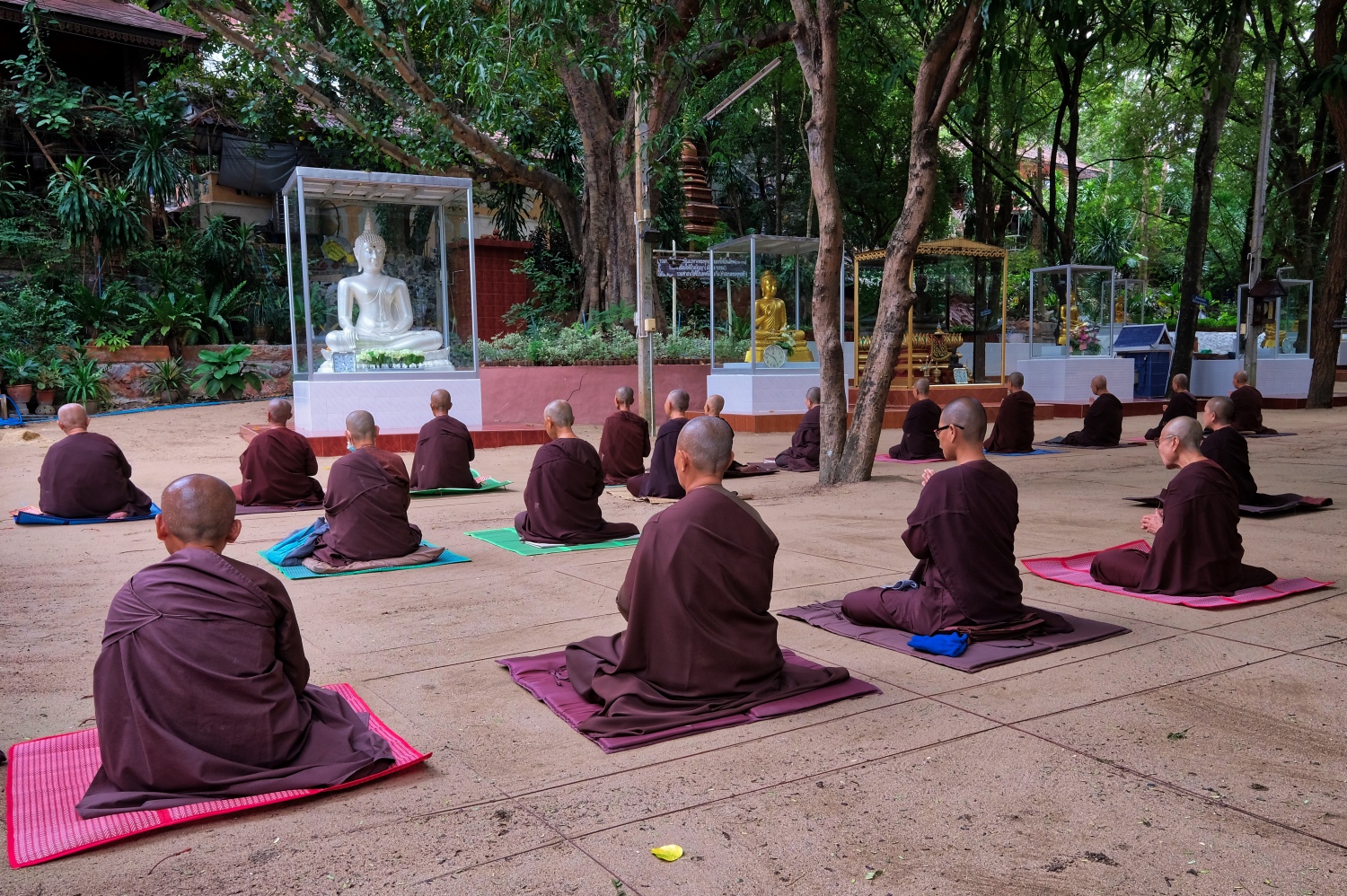 These Buddhist 'nuns' were in colored robes normally associated with Tibetan Buddhists.
These Buddhist 'nuns' were in colored robes normally associated with Tibetan Buddhists.
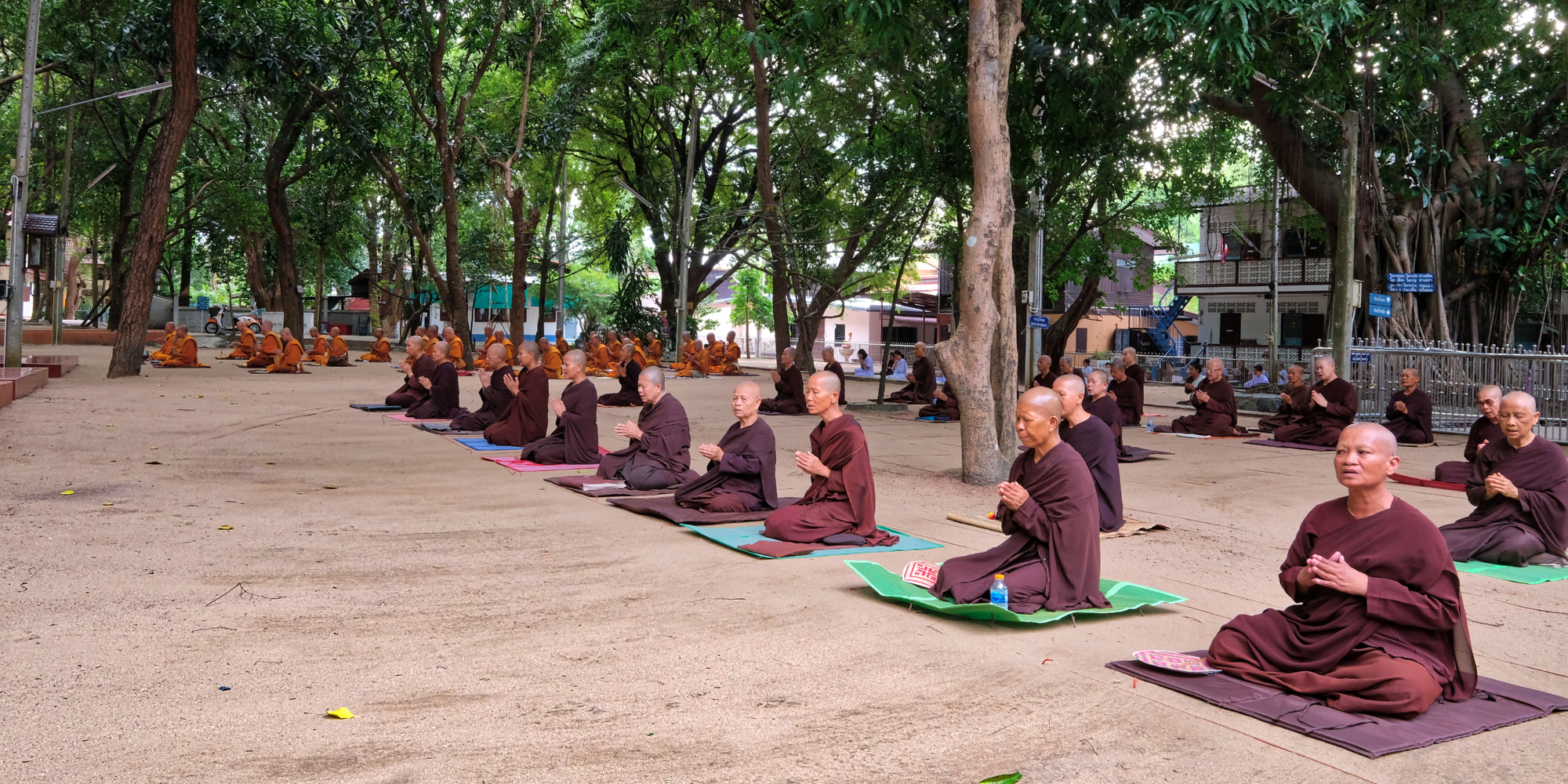 We did our best not to disturb the meditating nuns and monks. Here, a photo during their break. Monks on one side, nuns on the other.
We did our best not to disturb the meditating nuns and monks. Here, a photo during their break. Monks on one side, nuns on the other.
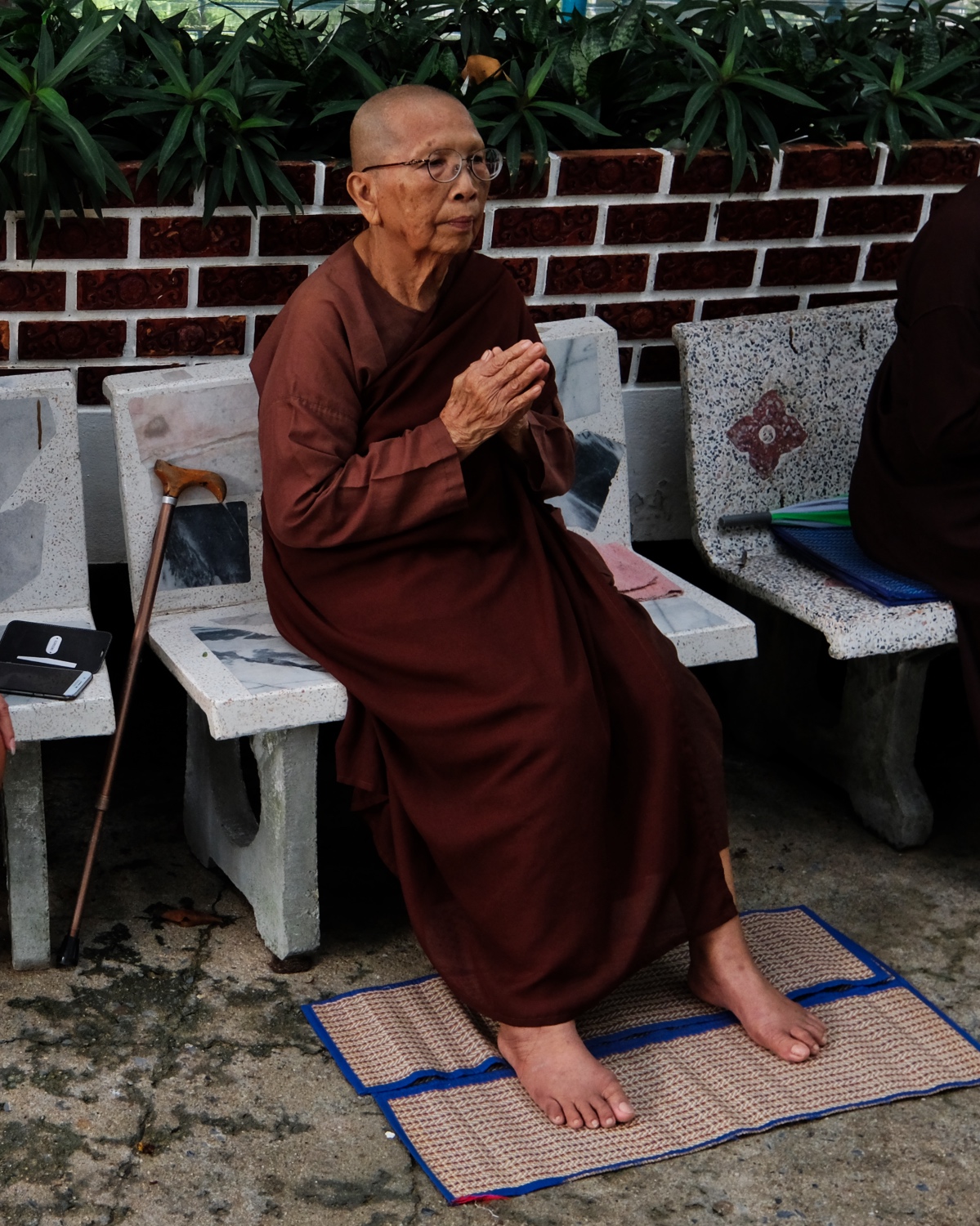 An elderly nun.
An elderly nun.
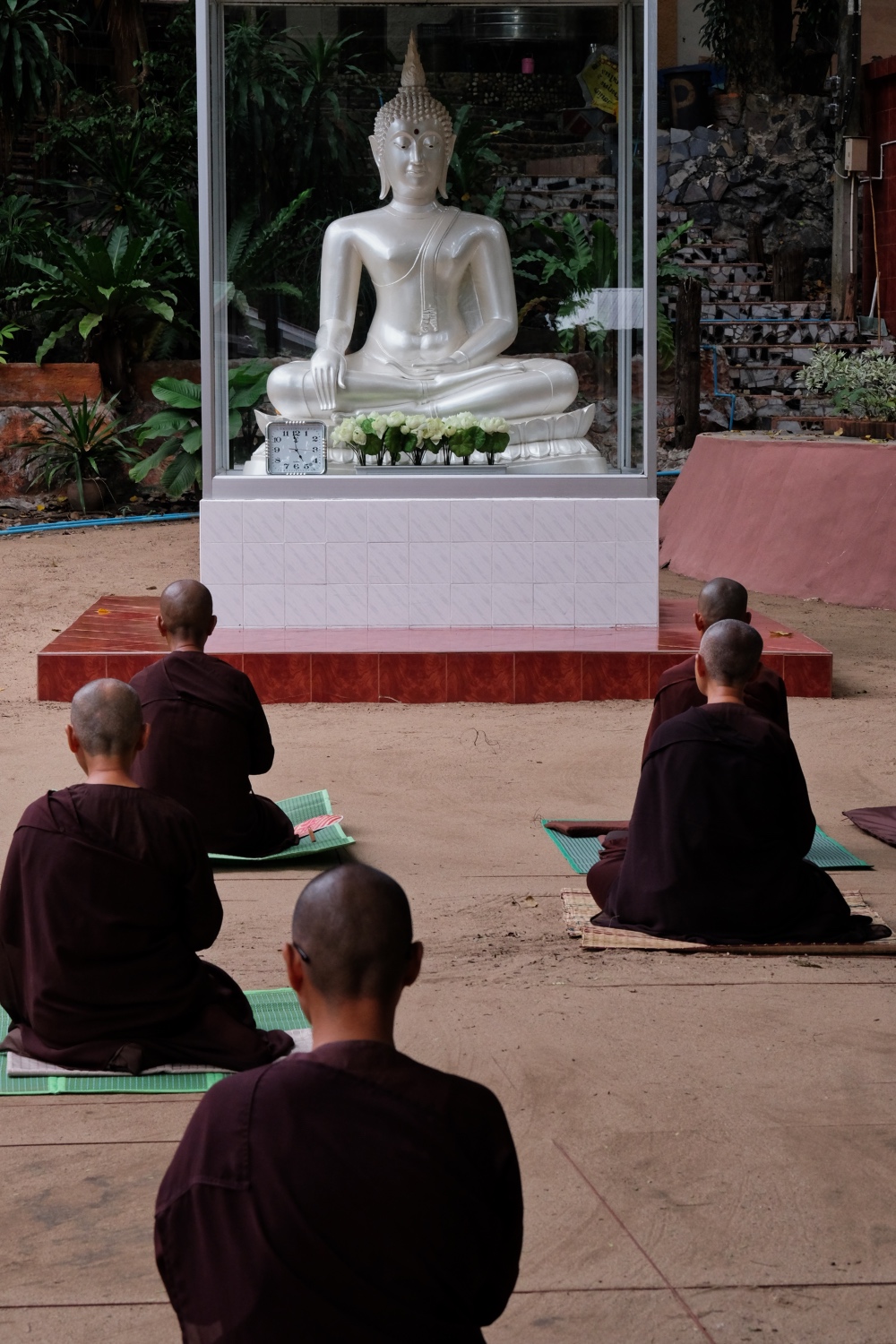 I felt that this was a meditation center I would enjoy attending.
I felt that this was a meditation center I would enjoy attending.
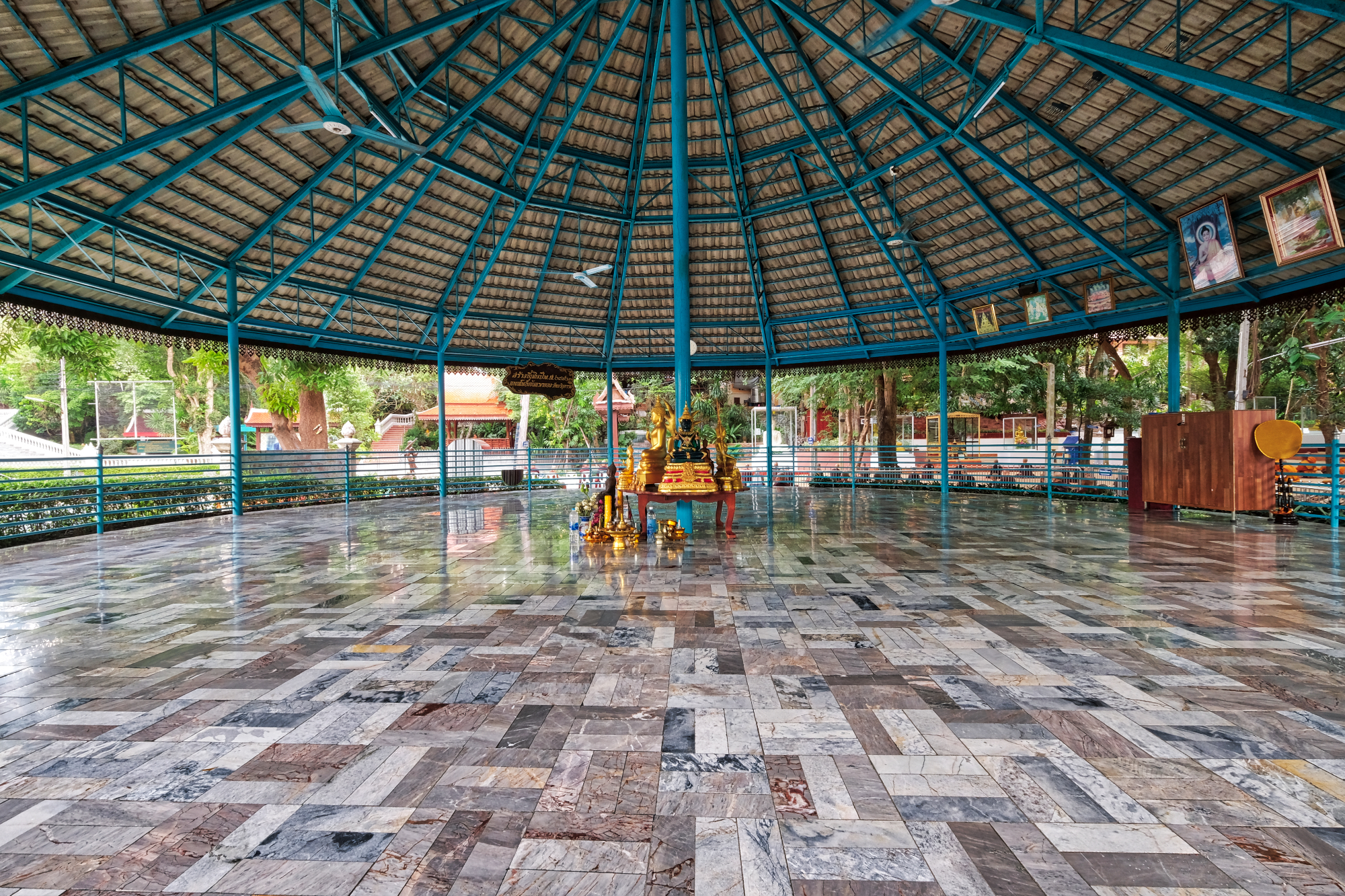 A beautiful 'sala' . . . one assumes it is used in case of heavy rain during meditation times.
A beautiful 'sala' . . . one assumes it is used in case of heavy rain during meditation times.
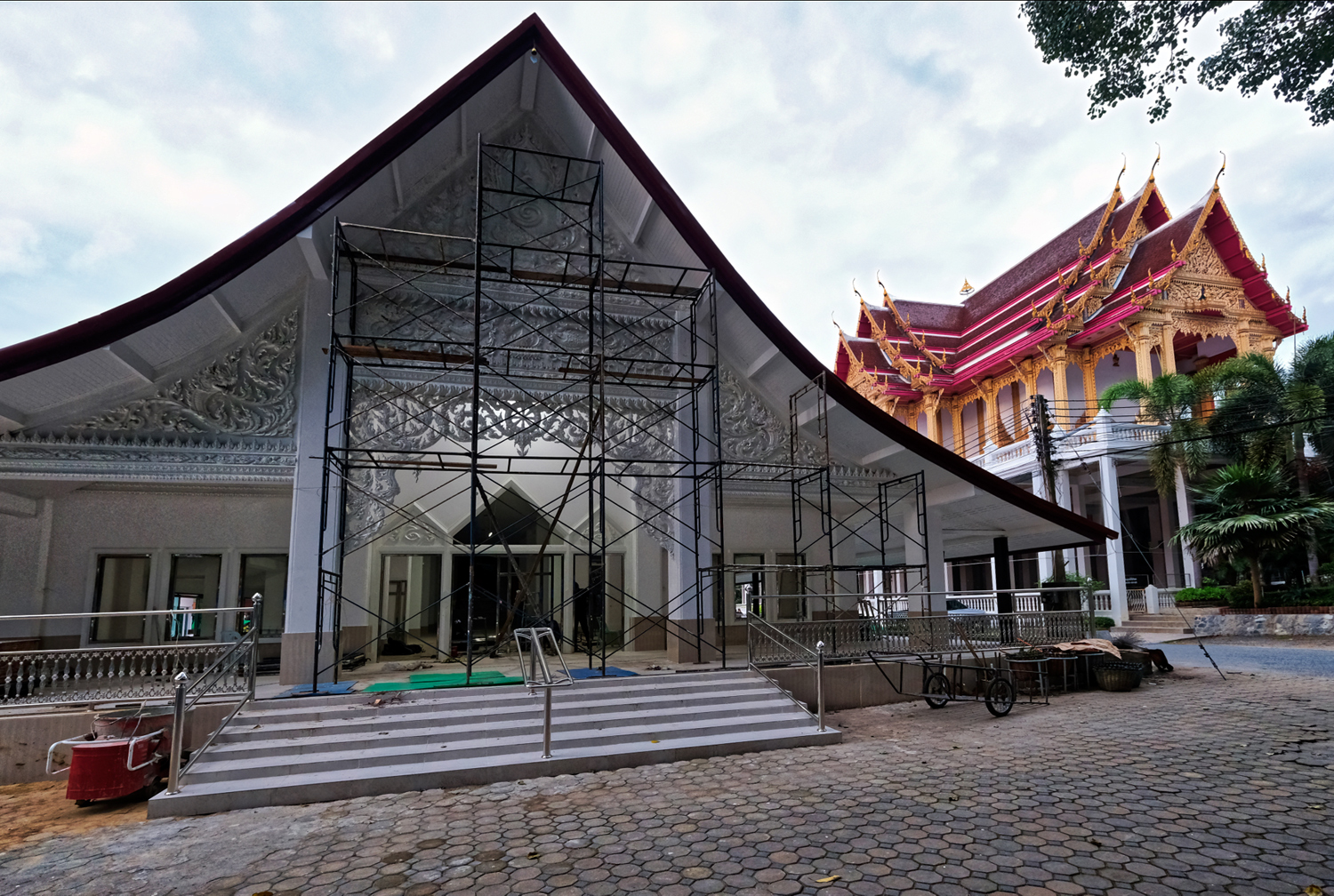 The Wat seemed very prosperous, with new structures under construction.
The Wat seemed very prosperous, with new structures under construction.
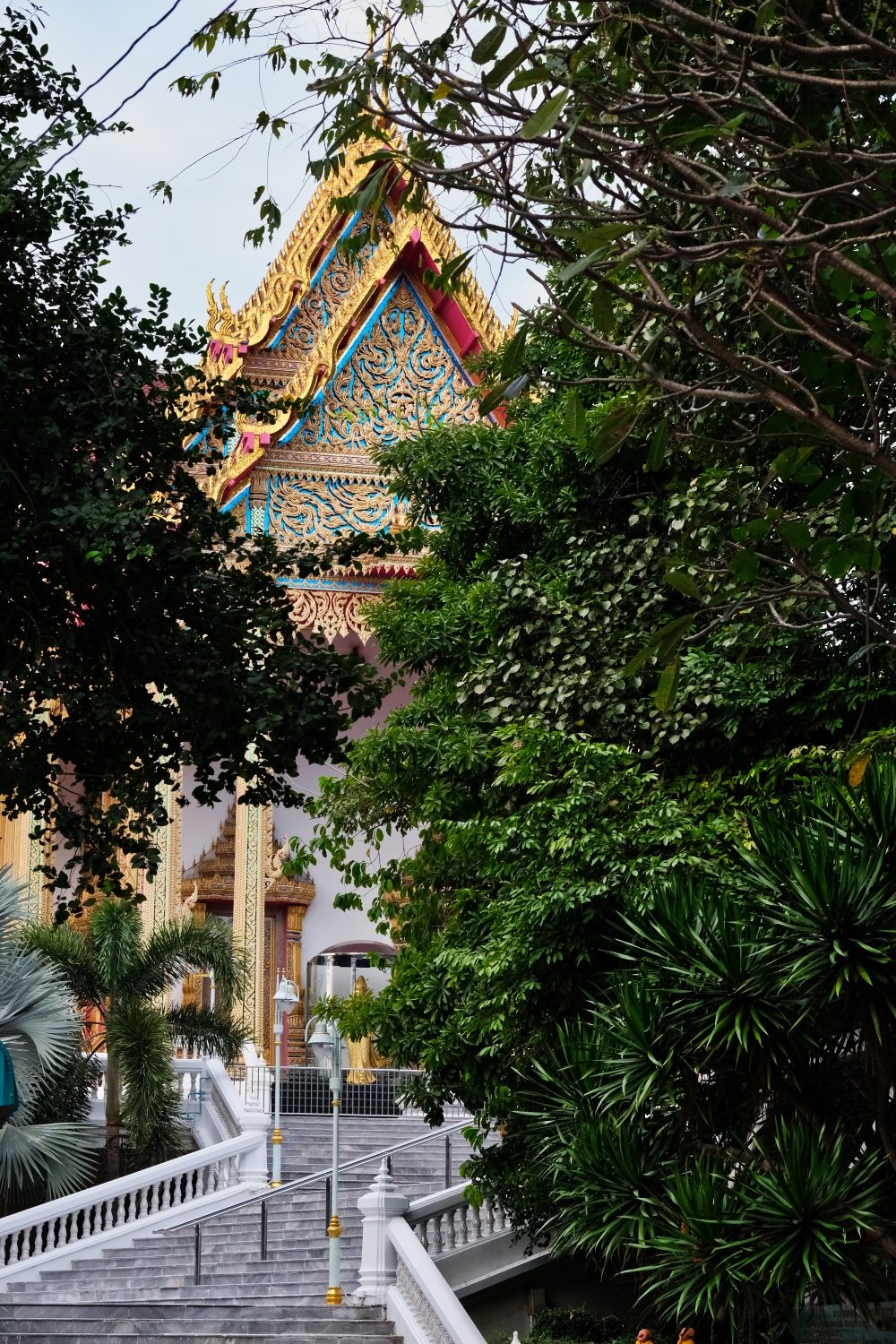 After the meditation stopped, John and I walked around the Wat grounds.
After the meditation stopped, John and I walked around the Wat grounds.
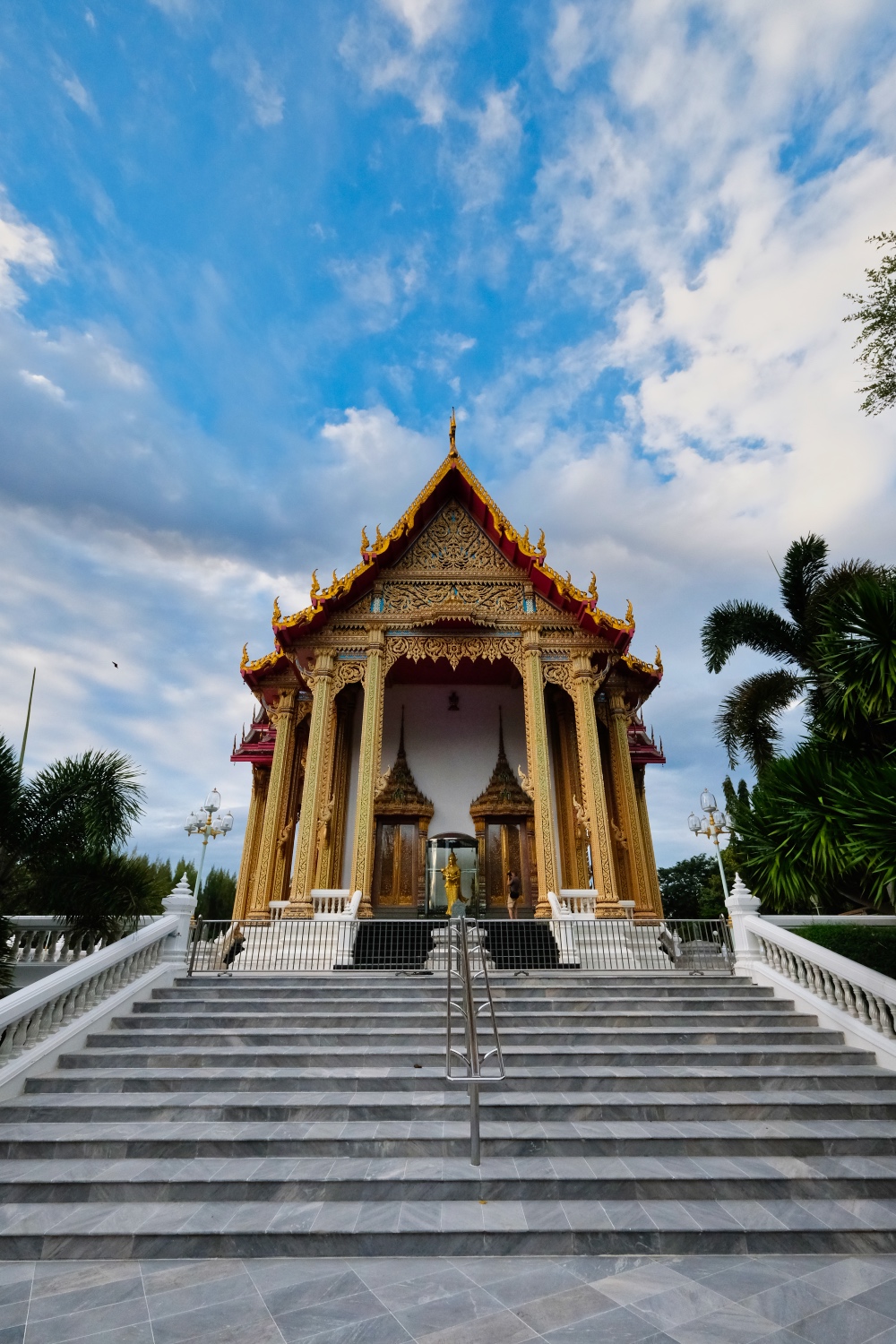 The main Wat structure.
The main Wat structure.
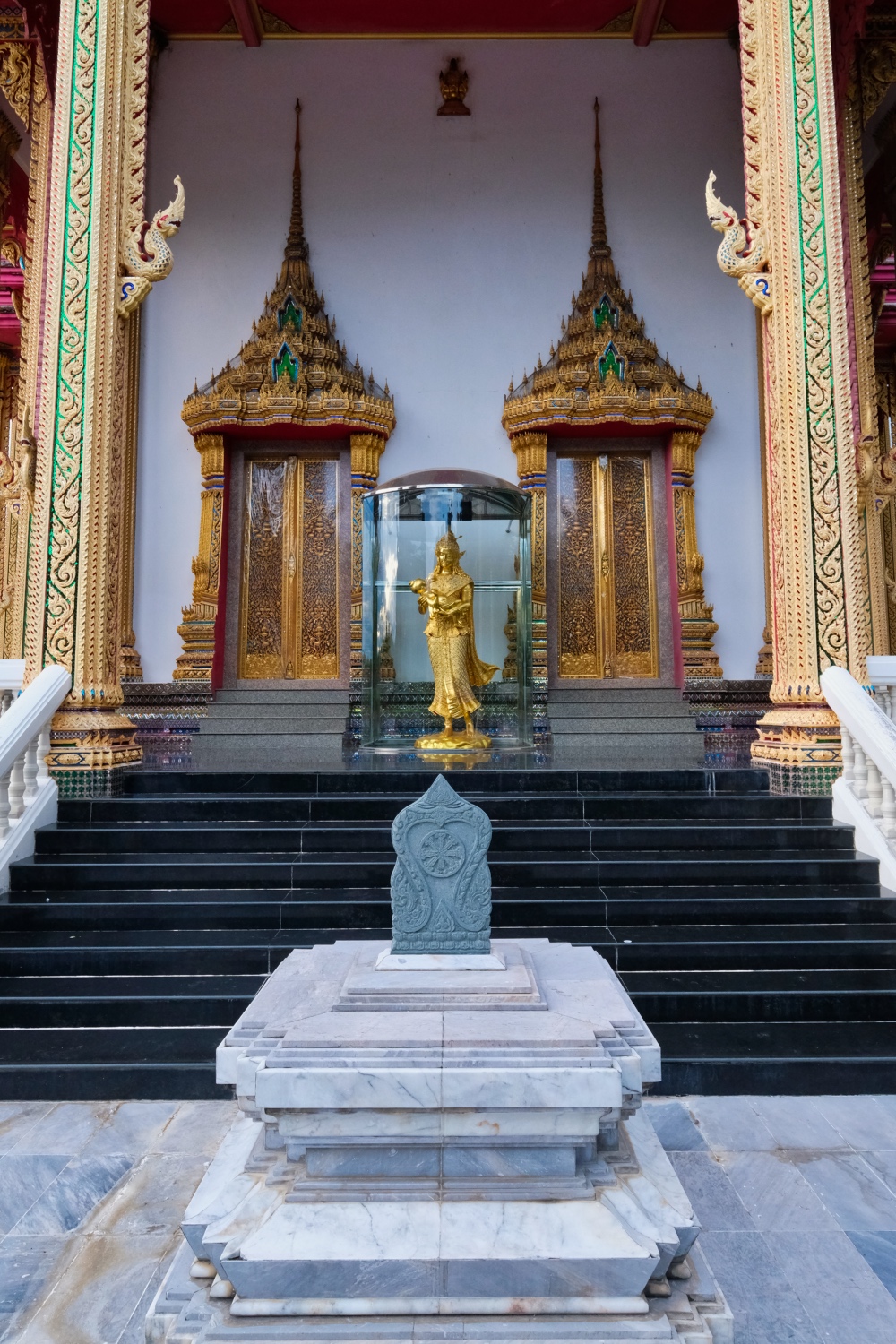 Fantastic design and excellent workmanship.
Fantastic design and excellent workmanship.
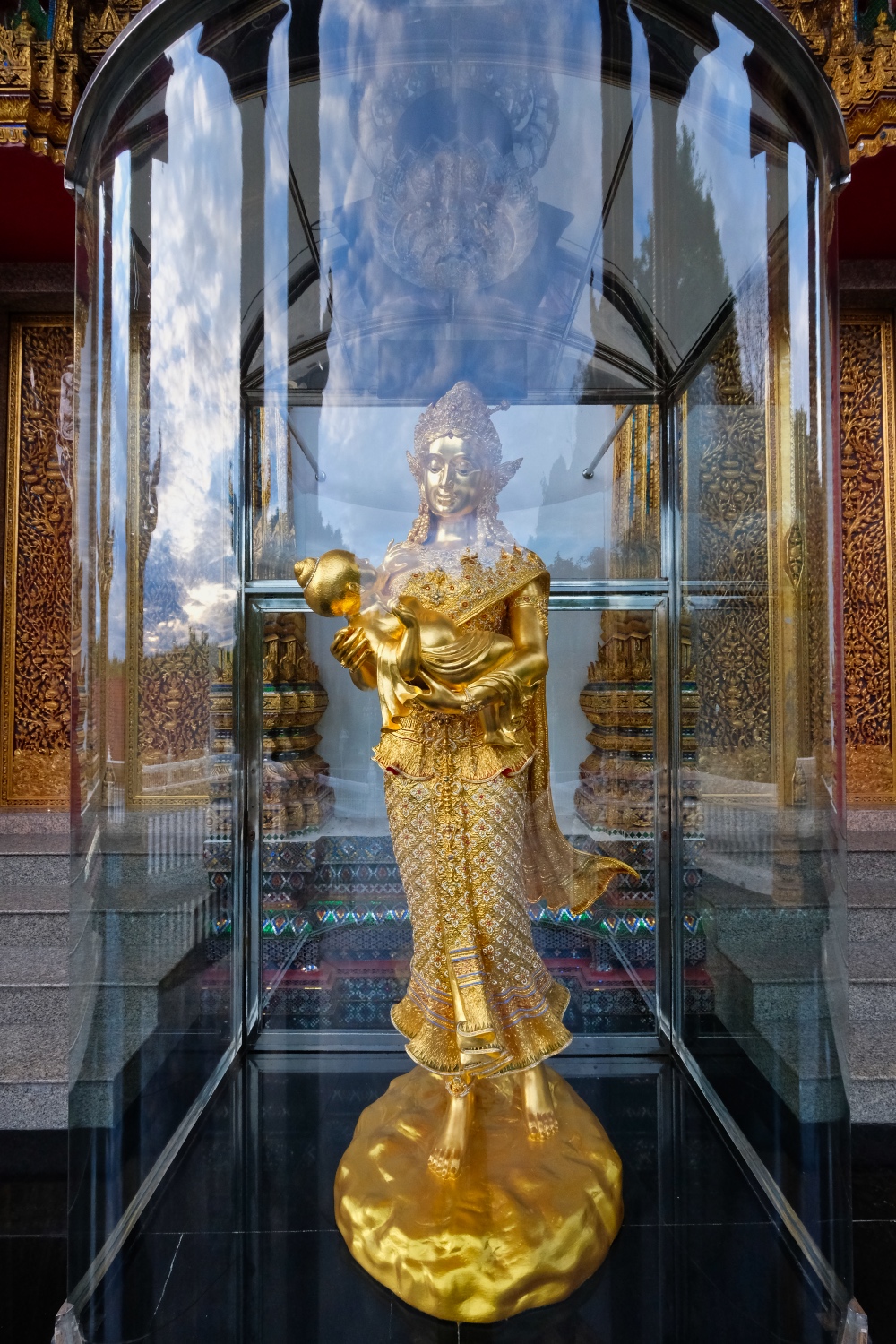 This 'Thai Angel' was outside the front entrance to the large Wat . . . and very unusual to see with a baby, almost in a Virgin Mary pose. Is this the baby Buddha Gotama? I do not know.
This 'Thai Angel' was outside the front entrance to the large Wat . . . and very unusual to see with a baby, almost in a Virgin Mary pose. Is this the baby Buddha Gotama? I do not know.
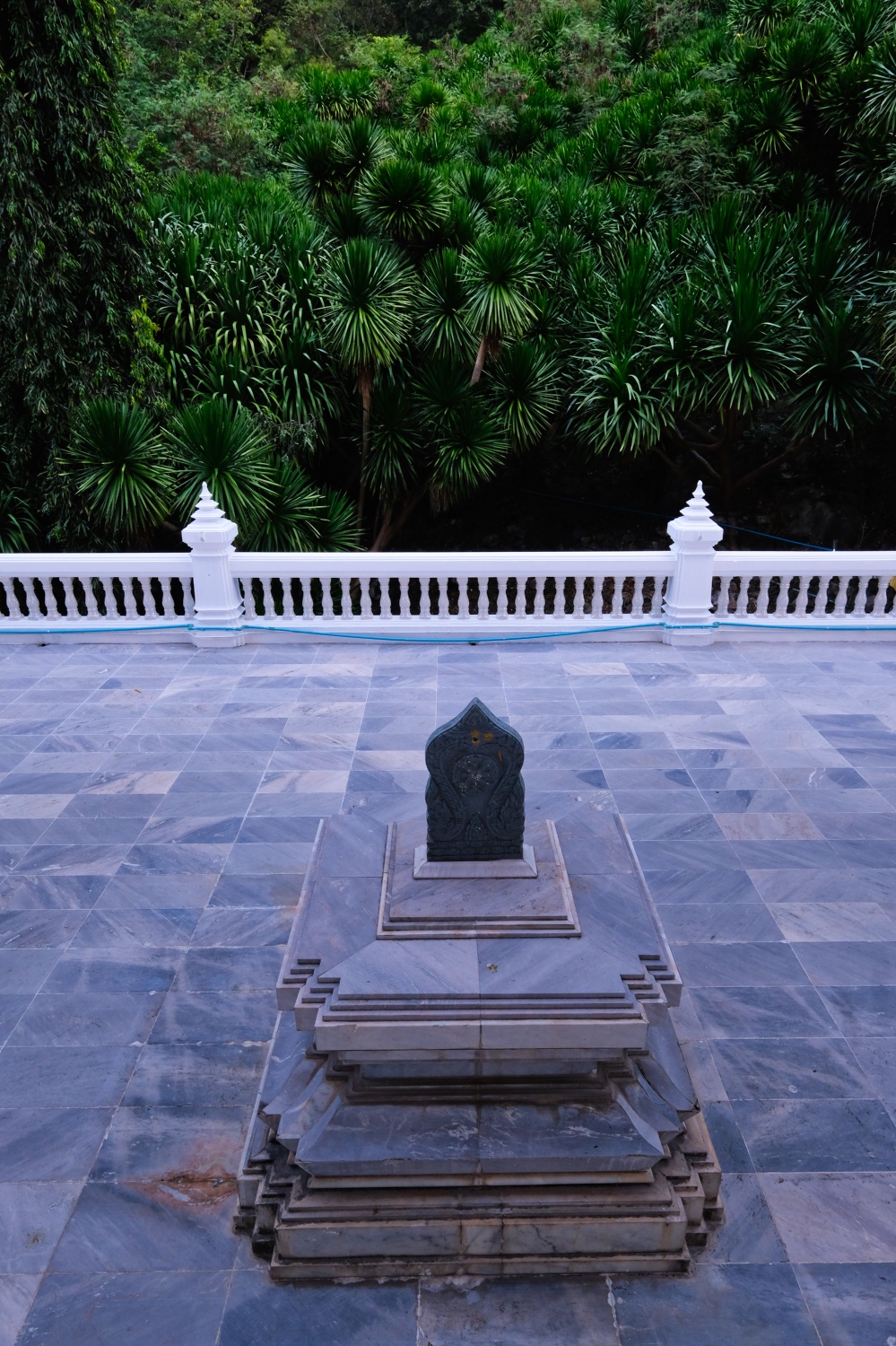 We walked around all sides of the Wat main structure.
We walked around all sides of the Wat main structure.
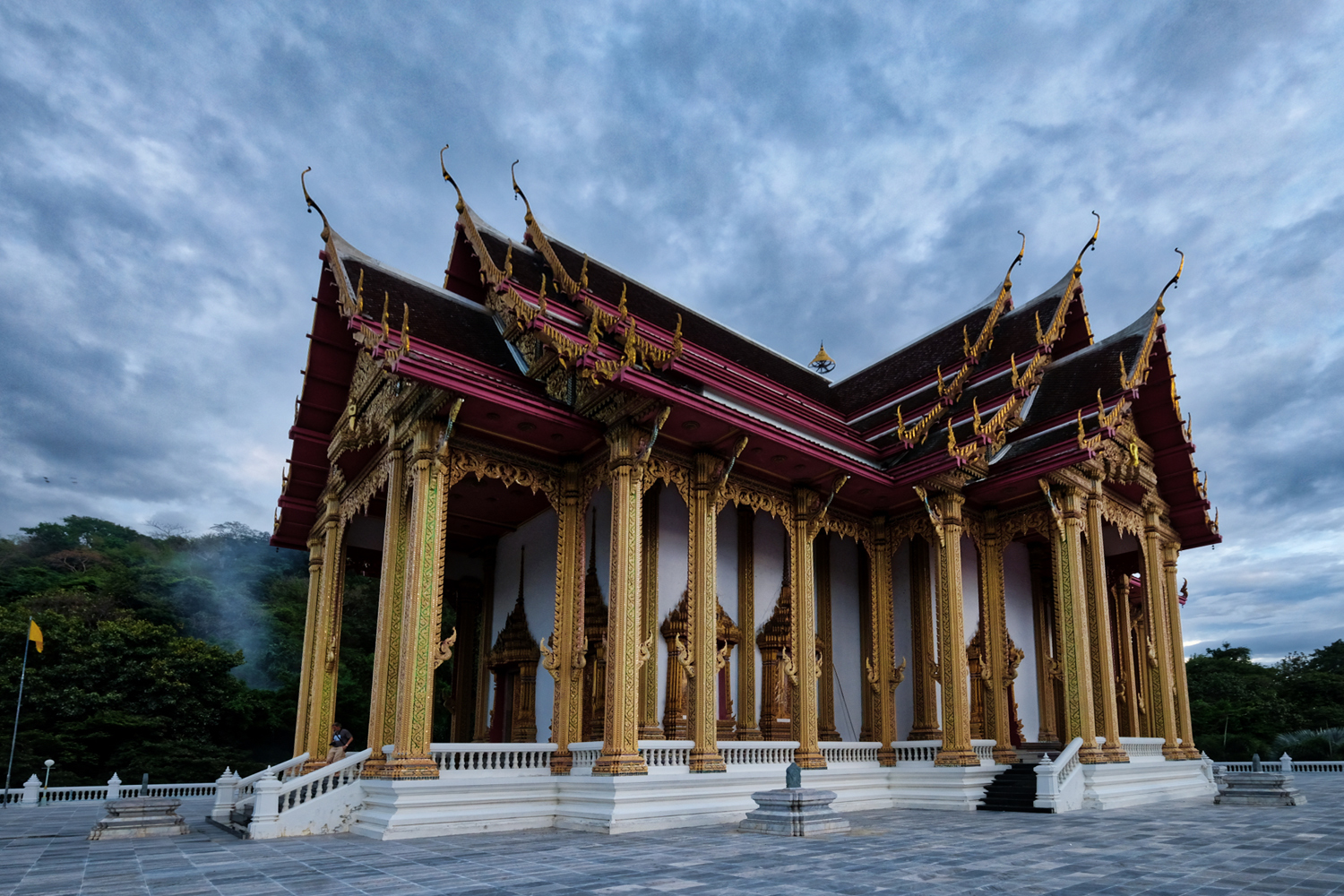 A Thai Wat in the fading light.
A Thai Wat in the fading light.
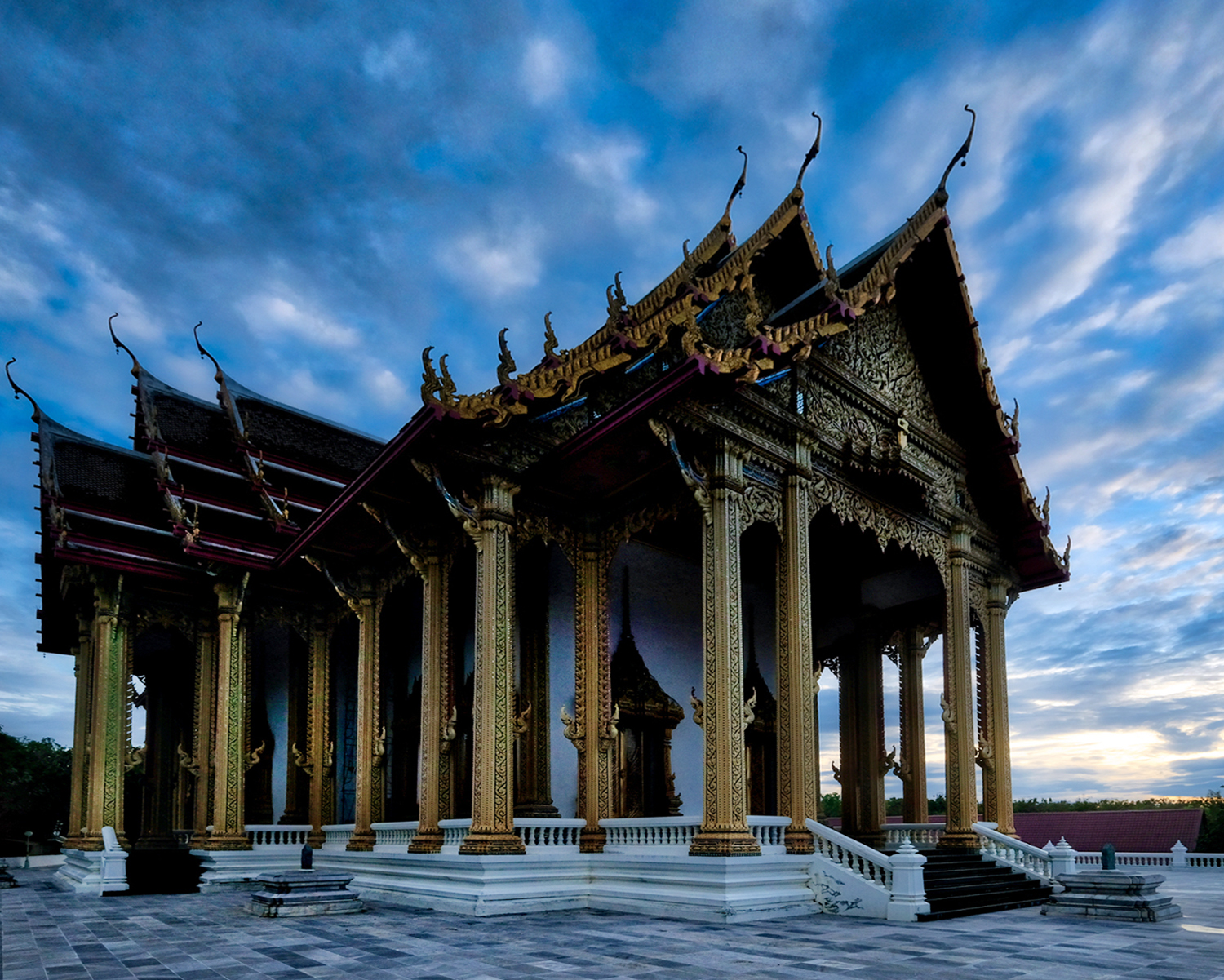 Nearly last light.
Nearly last light.
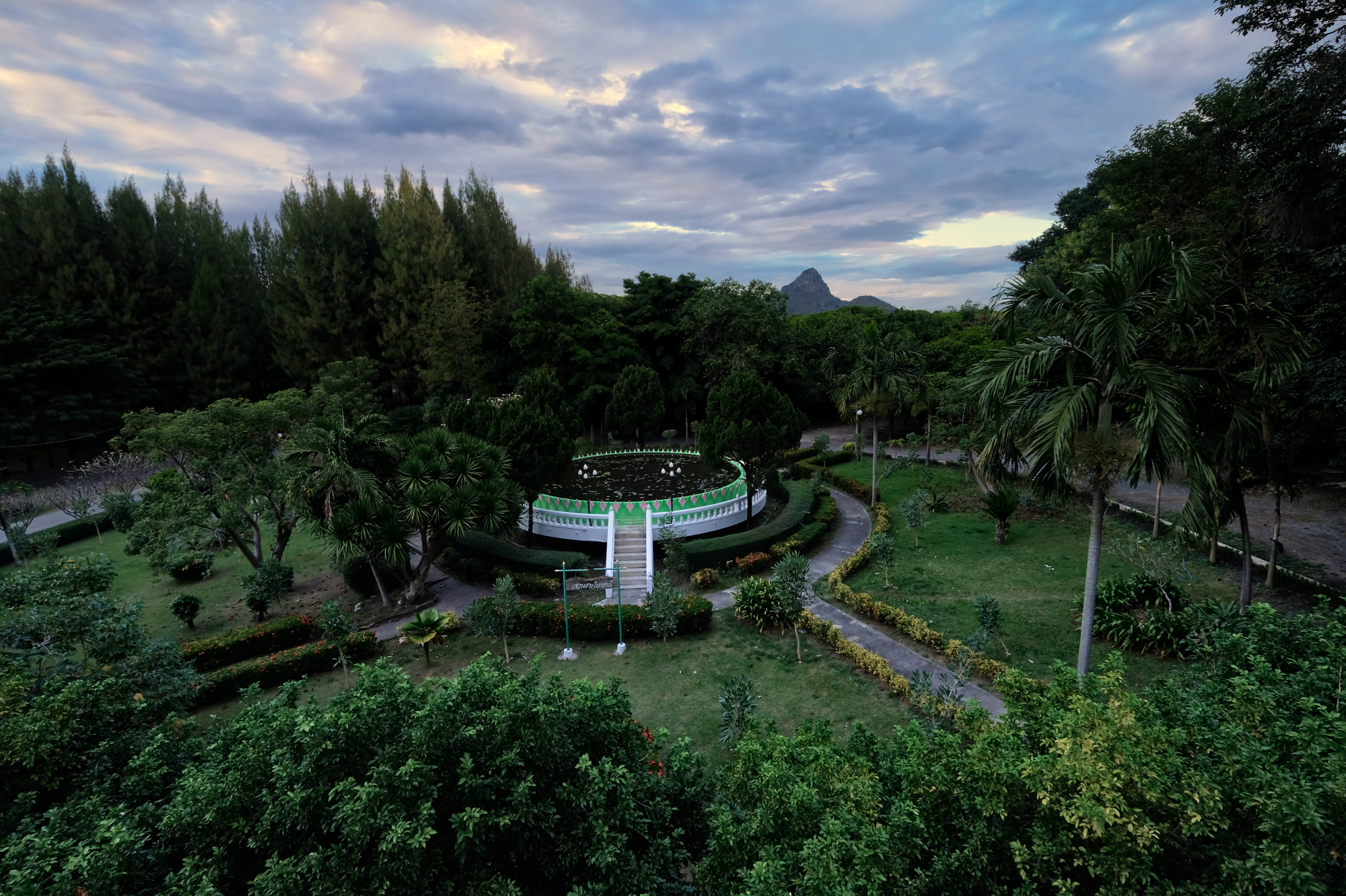 One last look around the ground gardens.
One last look around the ground gardens.
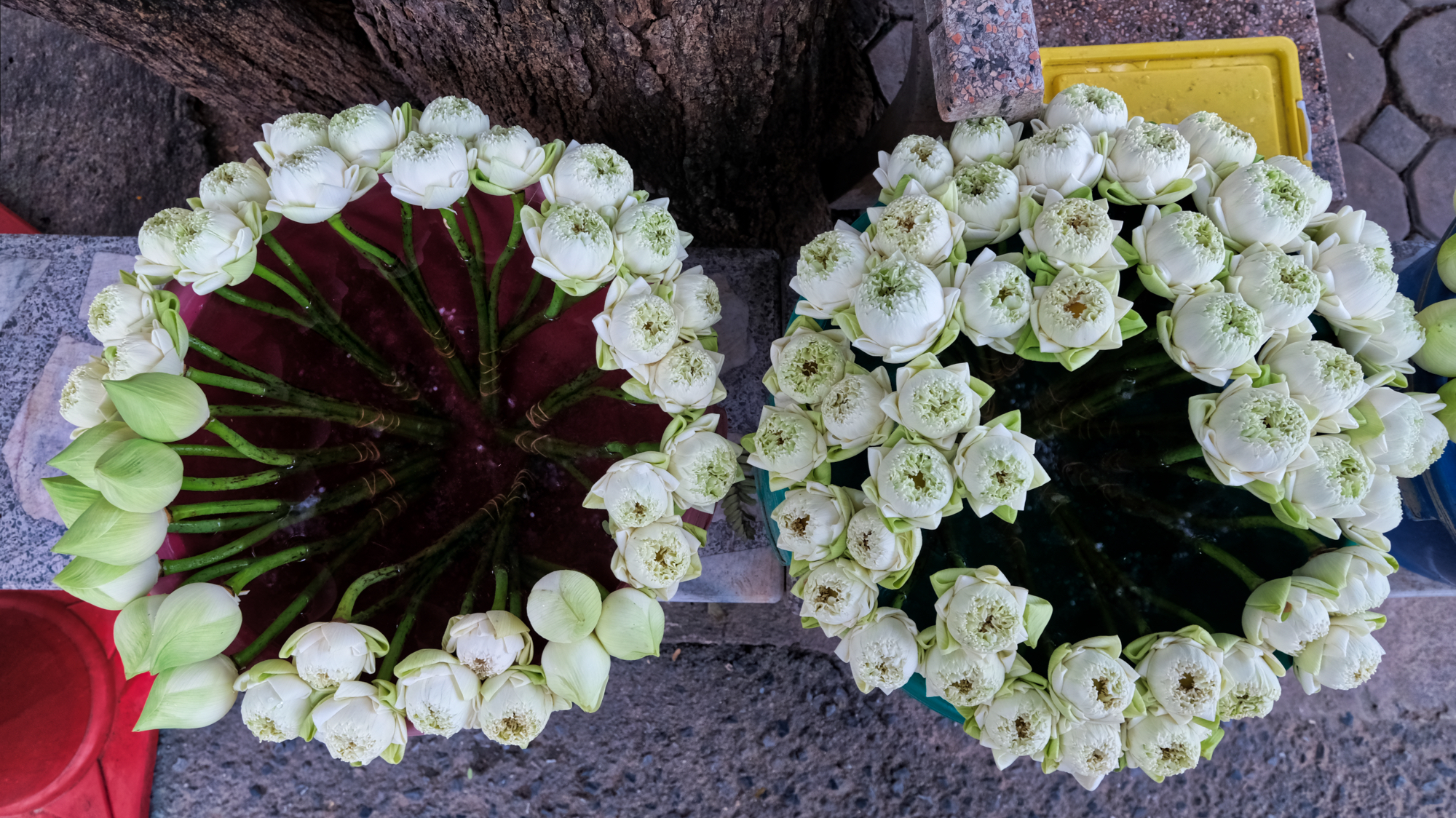 We passed a lotus hawker on the way to our car . . . and drove home in the dark: another satisfying and inspirational day out in the world.
We passed a lotus hawker on the way to our car . . . and drove home in the dark: another satisfying and inspirational day out in the world.
New Years 2018: Hua Hin Rambles
 Saturday, January 20, 2018 at 4:10PM
Saturday, January 20, 2018 at 4:10PM My New Years 2018 rambles were in many parts: (1) Around the Beach, (2) Wat Huai Sai Tai, (3) Wat , (4) Doi Thap Chang, (5) Monsoon Winery, (6) Wat Nong Tung. . . each has its own section below:
AROUND THE BEACH
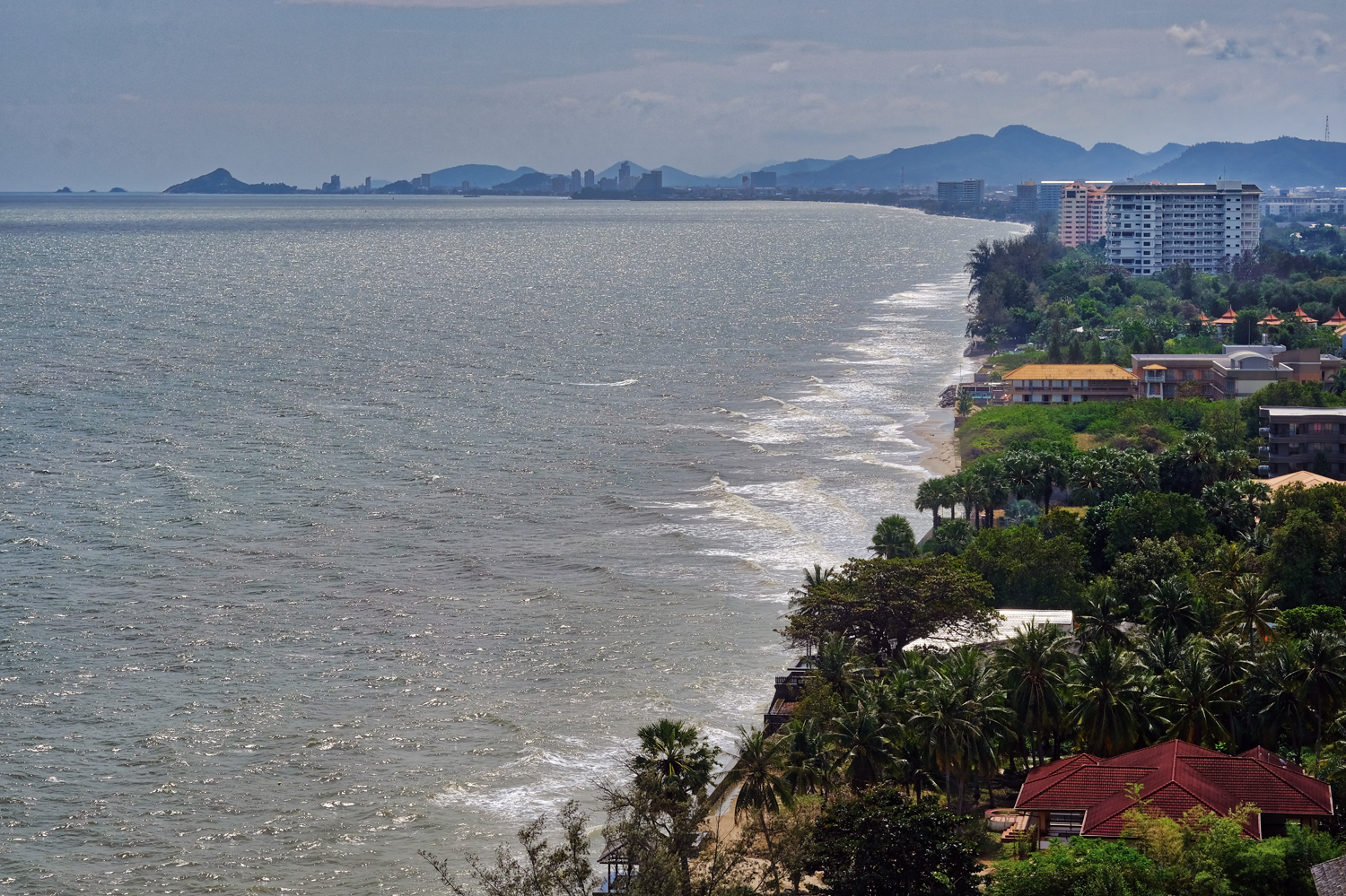 The Thai university where I work was closed for a few days over the western New Year, so we headed off to Hua Hin, a beach town 2 1/2 hours drive from our home in Nonthaburi. Our view of Hua Hin town from up he coast a few miles away.
The Thai university where I work was closed for a few days over the western New Year, so we headed off to Hua Hin, a beach town 2 1/2 hours drive from our home in Nonthaburi. Our view of Hua Hin town from up he coast a few miles away.
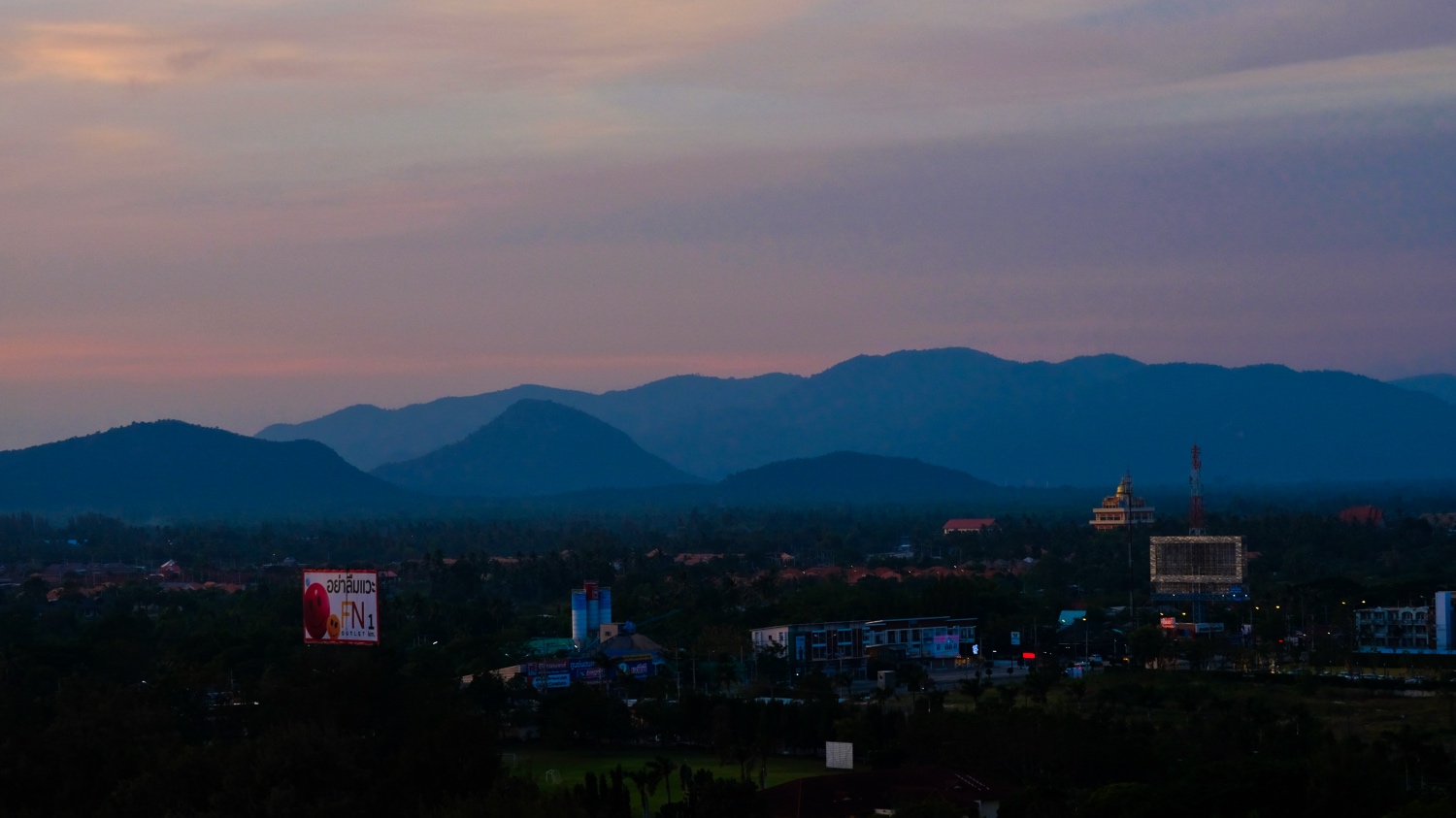 Hua Hin is located along a coastal shelf on the northwest of the Gulf of Thailand (Siam).
Hua Hin is located along a coastal shelf on the northwest of the Gulf of Thailand (Siam).
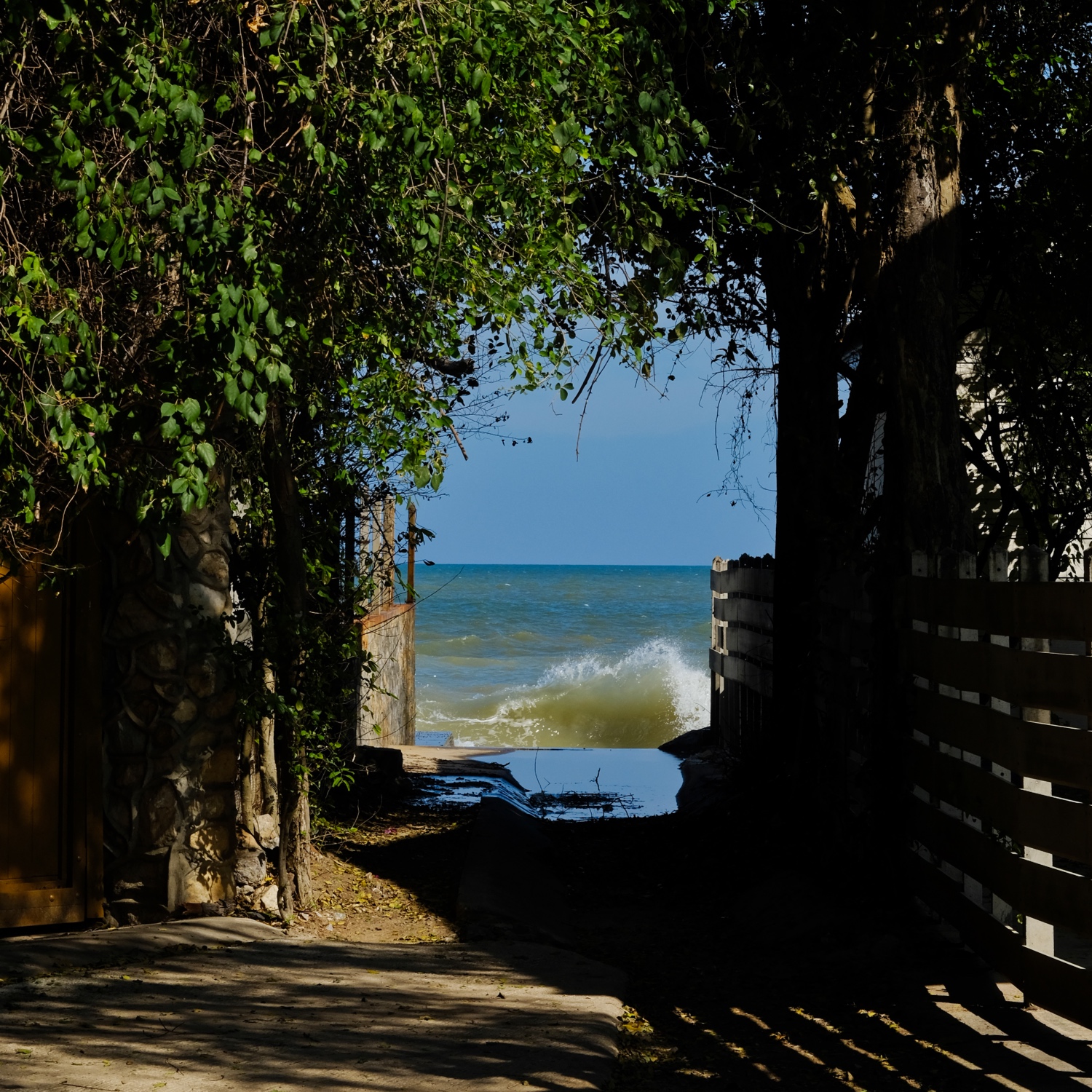 I enjoy walking along an unpaved road from where we stay . . . to see what I can see . . . and photograph.
I enjoy walking along an unpaved road from where we stay . . . to see what I can see . . . and photograph.
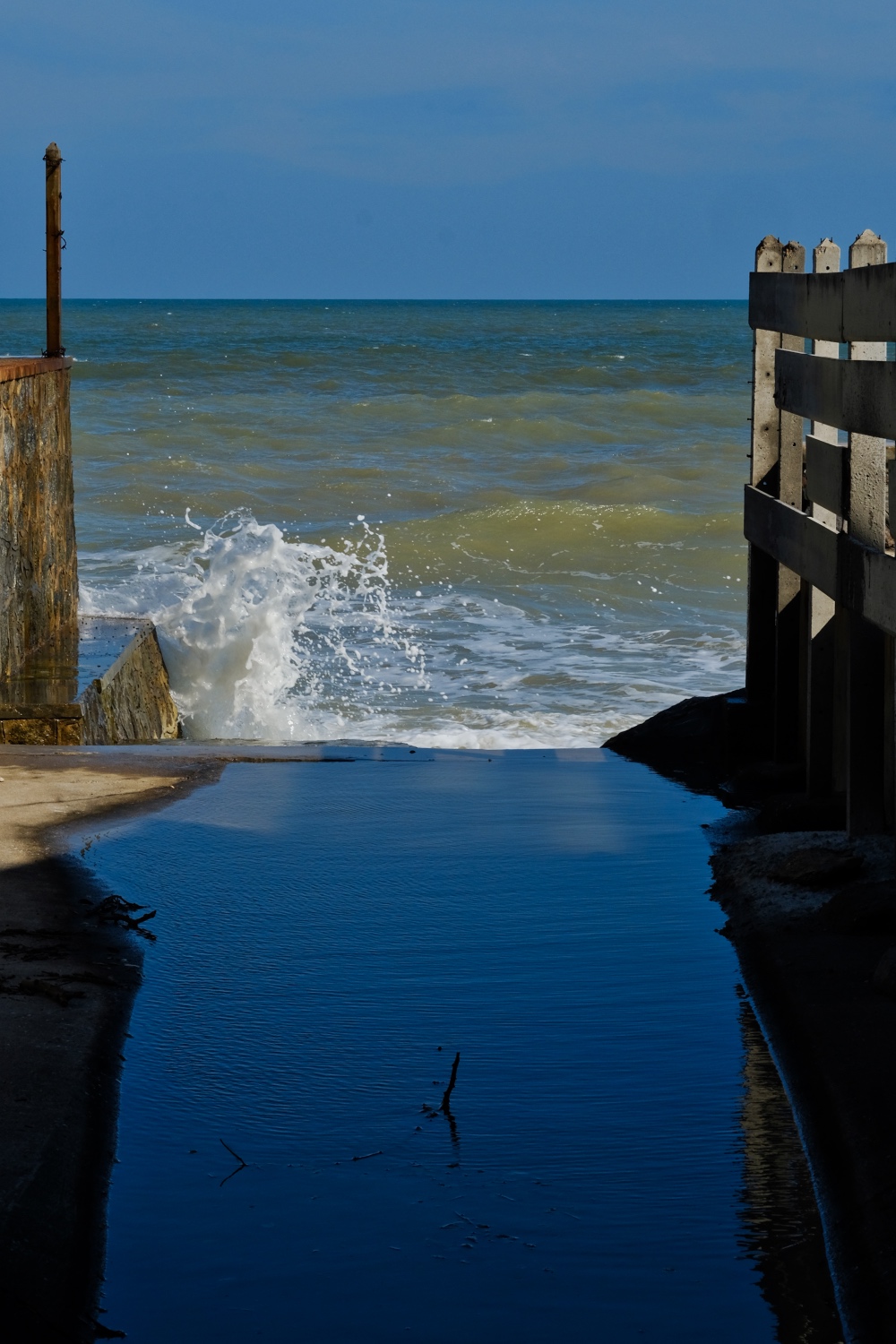 The Gulf of Thailand is warm, even at this time of year.
The Gulf of Thailand is warm, even at this time of year.
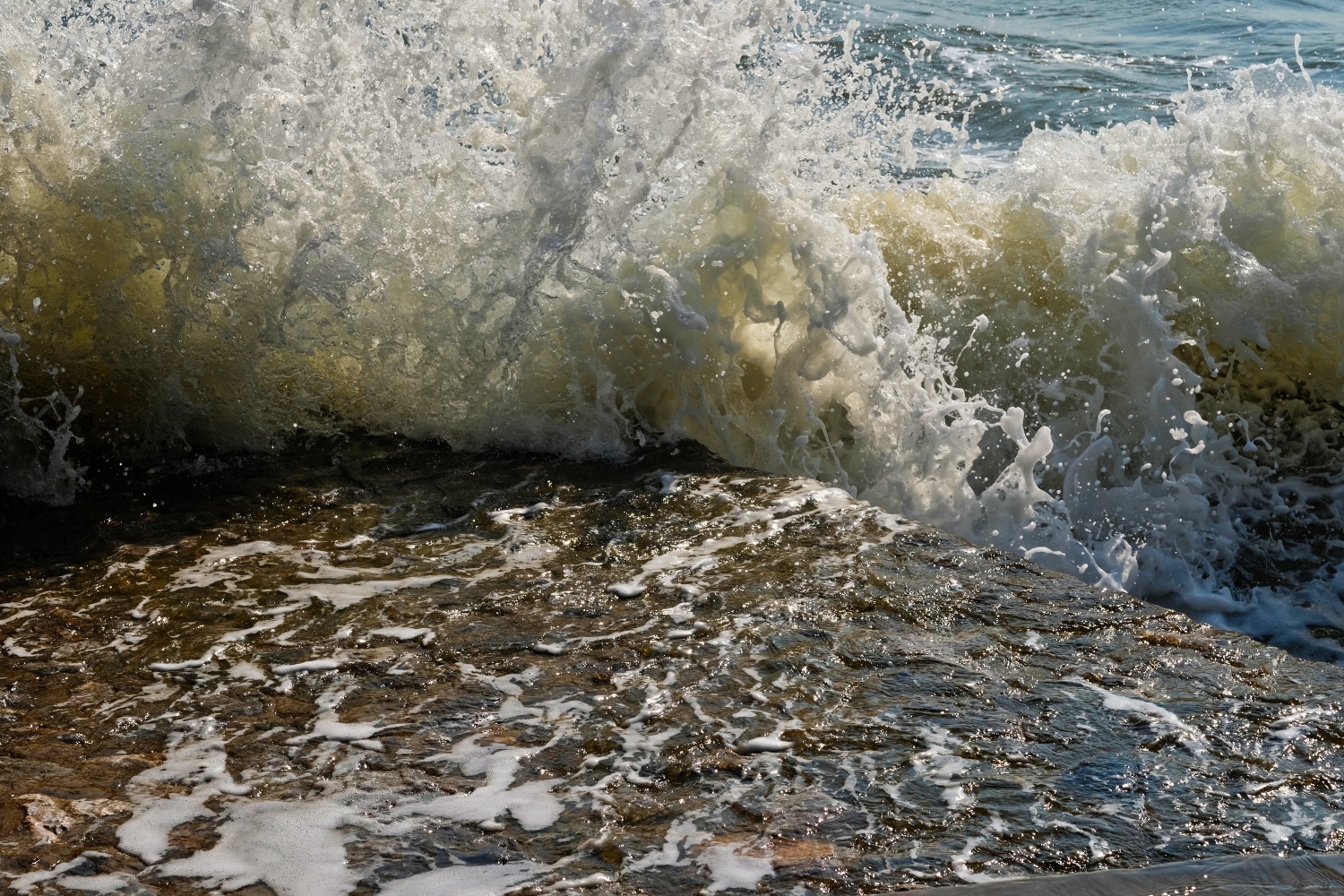 There normally isn't any surf to speak of, but storms to the south stirred things up a bit.
There normally isn't any surf to speak of, but storms to the south stirred things up a bit.
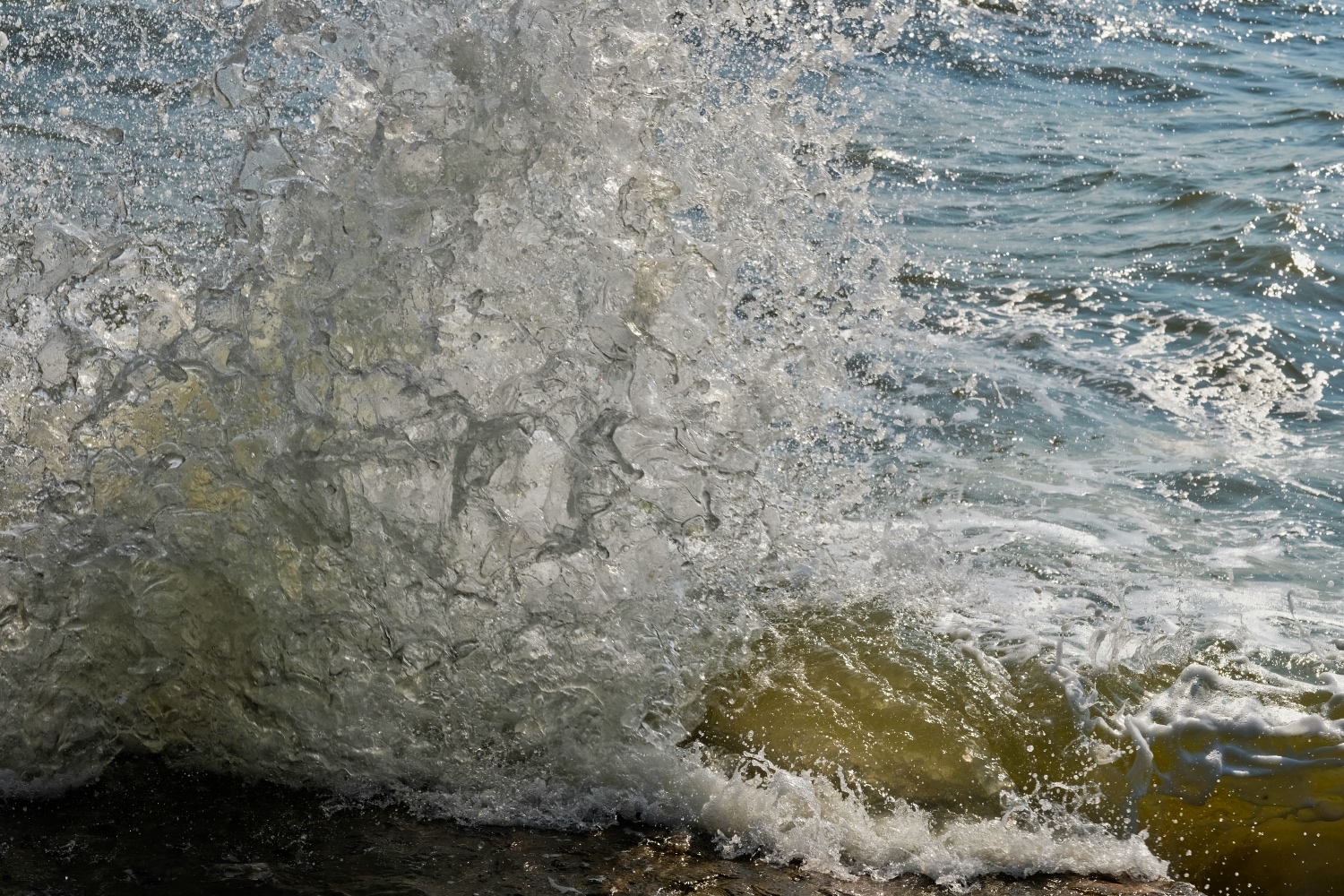 I am attracted to these wave splashes . . . photographing them . . . stopping them in a moment of refreshment. I wasn't the only one attracted to the wave splashes that morning.
I am attracted to these wave splashes . . . photographing them . . . stopping them in a moment of refreshment. I wasn't the only one attracted to the wave splashes that morning.
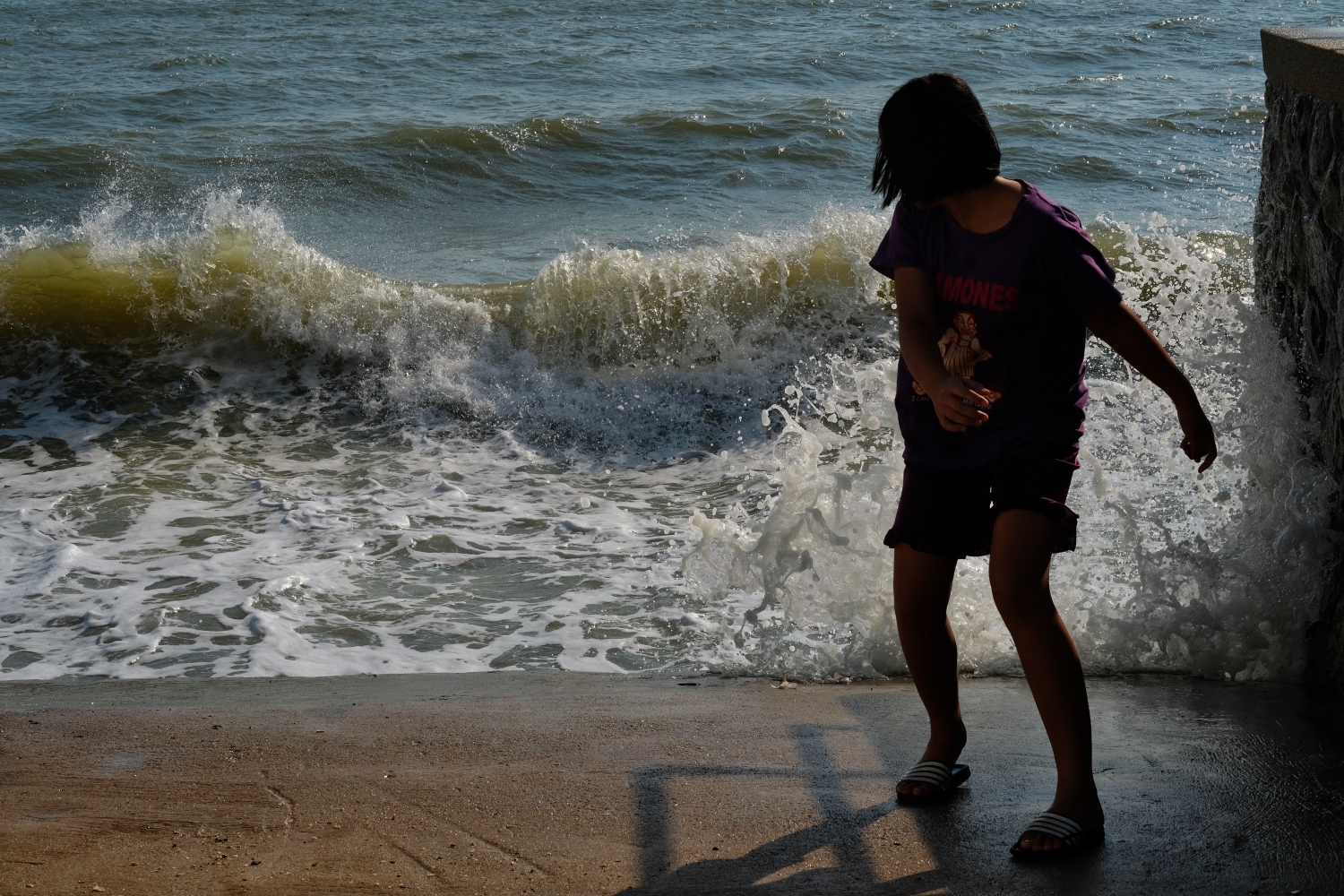 A local young person showed up to play dare with the arriving waves.
A local young person showed up to play dare with the arriving waves.
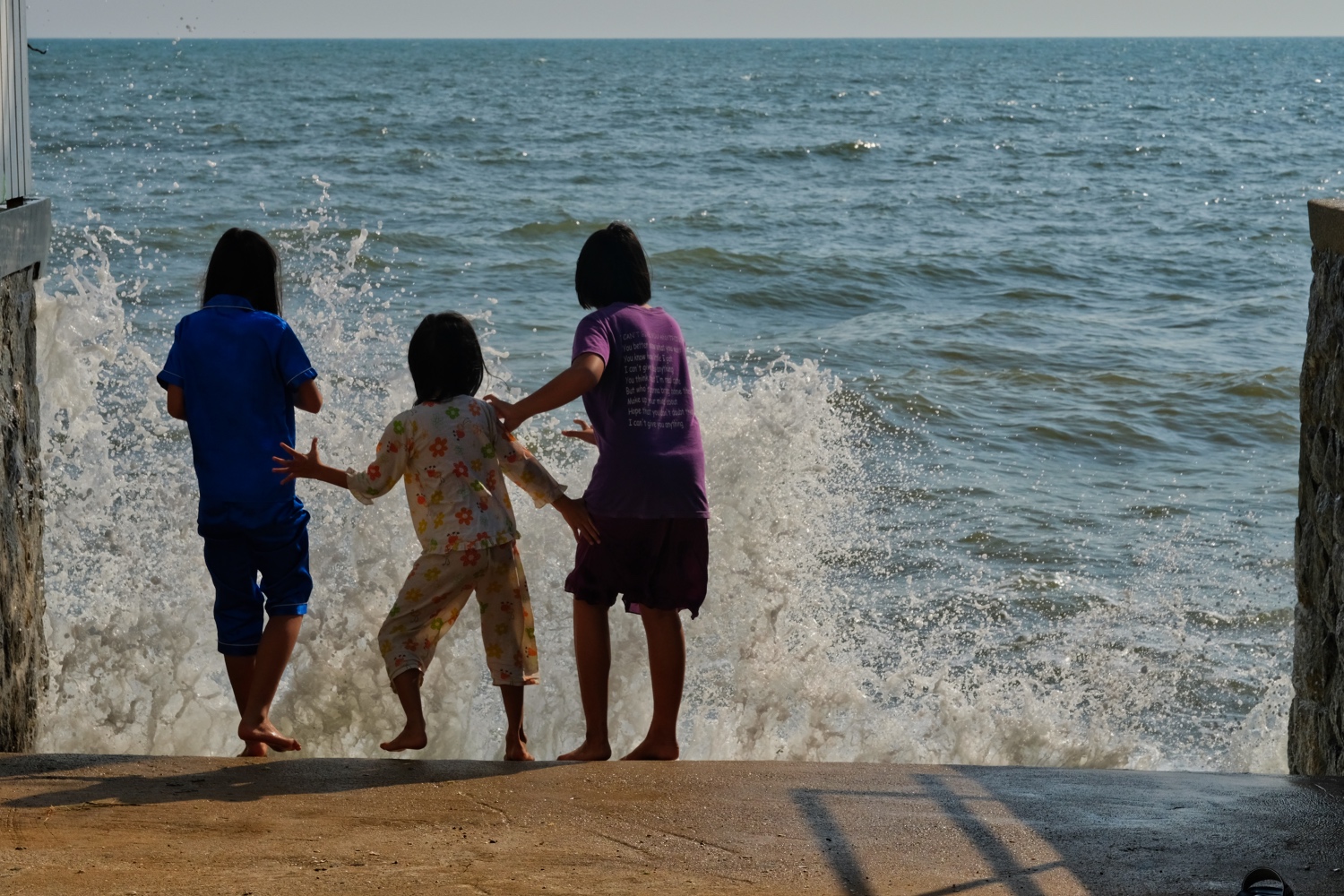 The siblings showed up . . . very photogenic!
The siblings showed up . . . very photogenic!
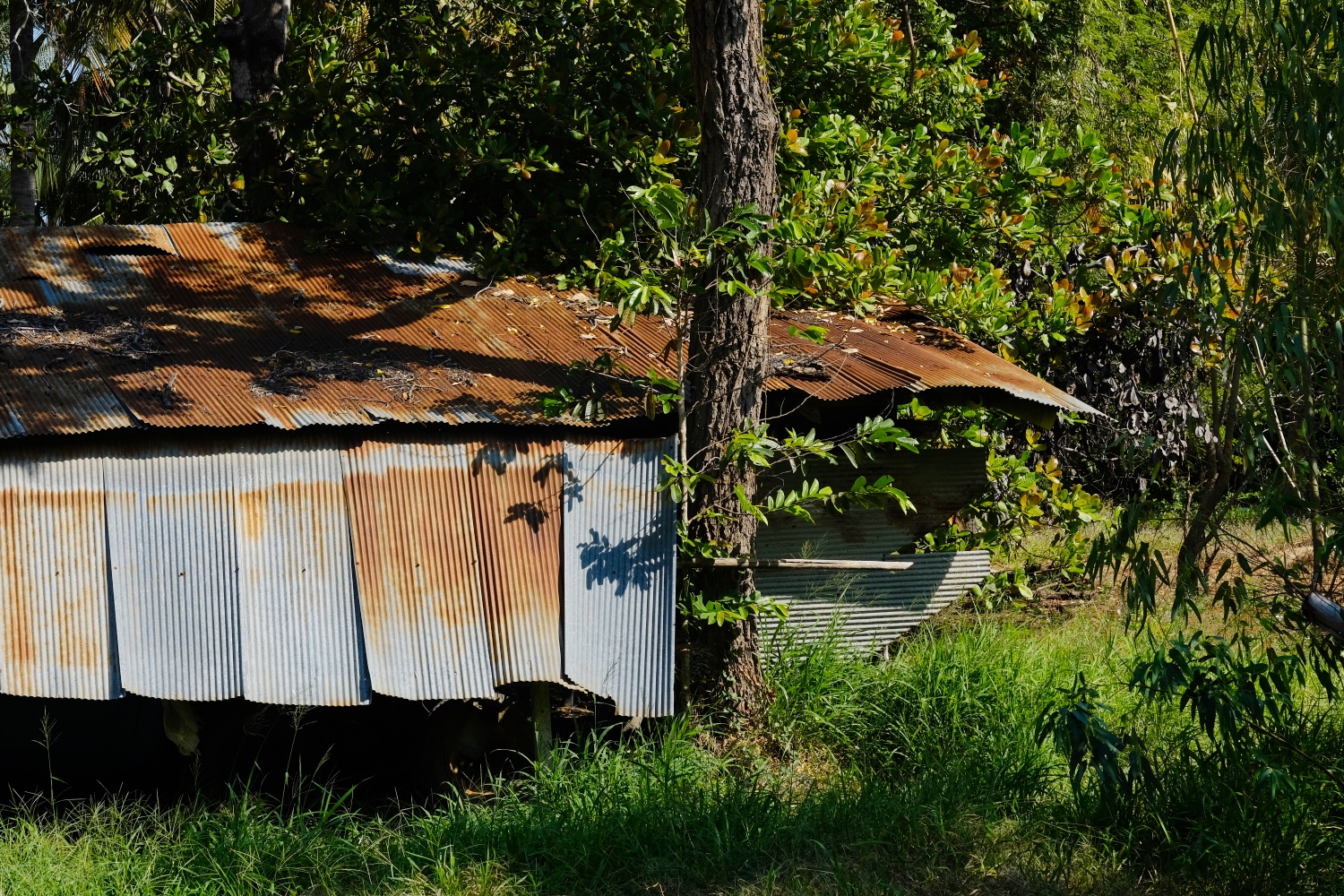 A few hundred meters away from where we stay . . . an old original farm.
A few hundred meters away from where we stay . . . an old original farm.
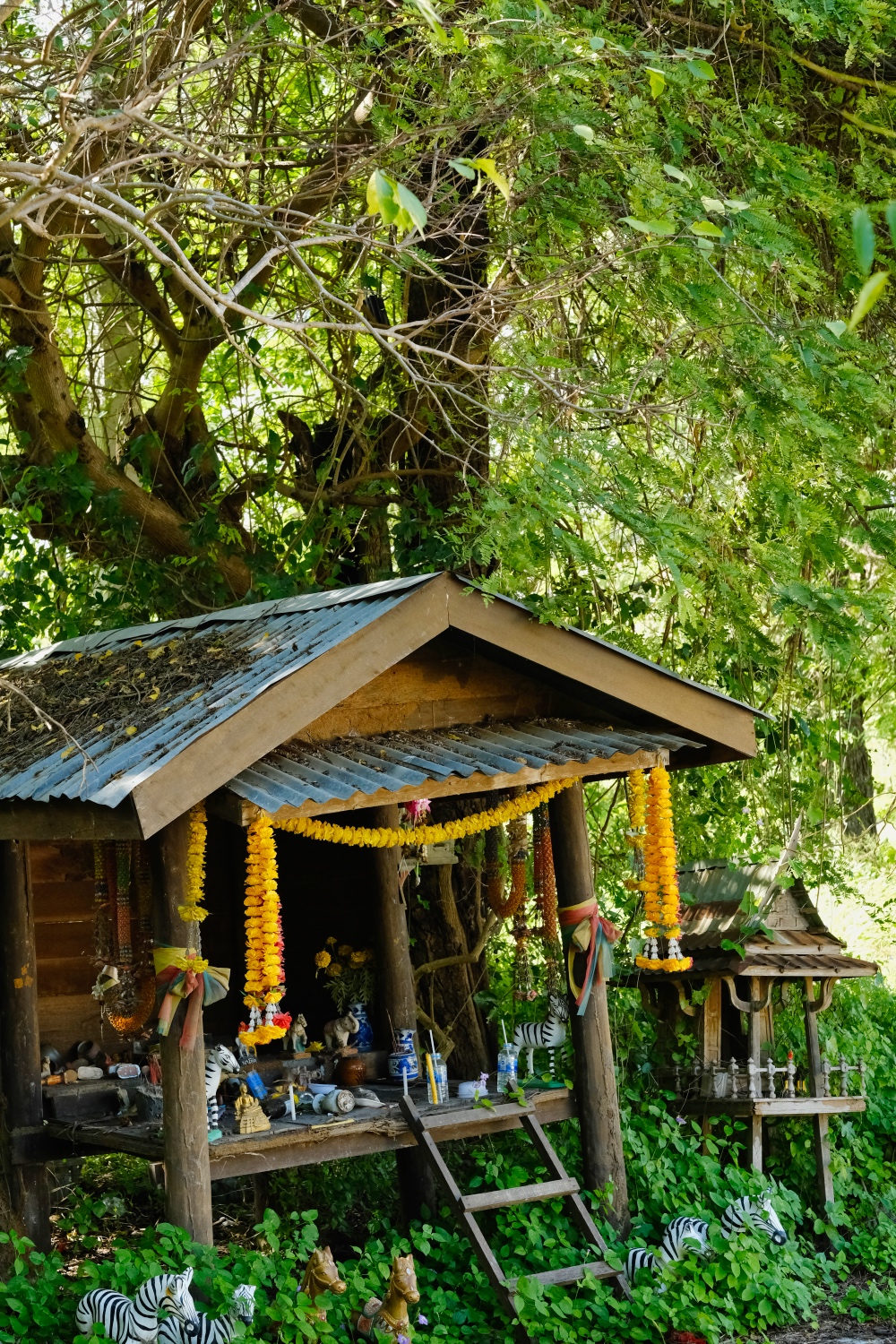 I photograph this old spirit house every time I go to Hua Hin, which is often.
I photograph this old spirit house every time I go to Hua Hin, which is often.
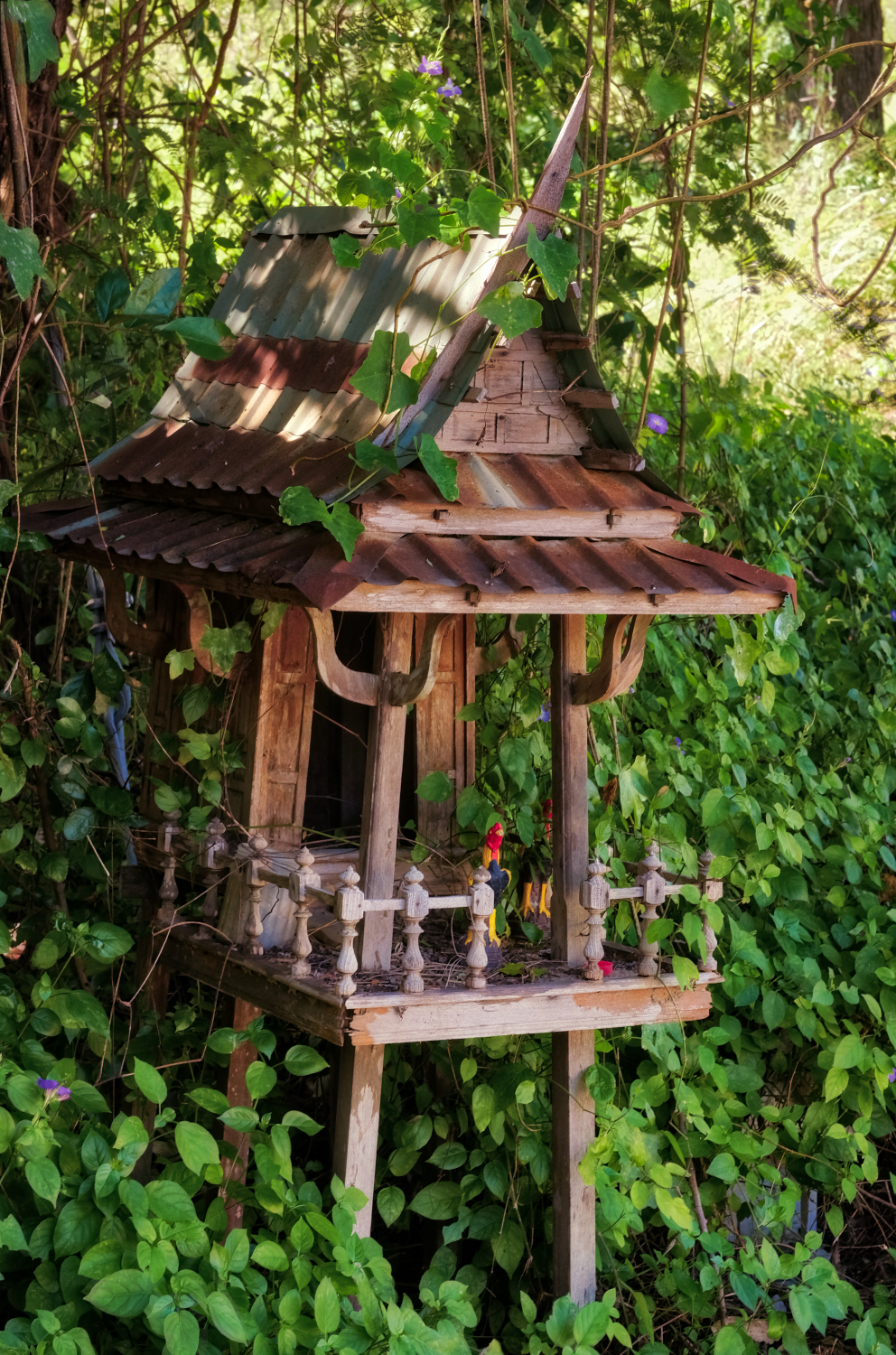 I am perpetually fascinated by this spirit house and its contents and details:
I am perpetually fascinated by this spirit house and its contents and details:
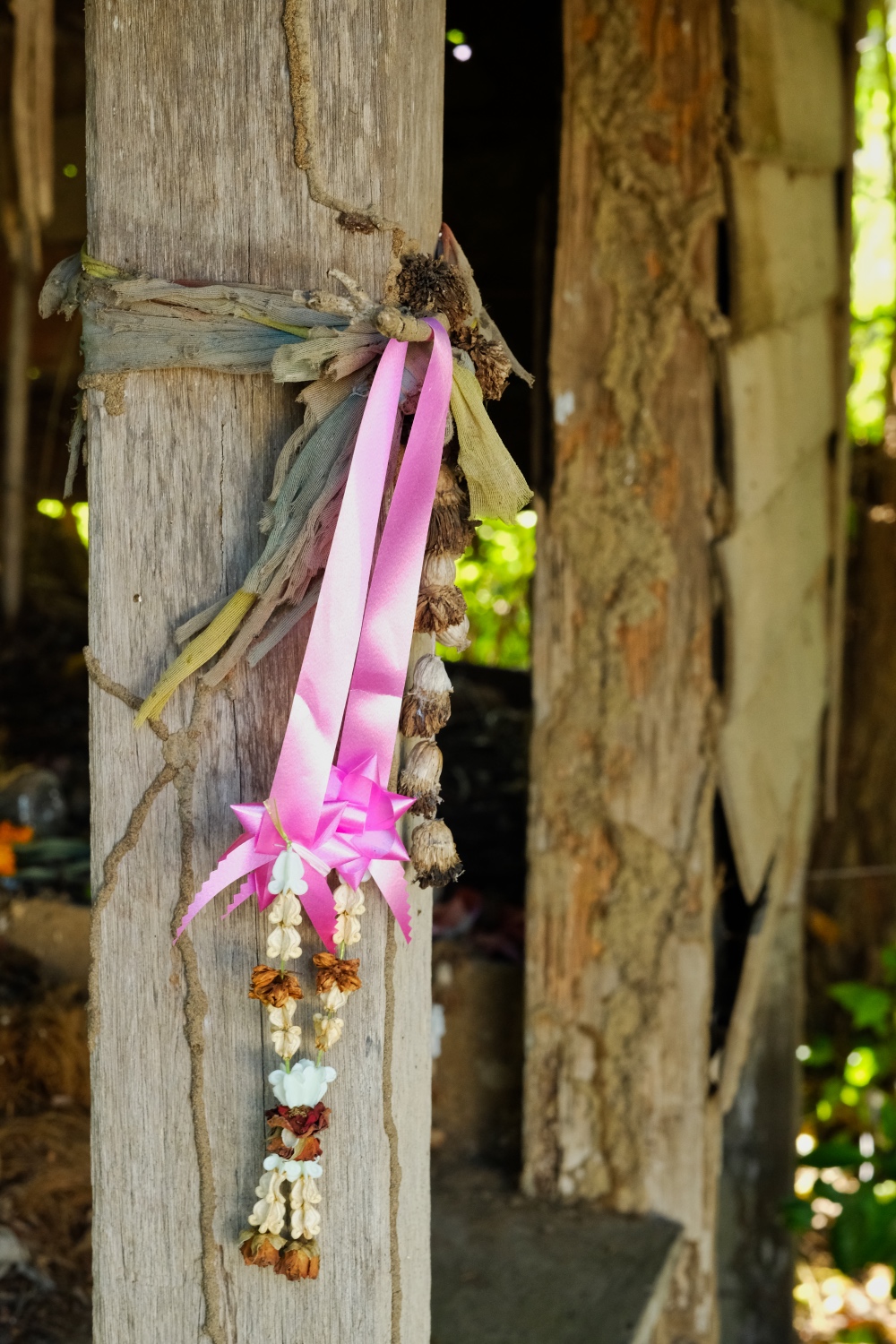 Although it seems abandoned, there are small signs of it being attended to.
Although it seems abandoned, there are small signs of it being attended to.
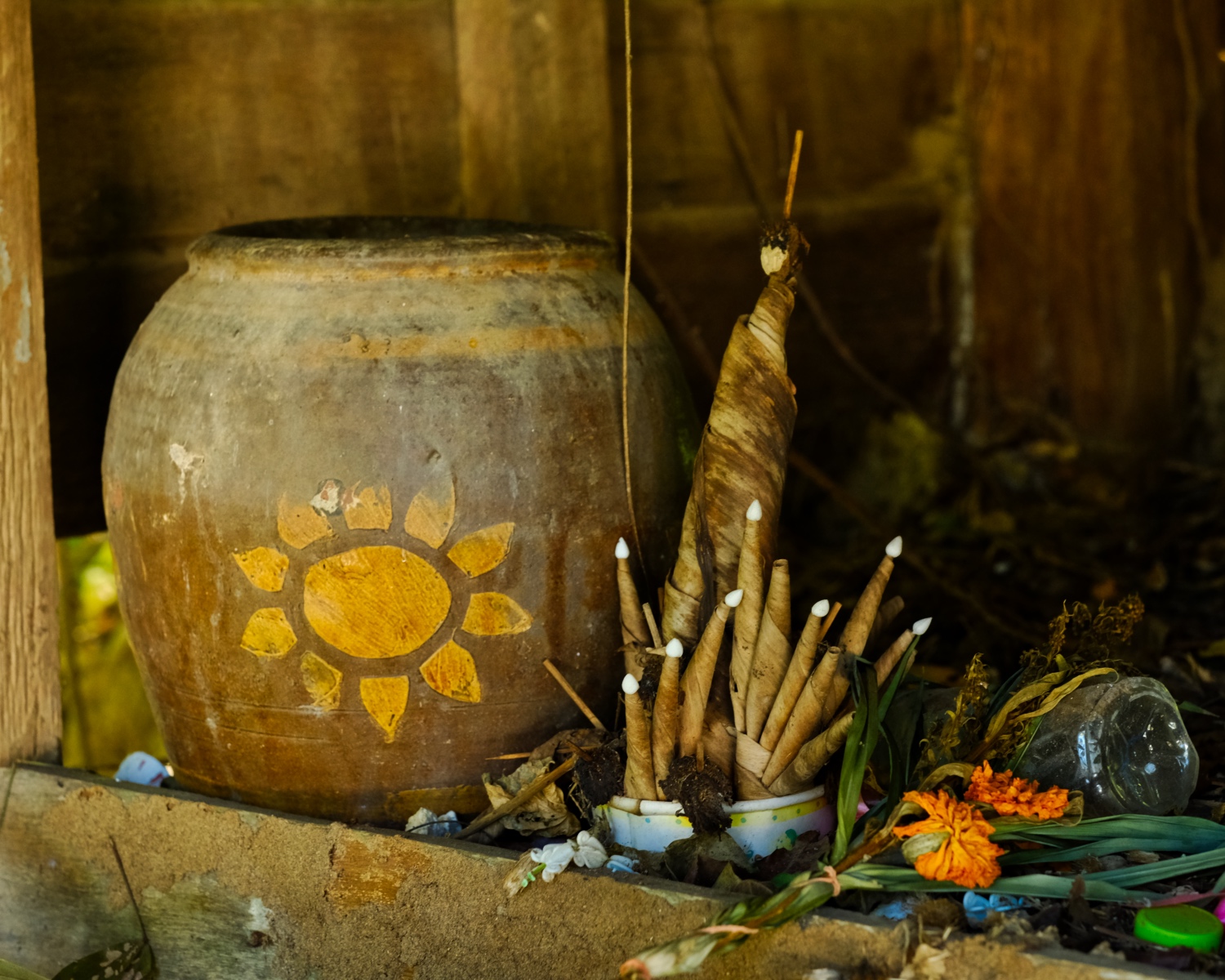 A small history of devotional attention.
A small history of devotional attention.
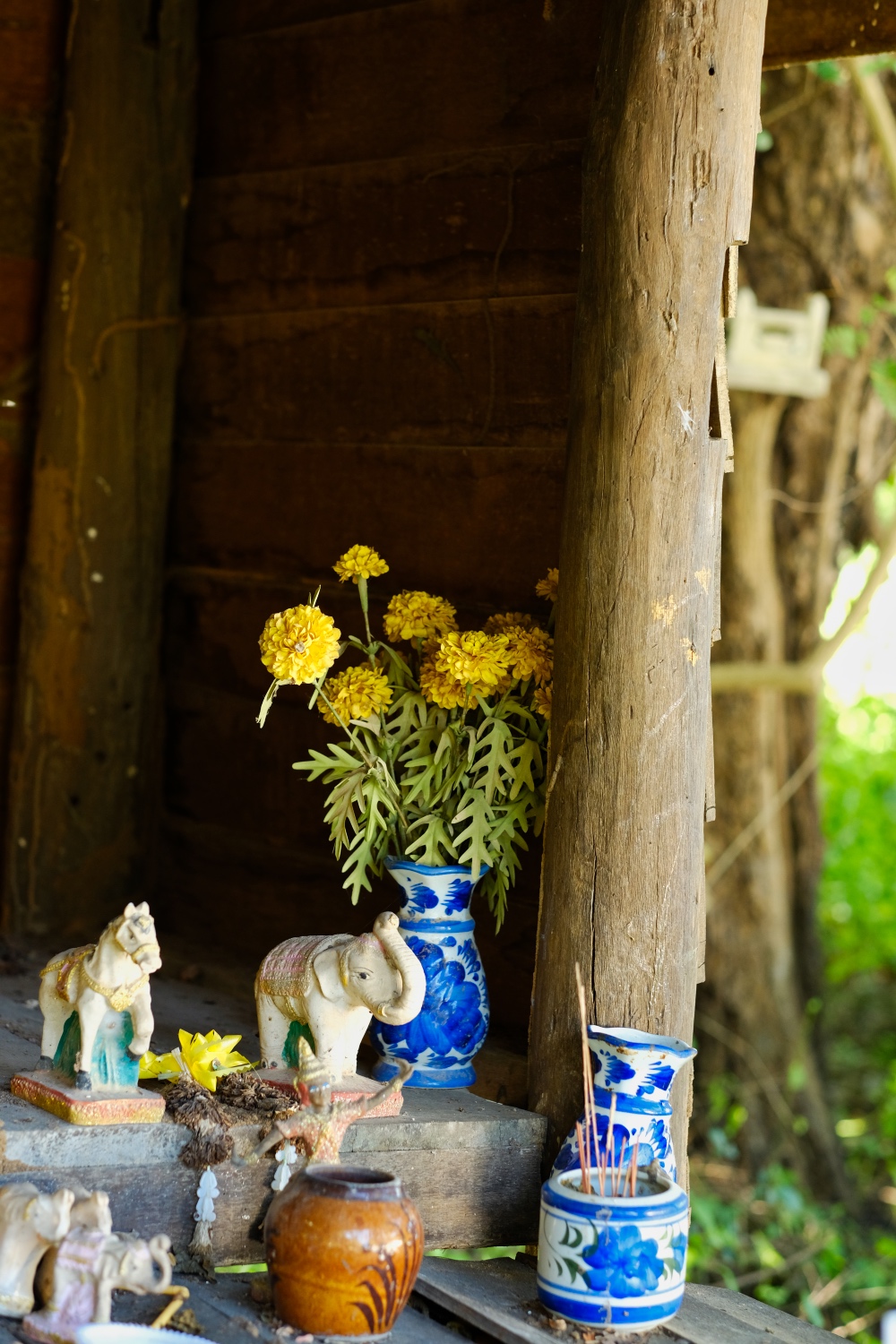 I am not sure if this has become a place for discarding ineffective spiritual paraphernalia . . . or is an active spirit house . . .
I am not sure if this has become a place for discarding ineffective spiritual paraphernalia . . . or is an active spirit house . . .
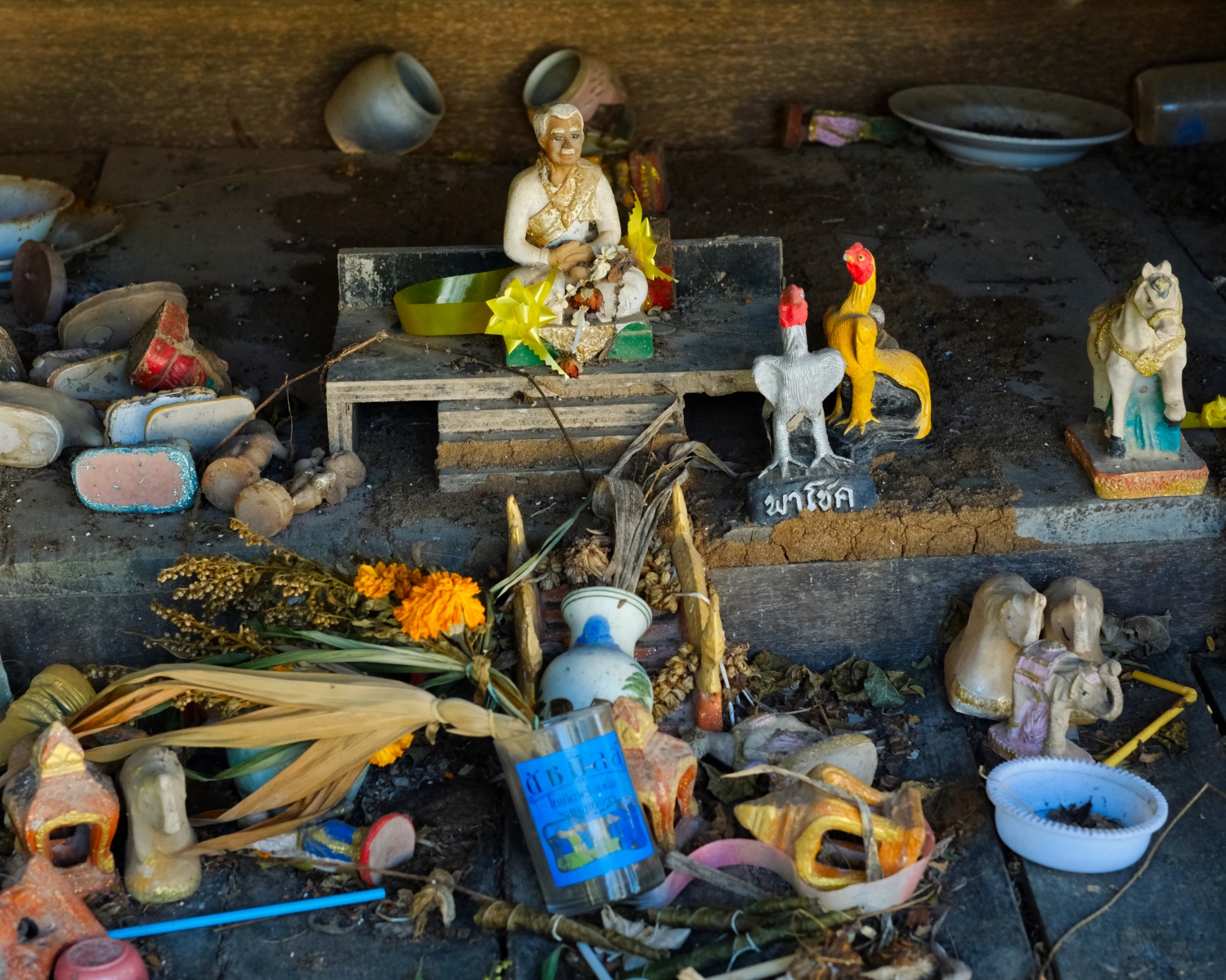 These were all there in there last photo I took two years ago.
These were all there in there last photo I took two years ago.
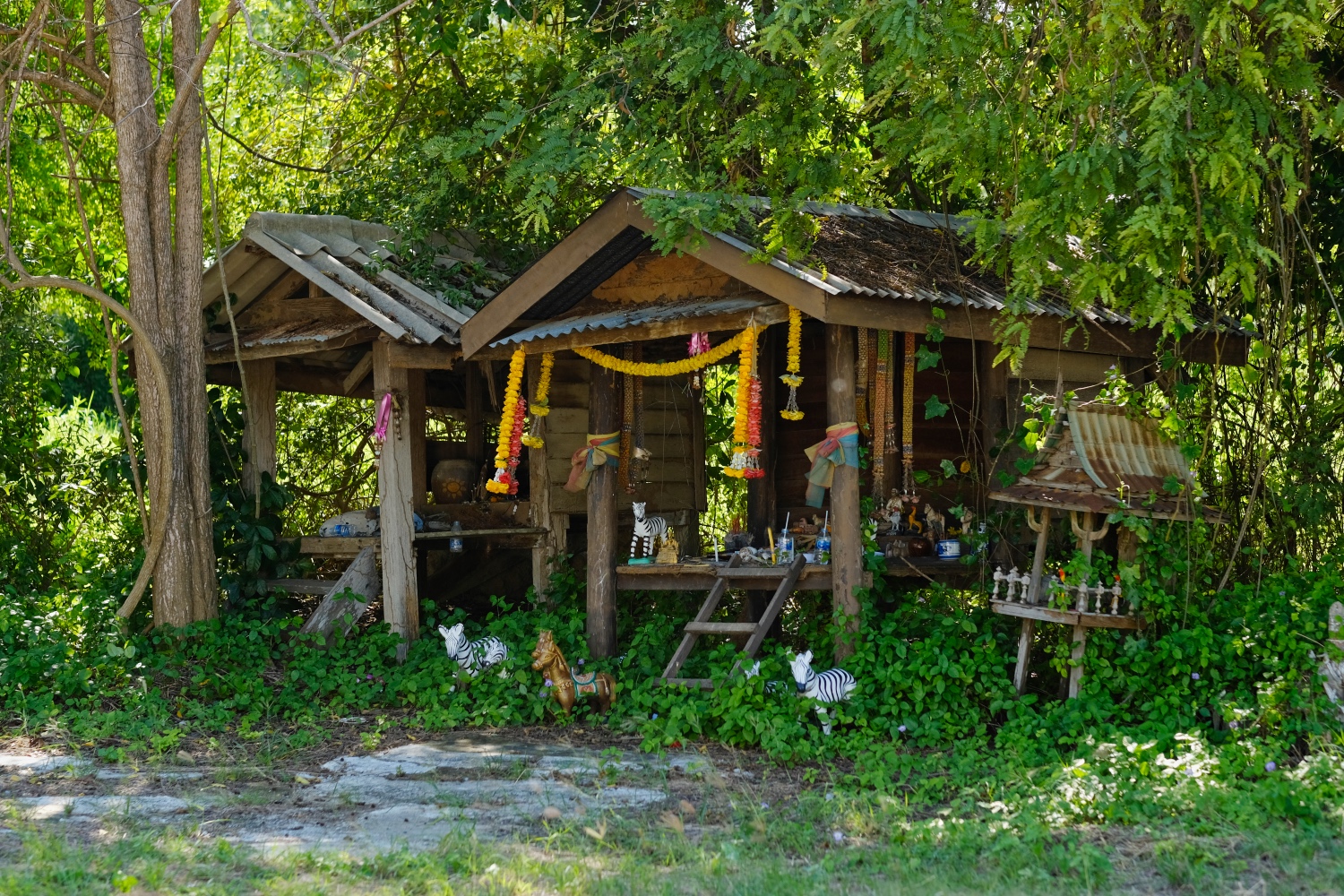 I left my old favorite spirit house behind for a long walk a round the area.
I left my old favorite spirit house behind for a long walk a round the area.
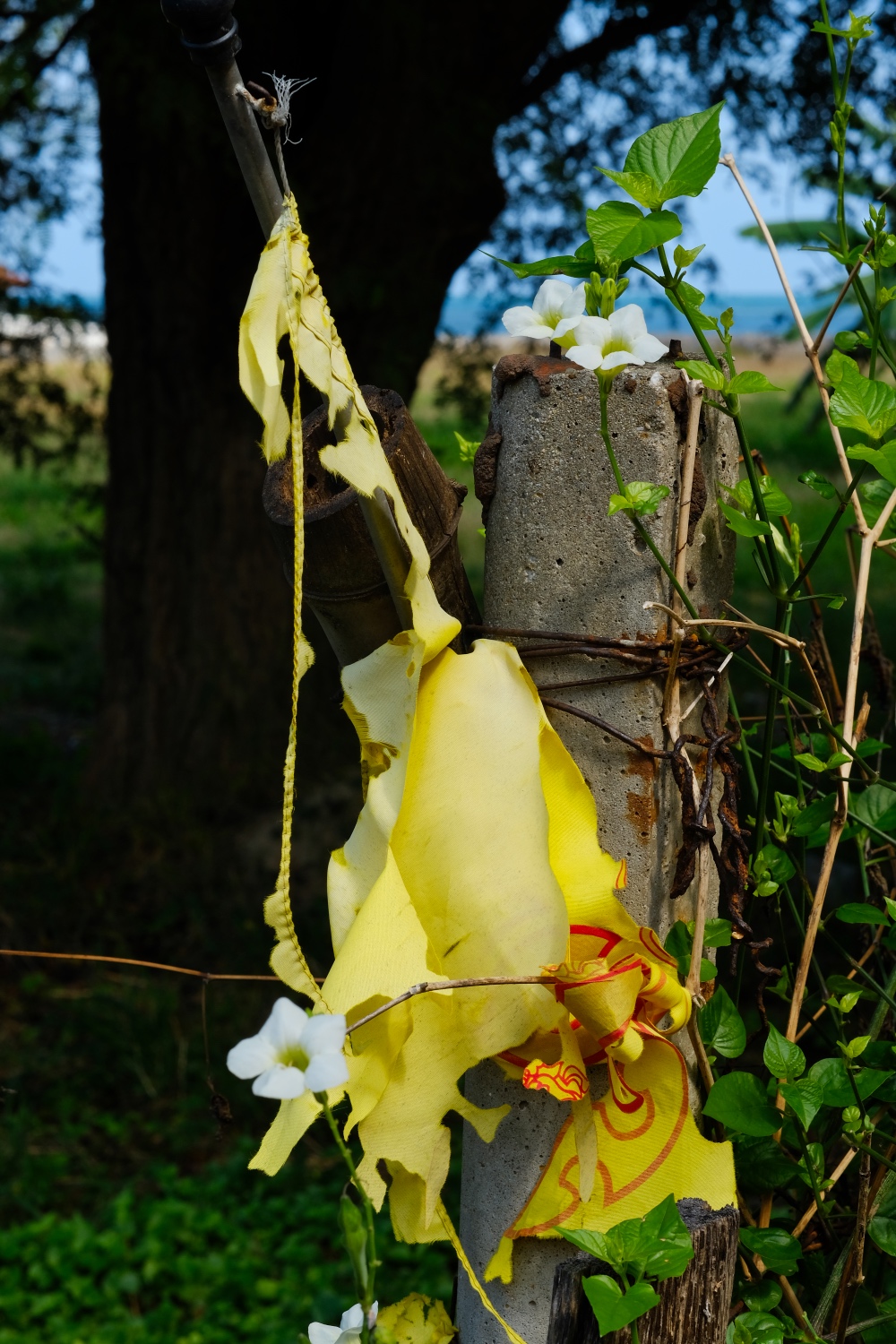 My walks around the area yields lots of interesting things to think about . . . and look at . . .
My walks around the area yields lots of interesting things to think about . . . and look at . . .
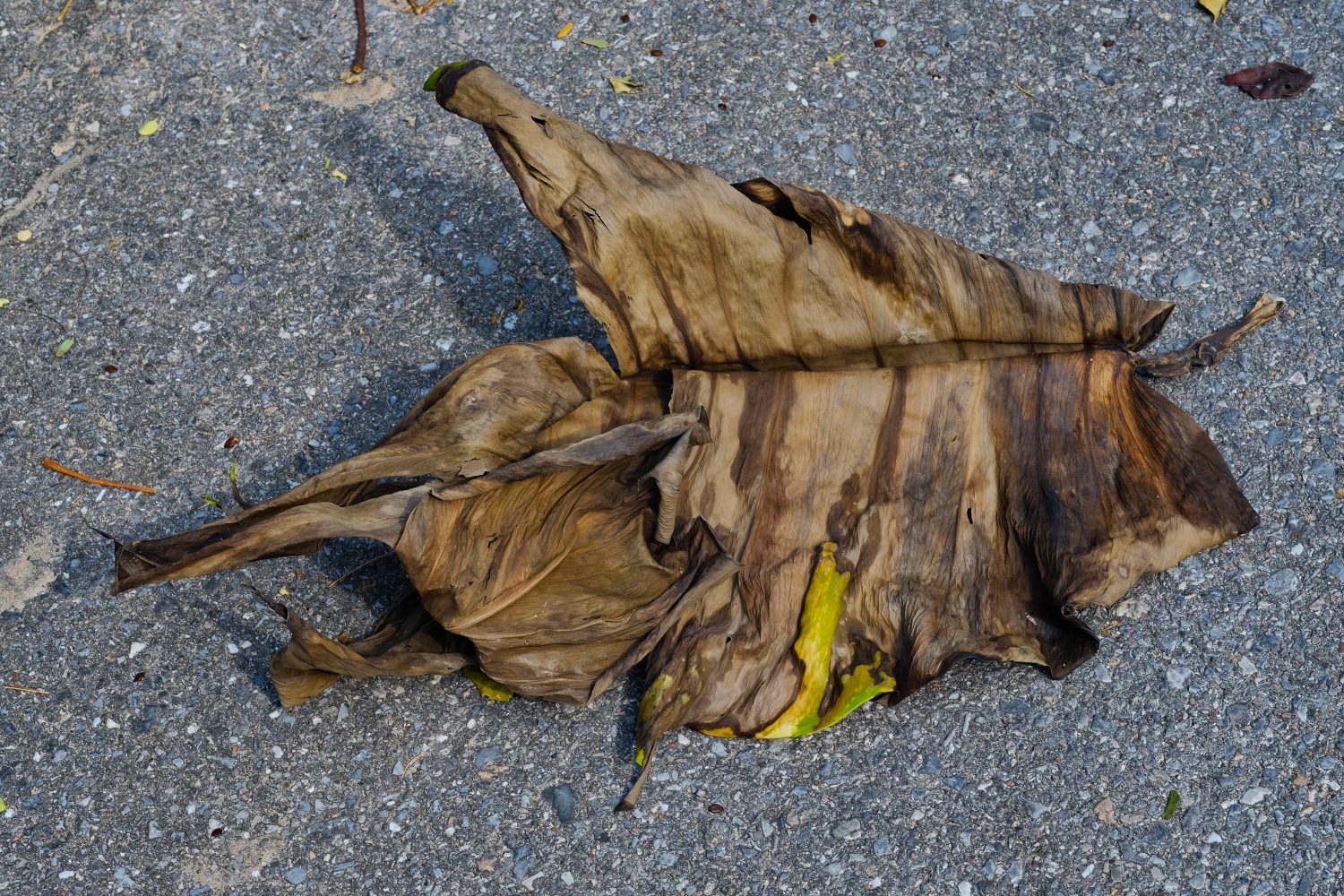 A large leaf drying on the road . . .
A large leaf drying on the road . . .
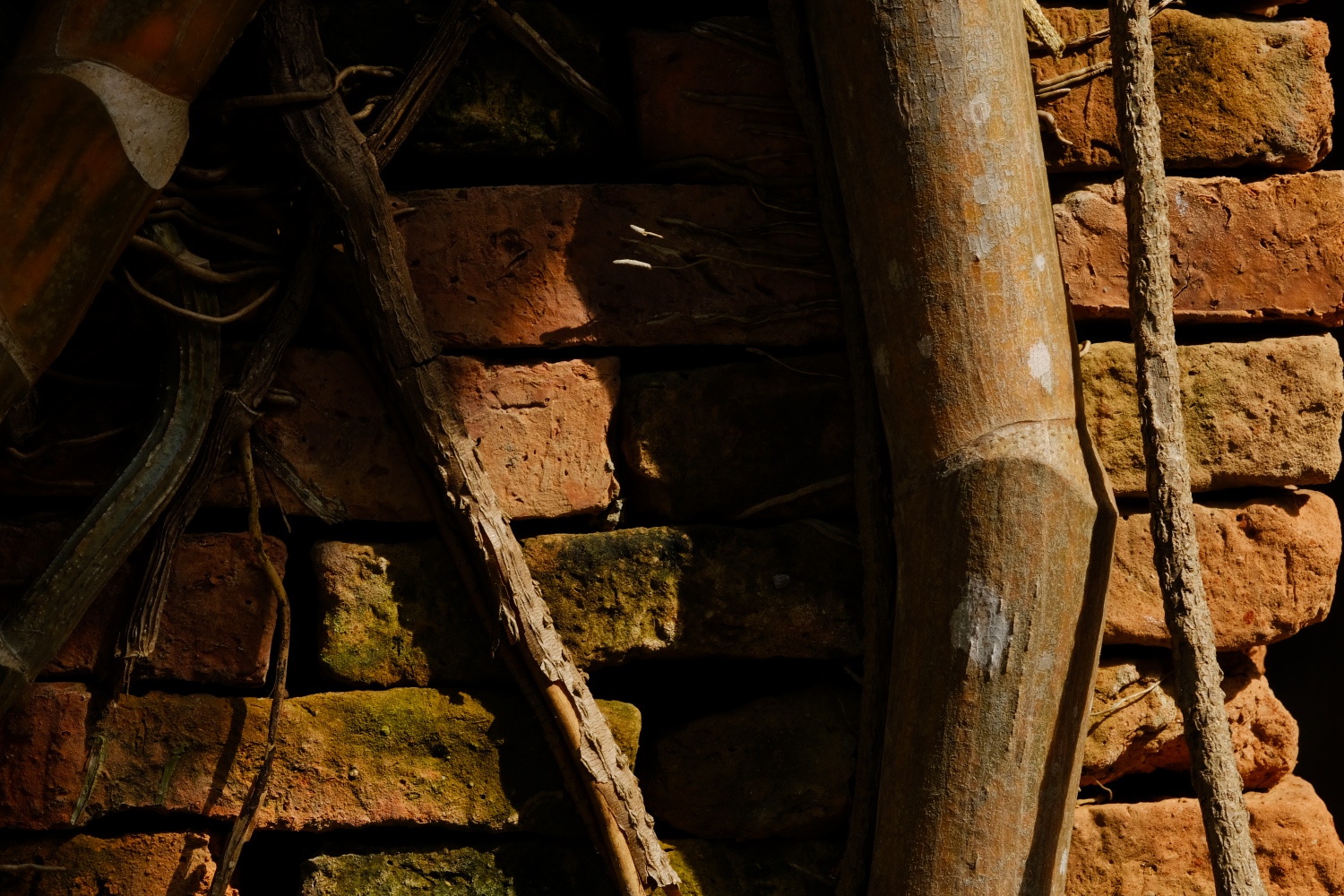 The drying leaf (above) is from this plant . . . a tropical climber.
The drying leaf (above) is from this plant . . . a tropical climber.
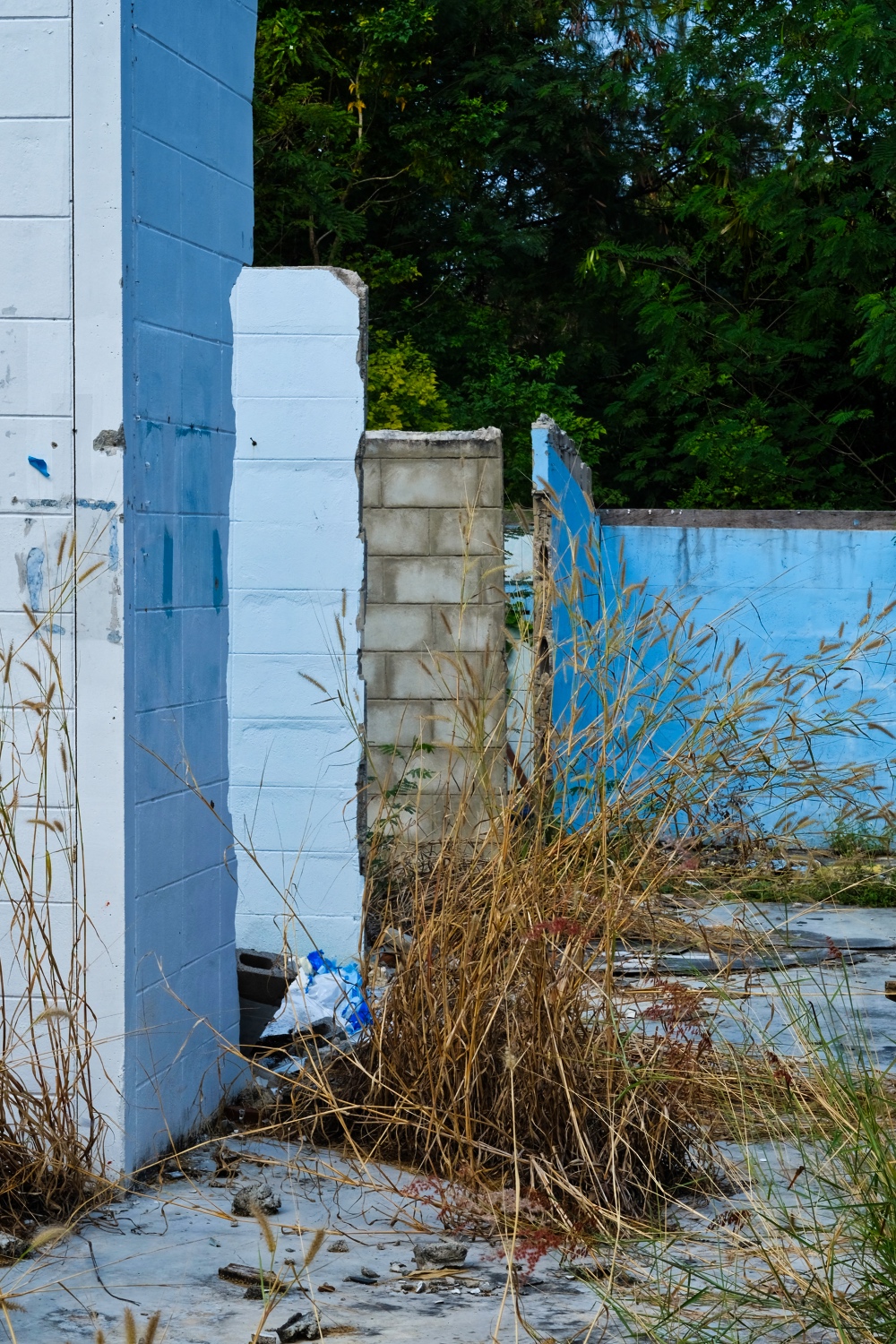 This used to be little store a family owned. I do not know what happened to them . . . perhaps they were squatters.
This used to be little store a family owned. I do not know what happened to them . . . perhaps they were squatters.
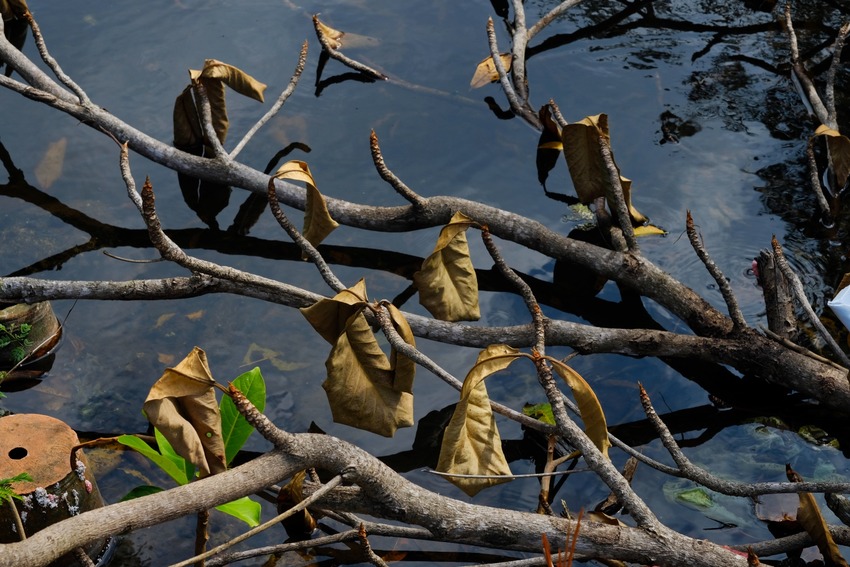 The area behind where we stay is often wet and swampy, especially at the end of the rainy season.
The area behind where we stay is often wet and swampy, especially at the end of the rainy season.
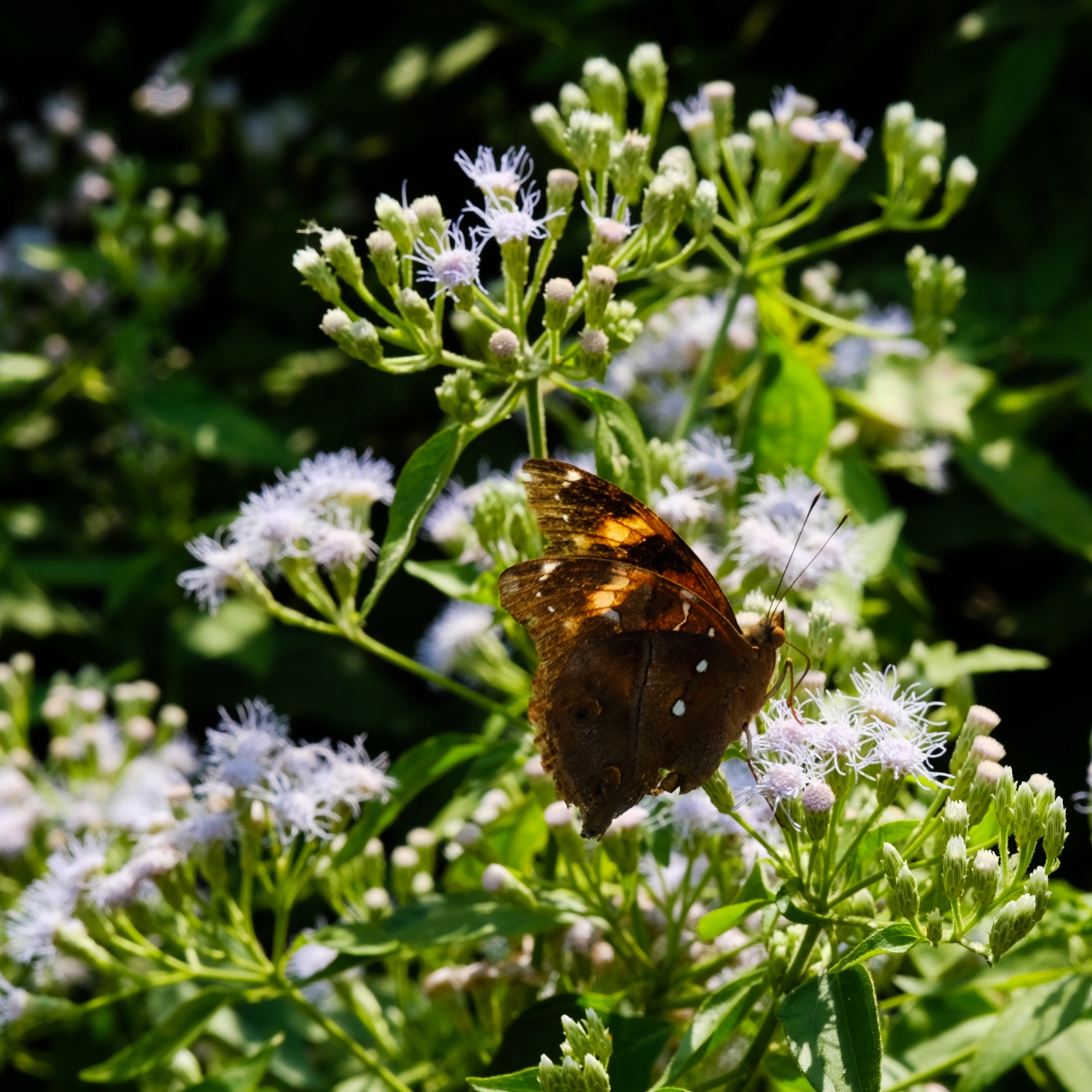 The wet ground brings flowering plants and butterflies.
The wet ground brings flowering plants and butterflies.
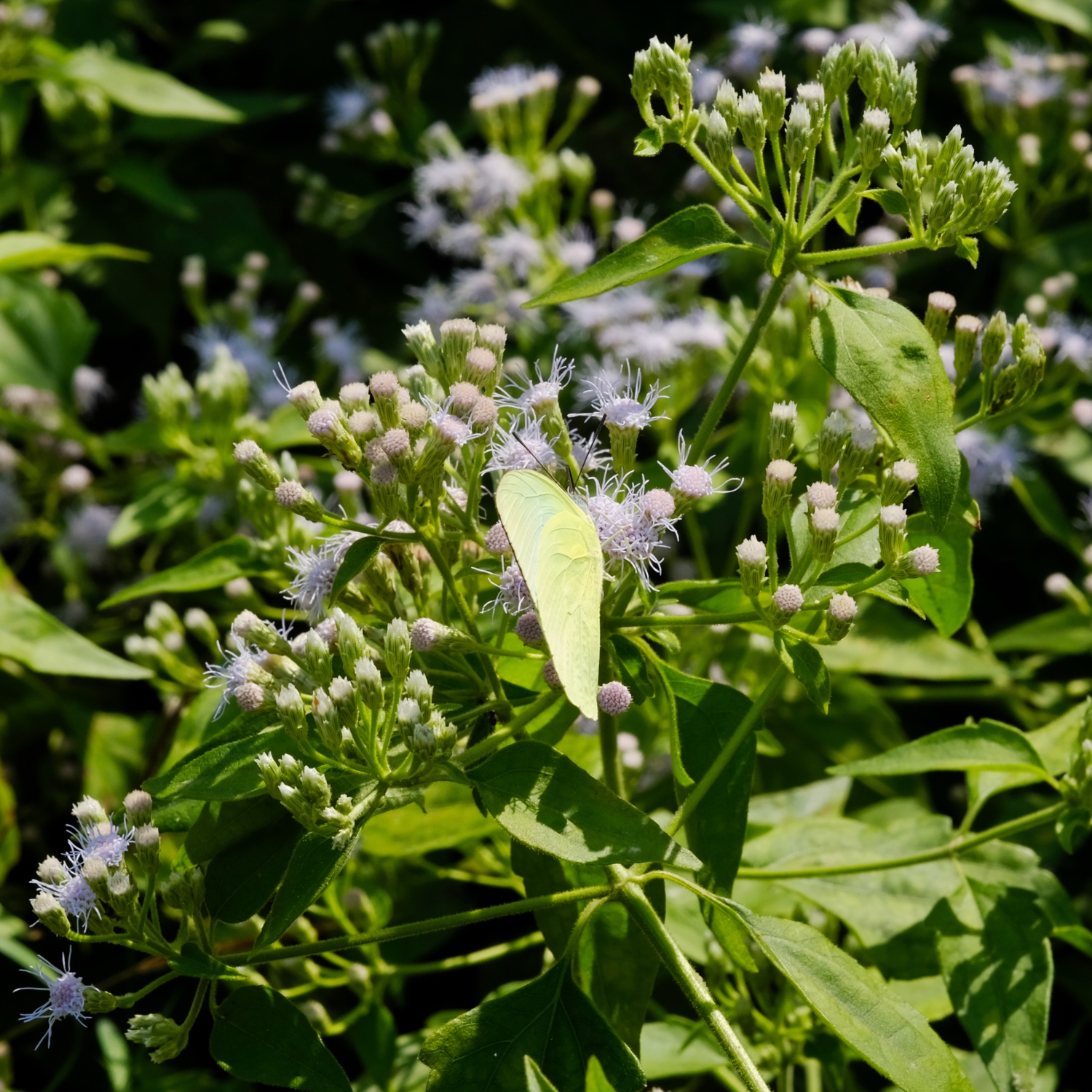 Butterflies are very difficult to photograph because they are always moving . . . or do not cooperate when they are still. This one would not open its beautiful wings!
Butterflies are very difficult to photograph because they are always moving . . . or do not cooperate when they are still. This one would not open its beautiful wings!
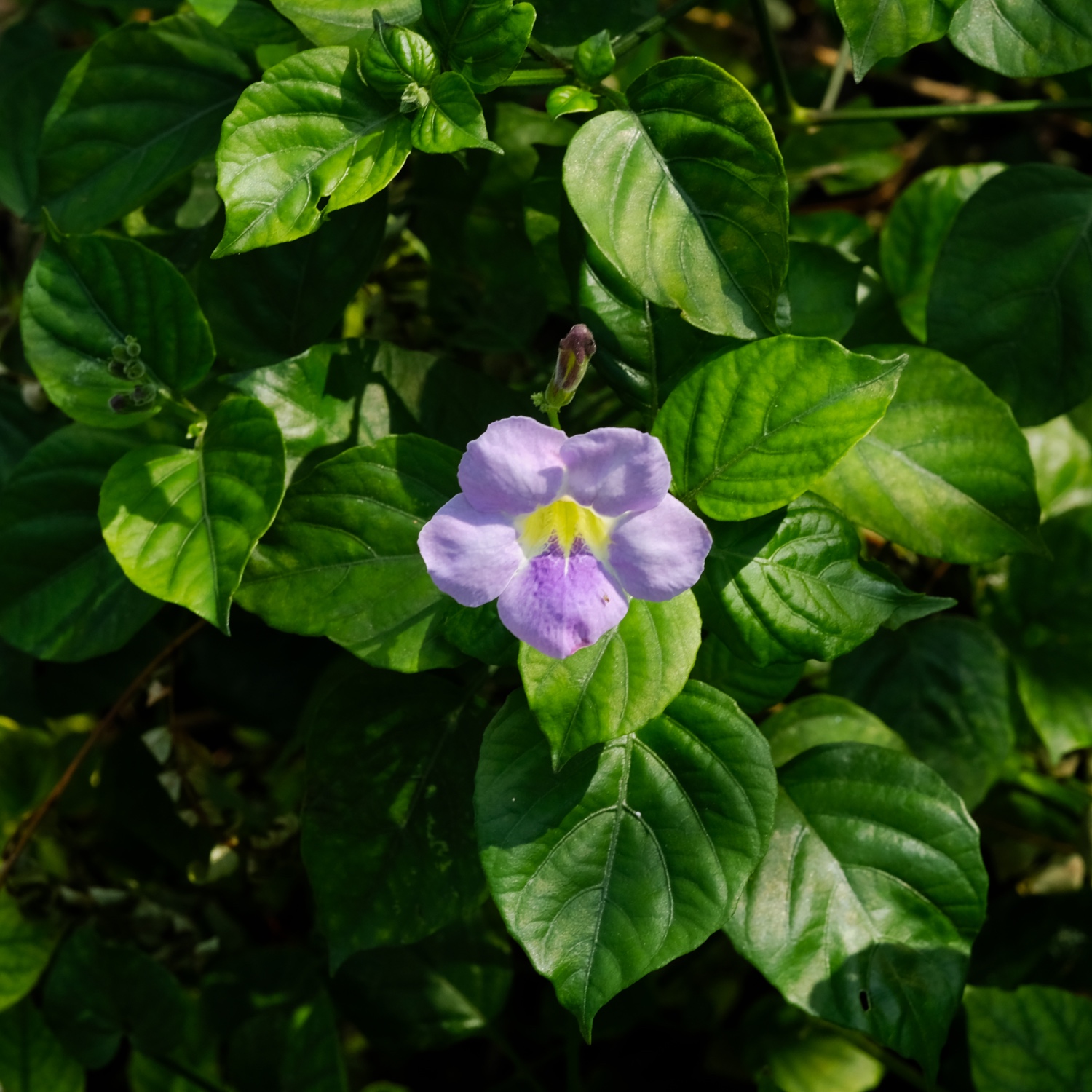 Many and varied beautiful flowers were out on this first day of the year.
Many and varied beautiful flowers were out on this first day of the year.
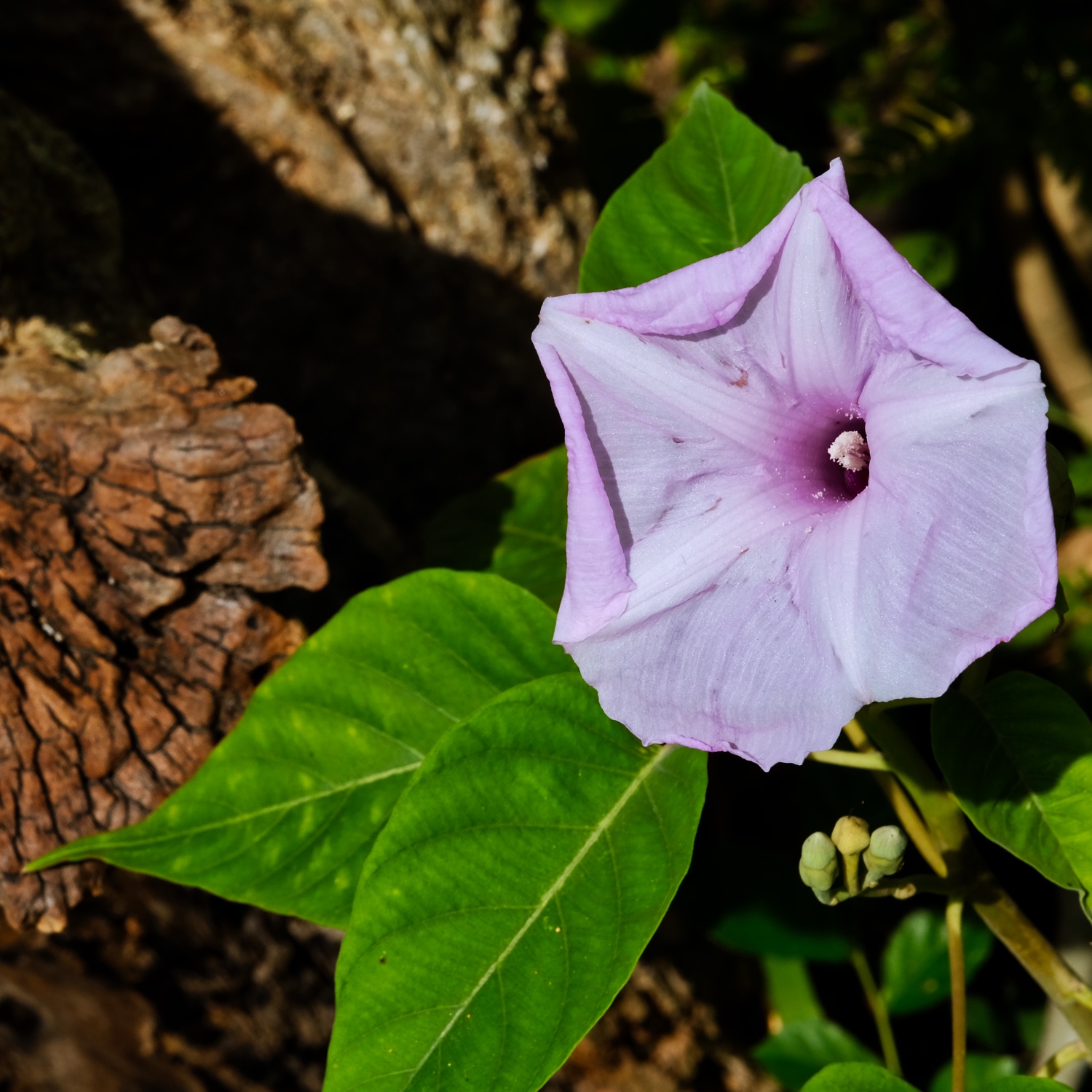 Beautiful and delicate.
Beautiful and delicate.
 Bougainvillea.
Bougainvillea.
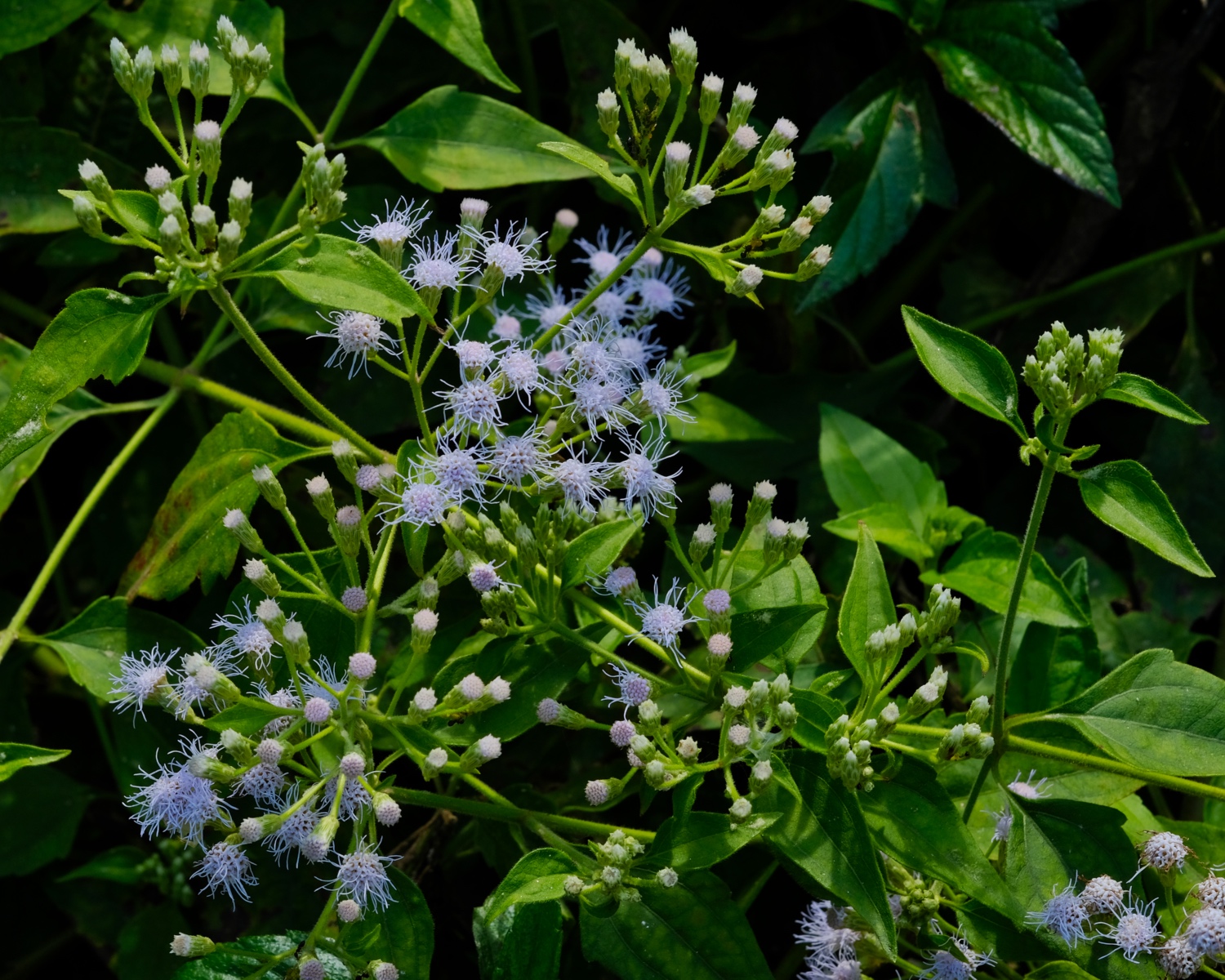 My favorite.
My favorite.
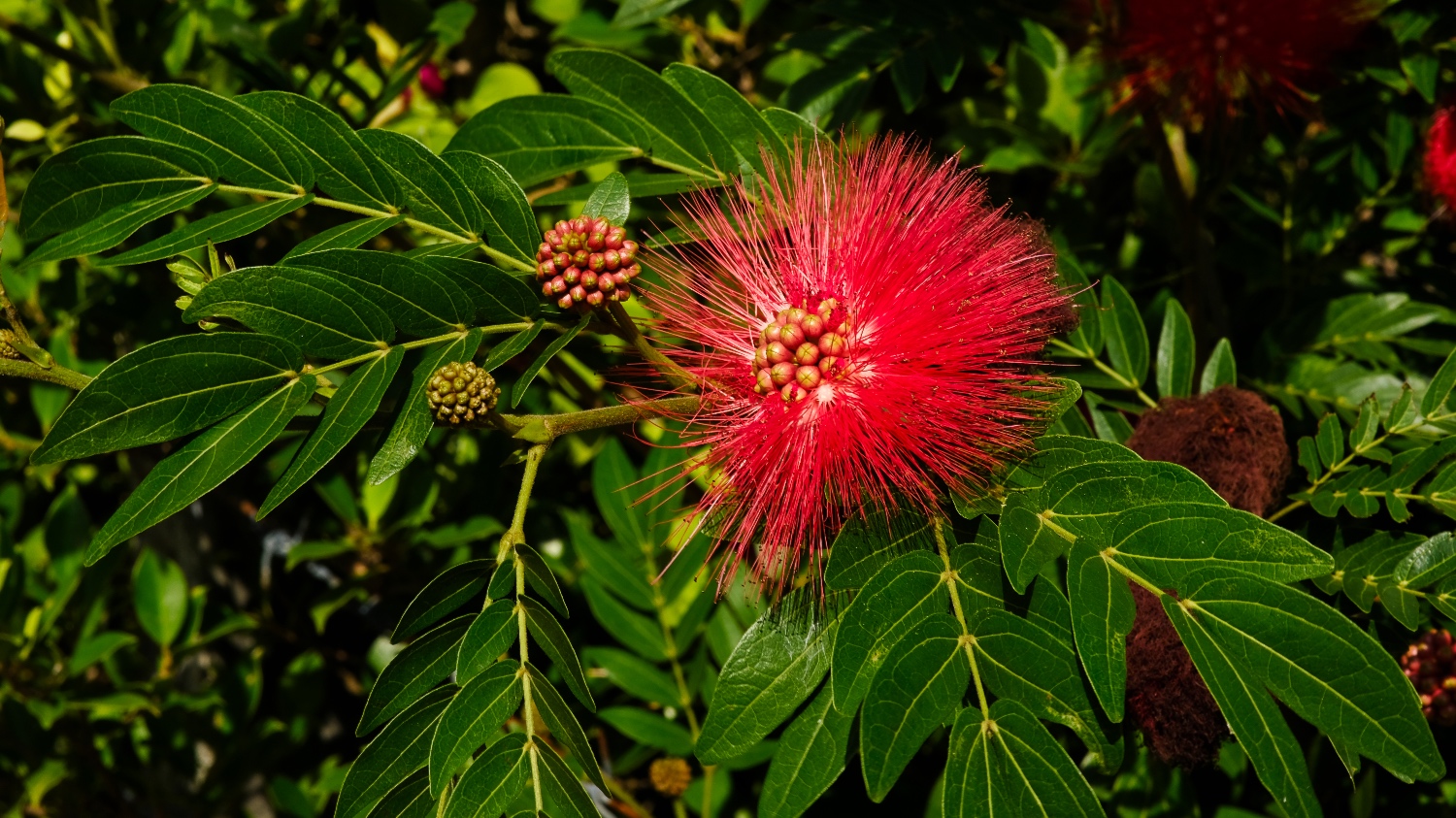 Red puffs and new seed pods . . .
Red puffs and new seed pods . . .
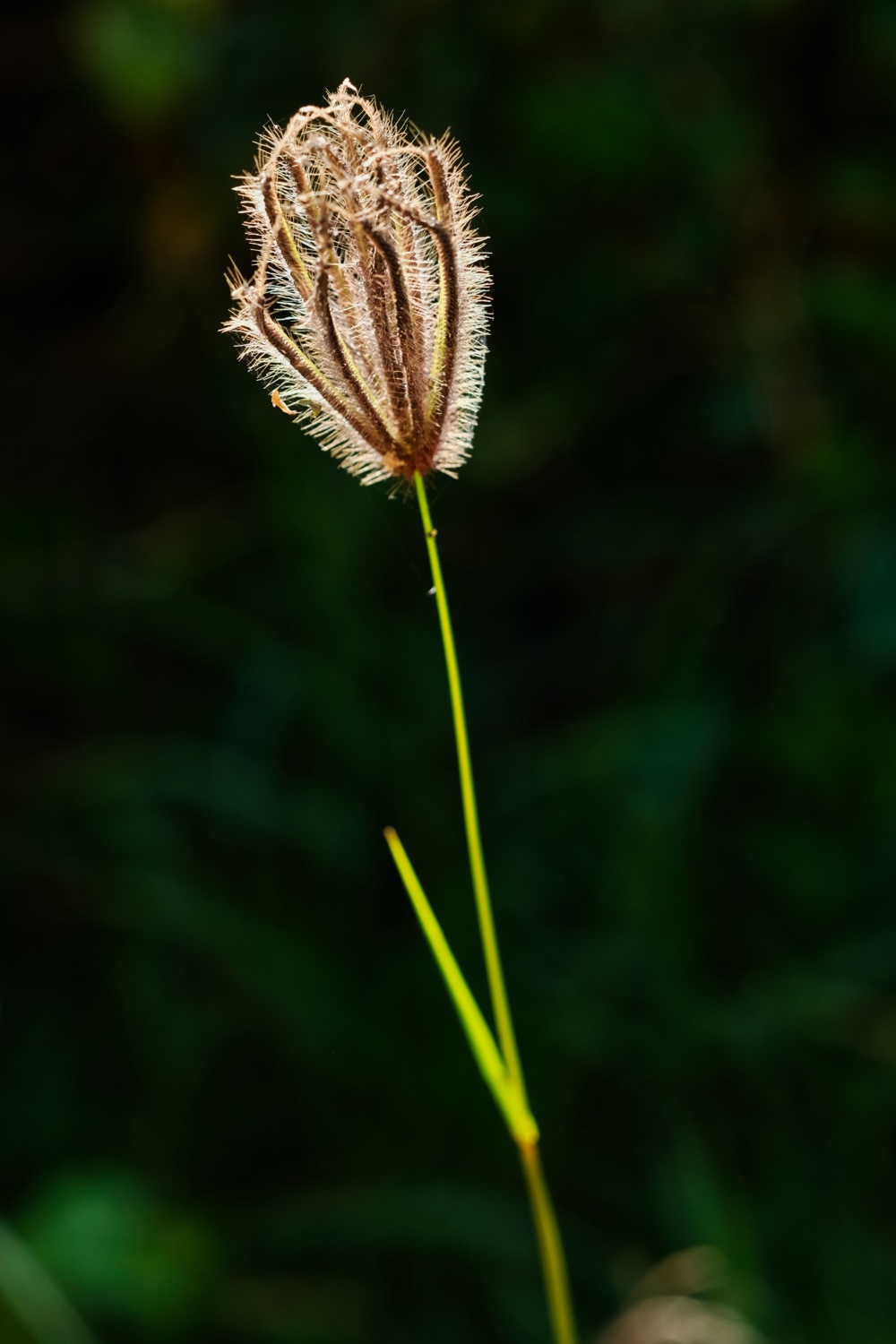 Dried bud.
Dried bud.
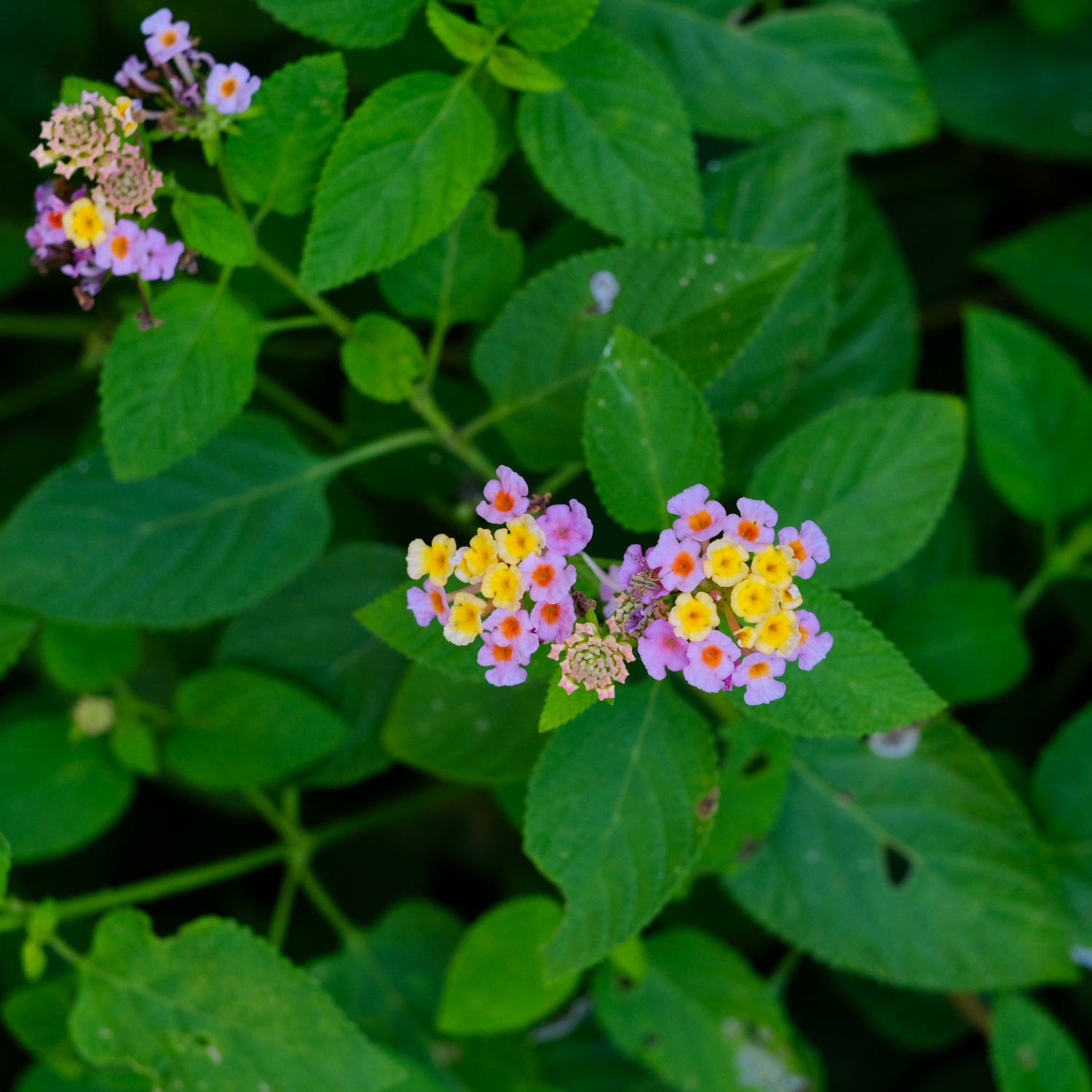 Pretty and very tiny.
Pretty and very tiny.
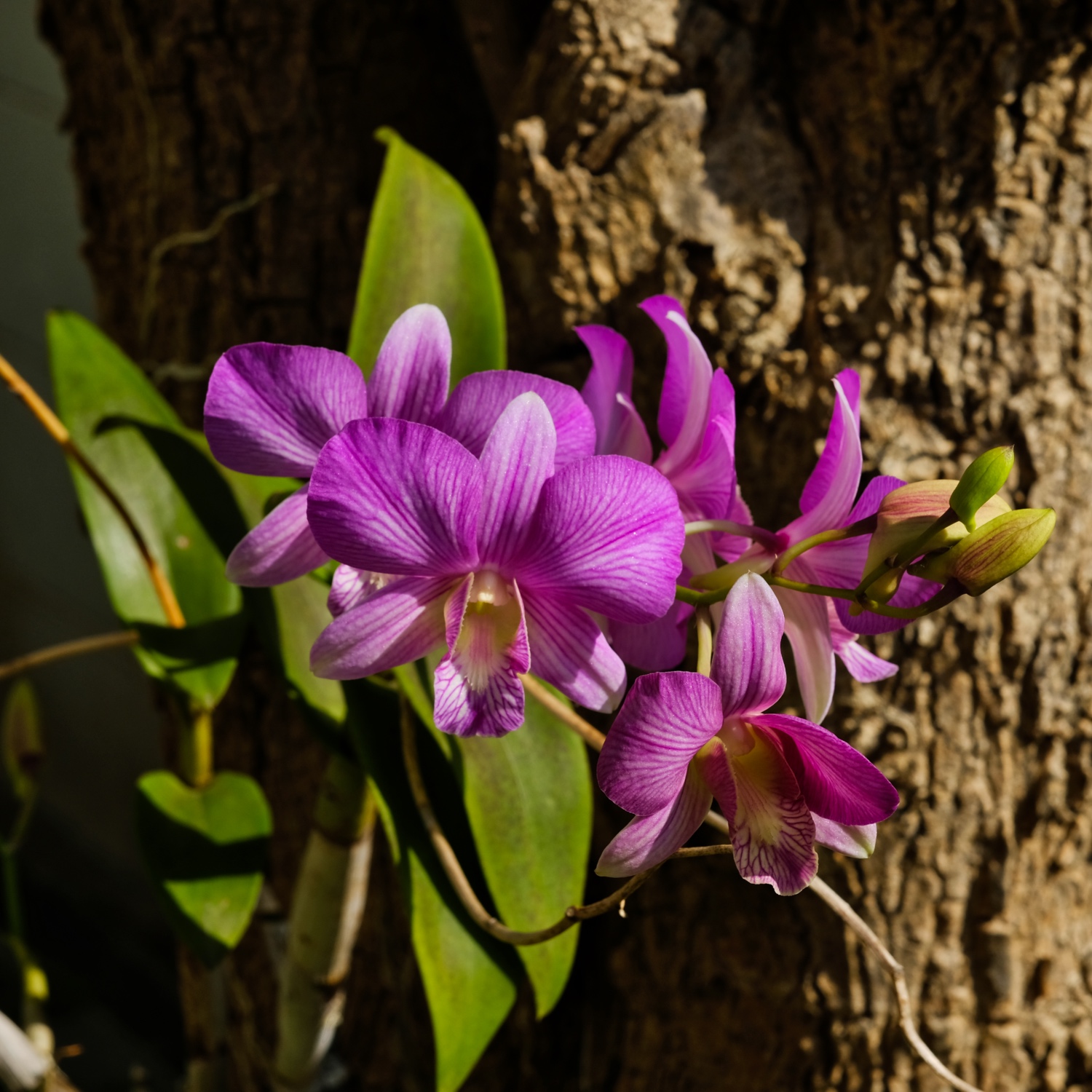 Classic Thai orchids.
Classic Thai orchids.
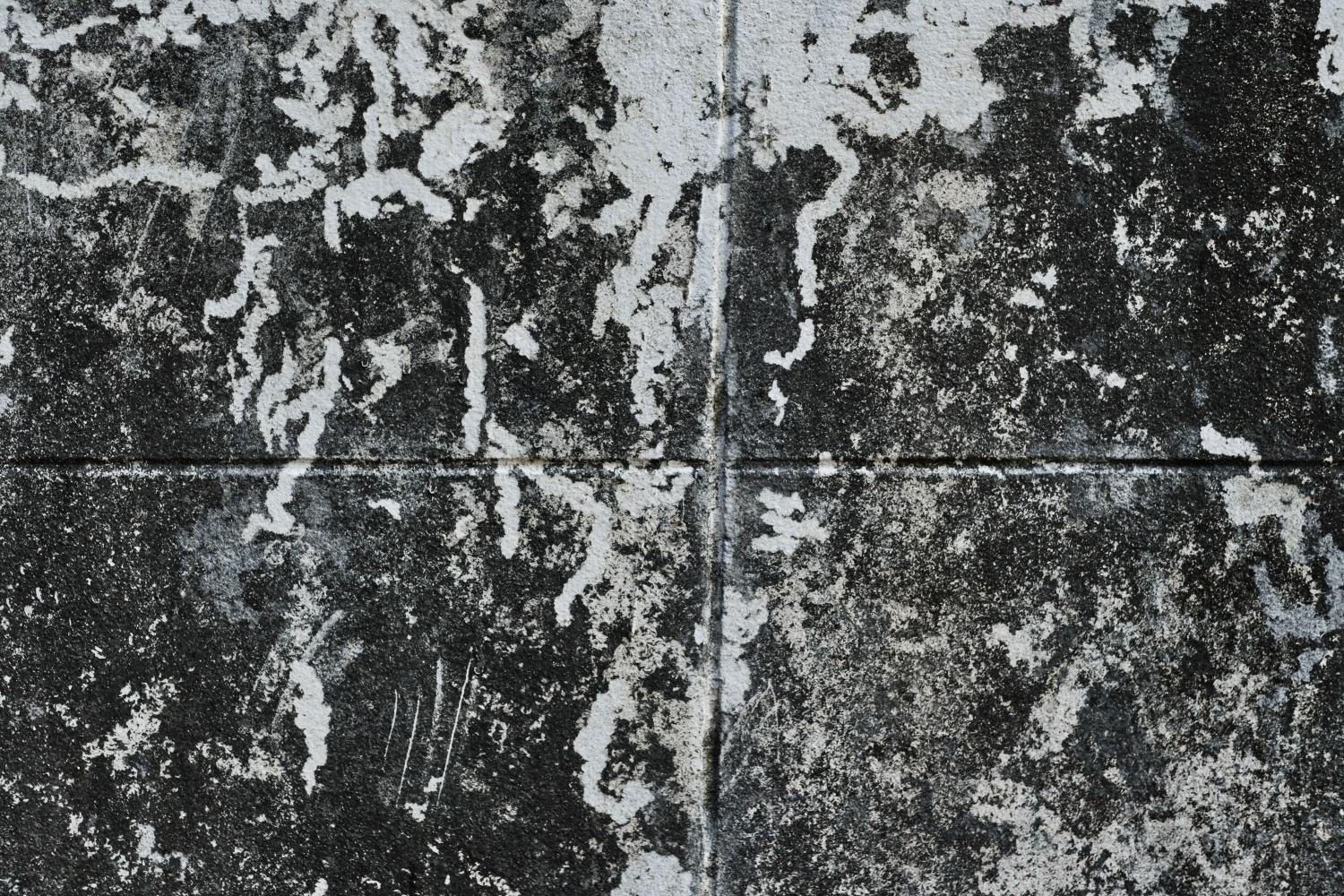 Not a black and white photo . . a moldy white wall with snail tracks . . .
Not a black and white photo . . a moldy white wall with snail tracks . . .
WAT HUAI SAI TAI
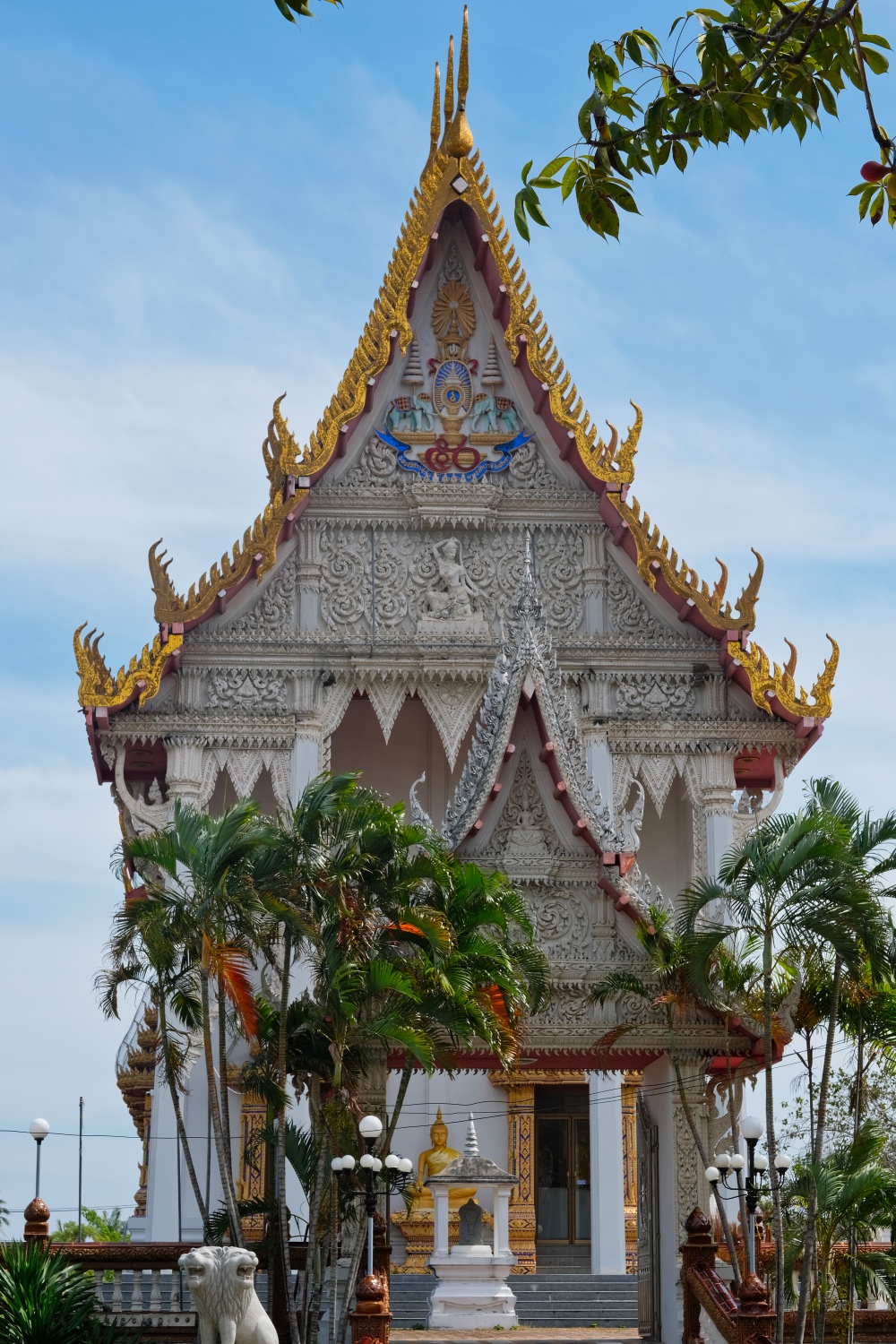 I can see this Wat from where we stay on the beach, and I have seen buildings go up here over the years, but I had not revisited it in over 10 years.
I can see this Wat from where we stay on the beach, and I have seen buildings go up here over the years, but I had not revisited it in over 10 years.
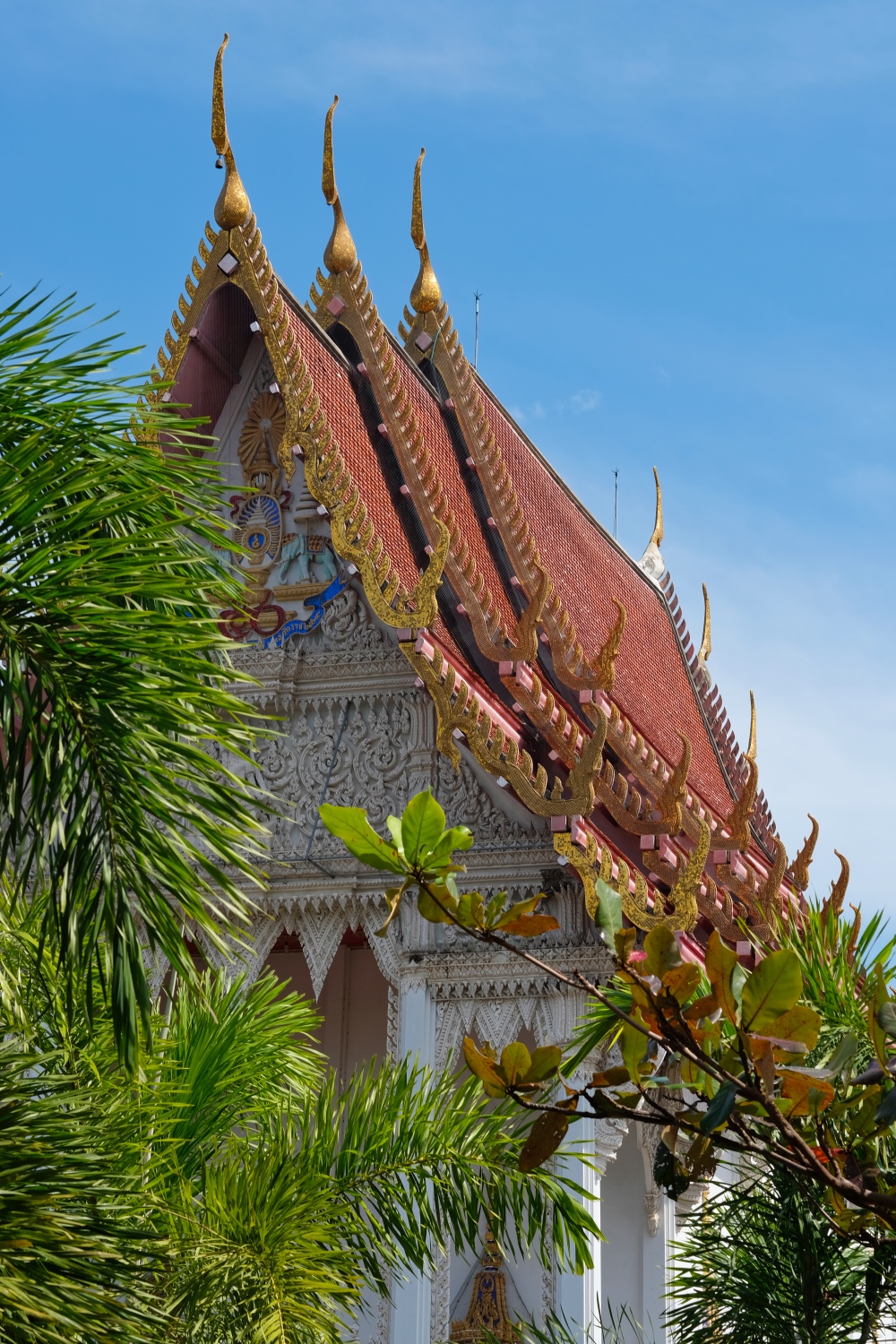 I always liked the architecture of this particular Wat . . . so ornate, yet balanced and dignified.
I always liked the architecture of this particular Wat . . . so ornate, yet balanced and dignified.
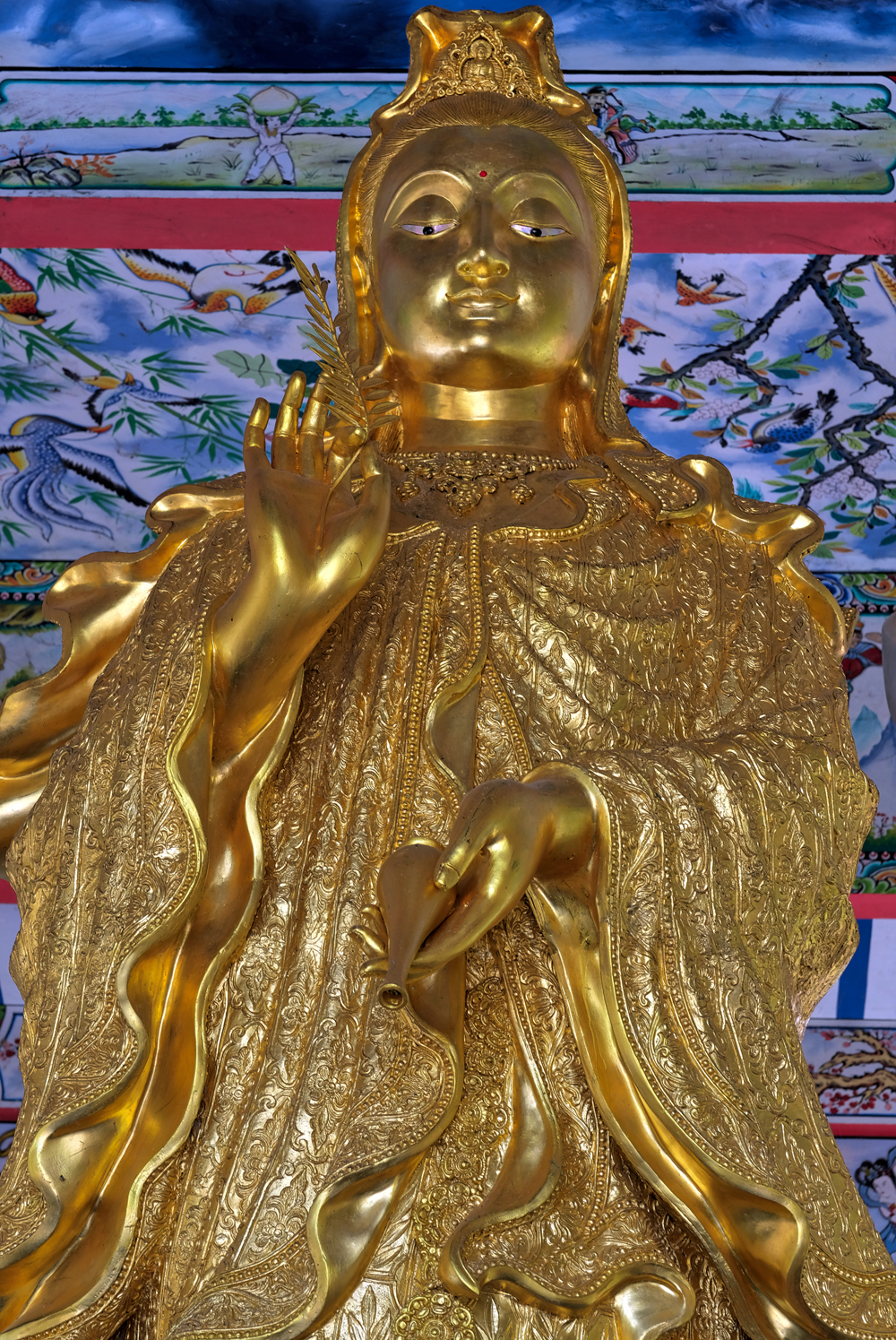 Wat Huai Sai Thai was actually three Wats in one: The traditional Thai Wat, a Chinese Buddhist Temple, and a Shrine to a famous Monk, Luongpor Thonsuk. The Chinese Temple had a wonderful Guanyin statue.
Wat Huai Sai Thai was actually three Wats in one: The traditional Thai Wat, a Chinese Buddhist Temple, and a Shrine to a famous Monk, Luongpor Thonsuk. The Chinese Temple had a wonderful Guanyin statue.
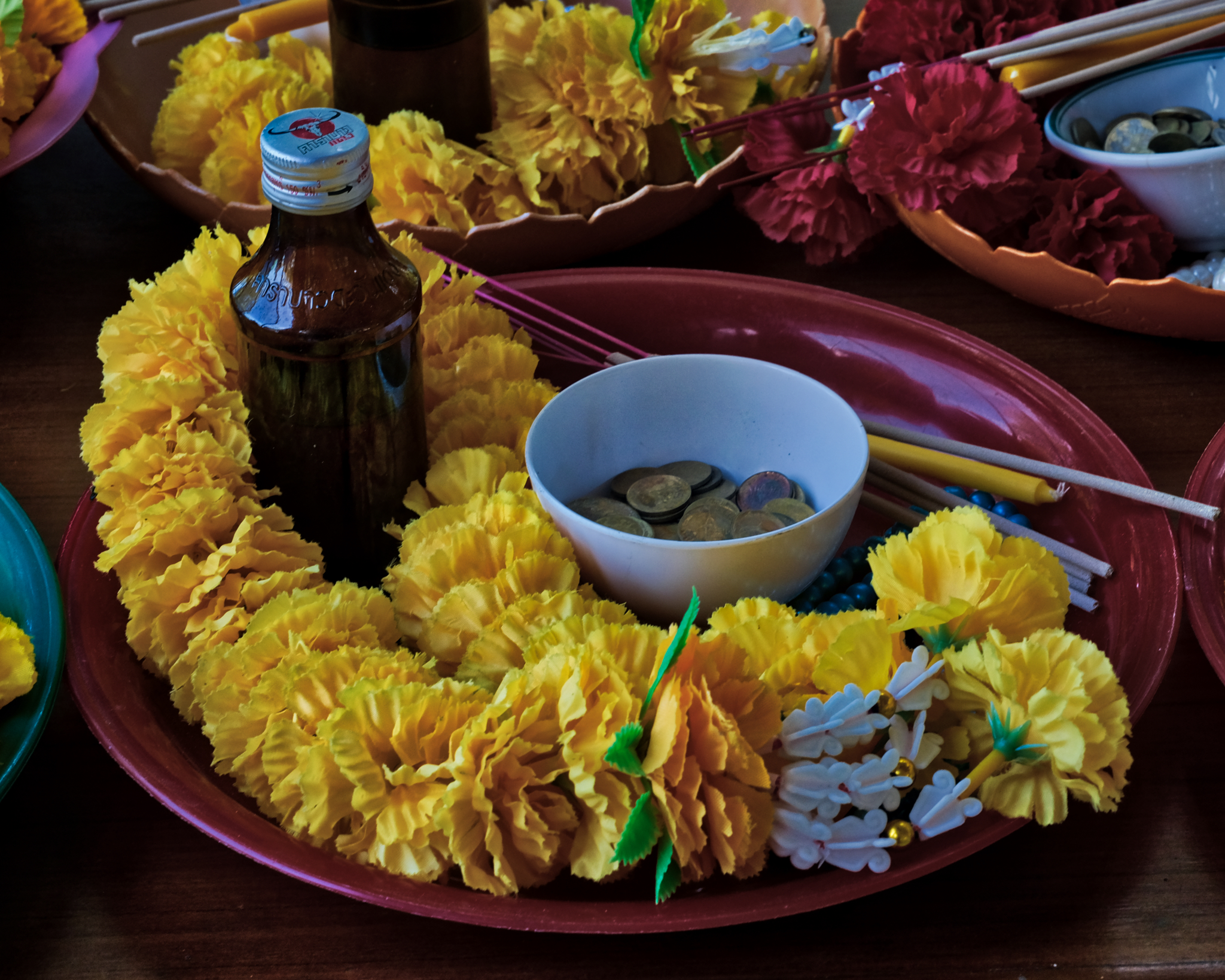 I went in the temple, made a donation, and took up this plate of offerings and ceremonial items to honor Guanyin. There are cons to drop at each Buddha statue, oil to add to the lamps, incense to light, garlands and pearls to adorn Guanyin and candles to light. All of these have a particular place and order. I knew most of them, but there were two very helpful lady attendants who showed me what goes where and when.
I went in the temple, made a donation, and took up this plate of offerings and ceremonial items to honor Guanyin. There are cons to drop at each Buddha statue, oil to add to the lamps, incense to light, garlands and pearls to adorn Guanyin and candles to light. All of these have a particular place and order. I knew most of them, but there were two very helpful lady attendants who showed me what goes where and when.
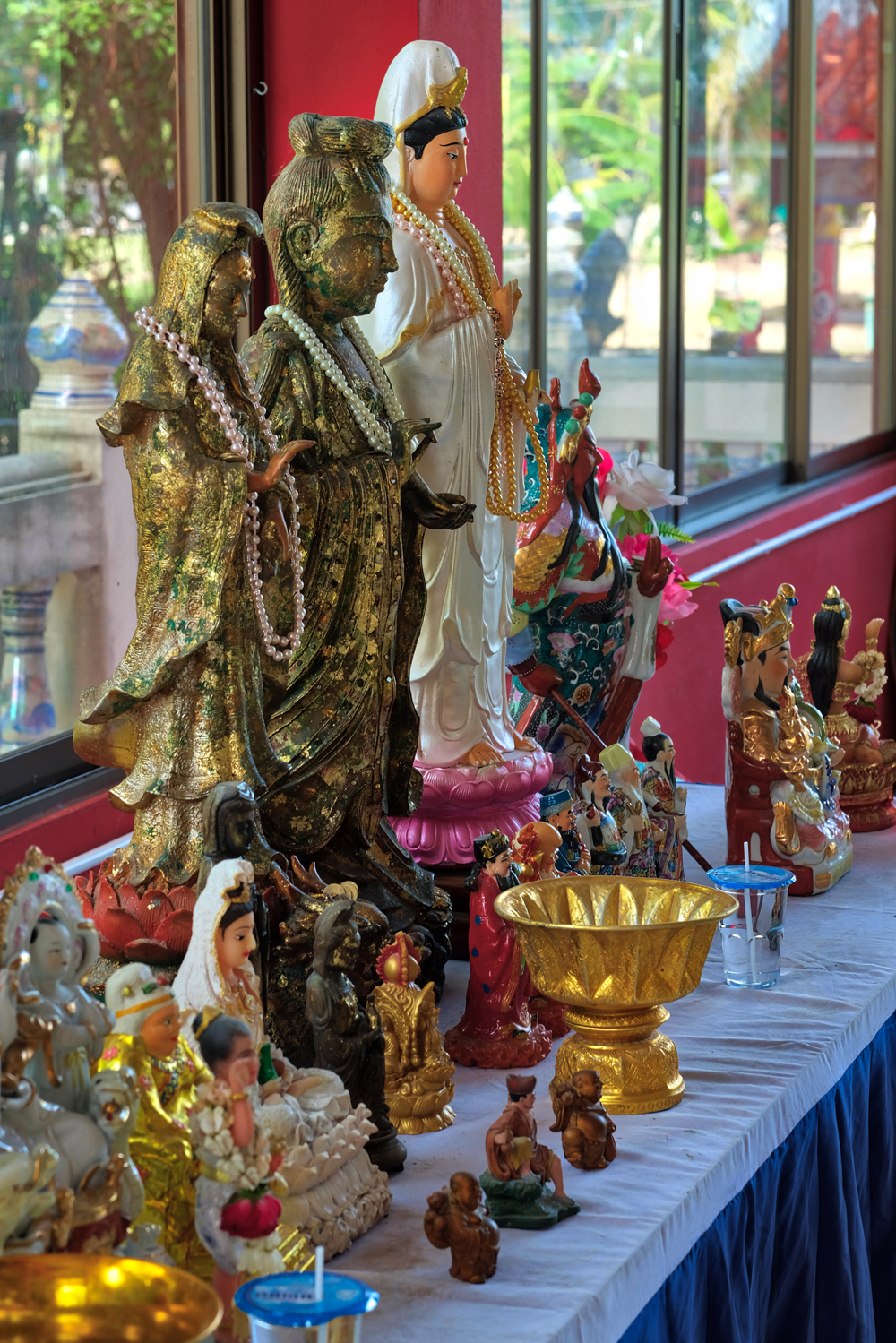 Many small altars lined the room around the large Guanyin statue.
Many small altars lined the room around the large Guanyin statue.
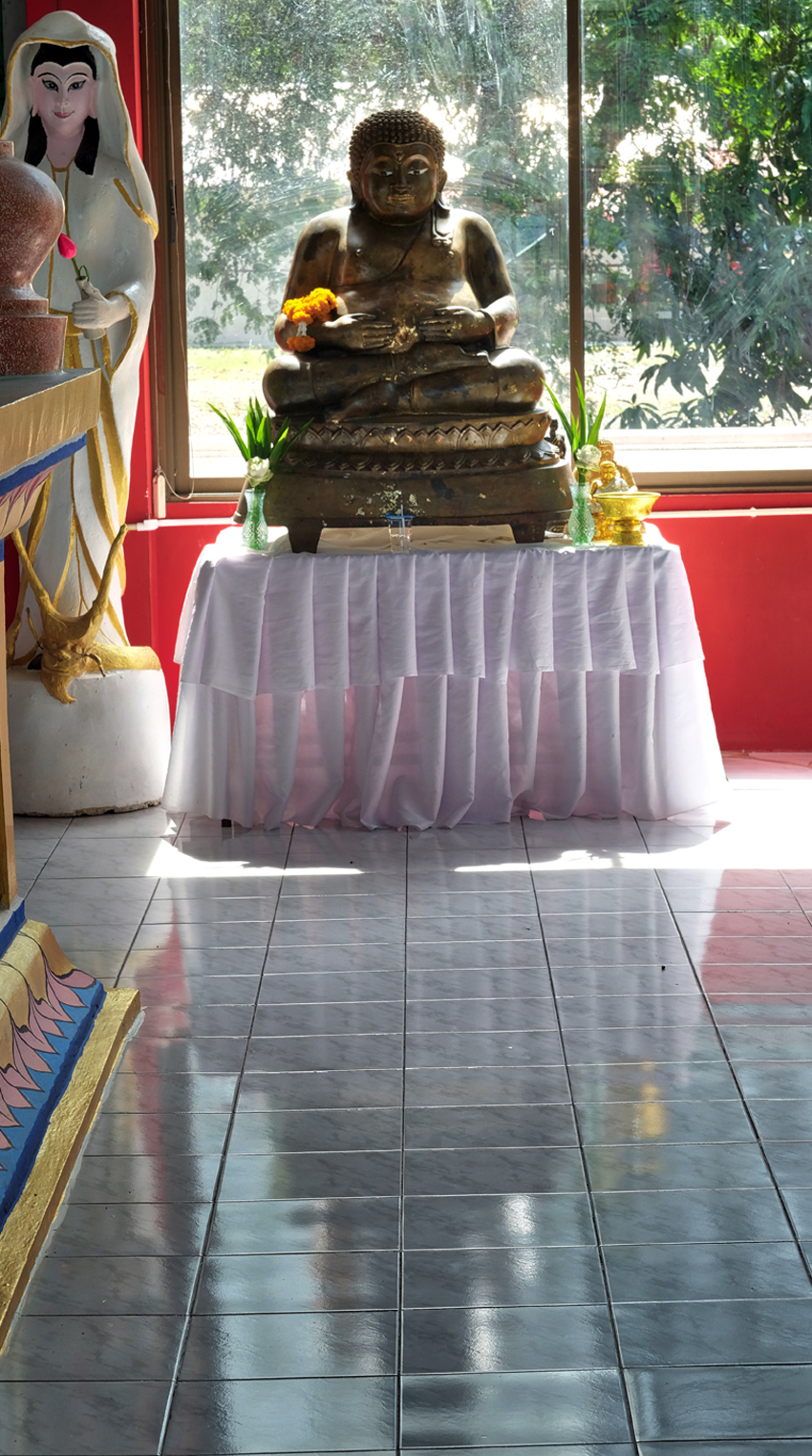 A sitting Happy Buddha.
A sitting Happy Buddha.
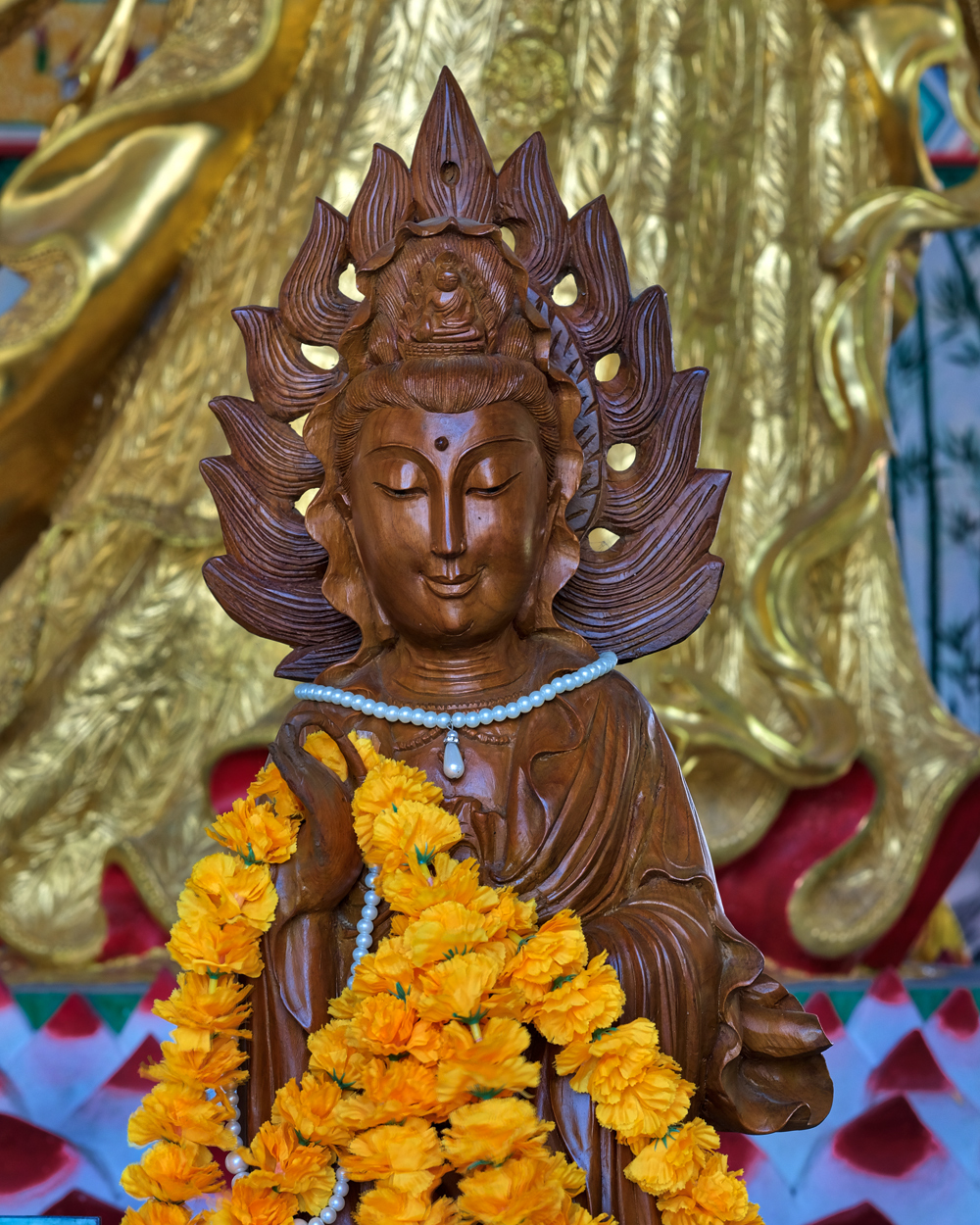 I left my garland here, on the sandalwood Guanyin.
I left my garland here, on the sandalwood Guanyin.
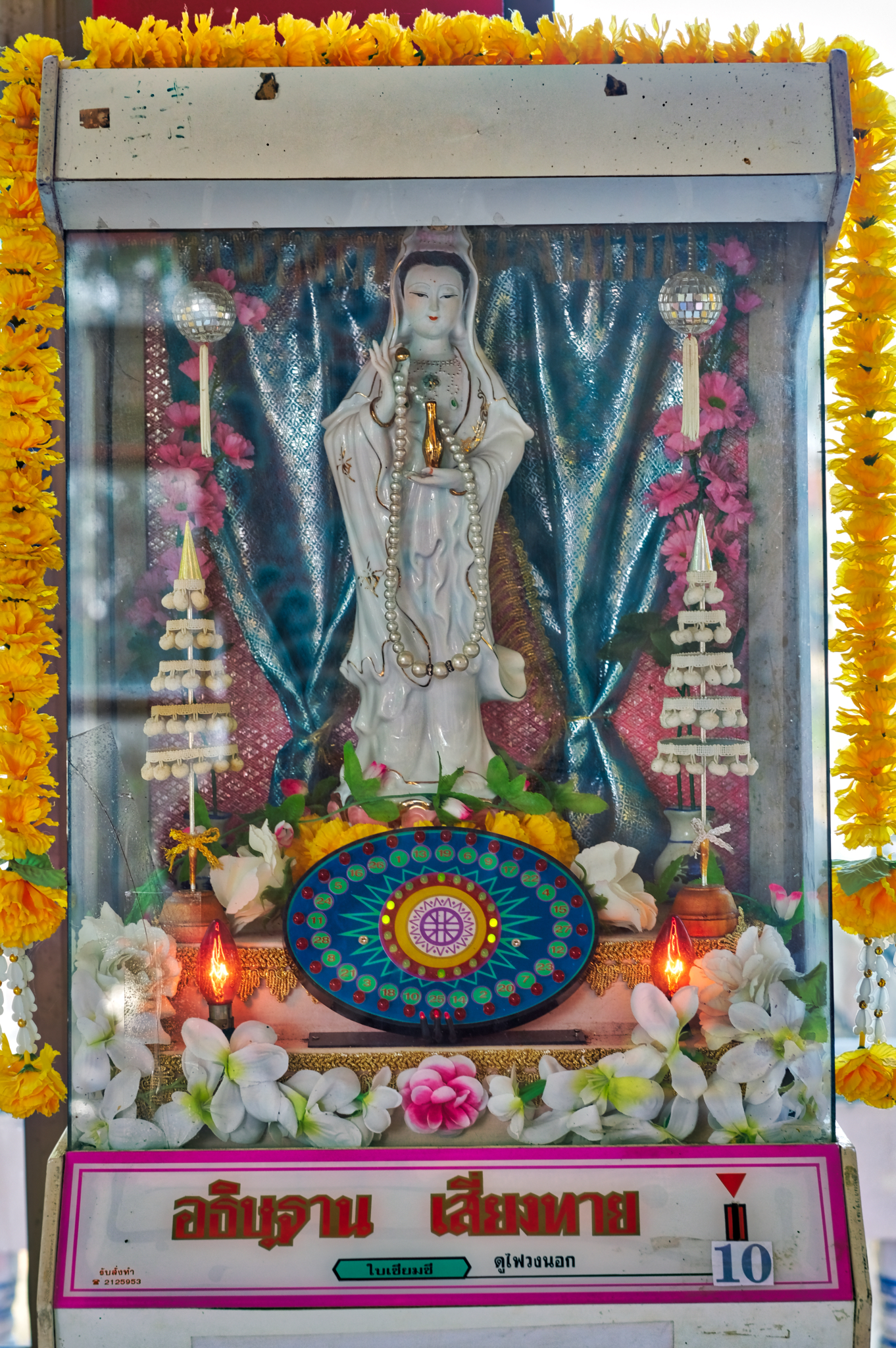 I love these fortunetelling machines you sometimes see in Chinese temples. I could not quite figure out how this one worked, so I didn't put in any money.
I love these fortunetelling machines you sometimes see in Chinese temples. I could not quite figure out how this one worked, so I didn't put in any money.
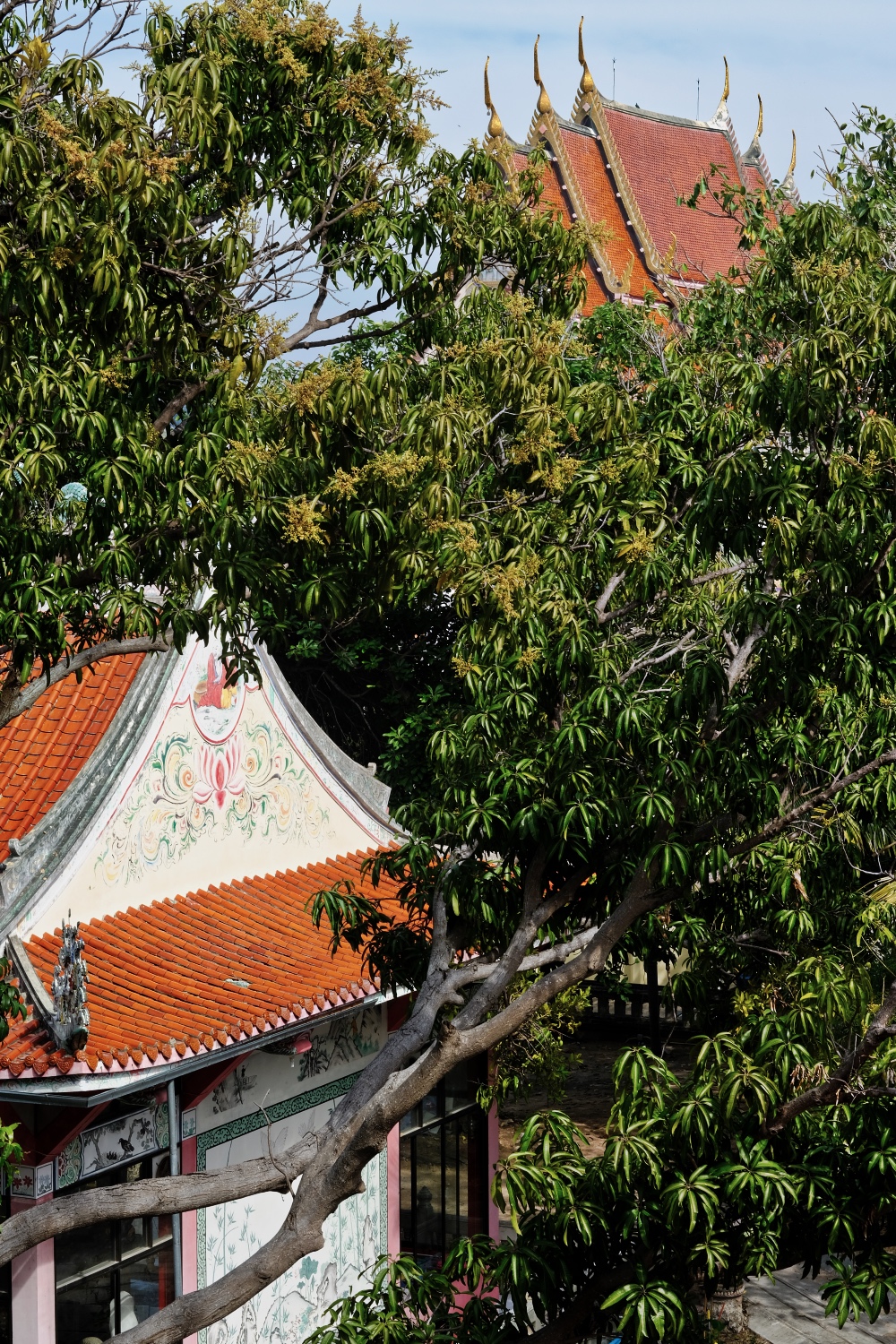 The Chinese temple (foreground) was one of many small buildings on the Wat grounds.
The Chinese temple (foreground) was one of many small buildings on the Wat grounds.
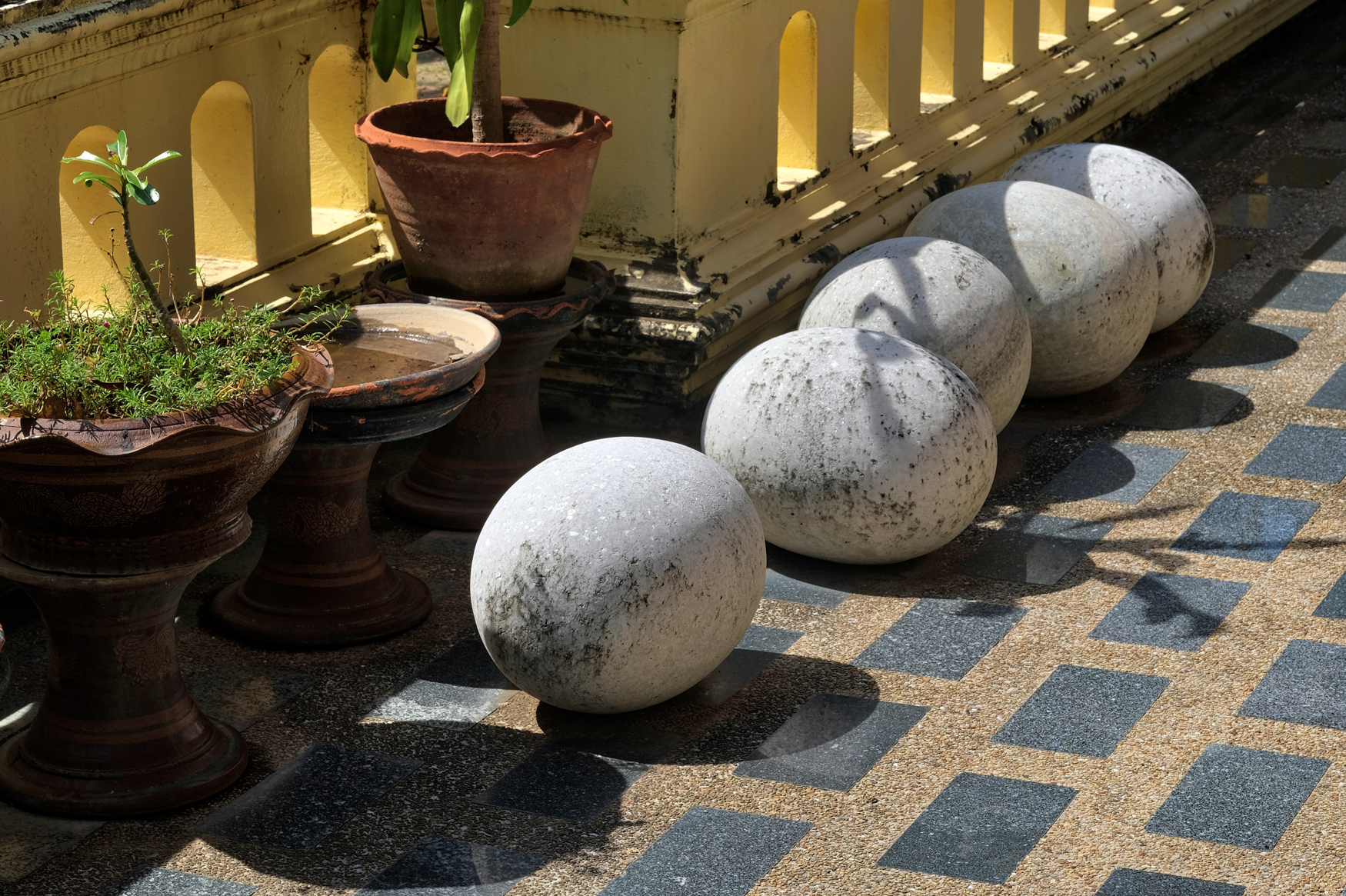 I walked along a path lined with stone balls to another glassed in room full of golden Buddhas.
I walked along a path lined with stone balls to another glassed in room full of golden Buddhas.
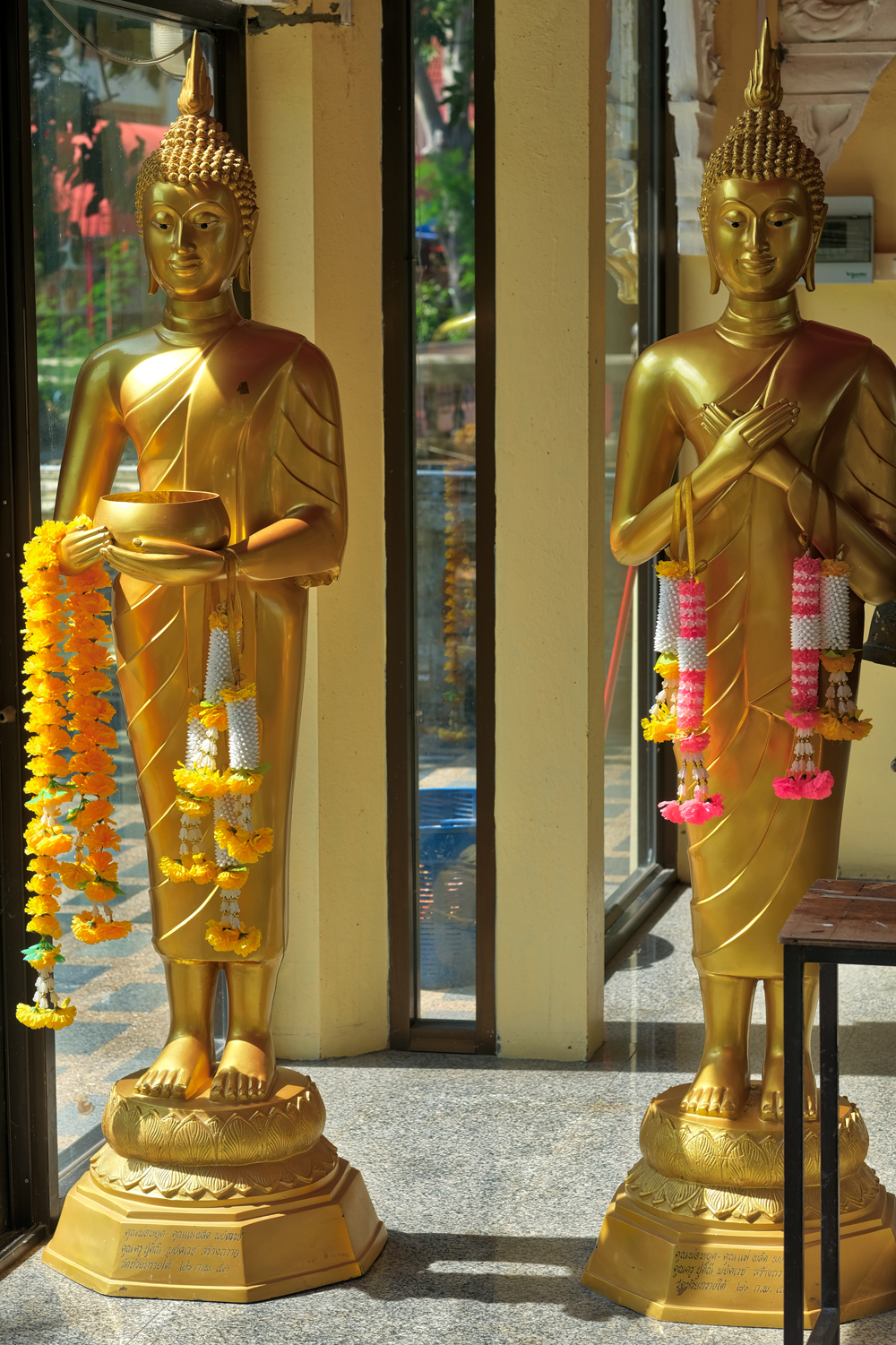 Standing Buddha images along the glass Buddha hall.
Standing Buddha images along the glass Buddha hall.
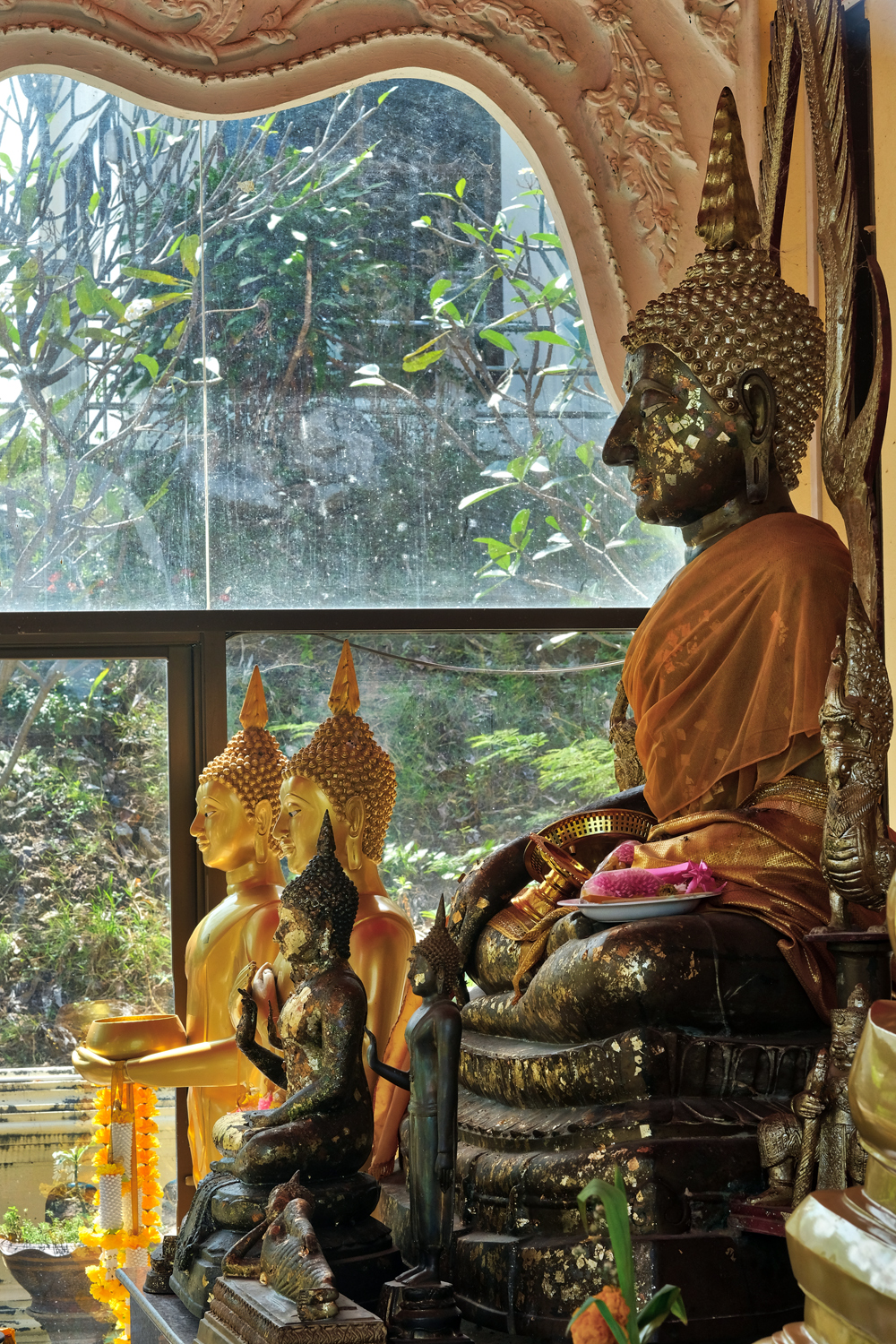 A glass room full of fantastically beautiful Buddha images.
A glass room full of fantastically beautiful Buddha images.
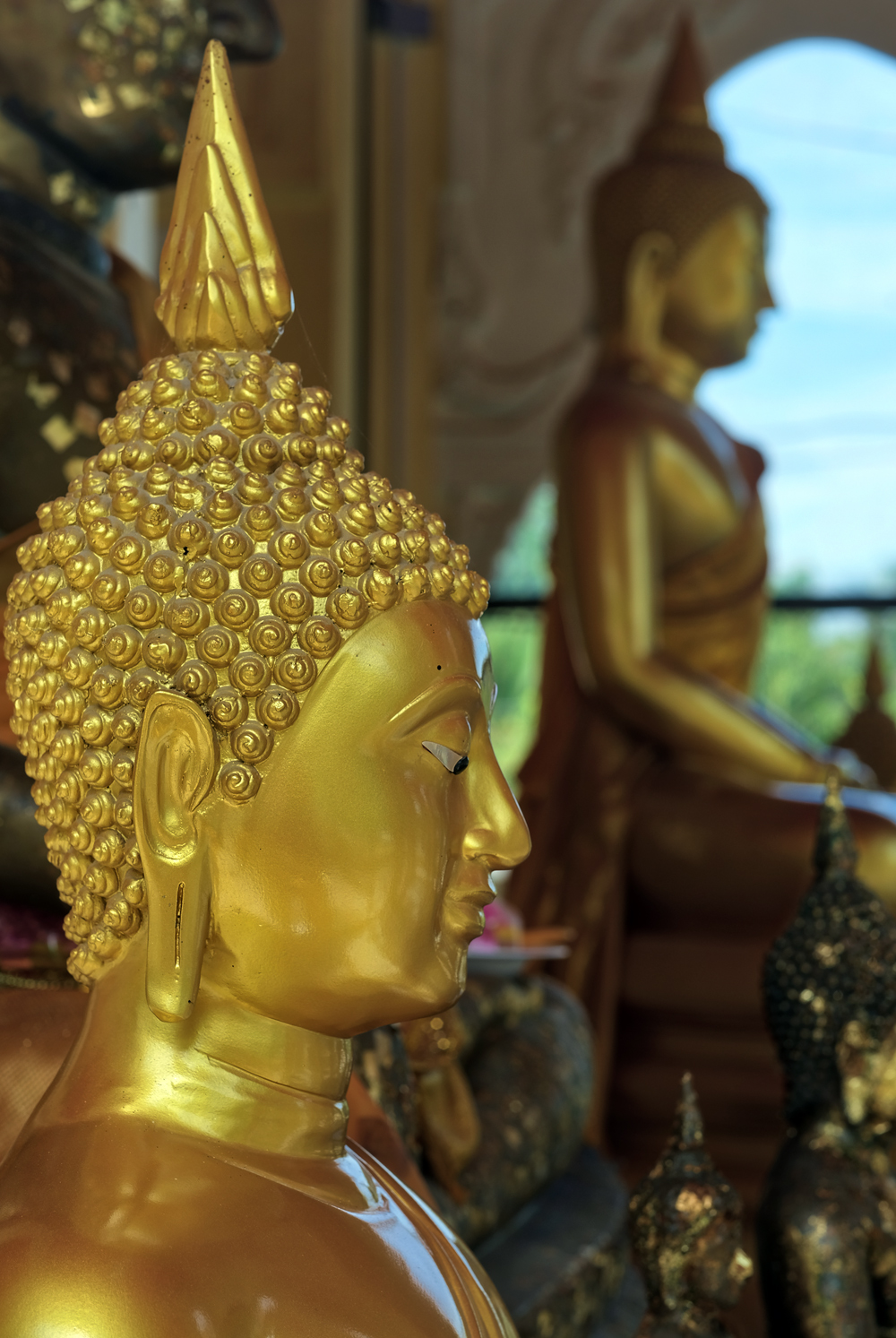 Remarkable beauty.
Remarkable beauty.
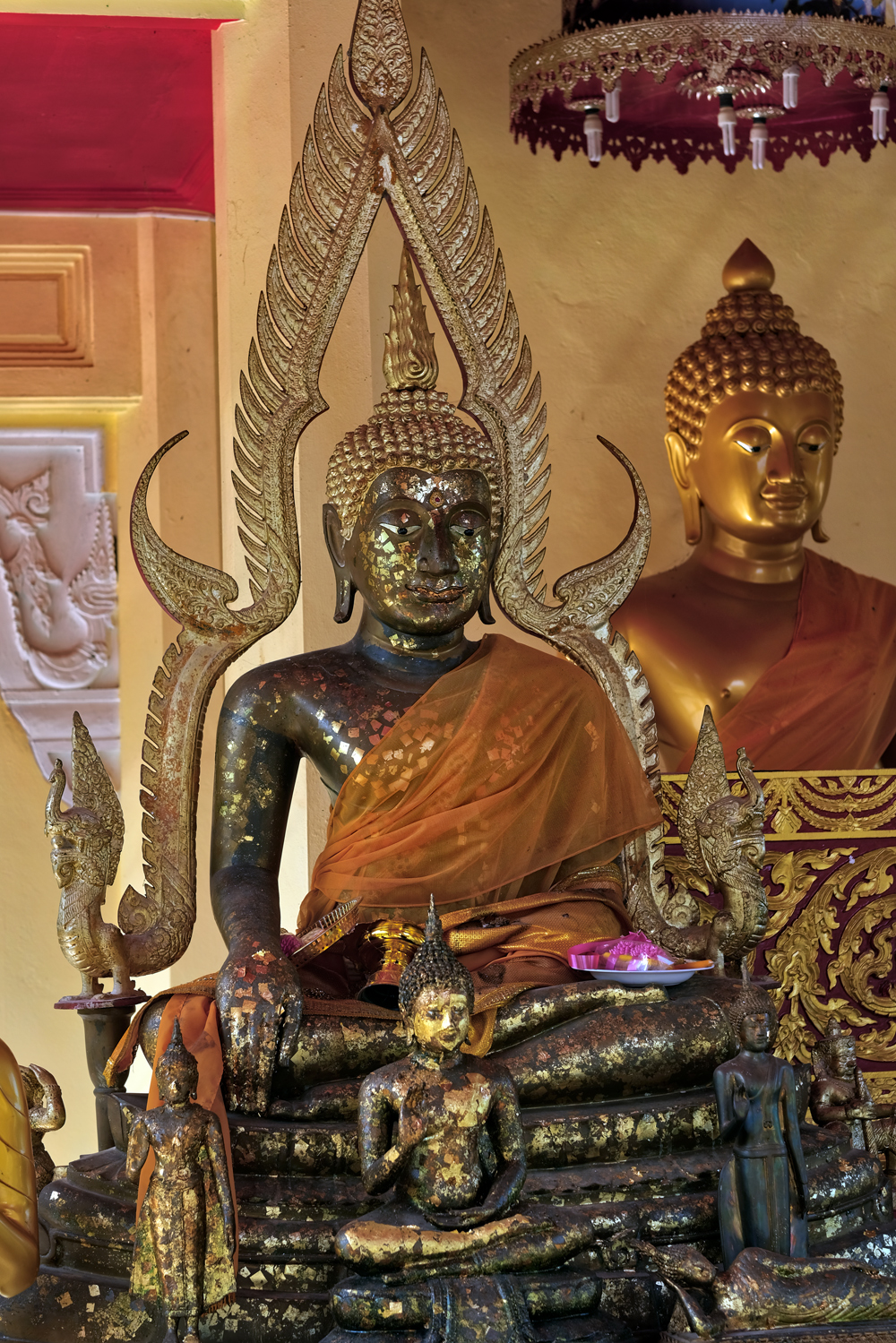 I wanted to go in for close-up photos, but it was locked. I had to shoot through the dirty windows.
I wanted to go in for close-up photos, but it was locked. I had to shoot through the dirty windows.
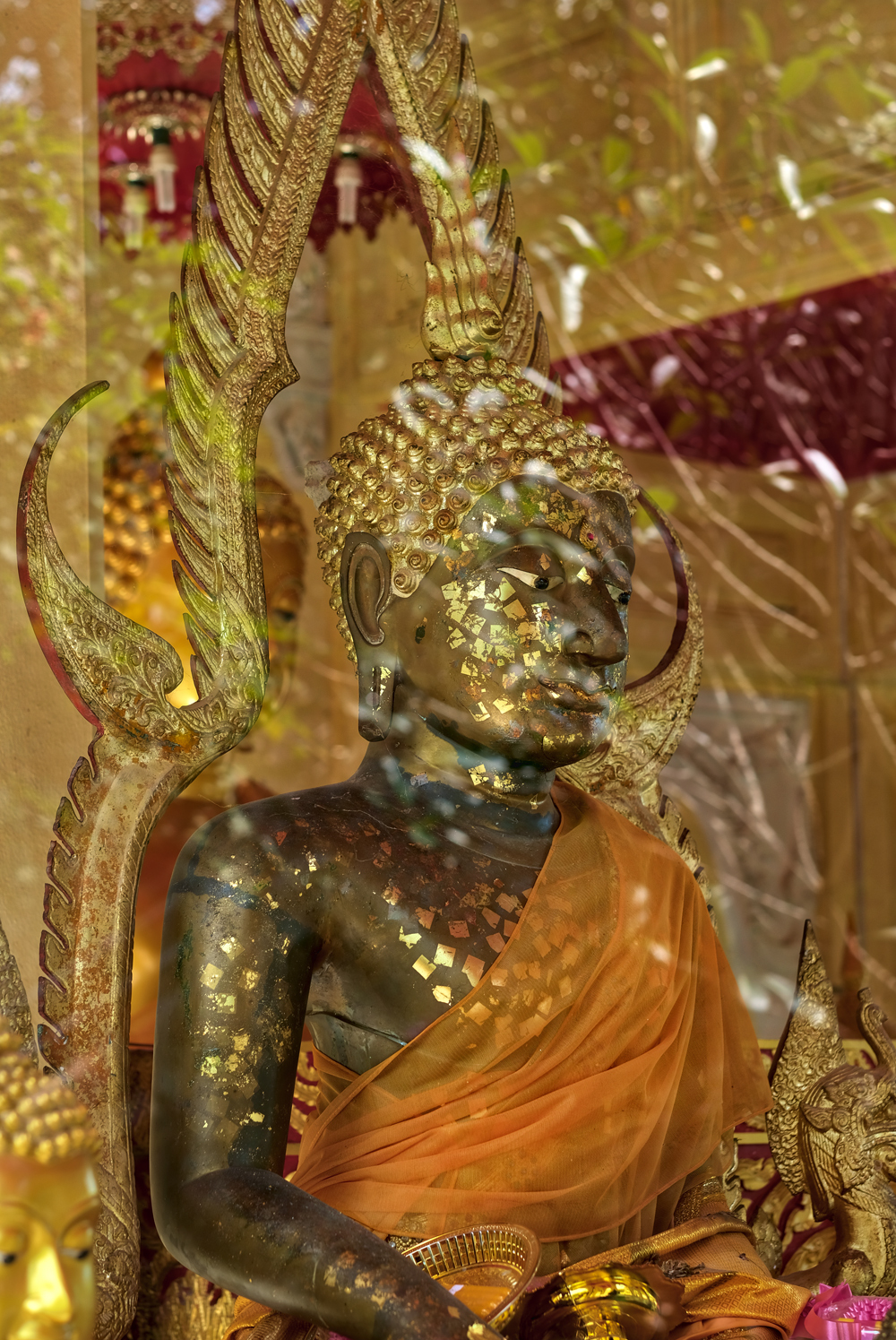 Photographing through a window is not always a bad thing . . . the reflections of the frangipani trees help this image.
Photographing through a window is not always a bad thing . . . the reflections of the frangipani trees help this image.
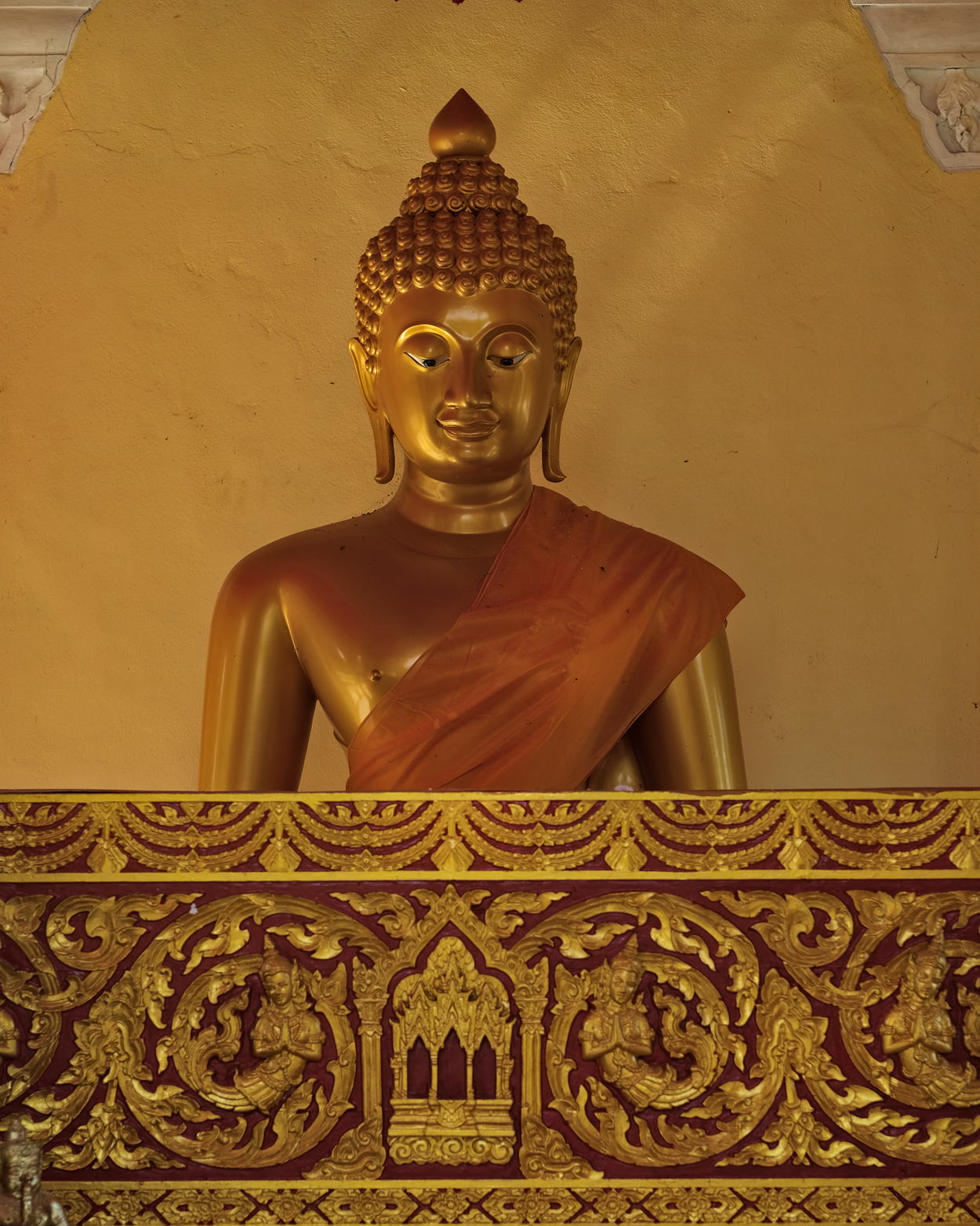 I felt a strong attraction to this particular Buddha image. I saw over a hundred Buddha images on this day, but this one 'spoke' to me. I will return here to meditate.
I felt a strong attraction to this particular Buddha image. I saw over a hundred Buddha images on this day, but this one 'spoke' to me. I will return here to meditate.
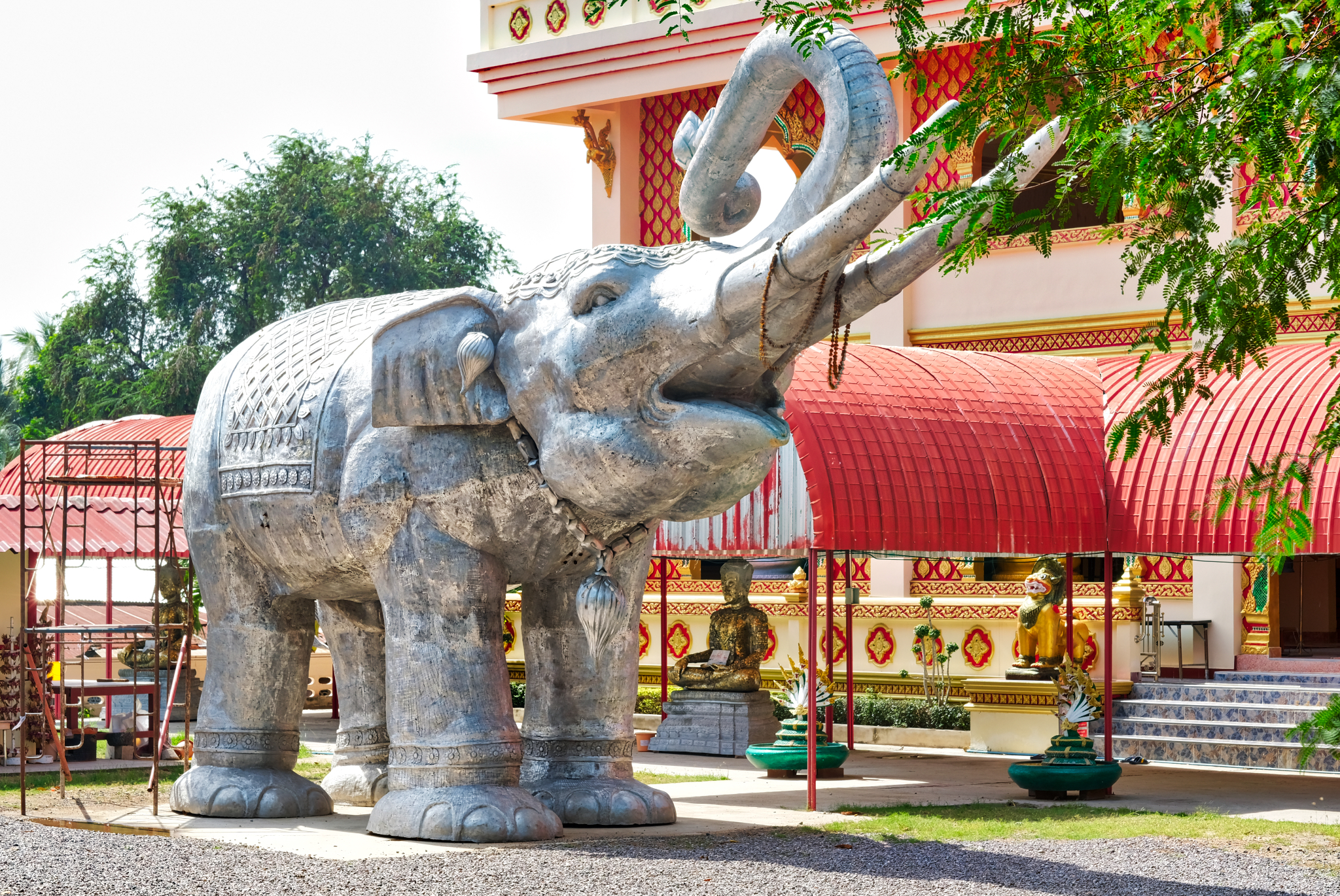 The third part of the Wat was devoted to a new temple structure in honor of the great revered monk Luongpor Thonsuk. A silver elephant under construction stood out front.
The third part of the Wat was devoted to a new temple structure in honor of the great revered monk Luongpor Thonsuk. A silver elephant under construction stood out front.
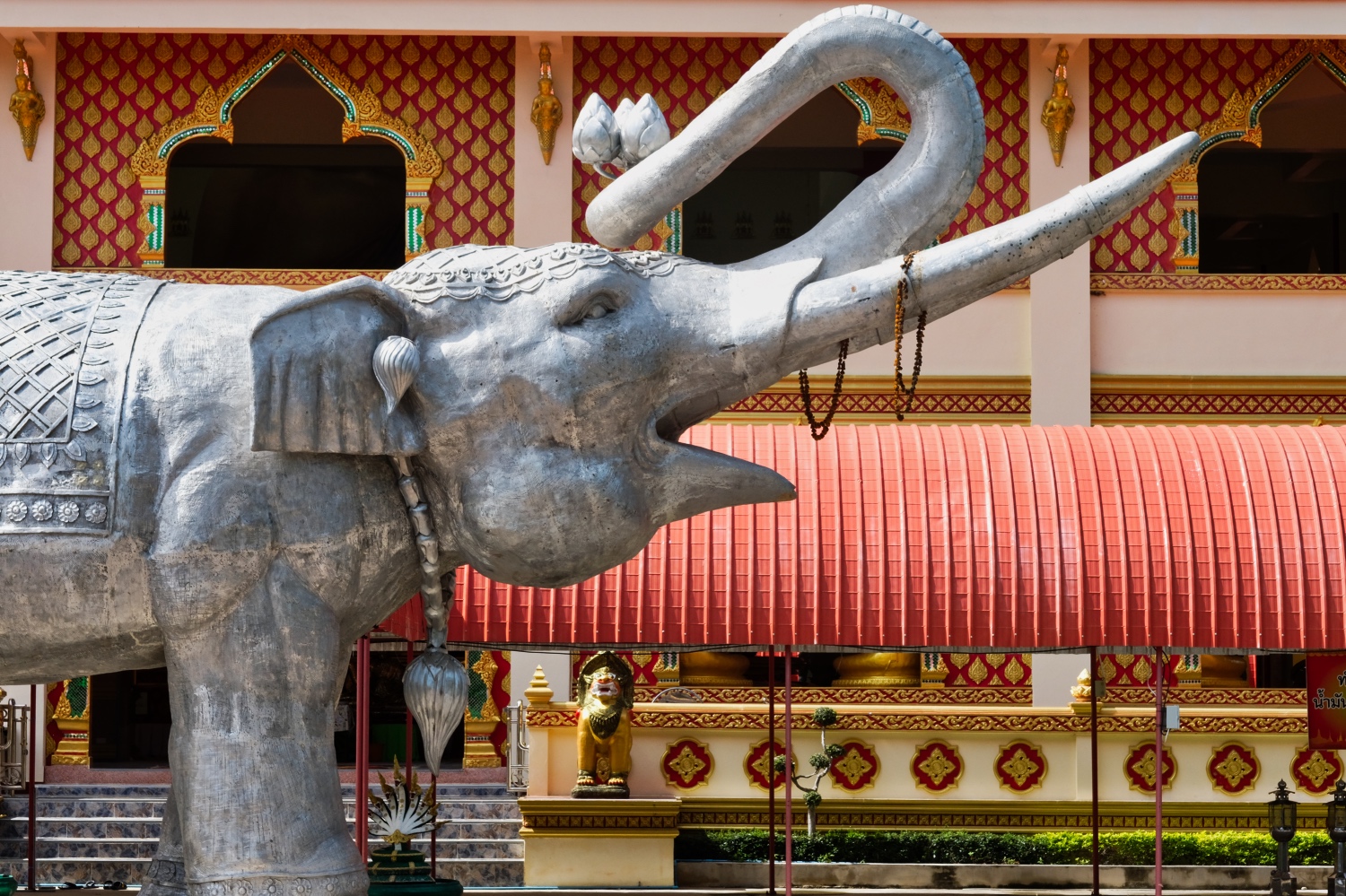 An extraordinary structure.
An extraordinary structure.
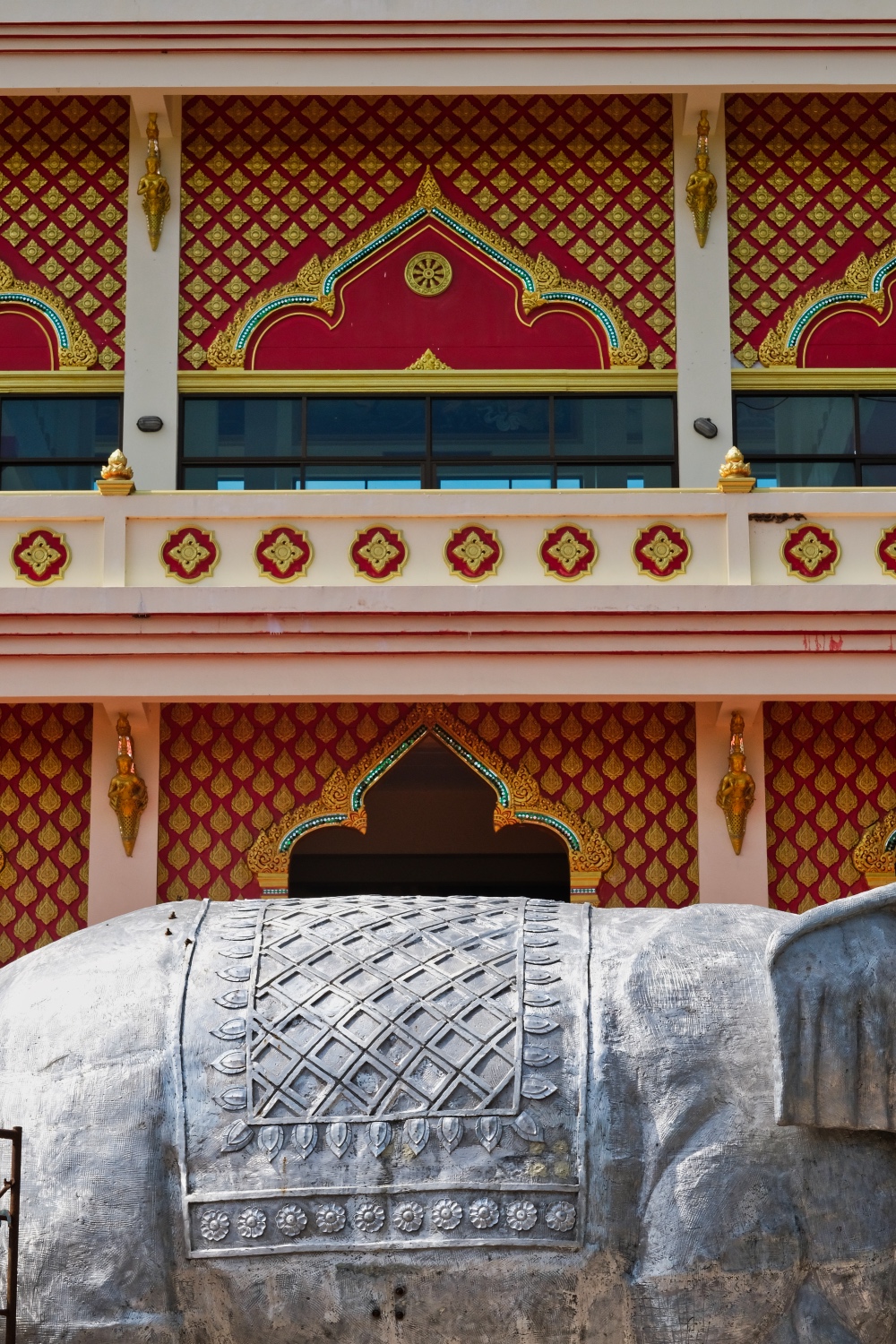 Remarkable detail and artistry.
Remarkable detail and artistry.
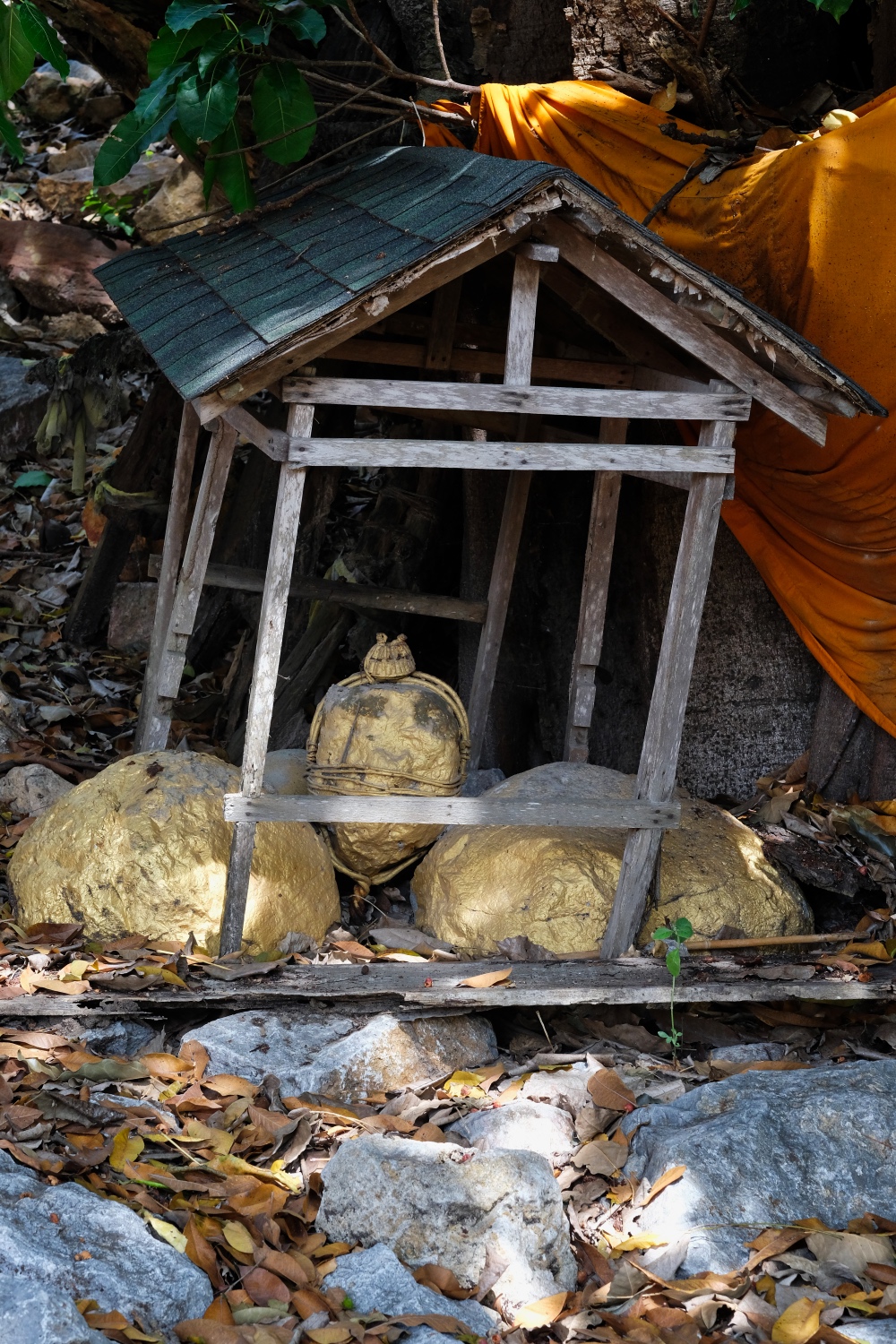 Scattered here and there around the temple structure, up in the sacred woods, were pieces of previous altars, the discarded spiritual paraphernalia.
Scattered here and there around the temple structure, up in the sacred woods, were pieces of previous altars, the discarded spiritual paraphernalia.
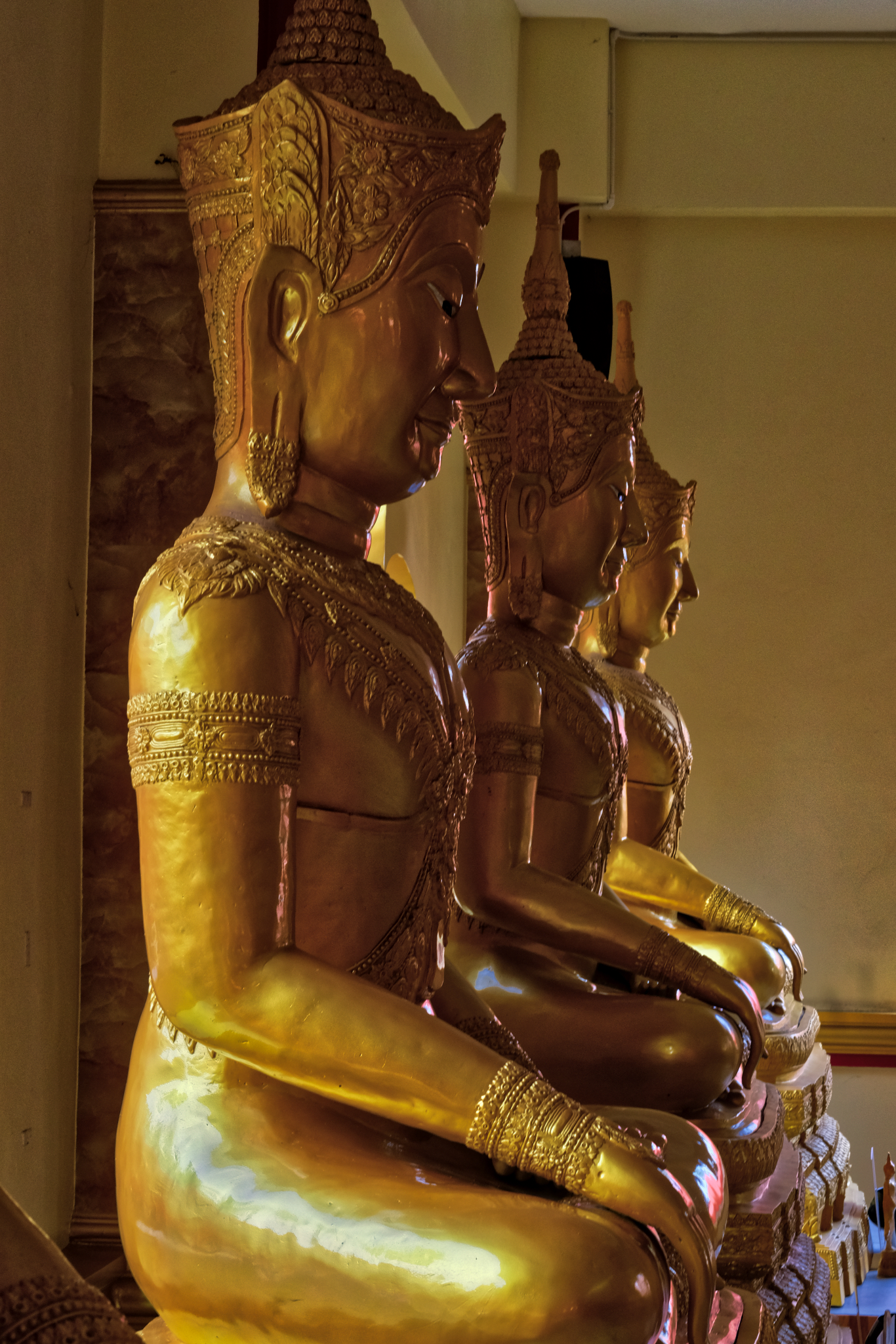 There were many, many beautiful Buddha images inside the old monk's temple.
There were many, many beautiful Buddha images inside the old monk's temple.
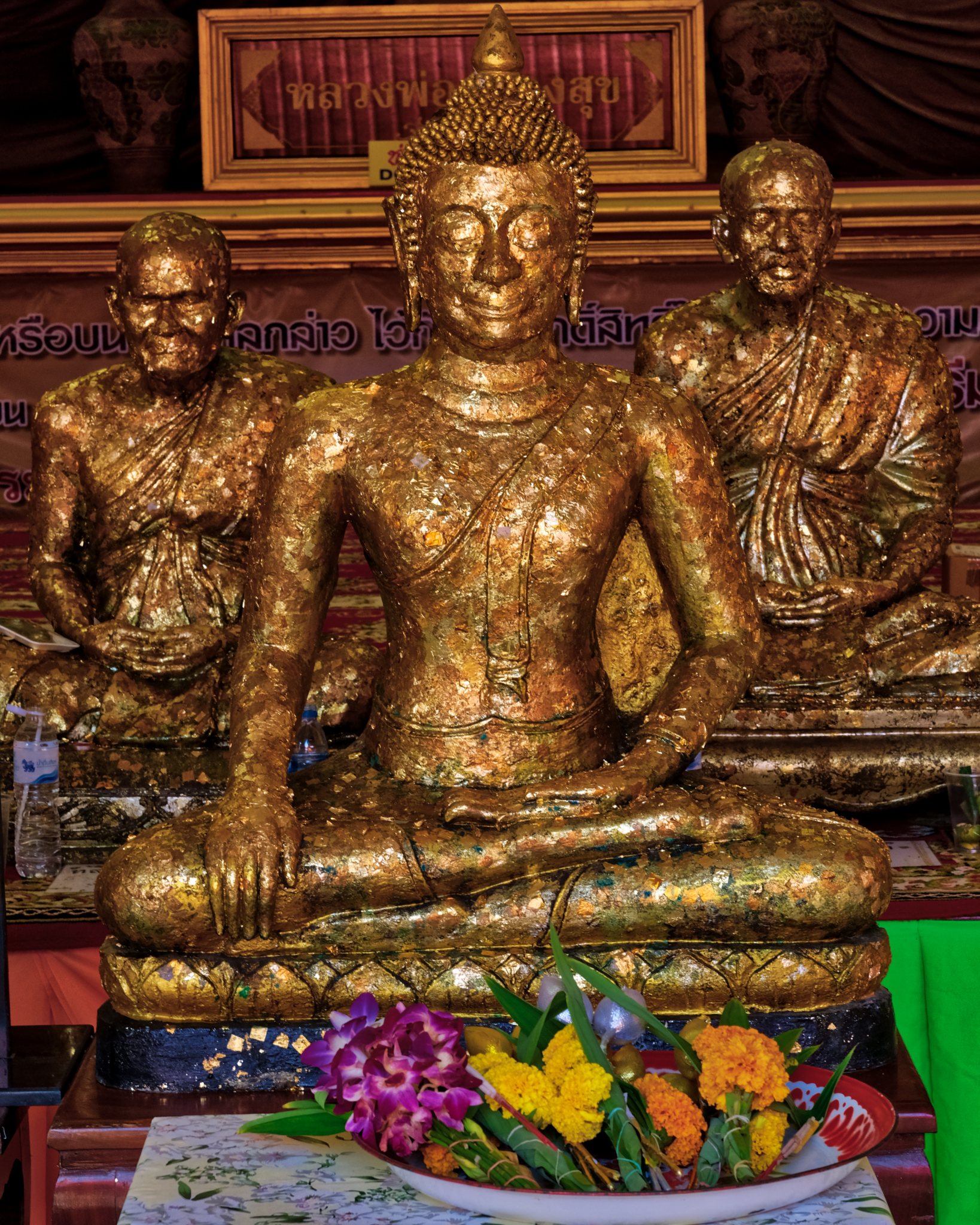 Encrusted with small squares of gold ceremonially pressed on by the throngs of pilgrims.
Encrusted with small squares of gold ceremonially pressed on by the throngs of pilgrims.
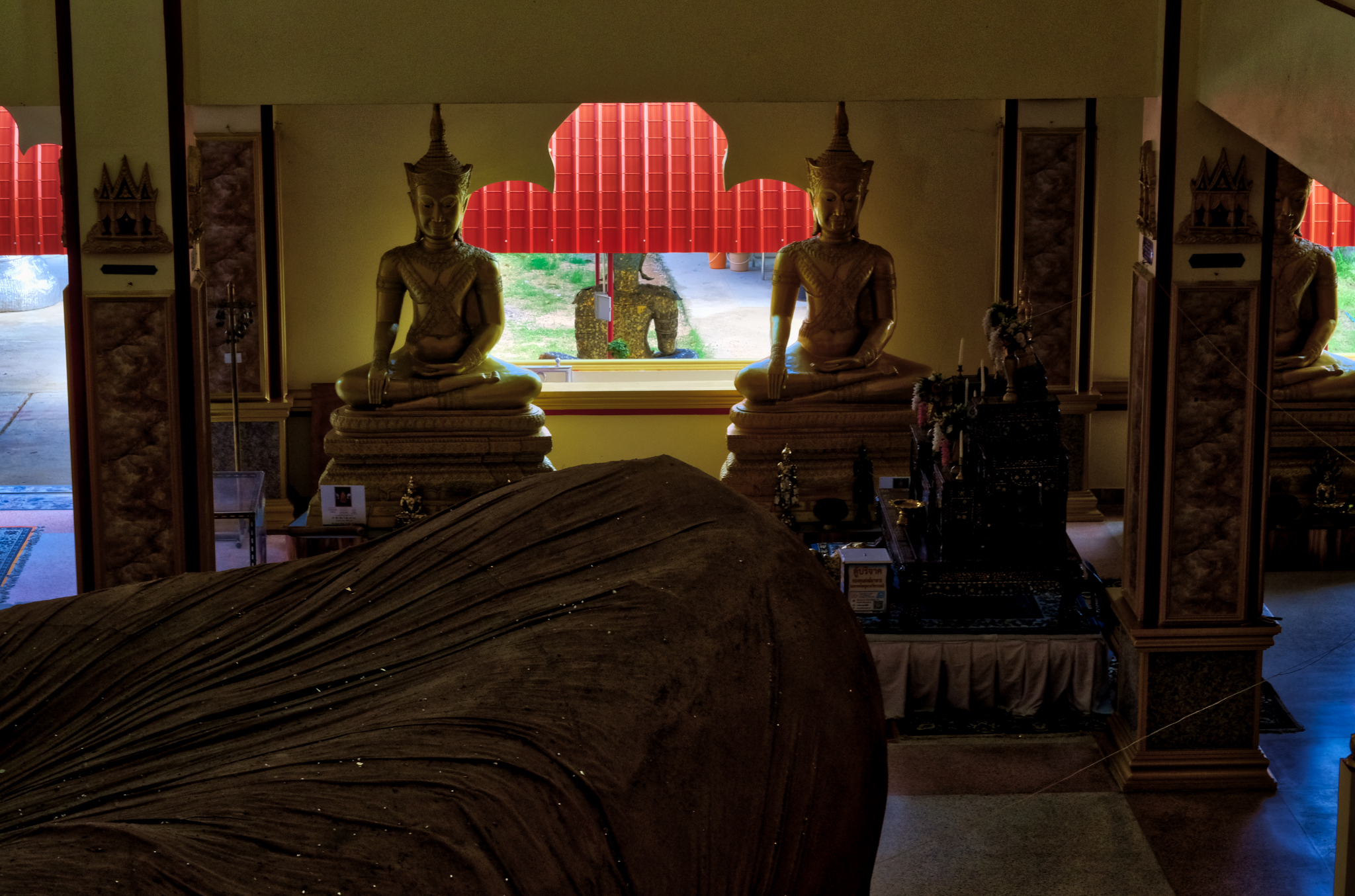 The interior was lined with Buddha images surrounding the giant, colossus . . . (folded leg visable in the foreground!)
The interior was lined with Buddha images surrounding the giant, colossus . . . (folded leg visable in the foreground!)
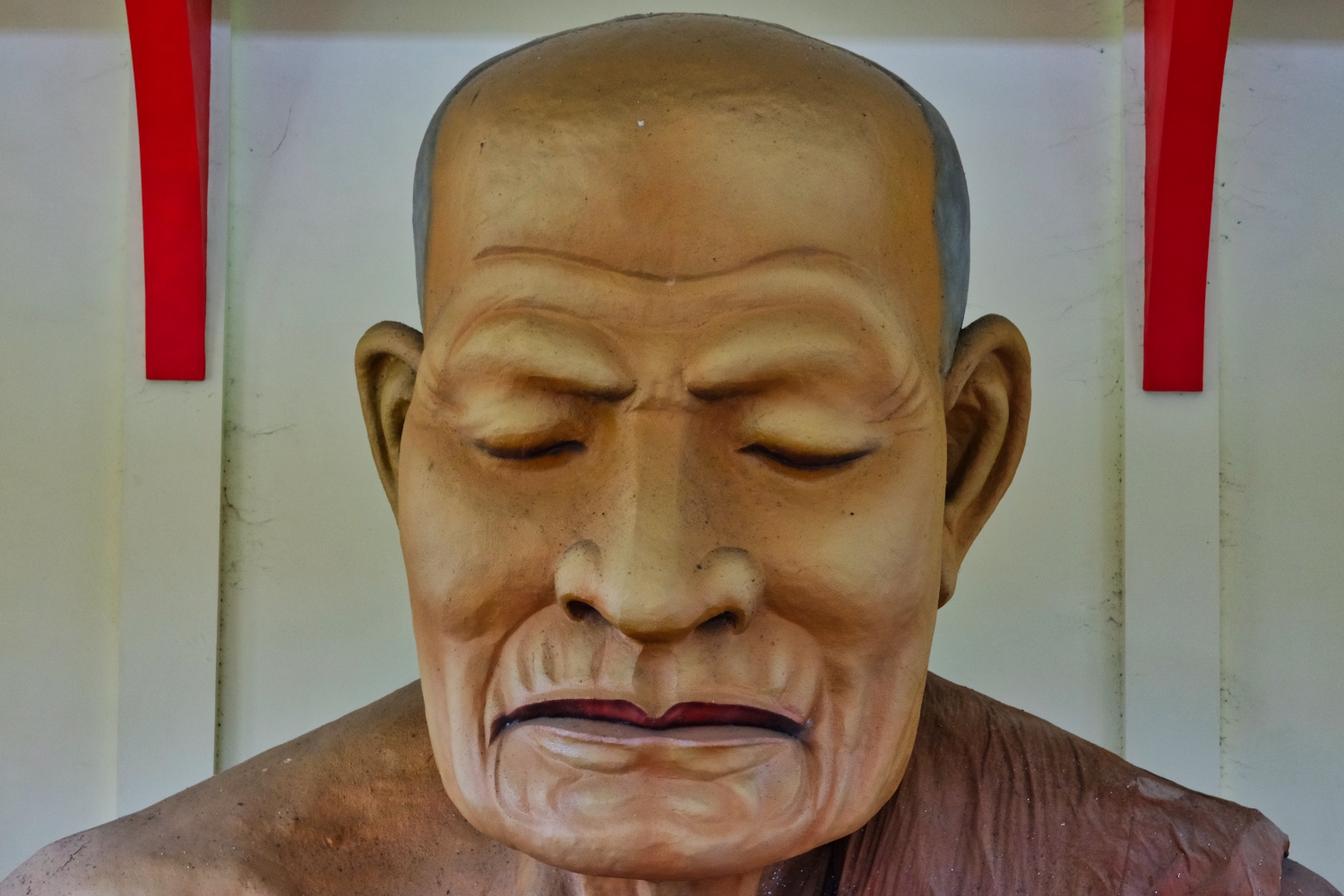 The image of Luongpor Thongsuk was five stories tall! I only had my 85mm lens with me, so I was unable to get the whole giant statue in one frame!
The image of Luongpor Thongsuk was five stories tall! I only had my 85mm lens with me, so I was unable to get the whole giant statue in one frame!
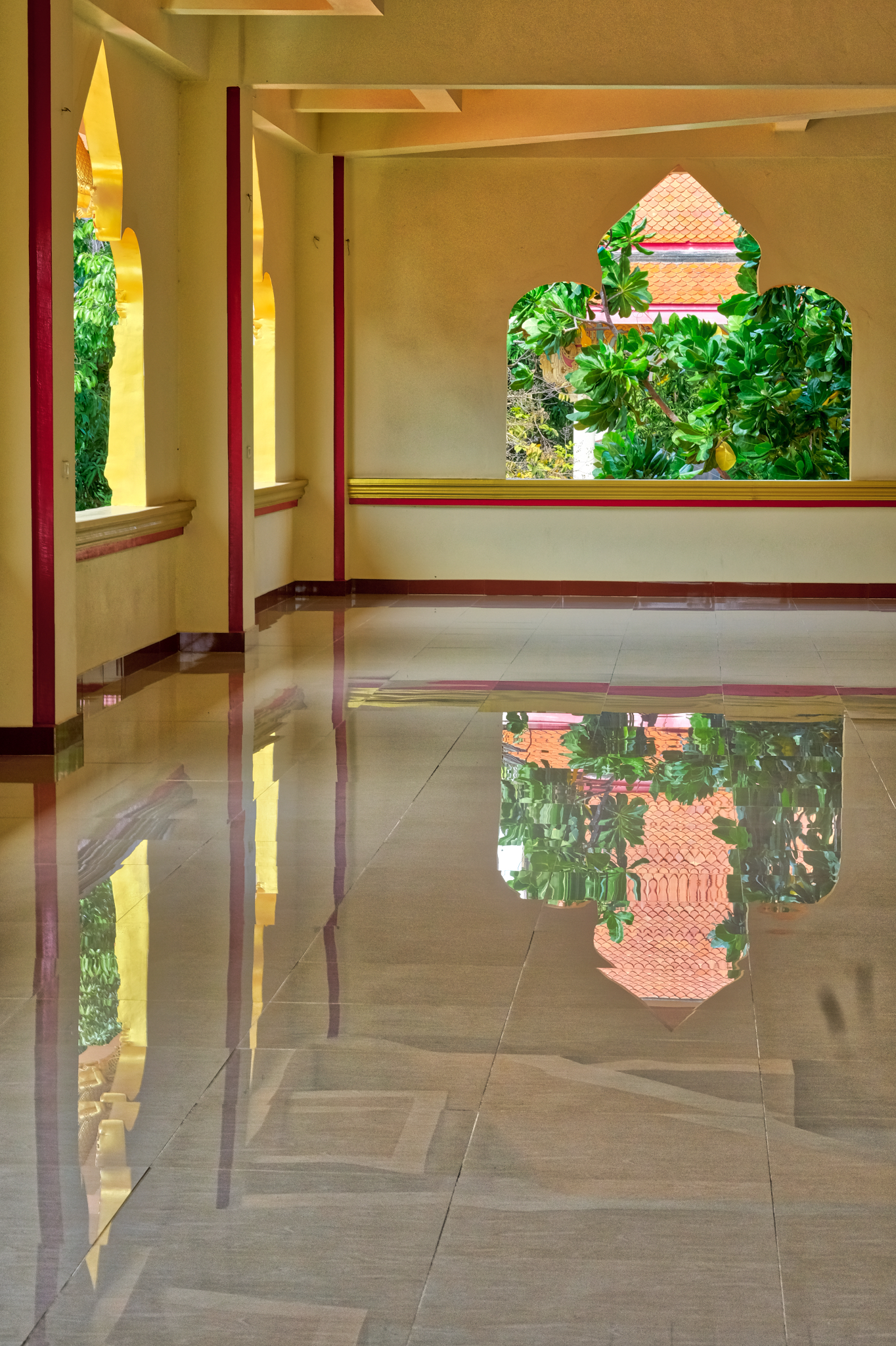 I walked up the stairs and then around each floor in turn.
I walked up the stairs and then around each floor in turn.
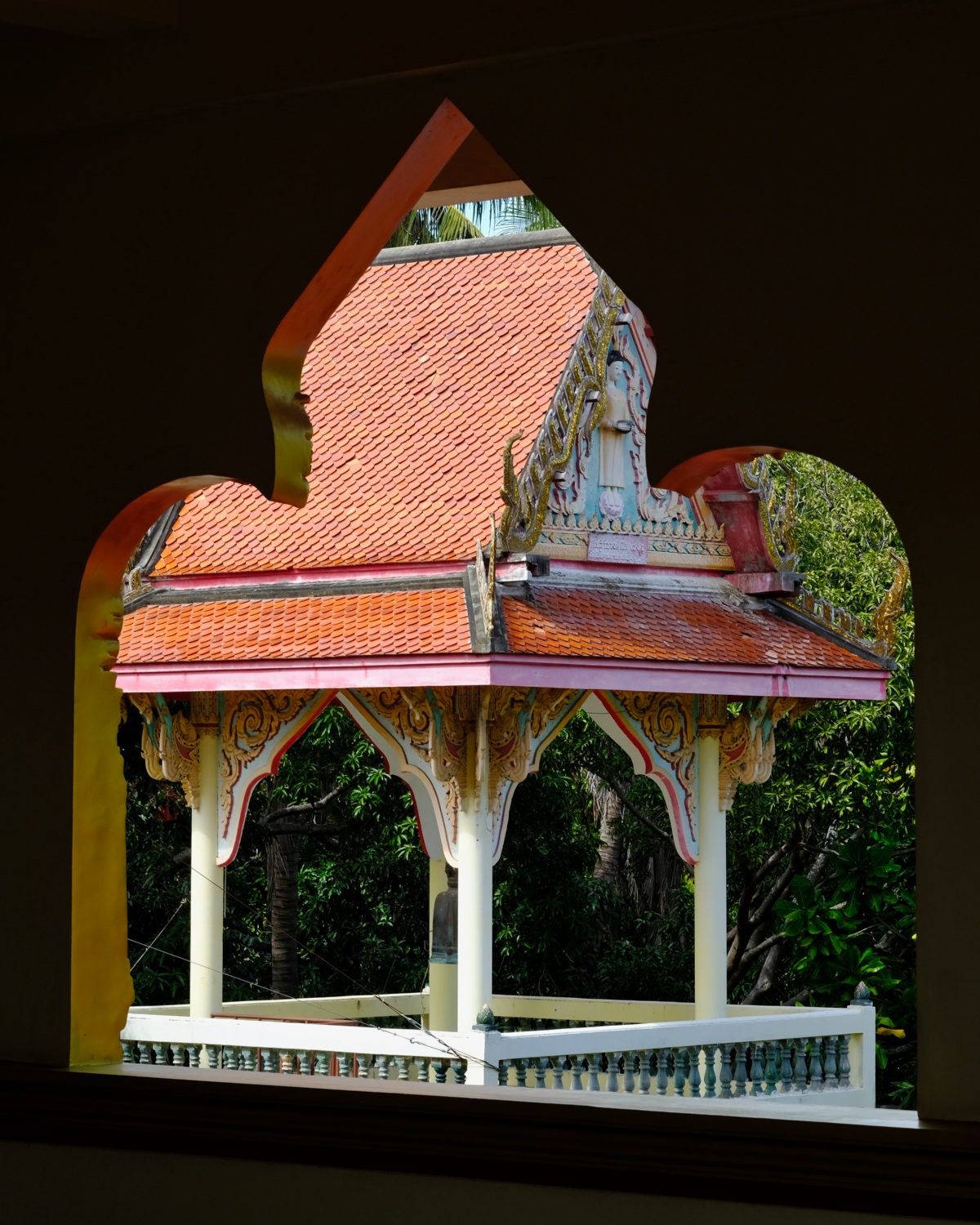 The views from the upper floors were fantastic.
The views from the upper floors were fantastic.
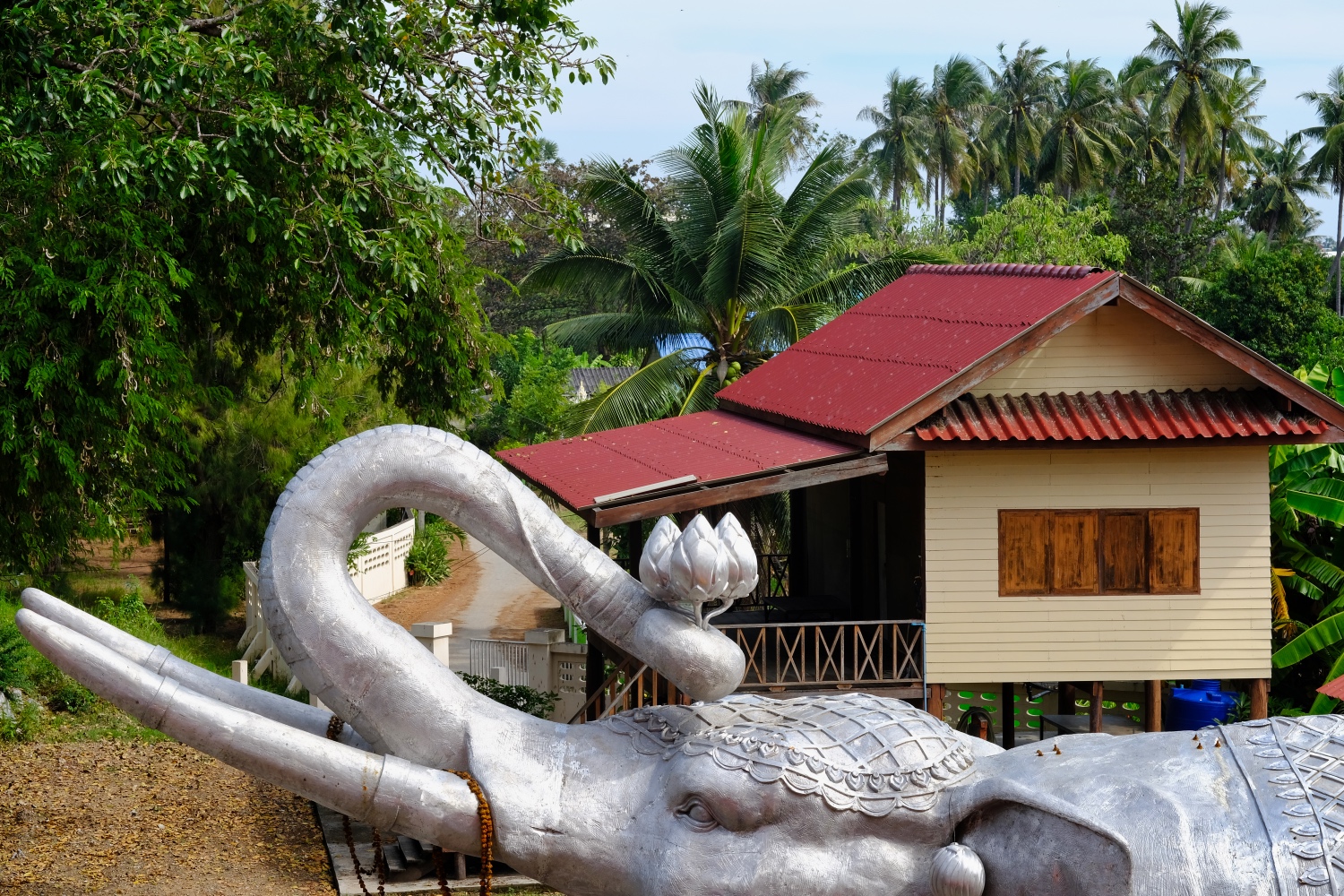 A view to a monks cottage over the silver elephant.
A view to a monks cottage over the silver elephant.
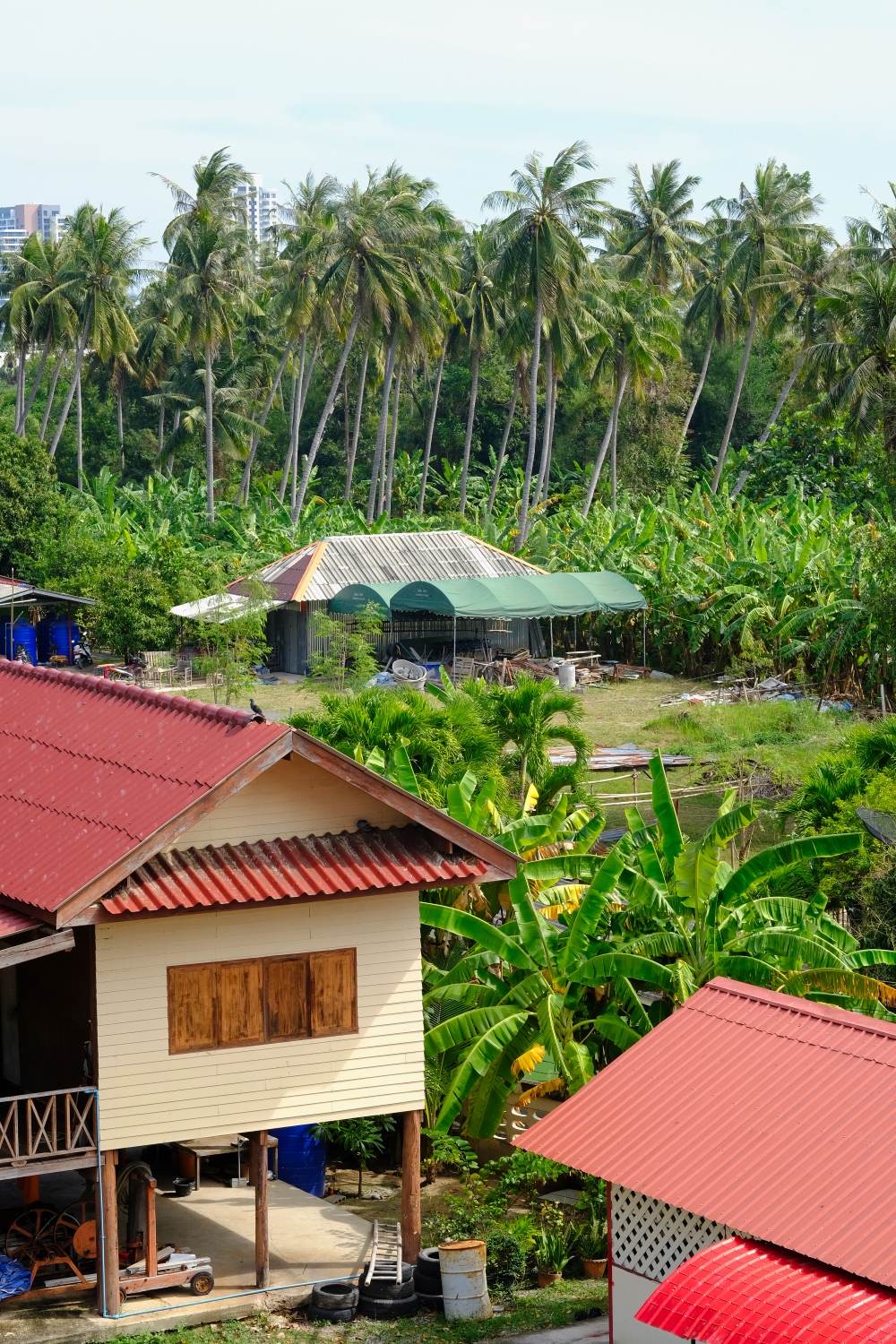 Looking from the temple out beyond the Wat to a typical Thai rural scene in this part of Thailand.
Looking from the temple out beyond the Wat to a typical Thai rural scene in this part of Thailand.
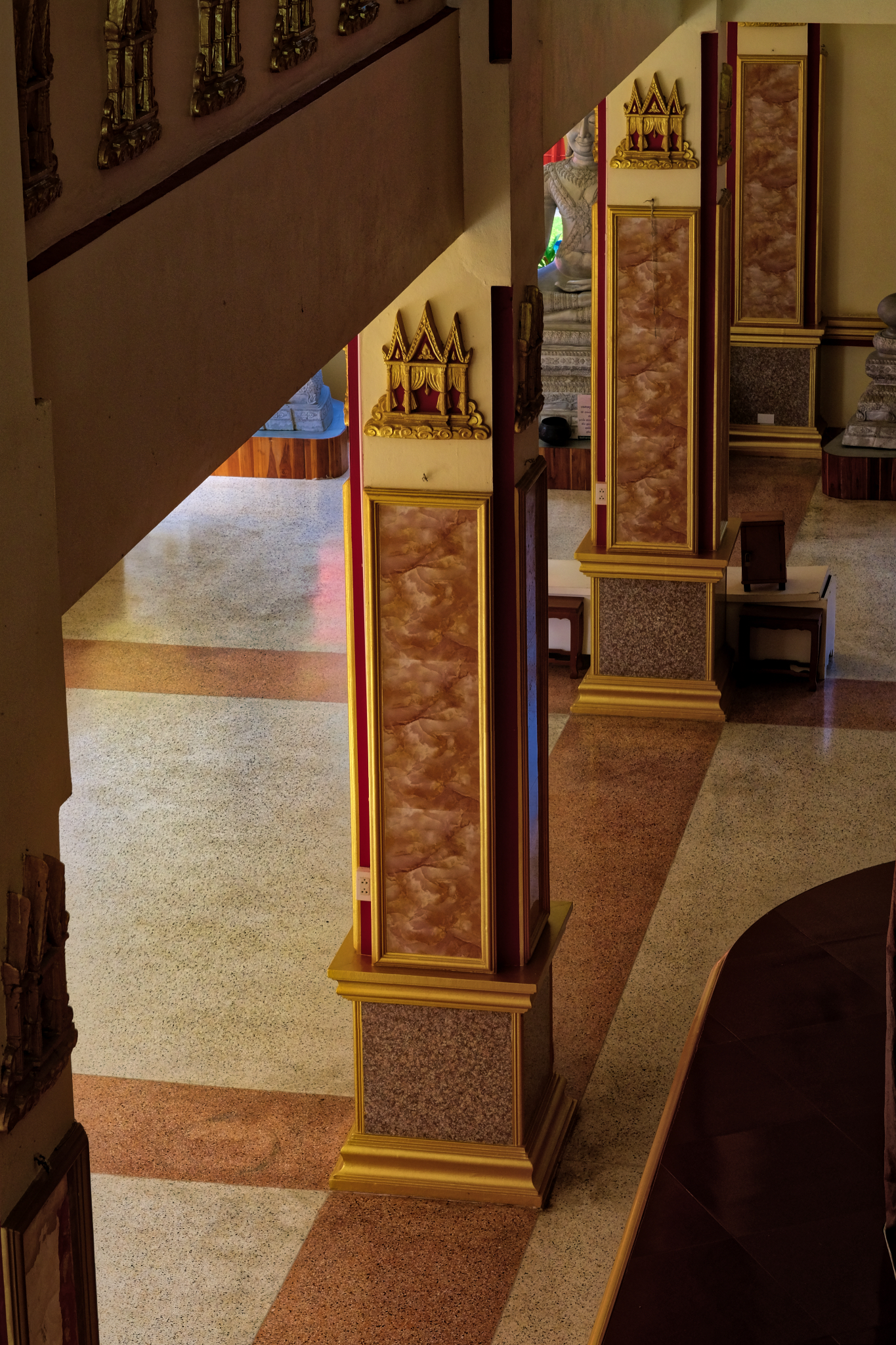 This is a NEW temple. Buddhism in Thailand is a living, current practice.
This is a NEW temple. Buddhism in Thailand is a living, current practice.
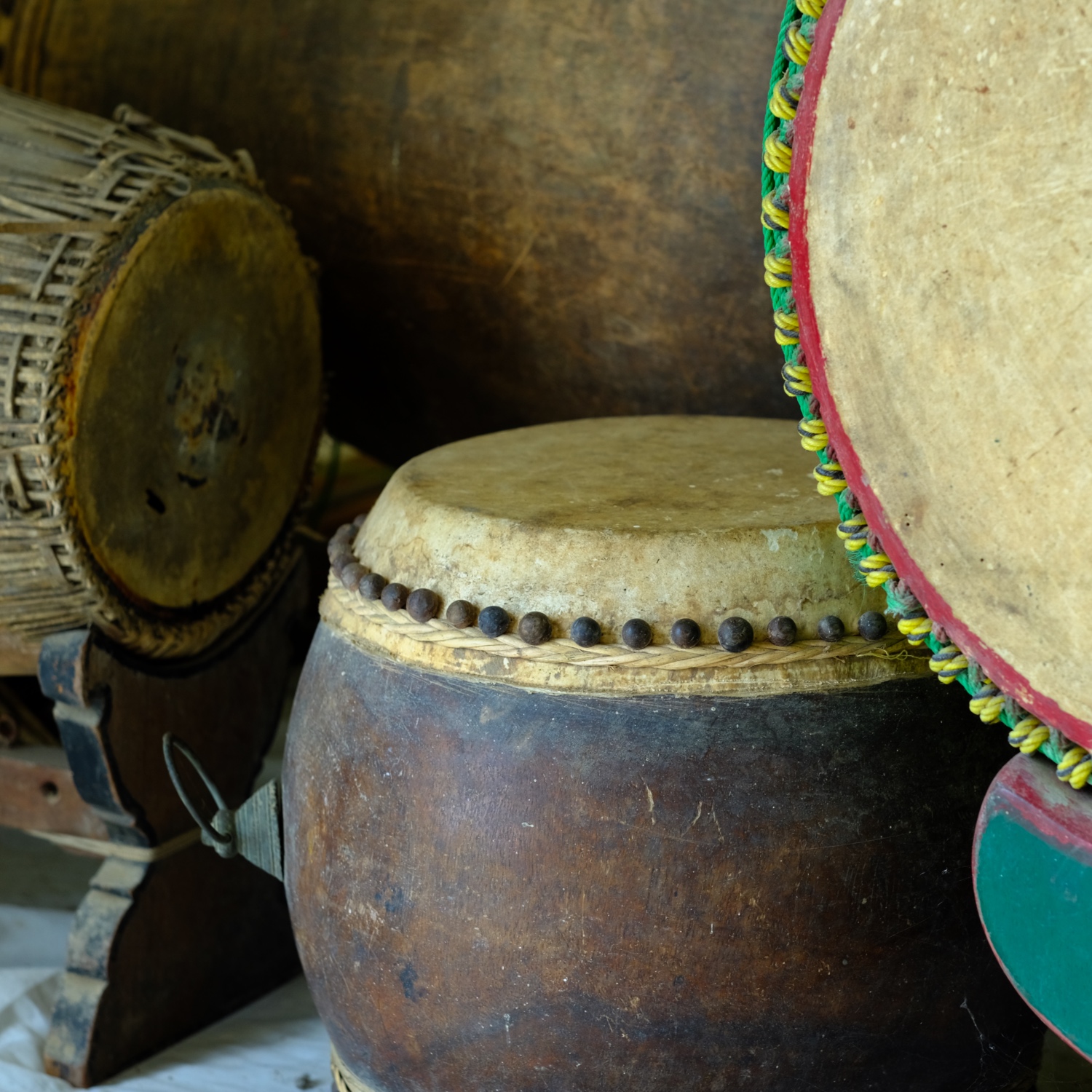 A nice display of donated ceremonial drums . . .
A nice display of donated ceremonial drums . . .
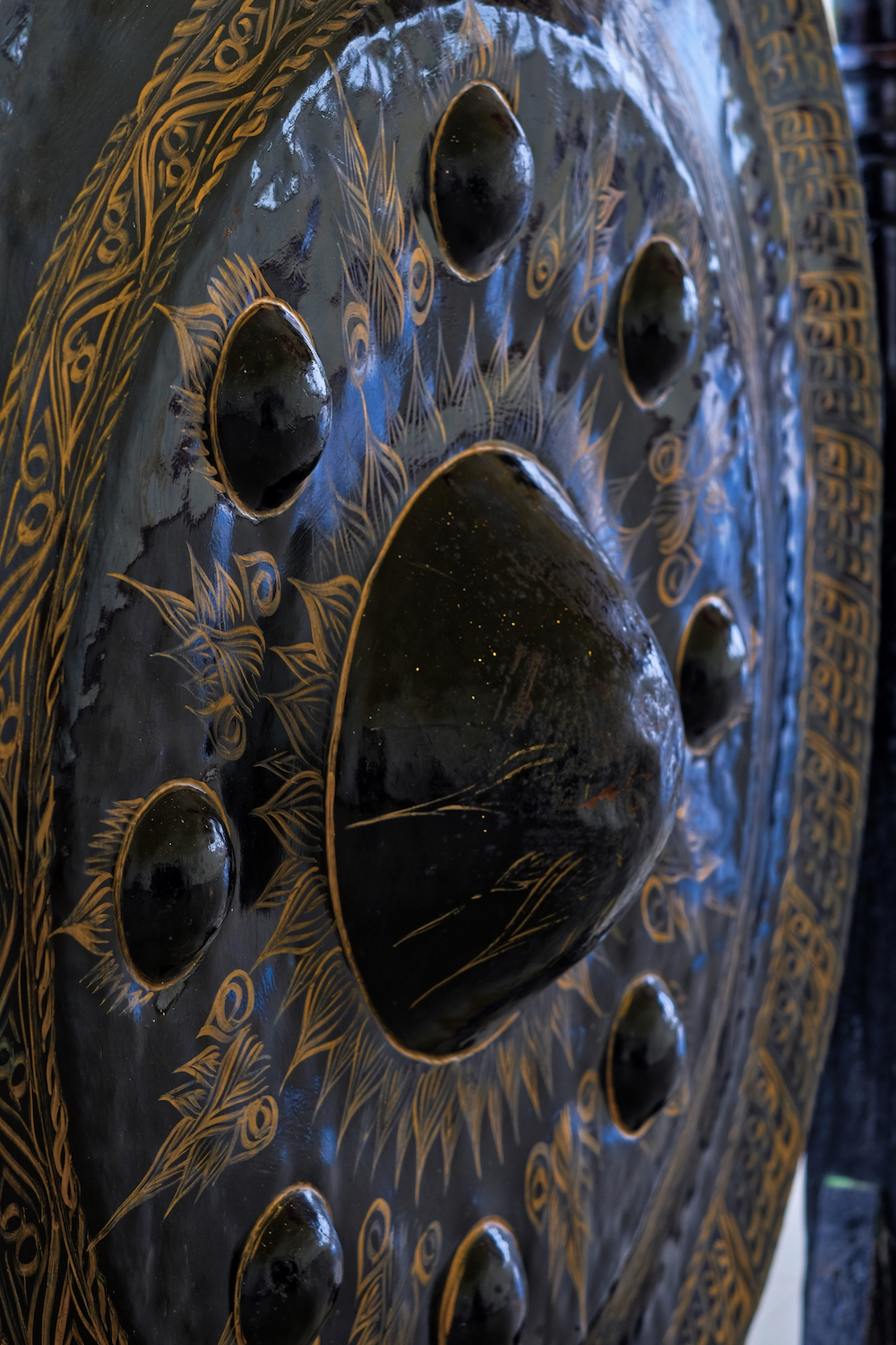 . . . and a beautiful gong. It was so quiet and peaceful that even I dared not to strike it!
. . . and a beautiful gong. It was so quiet and peaceful that even I dared not to strike it!
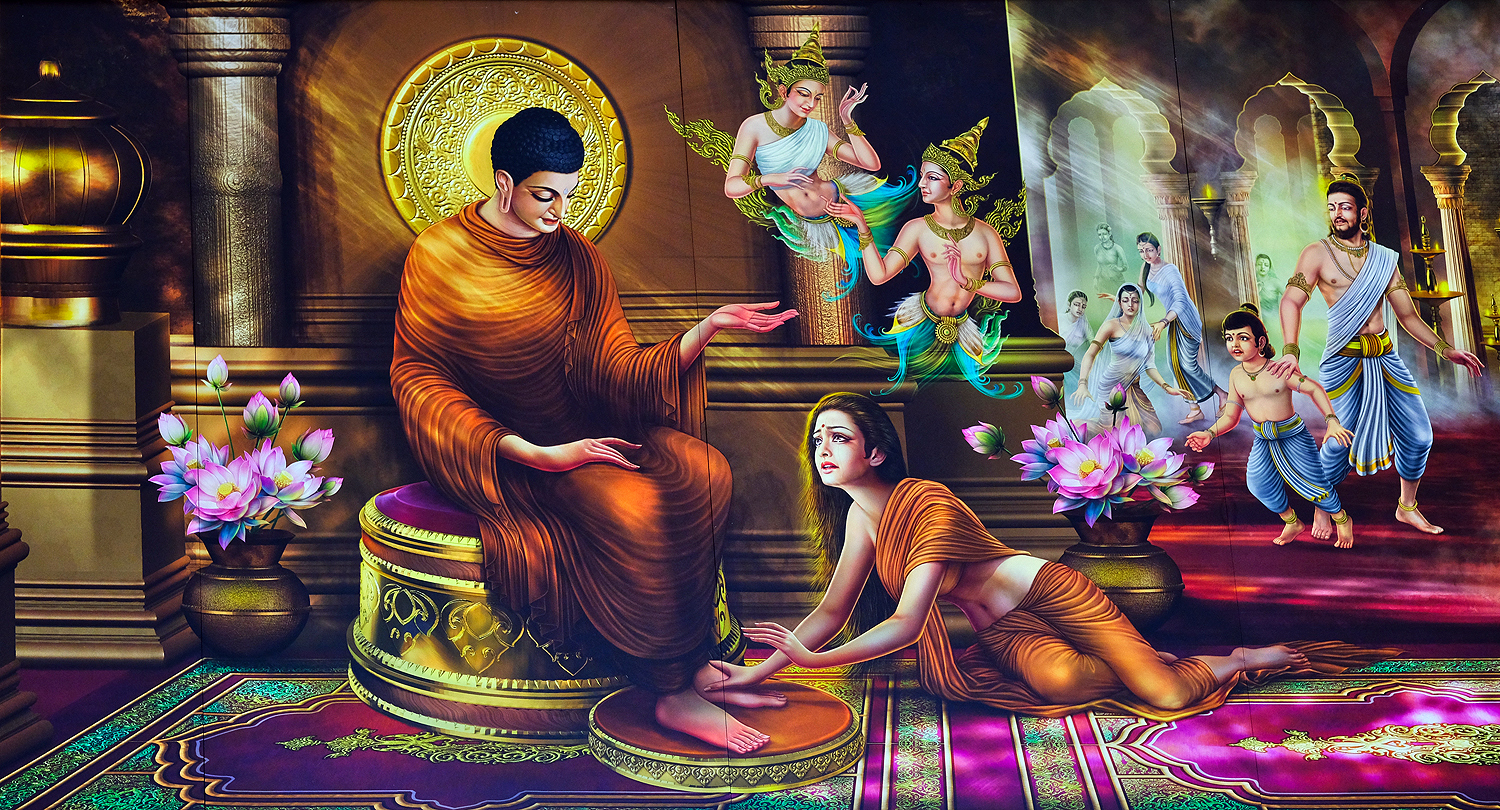 On the top floor the walls were adorned with these murals from the Buddhist Jottika Tales. Three more:
On the top floor the walls were adorned with these murals from the Buddhist Jottika Tales. Three more:
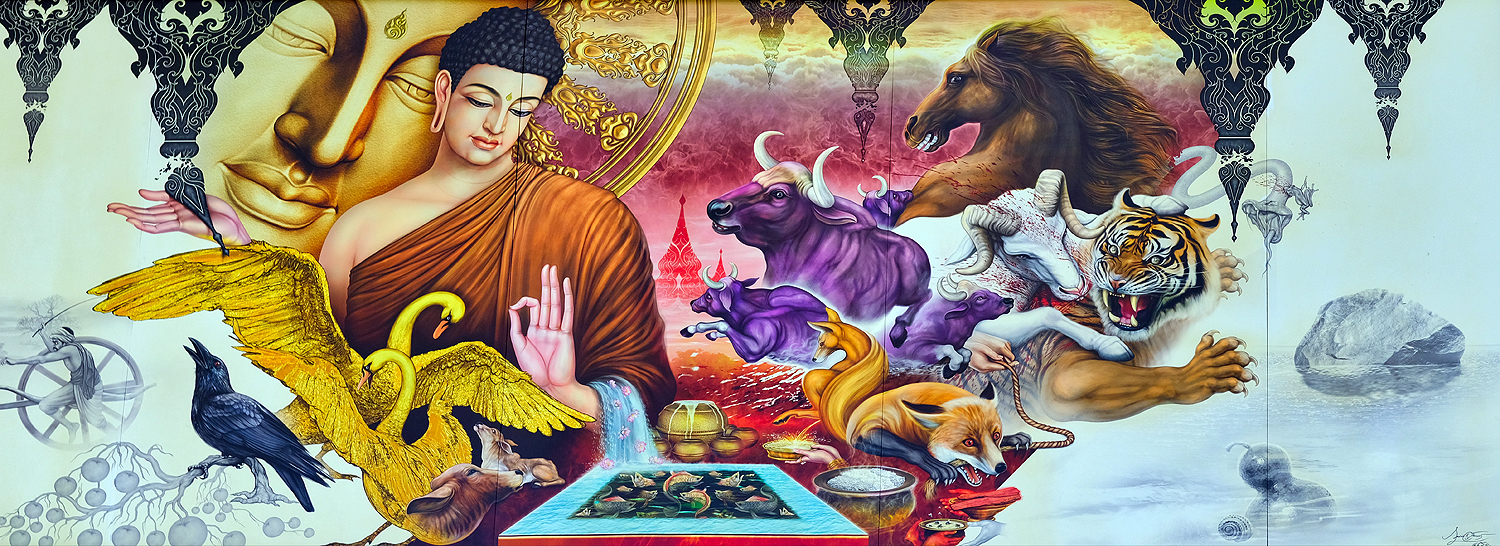
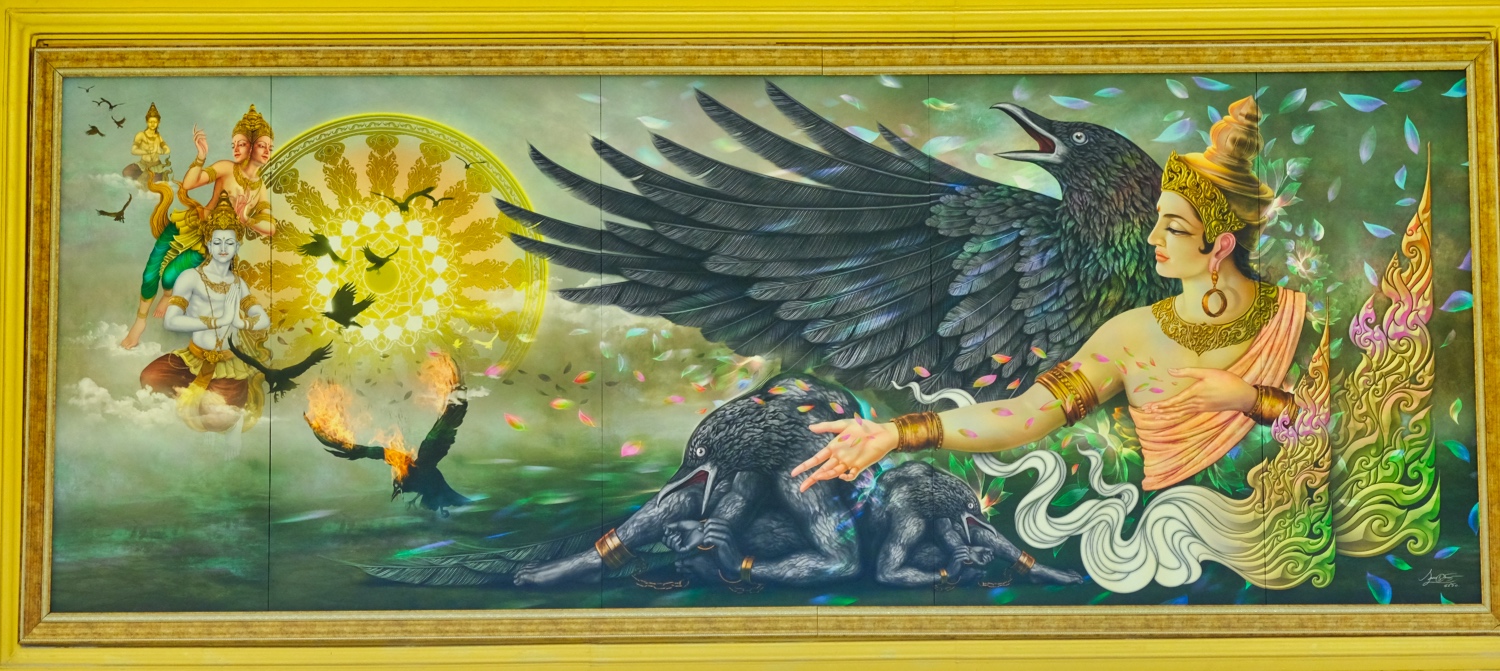
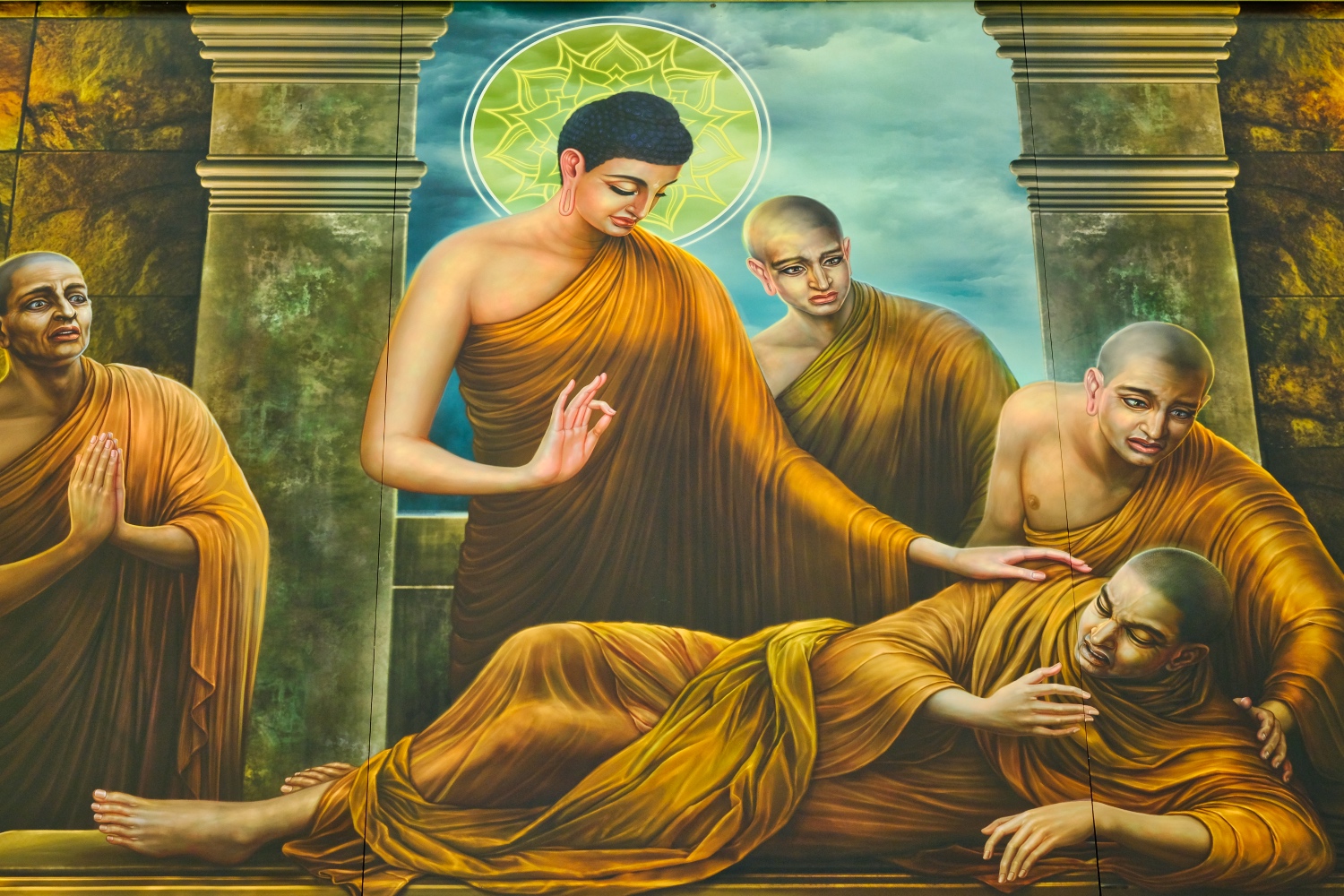
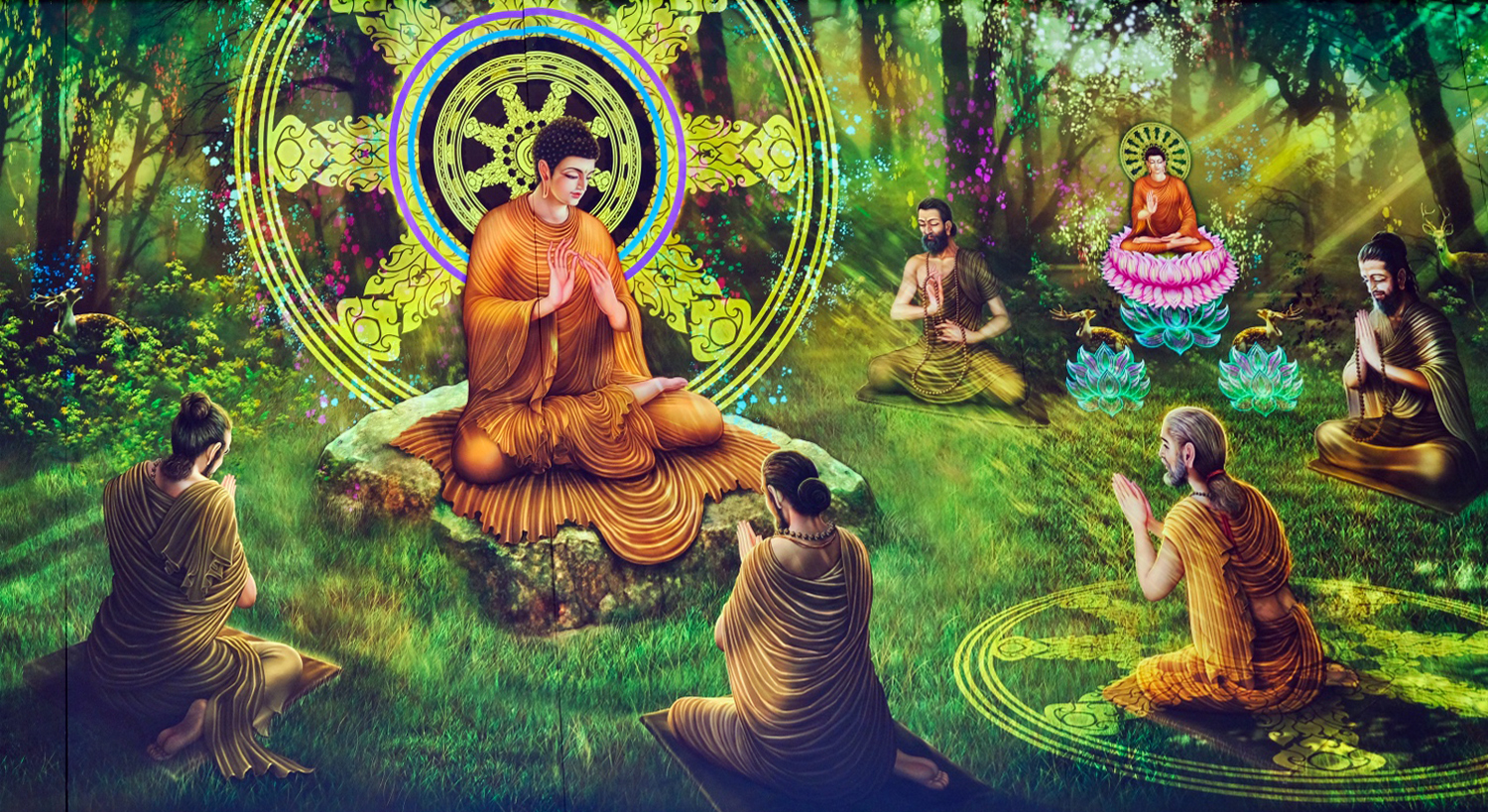 Pictorial lessons of the life of the Buddha Gotama.
Pictorial lessons of the life of the Buddha Gotama.
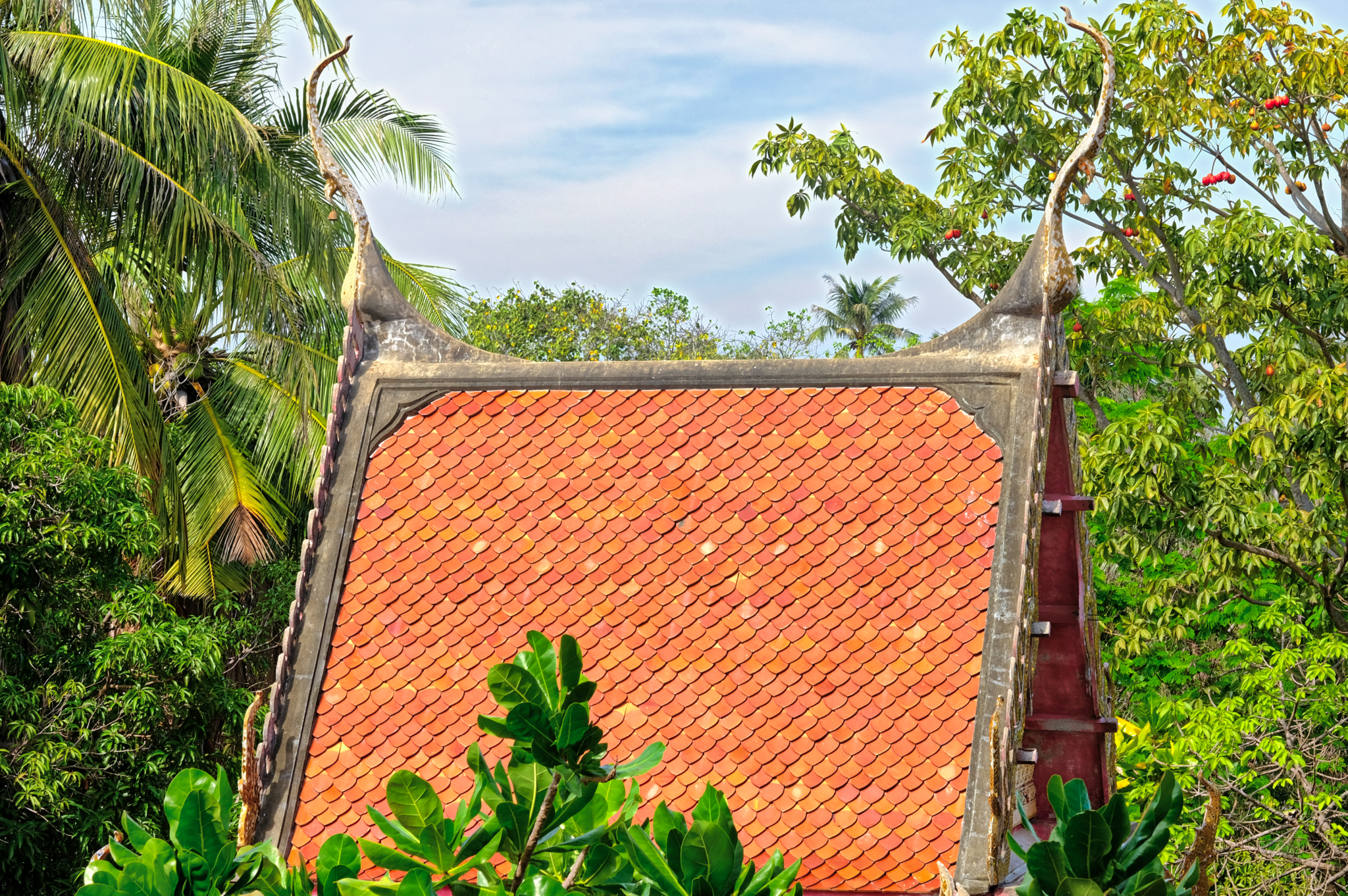 I could have stayed here all day . . . just looking out of each window.
I could have stayed here all day . . . just looking out of each window.
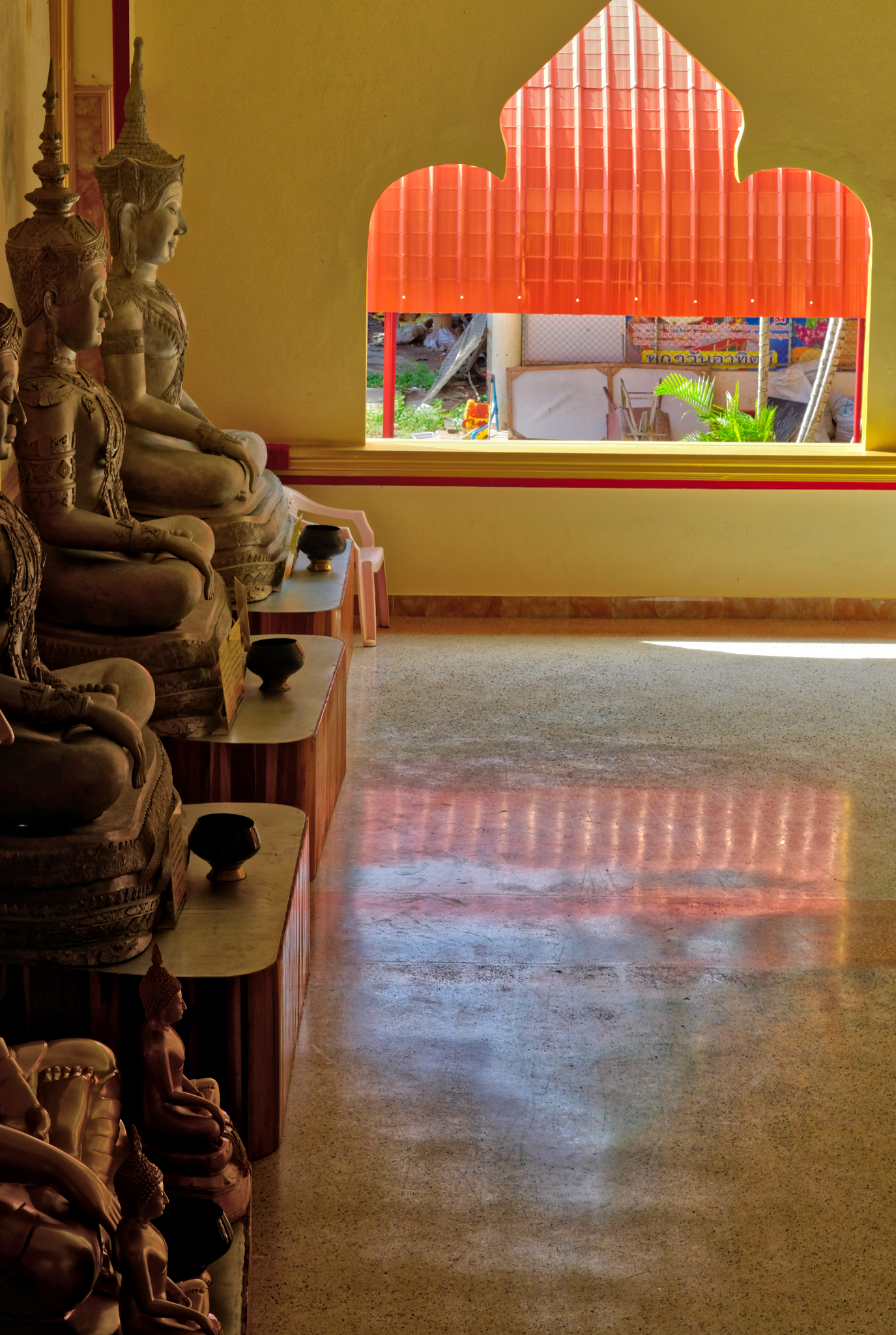 I reluctantly left . . . as I always do, asking myself, "Why don't I stay?"
I reluctantly left . . . as I always do, asking myself, "Why don't I stay?"
A RURAL WAT
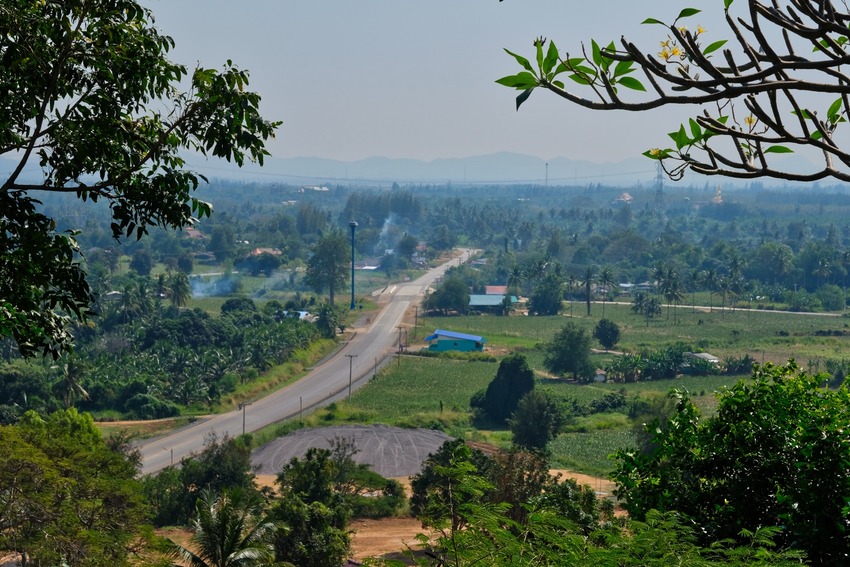 I continued up and away from the coast on a hot hazy morning on small rural roads.
I continued up and away from the coast on a hot hazy morning on small rural roads.
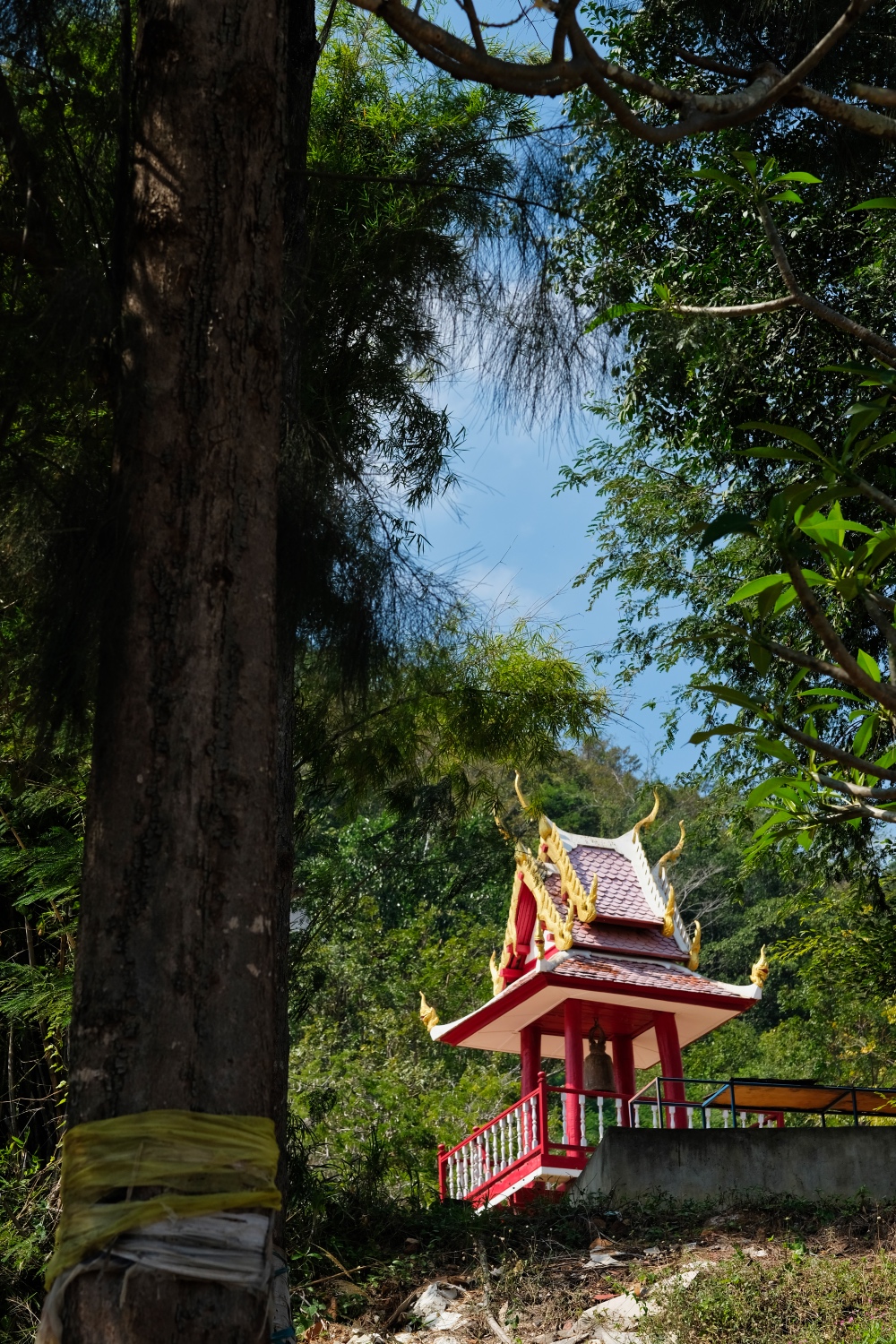 Driving up into the hills I spotted a Thai Wat at its the base.
Driving up into the hills I spotted a Thai Wat at its the base.
 It was before lunch and three monks were having the last meal of their day.
It was before lunch and three monks were having the last meal of their day.
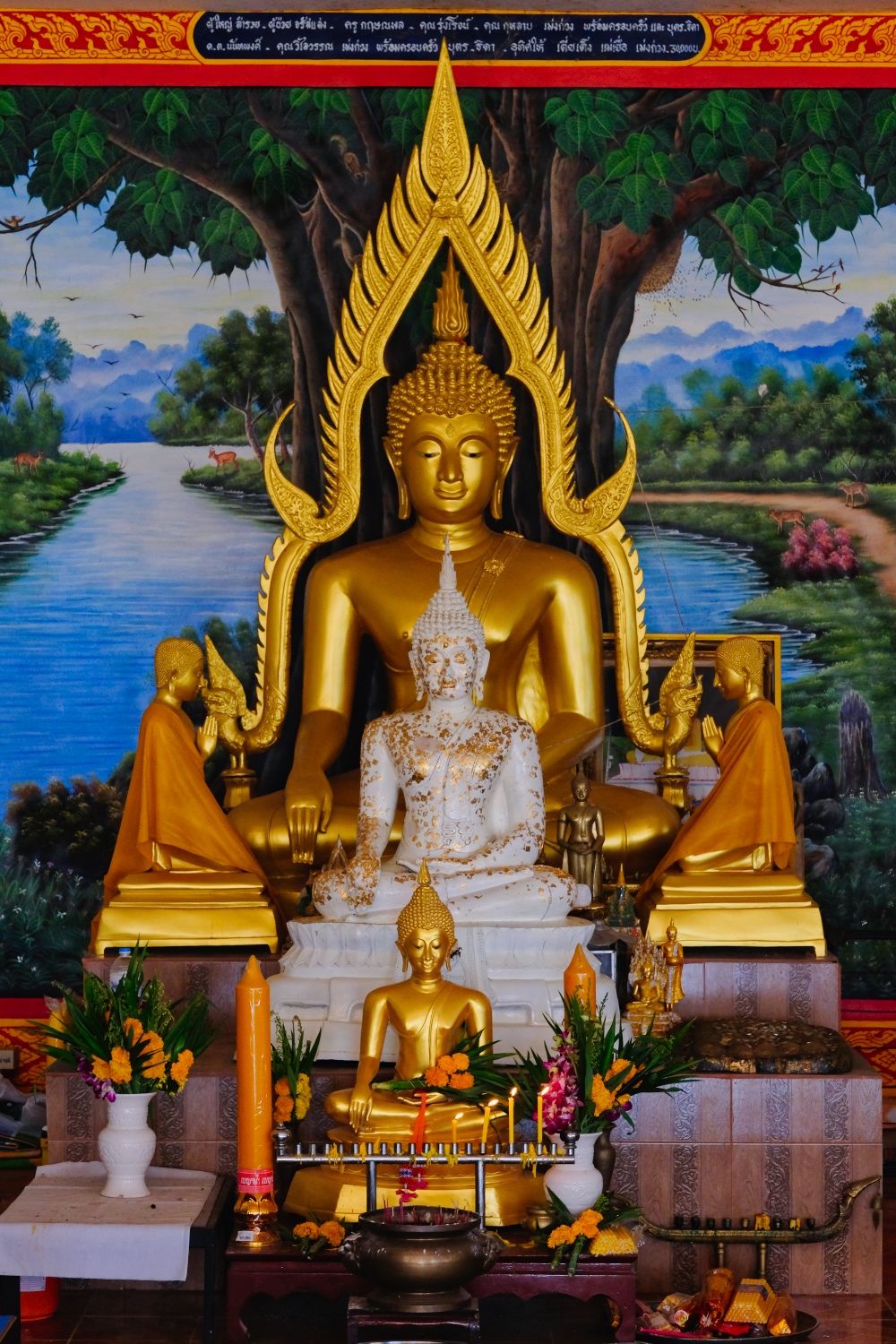 This part of the Wat was an open sided shed structure.
This part of the Wat was an open sided shed structure.
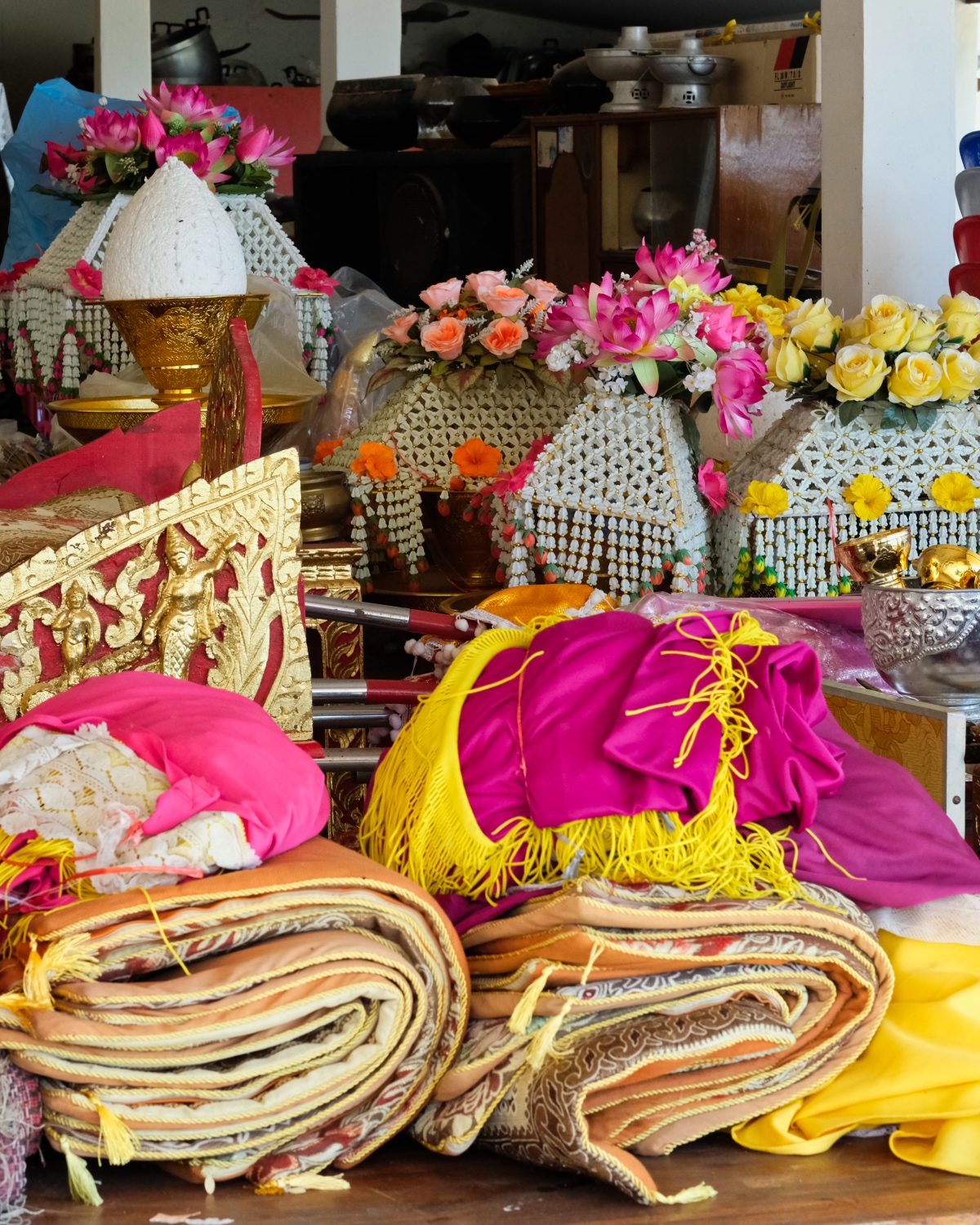 It appeared as if there had been a big event recently, by the look of these piles of ceremonial objects.
It appeared as if there had been a big event recently, by the look of these piles of ceremonial objects.
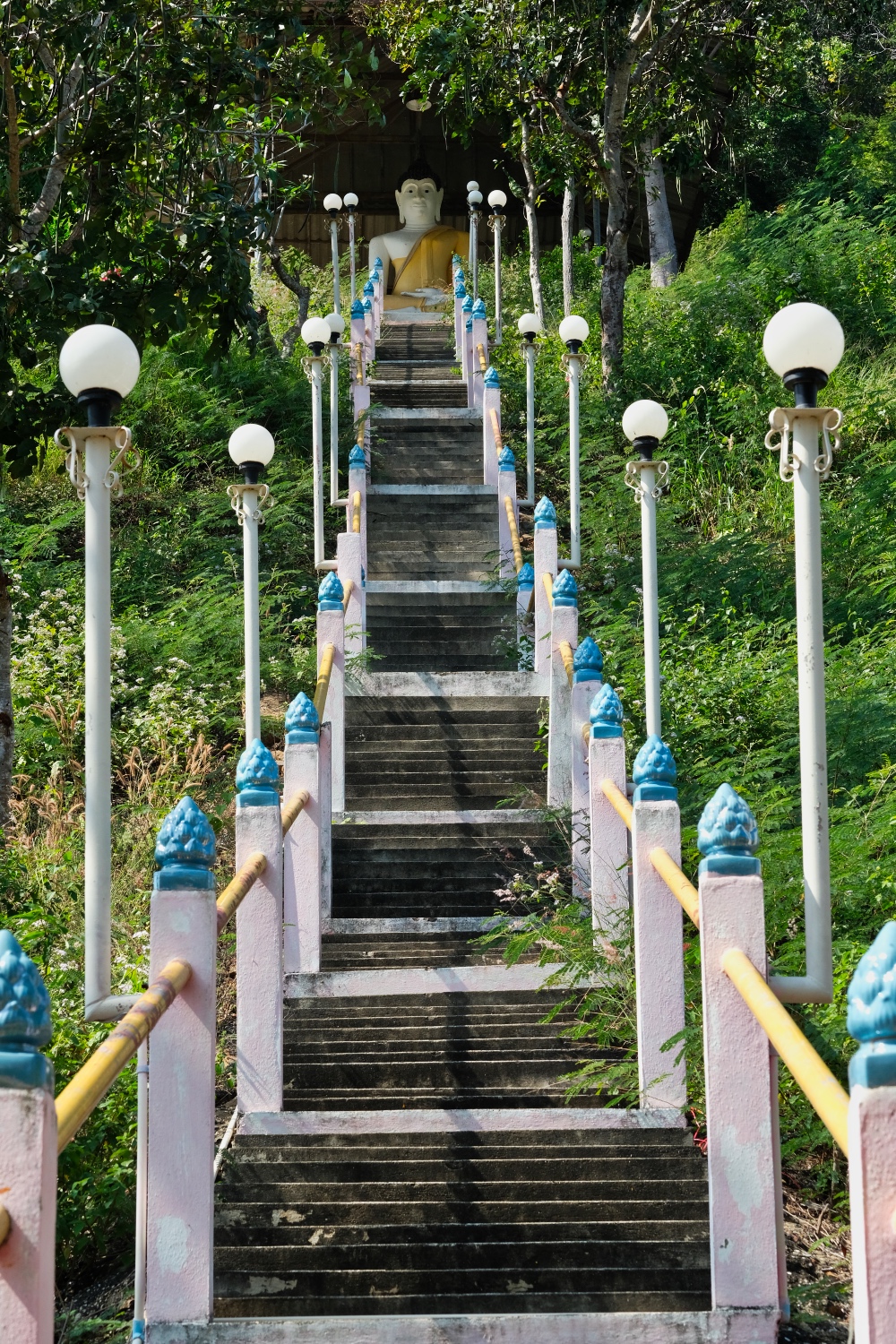 Steep stairs led to a hilltop Buddha image . . . I decided to walk up for the view . . . and to respect the big Buddha there.
Steep stairs led to a hilltop Buddha image . . . I decided to walk up for the view . . . and to respect the big Buddha there.
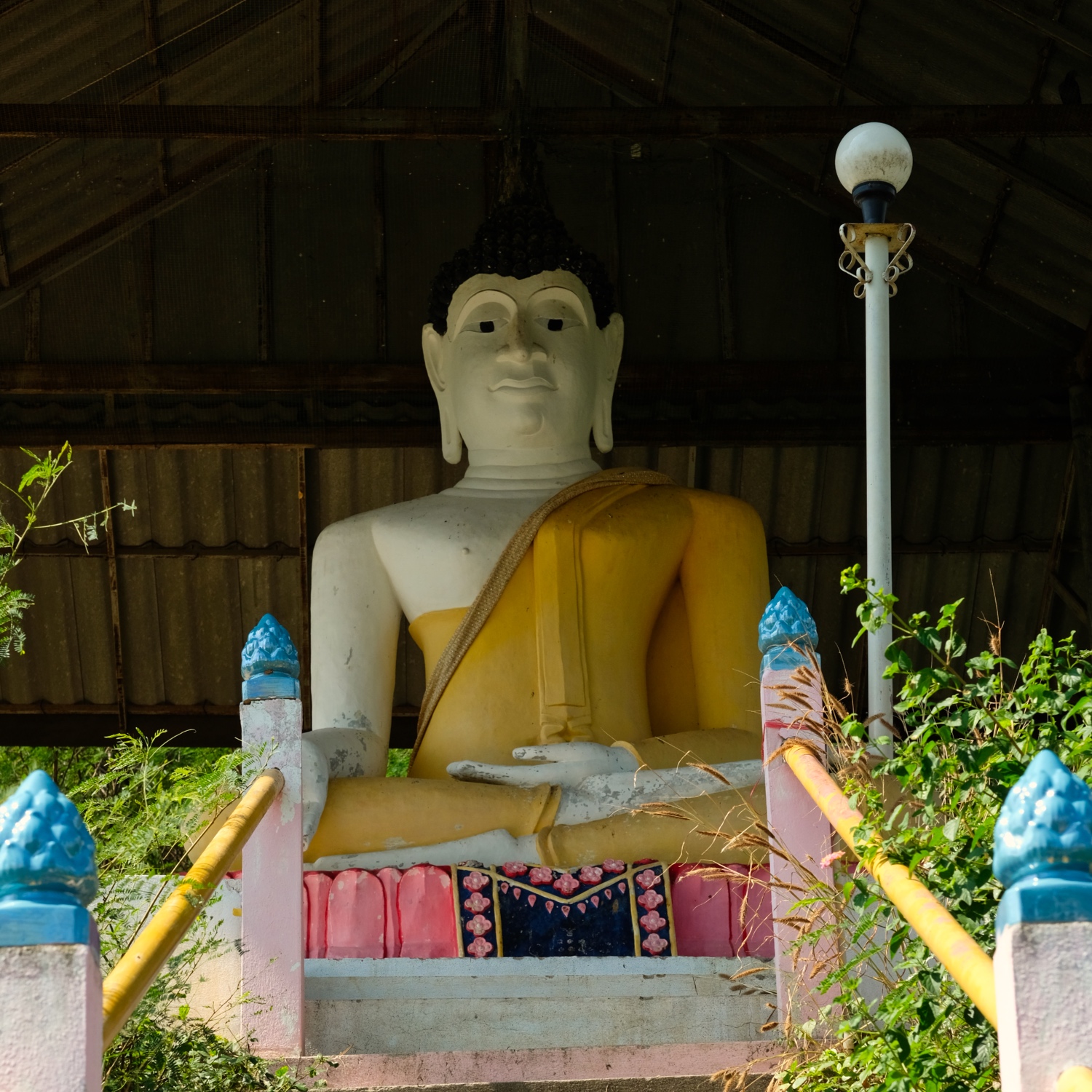 It was worth the many steps up.
It was worth the many steps up.
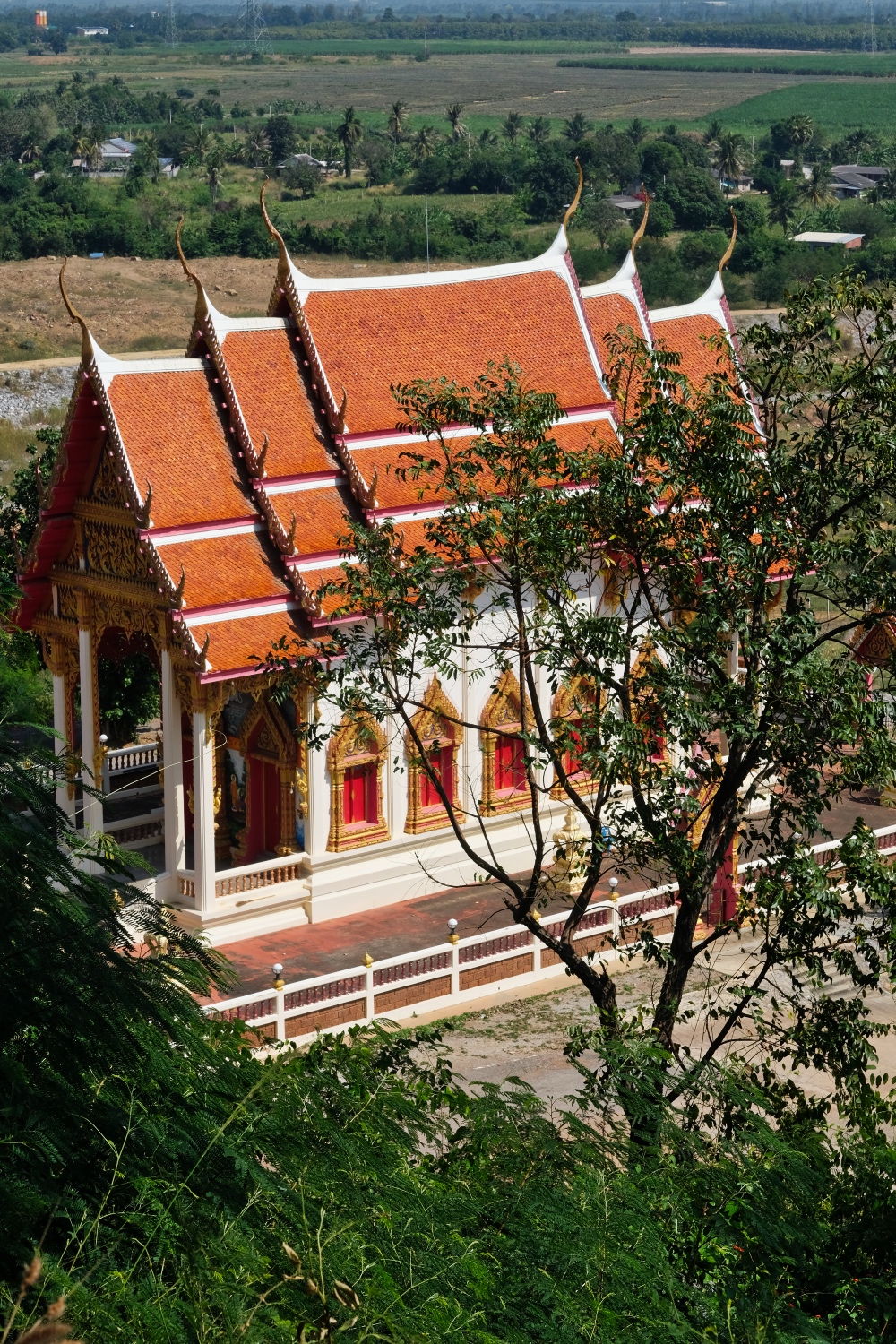 The view from the top did not disappoint. The Wat below was wonderful and, try as I might, I could not find the name of this Wat, not is it on a map.
The view from the top did not disappoint. The Wat below was wonderful and, try as I might, I could not find the name of this Wat, not is it on a map.
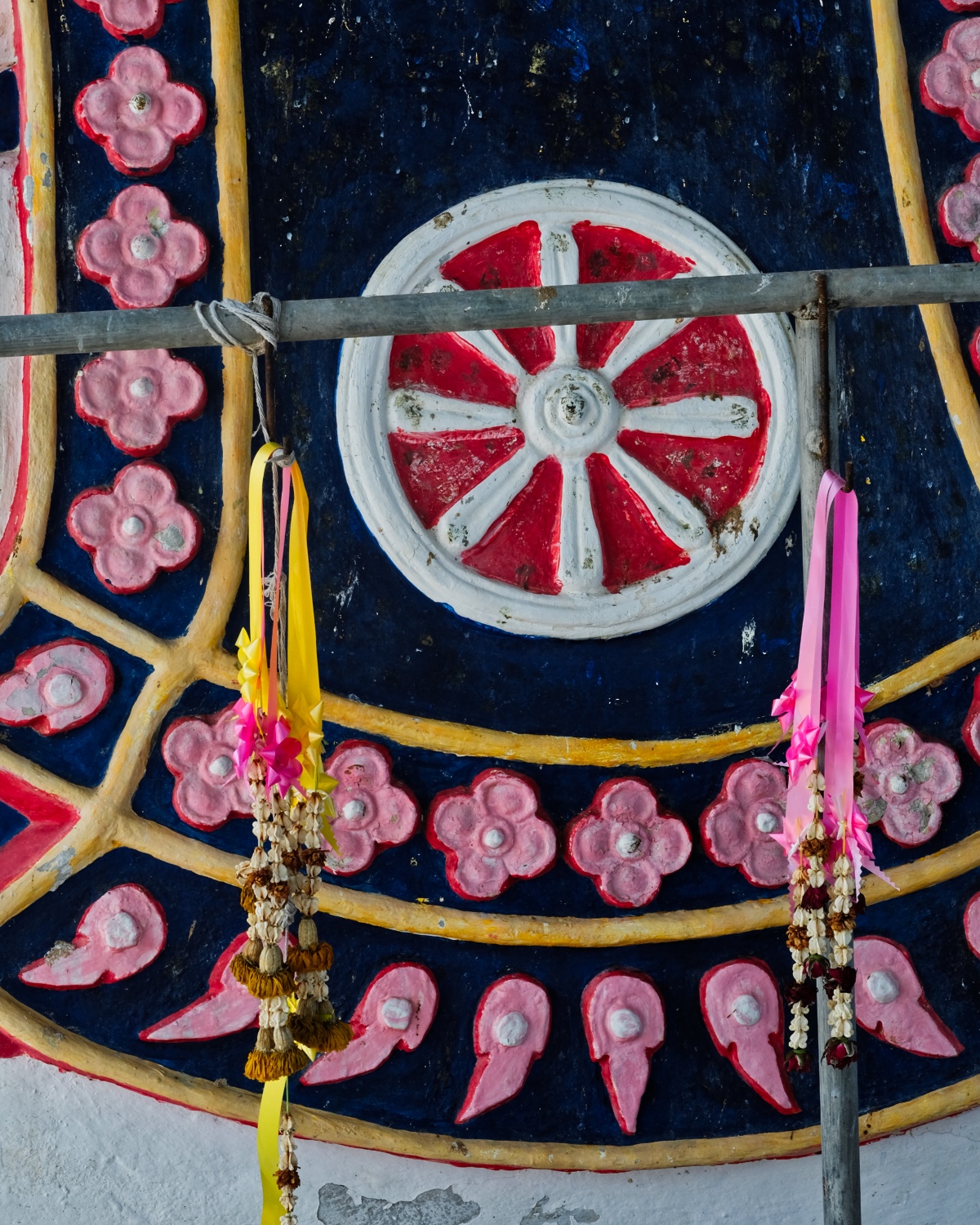 Above the hilltop Buddha, a mandala.
Above the hilltop Buddha, a mandala.
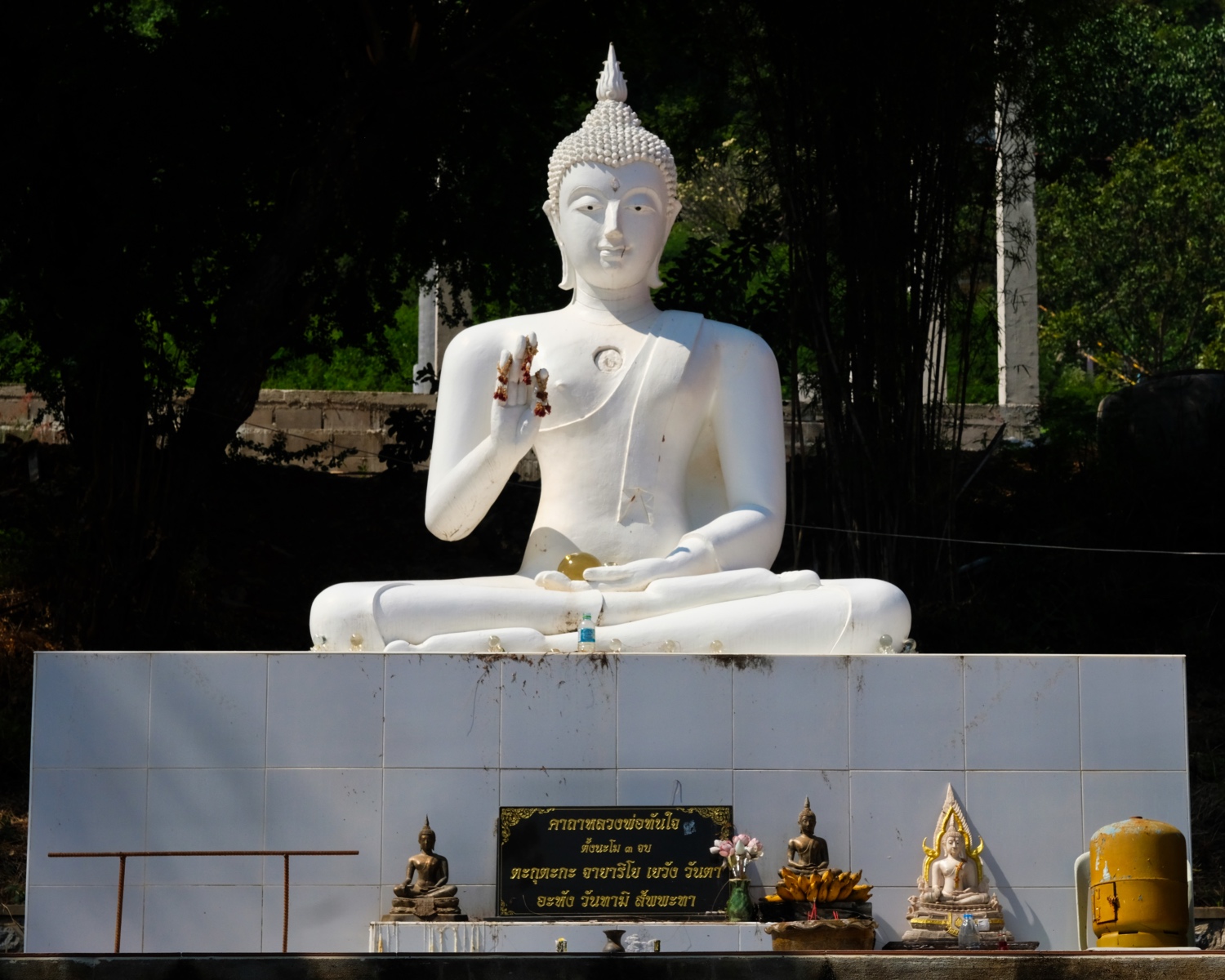 Another area of the Wat had a marvelous white Buddha image and a shed containing many interesting offerings.
Another area of the Wat had a marvelous white Buddha image and a shed containing many interesting offerings.
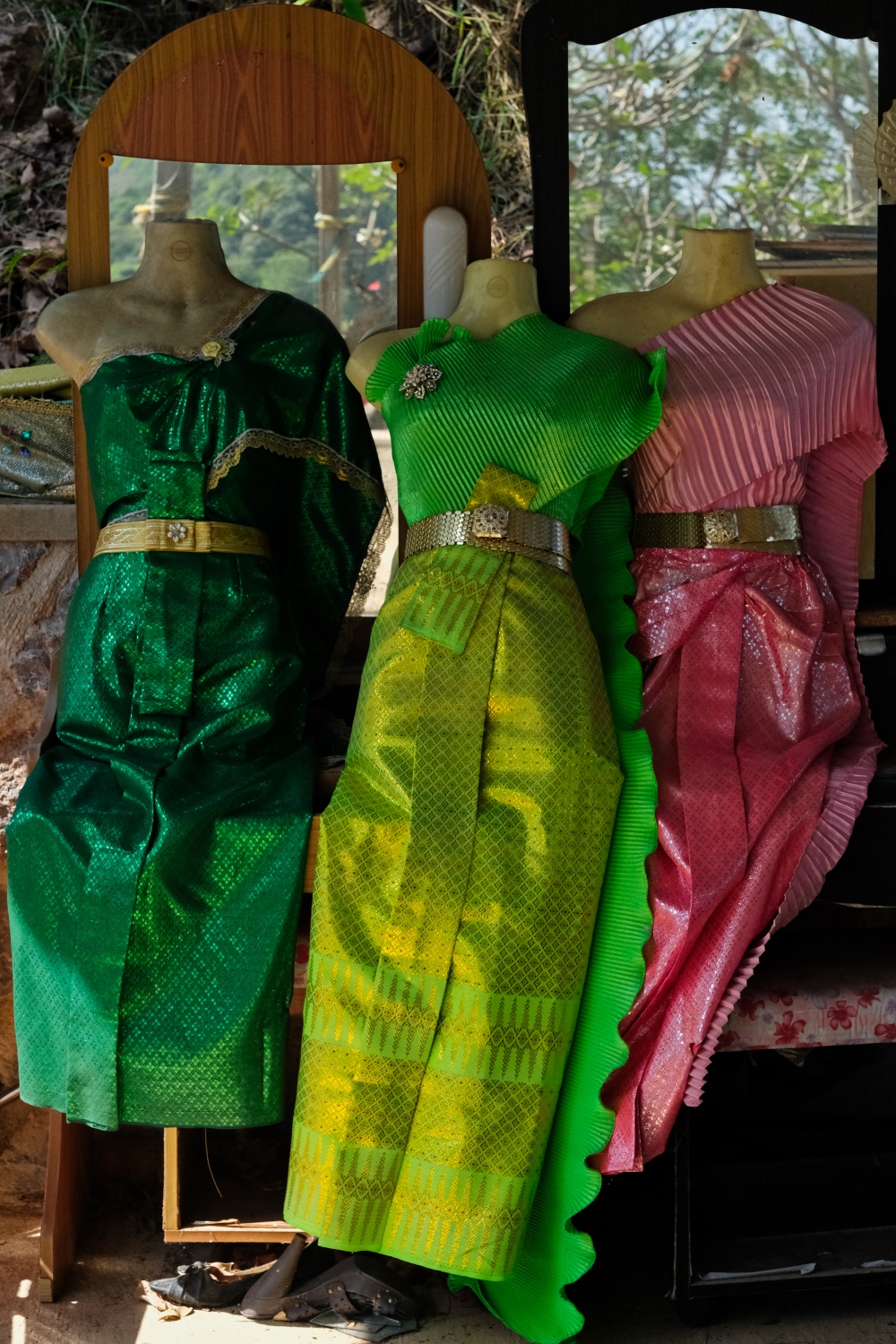 These dress offerings are a 'new' feature for me, or I have just not noticed them in the past (which I doubt). I do not know the significance.
These dress offerings are a 'new' feature for me, or I have just not noticed them in the past (which I doubt). I do not know the significance.
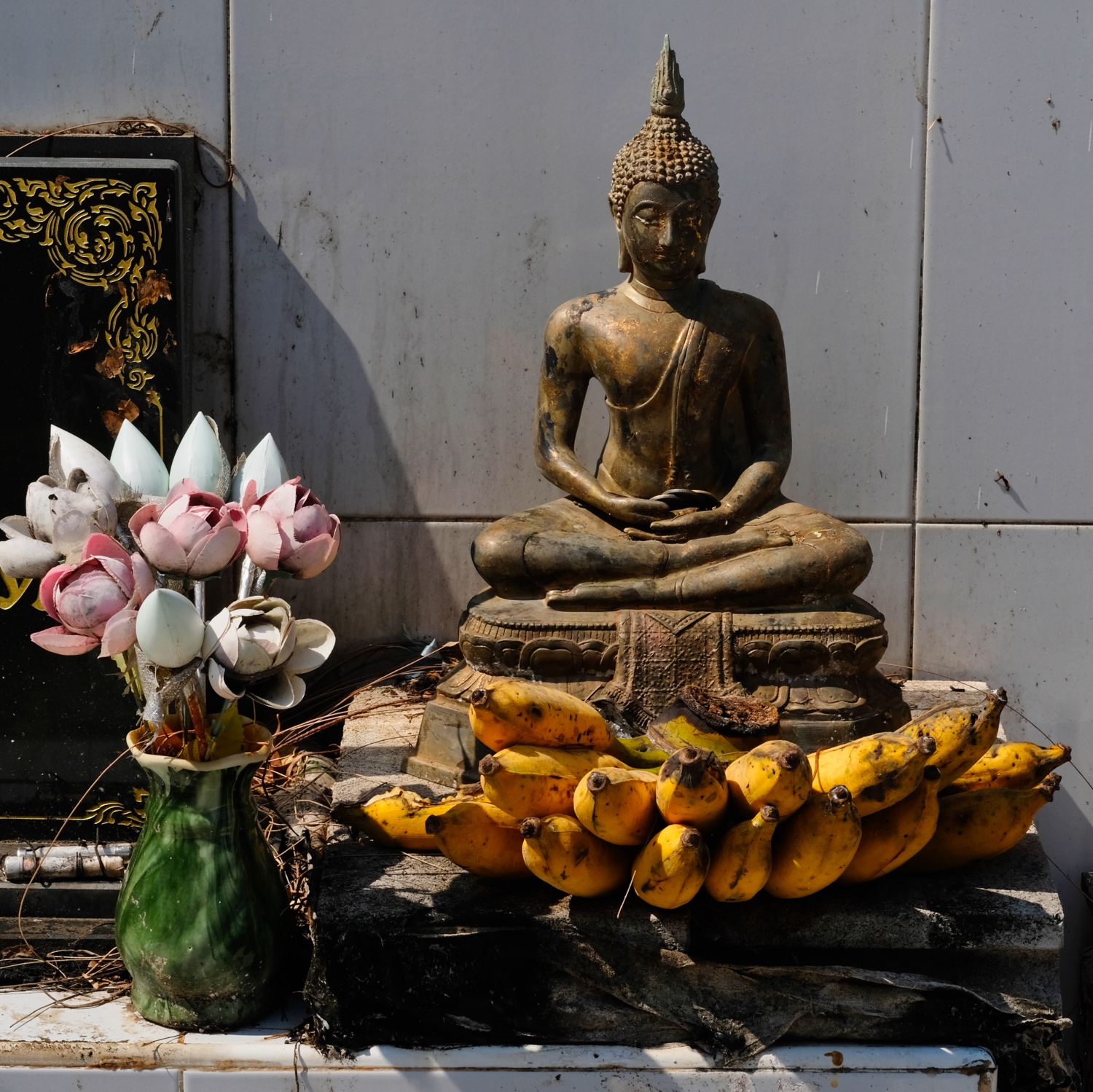 A living Wat, recently visited by the reverent.
A living Wat, recently visited by the reverent.
 A spirit house type offering plate . . . the ancestors . . . and some make-up . . . just in case.
A spirit house type offering plate . . . the ancestors . . . and some make-up . . . just in case.
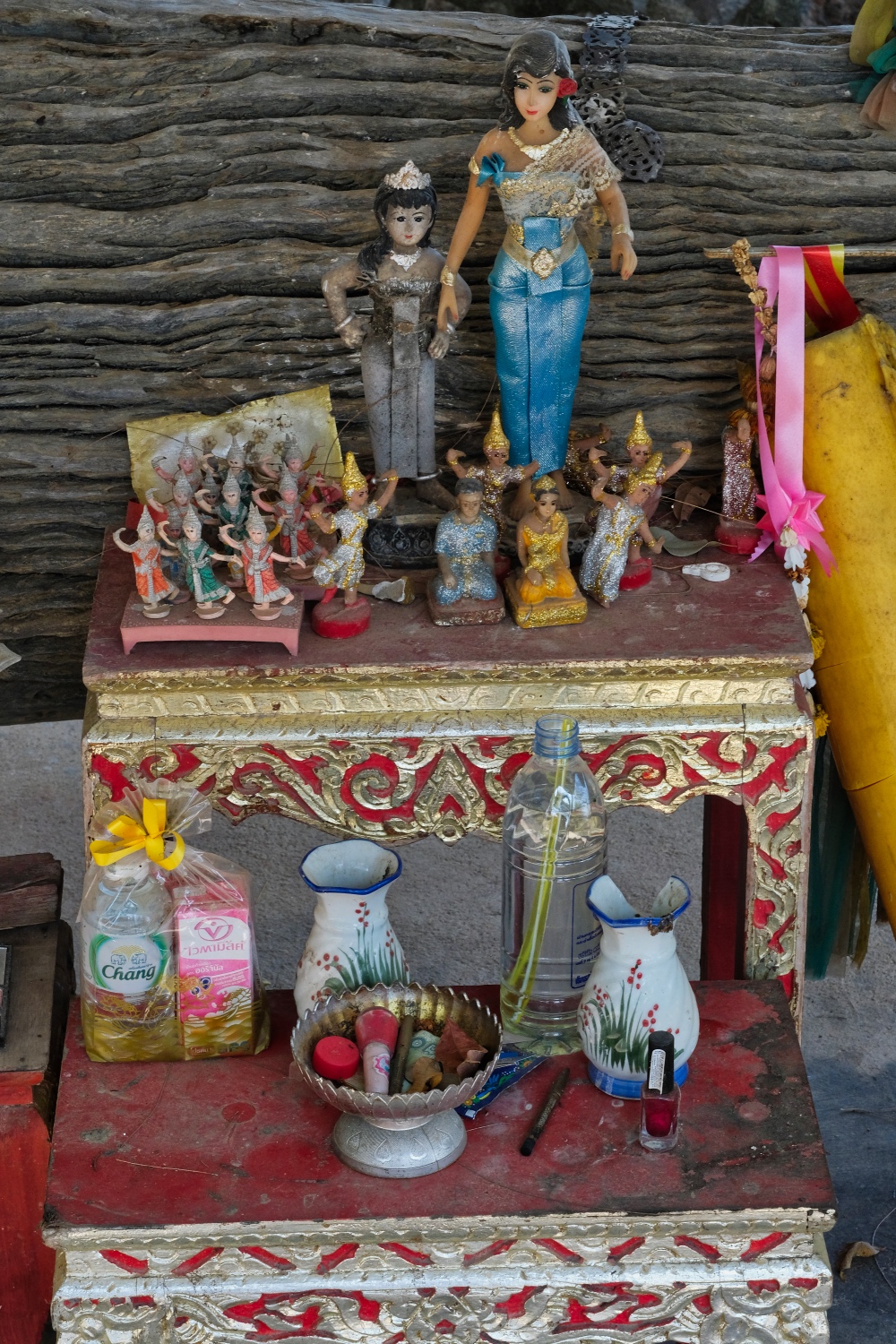 More offerings of all kinds.
More offerings of all kinds.
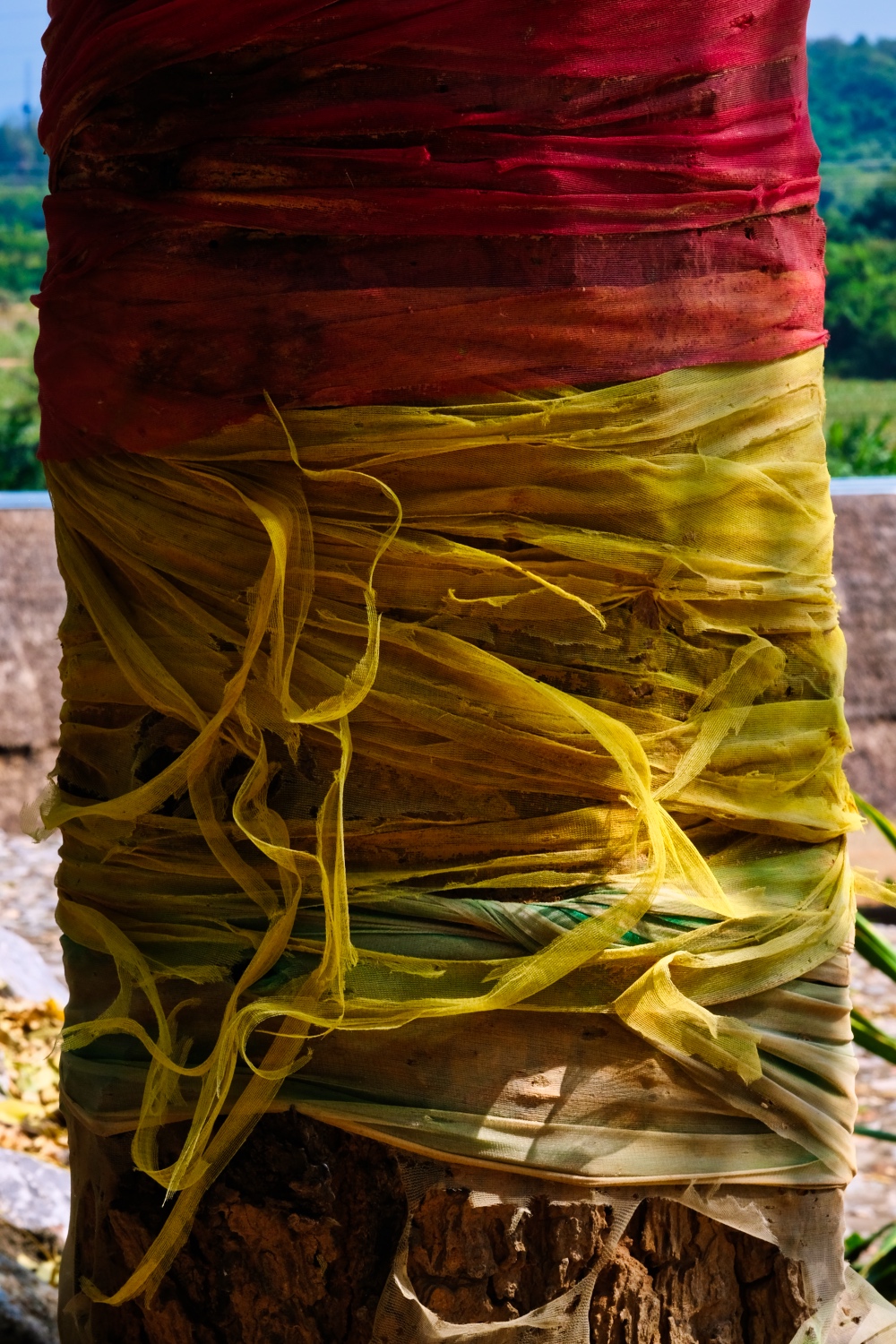 A revered spirit tree wrapped in devotional colors.
A revered spirit tree wrapped in devotional colors.
MONSOON VALLEY Vineyards
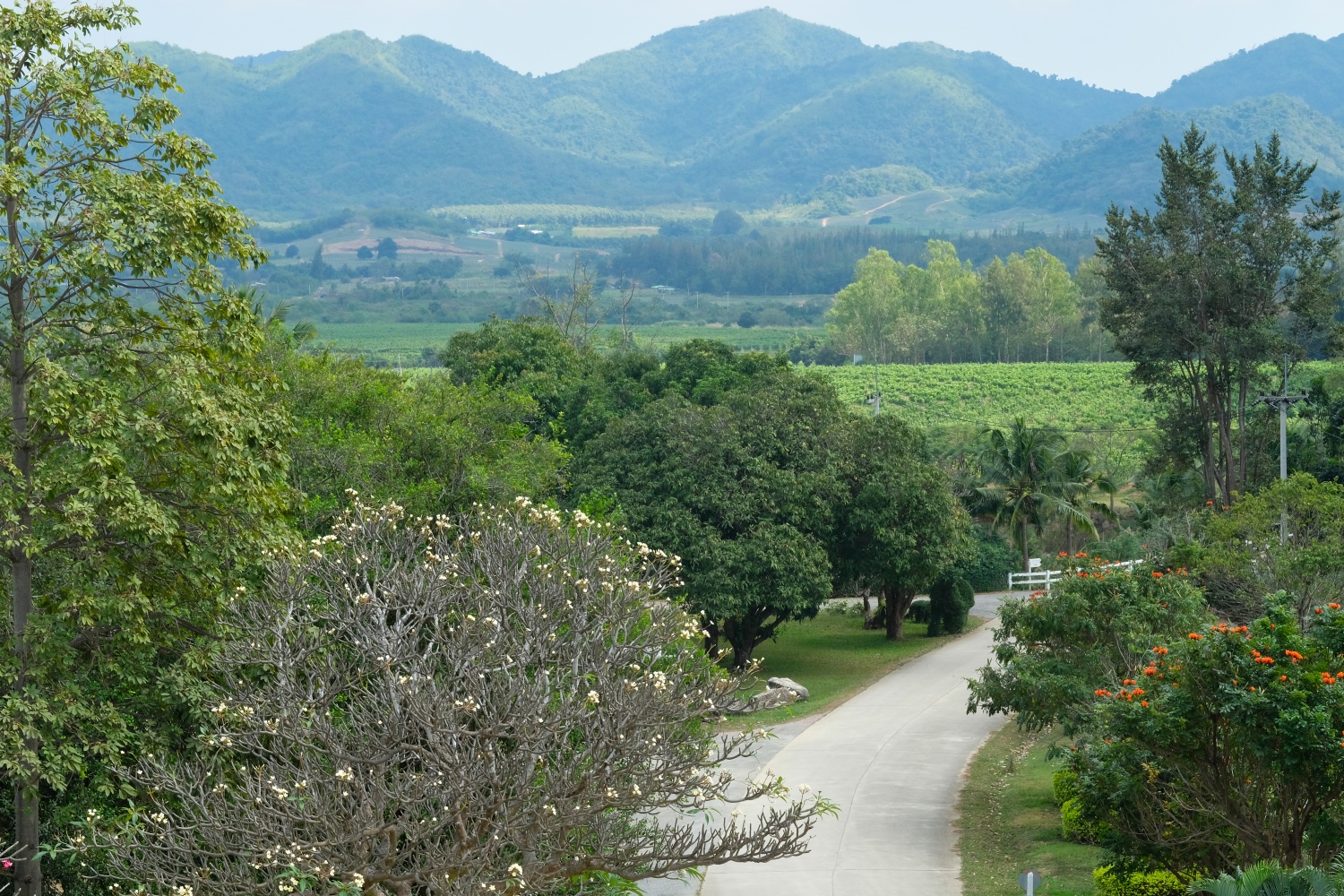 Further to the west, and up into the valleys of the foothills, we came to the Monsoon Valley Vineyards.
Further to the west, and up into the valleys of the foothills, we came to the Monsoon Valley Vineyards.
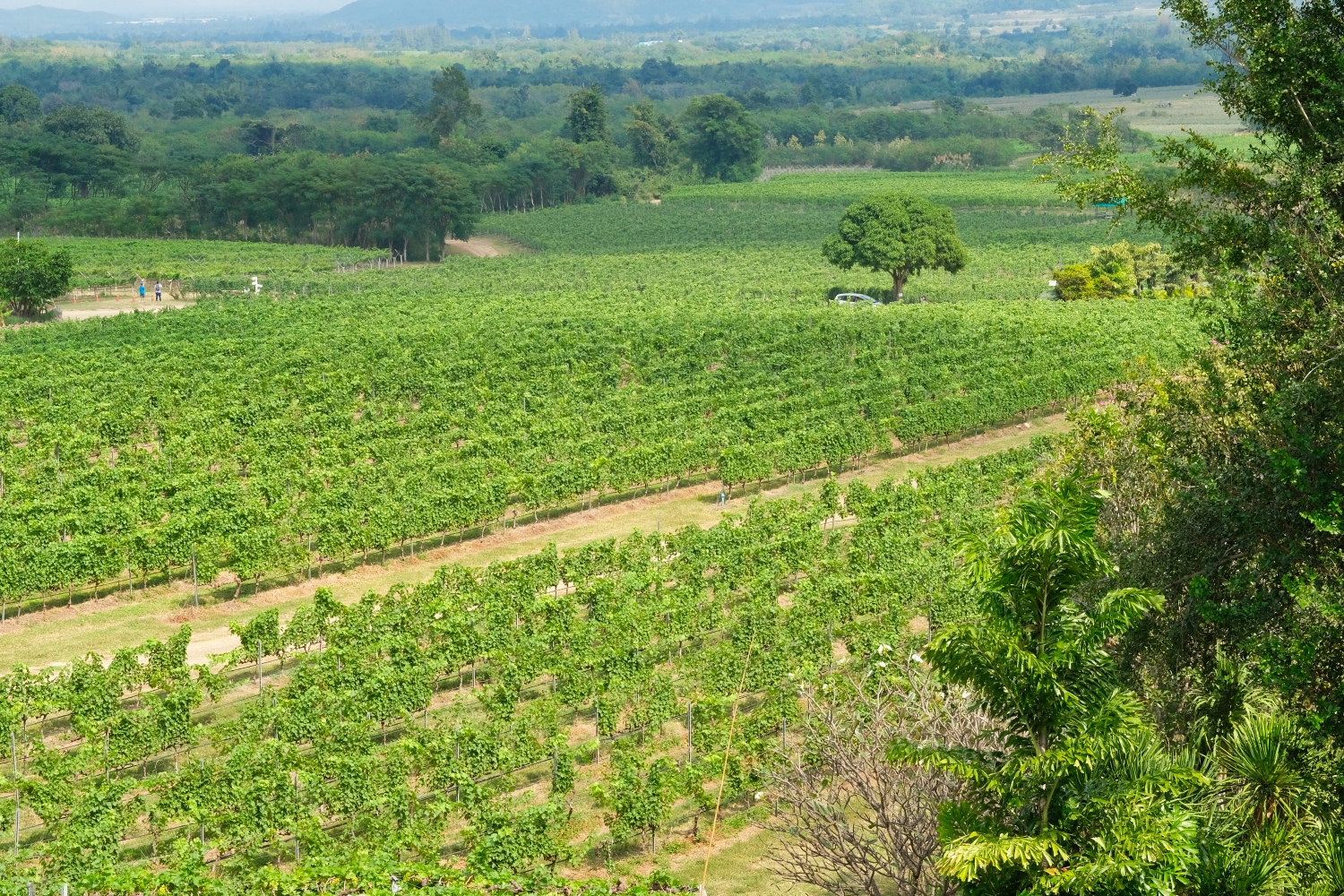 No, this is not France . . . this is Thailand.
No, this is not France . . . this is Thailand.
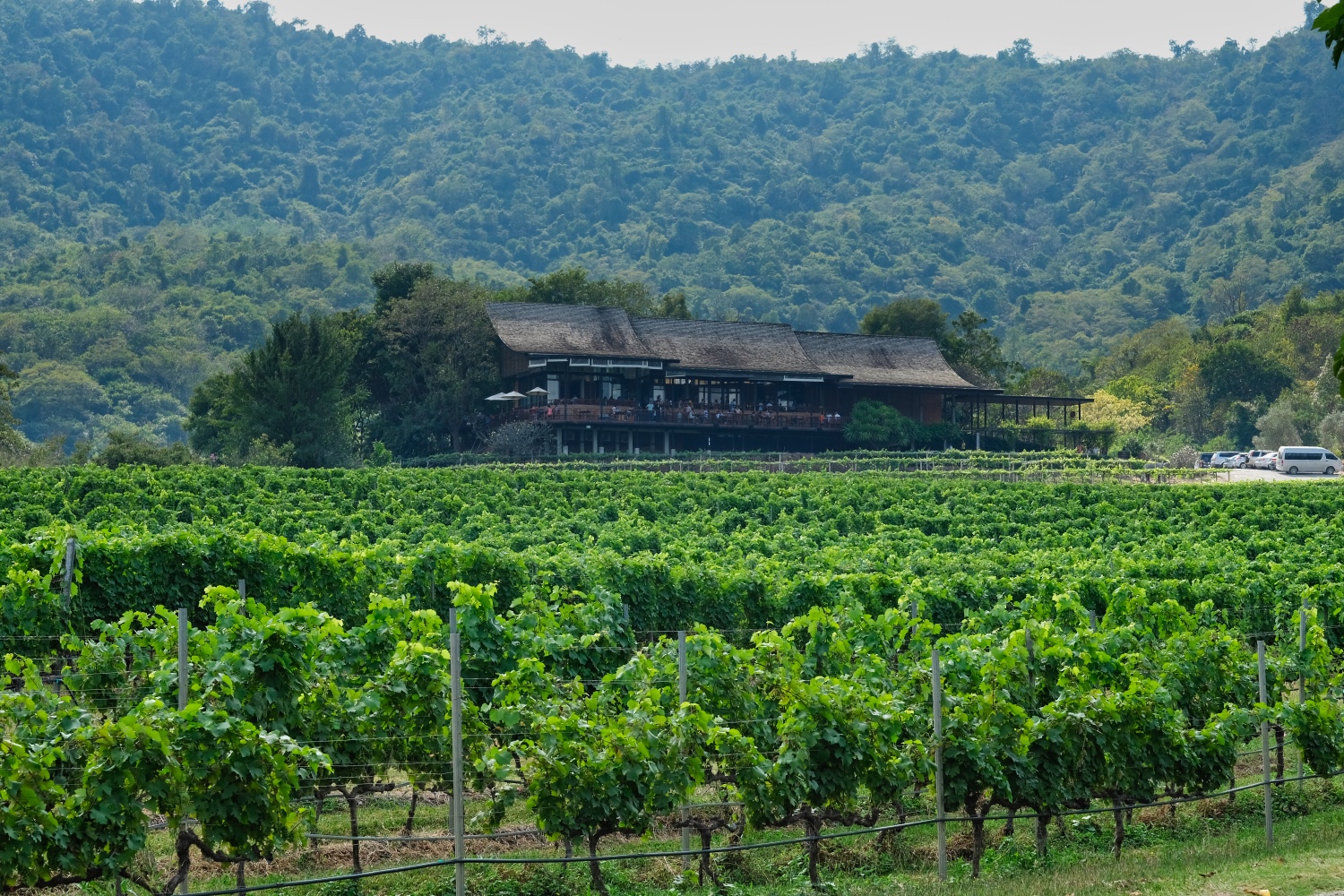 In addition to the vineyards, there is an attractive lodge with a fine dining cafe set up against the hills.
In addition to the vineyards, there is an attractive lodge with a fine dining cafe set up against the hills.
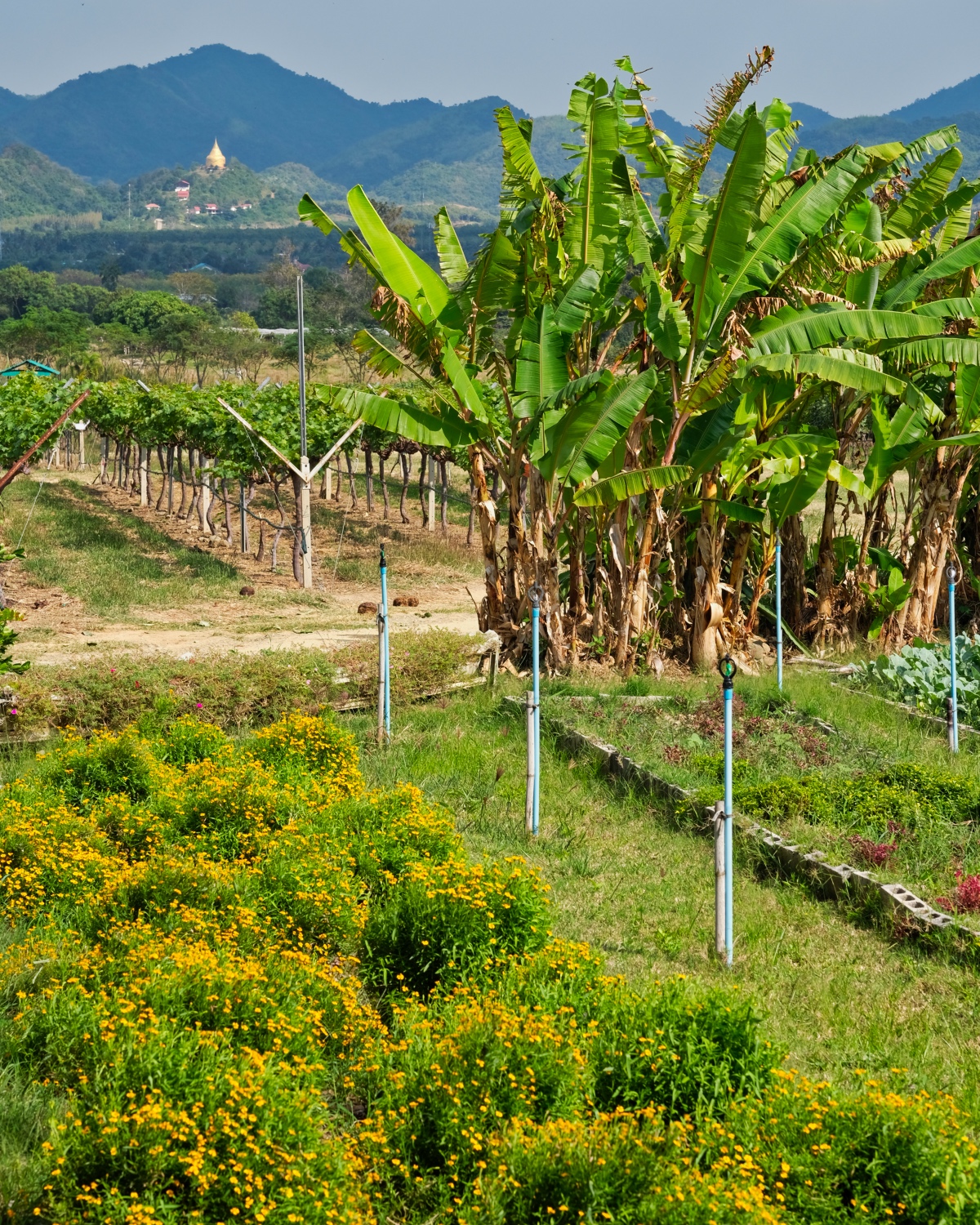 After lunch we walked out into the stunning view . . . .
After lunch we walked out into the stunning view . . . .
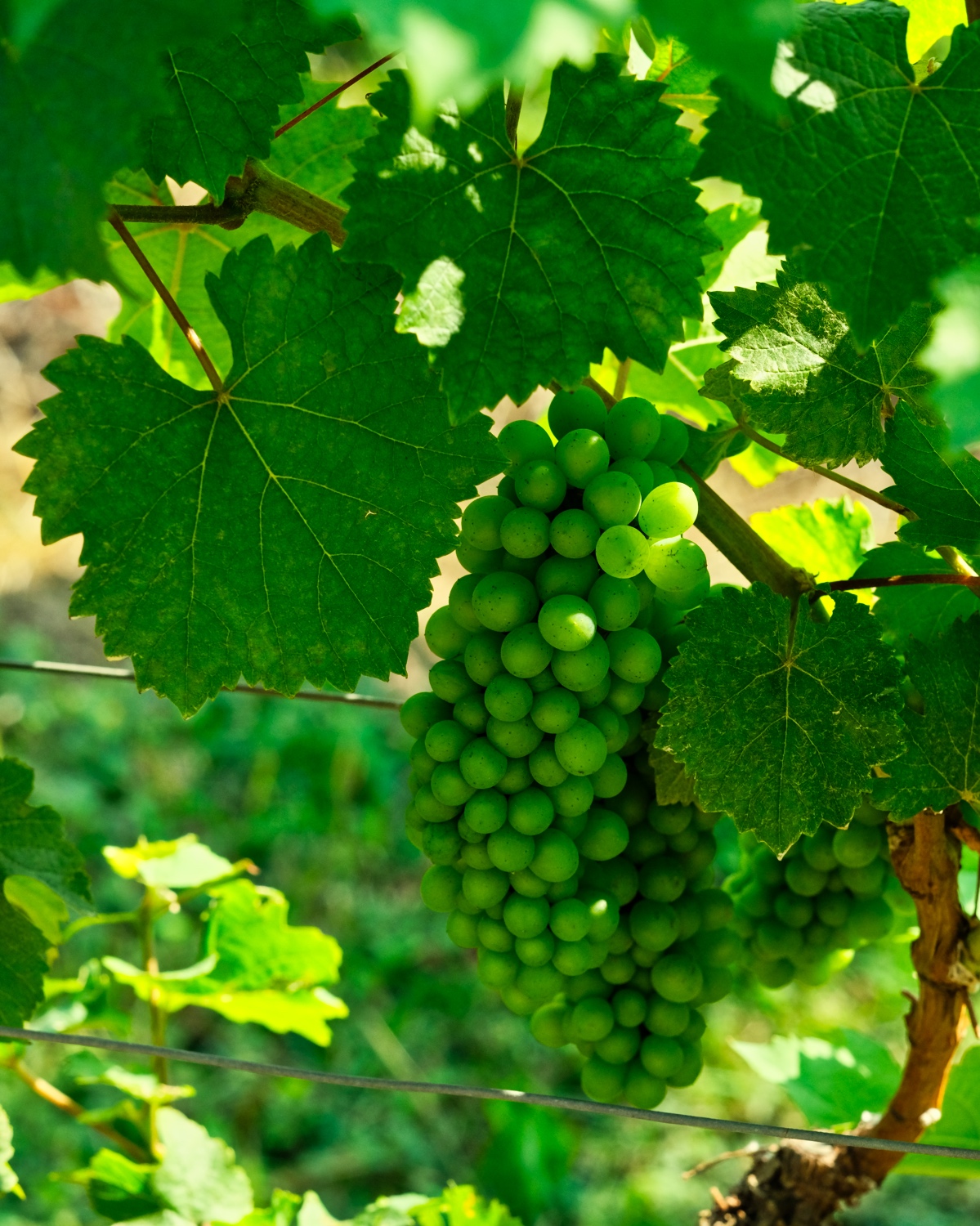 I do not know how the tropical seasons in Thailand effect the growing of grapes, but these seem to be near harvesting.
I do not know how the tropical seasons in Thailand effect the growing of grapes, but these seem to be near harvesting.
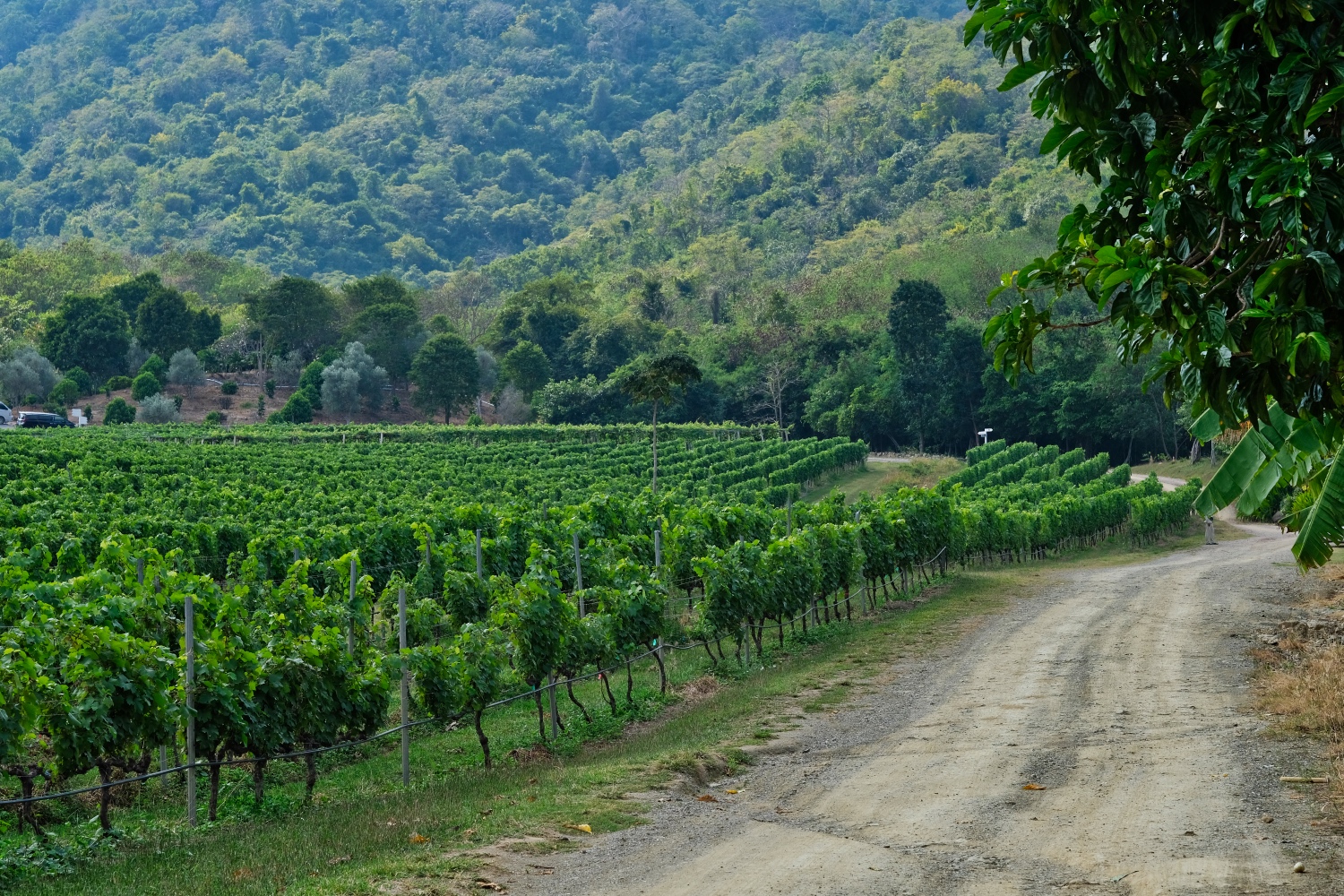 We had a very nice long walk through the vineyards on a 'cool' January day in Thailand.
We had a very nice long walk through the vineyards on a 'cool' January day in Thailand.
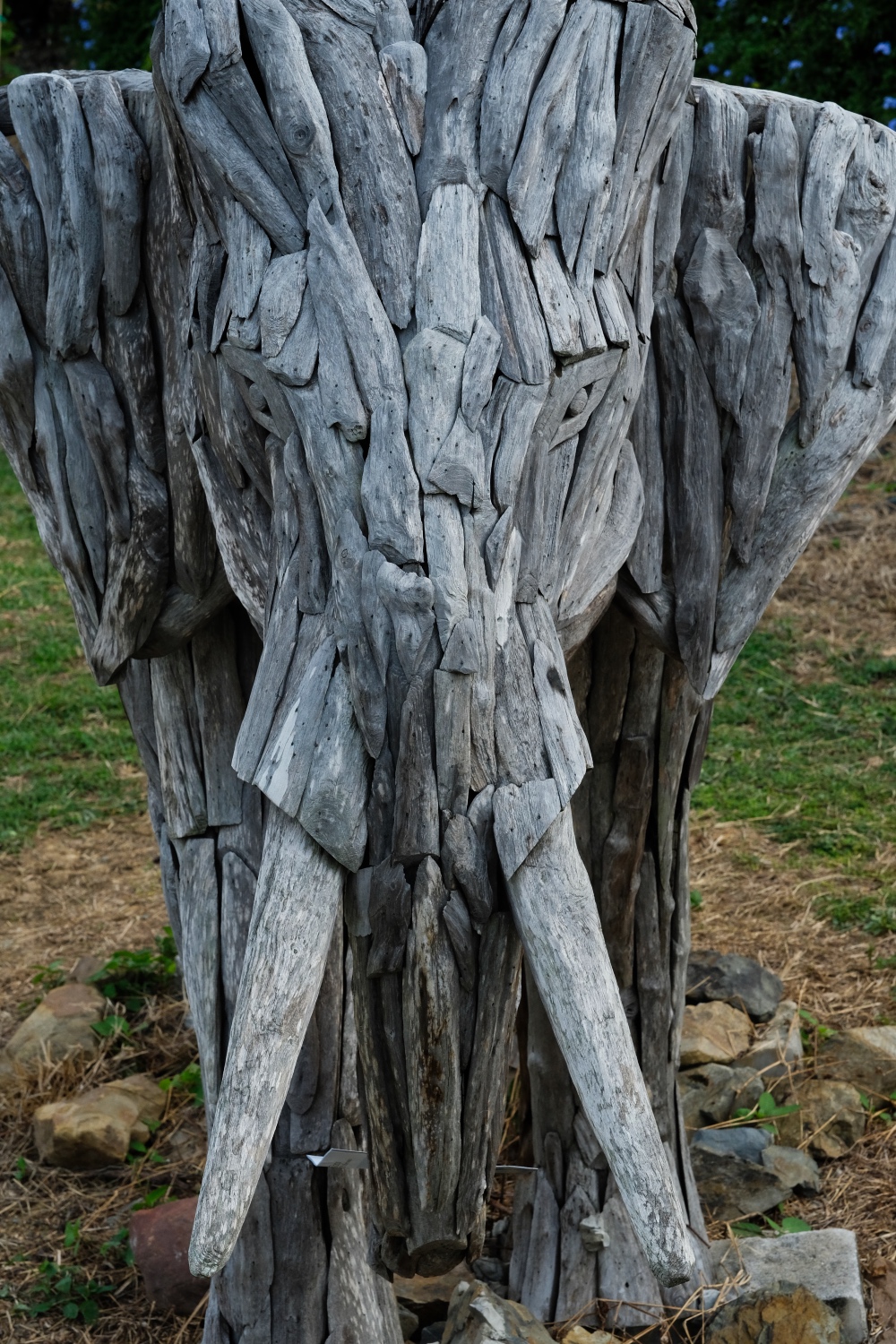 The have done a fine job of making the grounds around the vineyards interesting. A nice place to spend an afternoon dining and walking.
The have done a fine job of making the grounds around the vineyards interesting. A nice place to spend an afternoon dining and walking.
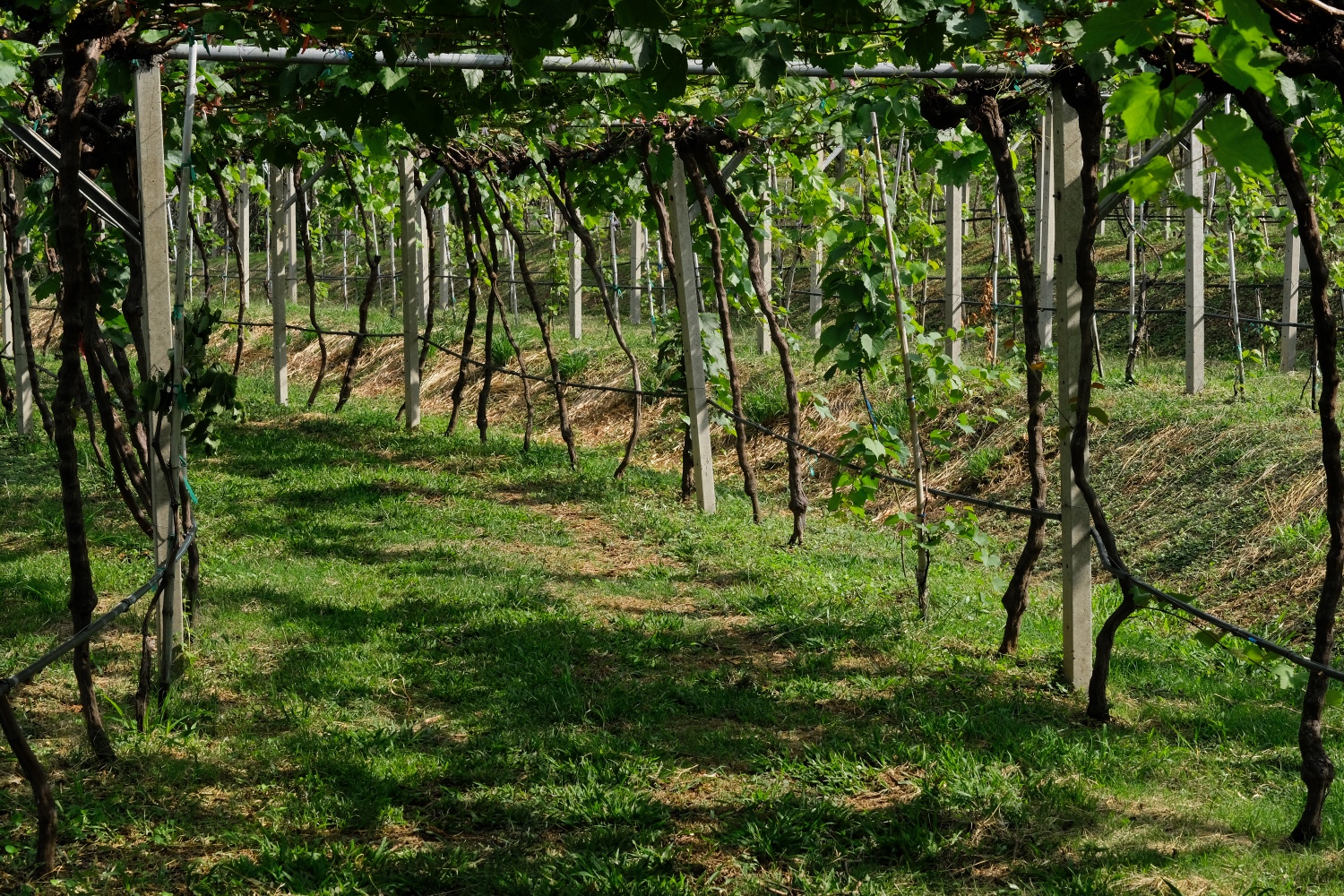 They were growing several grape varieties, these requiring hanging.
They were growing several grape varieties, these requiring hanging.
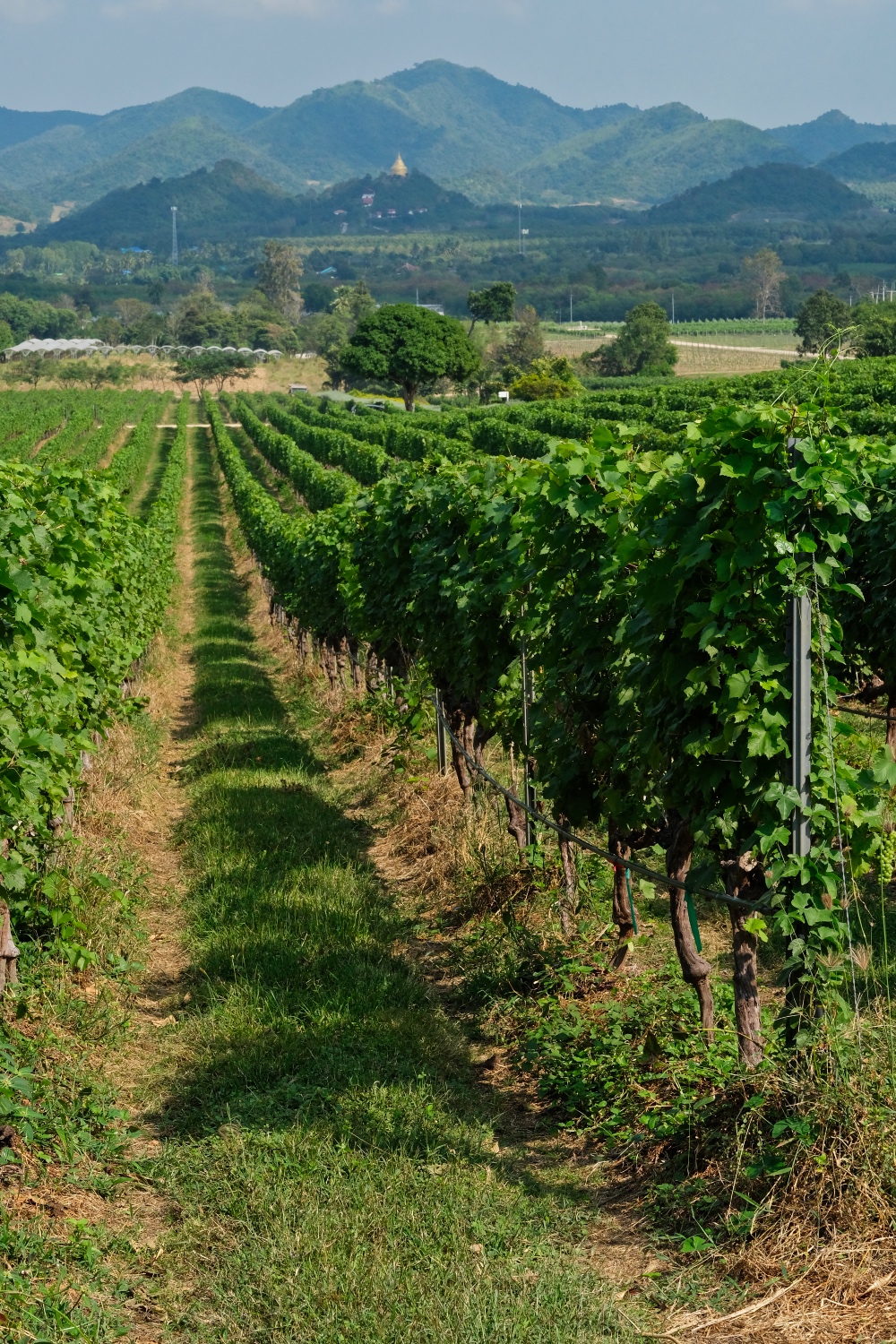 A pleasant valley scene.
A pleasant valley scene.
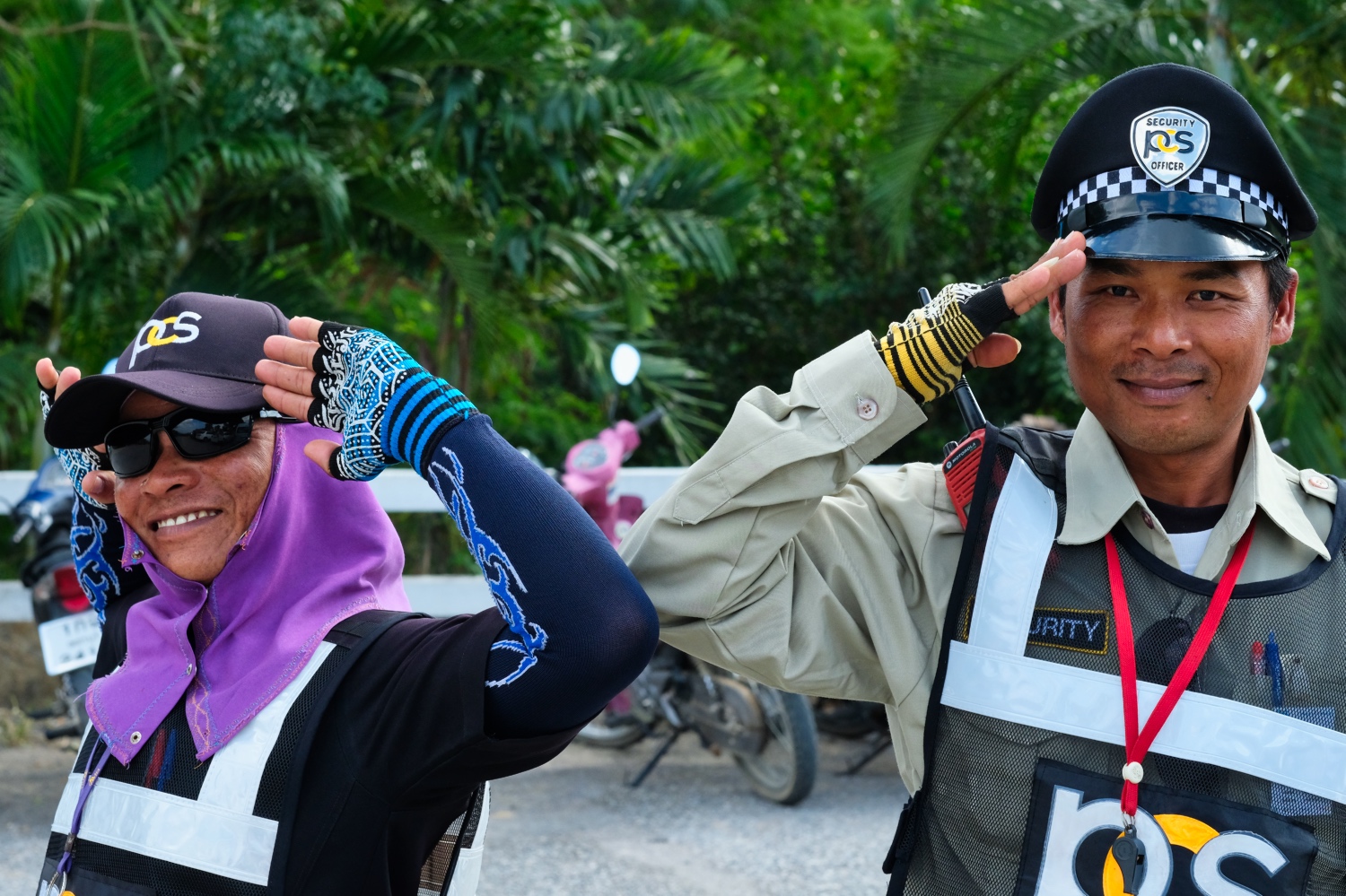 The parking lot security guards were a lot of fun . . . typical Thai friendliness.
The parking lot security guards were a lot of fun . . . typical Thai friendliness.
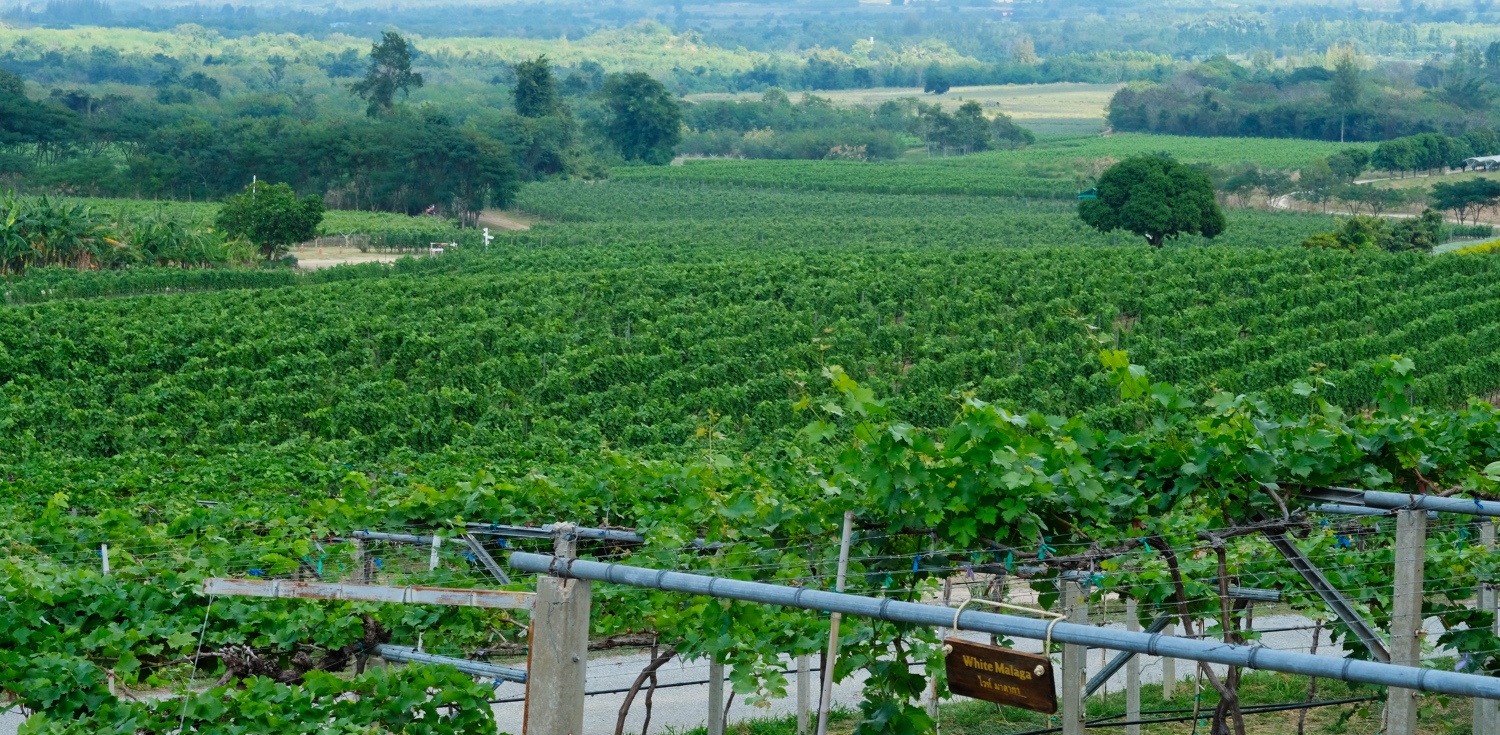 The vineyard looks healthy and productive. I didn't taste the wine, but my wife said it was 'good.'
The vineyard looks healthy and productive. I didn't taste the wine, but my wife said it was 'good.'
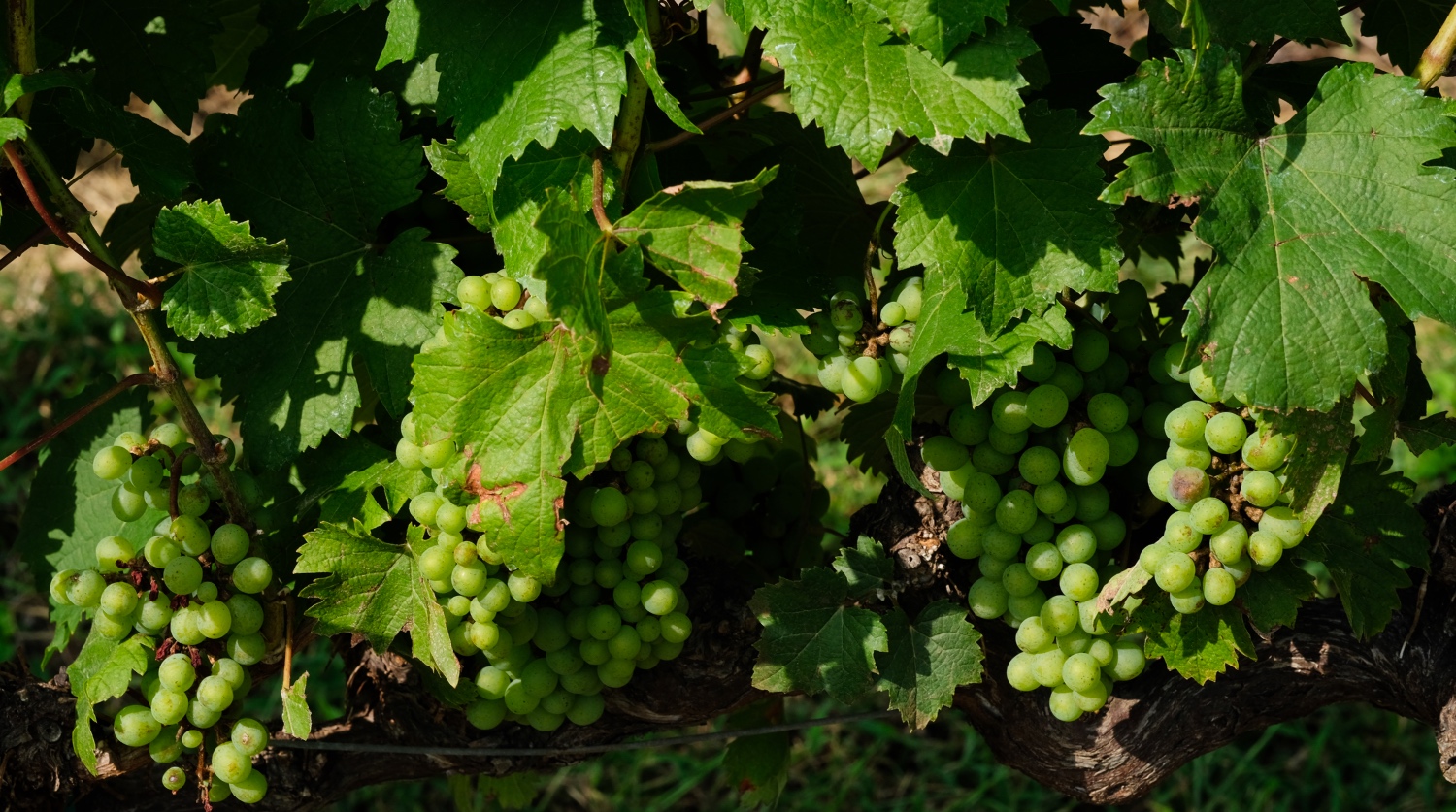 Beautiful grapes. Plump!
Beautiful grapes. Plump!
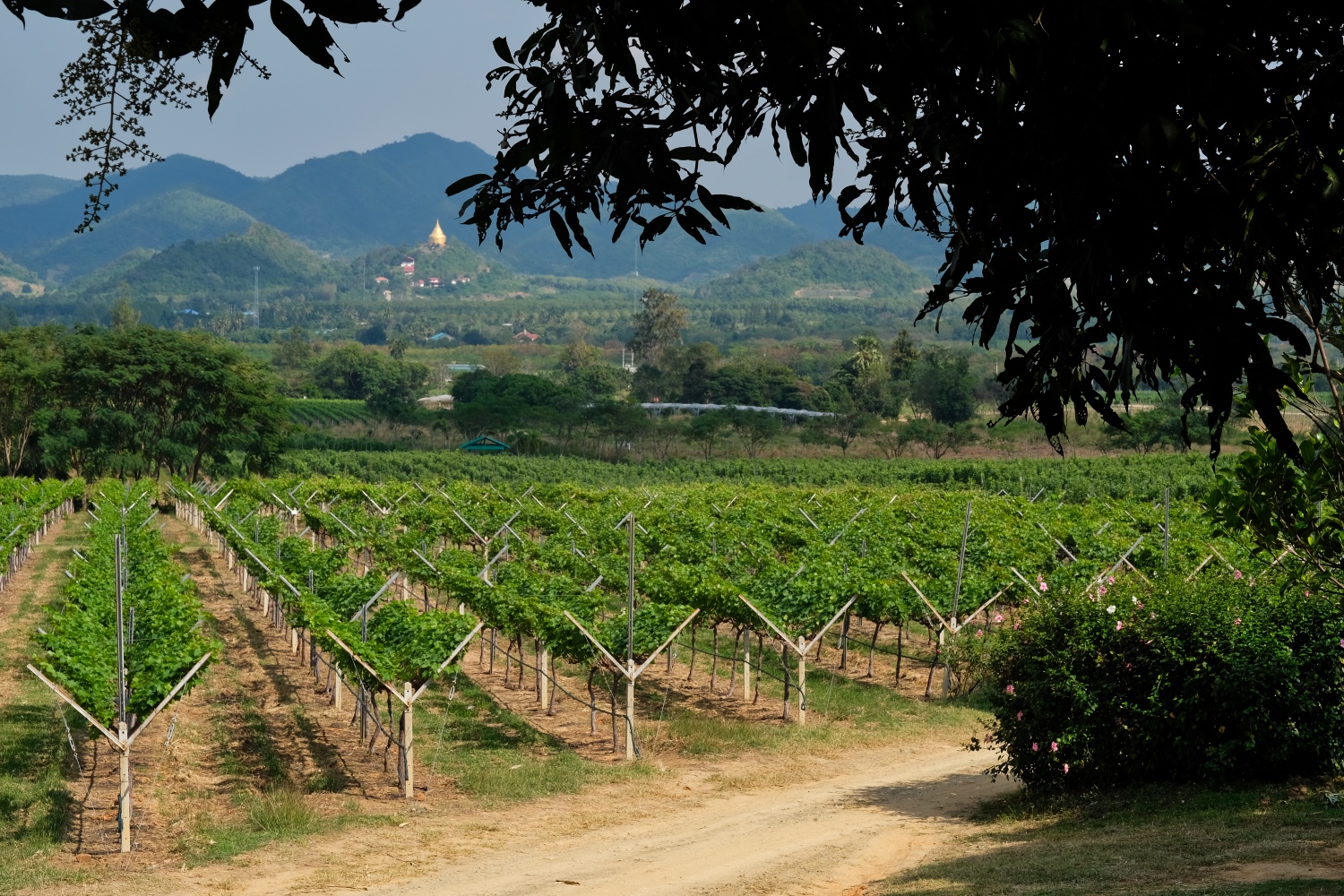 We greatly enjoyed our mid-day visit to the Monsoon Valley Vineyards. IN th distance, on a hilltop, is a golden chedi shining in the sunlight . . . . I think I will go over there and see what it is . . . .
We greatly enjoyed our mid-day visit to the Monsoon Valley Vineyards. IN th distance, on a hilltop, is a golden chedi shining in the sunlight . . . . I think I will go over there and see what it is . . . .
GOLDEN HILLTOP CHEDI
I noticed this golden hilltop chedi from the vineyard across the valley and went looking for the access road . . . found it.
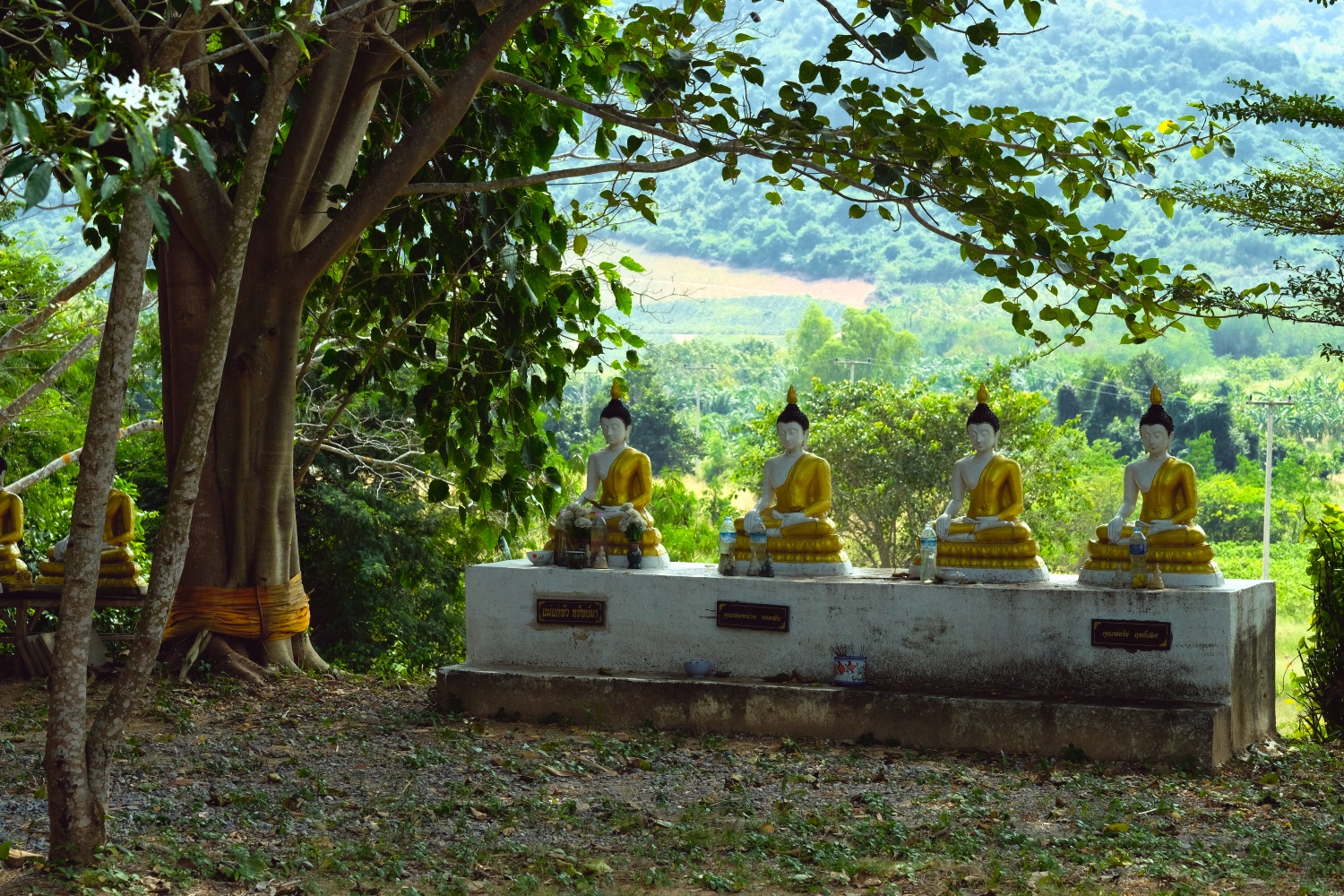 The dirt road up to the Wat below the golden chedi was lined with Buddha images.
The dirt road up to the Wat below the golden chedi was lined with Buddha images.
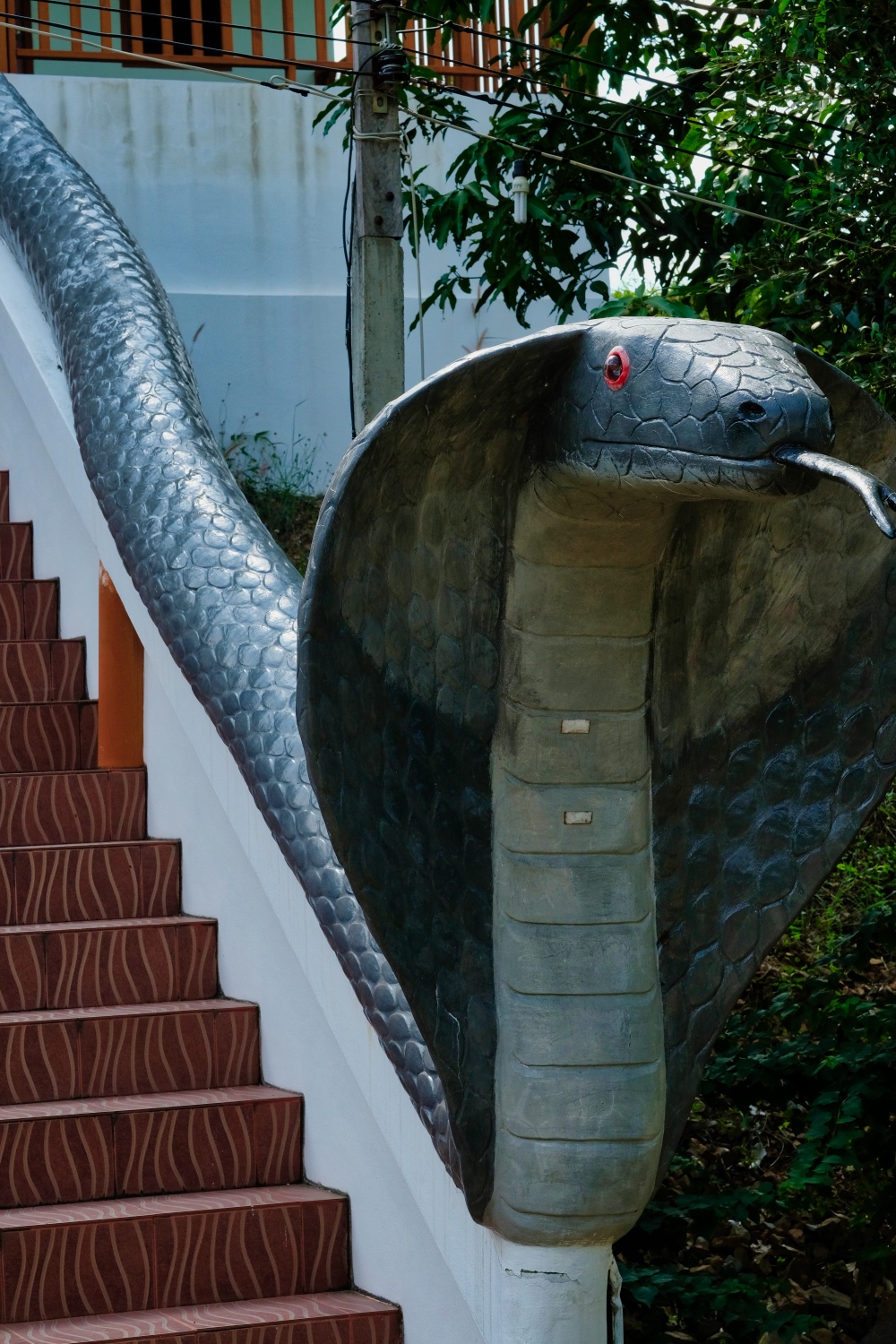 There were several small structures housing large Buddha images along a hillside path. Big cobra steps!
There were several small structures housing large Buddha images along a hillside path. Big cobra steps!
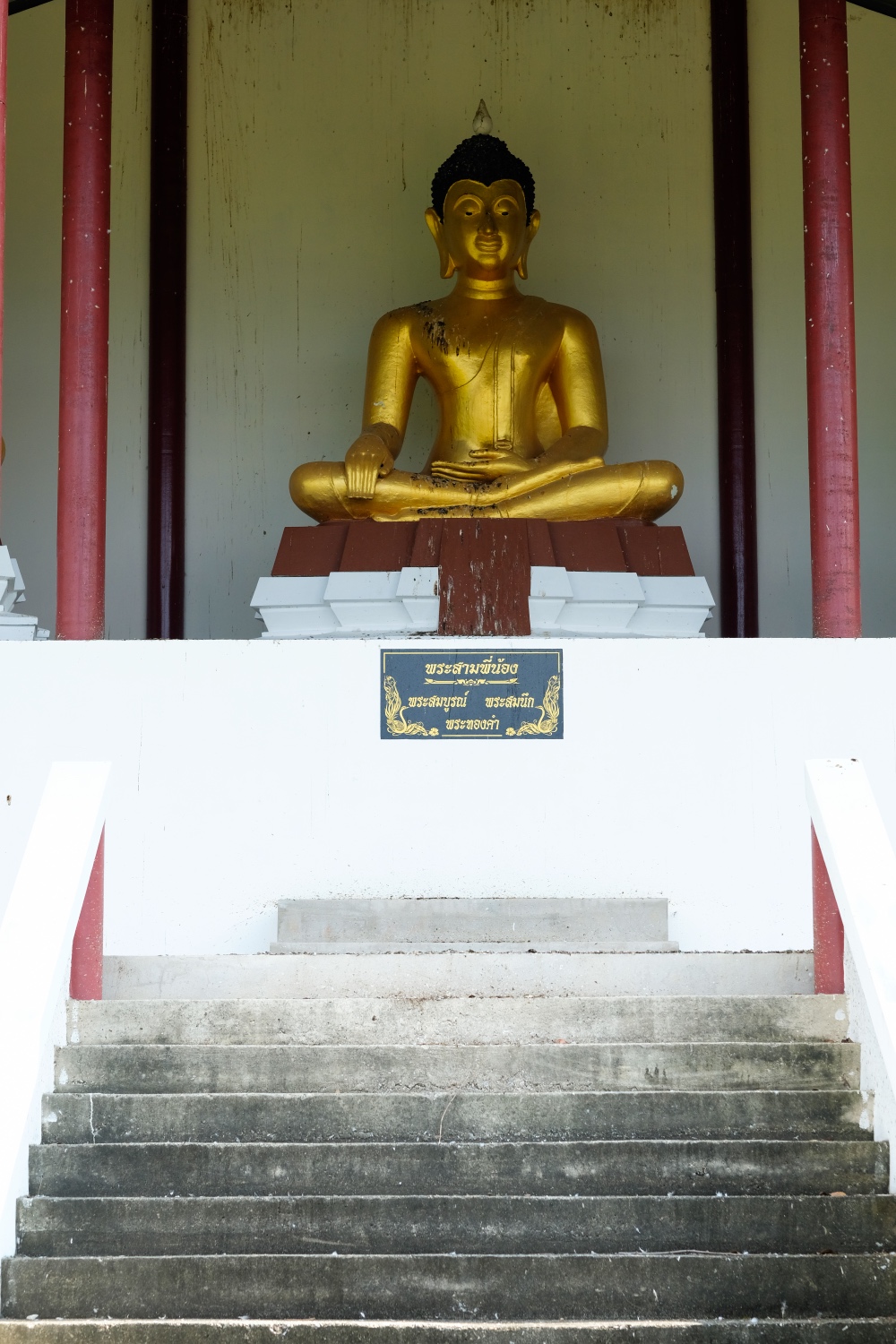 I liked this Wat very much. It was modest, isolated, and had grand views of the Hua Hin hills.
I liked this Wat very much. It was modest, isolated, and had grand views of the Hua Hin hills.
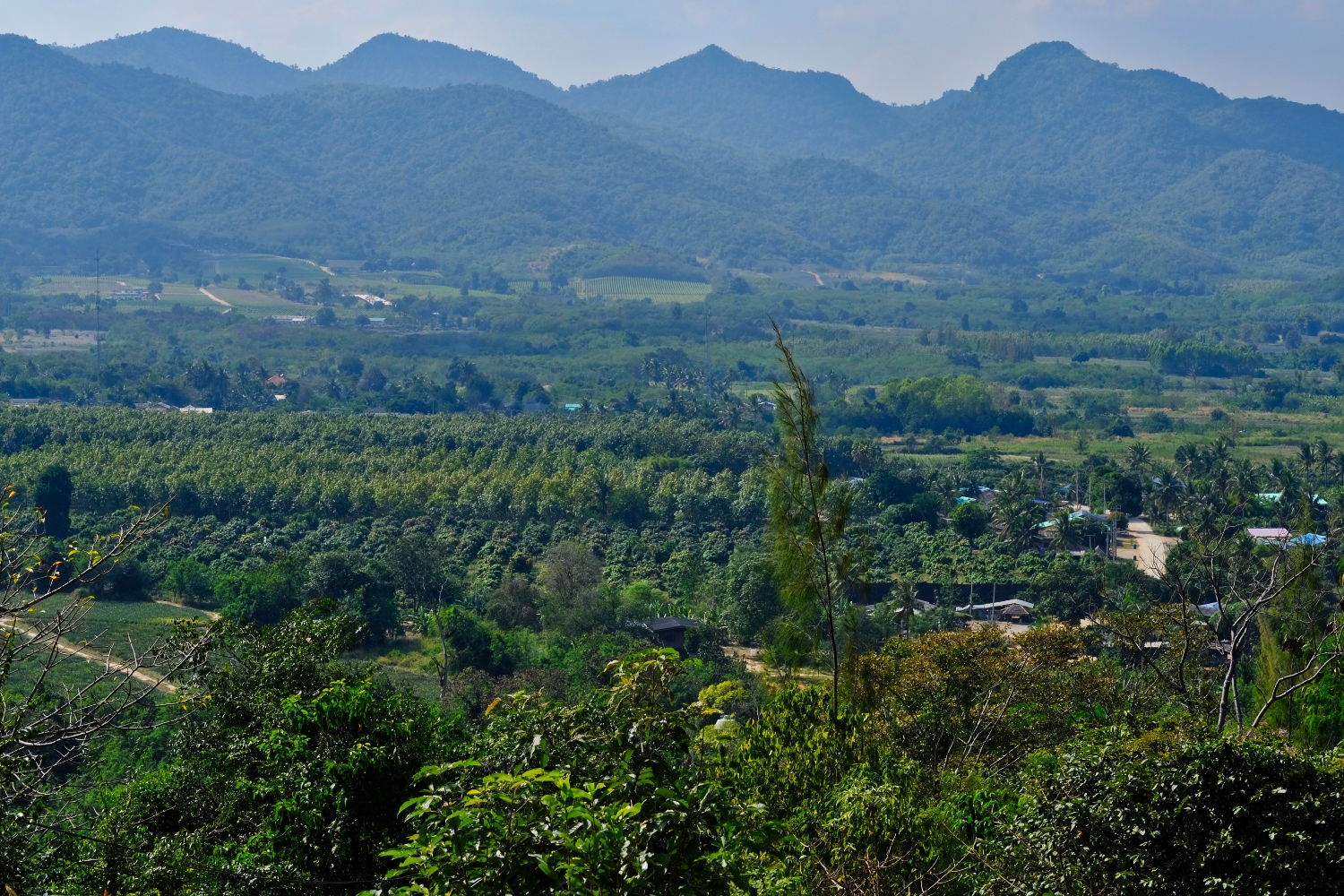 The valley below: vineyards, orchards, field crops.
The valley below: vineyards, orchards, field crops.
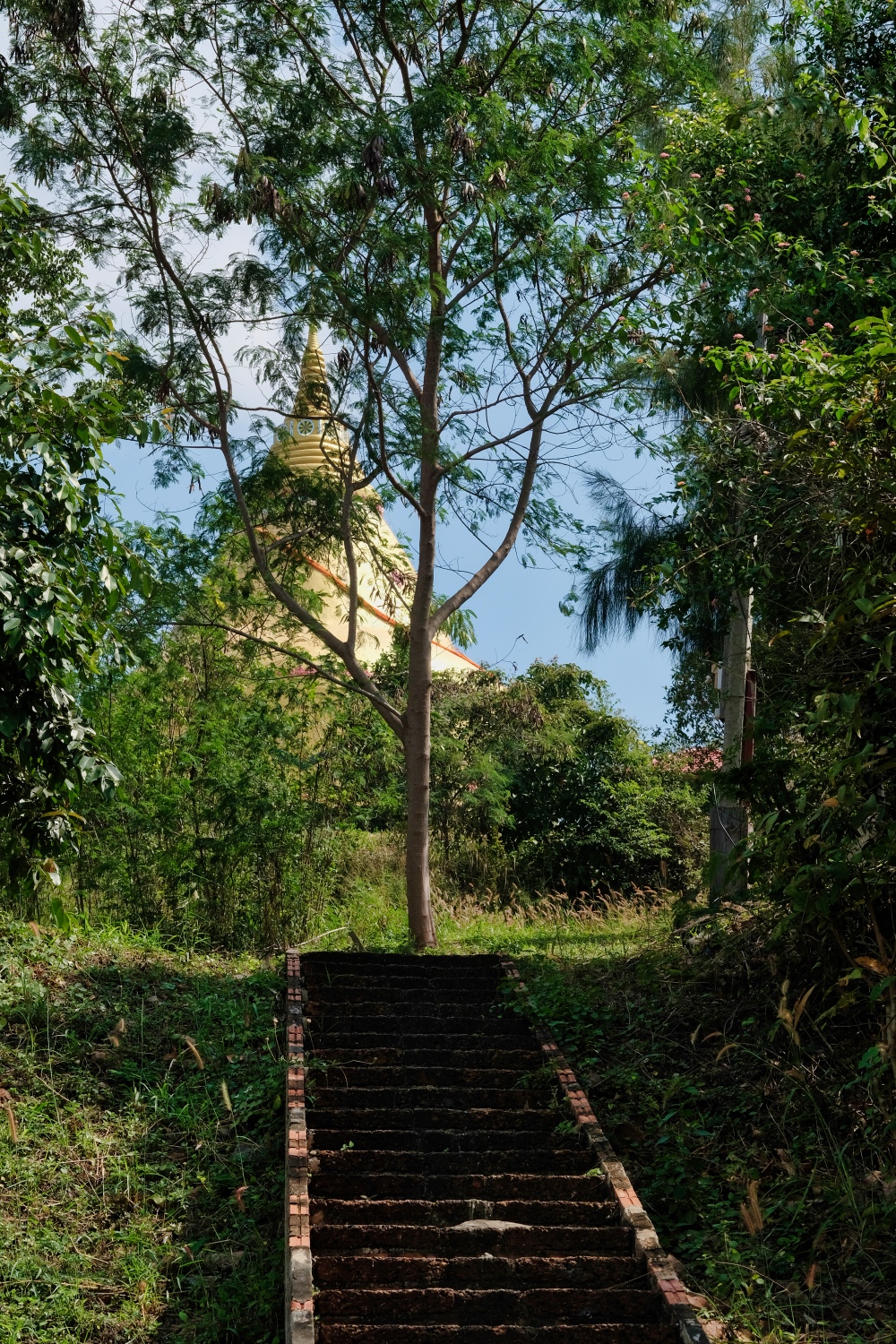 I walked the many steps up to the golden chedi.
I walked the many steps up to the golden chedi.
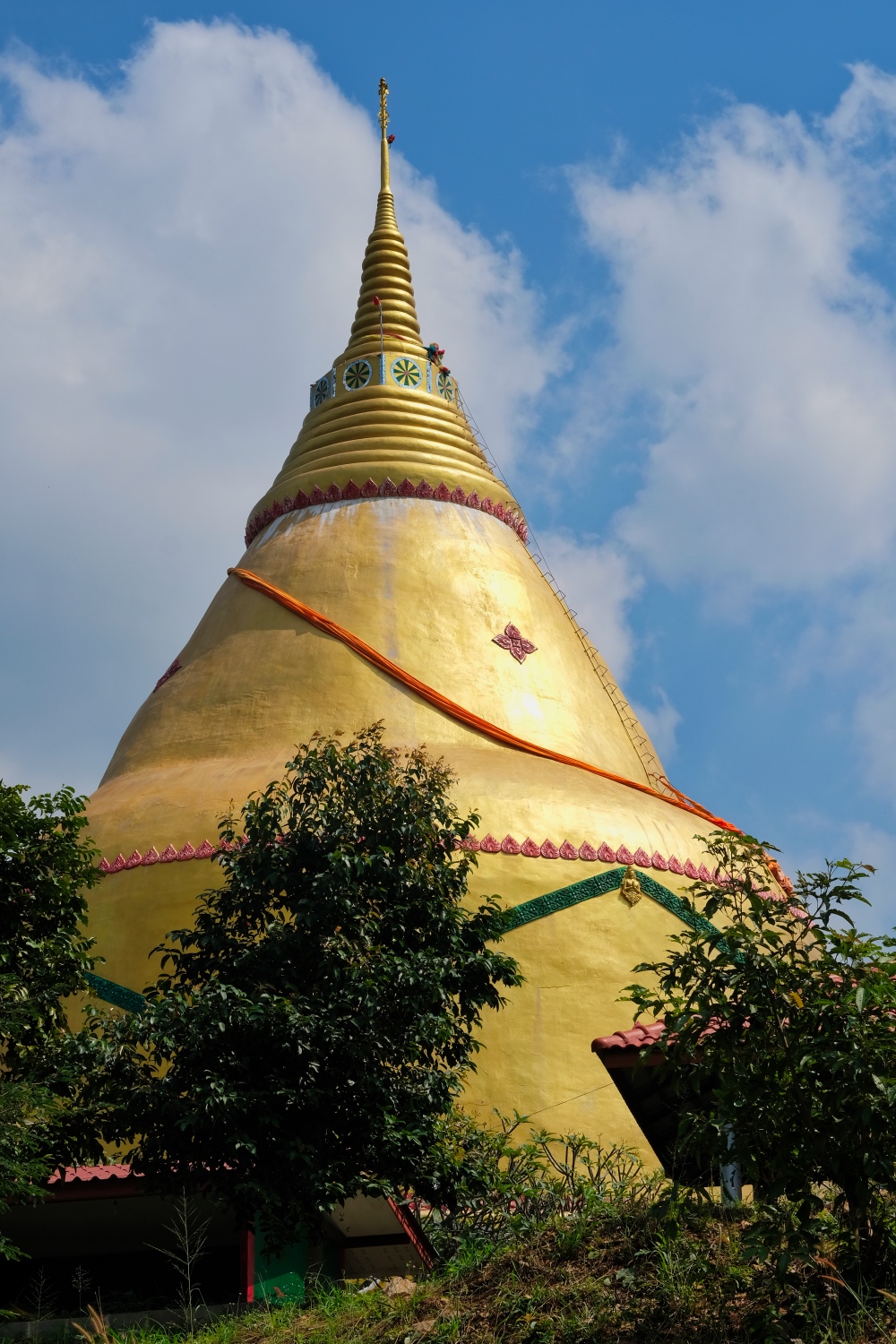 So beautiful from below, but I had no idea what awaited me when I arrived on the top . . .
So beautiful from below, but I had no idea what awaited me when I arrived on the top . . .
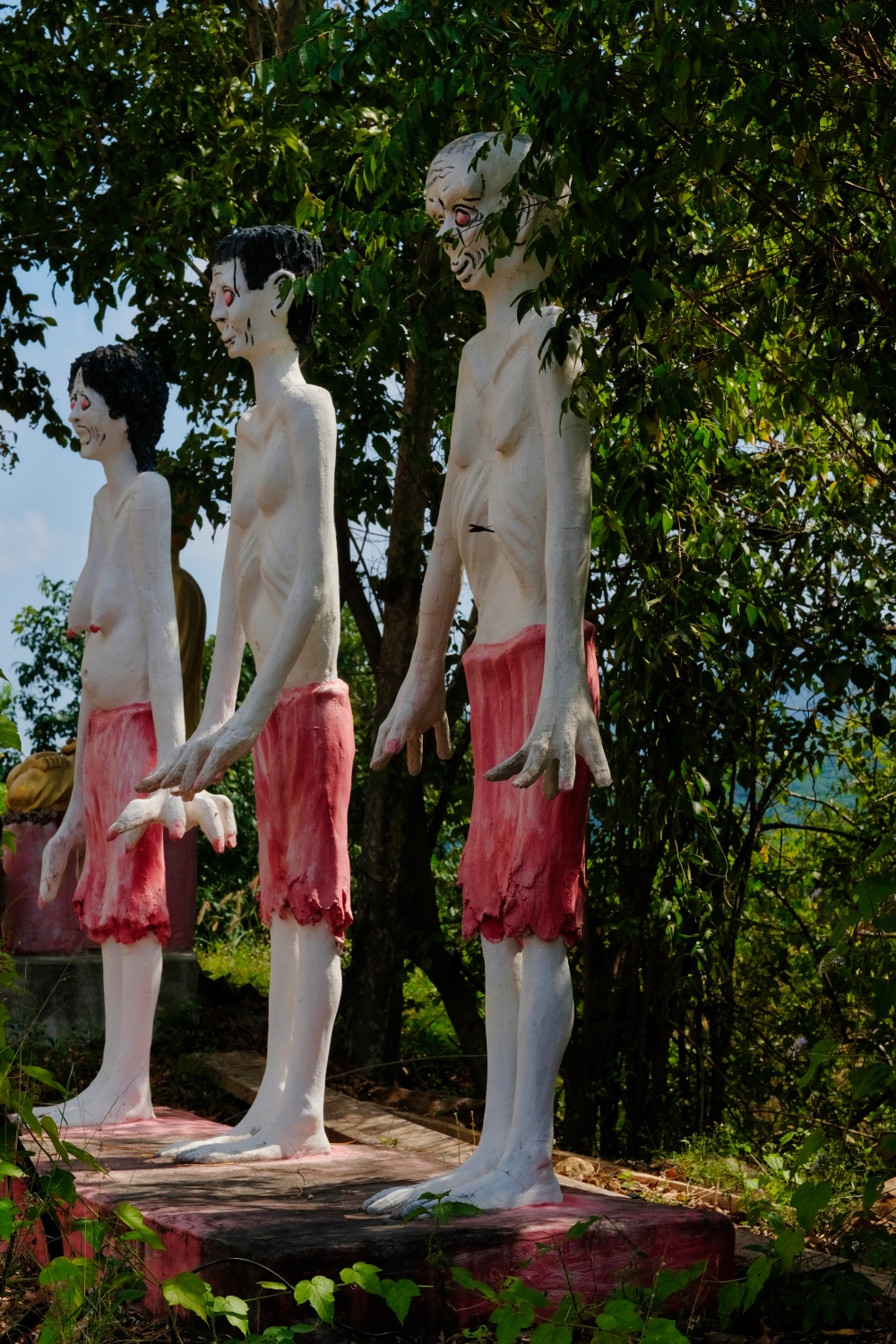 Leave your monkeymind behind, Ye who enter! The real suffering doesn't show.
Leave your monkeymind behind, Ye who enter! The real suffering doesn't show.
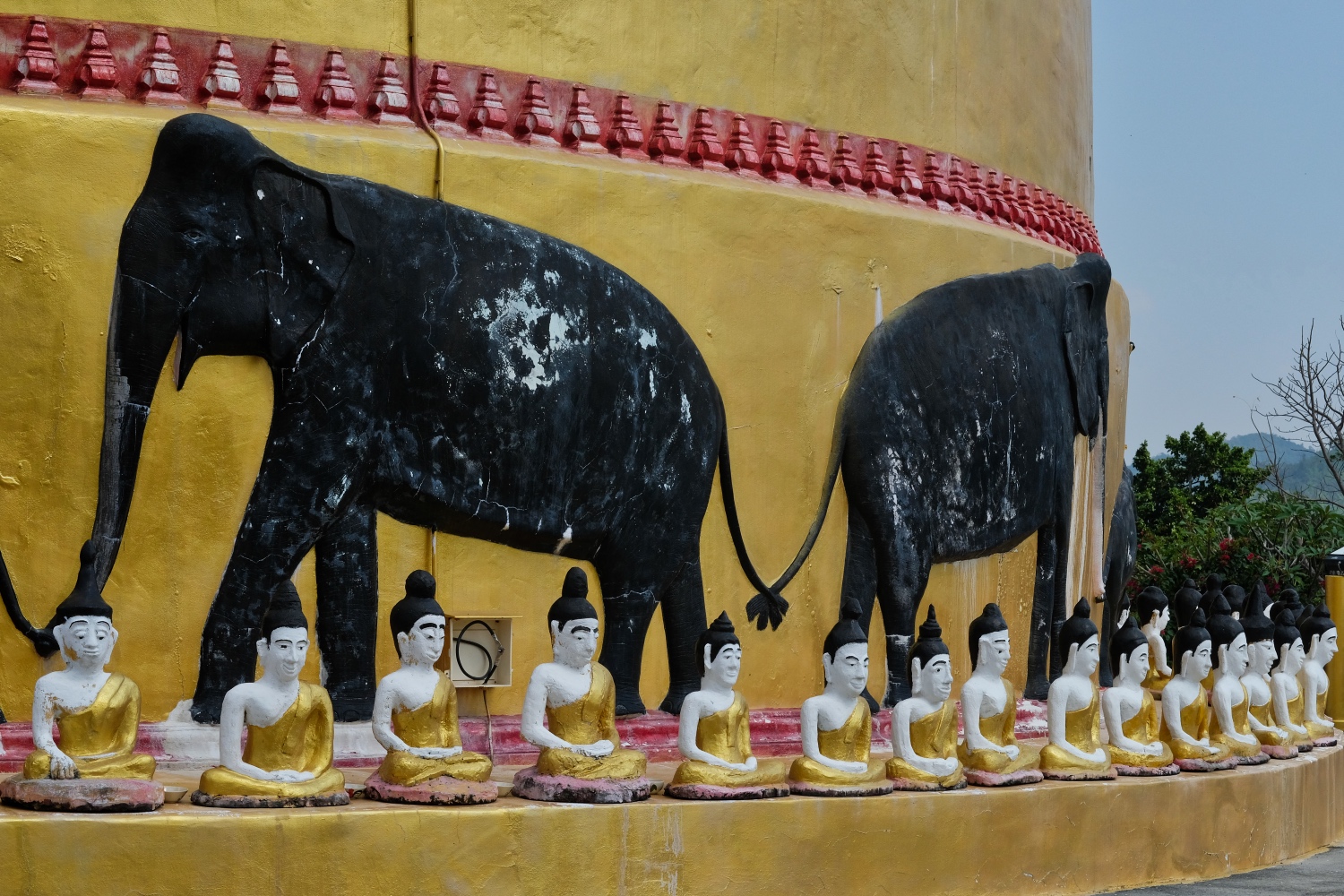 The golden chedi itself was ringed with highly individual Buddha images and elephant bas reliefs.
The golden chedi itself was ringed with highly individual Buddha images and elephant bas reliefs.
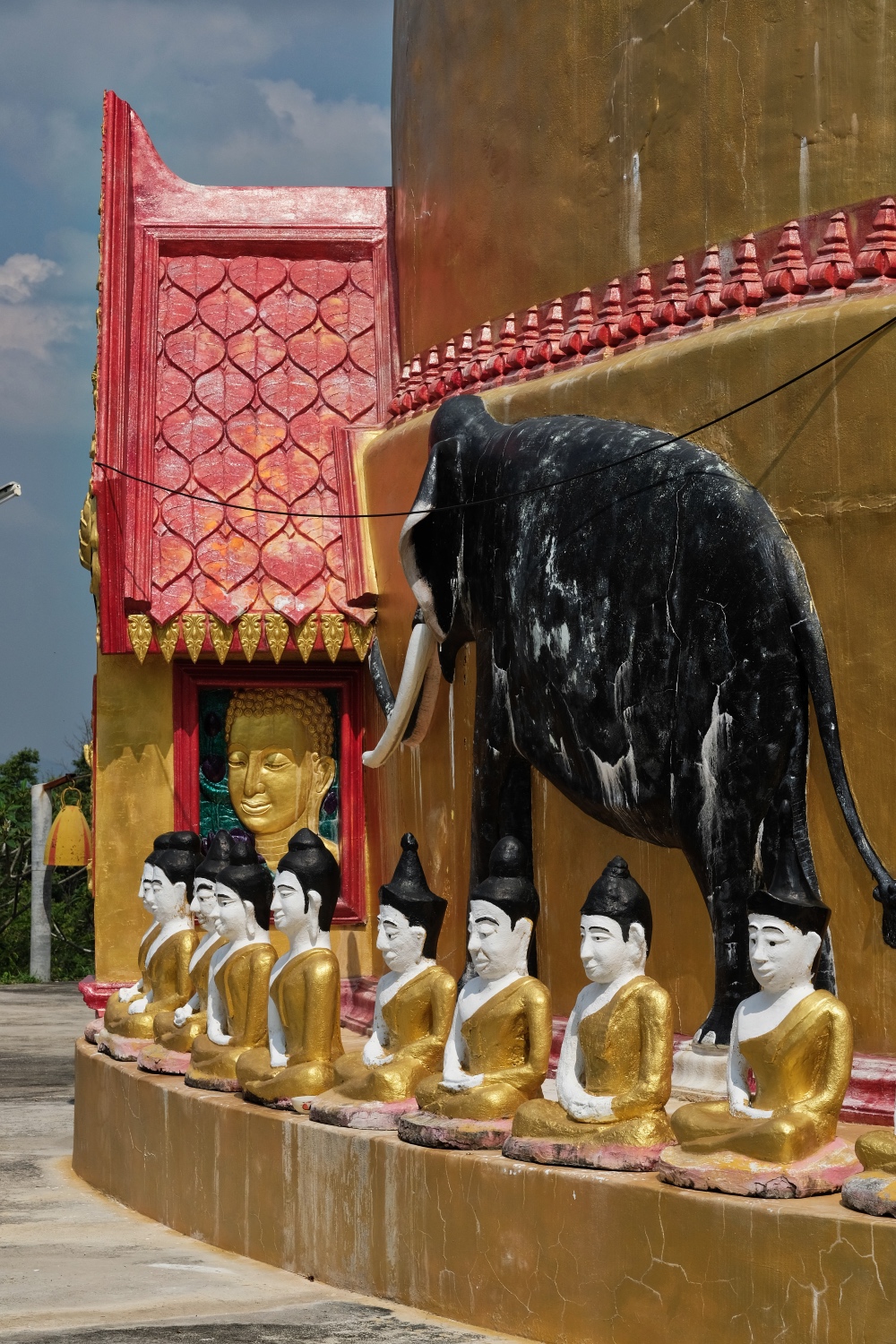 Each of the Buddha images seemed to have been made by a different person/artisan, so individual were they.
Each of the Buddha images seemed to have been made by a different person/artisan, so individual were they.
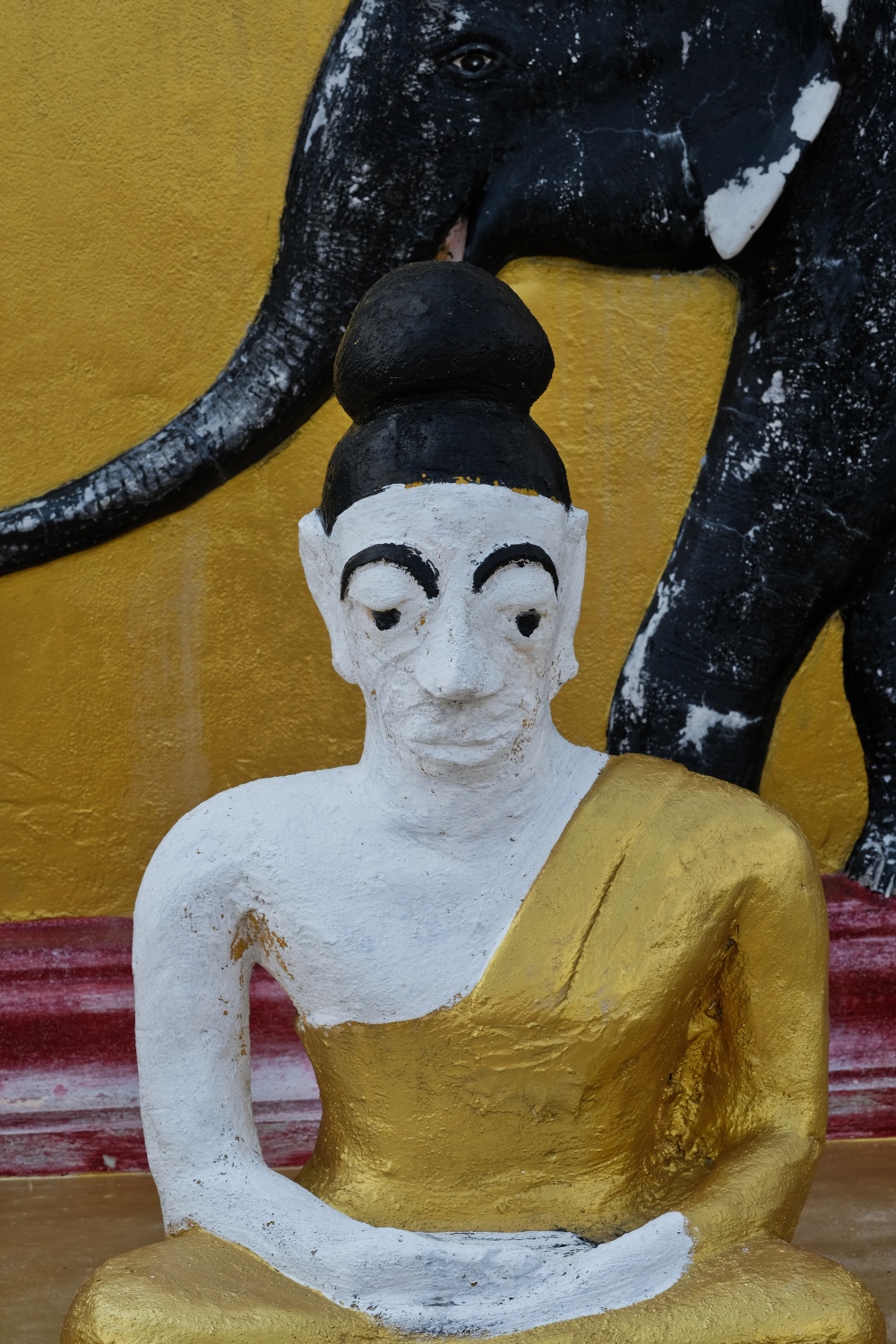 This particular Buddha image struck an amazing resemblance to a cartoon character from The Simpsons.
This particular Buddha image struck an amazing resemblance to a cartoon character from The Simpsons.
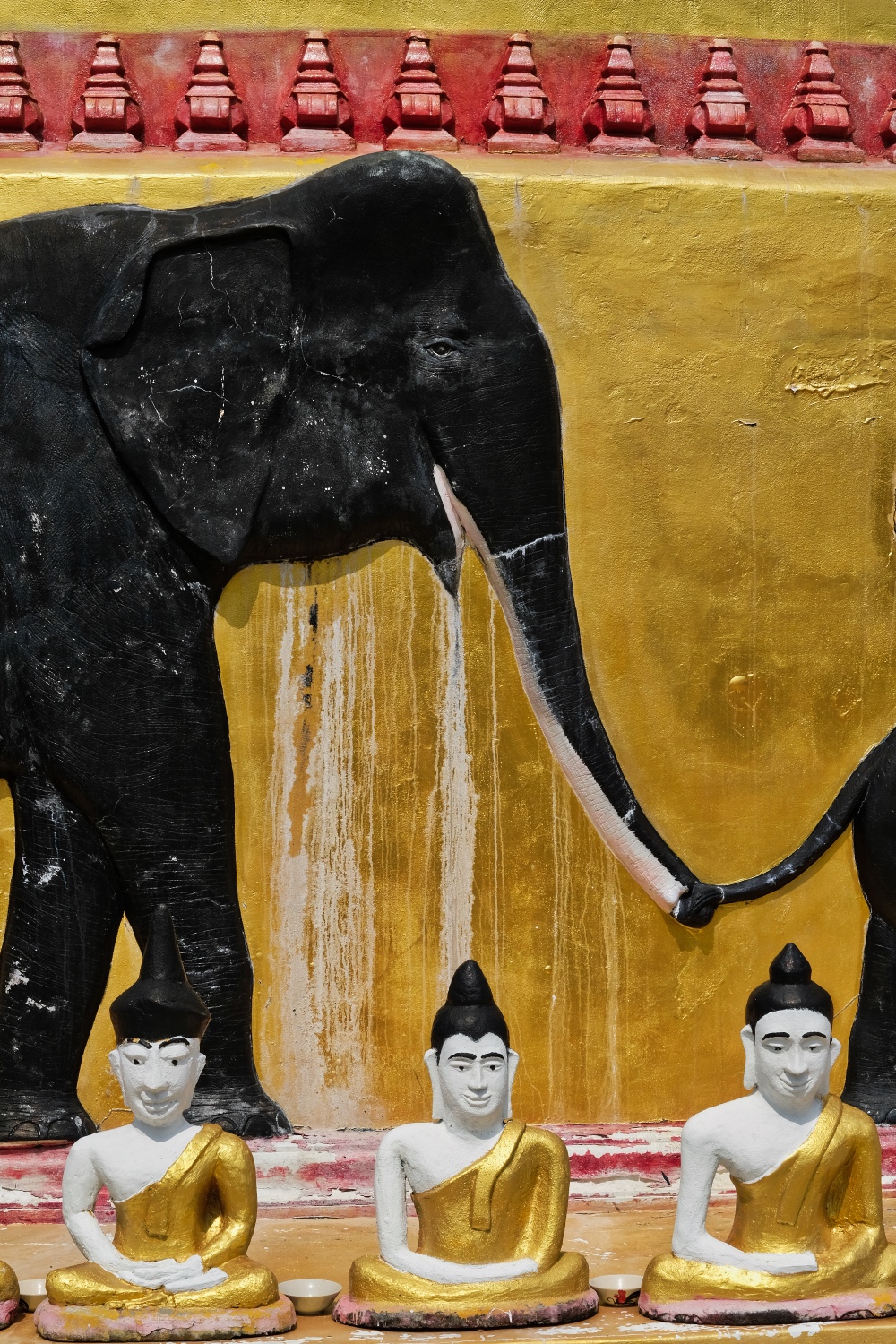 Magnificent 'naive art.'
Magnificent 'naive art.'
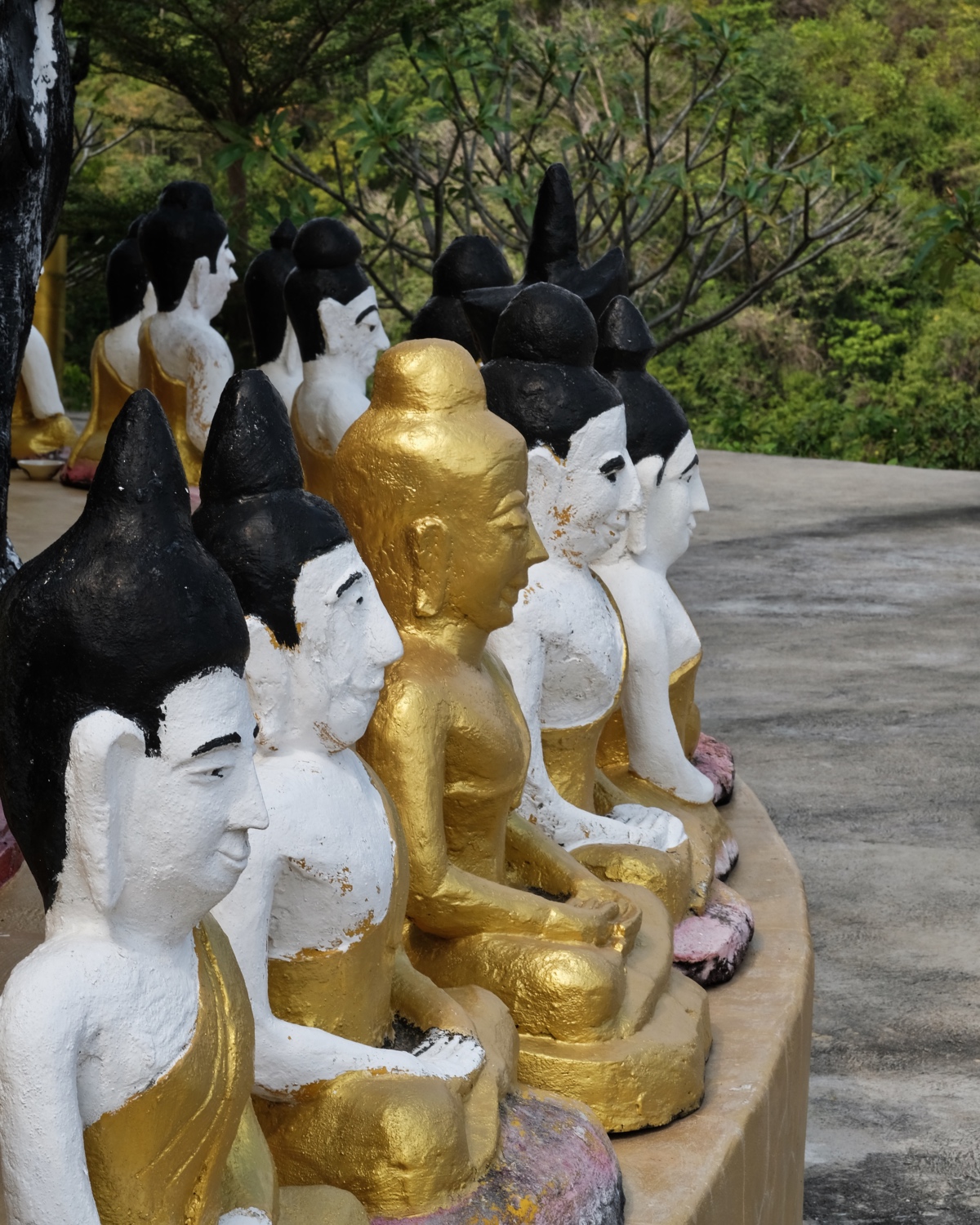 I wondered if a group of monks might have made these . . . or the financial donors.
I wondered if a group of monks might have made these . . . or the financial donors.
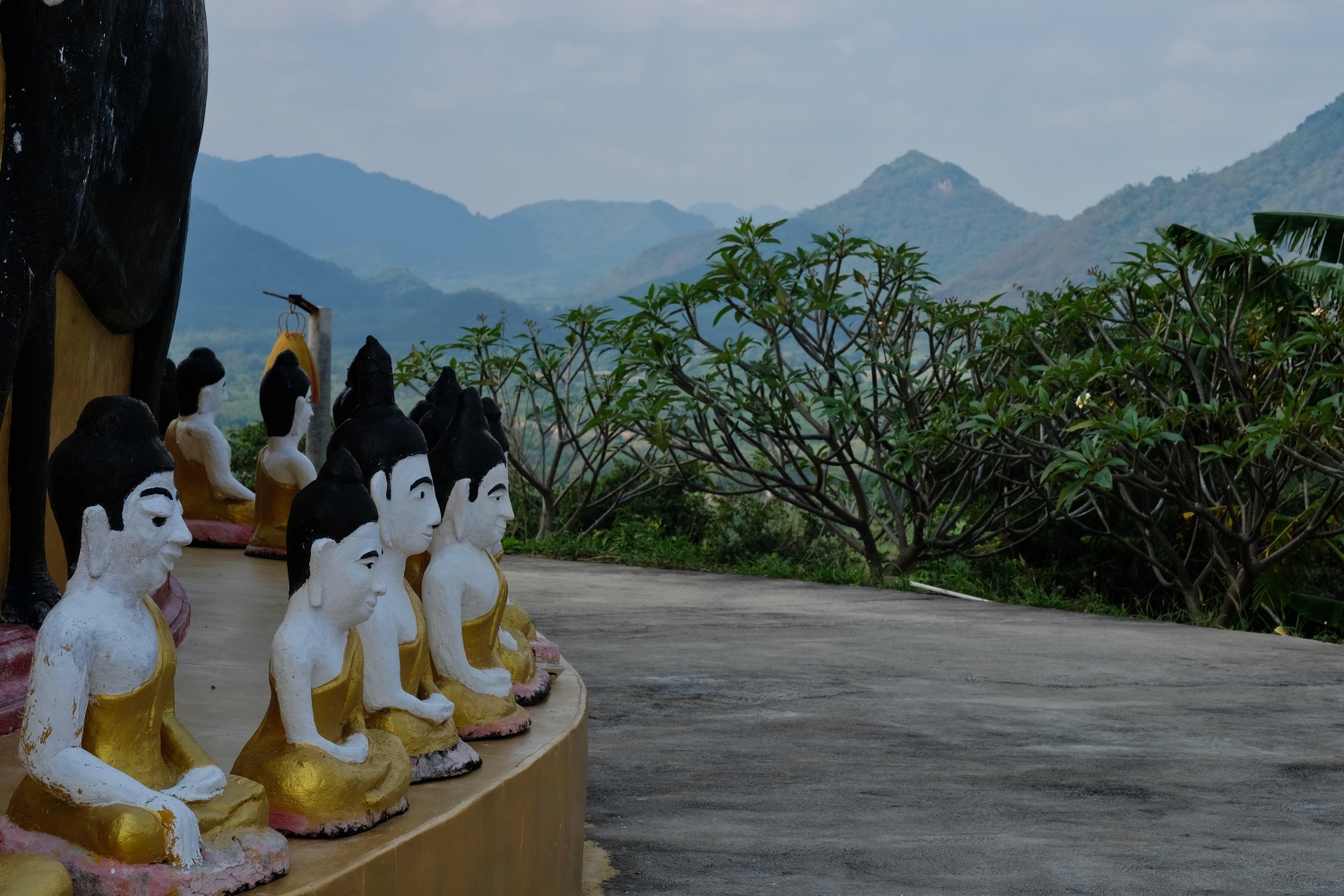 Such a serene place.
Such a serene place.
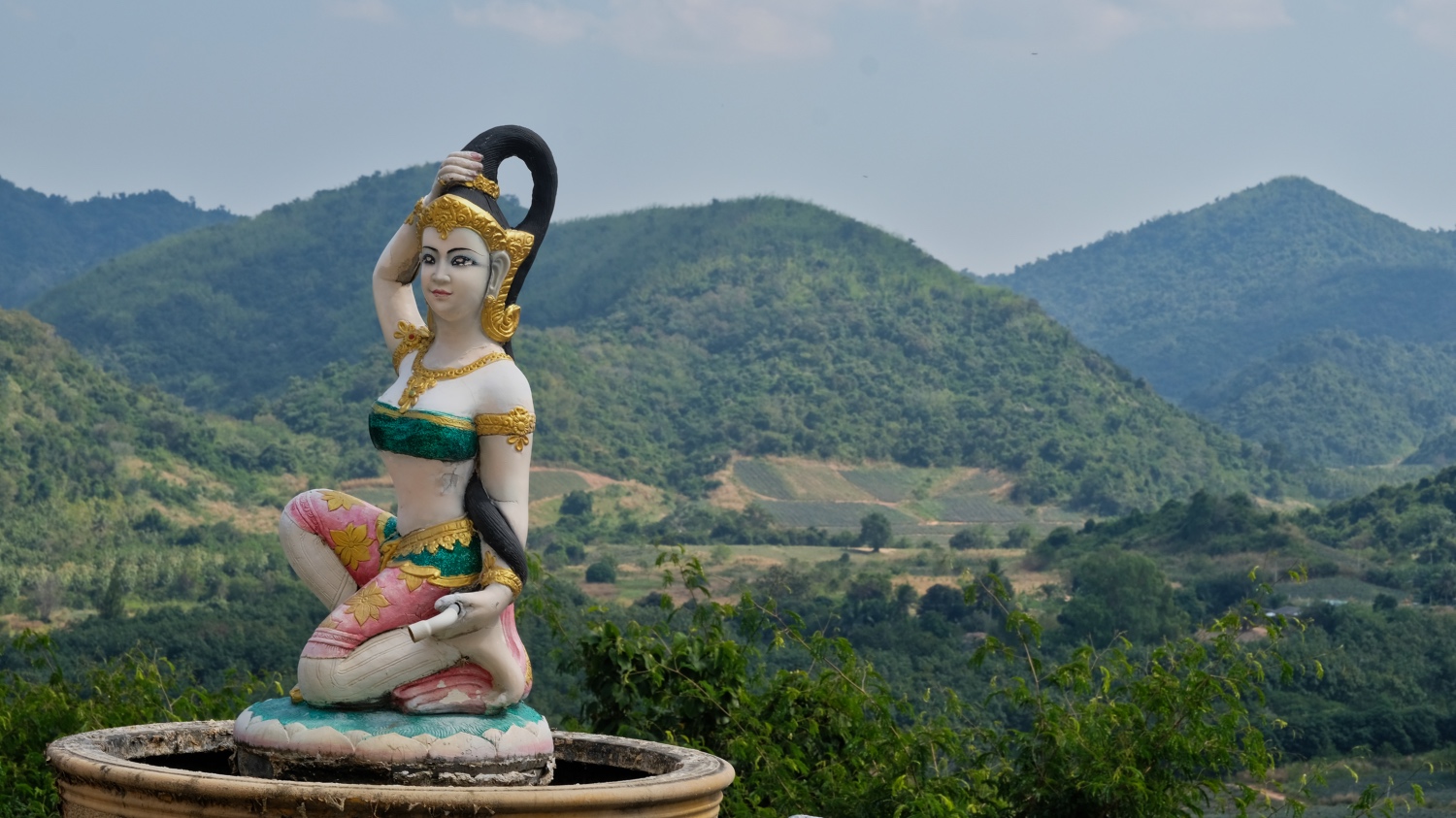 I walked around the golden chedi several times, each time noticing more and more . . .
I walked around the golden chedi several times, each time noticing more and more . . .
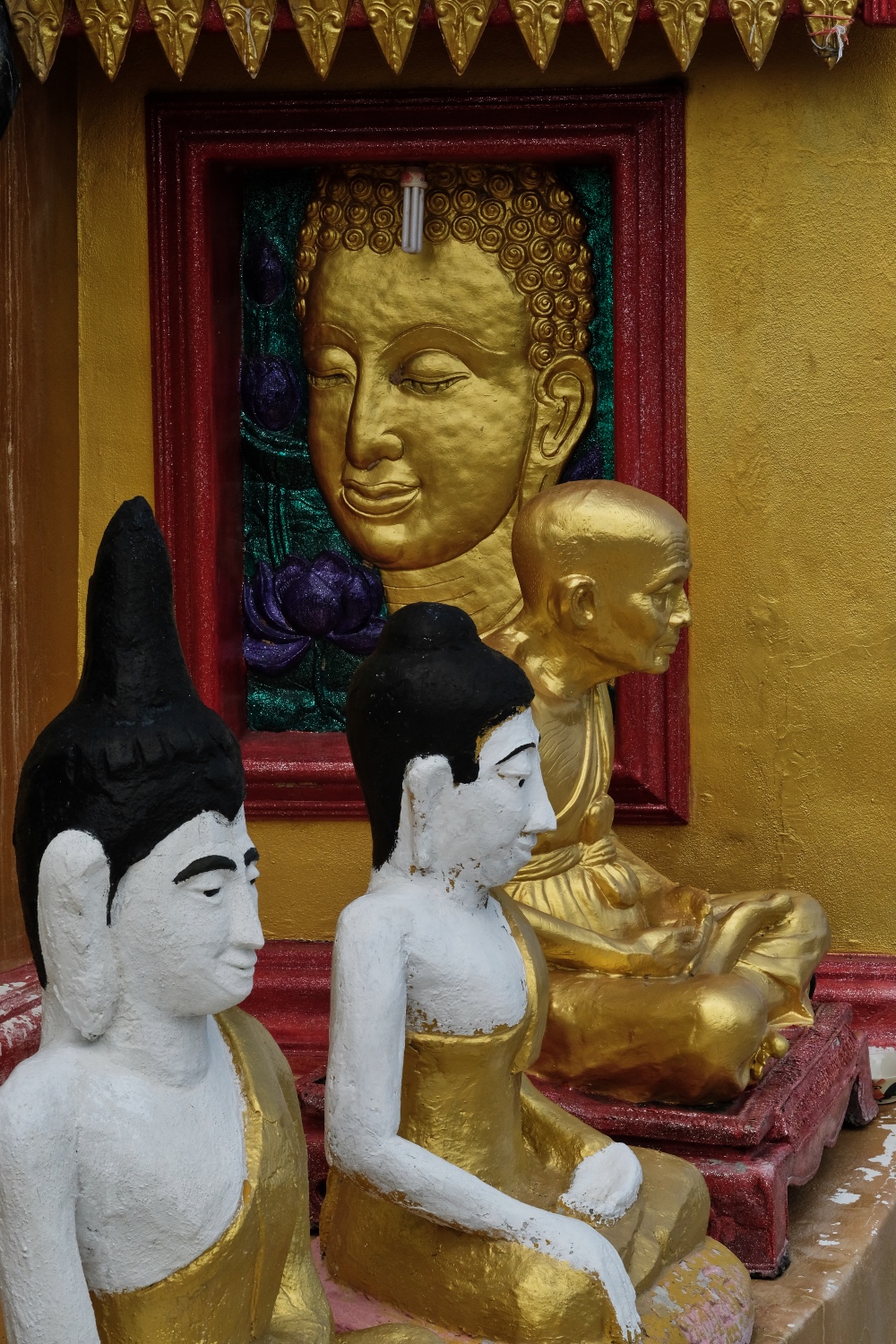 Revered monks astride the chedi entrance.
Revered monks astride the chedi entrance.
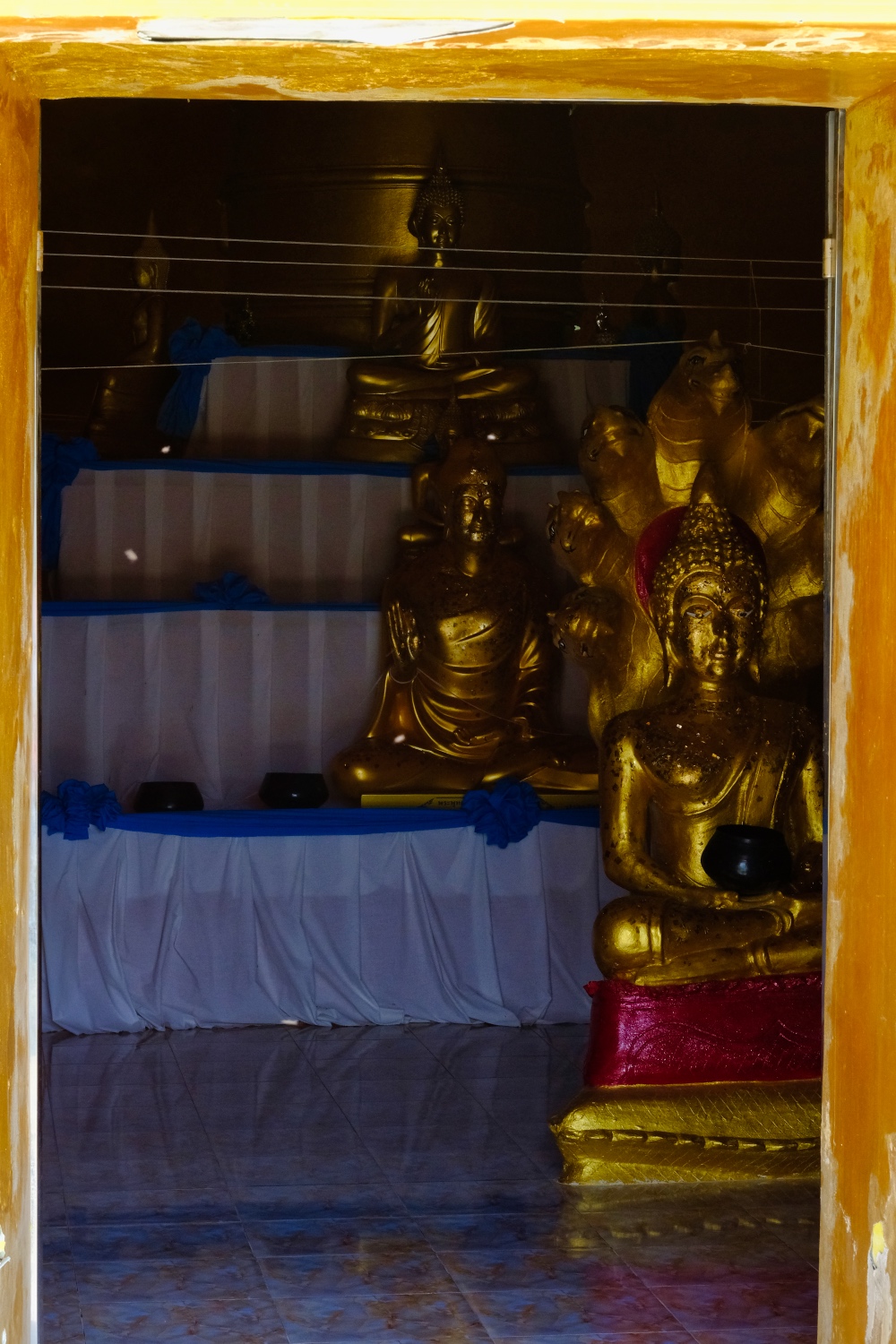 It wasn't until my third time around the golden chedi that I realized there was a chamber inside. Most chedis I have visited do not have access to the interior. Let's see what's inside . . .
It wasn't until my third time around the golden chedi that I realized there was a chamber inside. Most chedis I have visited do not have access to the interior. Let's see what's inside . . .
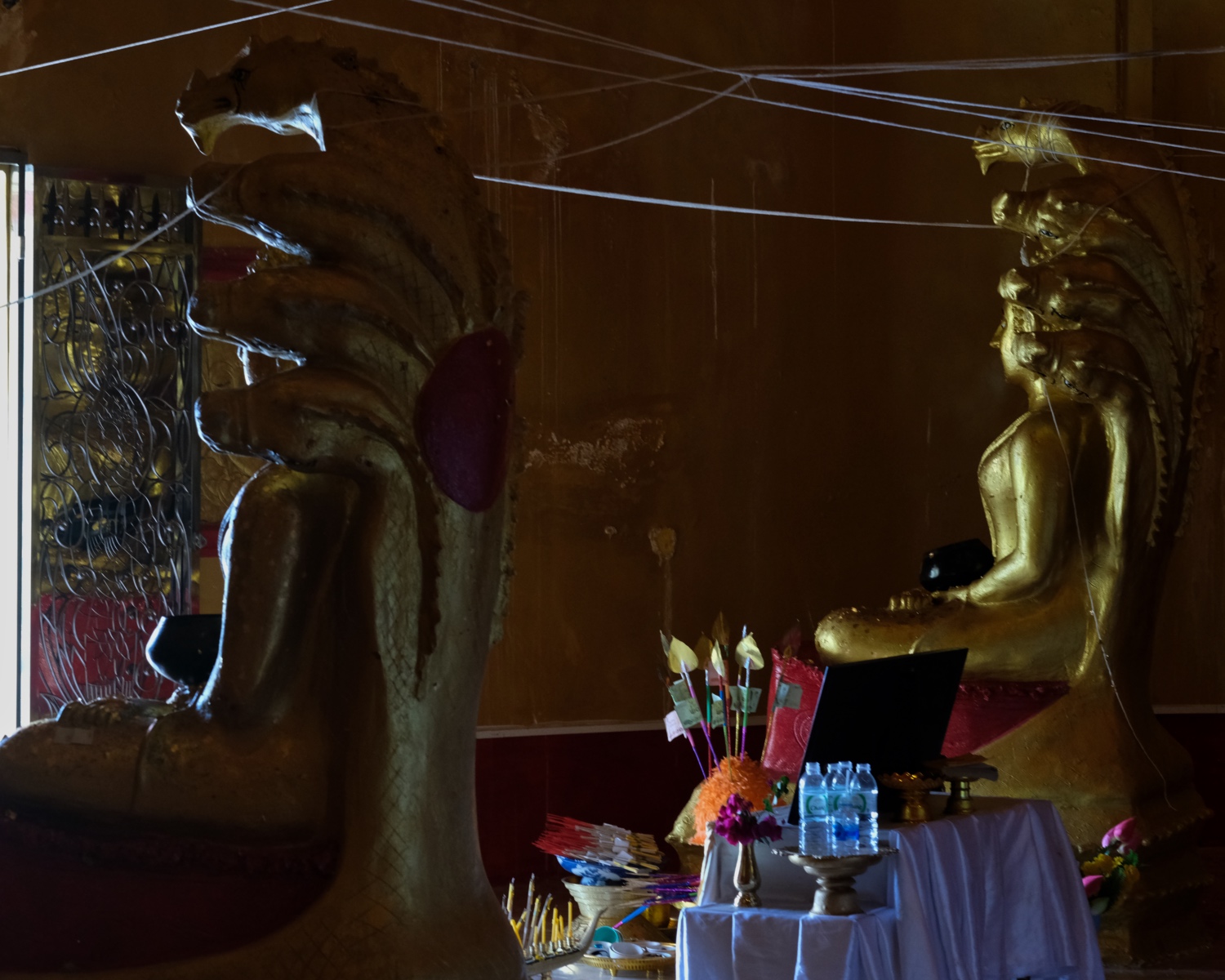 What I found inside was astonishing!
What I found inside was astonishing!
 There was only very low indirect light inside. I was glad I had on a f1.2 lens.
There was only very low indirect light inside. I was glad I had on a f1.2 lens.
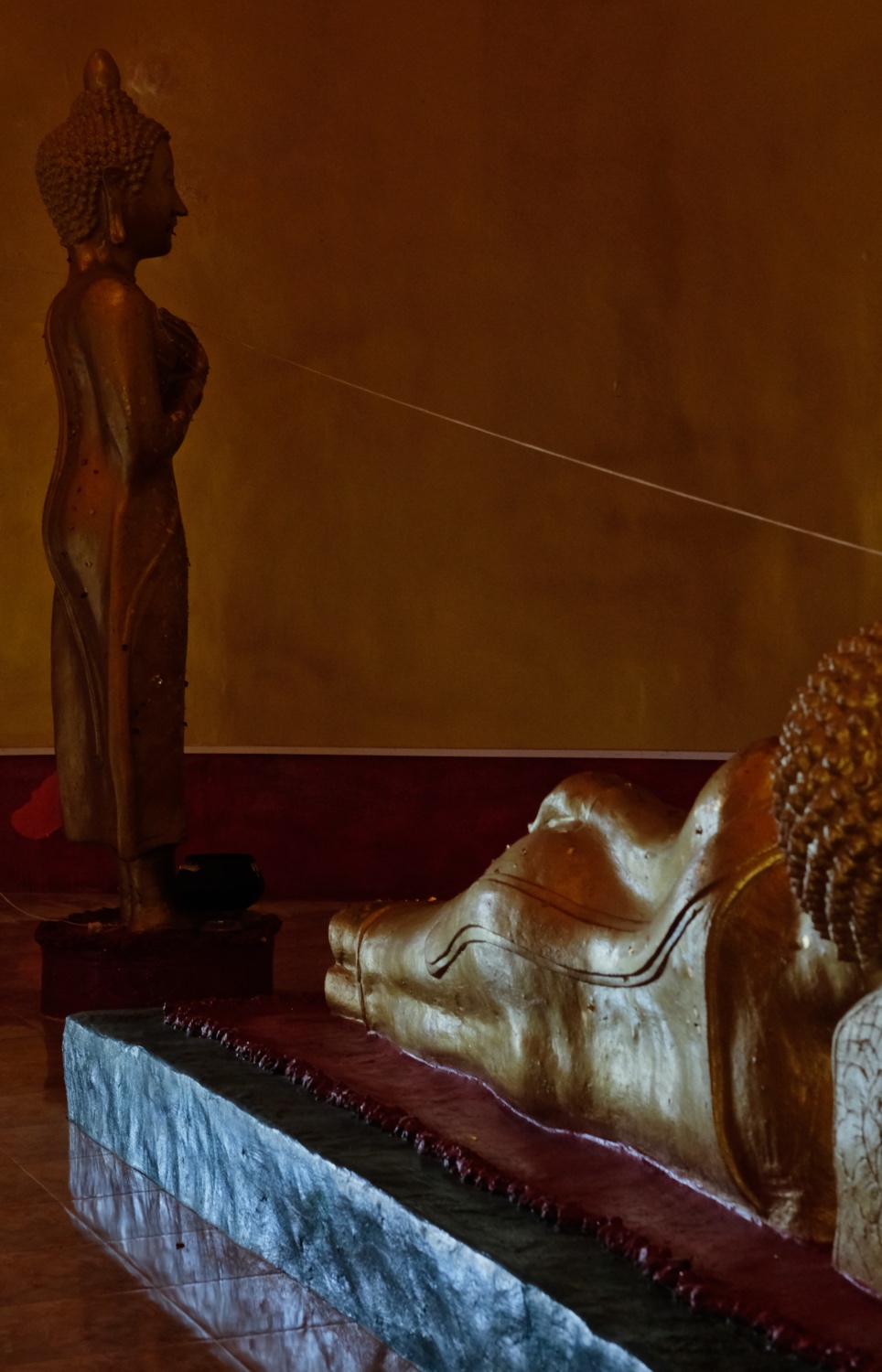 A marvel.
A marvel.
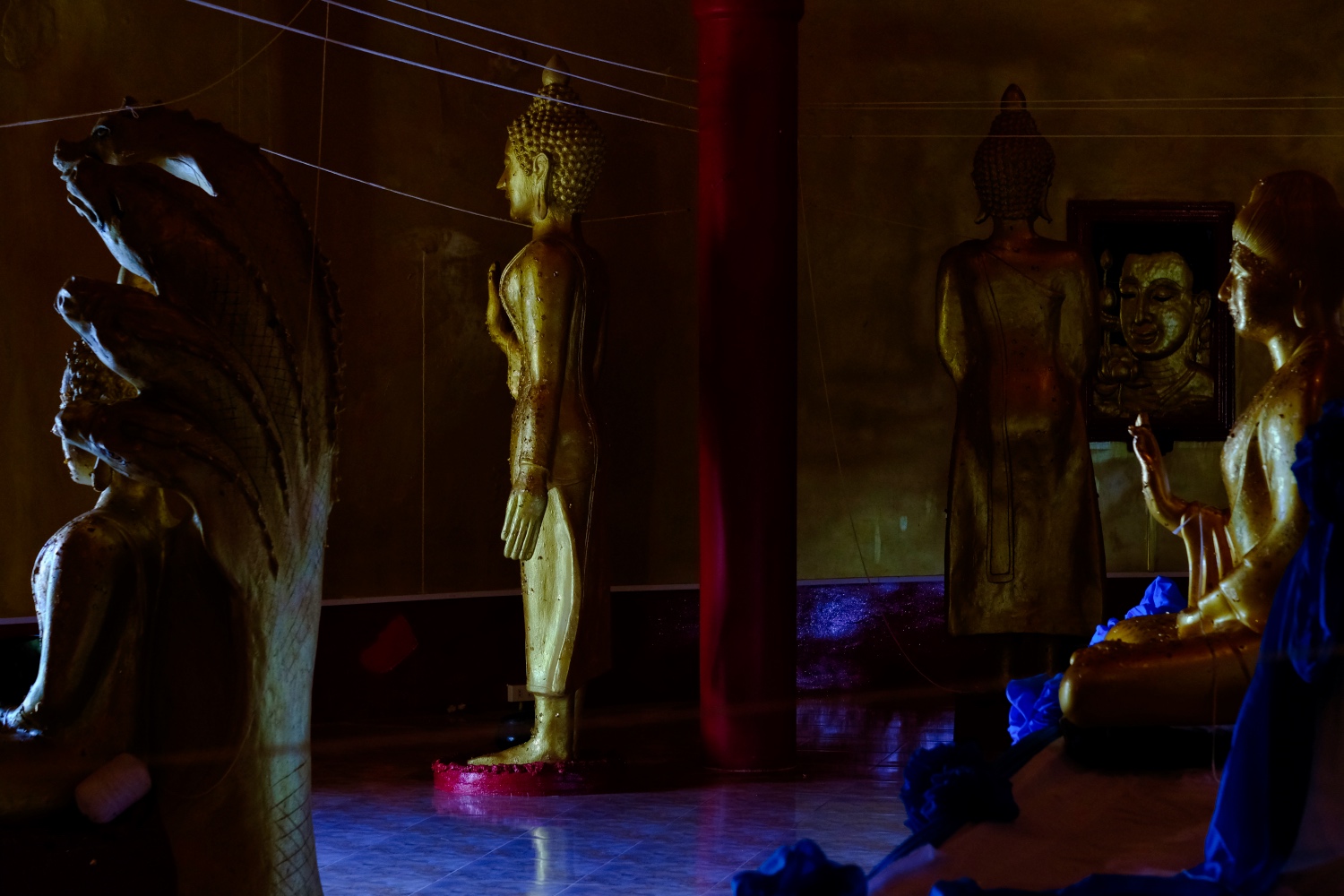 The inner chamber was full of Buddha images of all kinds.
The inner chamber was full of Buddha images of all kinds.
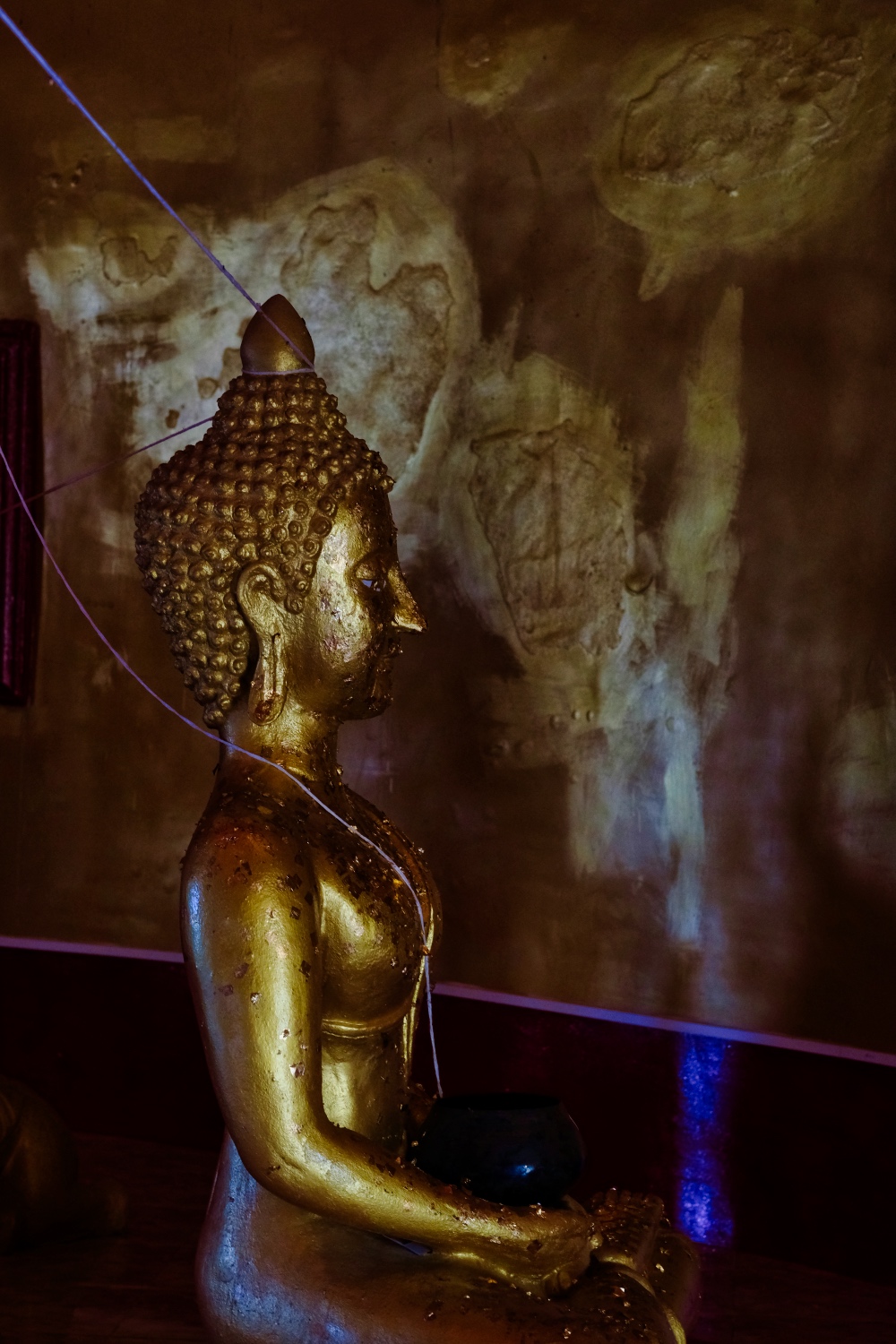 The unevenly plastered walls were covered with an orange-golden paint . . . a perfect atmospheric backdrop to the exquisite Buddha images.
The unevenly plastered walls were covered with an orange-golden paint . . . a perfect atmospheric backdrop to the exquisite Buddha images.
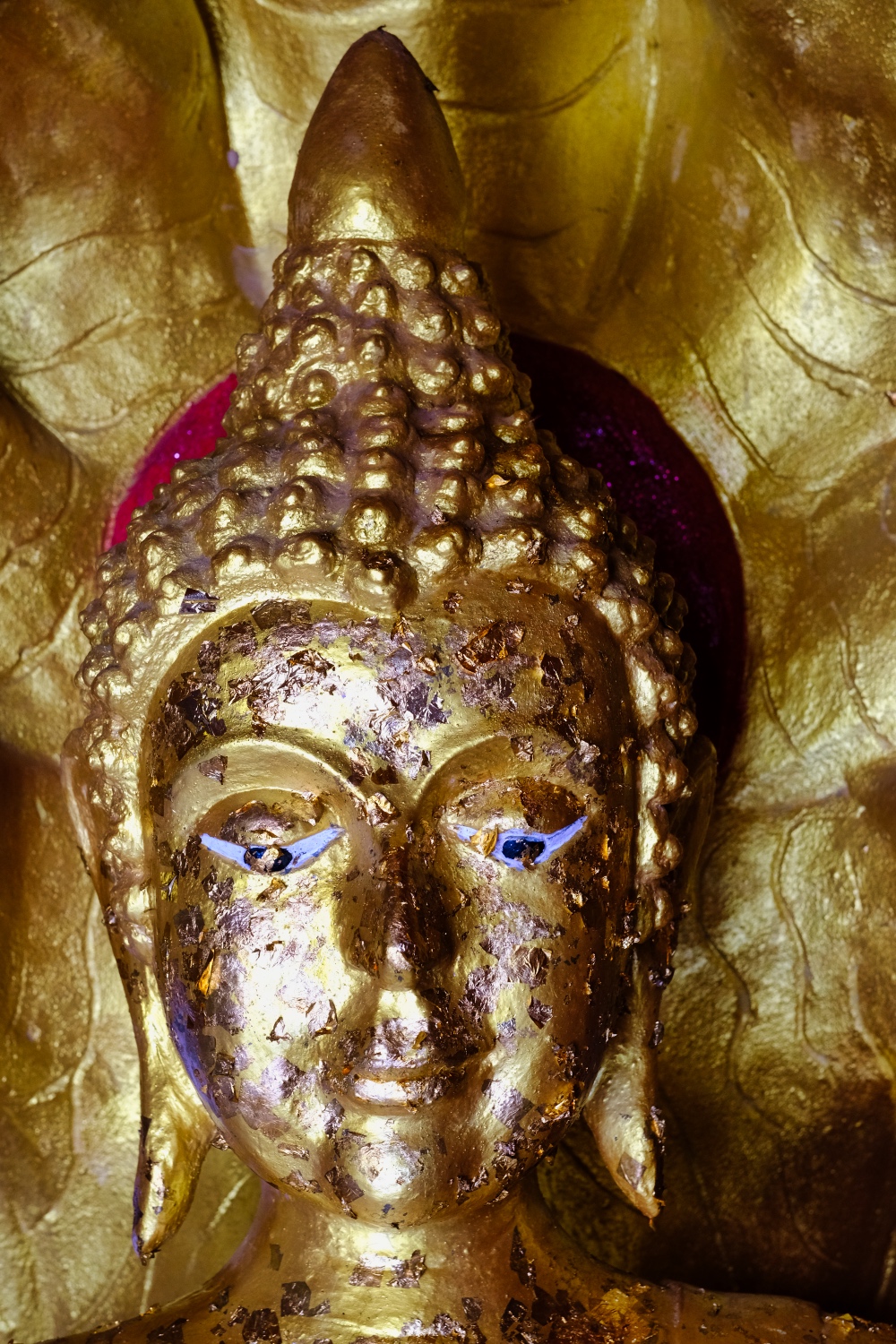 Gold leaf applied to revered Buddha images. Some of the images faced the open doors . . . making photography easier.
Gold leaf applied to revered Buddha images. Some of the images faced the open doors . . . making photography easier.
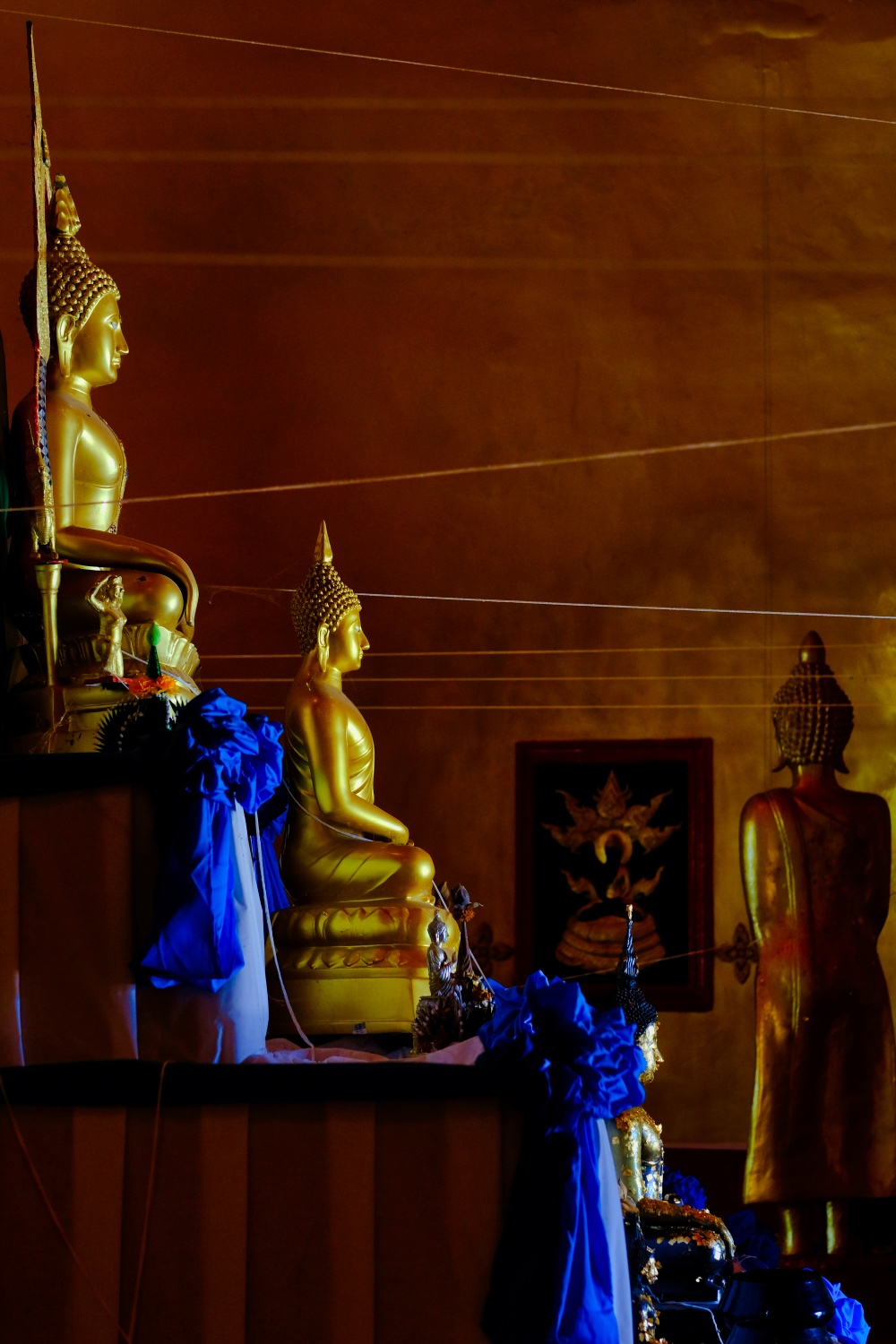 Without a doubt, my favorite photograph of a day . . . in a day of many wonderful images. Amazing color and light. A profoundly spiritual space.
Without a doubt, my favorite photograph of a day . . . in a day of many wonderful images. Amazing color and light. A profoundly spiritual space.
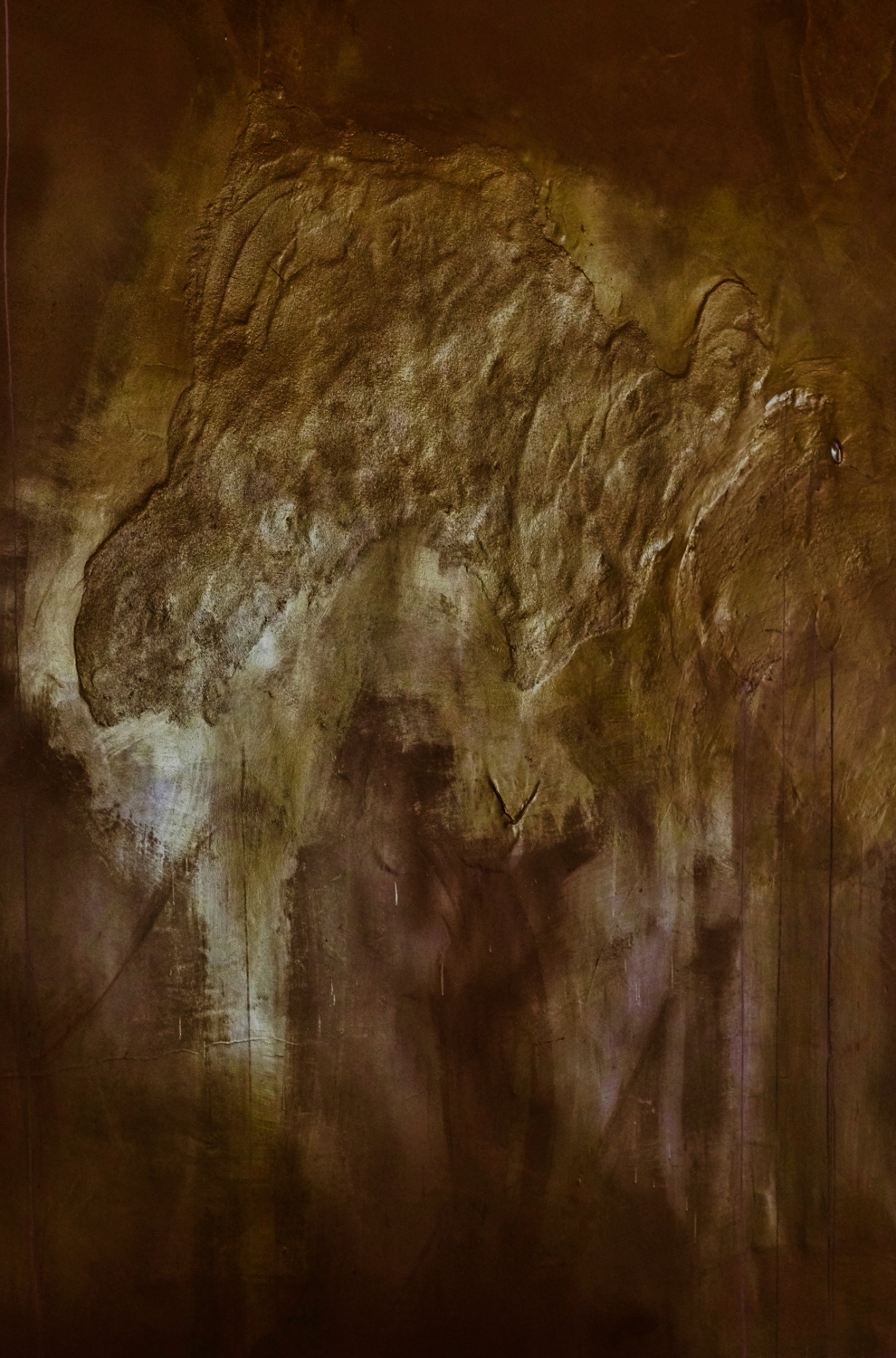 The walls themselves were a thing of beauty in the magic light.
The walls themselves were a thing of beauty in the magic light.
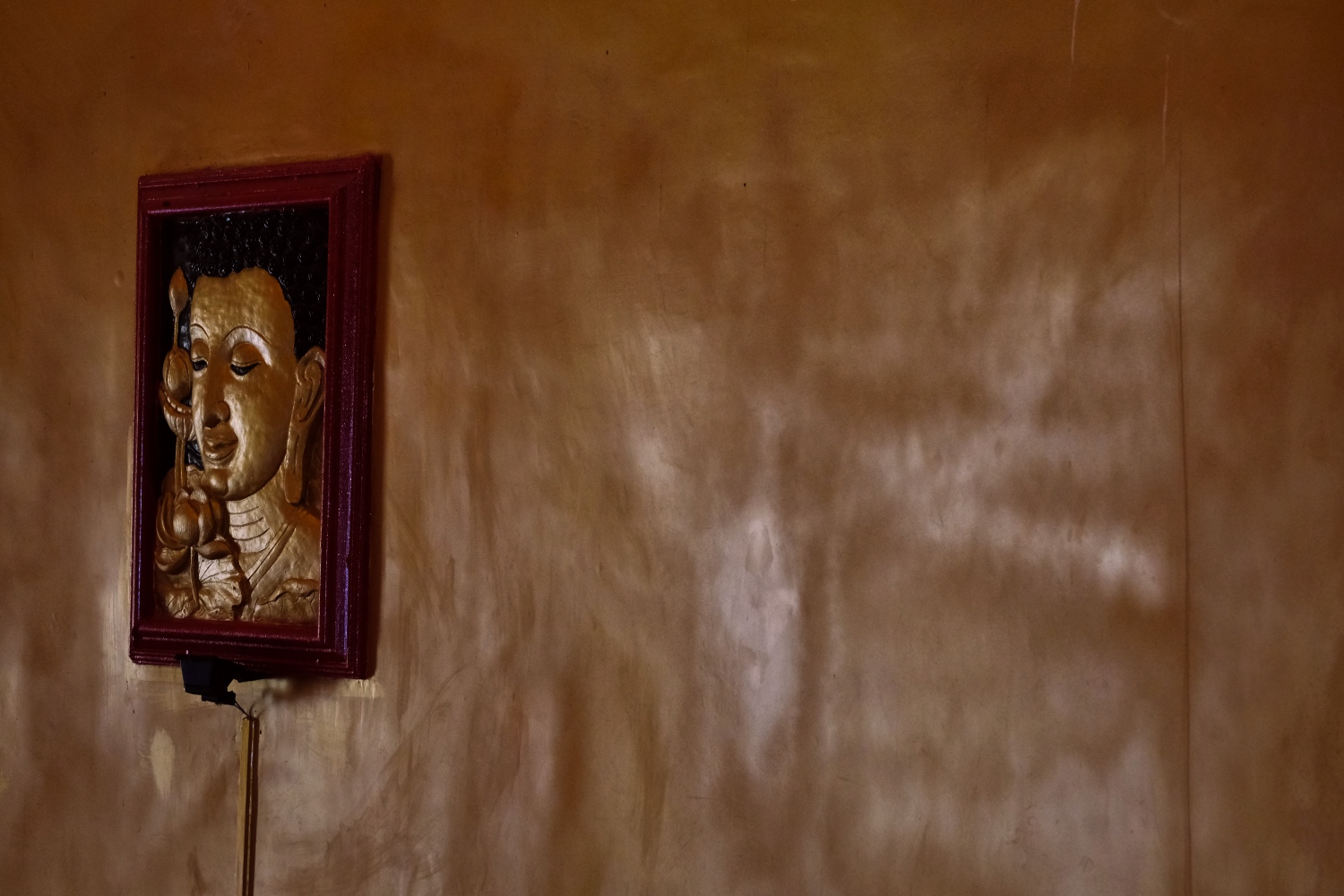 I experiences such a strong reawakening of Wonder in that hilltop place.
I experiences such a strong reawakening of Wonder in that hilltop place.
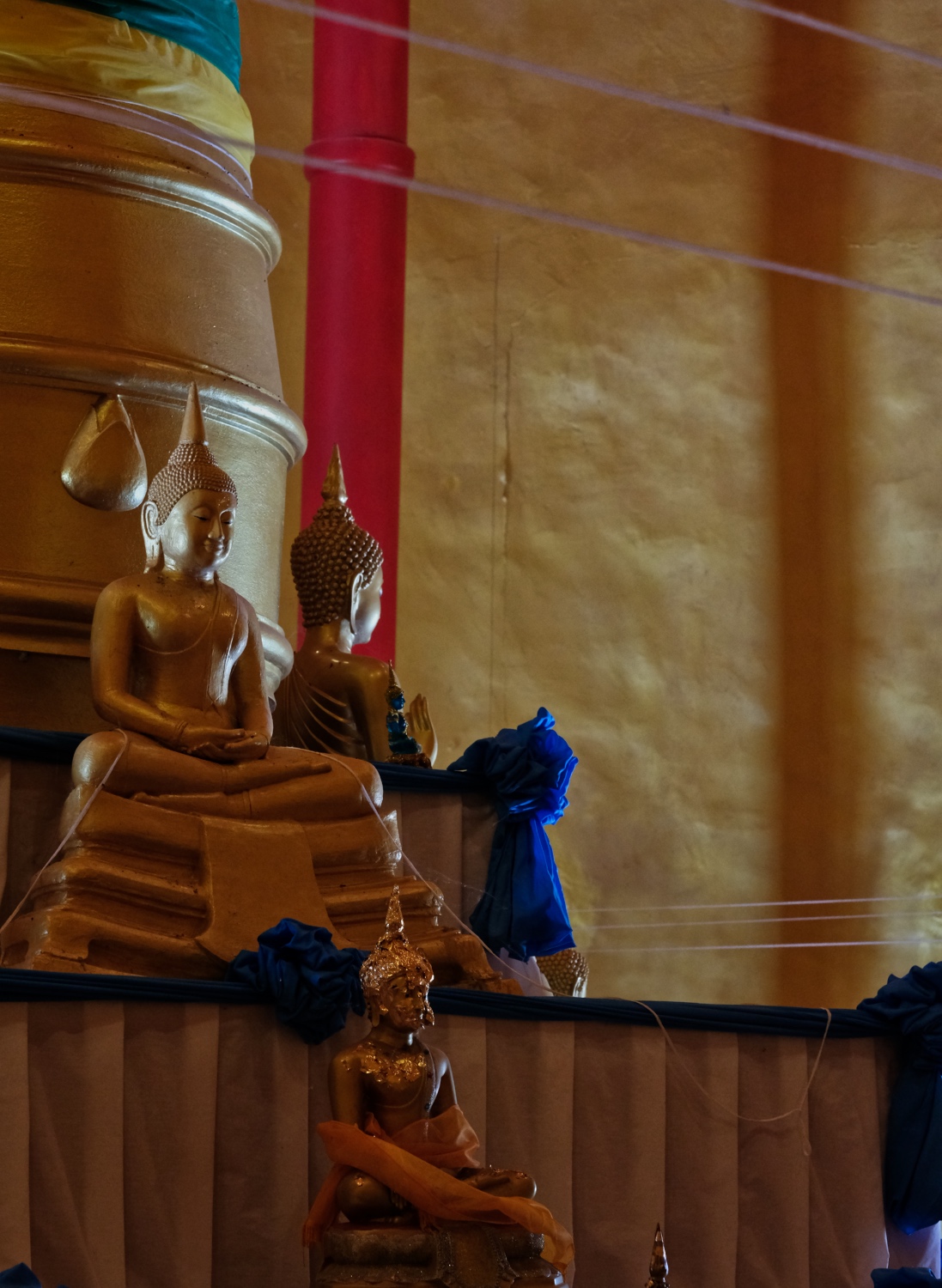 I walked around and around inside the circle of the chedi in a Vipasana walking meditation.
I walked around and around inside the circle of the chedi in a Vipasana walking meditation.
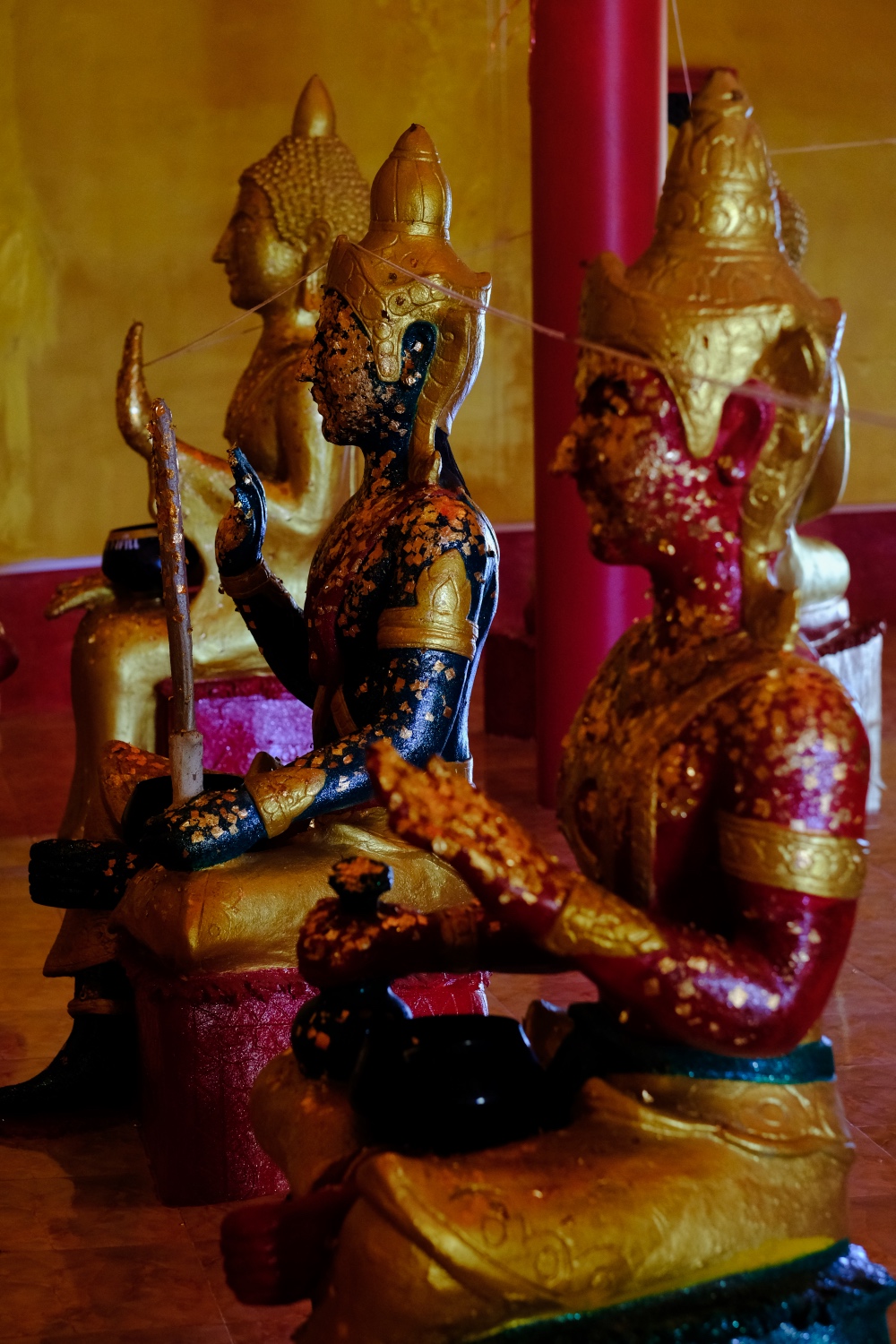 Colorful chamber Bikkus.
Colorful chamber Bikkus.
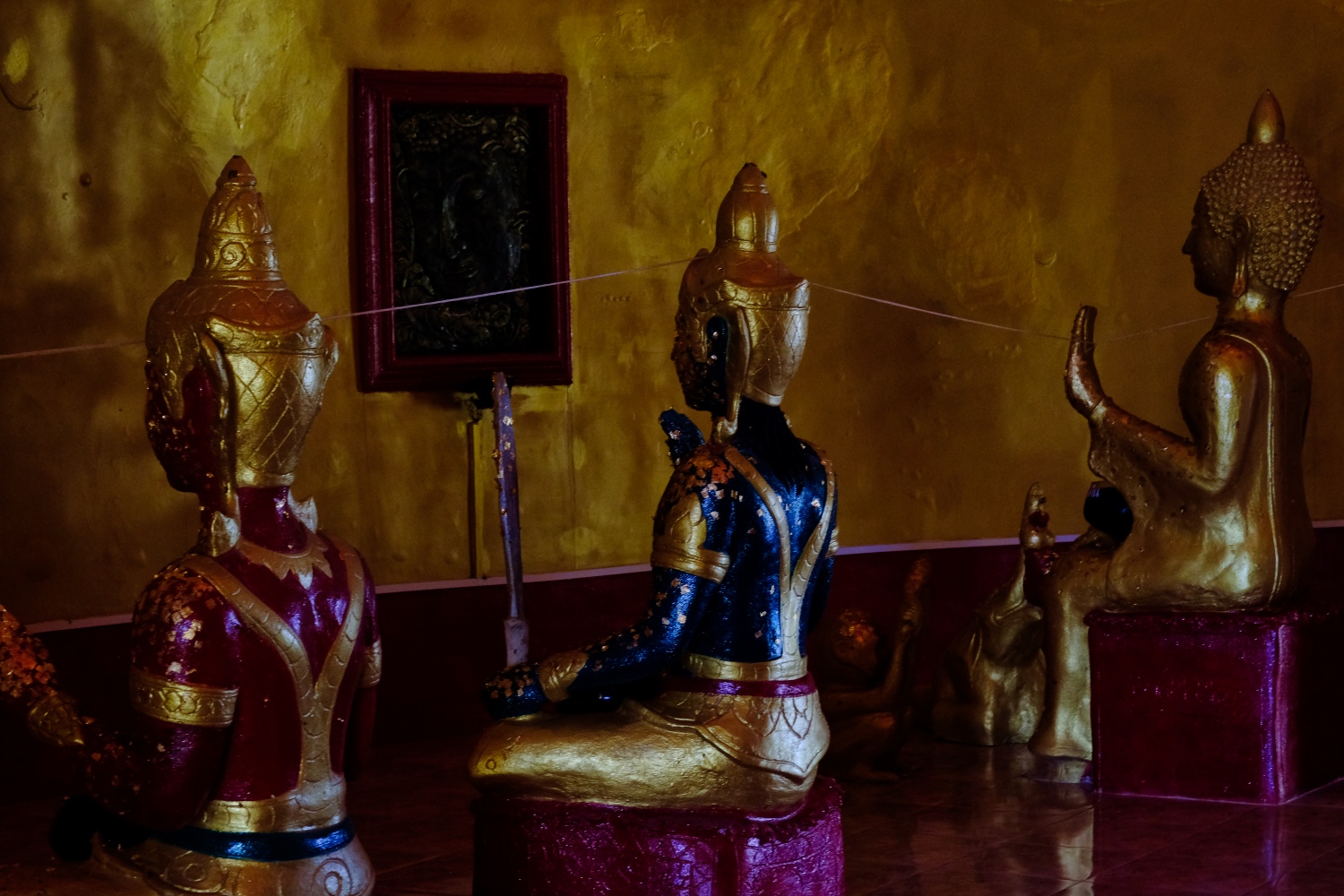 The chamber attendants/Bikkus.
The chamber attendants/Bikkus.
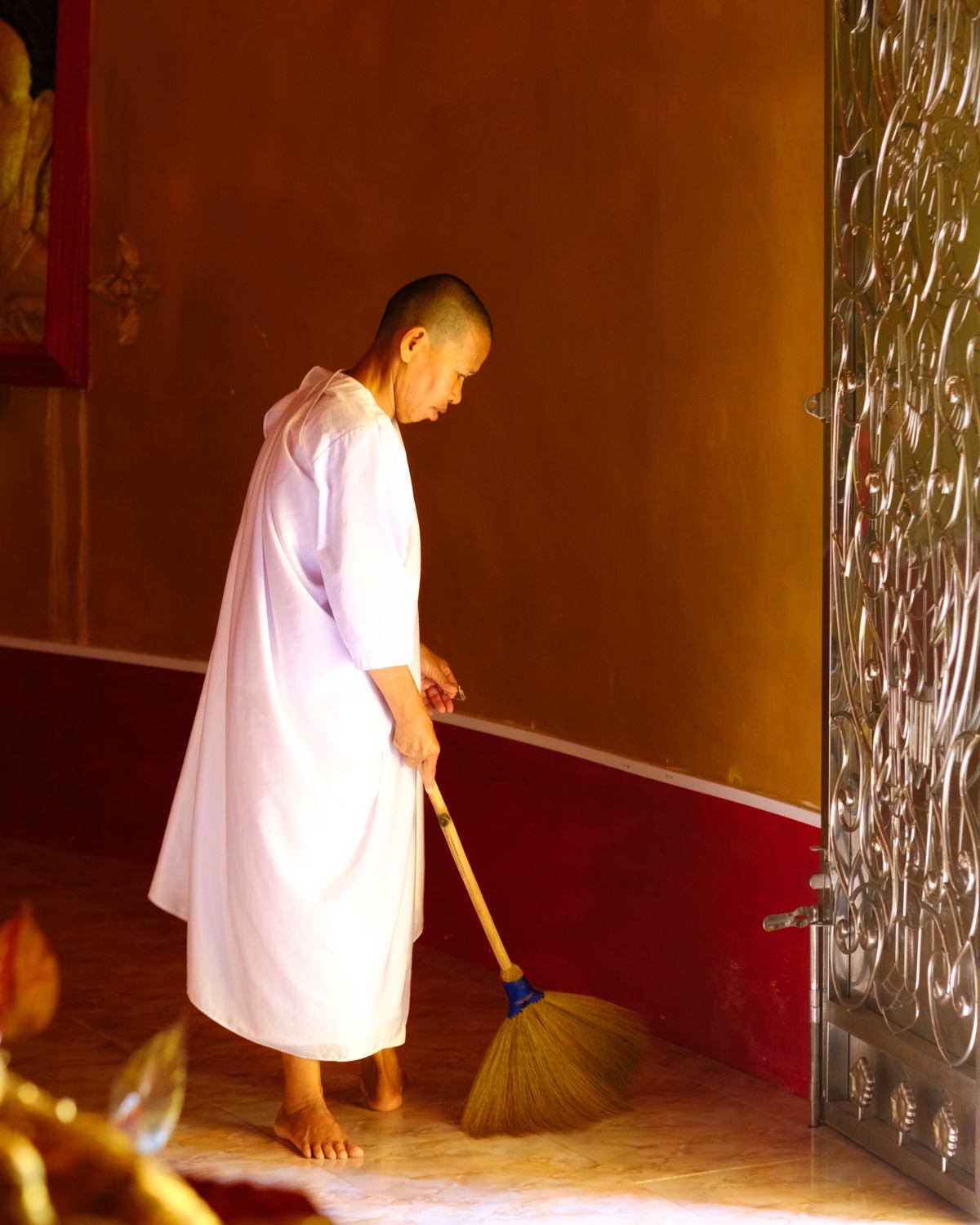 I thought I was alone in the golden chedi until I heard the sound of sweeping. A nun from the Wat keeping things neat and tidy.
I thought I was alone in the golden chedi until I heard the sound of sweeping. A nun from the Wat keeping things neat and tidy.
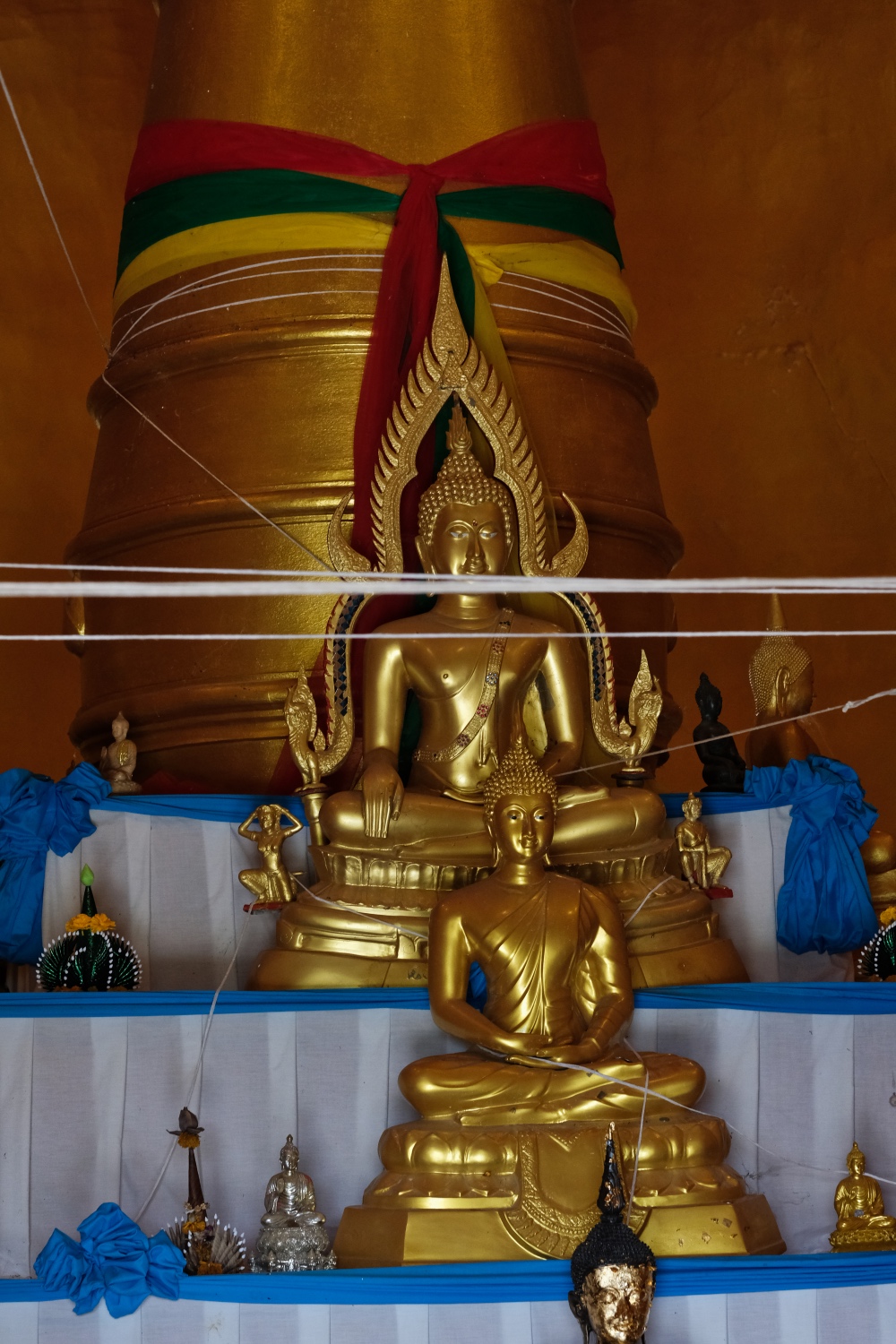 There was a chedi within the larger chedi. I didn't bring my wide angle lens and a tripod . . . but I might go back one day.
There was a chedi within the larger chedi. I didn't bring my wide angle lens and a tripod . . . but I might go back one day.
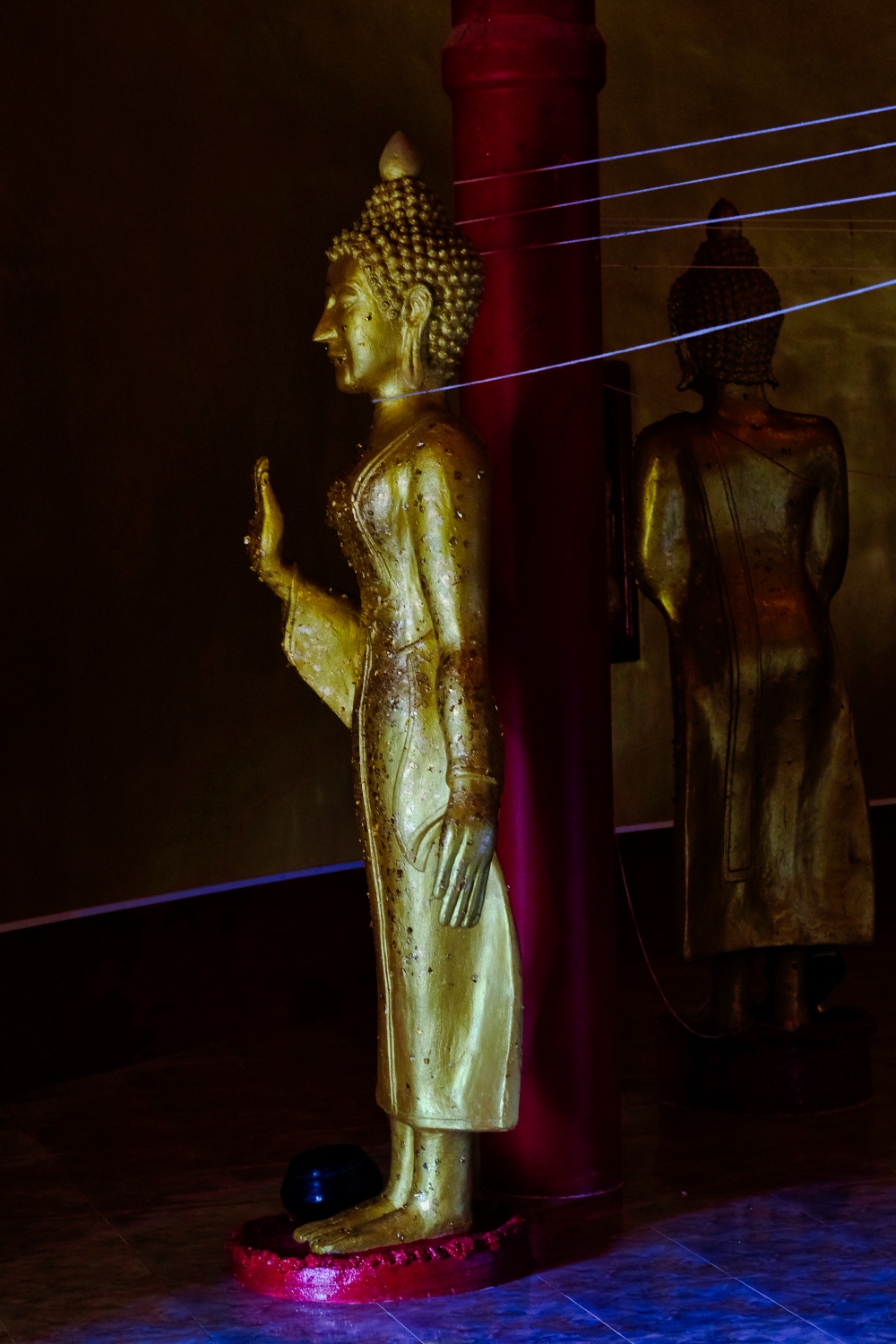 Yes, thanks for the reminder . . . hold back the river of Mara's temptations to be pulled from The Now.
Yes, thanks for the reminder . . . hold back the river of Mara's temptations to be pulled from The Now.
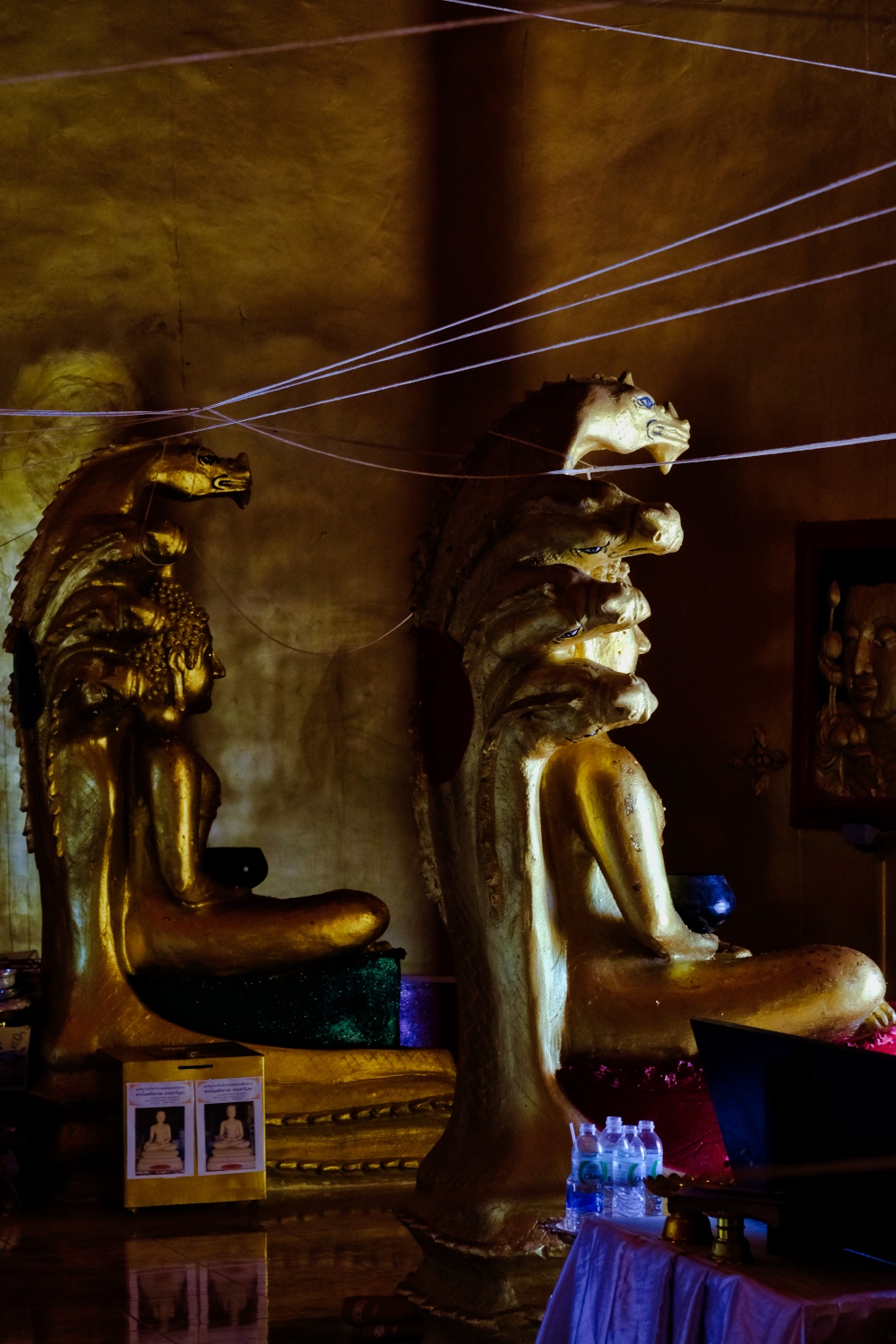 I spent over an hour in the chamber . . . I believe . . . because I lost track of time . . . and left.
I spent over an hour in the chamber . . . I believe . . . because I lost track of time . . . and left.
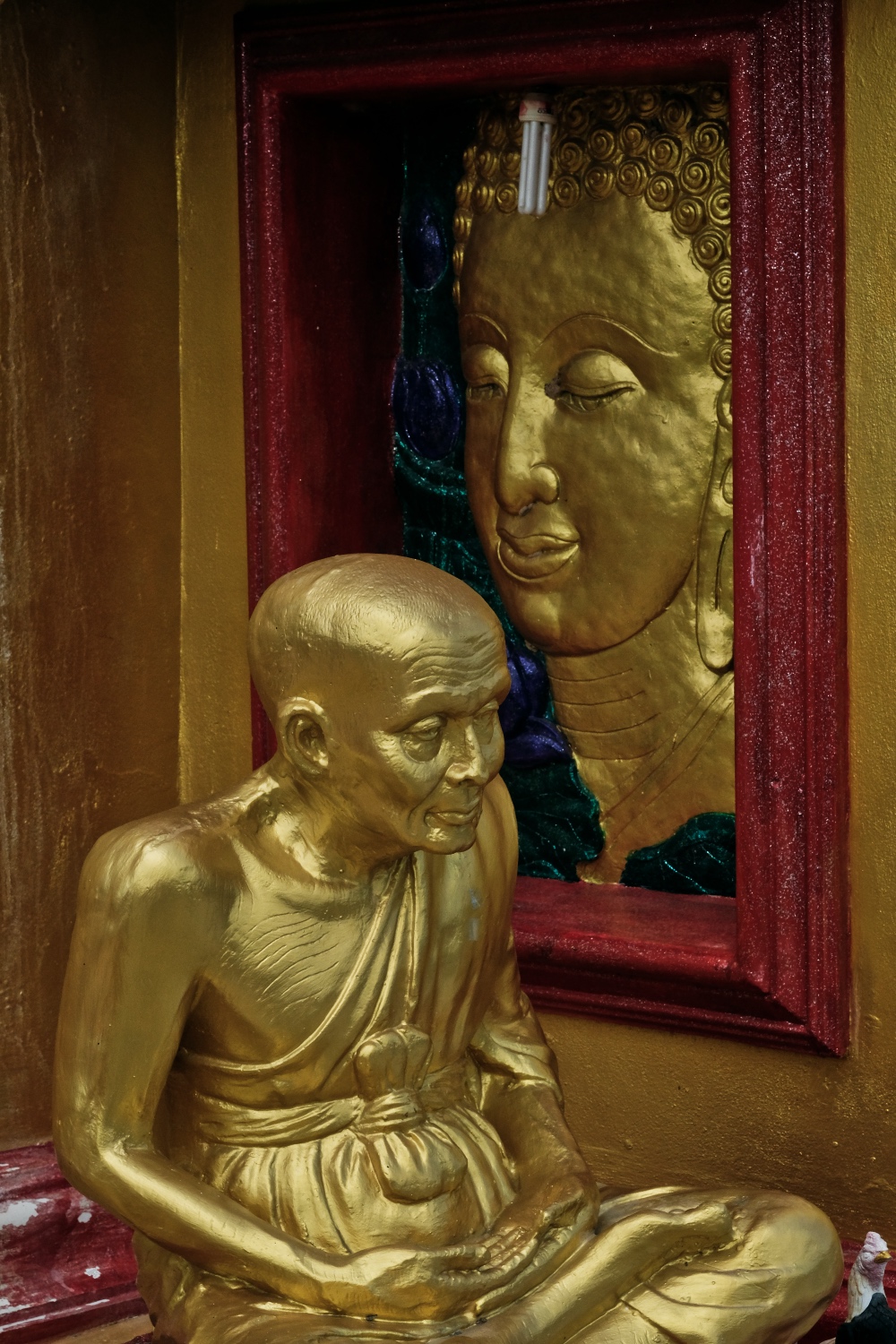 I exited passed the old monk and the Buddha, found a sala and ate the lunch I had in my pack, and went to the car and drove back toward the coast.
I exited passed the old monk and the Buddha, found a sala and ate the lunch I had in my pack, and went to the car and drove back toward the coast.
A RURAL WAT
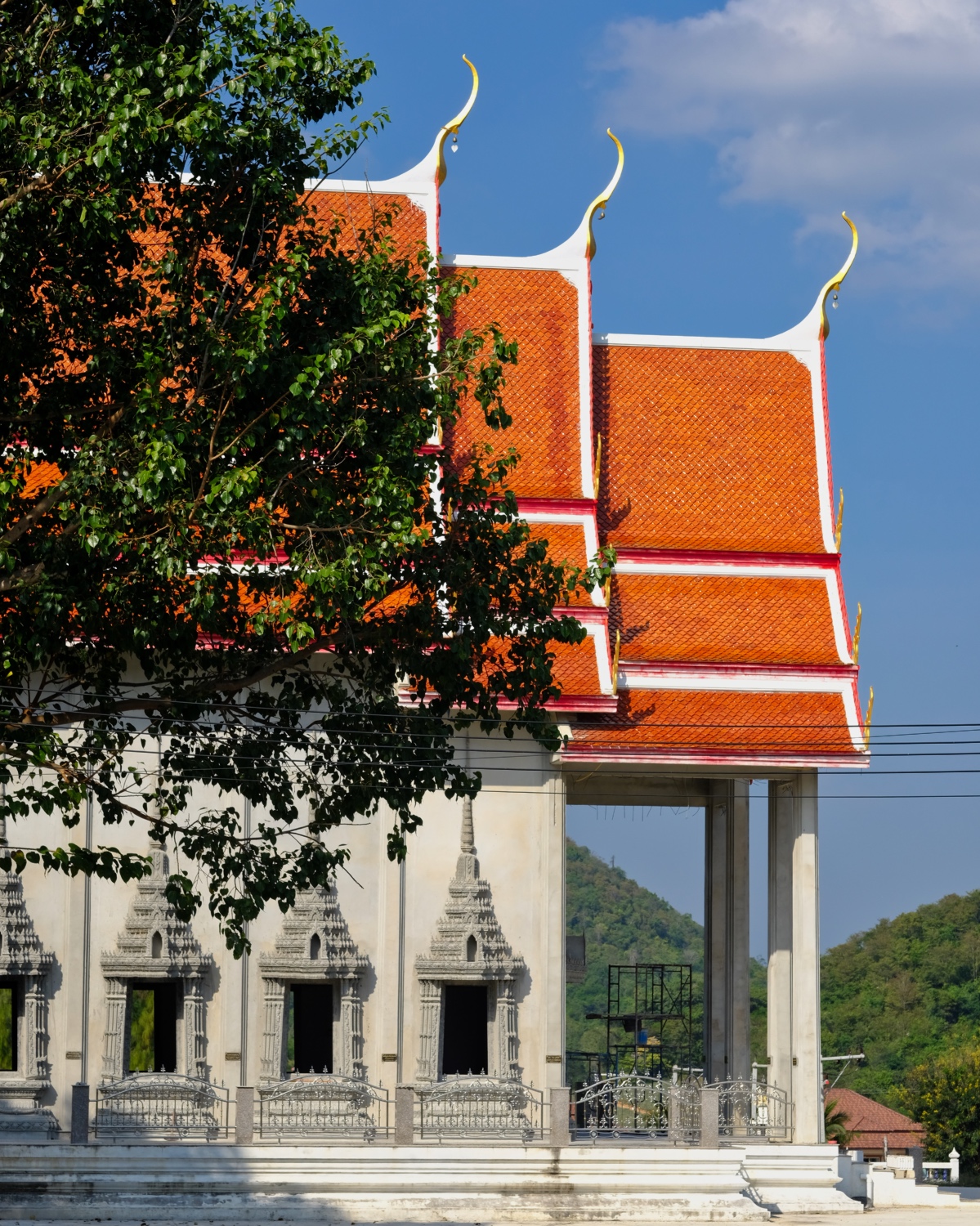 Driving back along a small rural road, I spotted a Wat under construction.
Driving back along a small rural road, I spotted a Wat under construction.
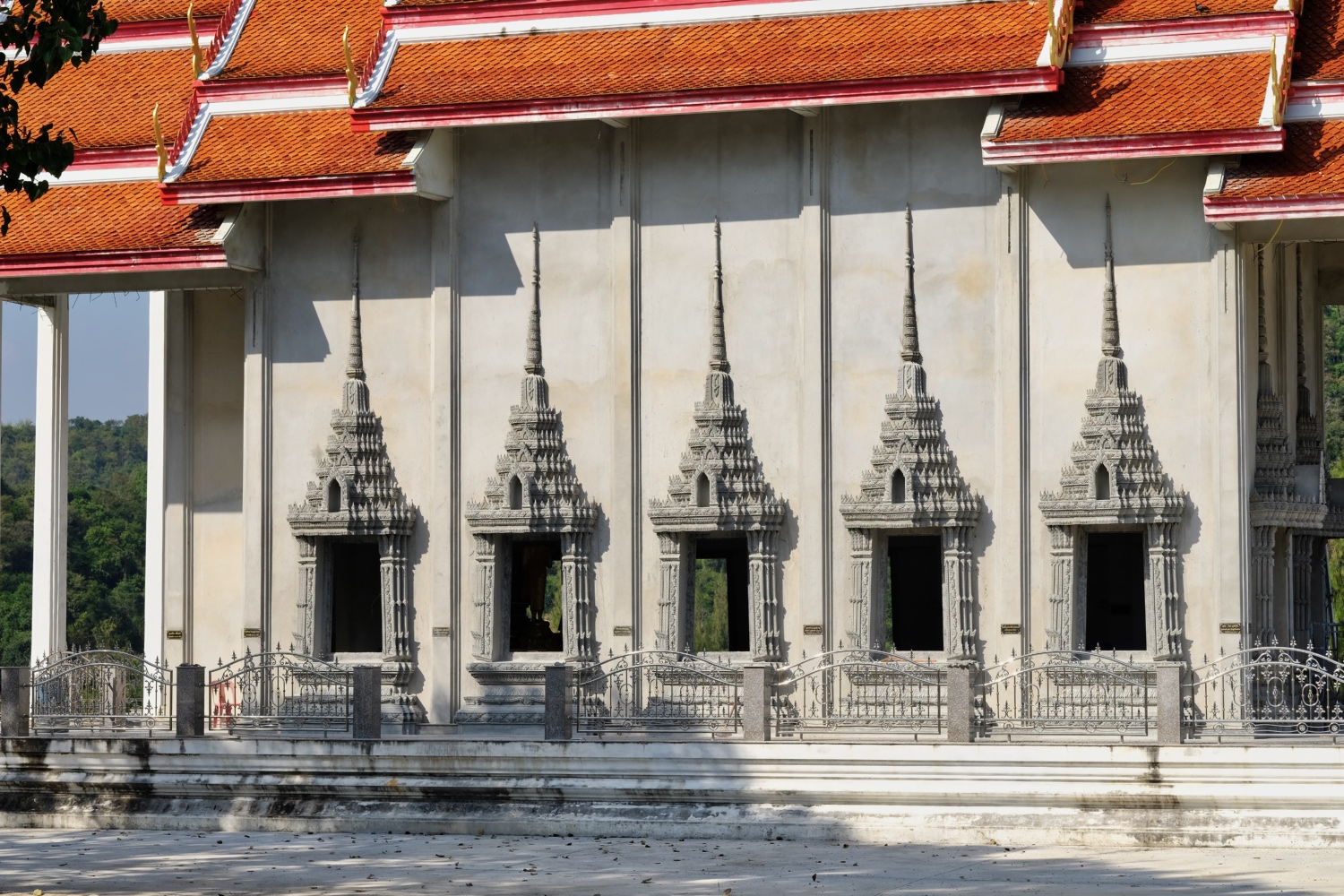 I am very interested in Wat construction, having been involved in building a Wat myself.
I am very interested in Wat construction, having been involved in building a Wat myself.
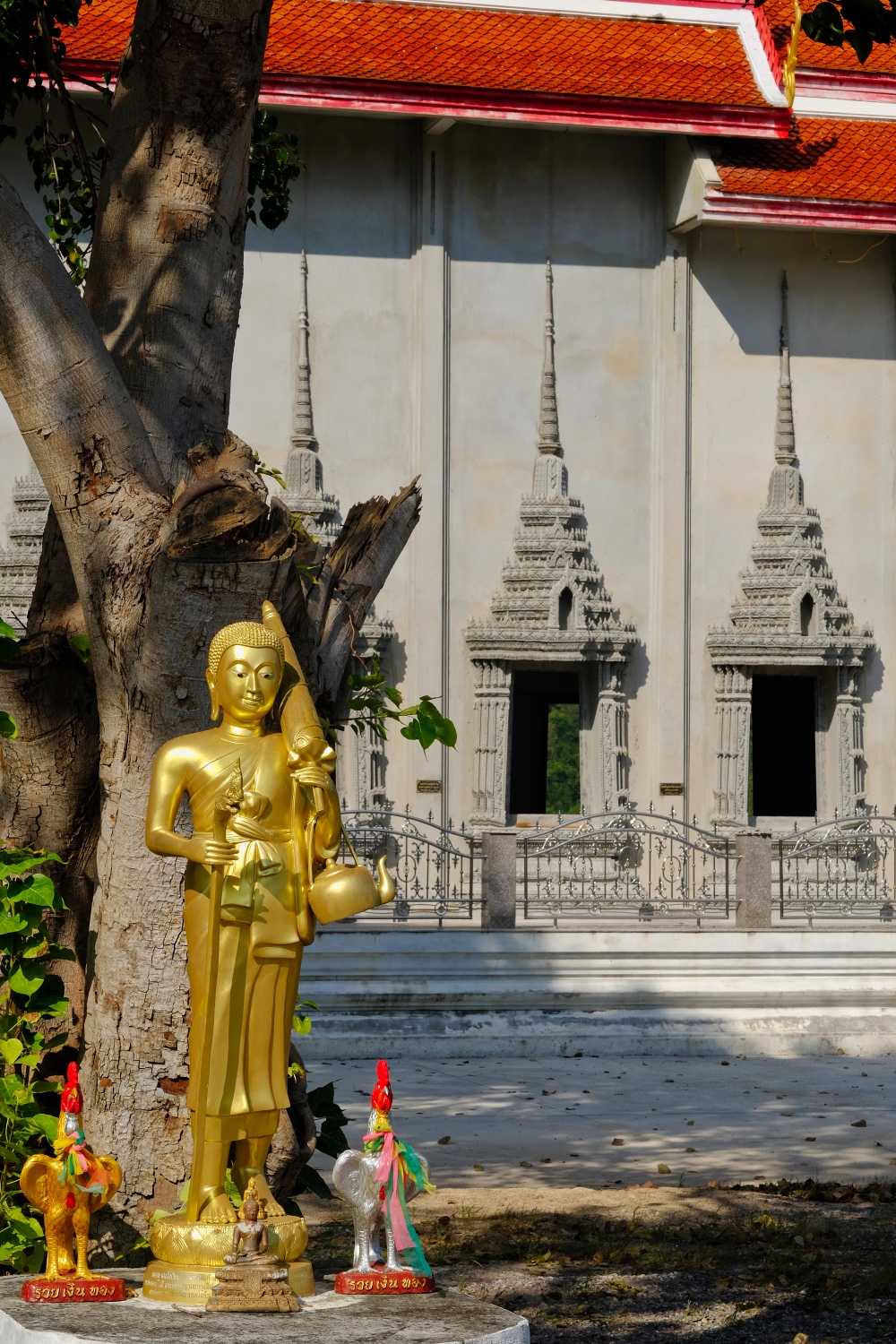 It is going to be a very pleasant place when it is completed. I will try and make a point to visit here in the future.
It is going to be a very pleasant place when it is completed. I will try and make a point to visit here in the future.
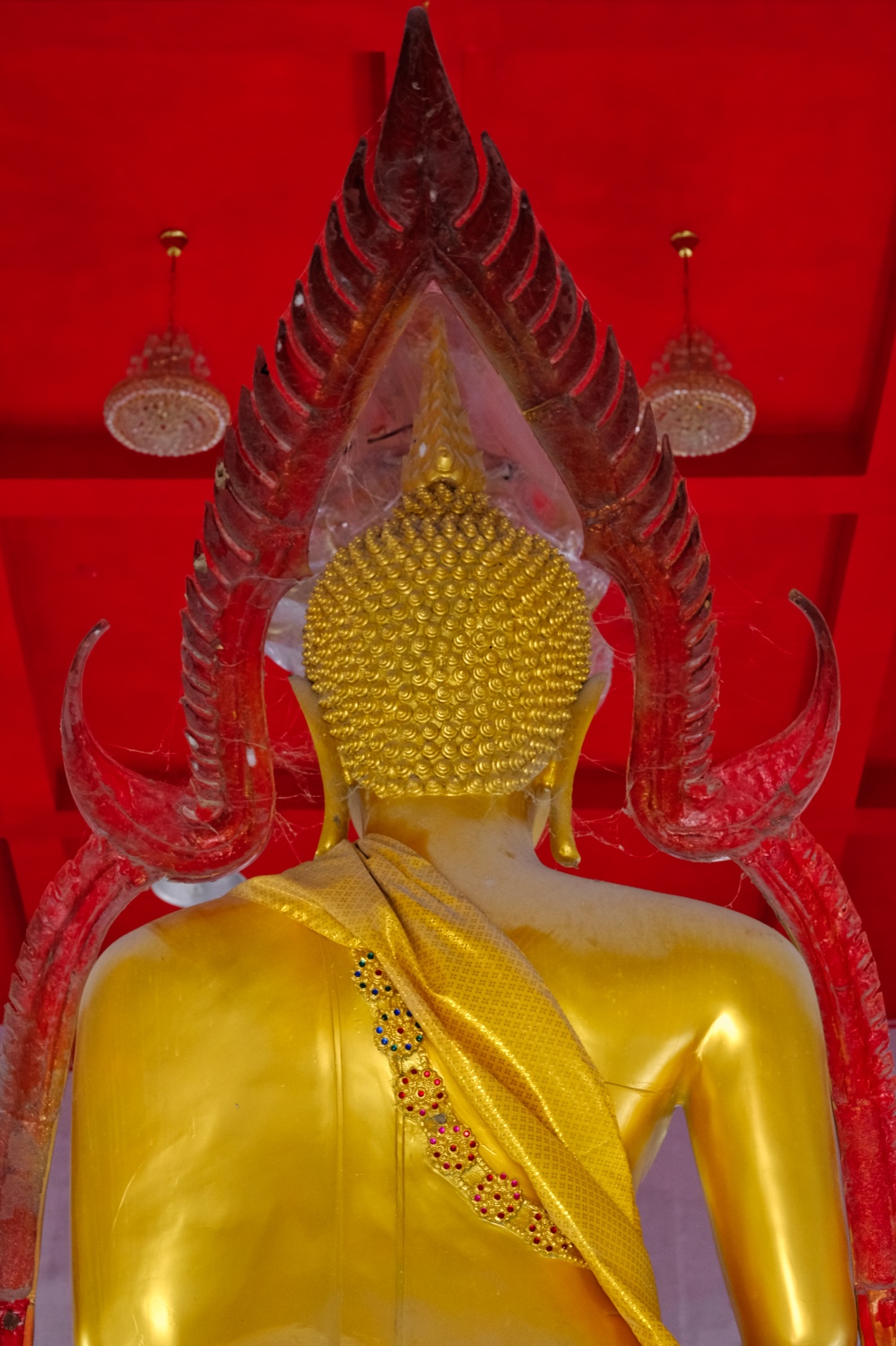 I went inside through an open door behind the main Buddha image.
I went inside through an open door behind the main Buddha image.
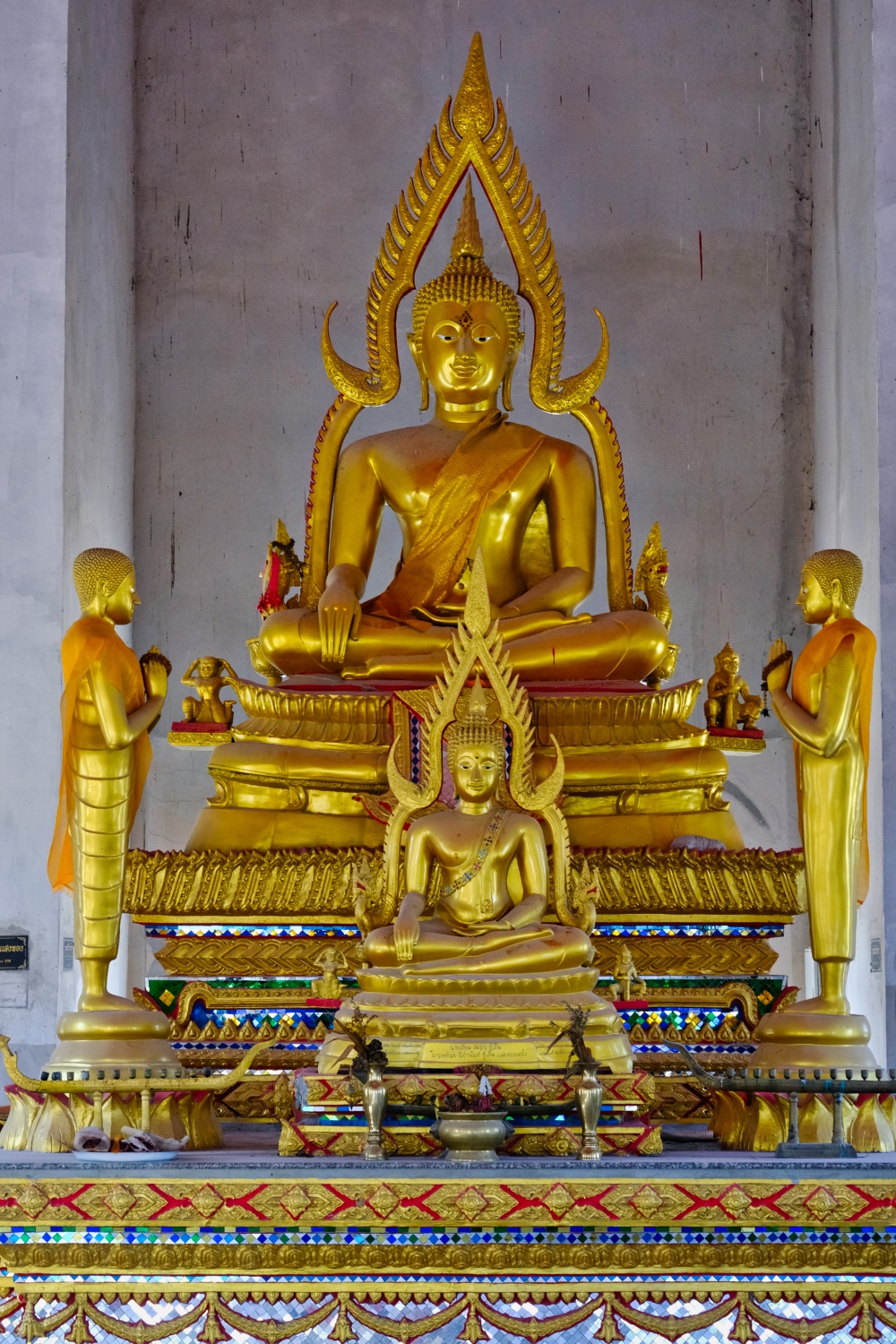 The main altar was already more or less complete.
The main altar was already more or less complete.
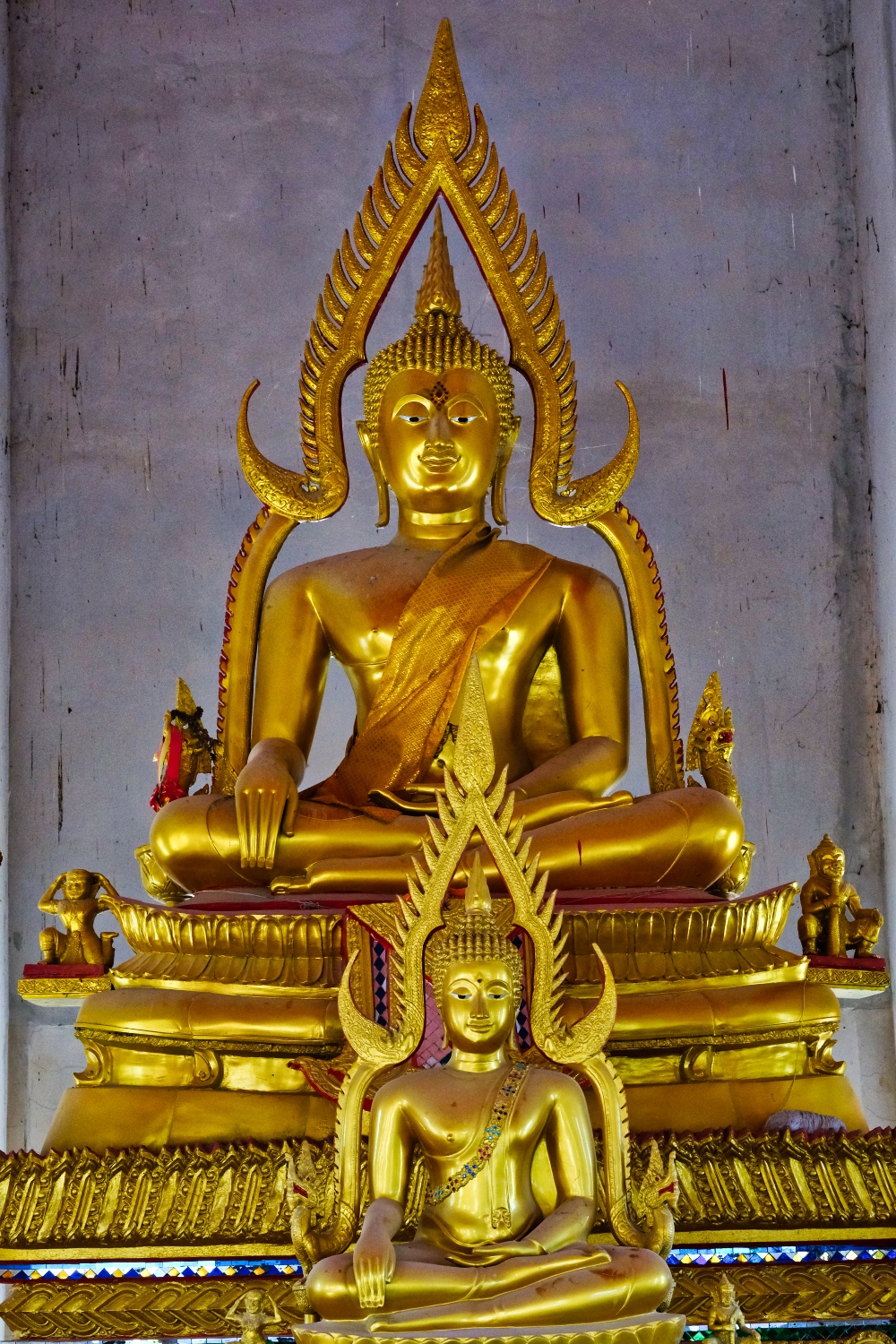 Very powerful Buddhas here . . .
Very powerful Buddhas here . . .
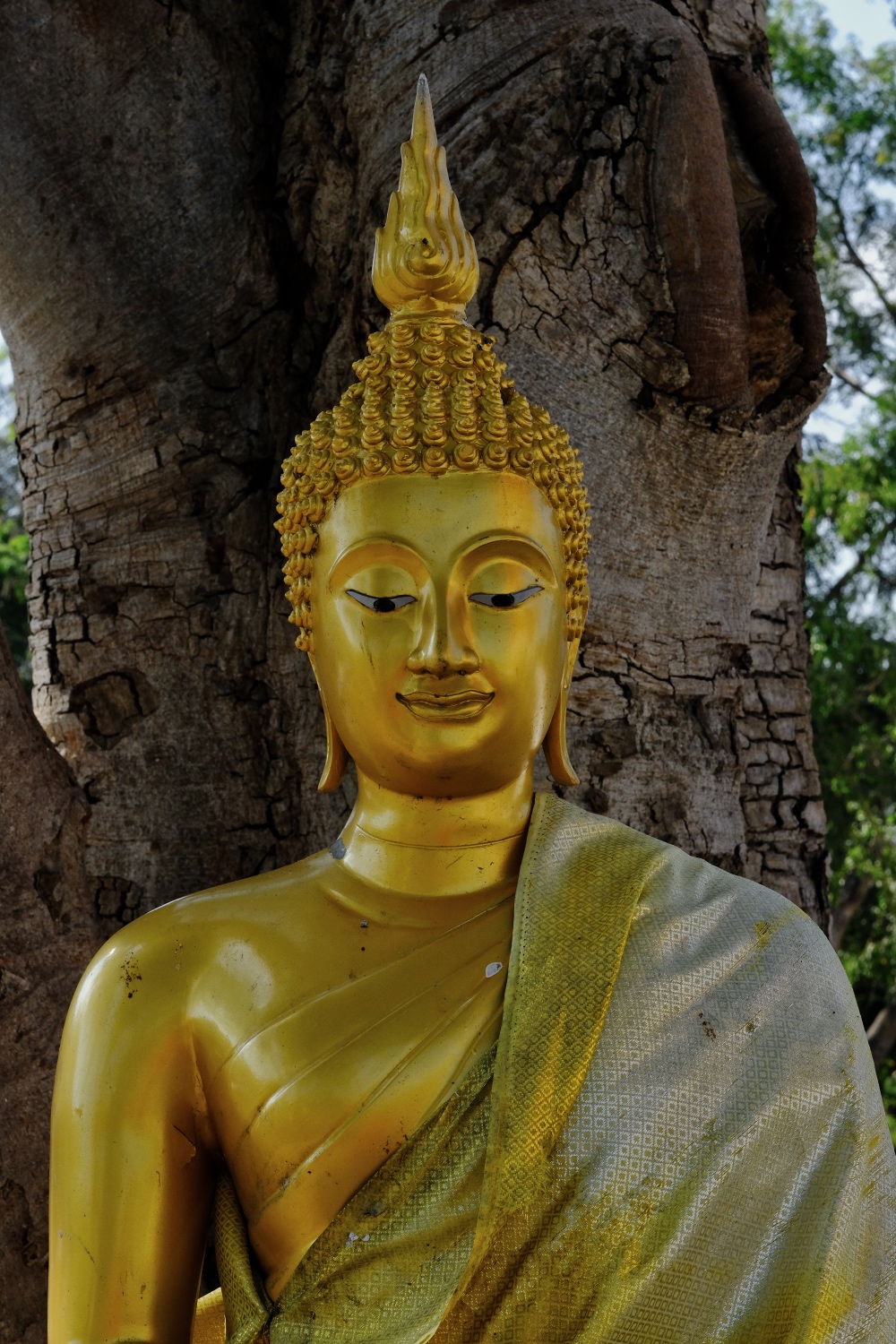 Back outside, I stopped to admire and pay respect to this Buddha image next to a small shrine/spirit house.
Back outside, I stopped to admire and pay respect to this Buddha image next to a small shrine/spirit house.
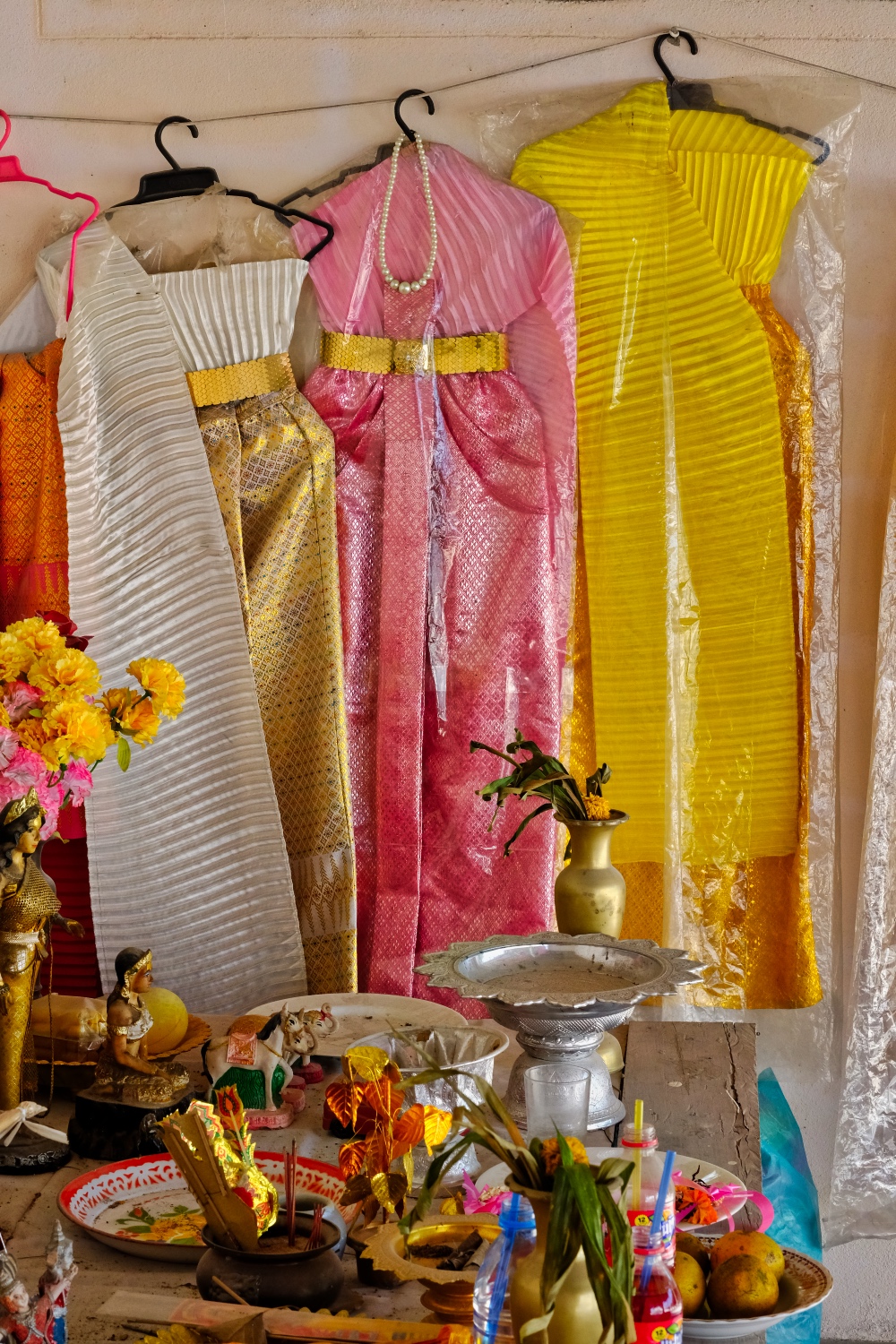 The shrine/spirit house was much older than the new Wat and was there for the older part of the temple grounds . . . which I was to explore next. More dress offerings . . .
The shrine/spirit house was much older than the new Wat and was there for the older part of the temple grounds . . . which I was to explore next. More dress offerings . . .
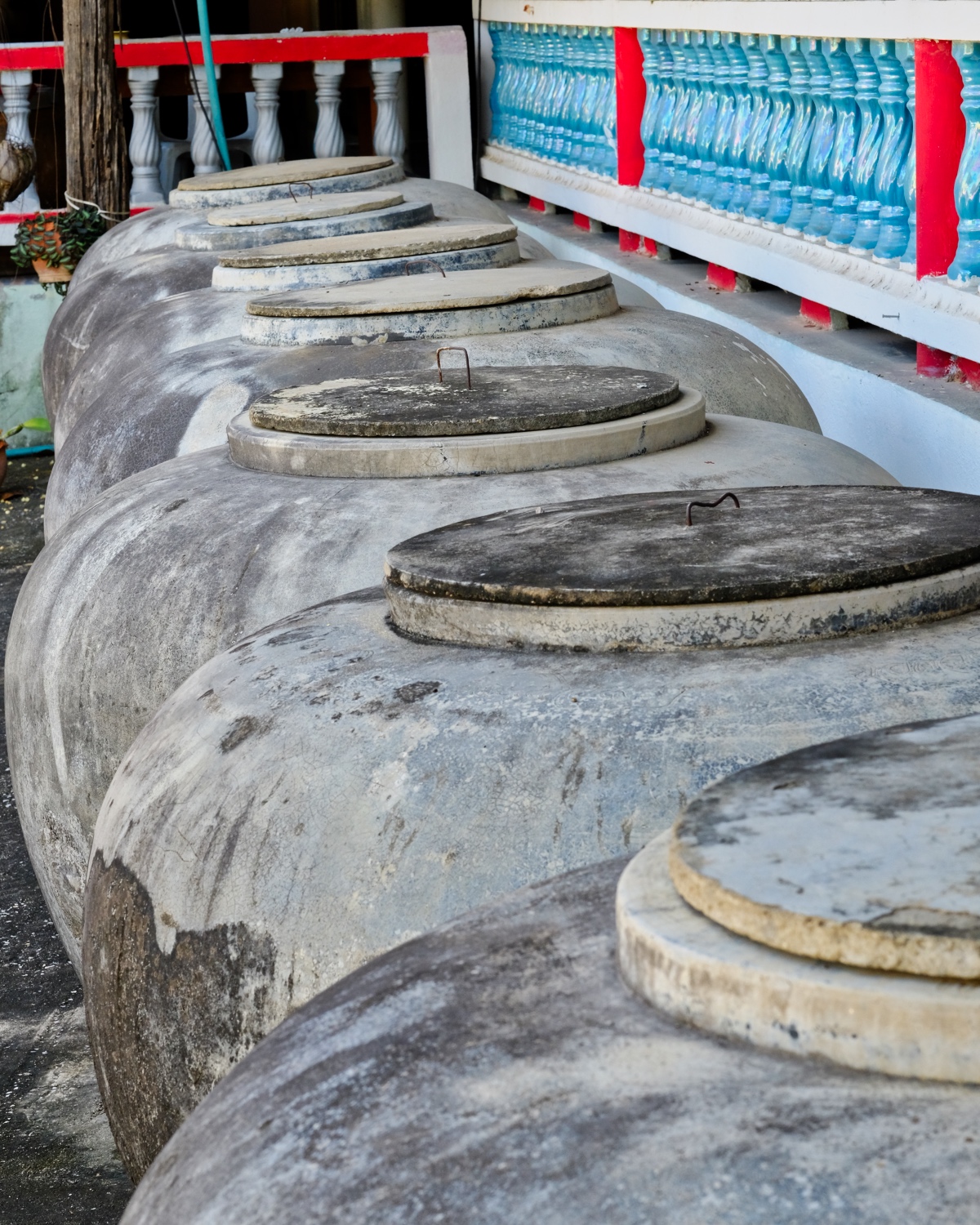 The old wooden Wat structure had these large rain water collection jugs outside.
The old wooden Wat structure had these large rain water collection jugs outside.
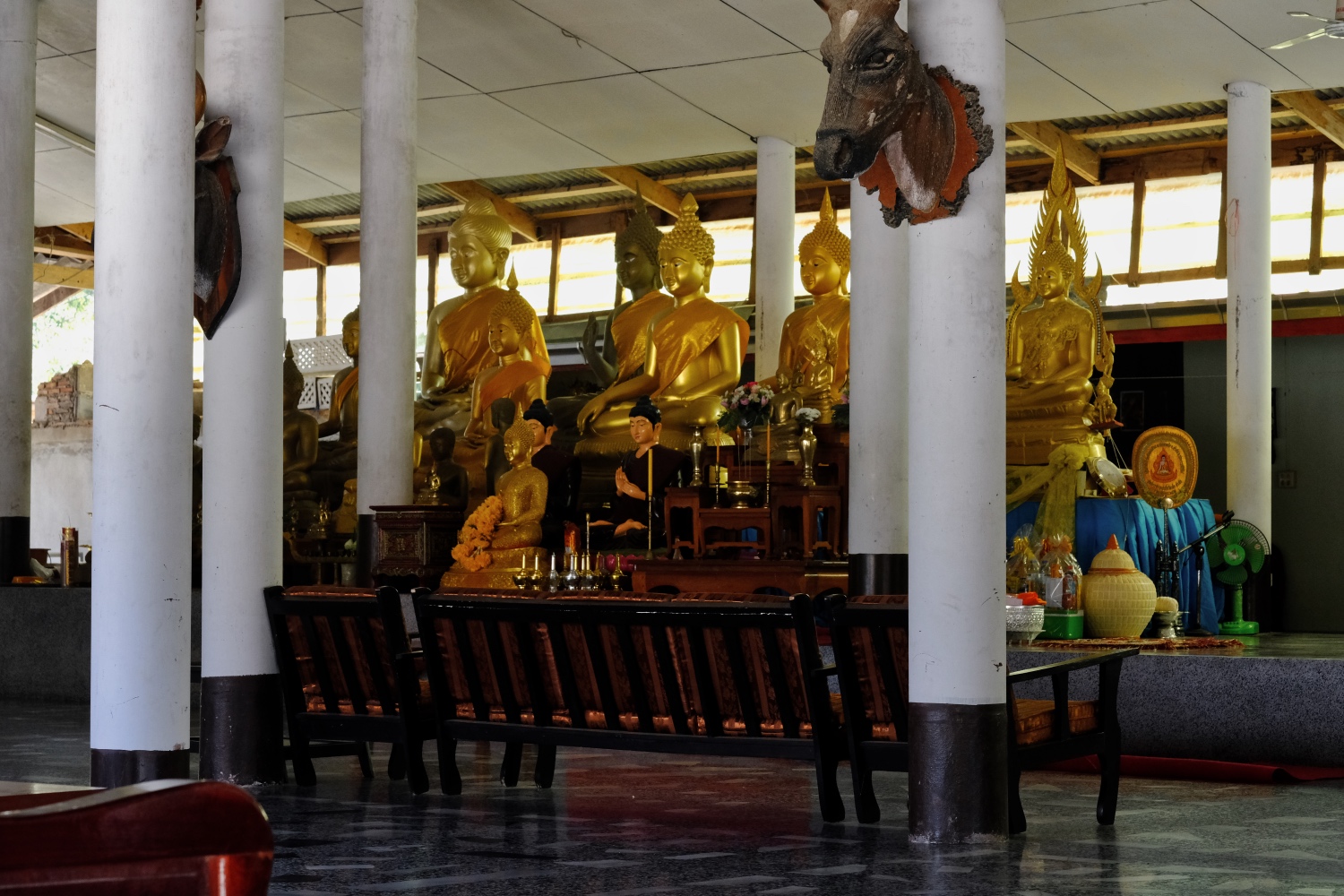 The altar in the old Wat . . . I wonder if they will move these devotional items over to the new Wat when it is completed . . .
The altar in the old Wat . . . I wonder if they will move these devotional items over to the new Wat when it is completed . . .
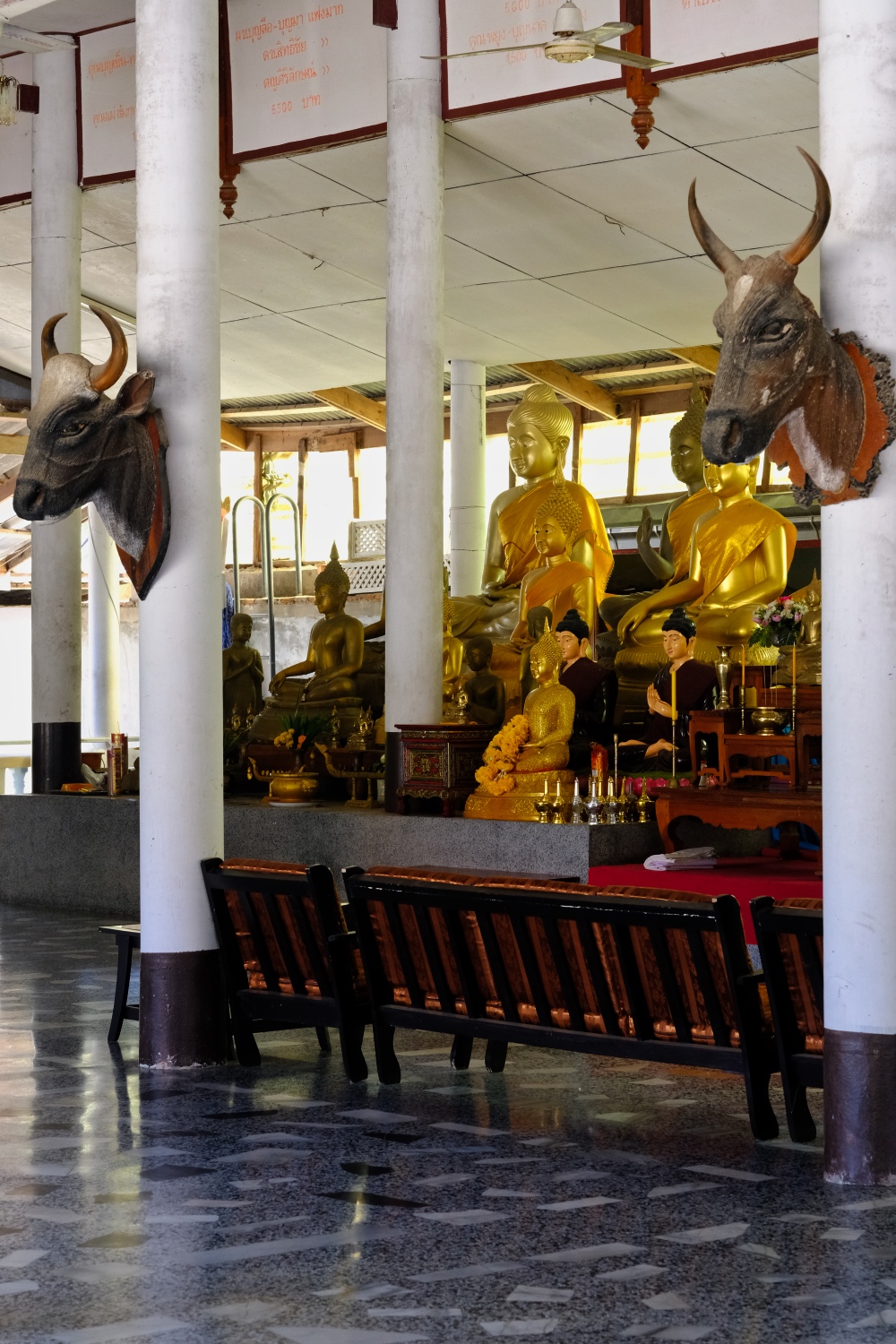 A rural Wat in an agricultural village would have water buffalo heads, no?
A rural Wat in an agricultural village would have water buffalo heads, no?
 I had a wonderful day . . . I hope he rest of the year will be as spiritually illuminating as the first day of the year . . . . . if . . .
I had a wonderful day . . . I hope he rest of the year will be as spiritually illuminating as the first day of the year . . . . . if . . .
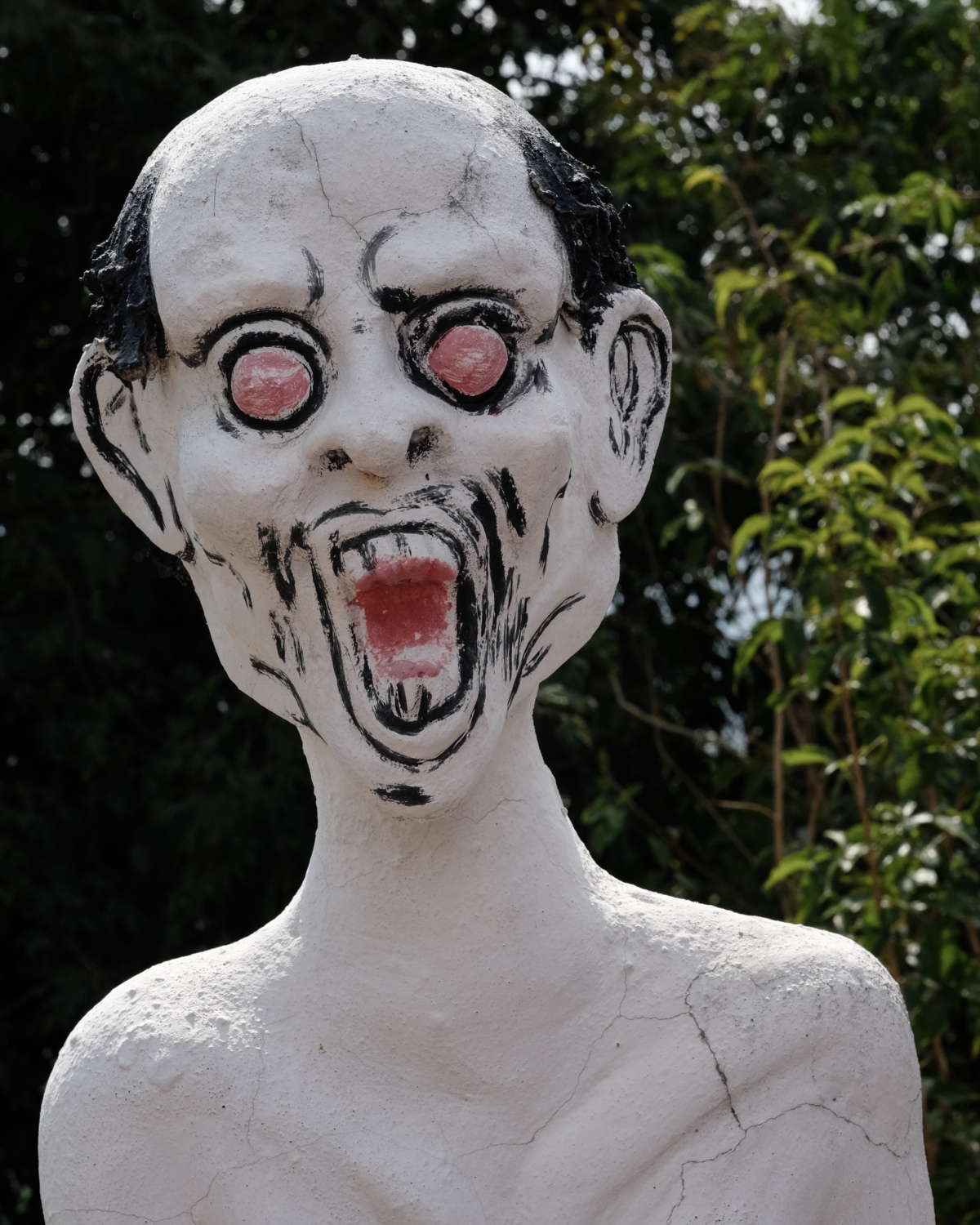 It will be a good year if the MonkeyMind is disbanded through clear insight meditation.
It will be a good year if the MonkeyMind is disbanded through clear insight meditation.
Happy New Year.
My Scottish Garden In Autumn (+ Macro)
 Sunday, November 6, 2016 at 12:49AM
Sunday, November 6, 2016 at 12:49AM  It's Autumn in Scotland . . . and my garden is alive with color and wonder.
It's Autumn in Scotland . . . and my garden is alive with color and wonder.
 The days are getting shorter . . and many of the birds have gone.
The days are getting shorter . . and many of the birds have gone.
 The leaves have gone red . . .
The leaves have gone red . . .
 . . . or golden.
. . . or golden.
 The apples are ready to harvest in the far end of the garden.
The apples are ready to harvest in the far end of the garden.
 The garden is very old and the original planter created a garden that has continuous flowering . . . when one plant fades, another comes into bloom. These are still flowering in late October.
The garden is very old and the original planter created a garden that has continuous flowering . . . when one plant fades, another comes into bloom. These are still flowering in late October.
 These miniatures grow from the nooks an crannies of the garden wall.
These miniatures grow from the nooks an crannies of the garden wall.
 The garden hedge sprouted these blossom buds recently . . . although they have not opened, they attract large numbers of bees, wasps, and flies.
The garden hedge sprouted these blossom buds recently . . . although they have not opened, they attract large numbers of bees, wasps, and flies.
 There is a great variety of foliage throughout the garden.
There is a great variety of foliage throughout the garden.
 The roses were among the first to bloom . . . and they are still producing amazing flowers.
The roses were among the first to bloom . . . and they are still producing amazing flowers.
 And there are more roses yet to come.
And there are more roses yet to come.
 These popped out a couple of weeks ago . . . right before I was going to pull them out, thinking they were weeds! Close call.
These popped out a couple of weeks ago . . . right before I was going to pull them out, thinking they were weeds! Close call.
 Autumn weather can be wet and wild in Scotland . . . and occasionally throws up amazing rainbows. I watched this one go through many phases . . .
Autumn weather can be wet and wild in Scotland . . . and occasionally throws up amazing rainbows. I watched this one go through many phases . . .
 This rainbow ended in this striking streaked image.
This rainbow ended in this striking streaked image.
 Fast moving clouds full of rain cross the landscape continuously.
Fast moving clouds full of rain cross the landscape continuously.
 Rain and shafts of light. Beautiful.
Rain and shafts of light. Beautiful.
 Occasionally there is a window in the storms and a glimpse of the sky appears. Sometimes there is magical light that pours through the holes in the sky . . .
Occasionally there is a window in the storms and a glimpse of the sky appears. Sometimes there is magical light that pours through the holes in the sky . . .
 And when the sun pours through . . . .
And when the sun pours through . . . .
 These back-lit 'silver dollar' leaves . . .
These back-lit 'silver dollar' leaves . . .
 So beautiful.
So beautiful.
 And when the garden stops flowering . . . I have house plants.
And when the garden stops flowering . . . I have house plants.
 Dr. Jeff Harper
Dr. Jeff Harper
MACRO LENS IN THE GARDEN
 It was a beautiful clear, late November afternoon with perfect 'magic hour' light . . . . why not throw the macro extension tube on the old Fuji X-T1 and go out and shoot bugs and flowers . . . .
It was a beautiful clear, late November afternoon with perfect 'magic hour' light . . . . why not throw the macro extension tube on the old Fuji X-T1 and go out and shoot bugs and flowers . . . .
 Flies sharing the pollination duties on our late-blooming hedge.
Flies sharing the pollination duties on our late-blooming hedge.
 Our hedges throw out these amazing miniature blossoms in great numbers and variety.
Our hedges throw out these amazing miniature blossoms in great numbers and variety.
 The bees were stocking up on pollen for the long winter months to come.
The bees were stocking up on pollen for the long winter months to come.
 Busy bees.
Busy bees.
 Marvelous light . . . .
Marvelous light . . . .
 These photos were all taken with my Fuji X-T1, 56mm f1.2 lens and Fuji macro tube.
These photos were all taken with my Fuji X-T1, 56mm f1.2 lens and Fuji macro tube.
 Pollen-laden bee . . . on the rounds.
Pollen-laden bee . . . on the rounds.
 Micro world.
Micro world.
 Bee bloom portrait.
Bee bloom portrait.
 I think this is my best macro bee portrait.
I think this is my best macro bee portrait.
 I came back inside the house to look at the bee pics and was taken by the light in the conservatory . . . . perfect for house plant macro.
I came back inside the house to look at the bee pics and was taken by the light in the conservatory . . . . perfect for house plant macro.
 Tiny leaf world.
Tiny leaf world.
 No wonder I've been sneezing!
No wonder I've been sneezing!
 House begonia.
House begonia.
 House begonia.
House begonia.
 The orchids are doing fine.
The orchids are doing fine.
Scotland - Hazlehead Park, Aberdeen
 Thursday, June 9, 2016 at 10:59PM
Thursday, June 9, 2016 at 10:59PM  About 30 yards from my front door a path leads out from the street to follow the Burn of Rubislaw 1 1/2 miles to Hazlehead Park.
About 30 yards from my front door a path leads out from the street to follow the Burn of Rubislaw 1 1/2 miles to Hazlehead Park.
 The path is well developed and well-maintained. It is not uusual to pass middle aged couples on mountain bikes riding along . . . and always saying hello.
The path is well developed and well-maintained. It is not uusual to pass middle aged couples on mountain bikes riding along . . . and always saying hello.
 The trail sksirts man-made Walker Dam, and its many ducks and ducklings.
The trail sksirts man-made Walker Dam, and its many ducks and ducklings.
 In this early Spring (late Spring everywhere else in the UK!), the leaves are still young and fresh . . . and at their greenest.
In this early Spring (late Spring everywhere else in the UK!), the leaves are still young and fresh . . . and at their greenest.
 The more-or-less rare sunny day . . . beautiful light through the green and yellow tree tops.
The more-or-less rare sunny day . . . beautiful light through the green and yellow tree tops.
 The Burn of Rubislaw with the path along side.
The Burn of Rubislaw with the path along side.
 Sections of the path go along boggy ground.
Sections of the path go along boggy ground.
 Immediately before entering the park I pass my favorite tree . . . tall and majestic.
Immediately before entering the park I pass my favorite tree . . . tall and majestic.
 I was greeted with a flash of yellow a gainst the deep blue sky as I entered Hazlehead Park.
I was greeted with a flash of yellow a gainst the deep blue sky as I entered Hazlehead Park.
 I have not been to the park at this exact time of Spring . . . and realized I have not seen these particular trees in yellow leaf.
I have not been to the park at this exact time of Spring . . . and realized I have not seen these particular trees in yellow leaf.
 Hazlehead Park is very popular with famalies and old folk, like me. Fortunately, it is big enough to swollow all the people easliy and still leave enough space for verybody.
Hazlehead Park is very popular with famalies and old folk, like me. Fortunately, it is big enough to swollow all the people easliy and still leave enough space for verybody.
 In fact, there must be miles of paths through the flowering shrubberies.
In fact, there must be miles of paths through the flowering shrubberies.
 Magnifiscent color!
Magnifiscent color!
 I never had to wait to get a clear photo wthout people in them.
I never had to wait to get a clear photo wthout people in them.
 I love flowers.
I love flowers.
 Picture Post Card, as they say.
Picture Post Card, as they say.
 I planned by departure from the park to make sure I passed by one of my favorite pieces of public sculpture.
I planned by departure from the park to make sure I passed by one of my favorite pieces of public sculpture.
 Mechanical man. I see some vandal stole his middle spoon.
Mechanical man. I see some vandal stole his middle spoon.
 Then I was off down the path, under the trees, beside the Burn of Rubislaw, back to my Aberdeen home. A good couple of hours of exercise.
Then I was off down the path, under the trees, beside the Burn of Rubislaw, back to my Aberdeen home. A good couple of hours of exercise.
